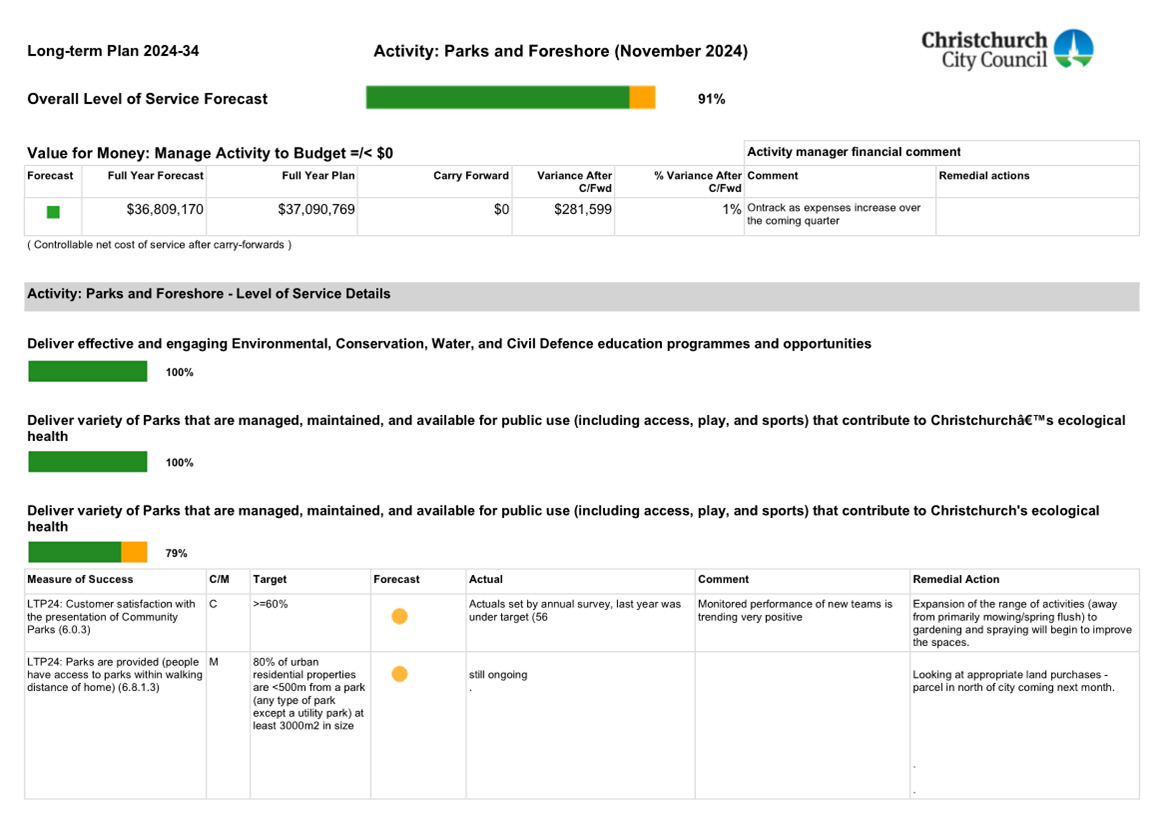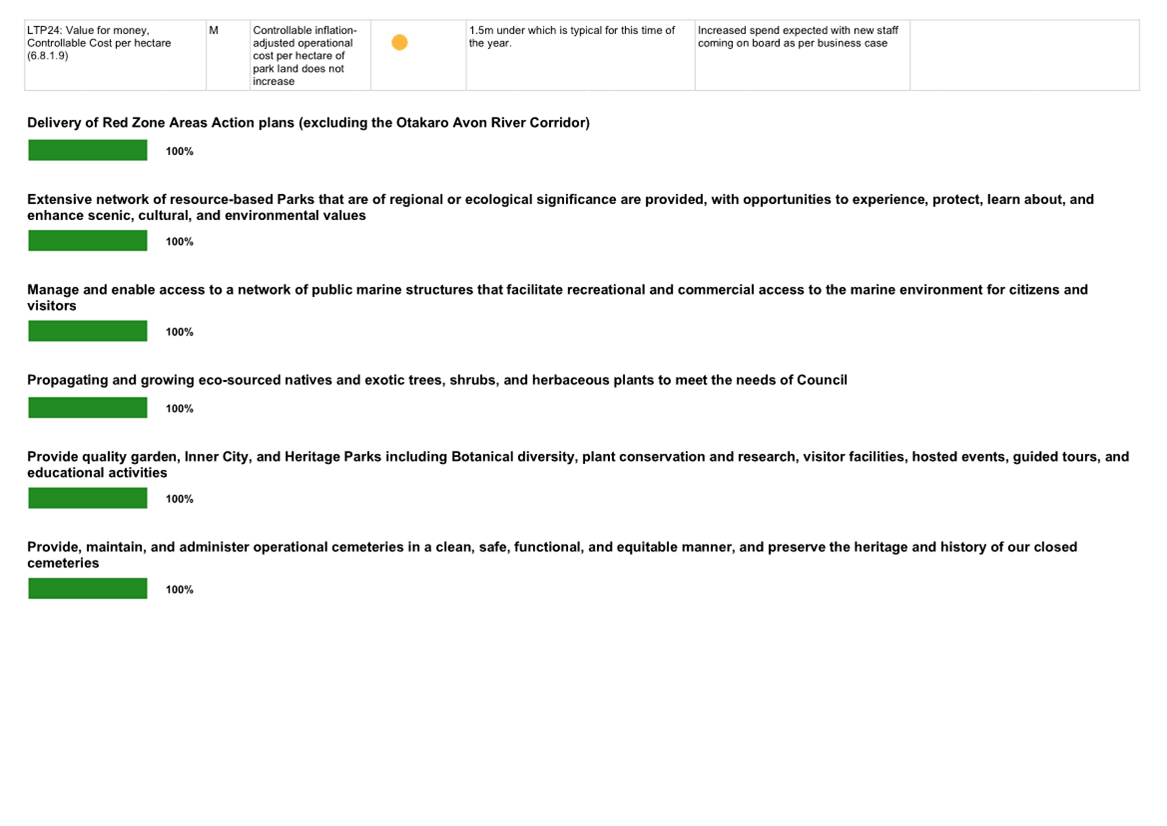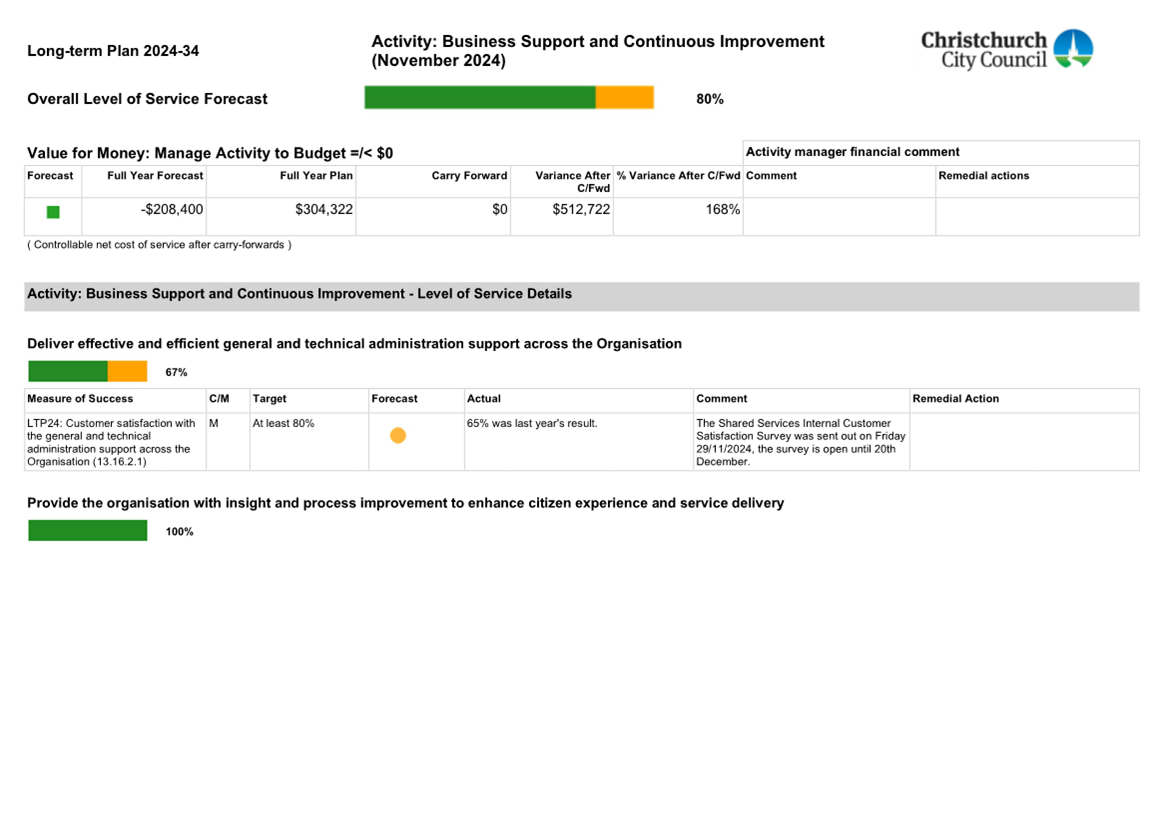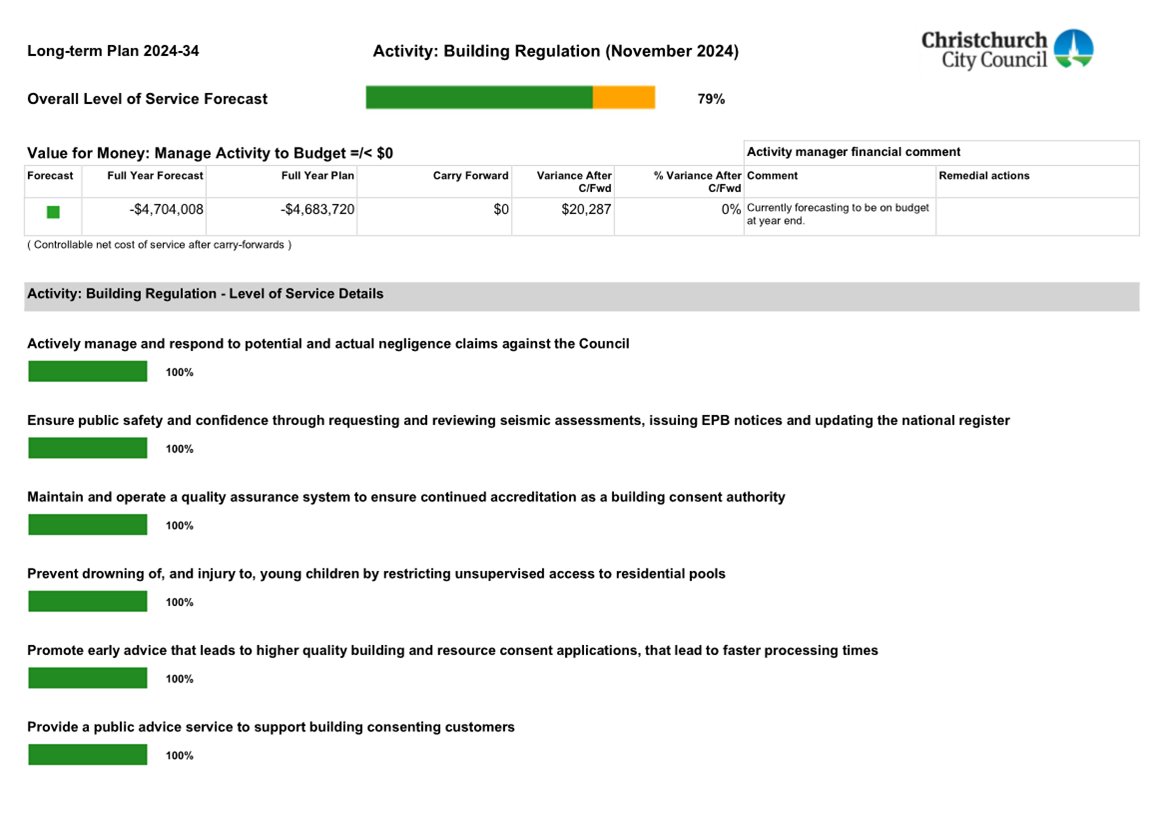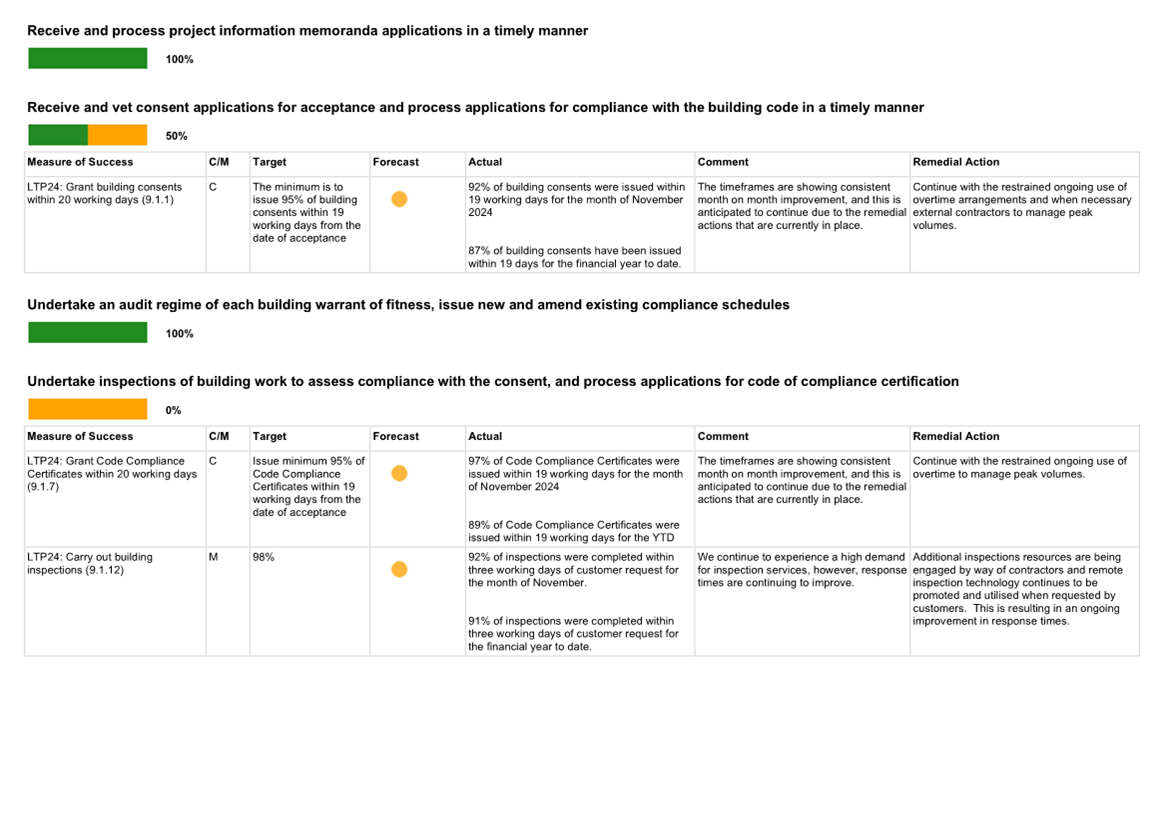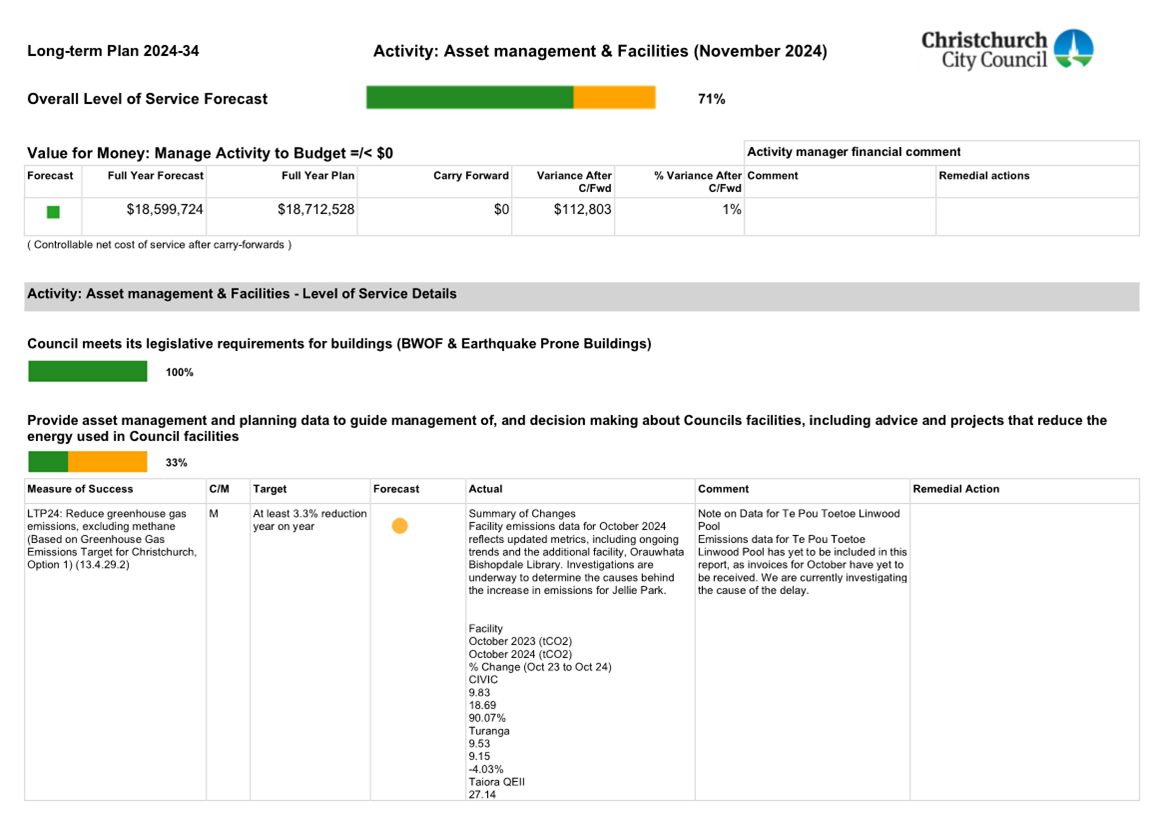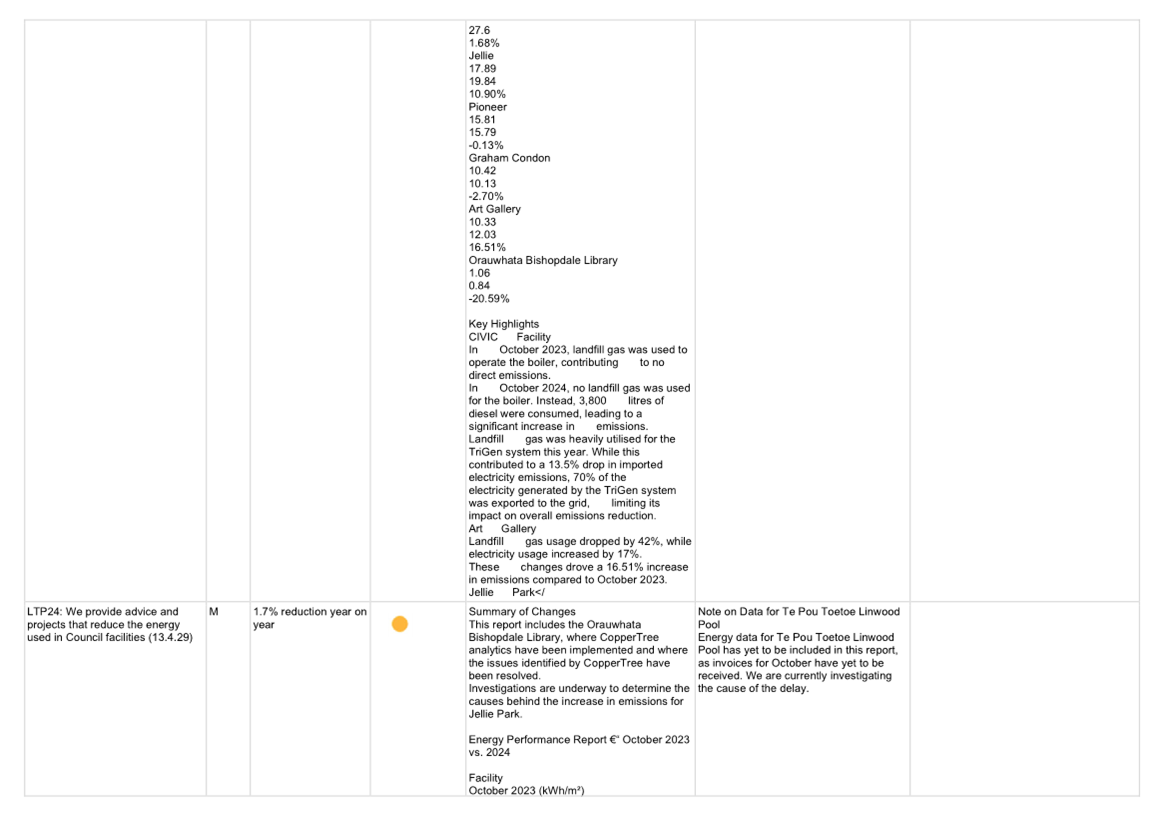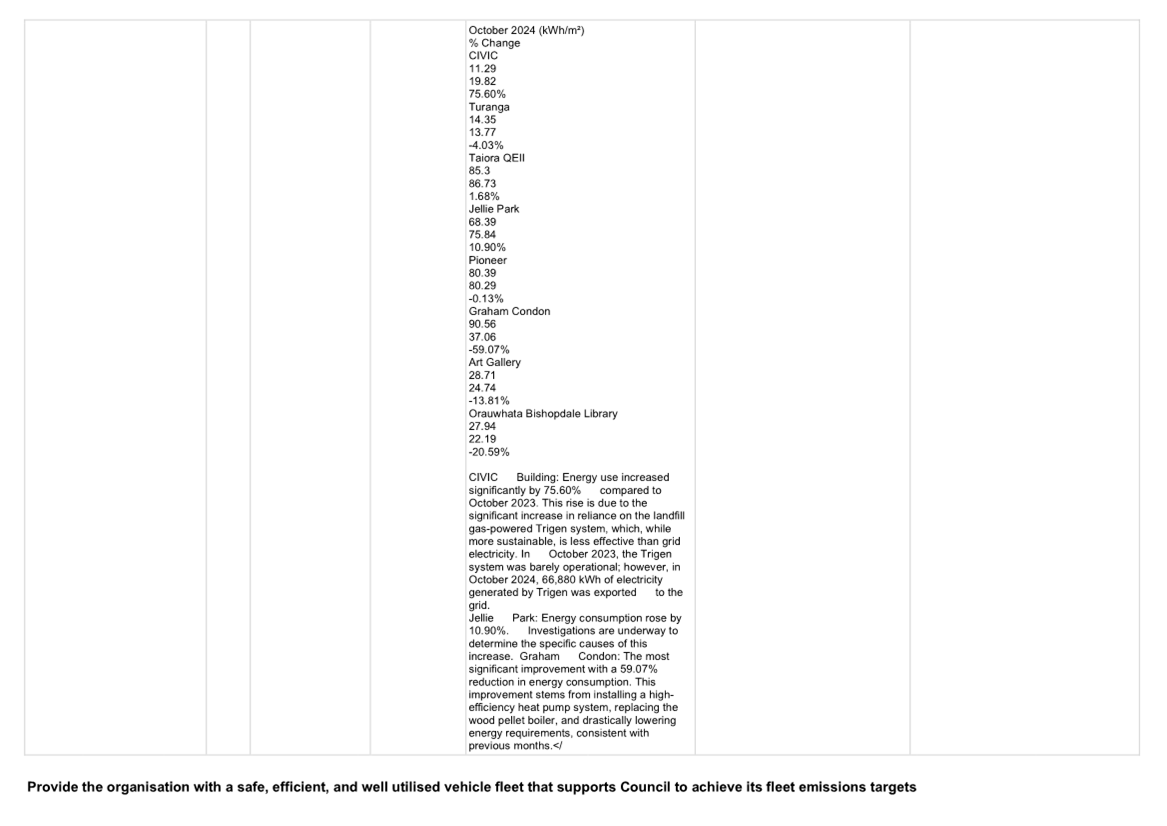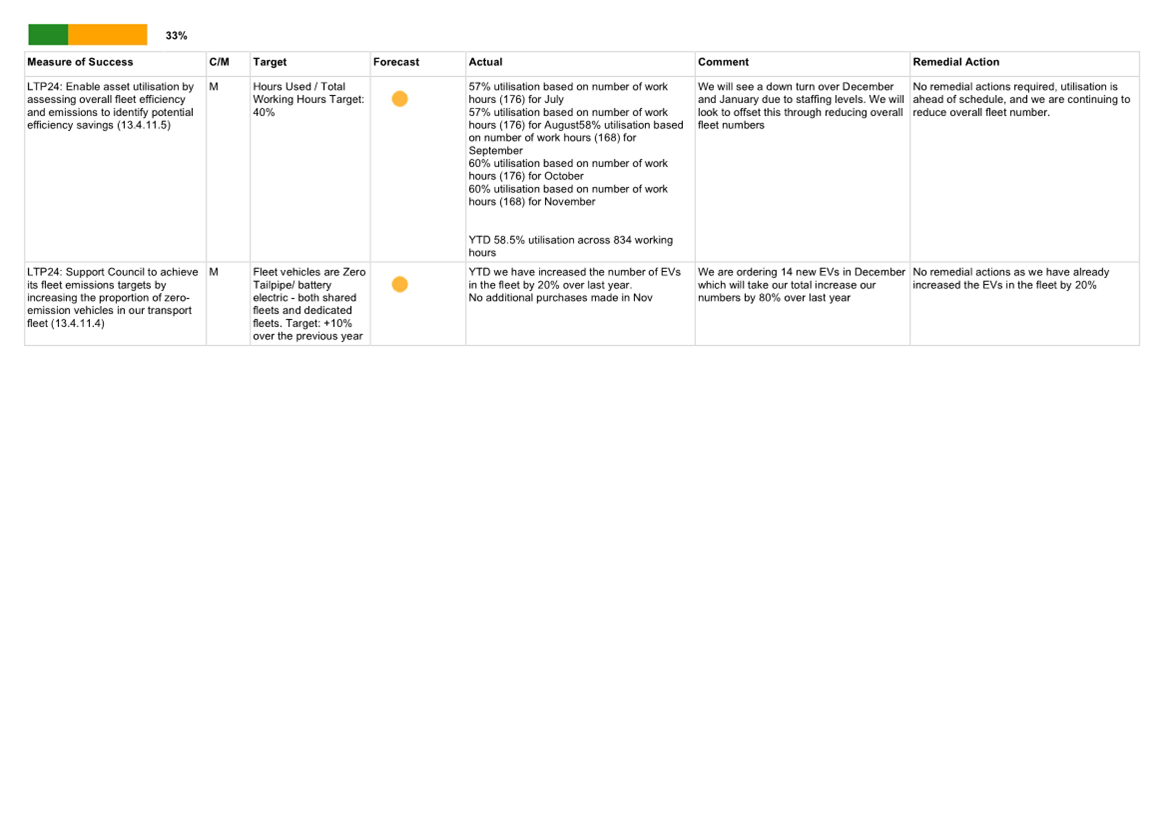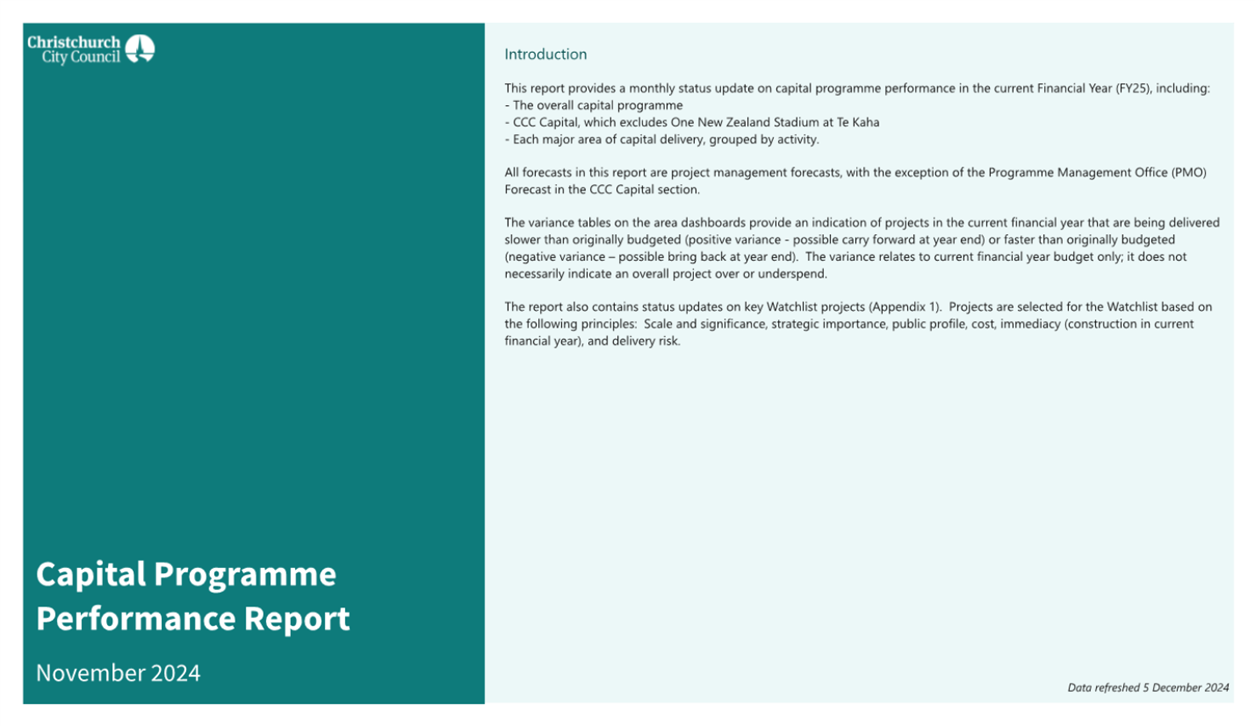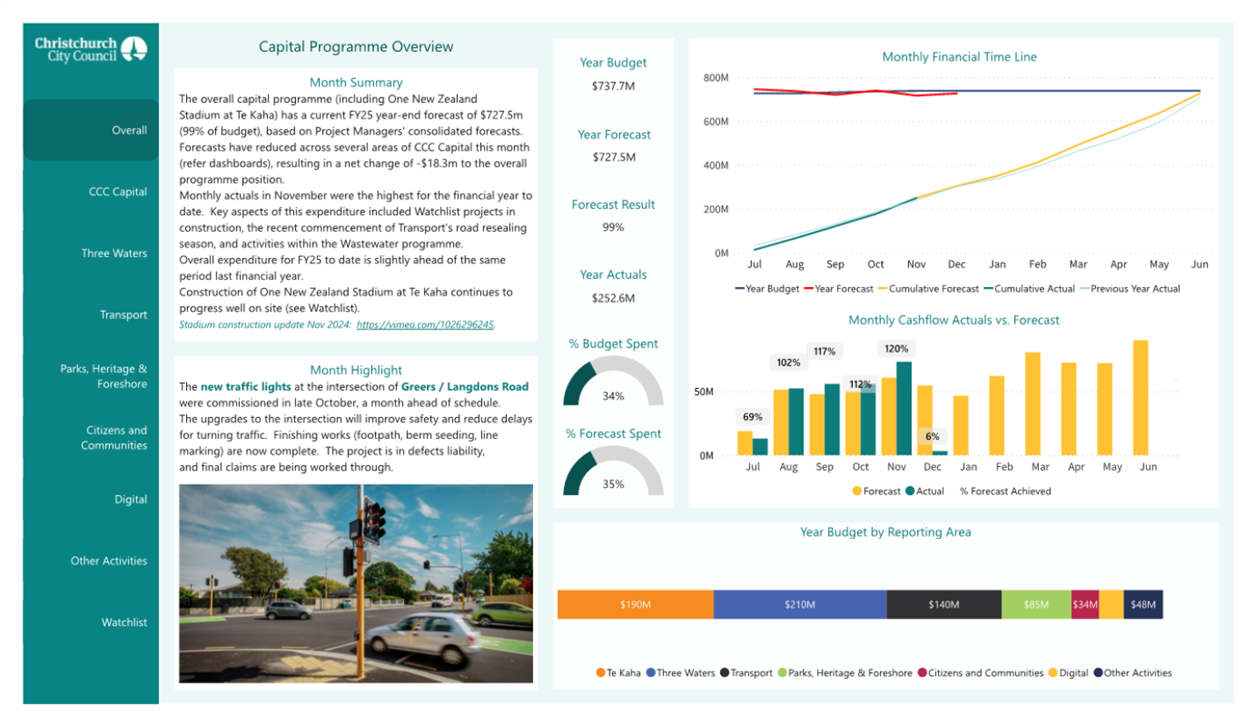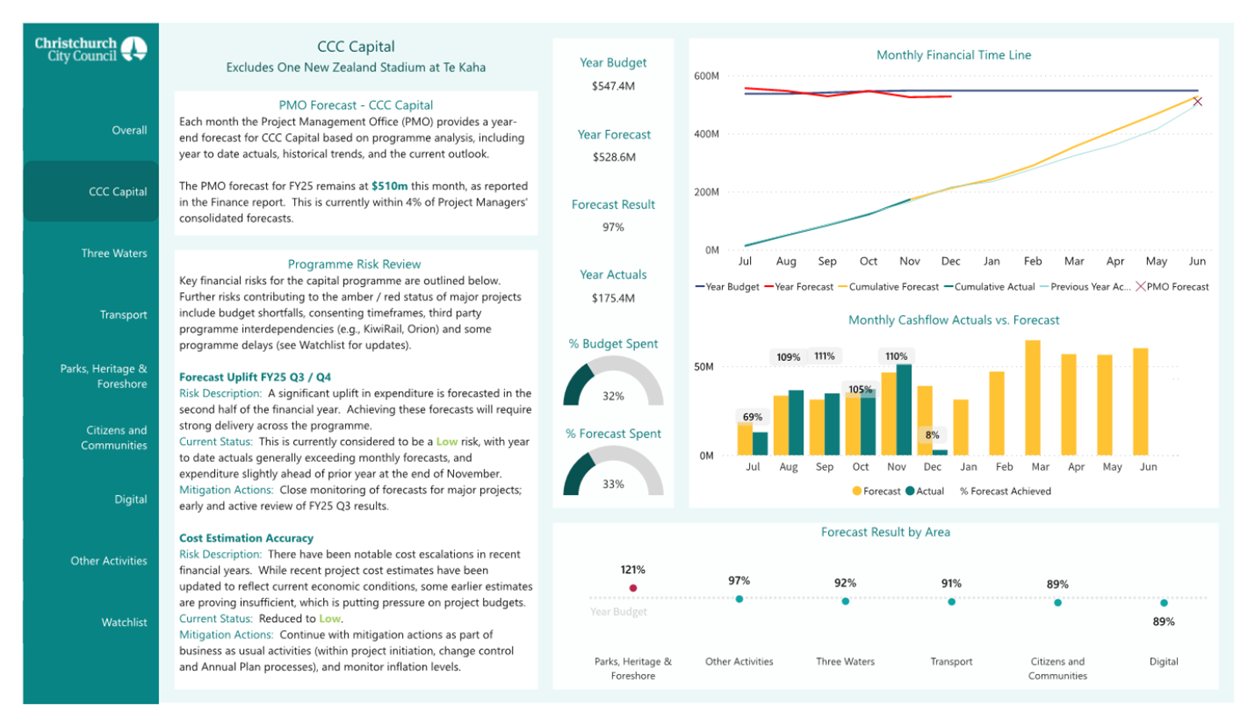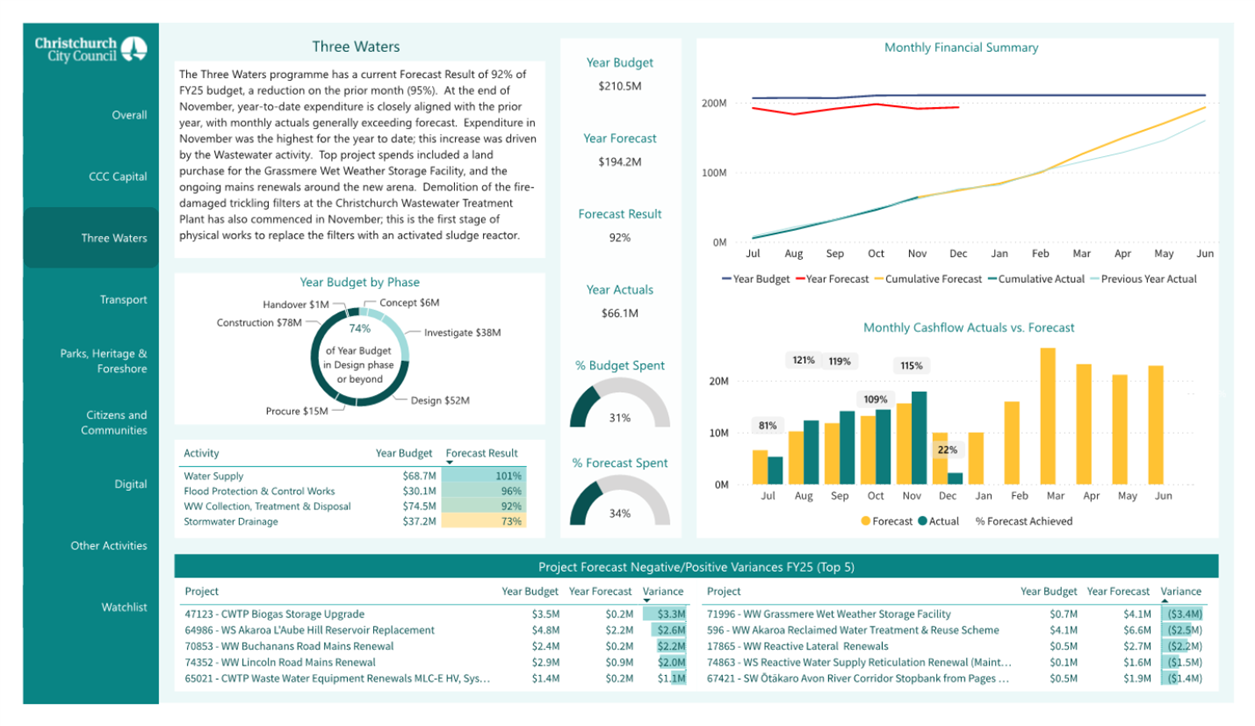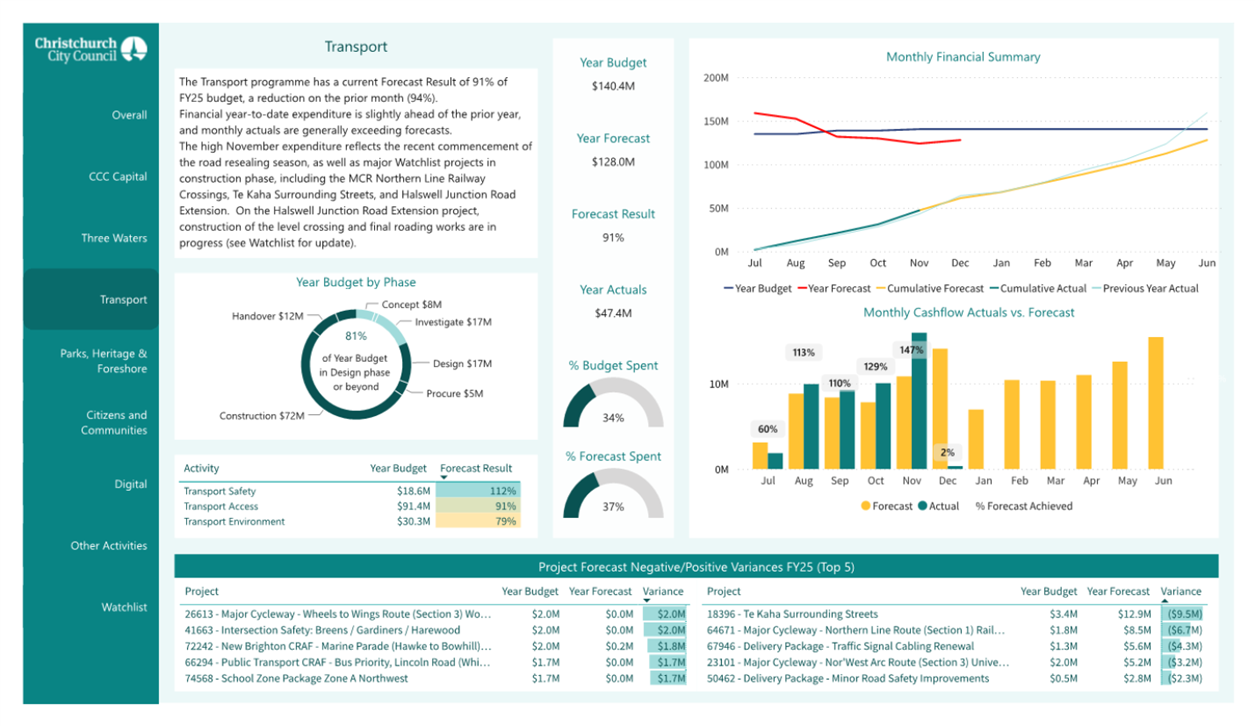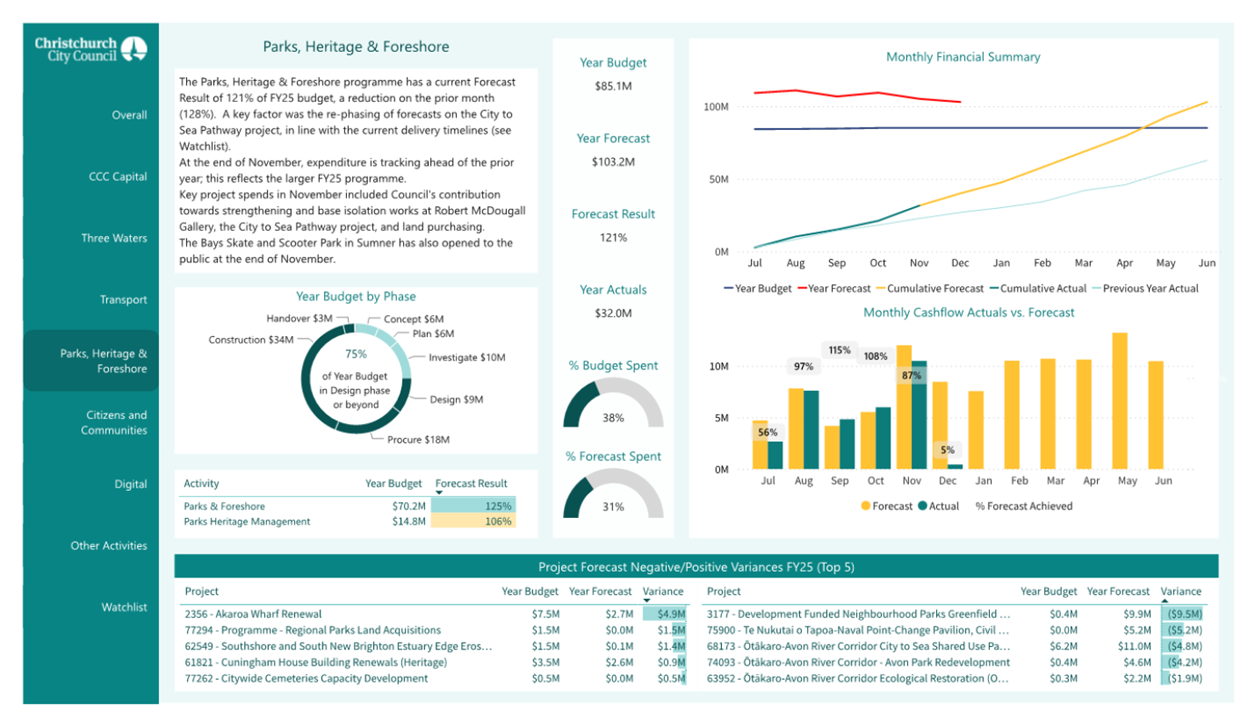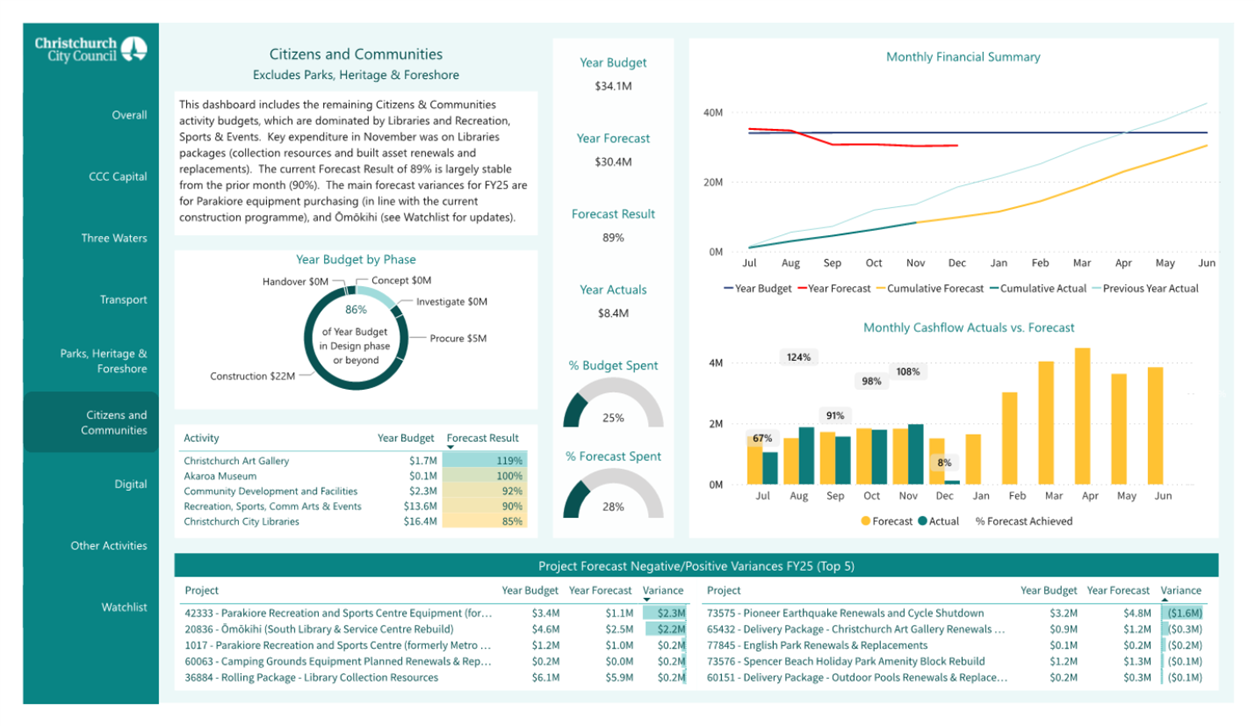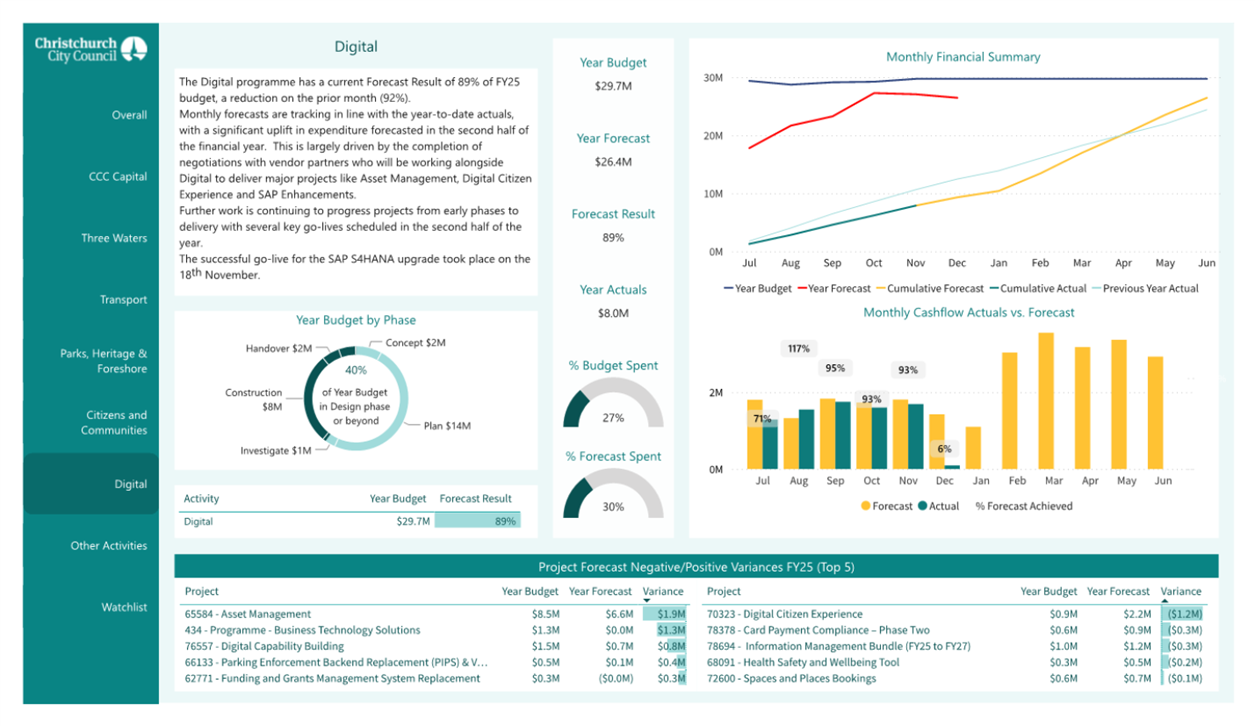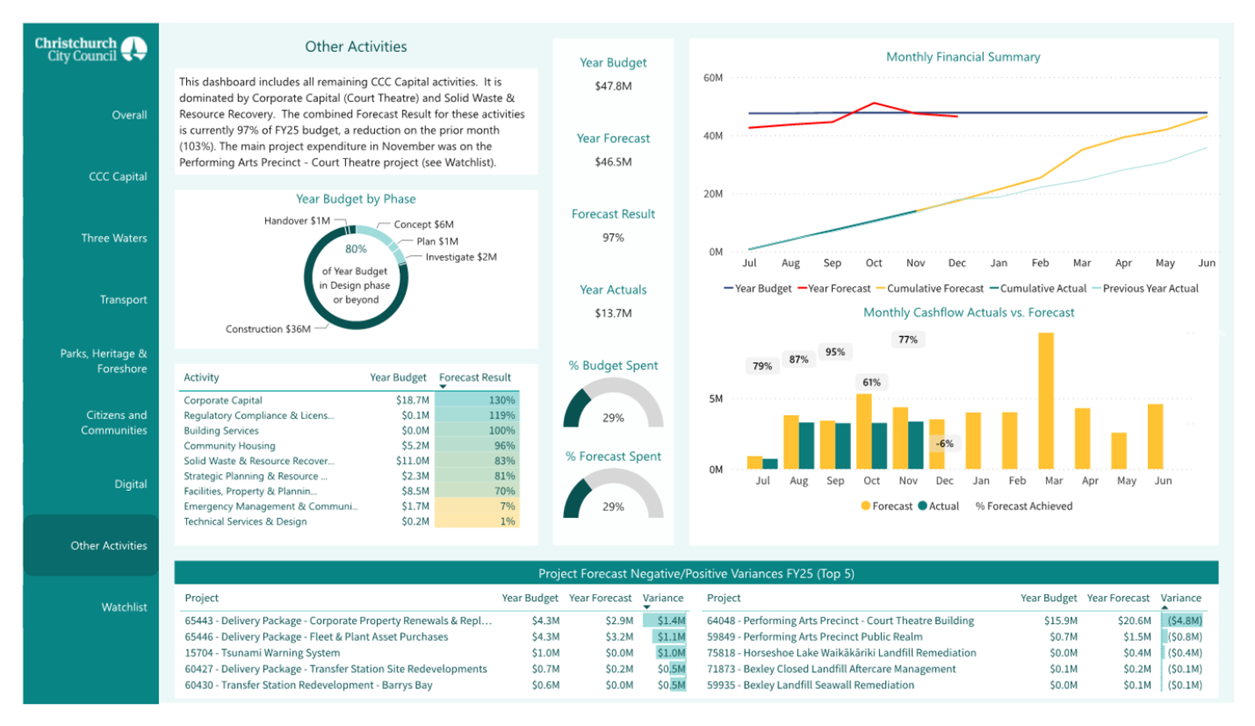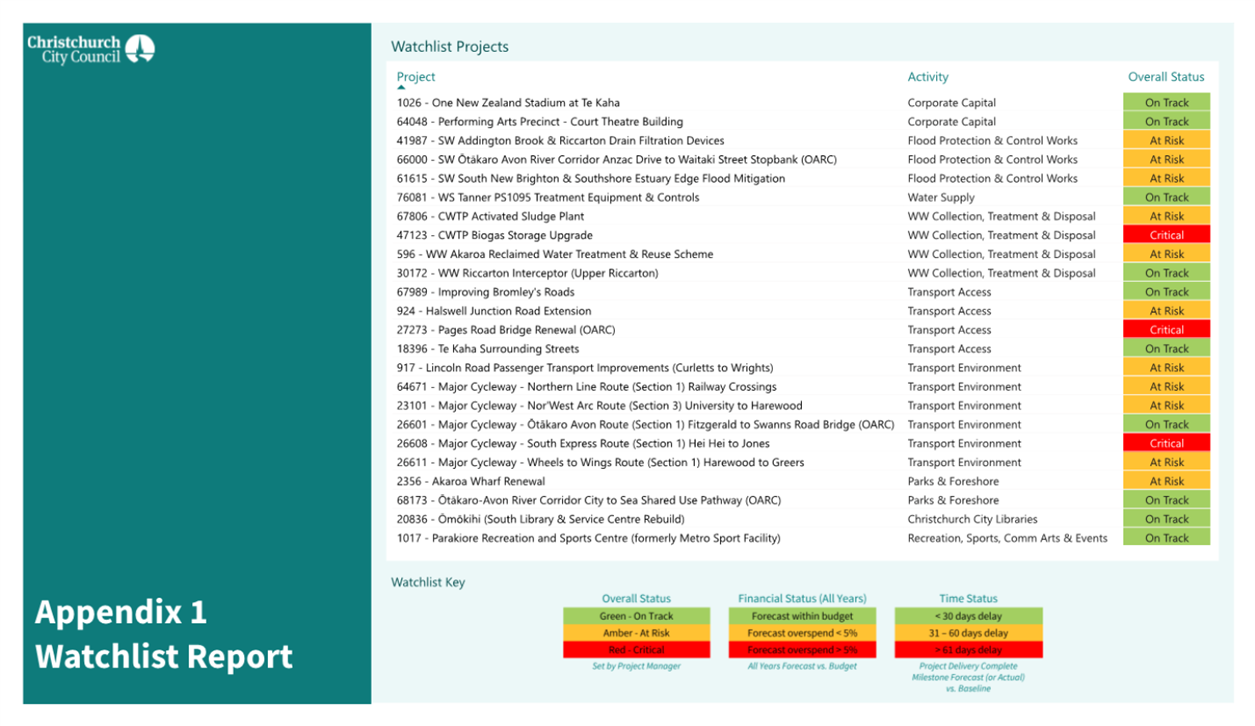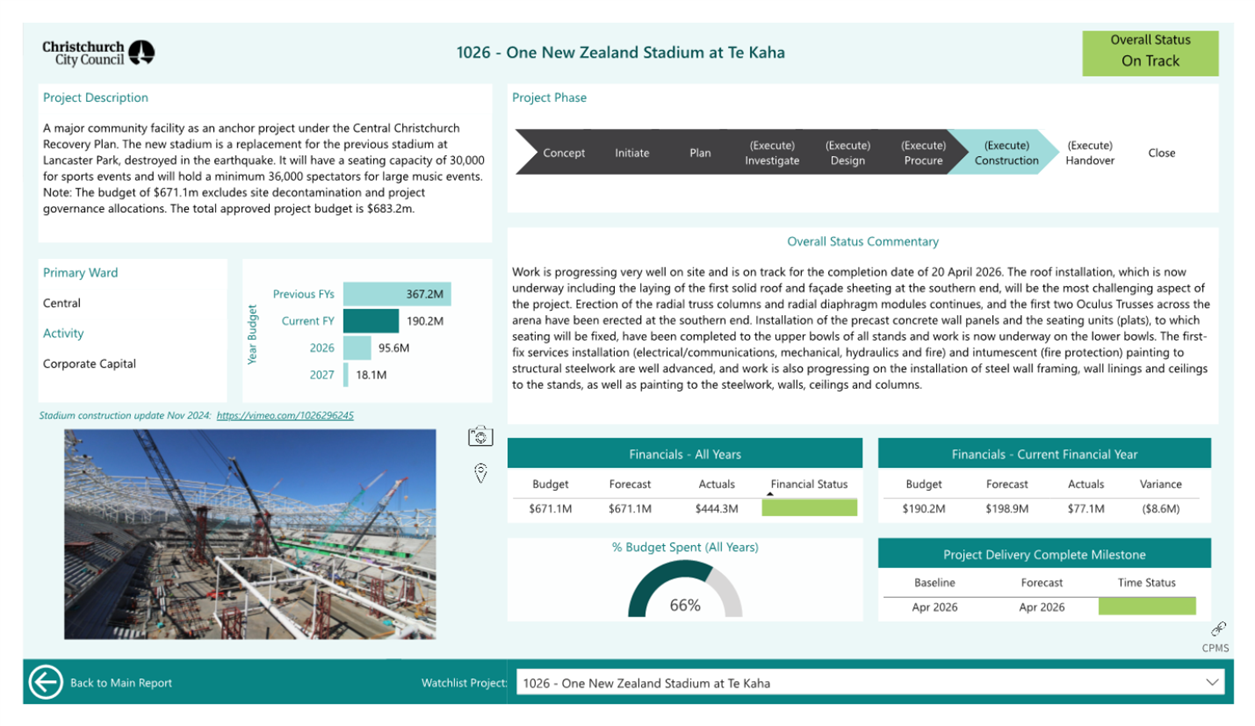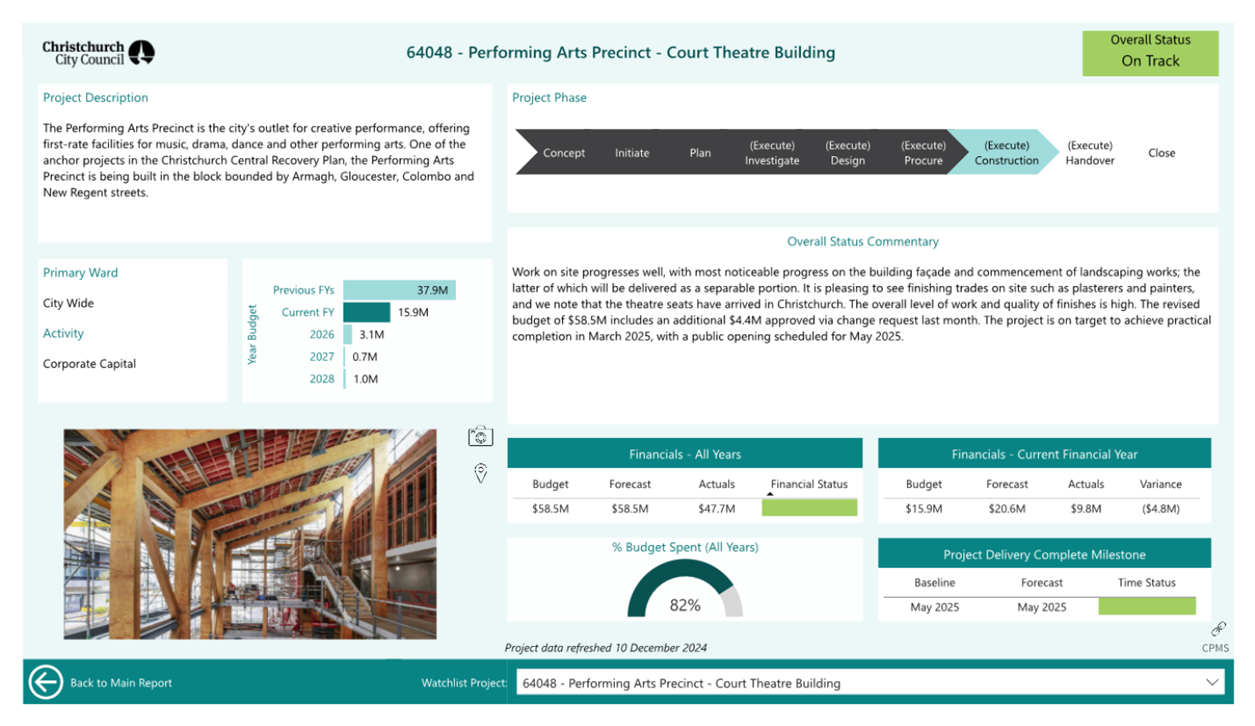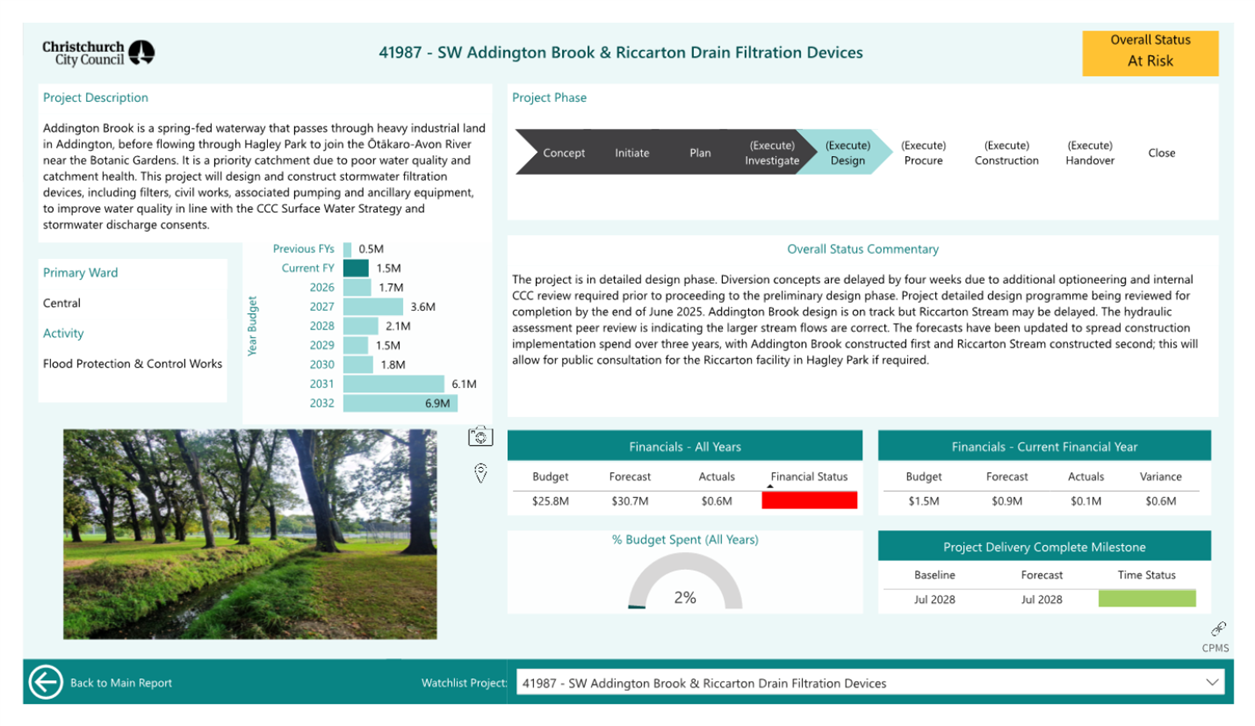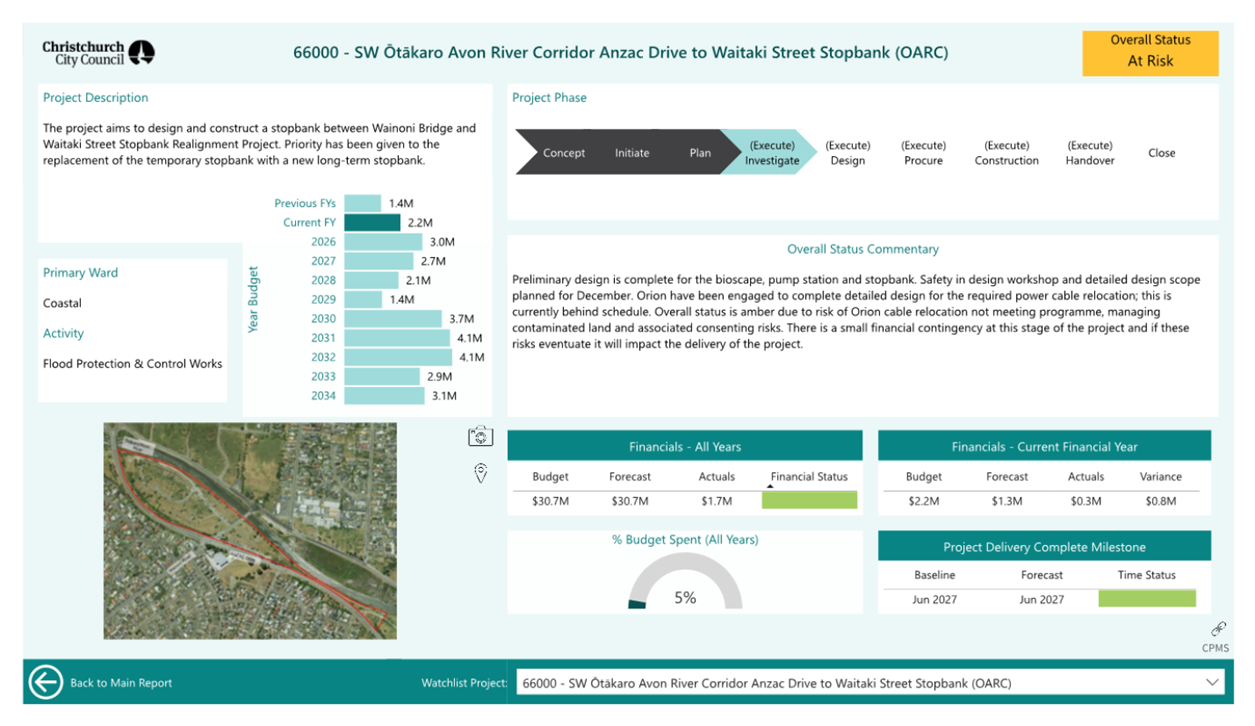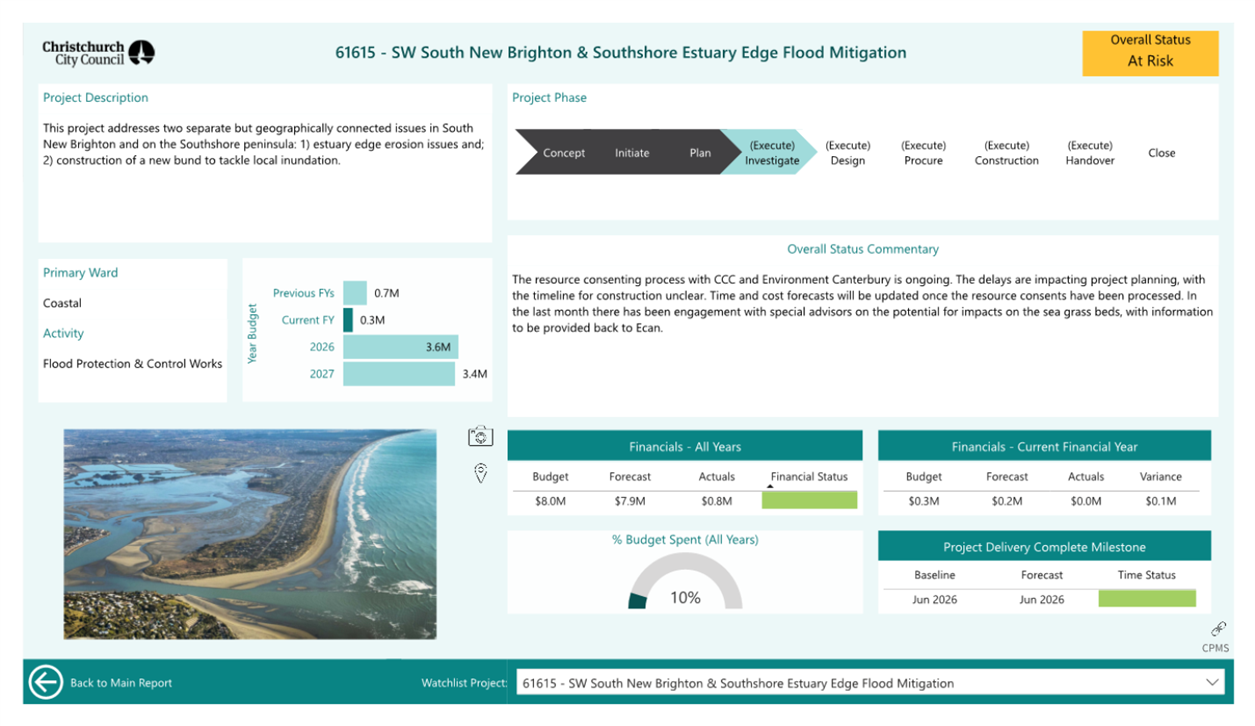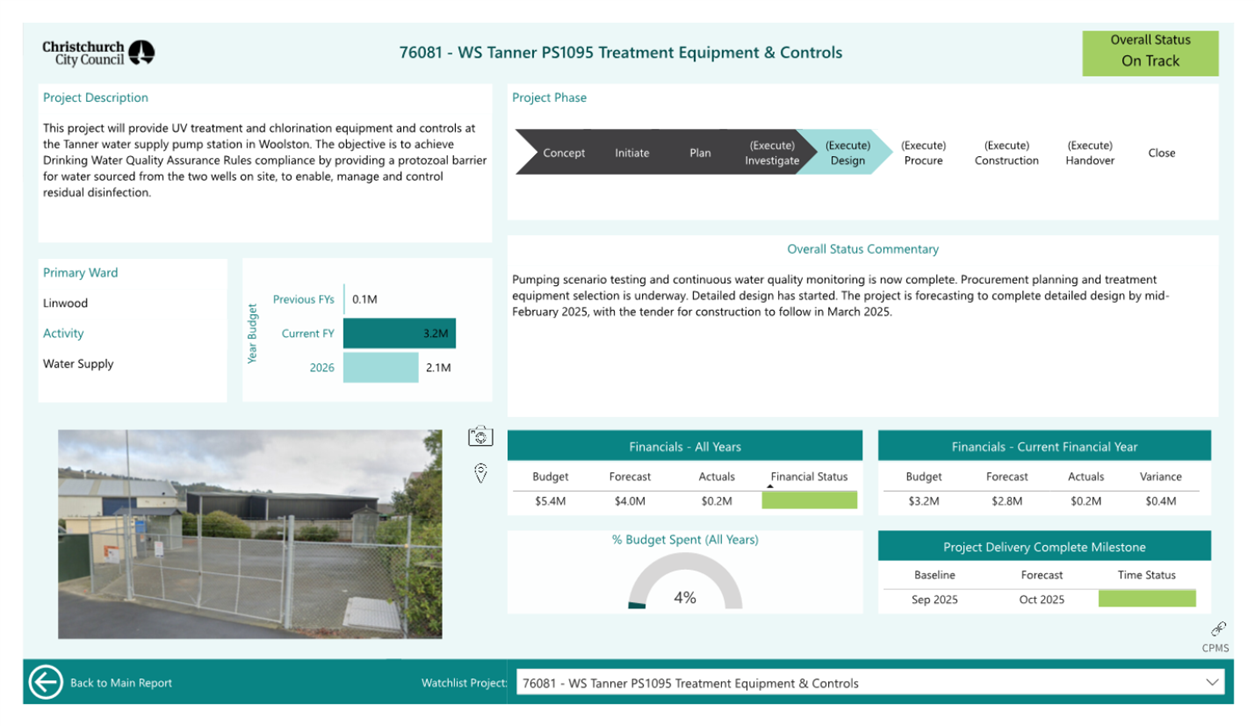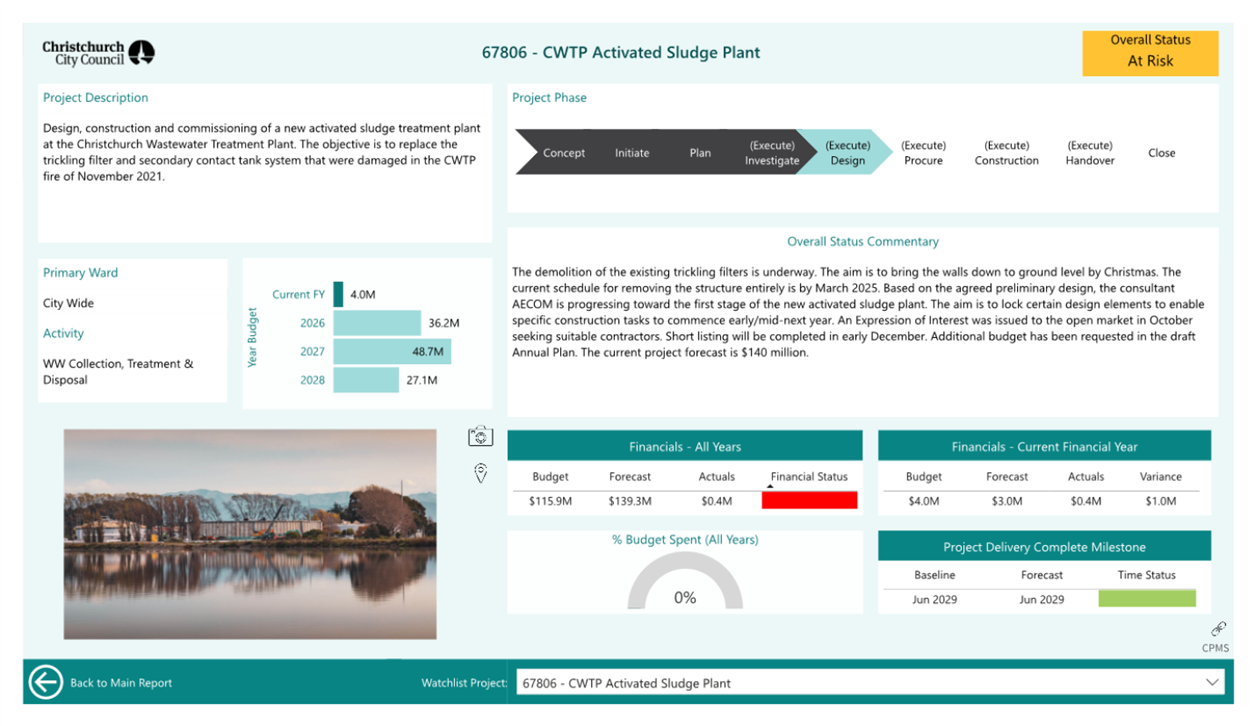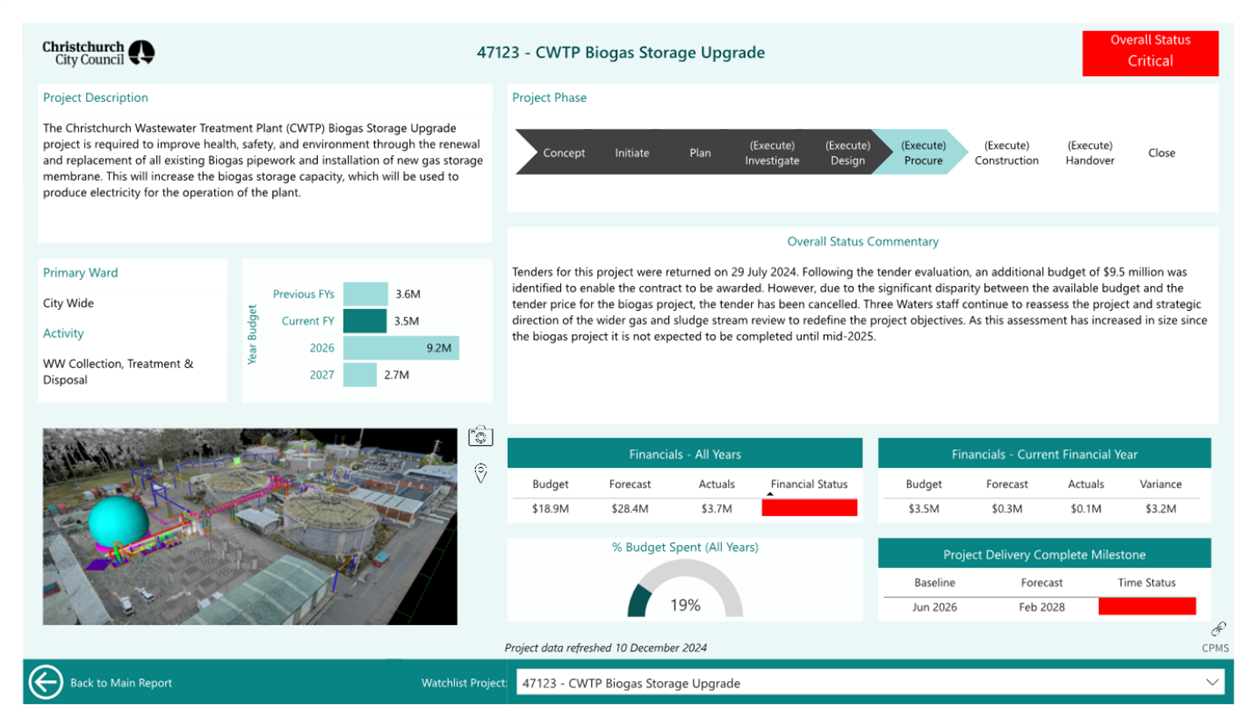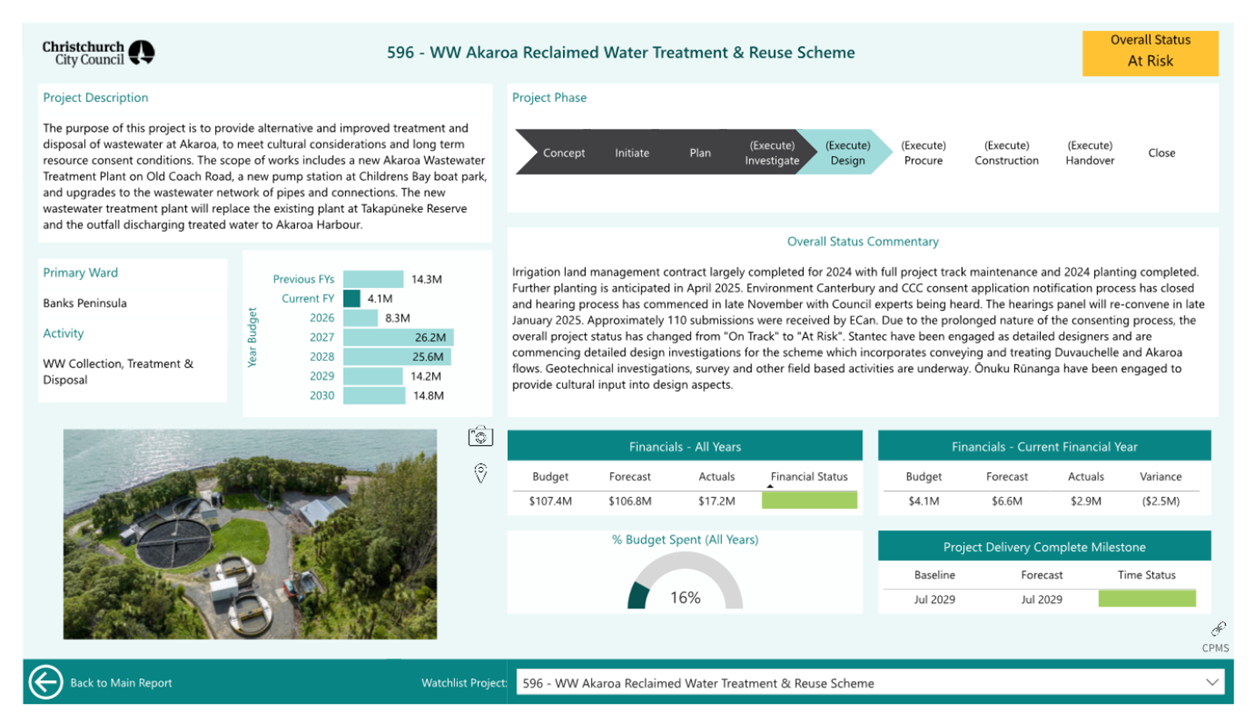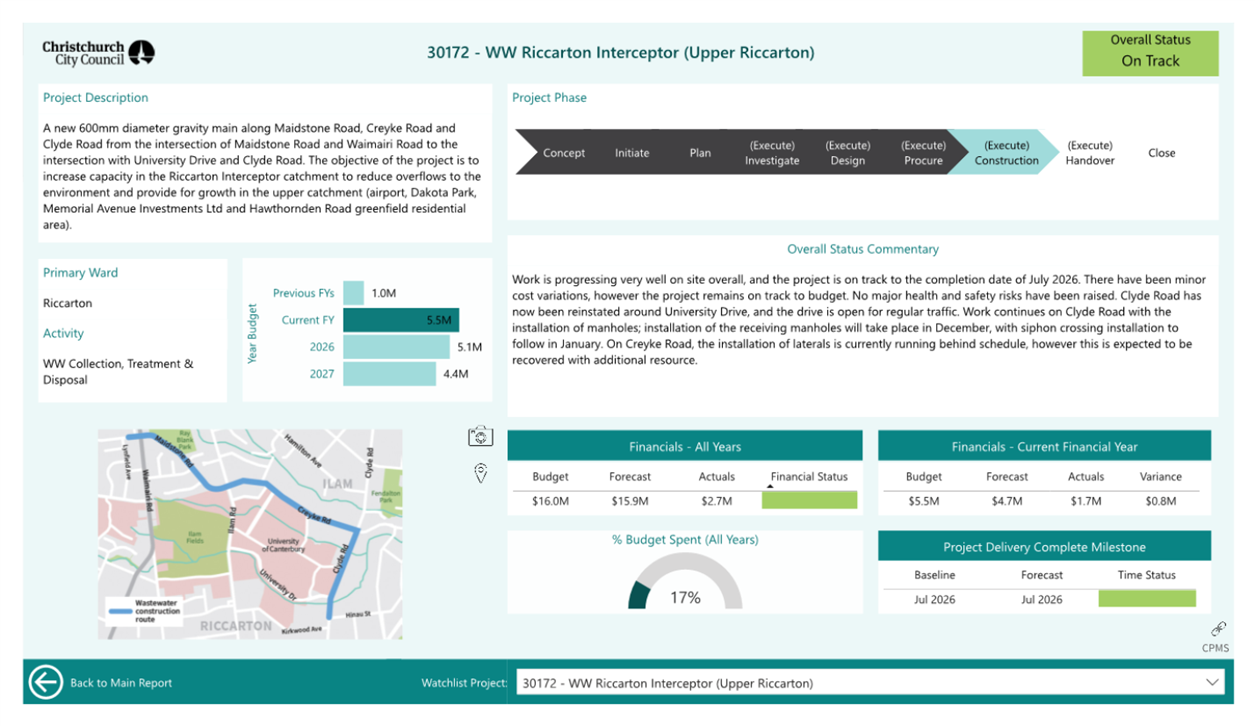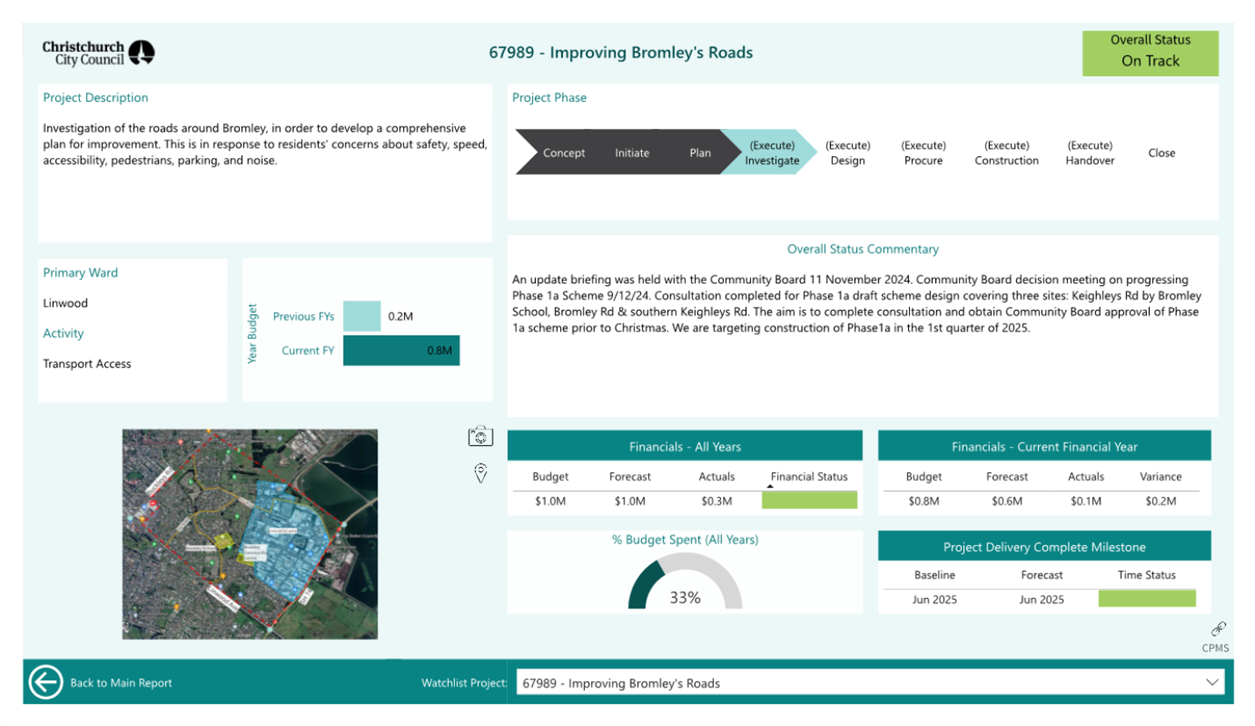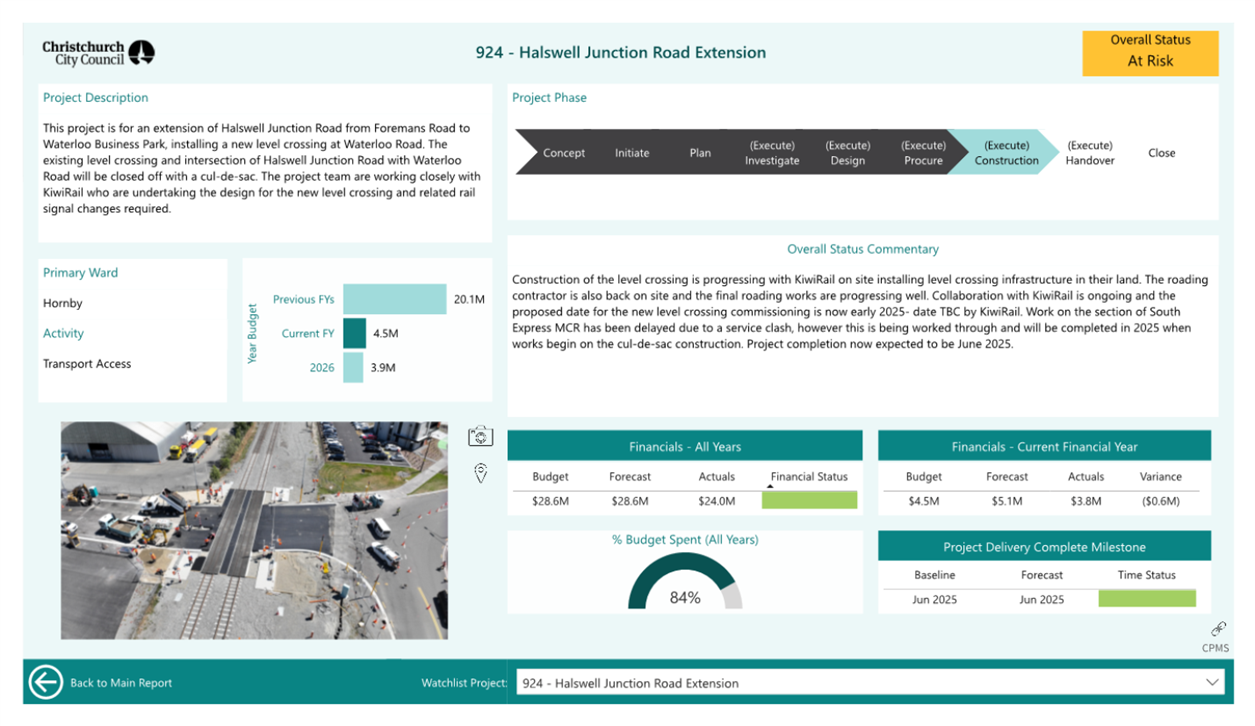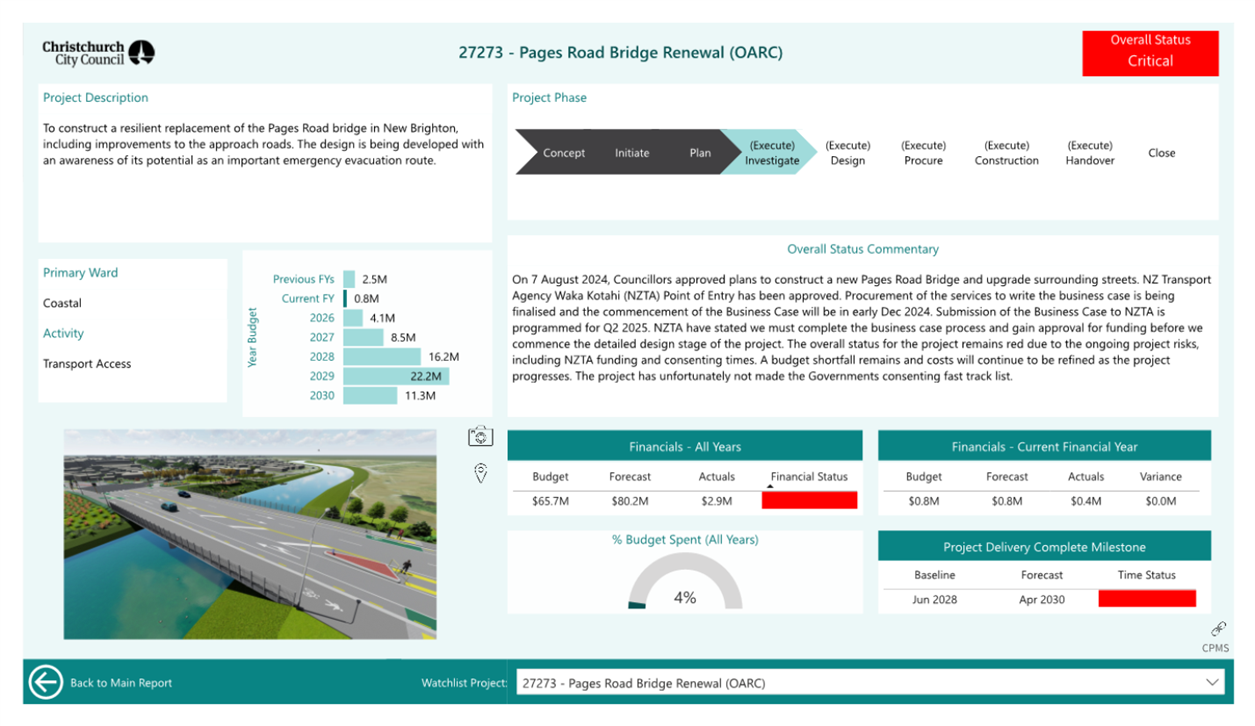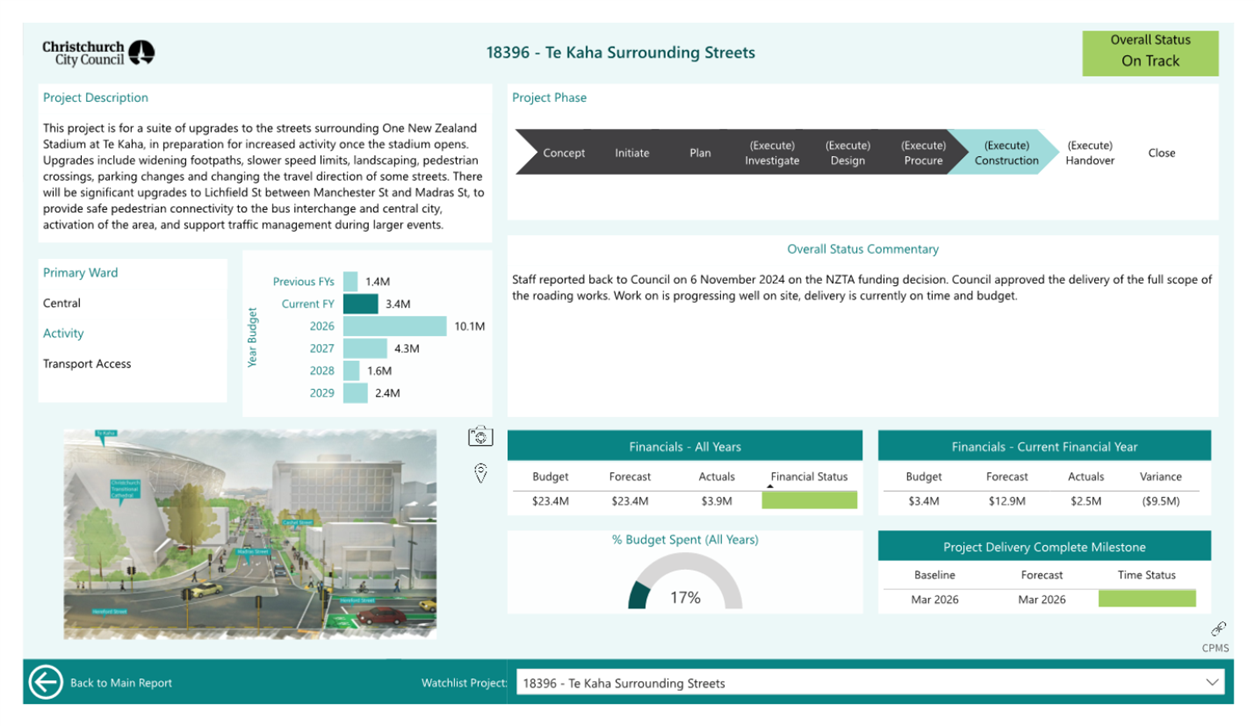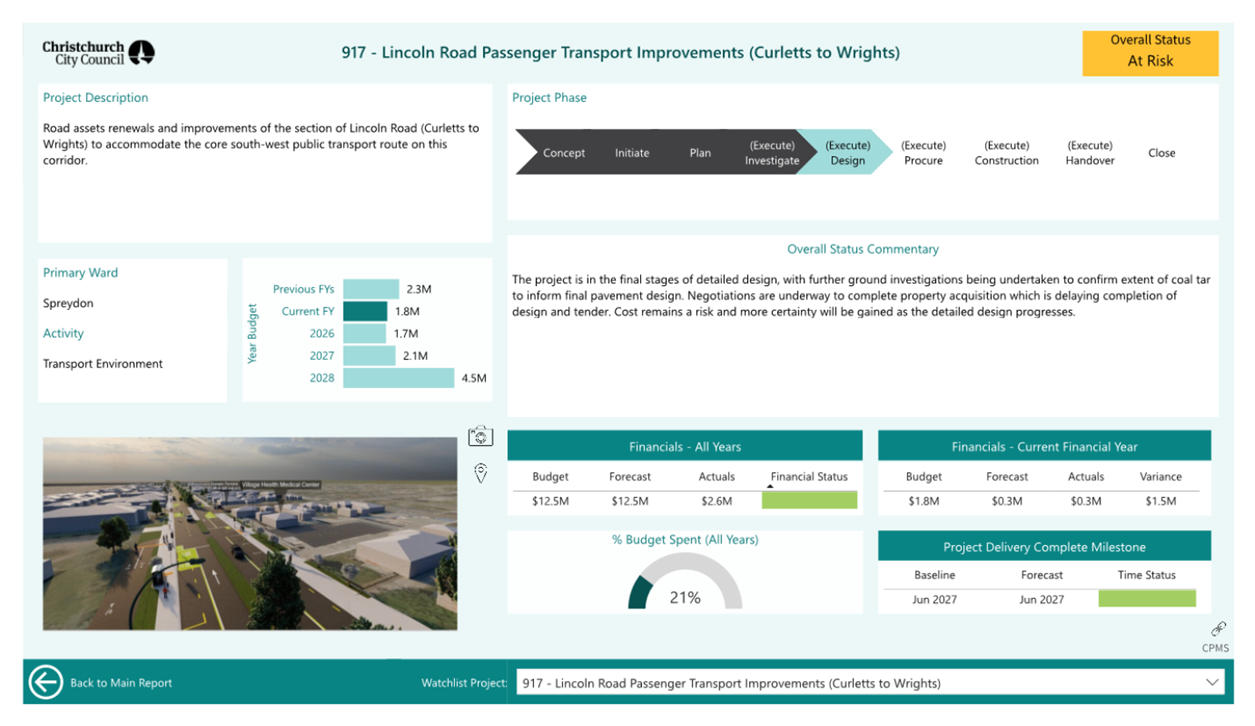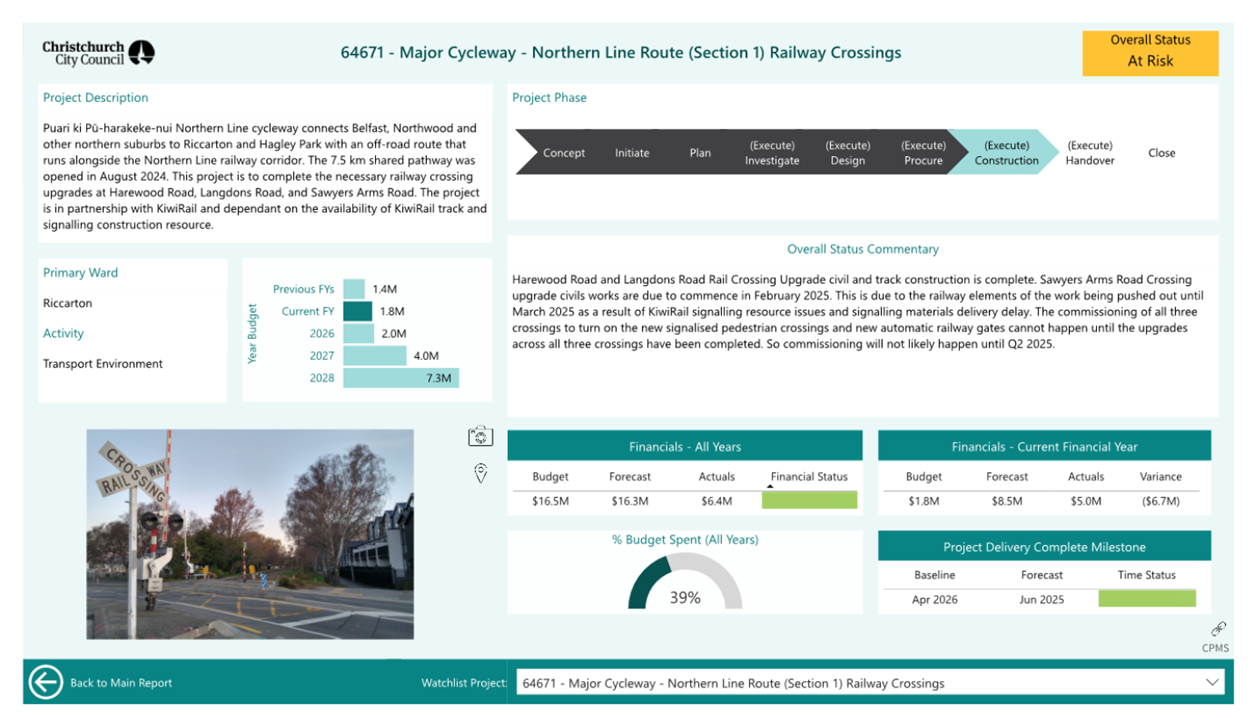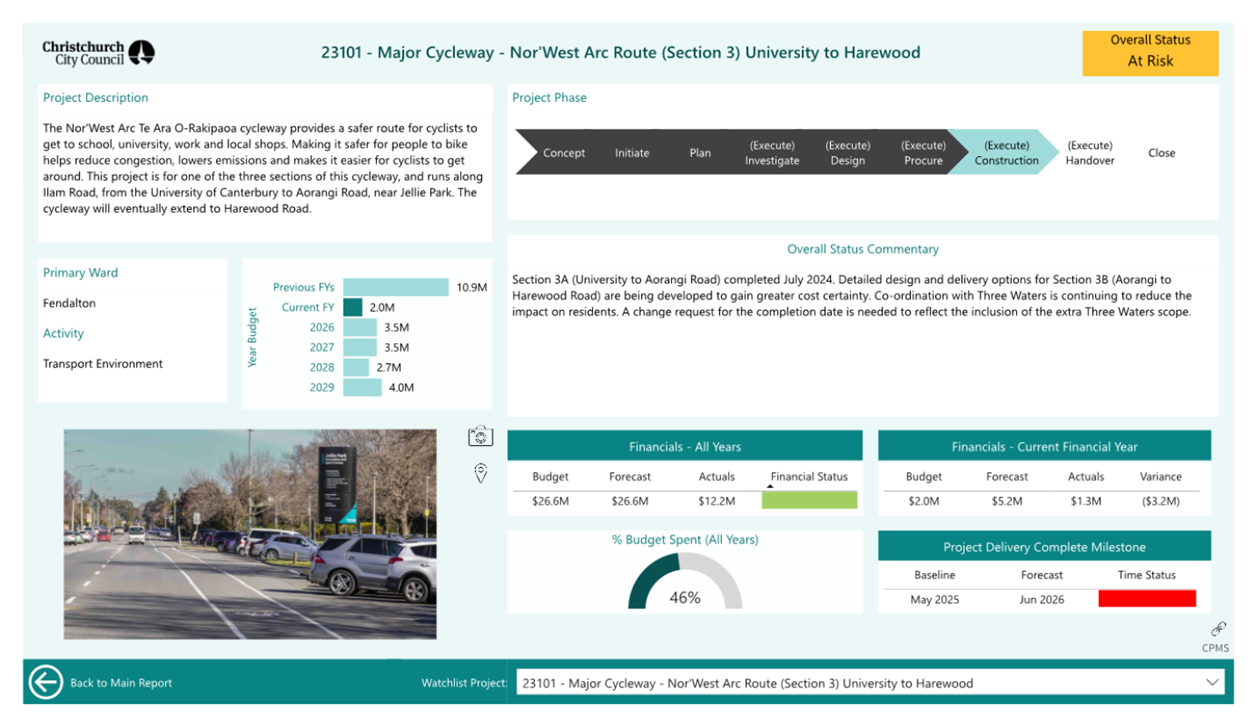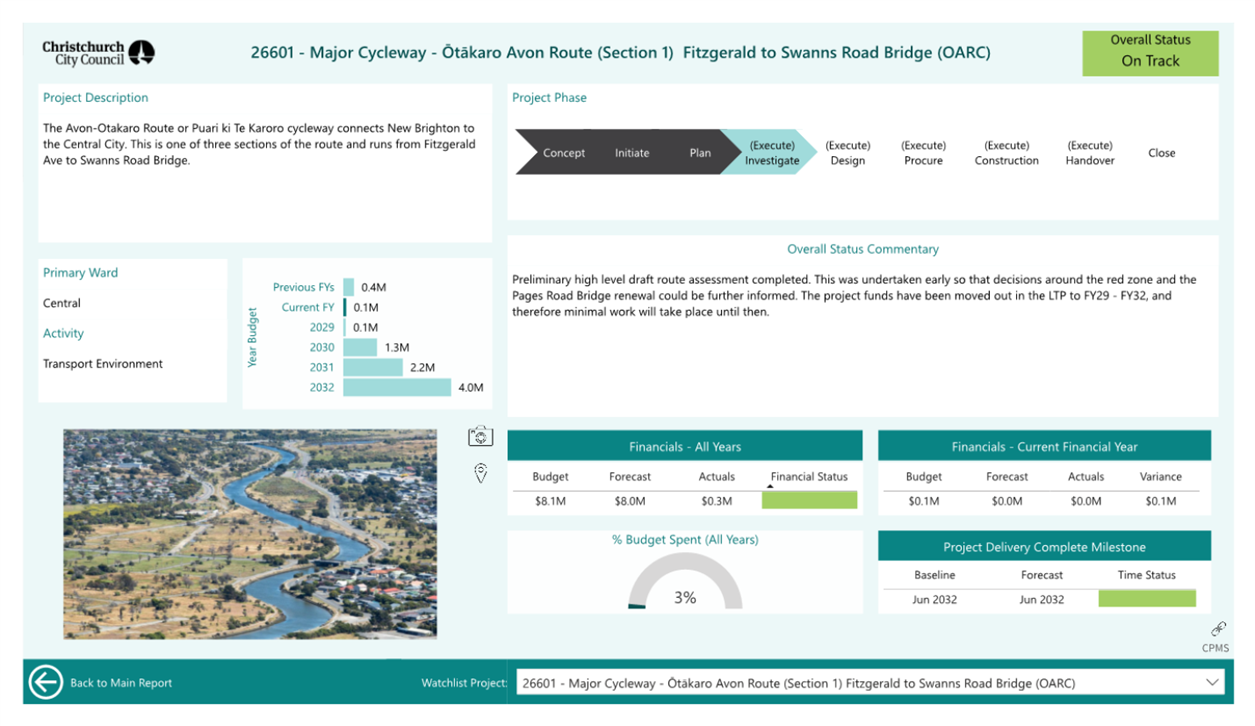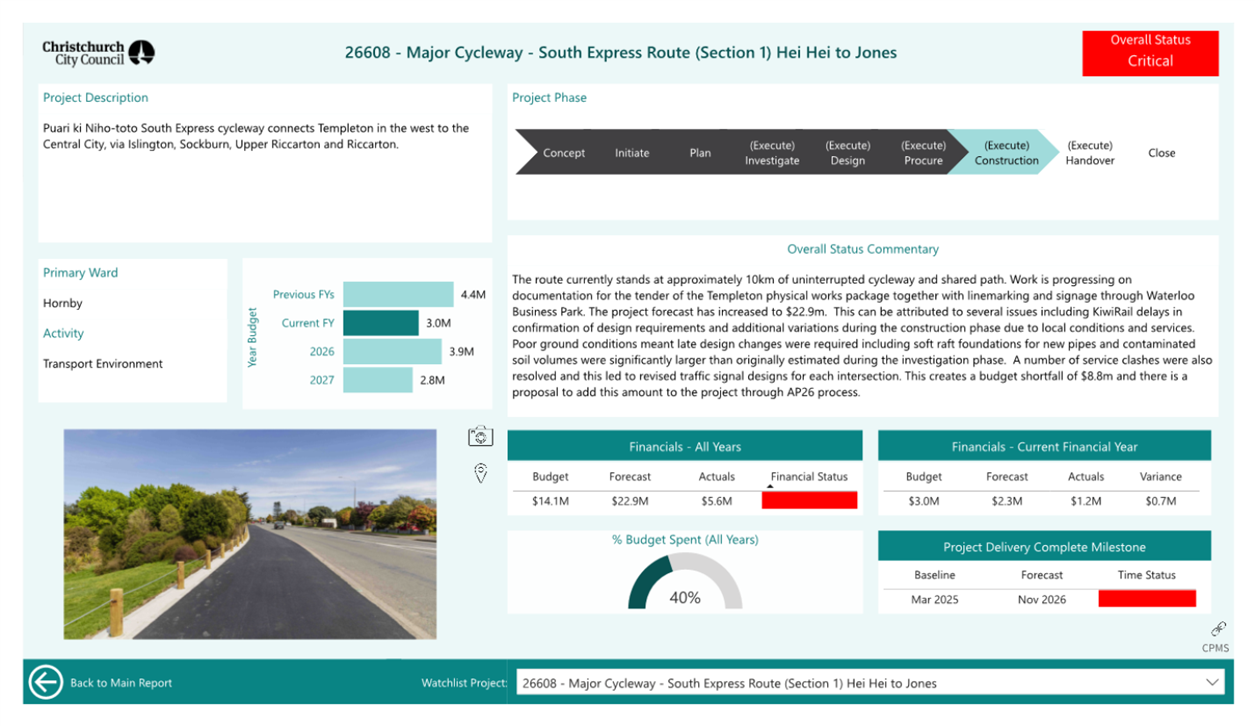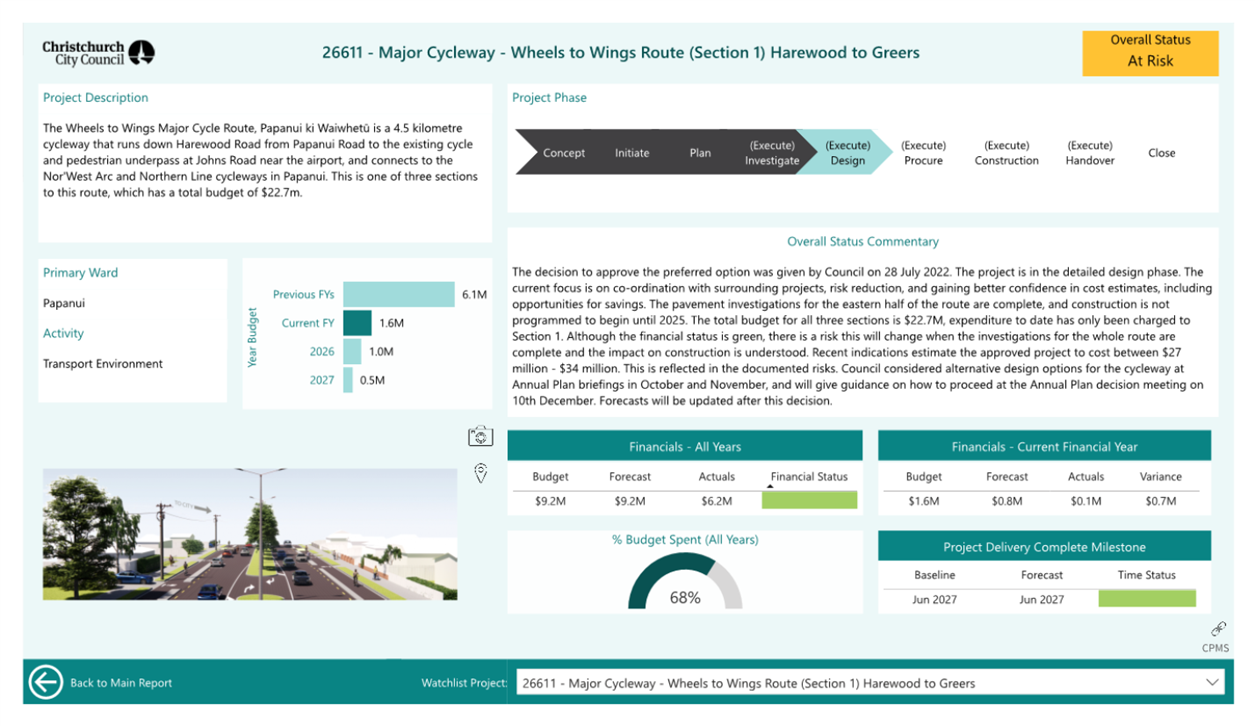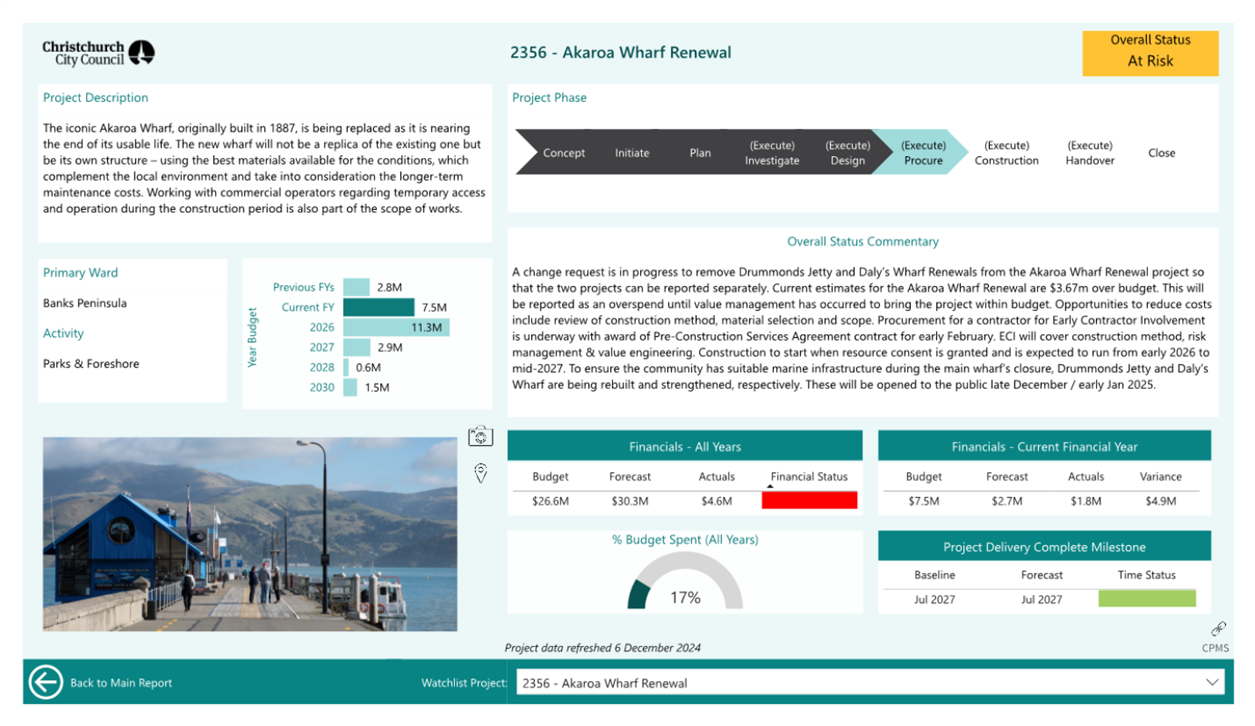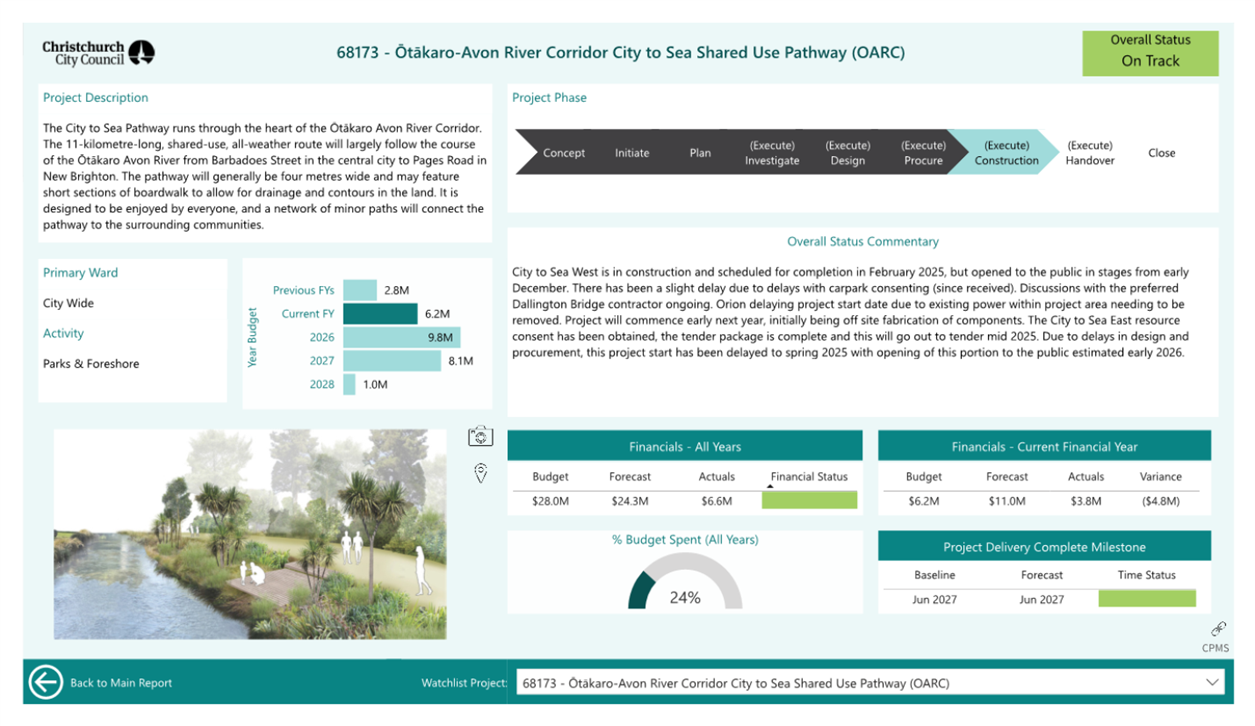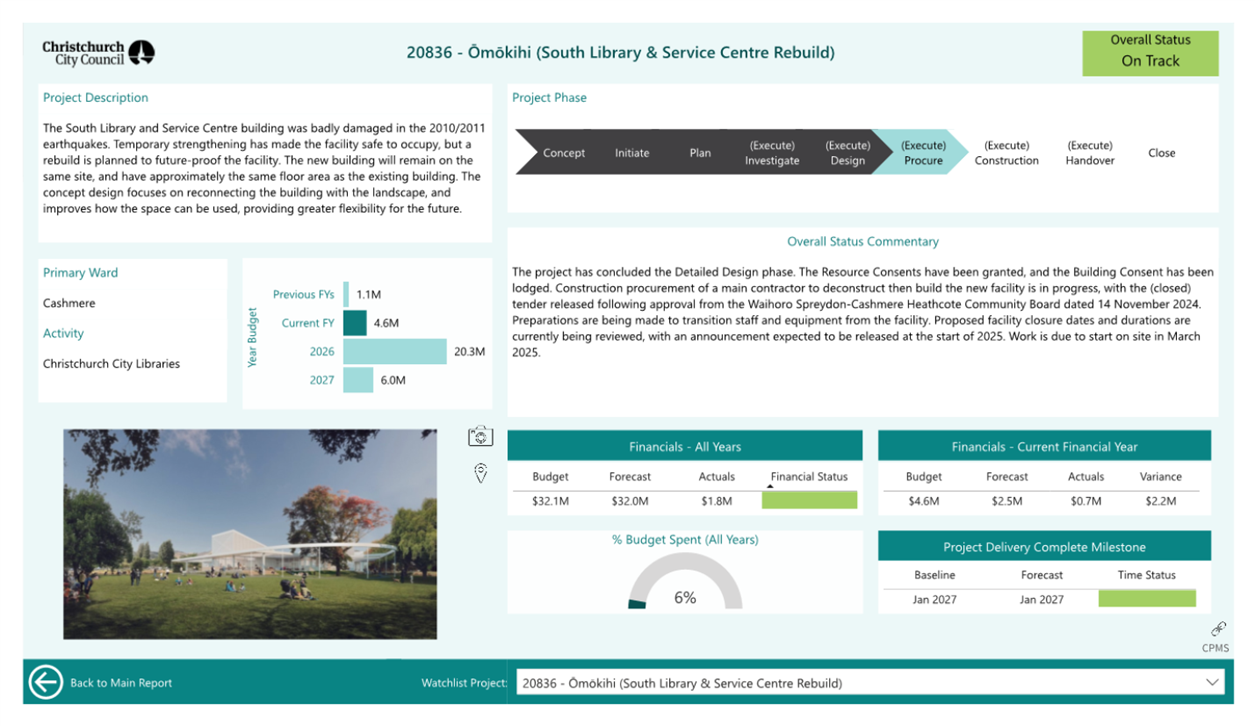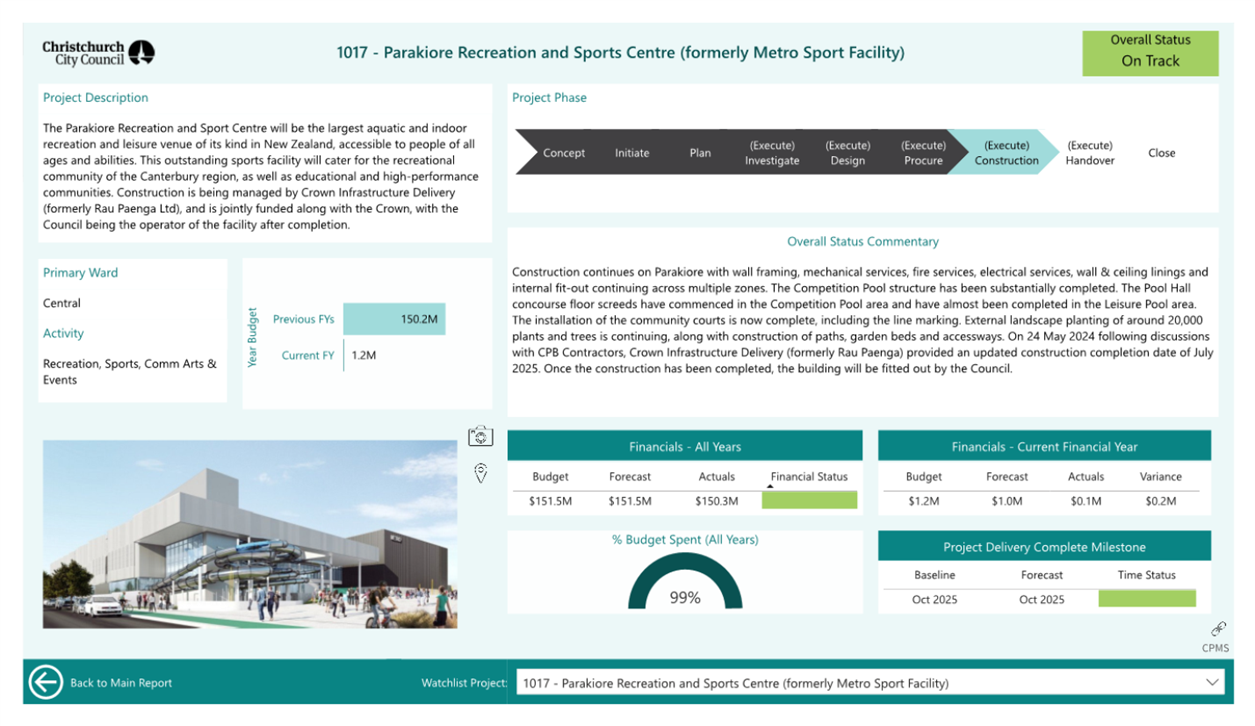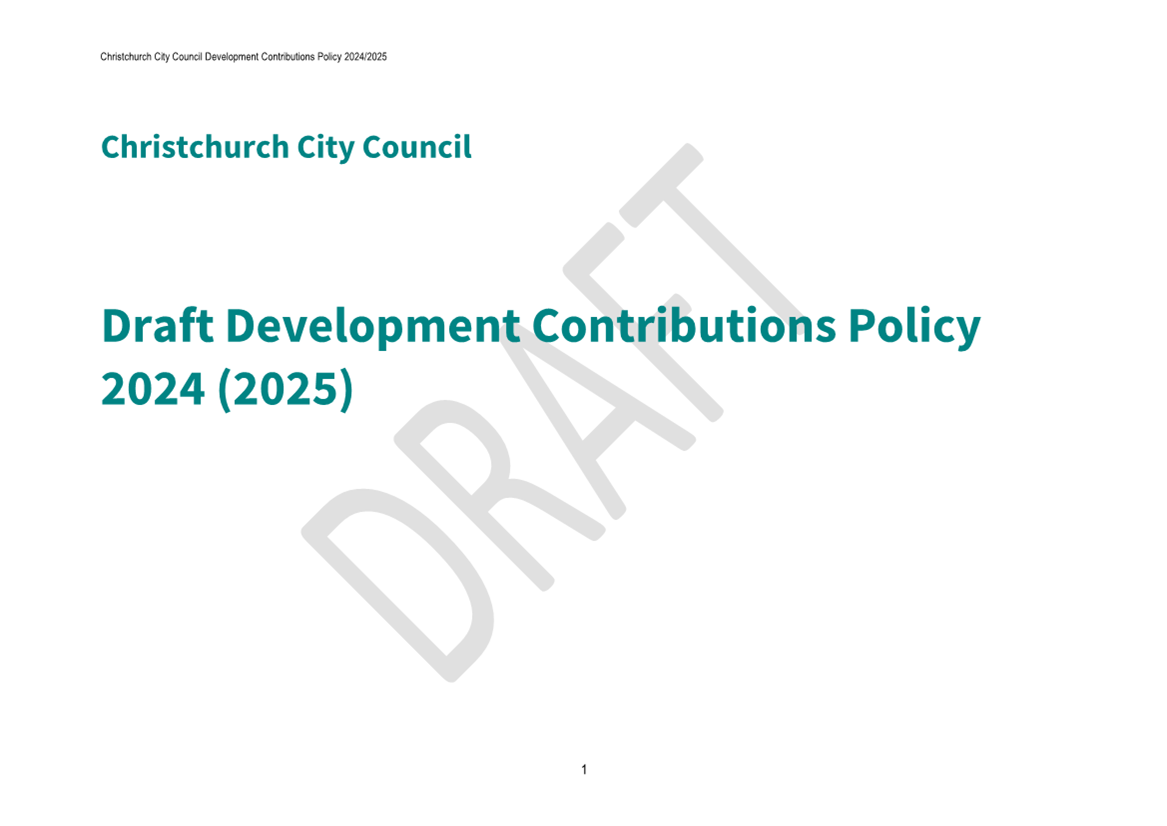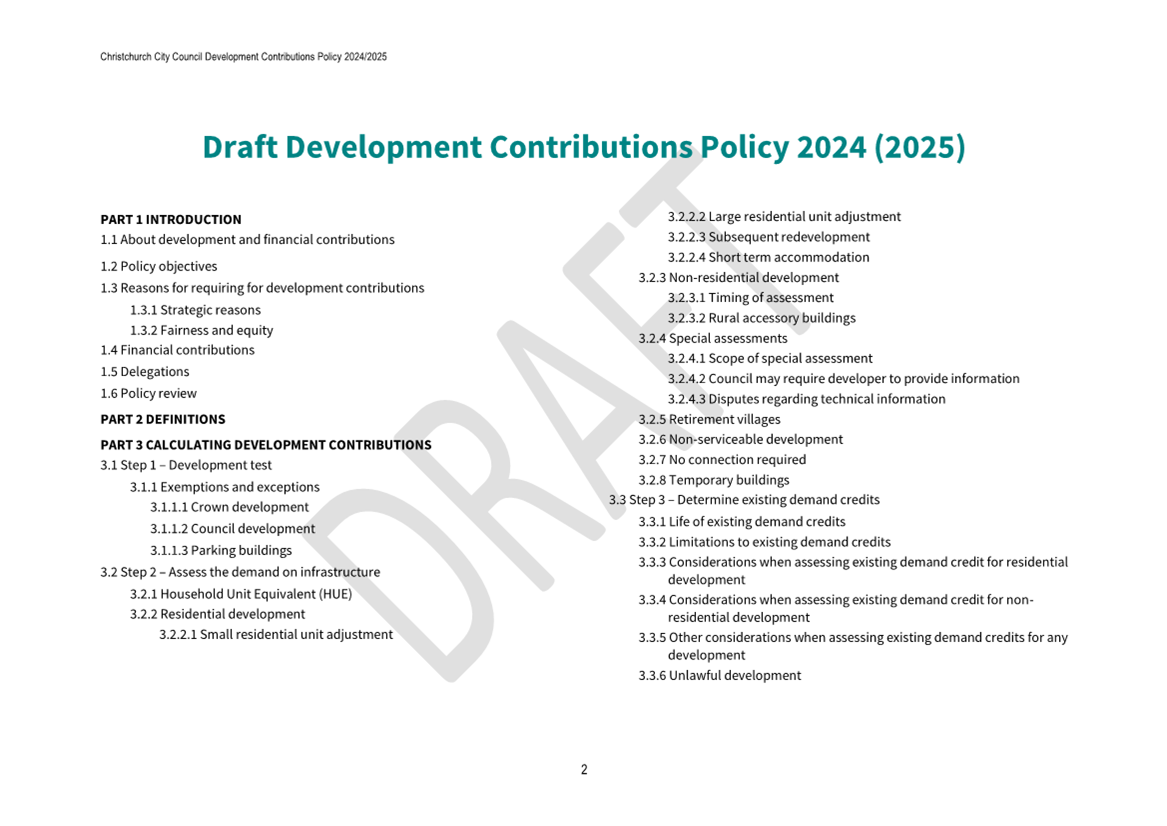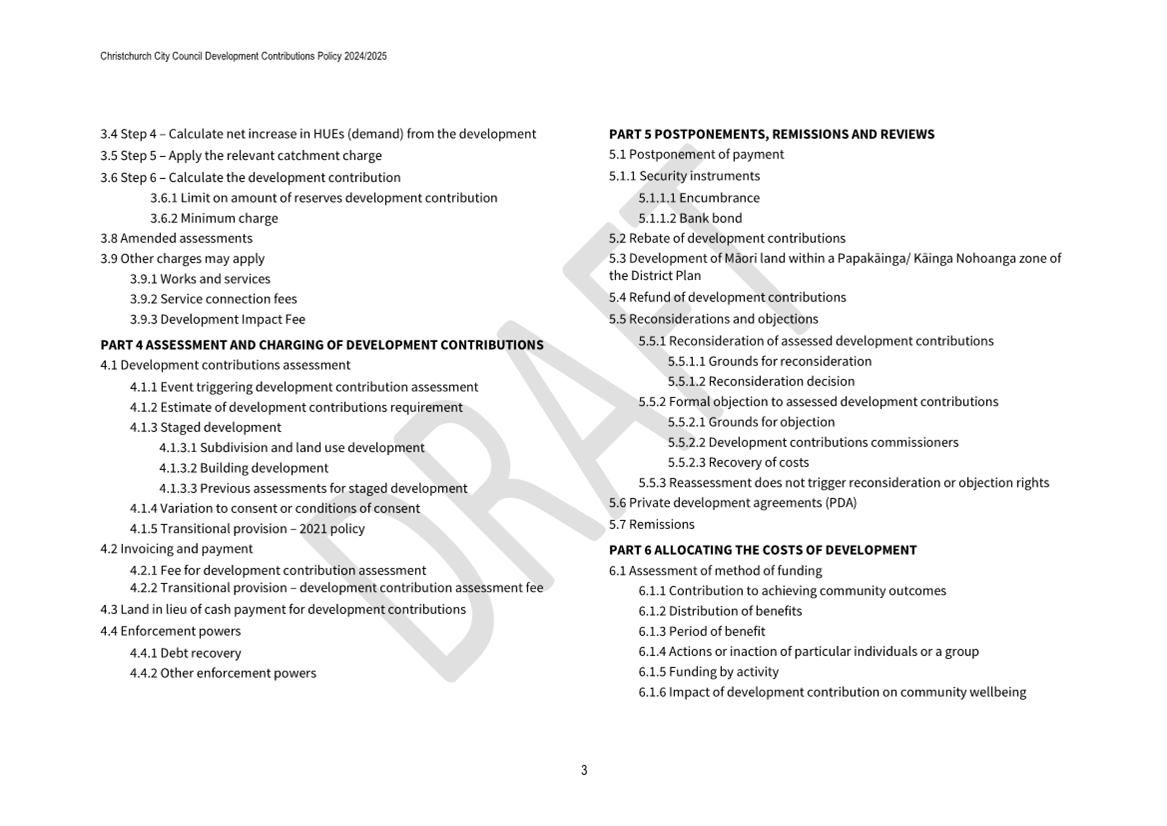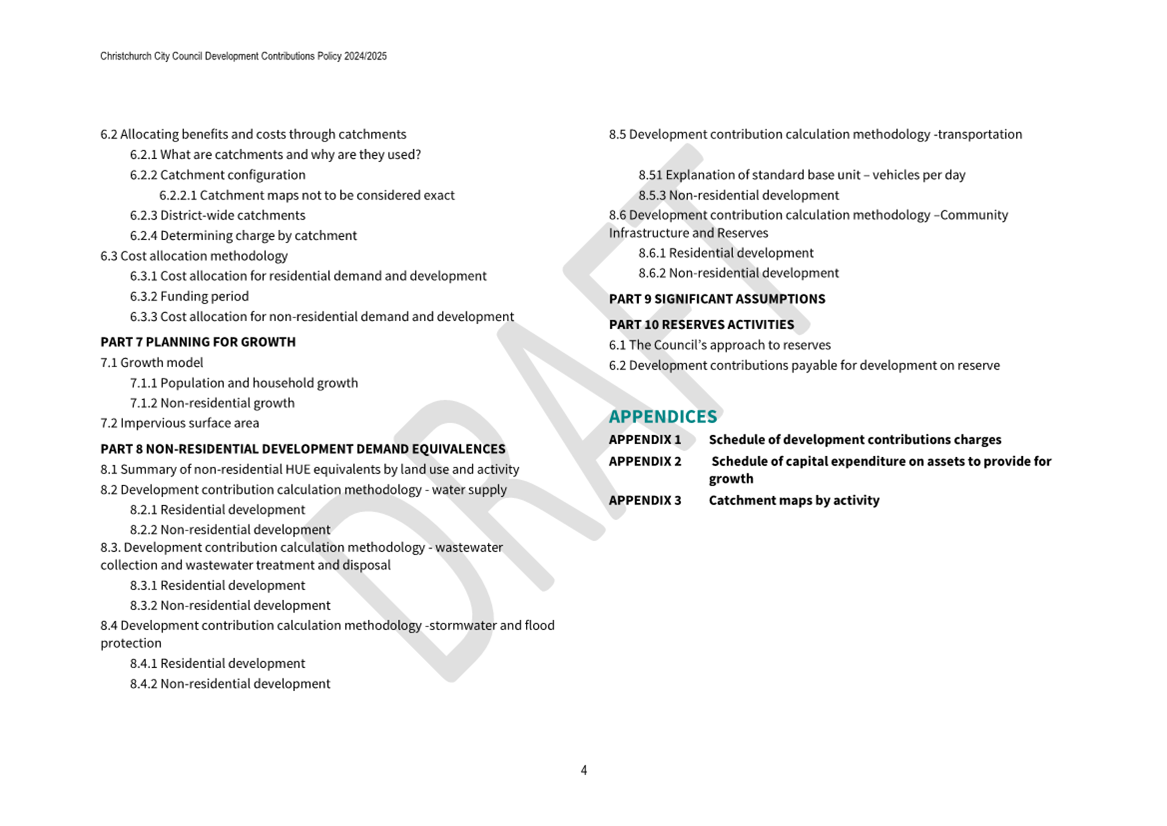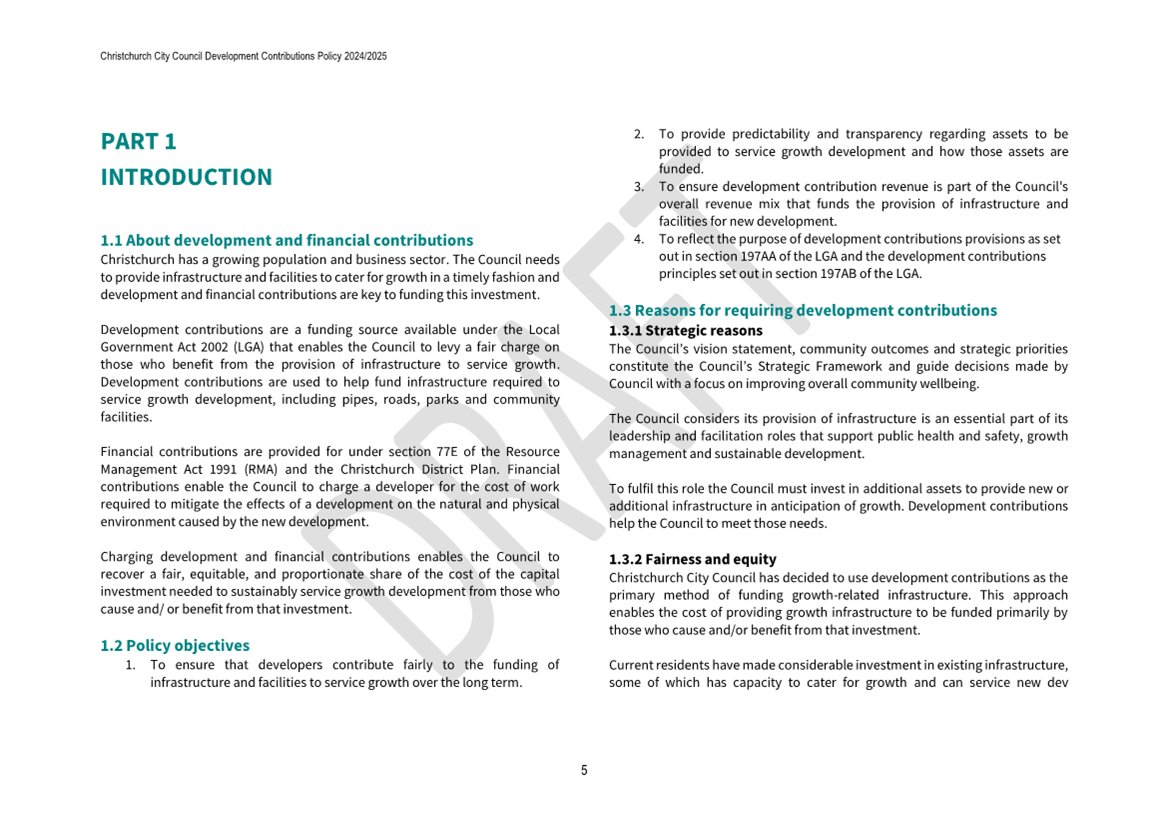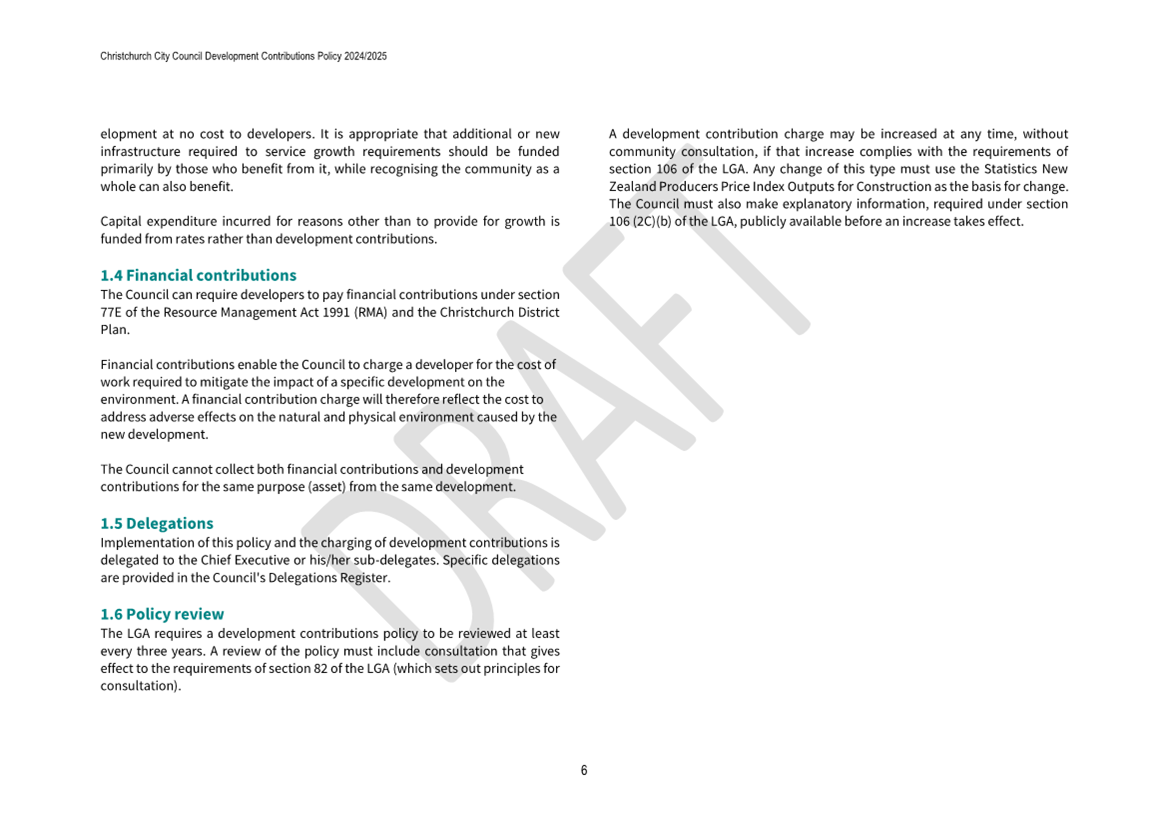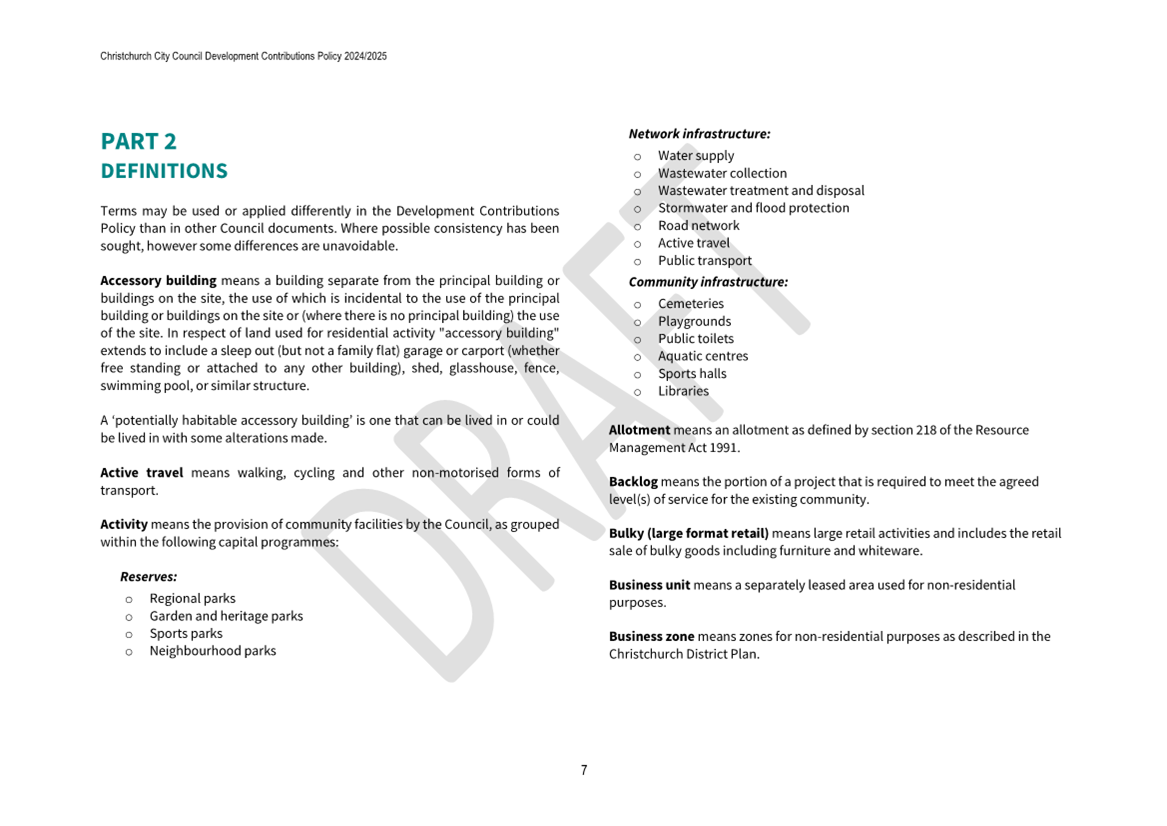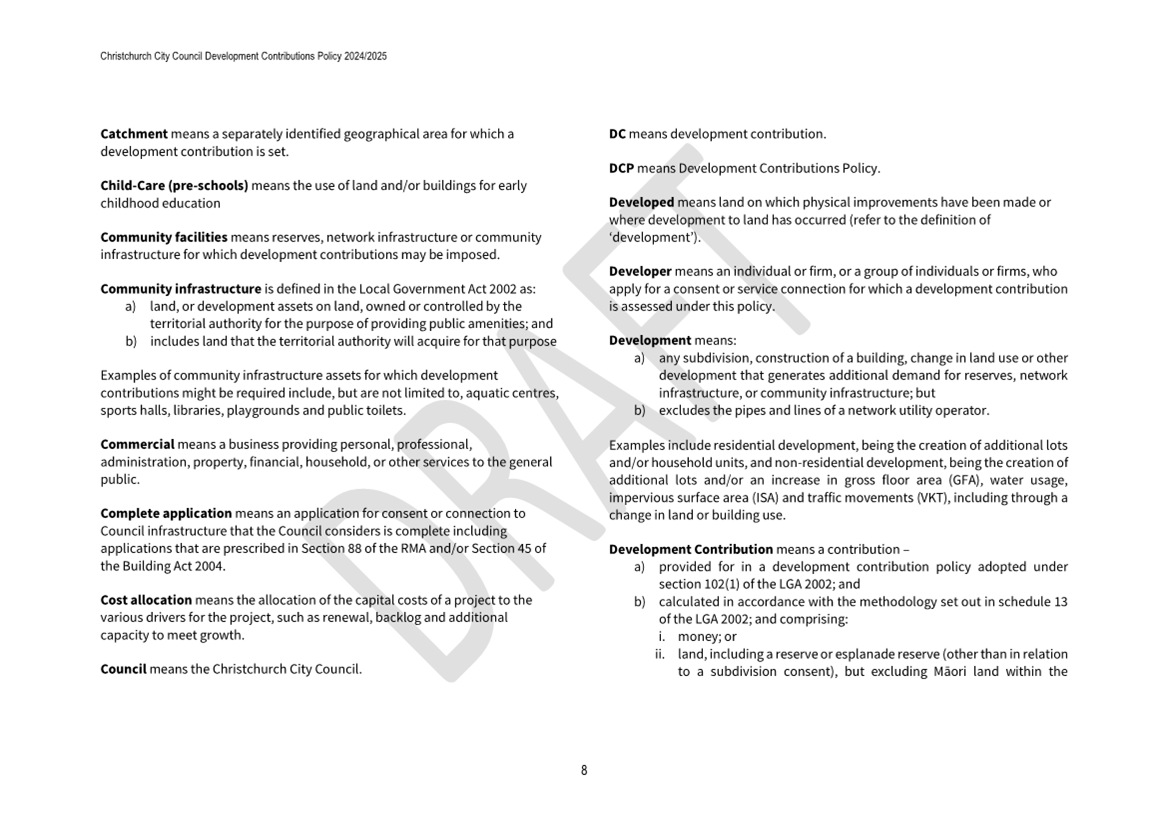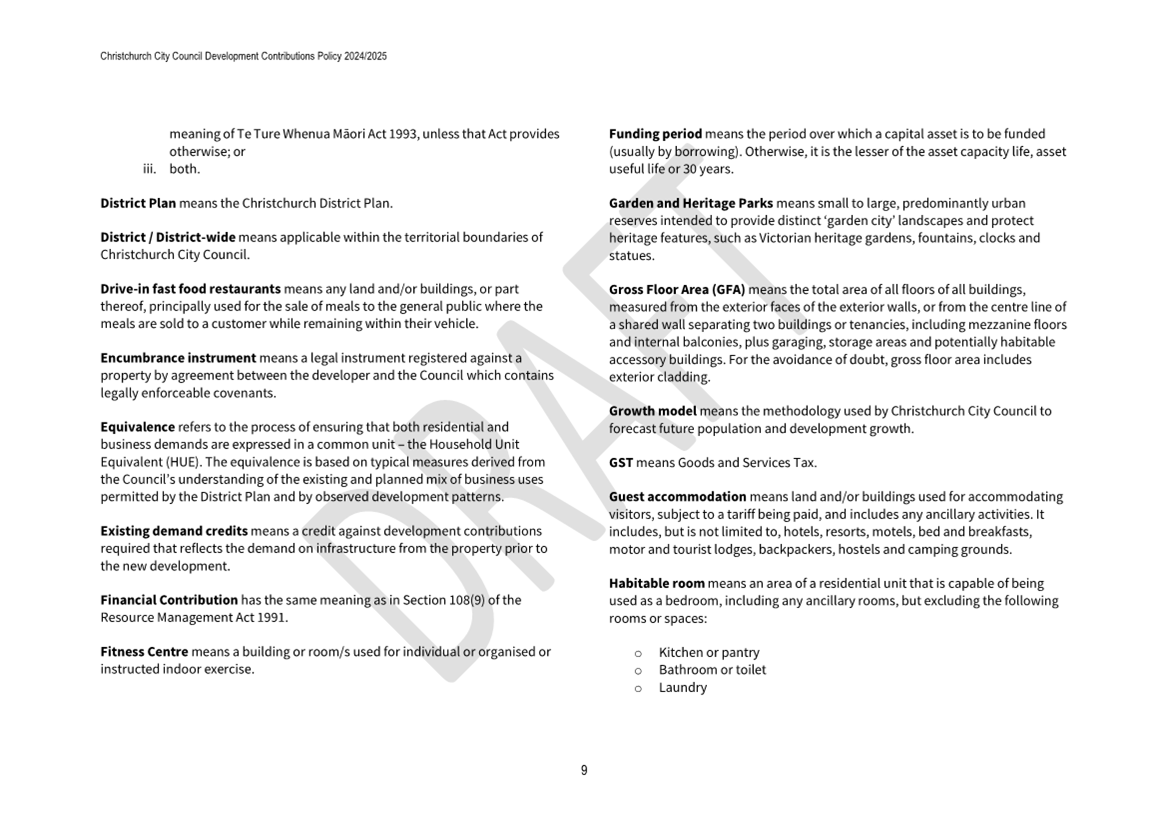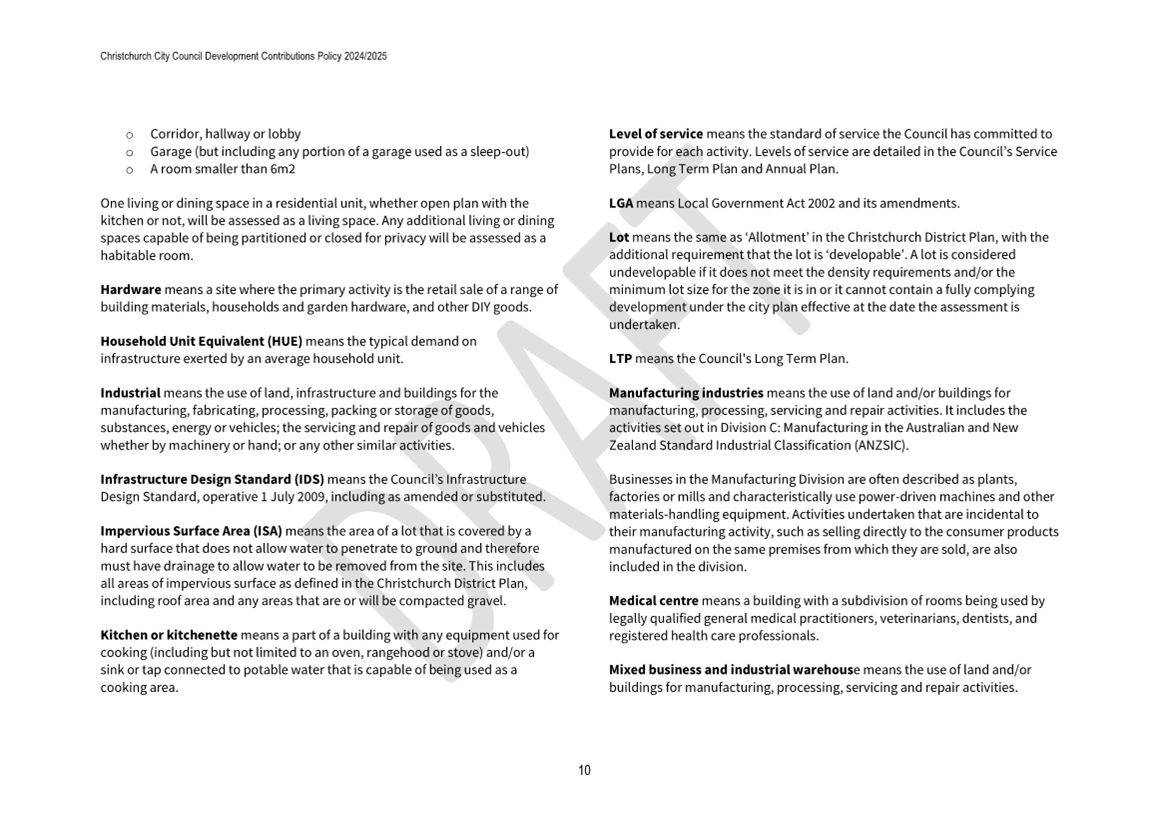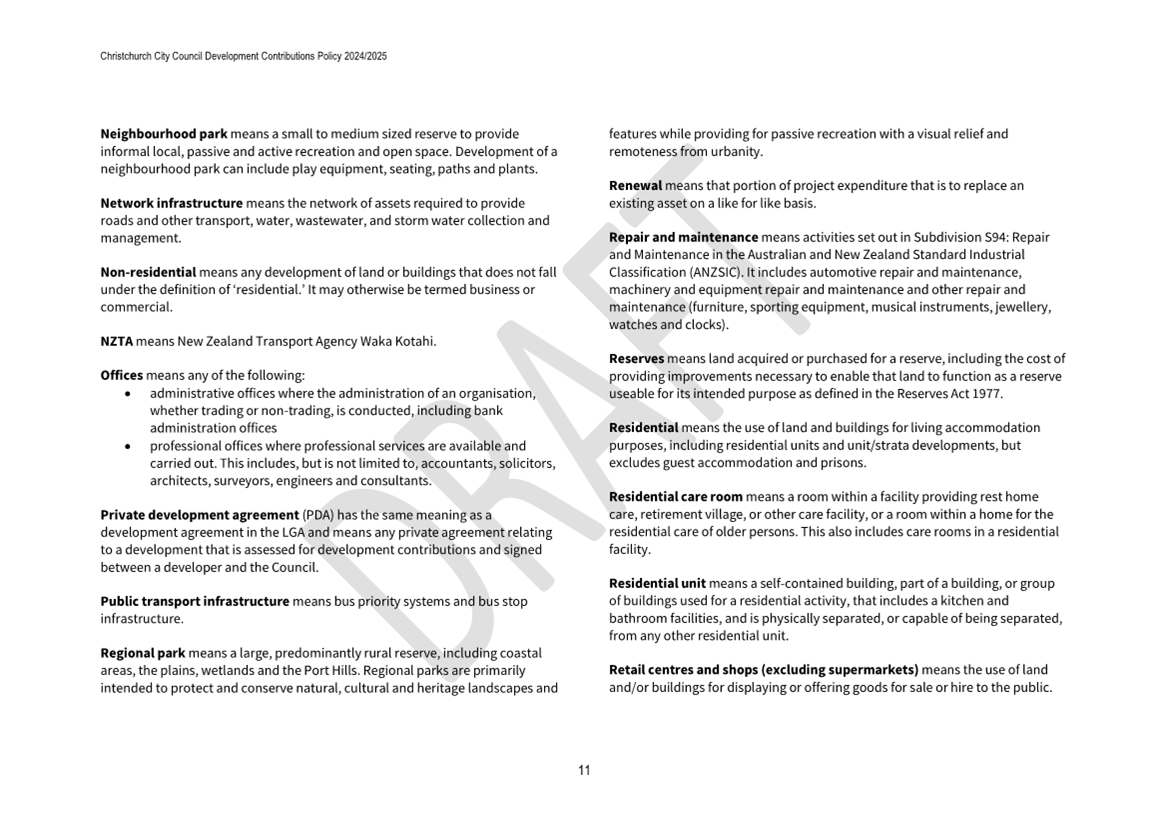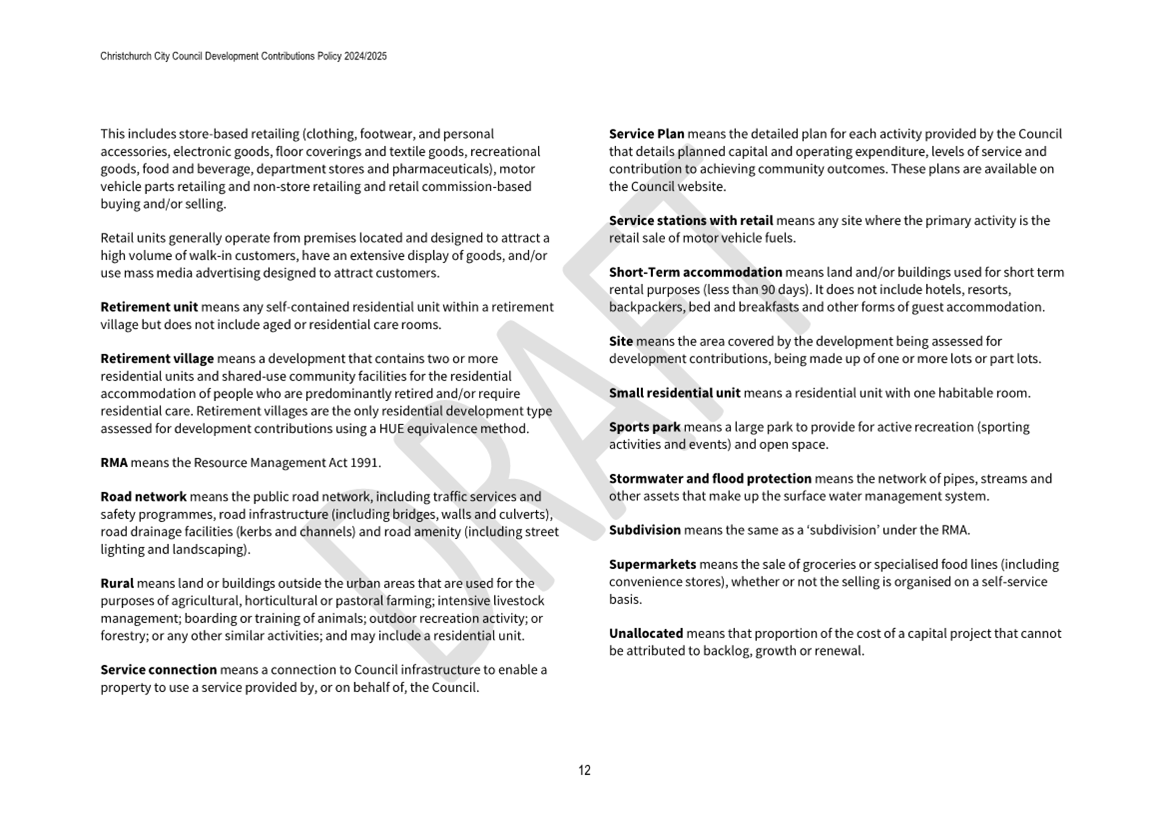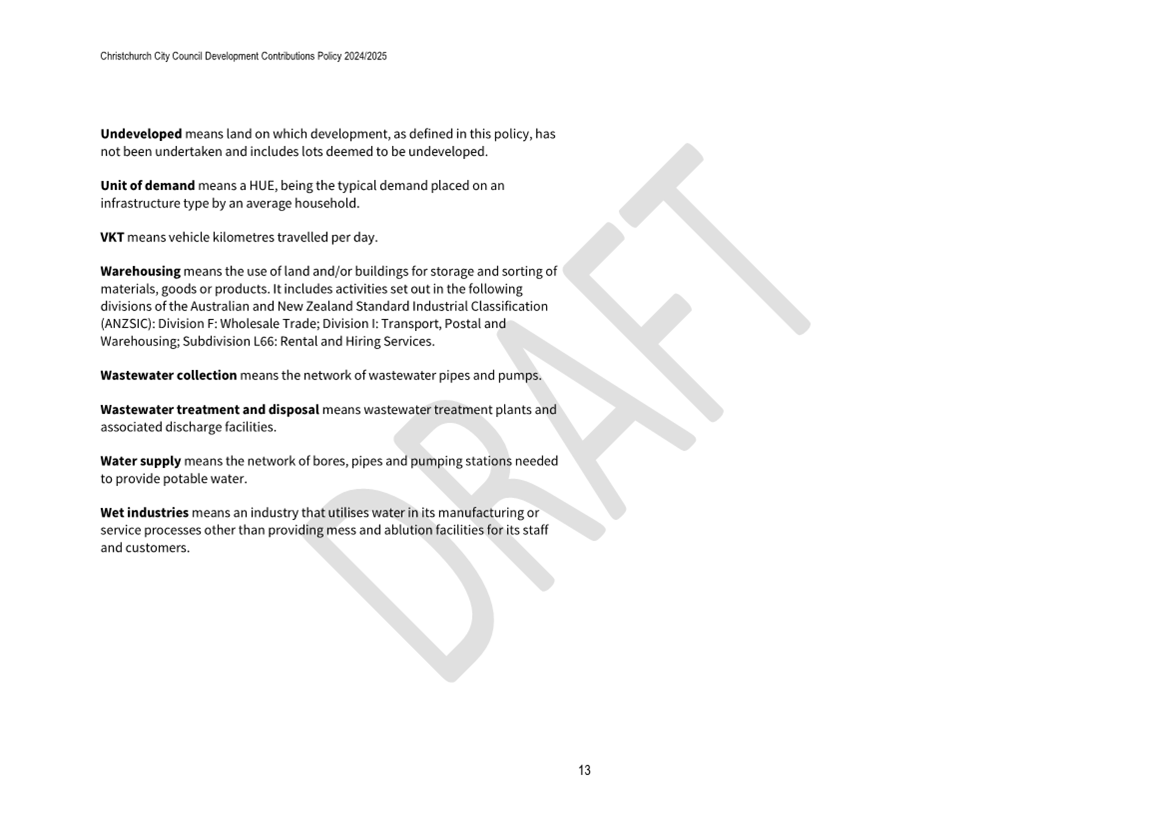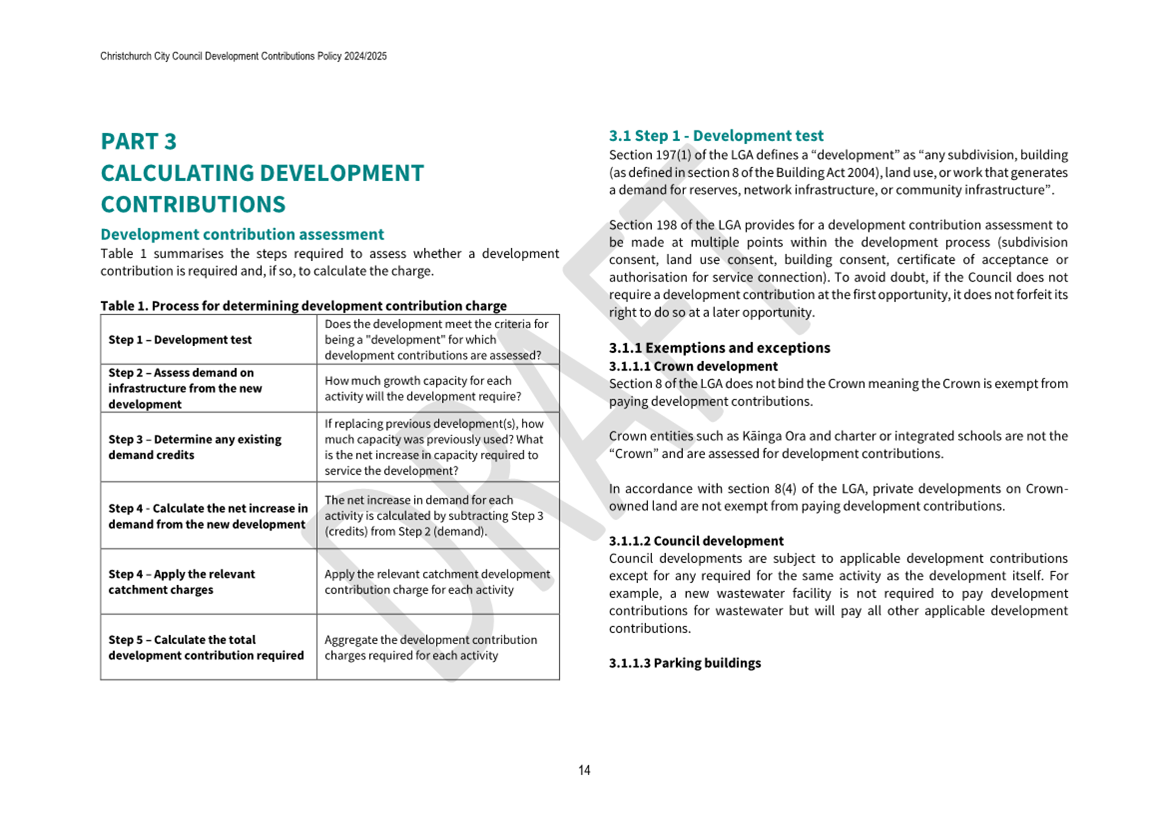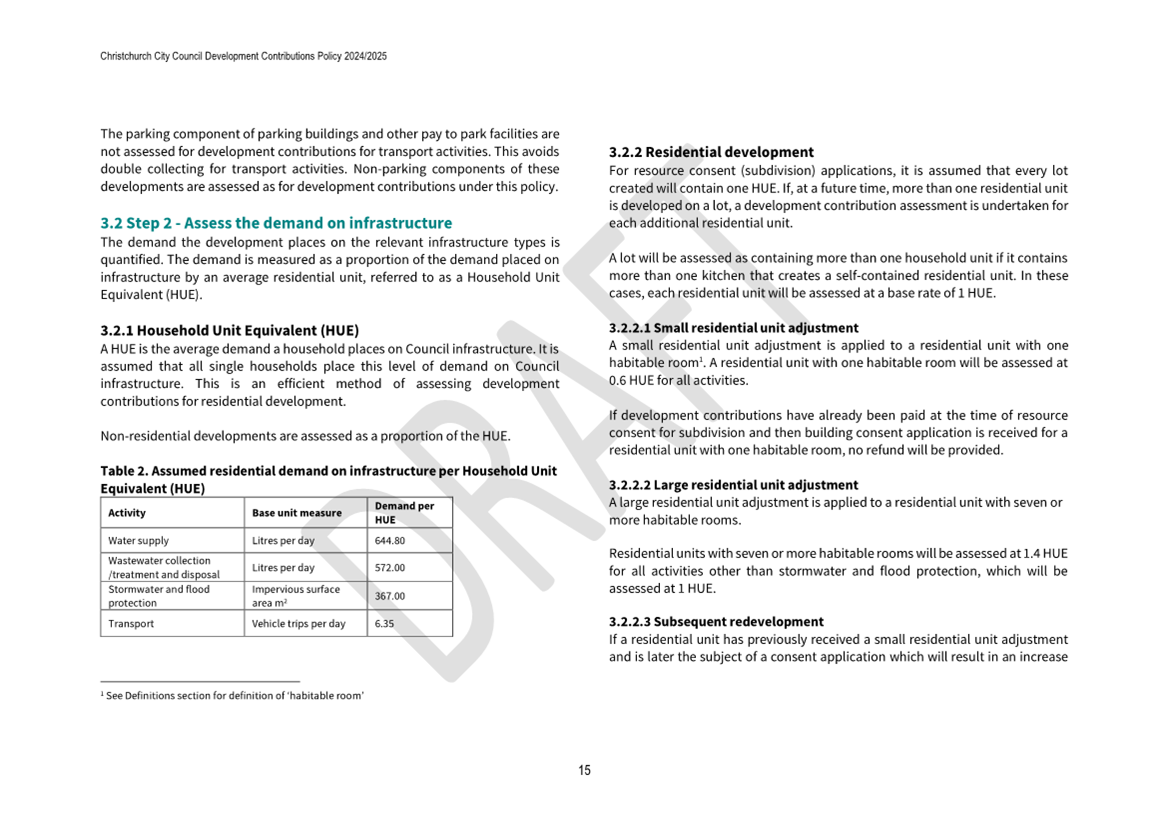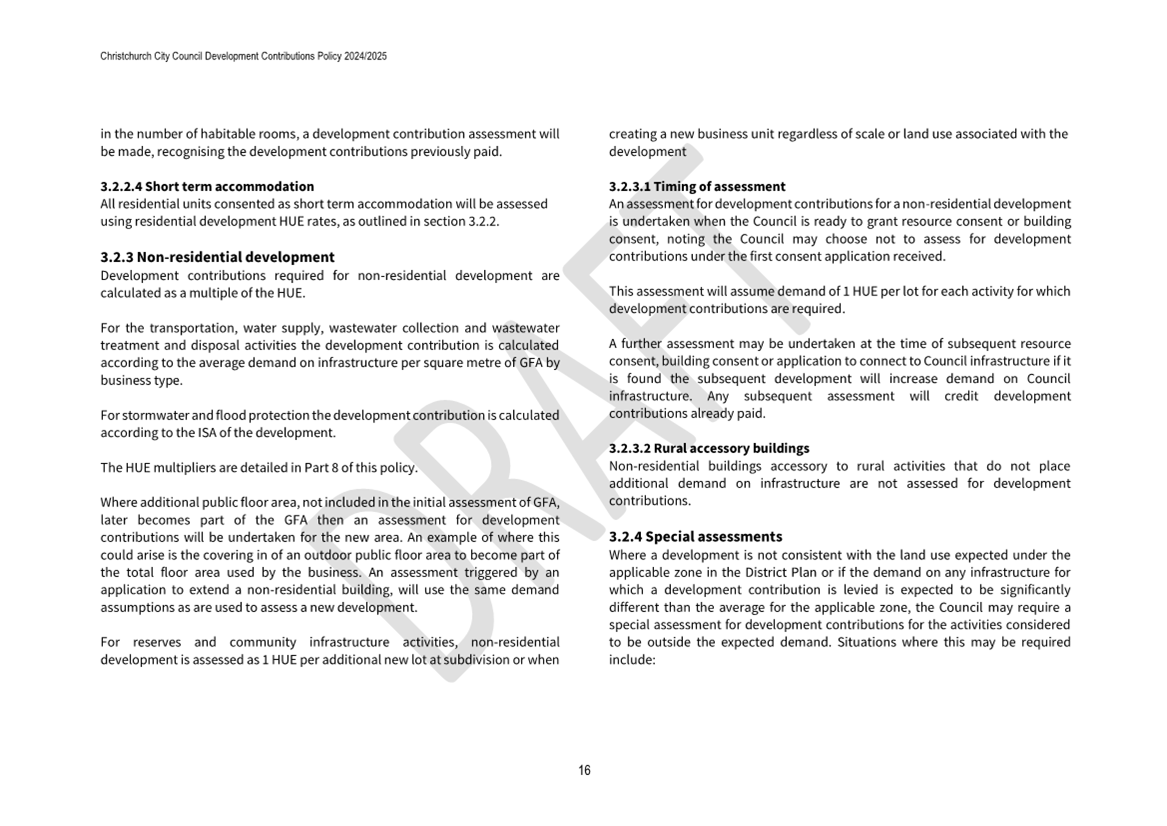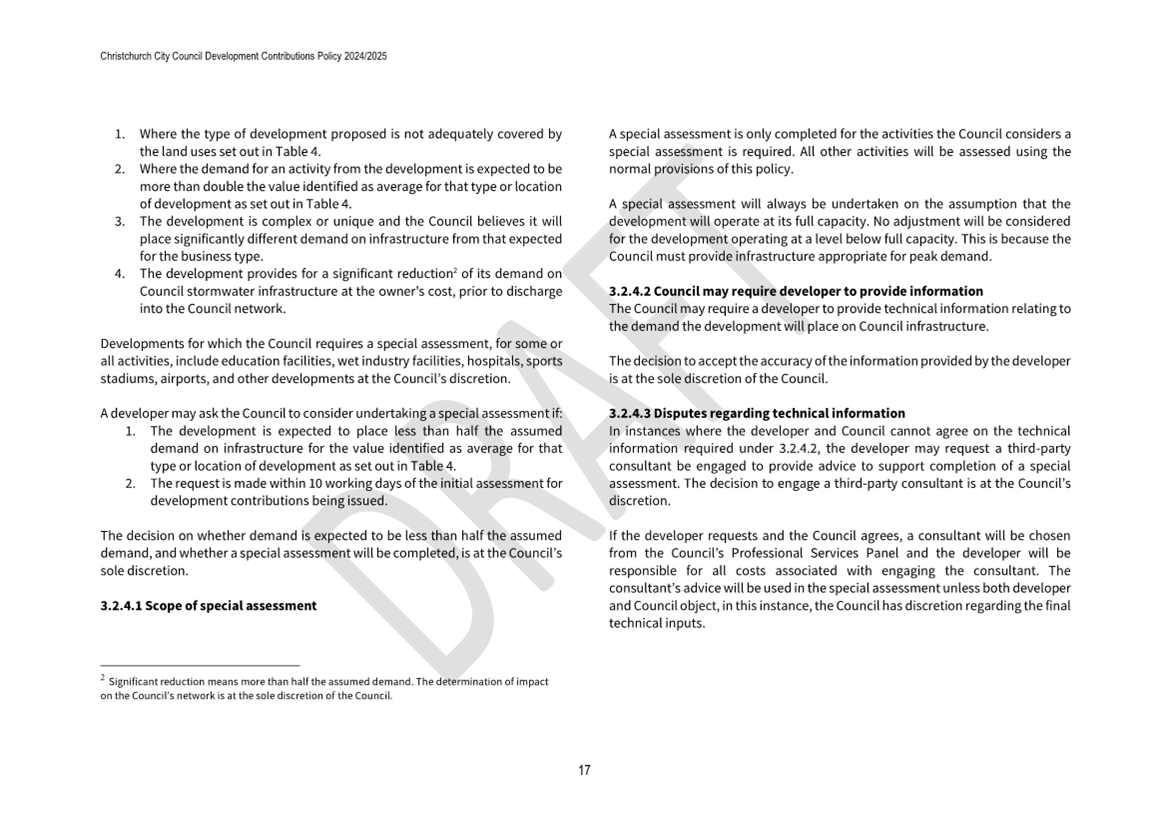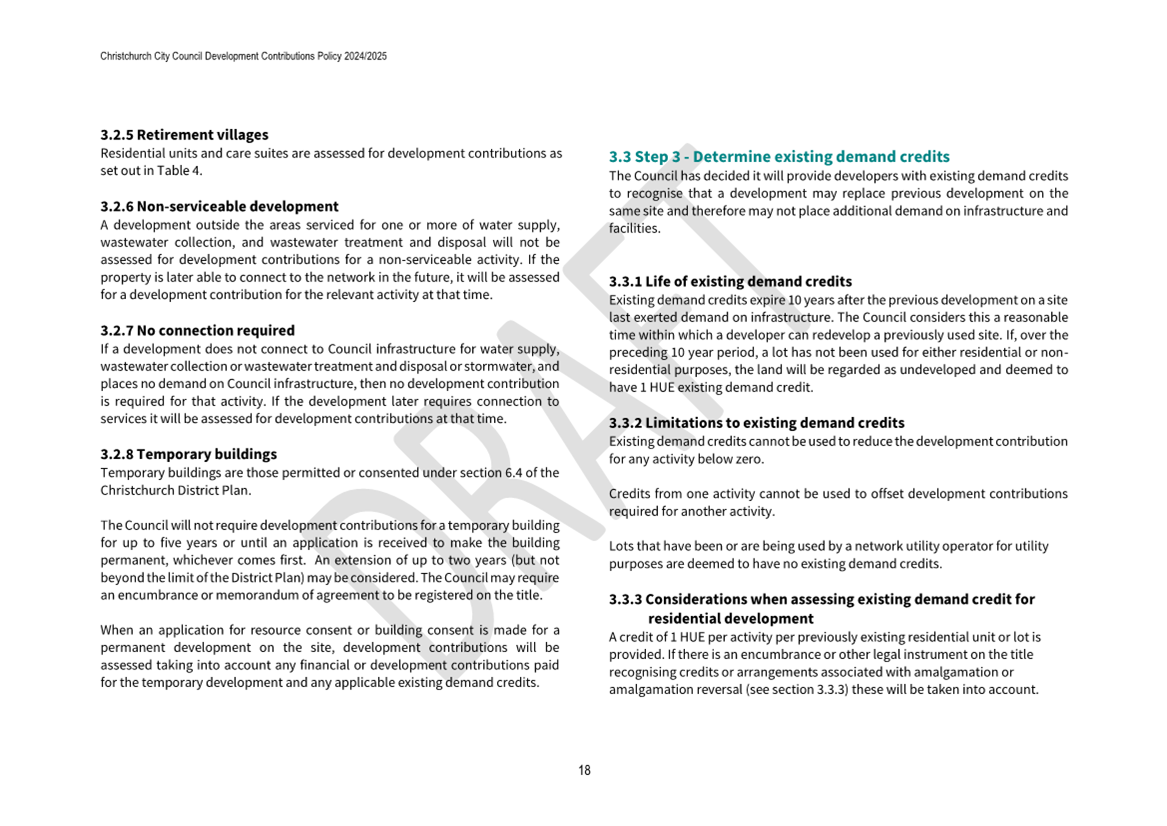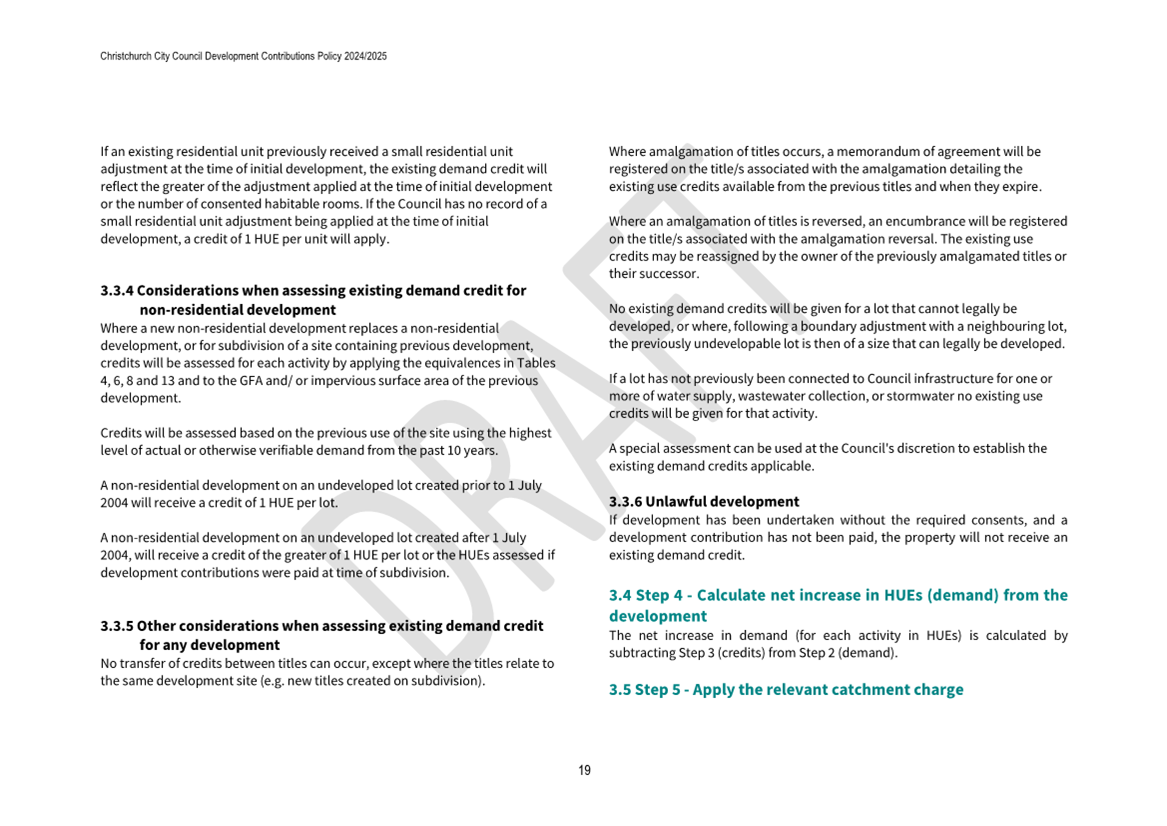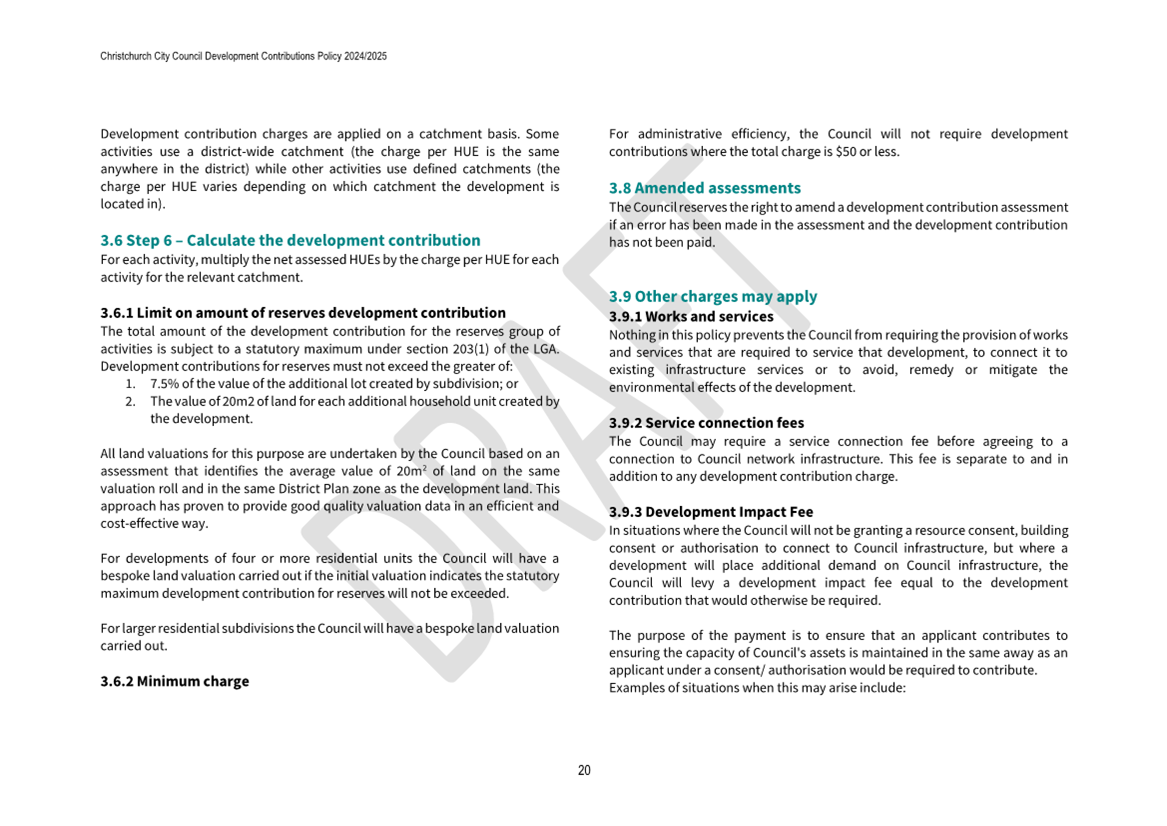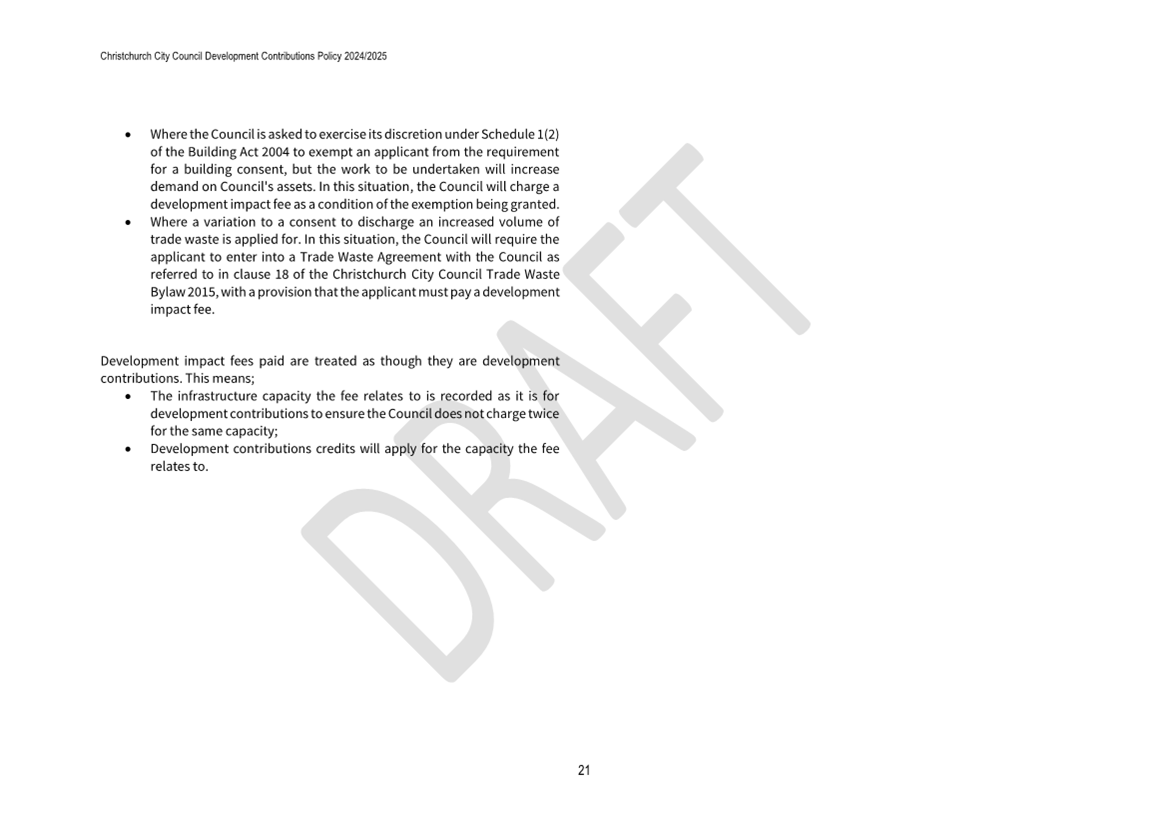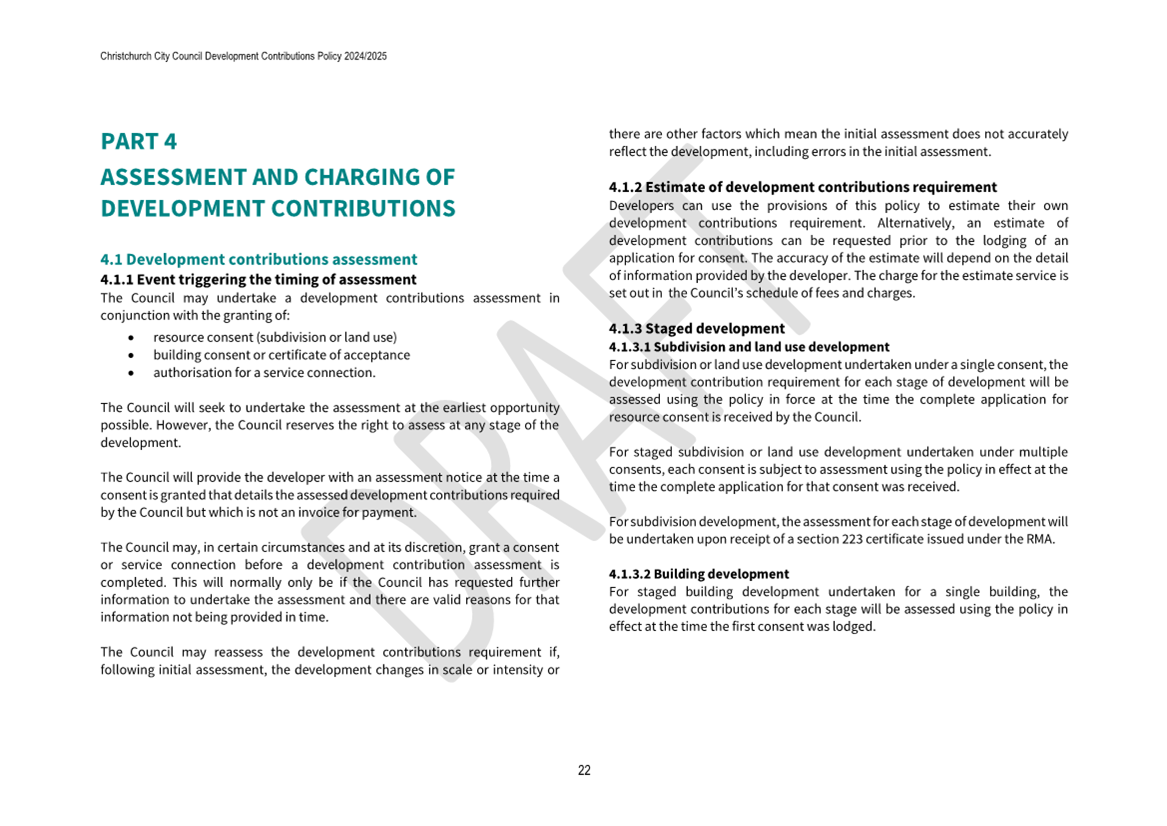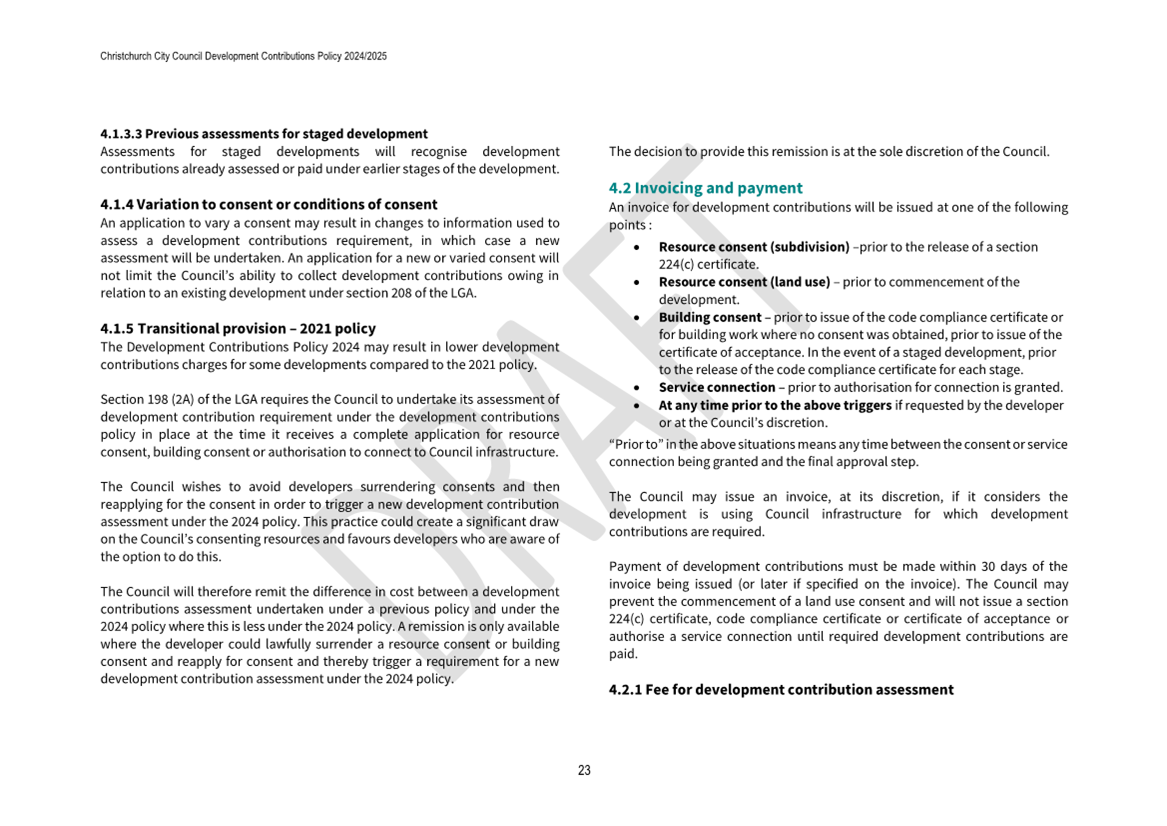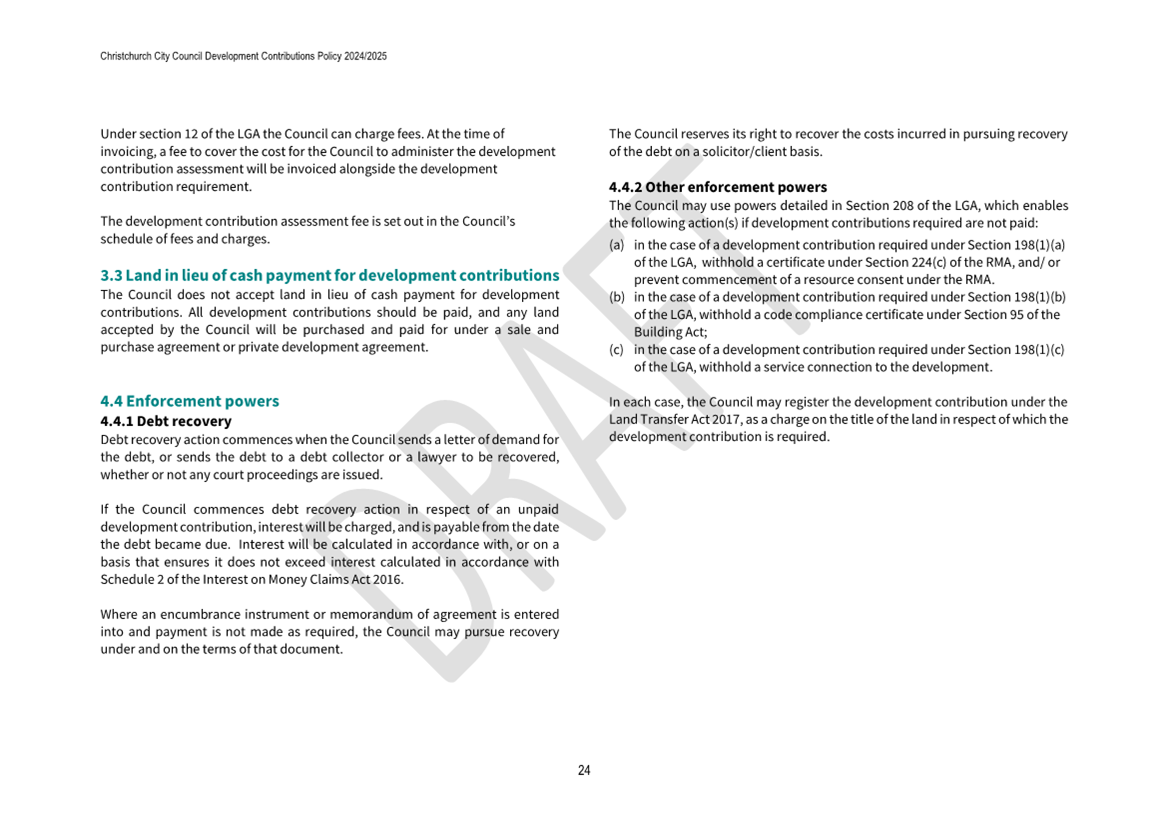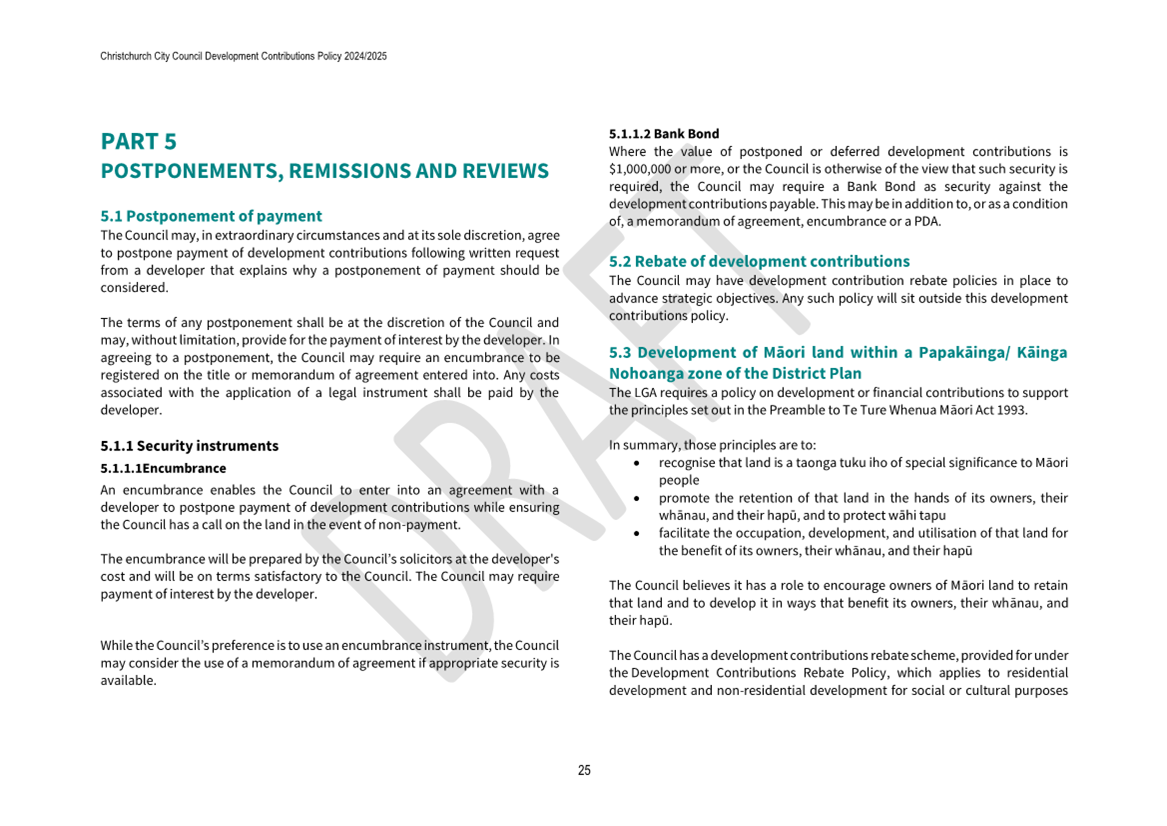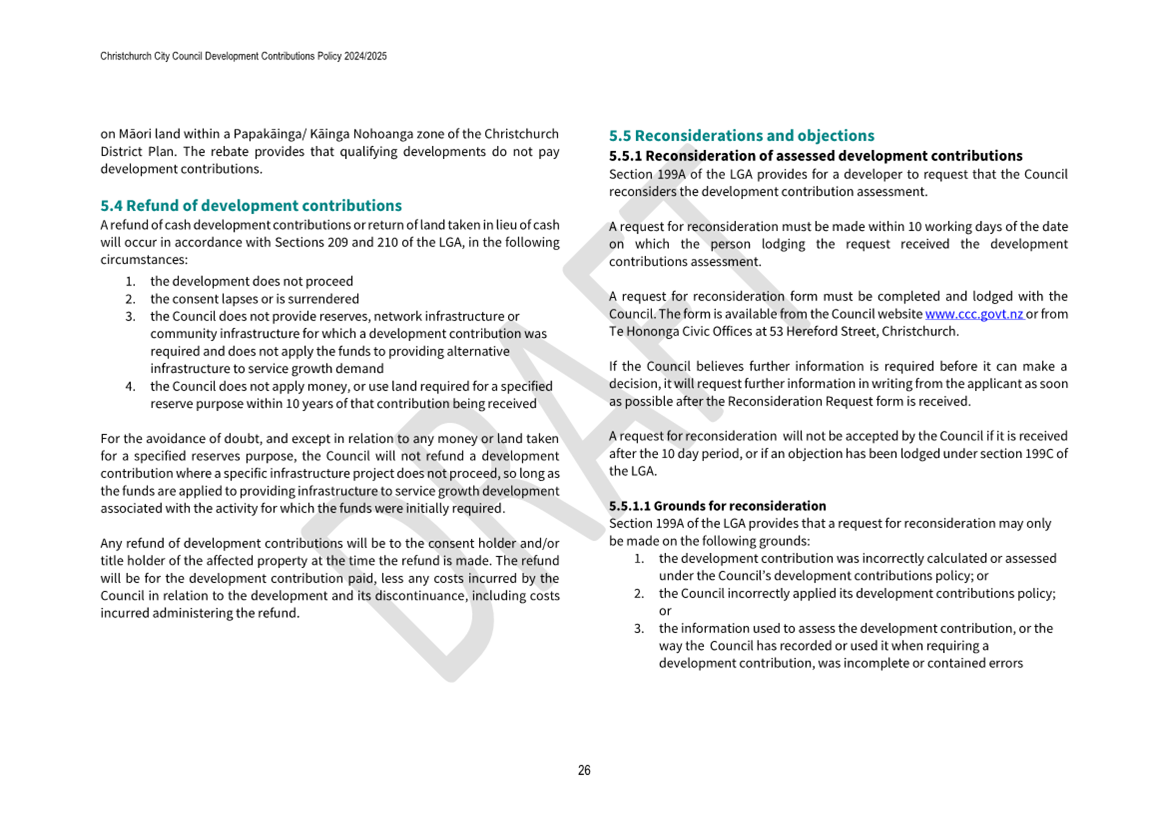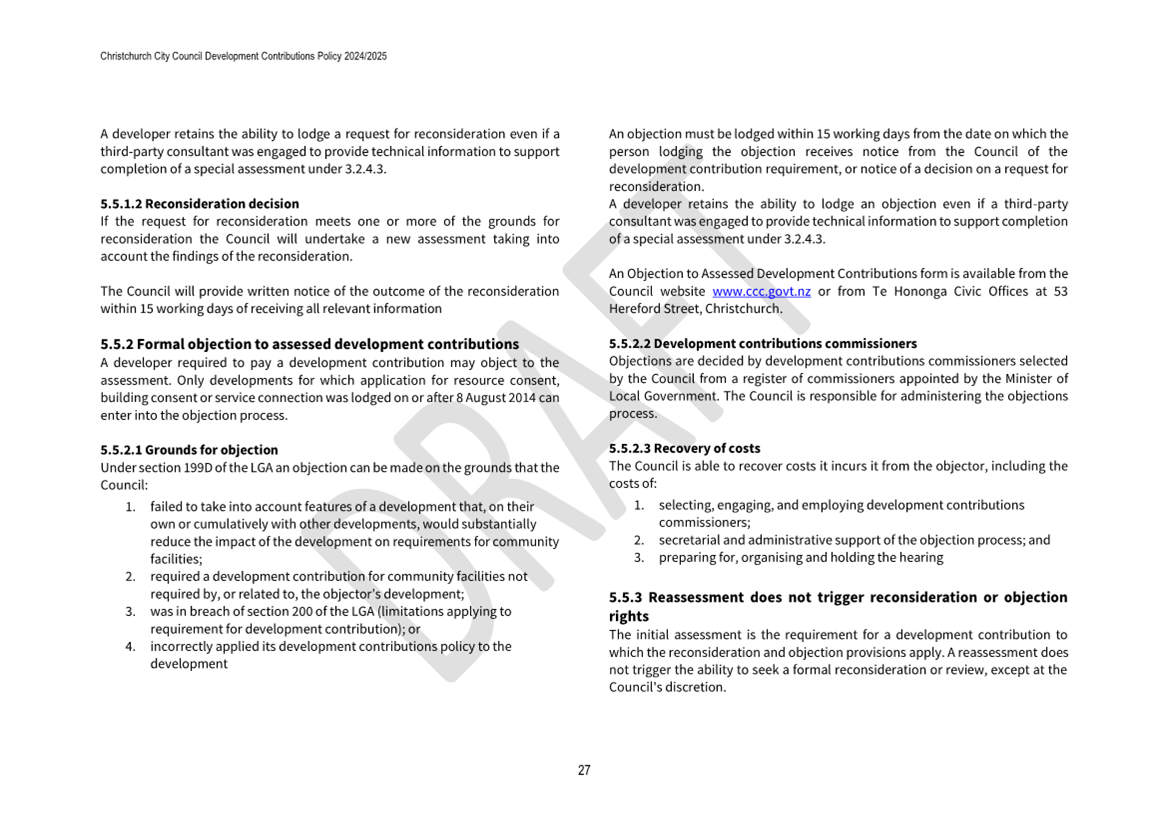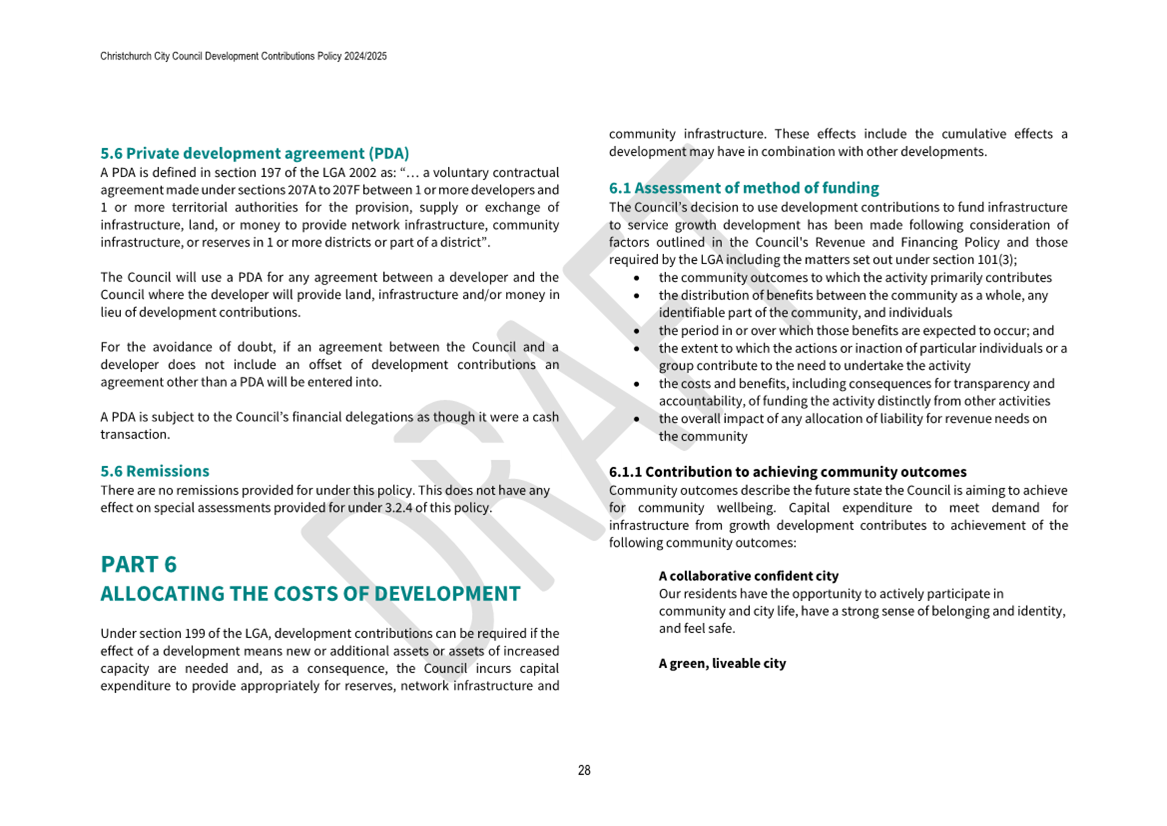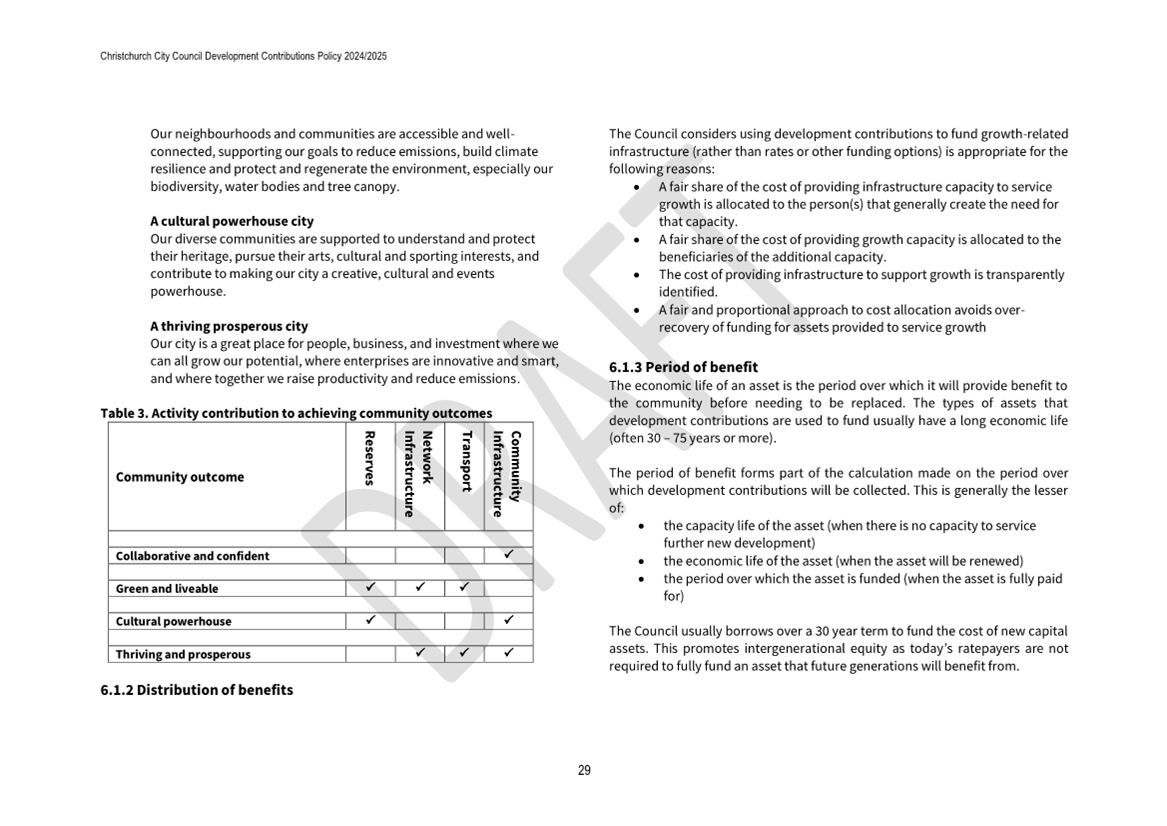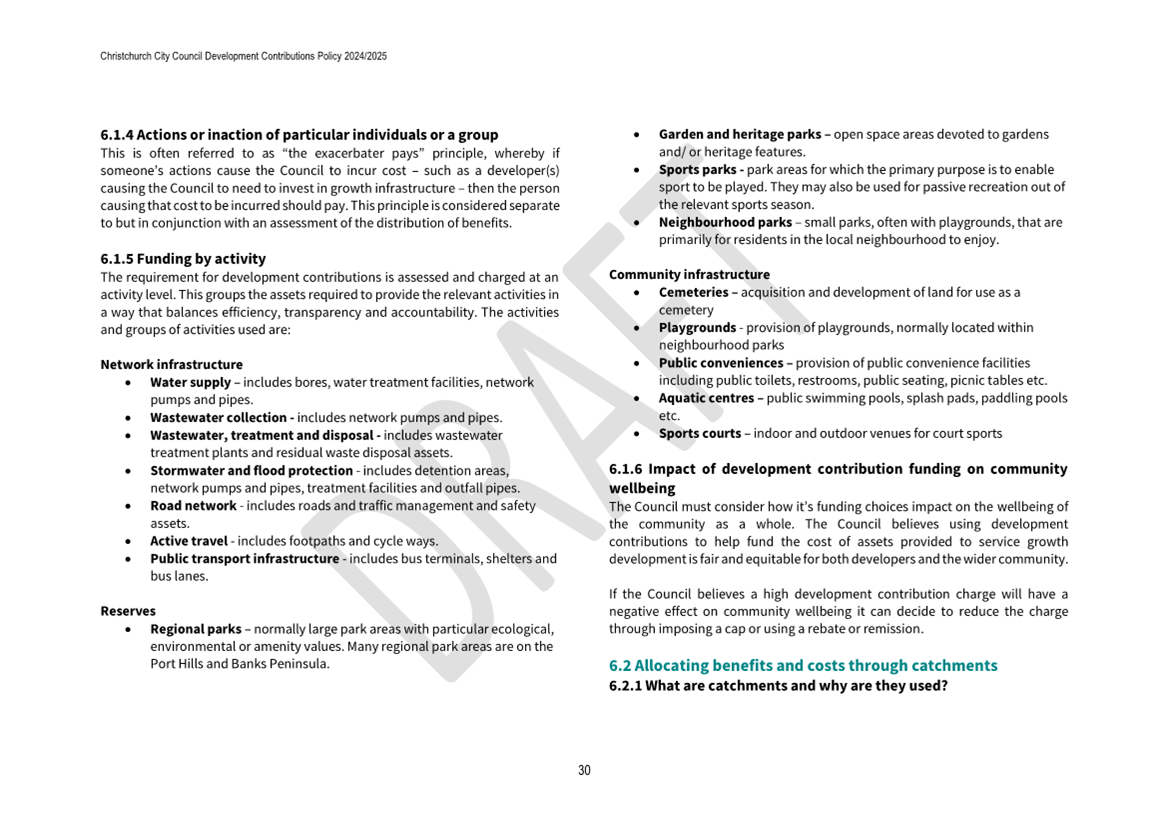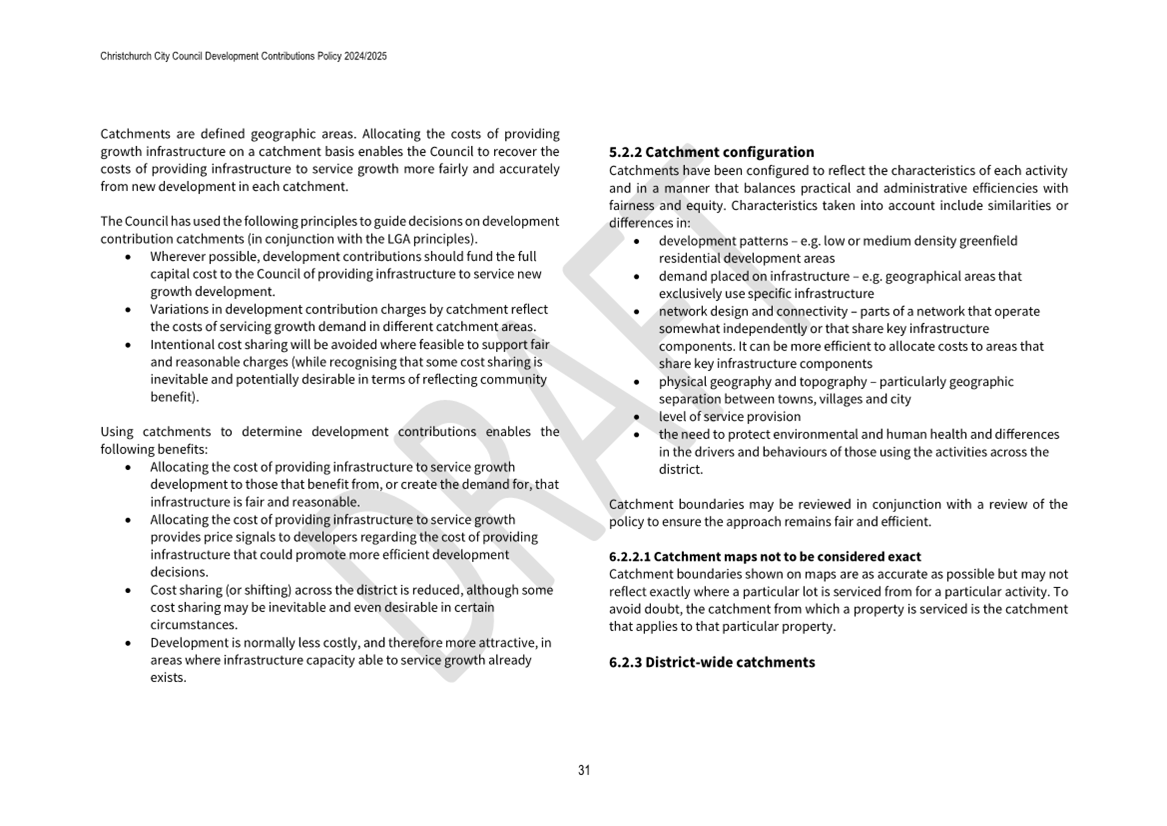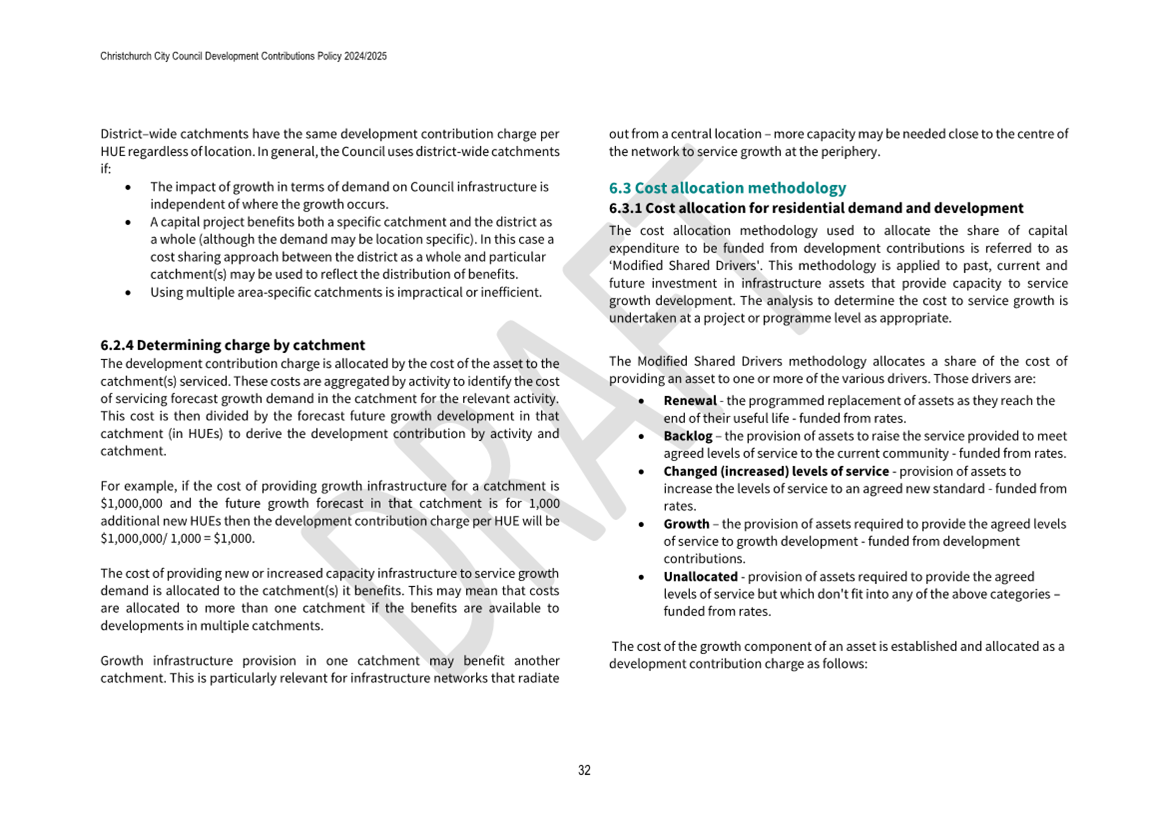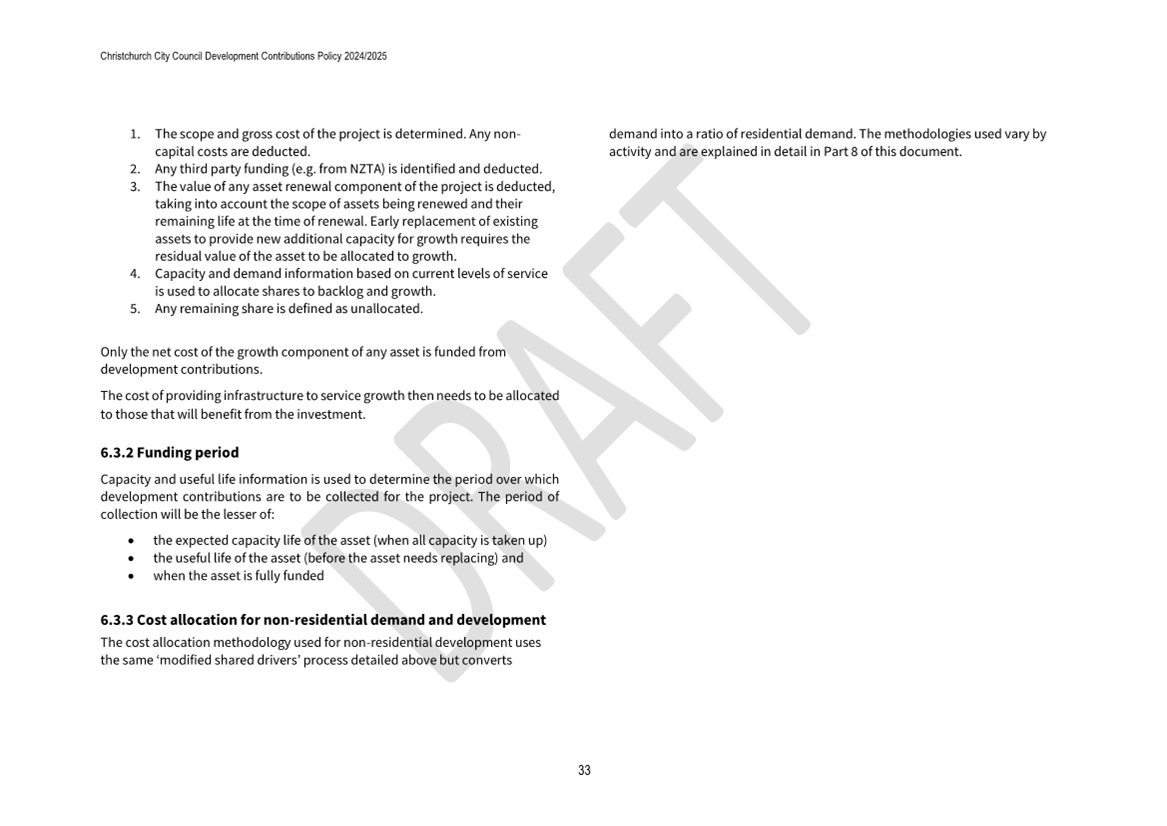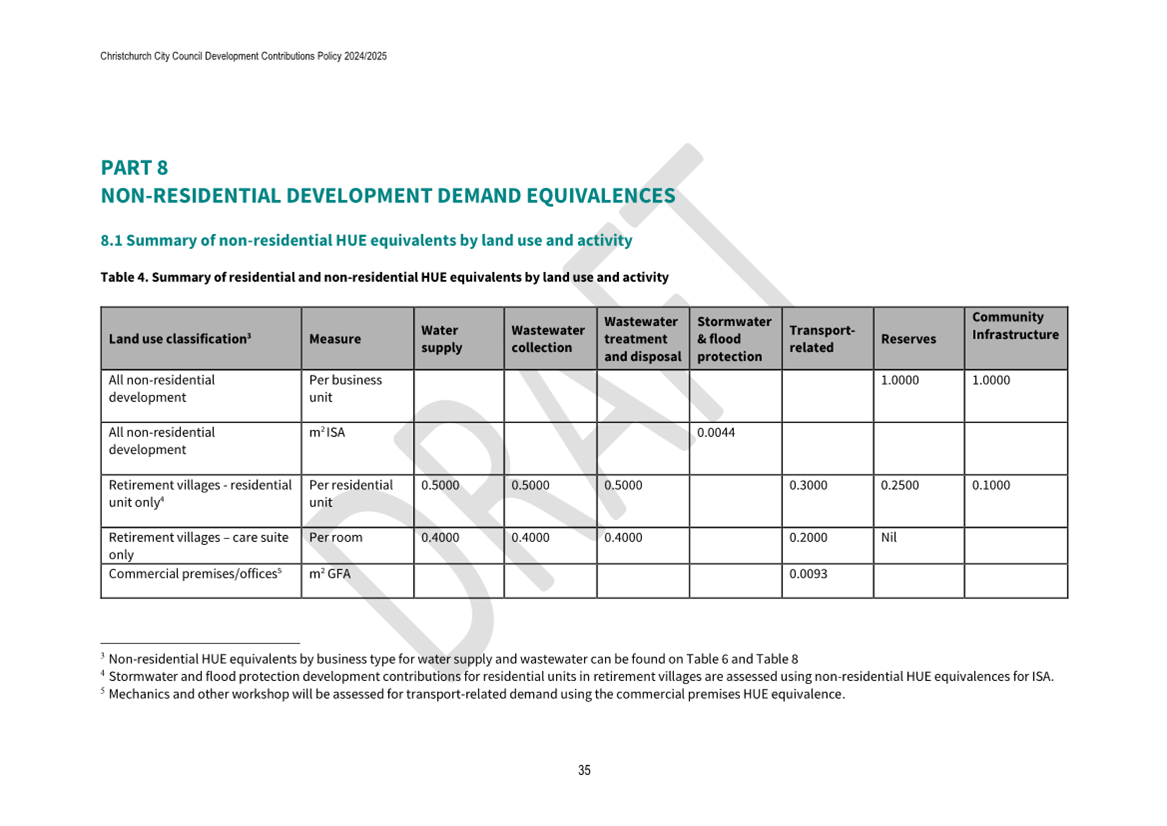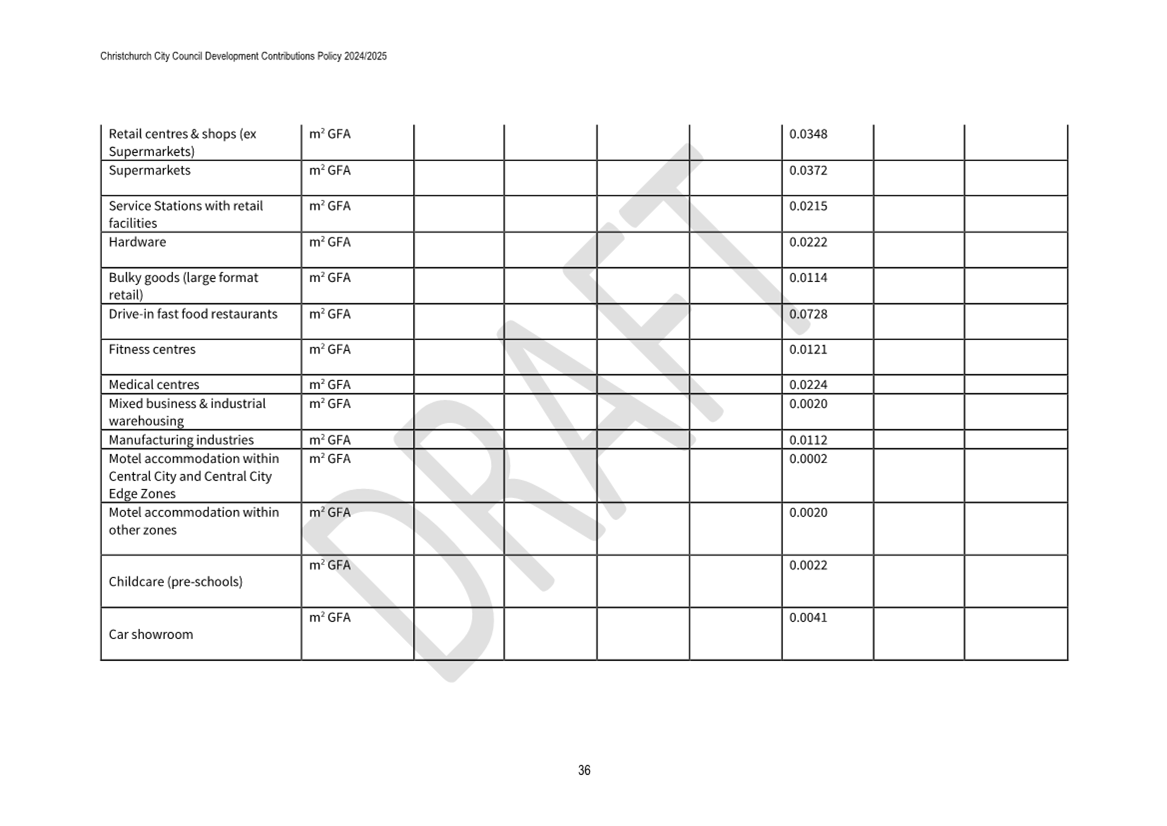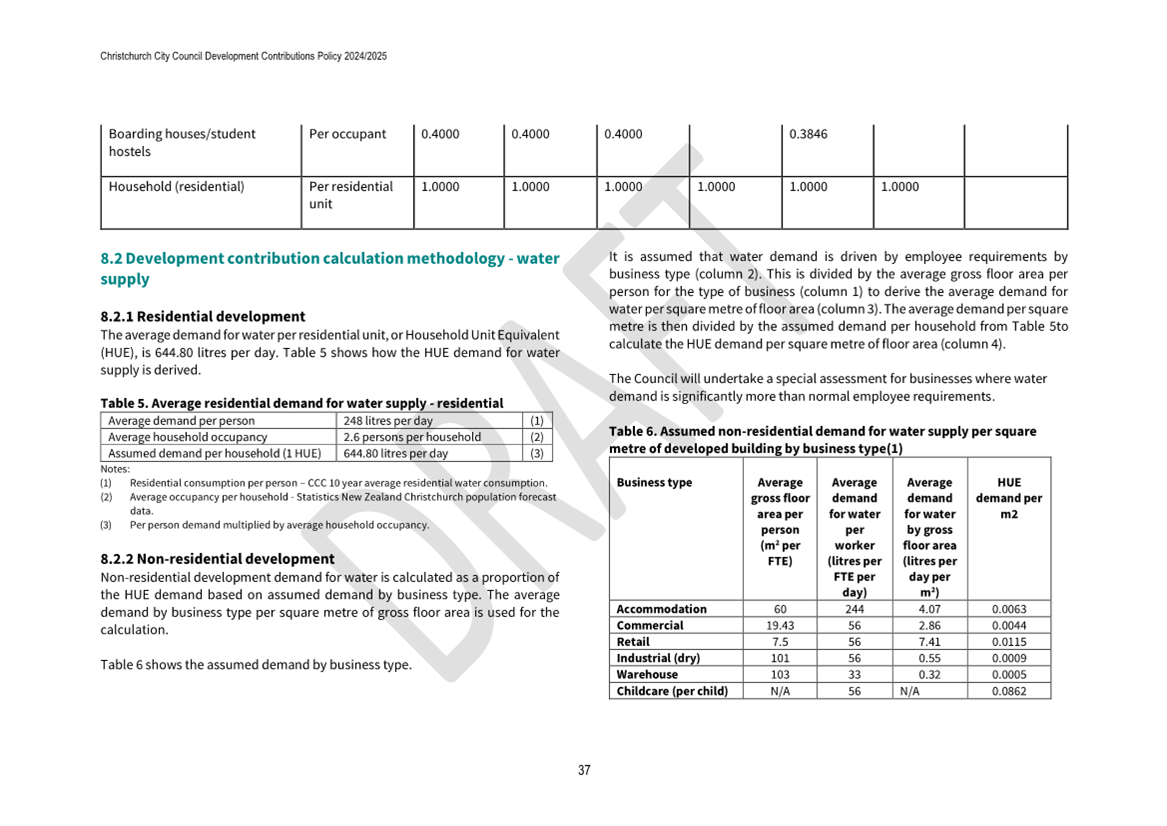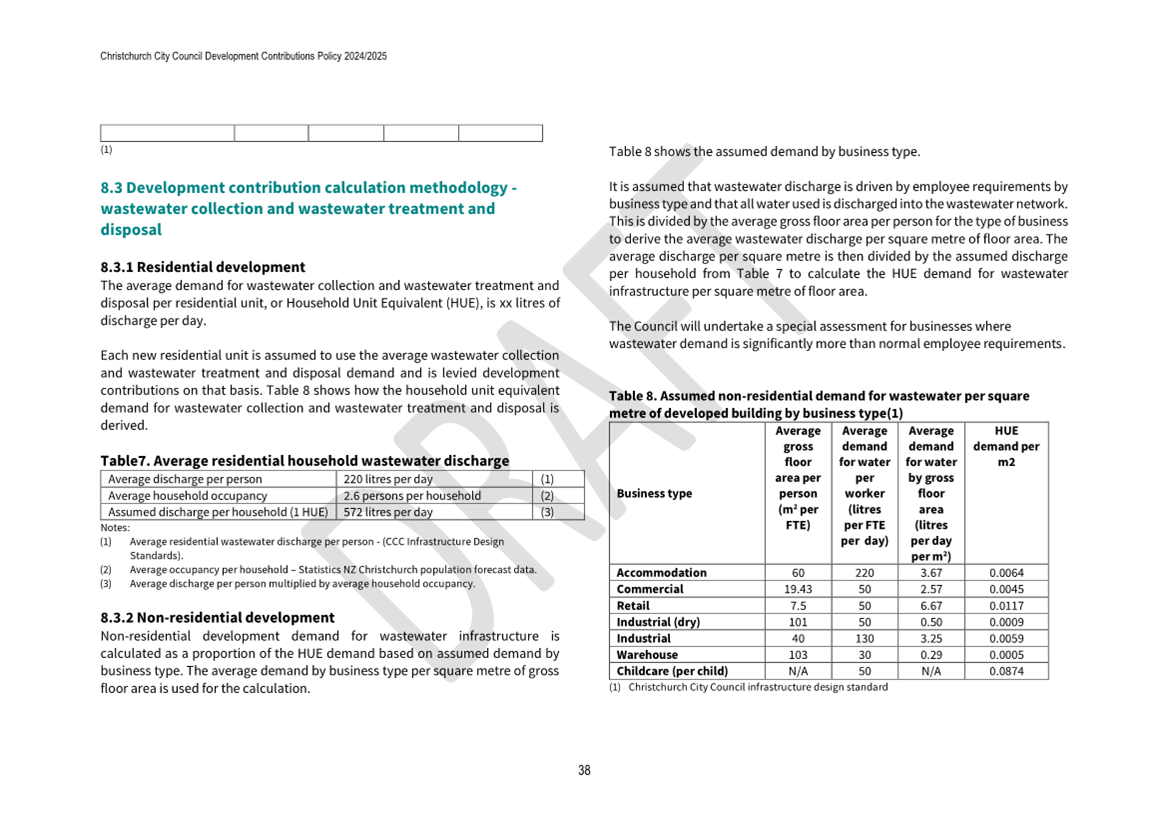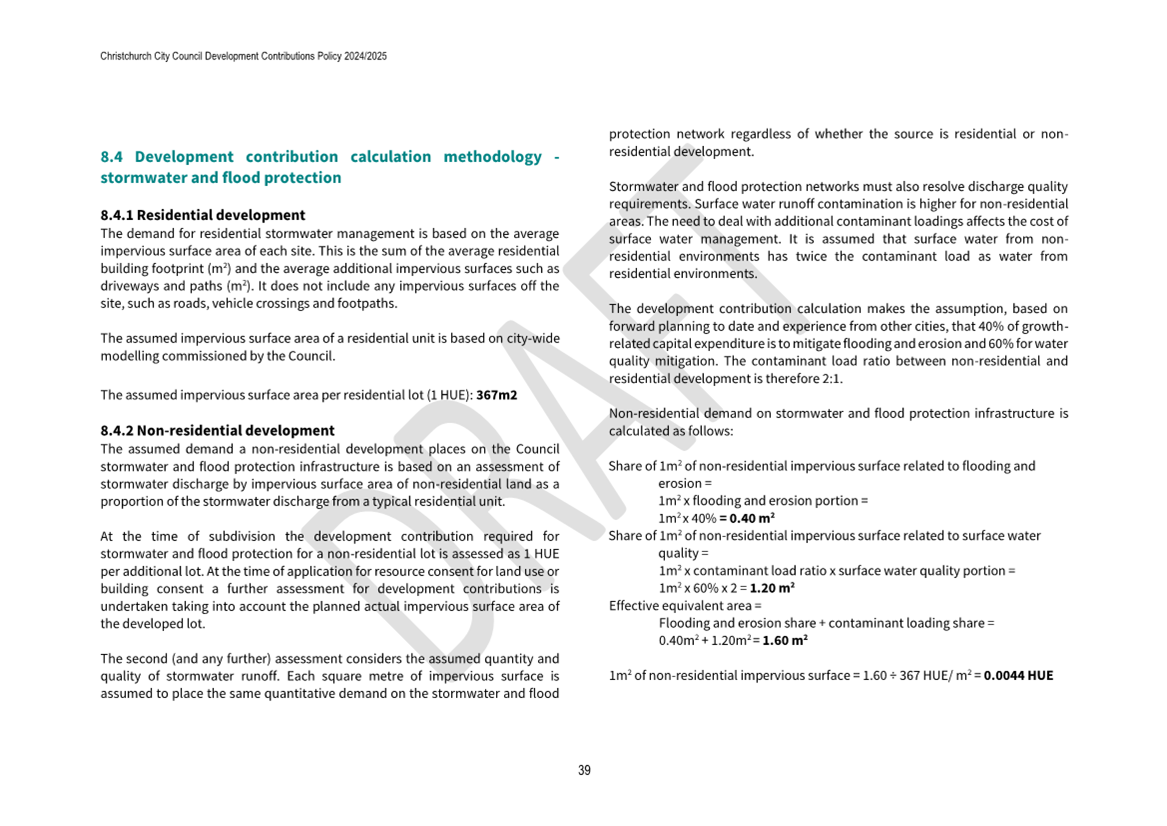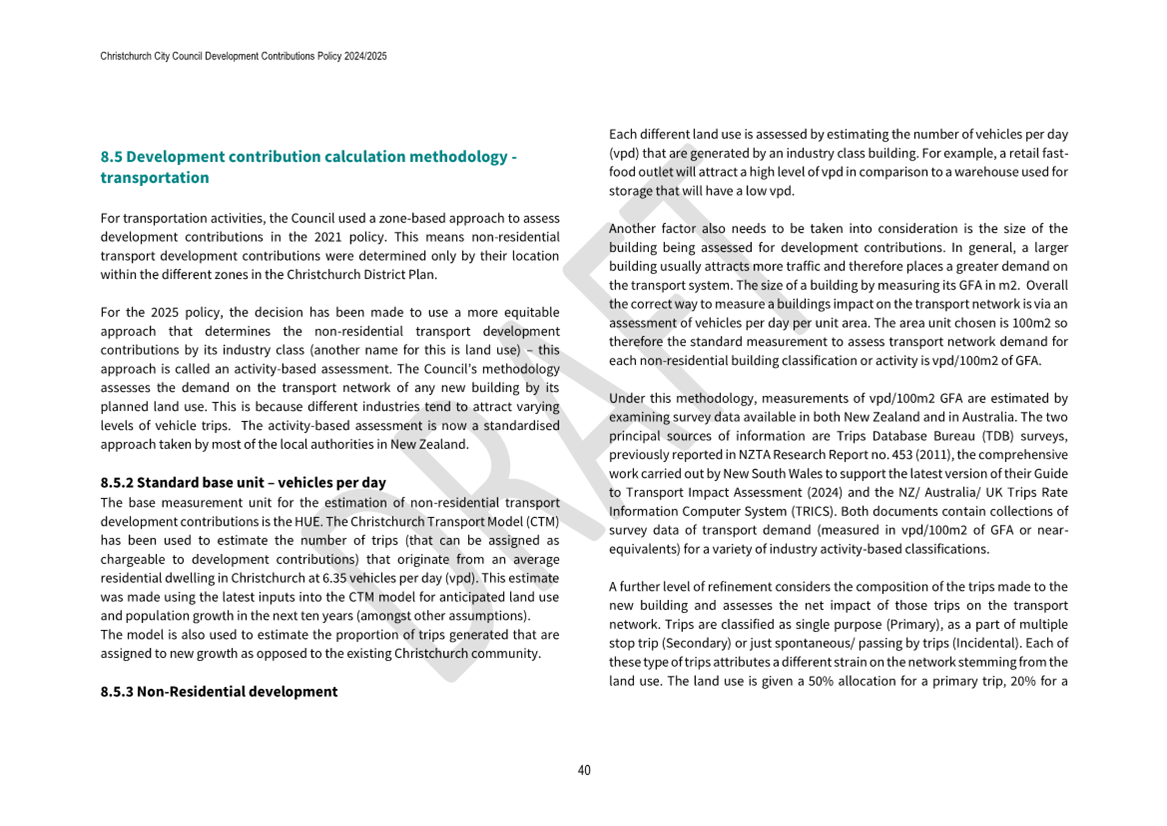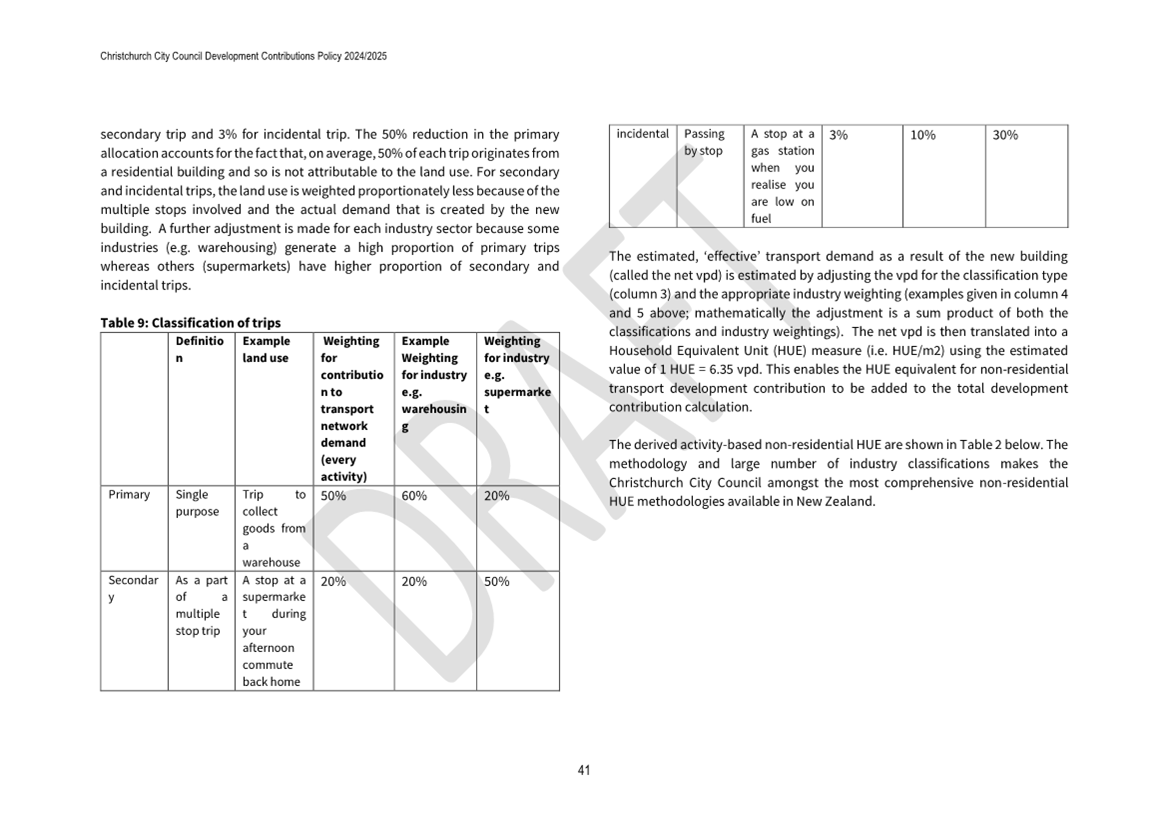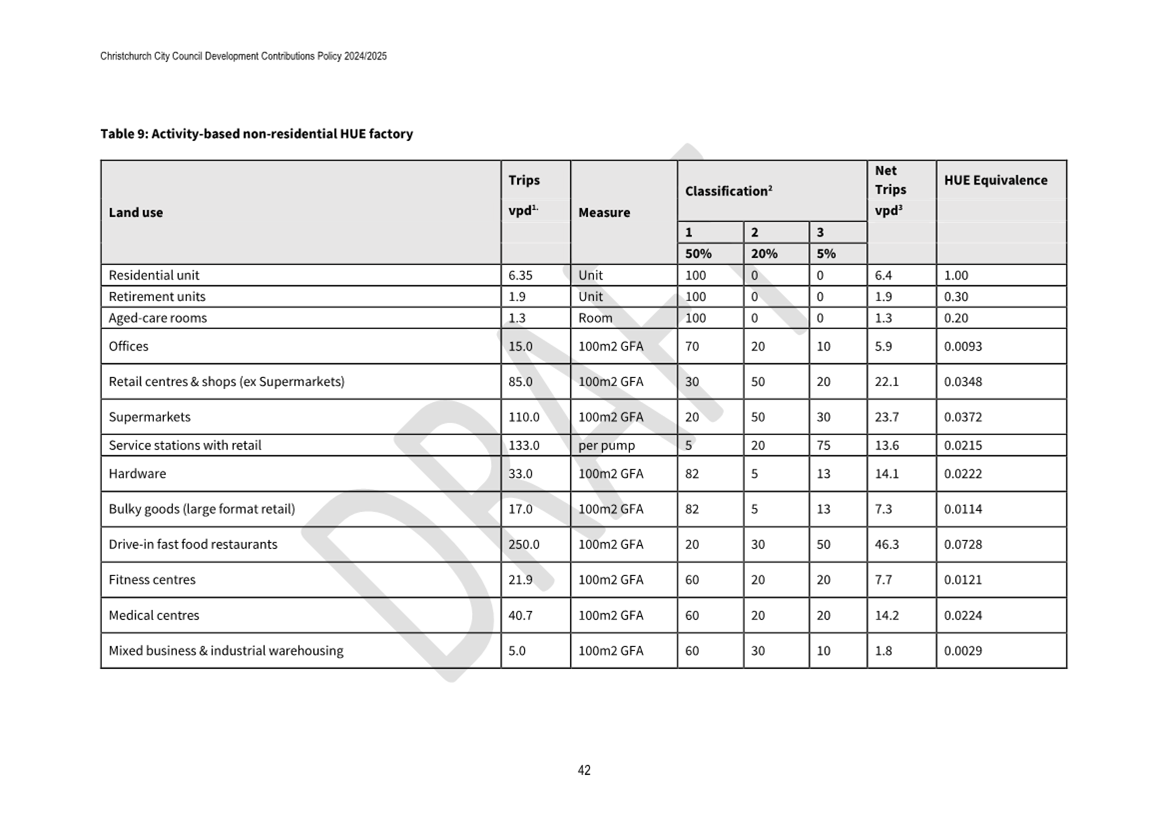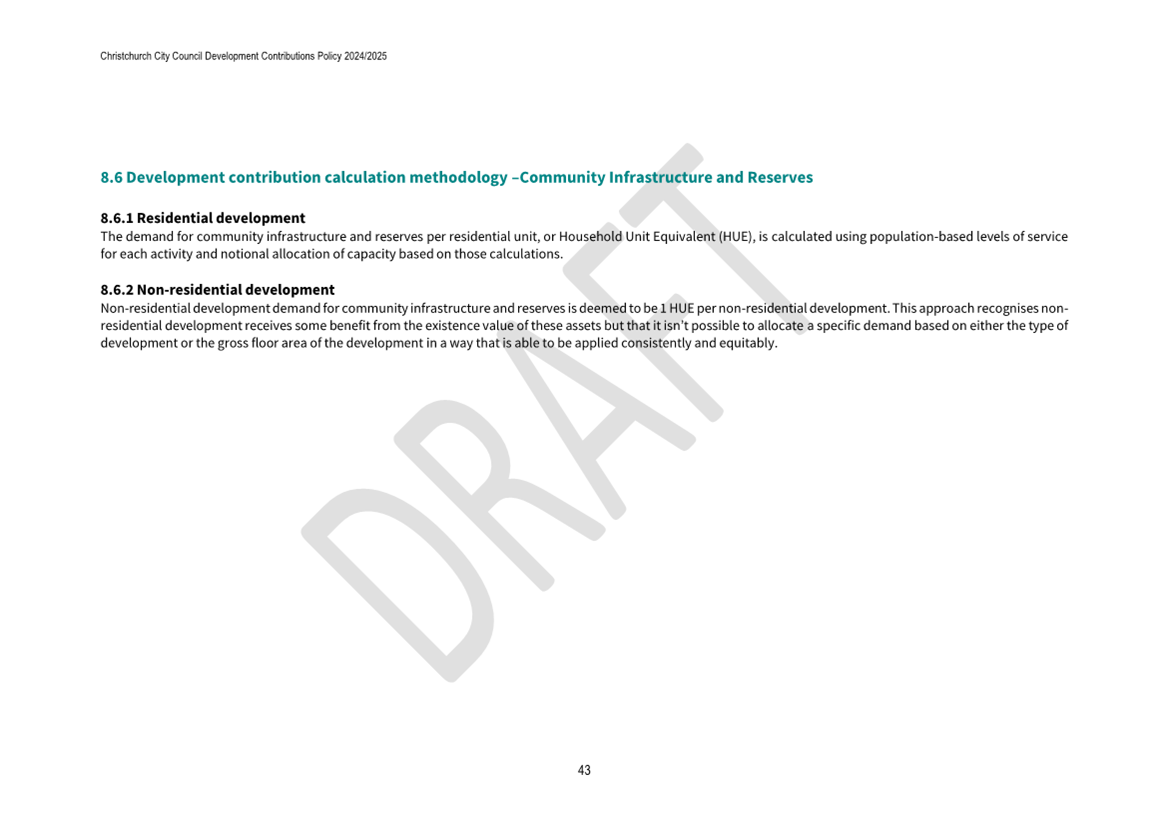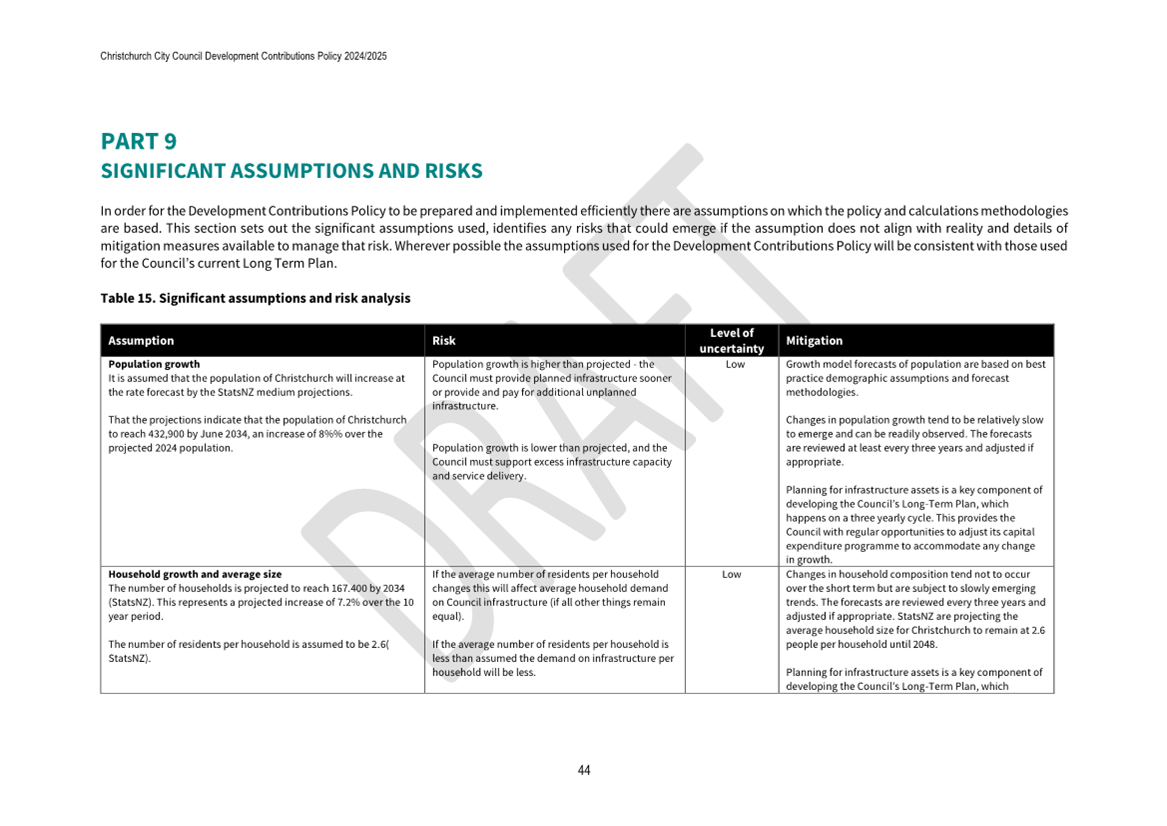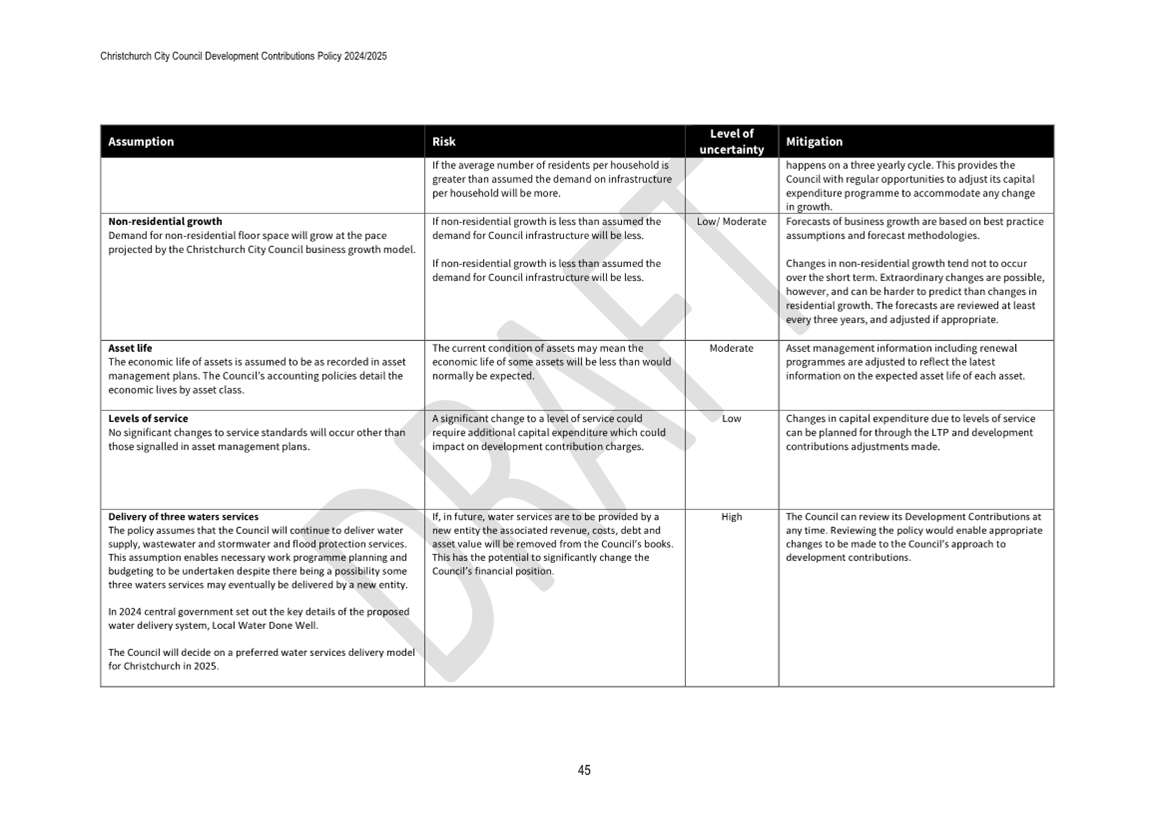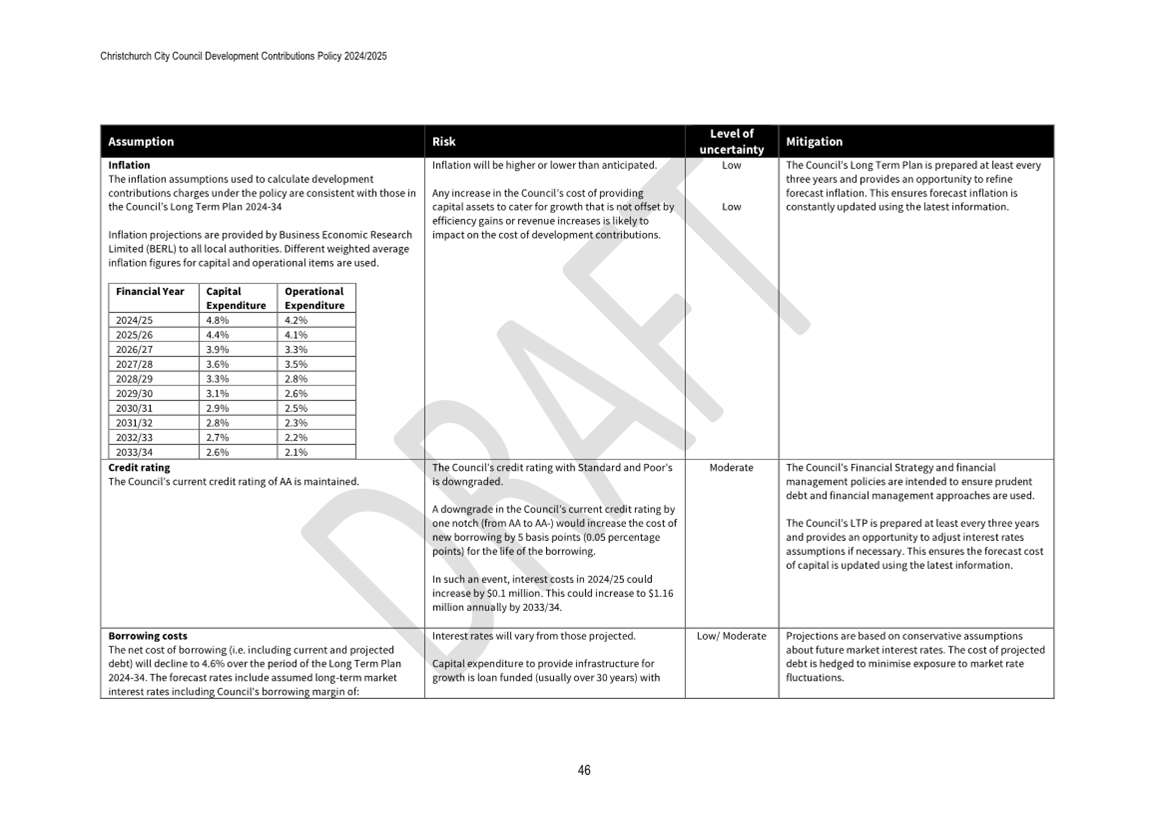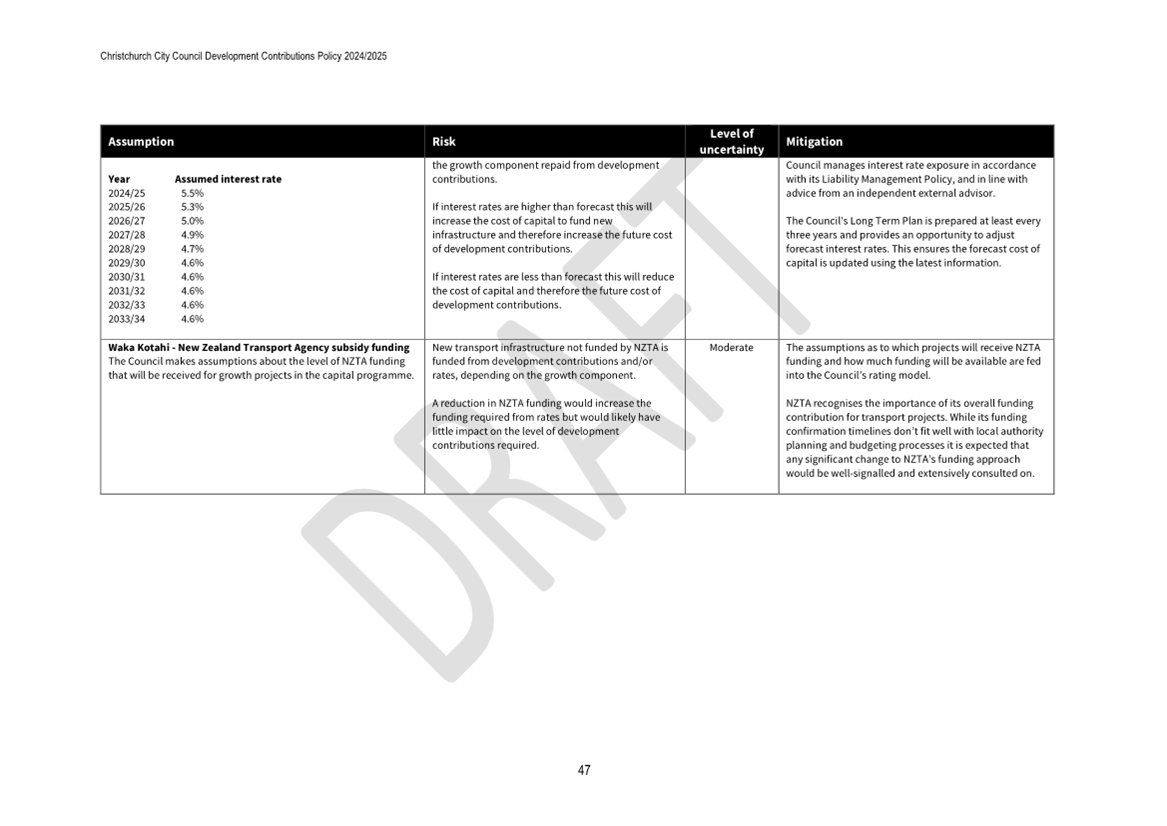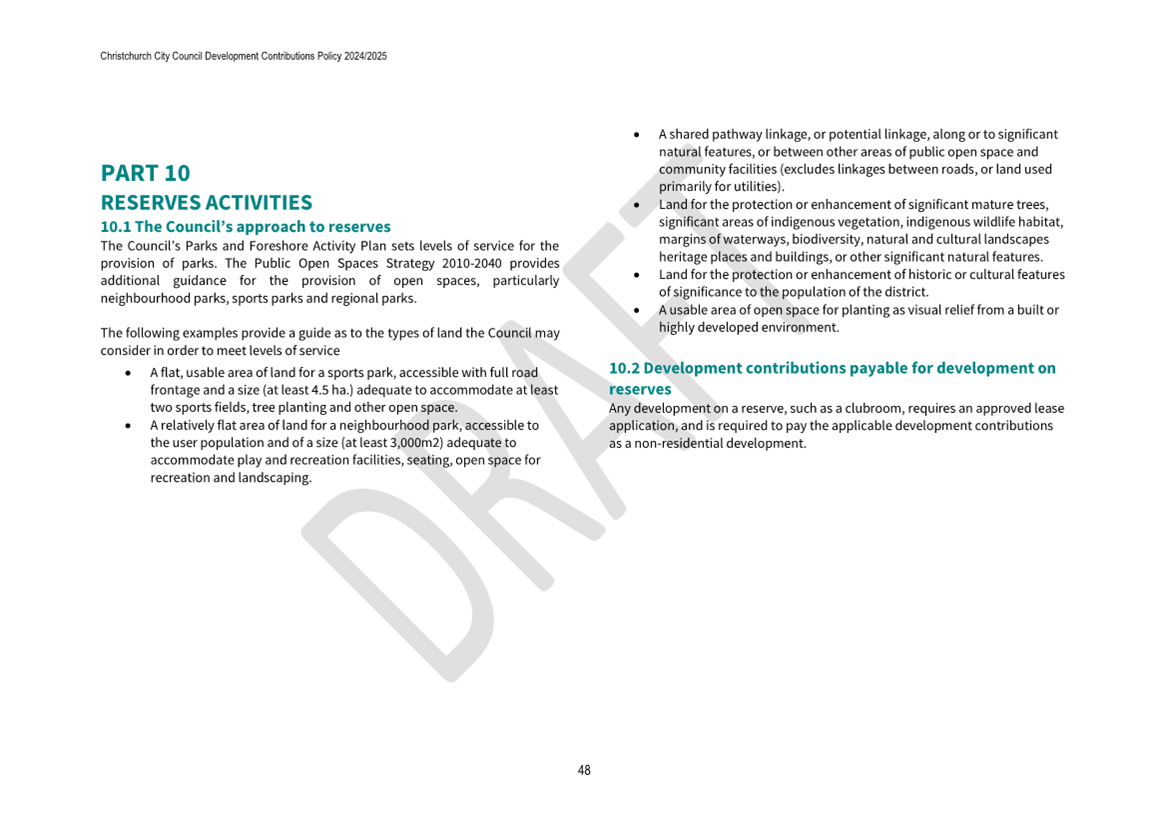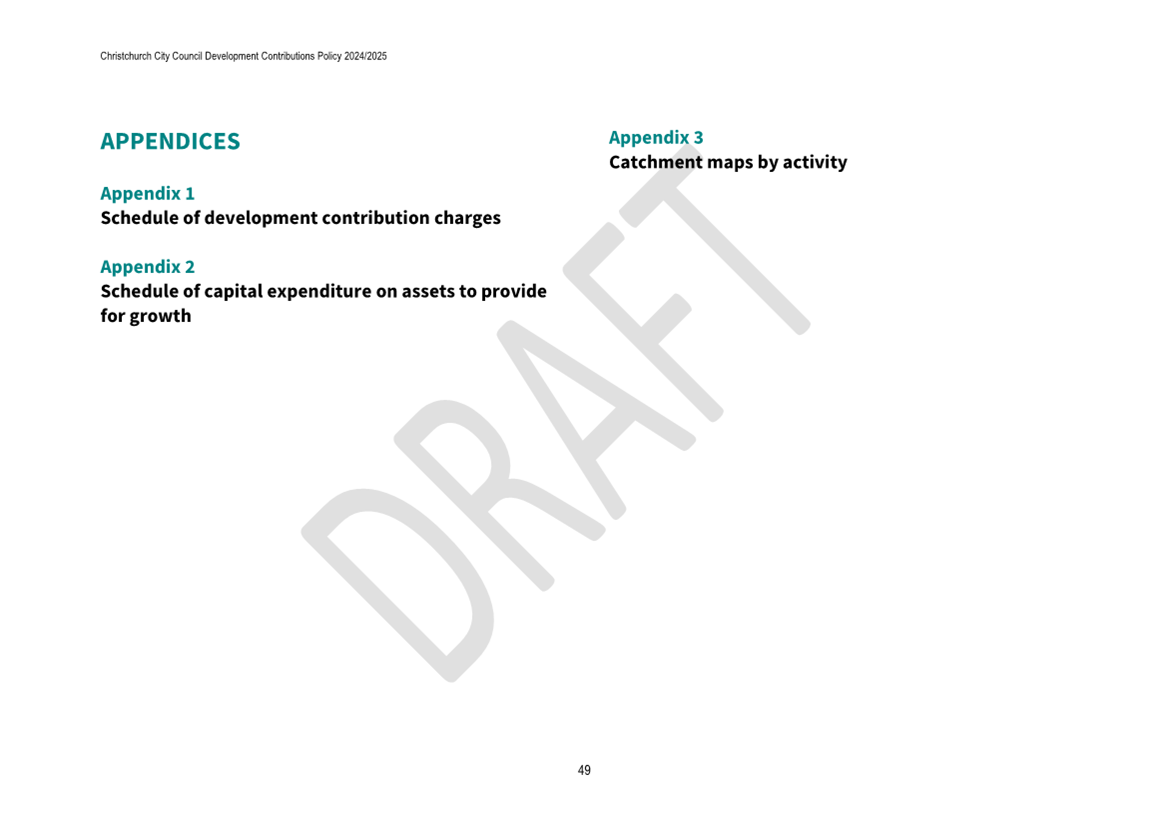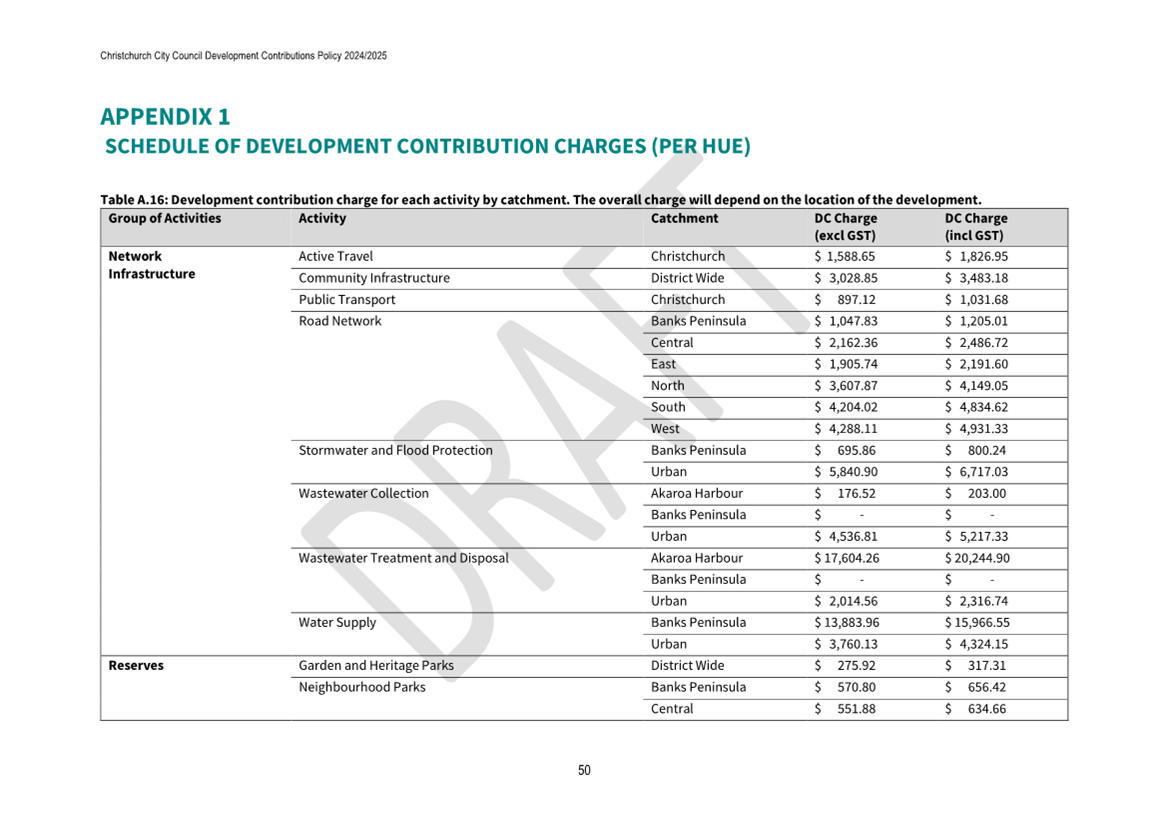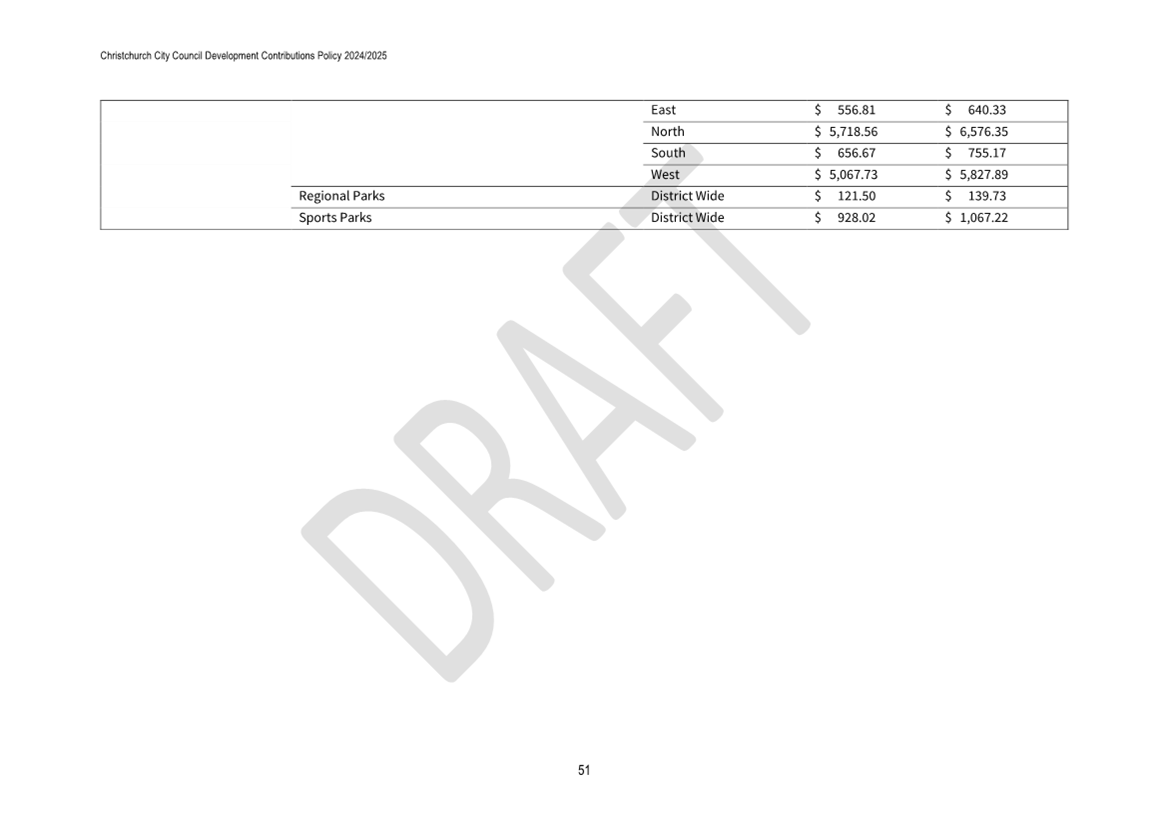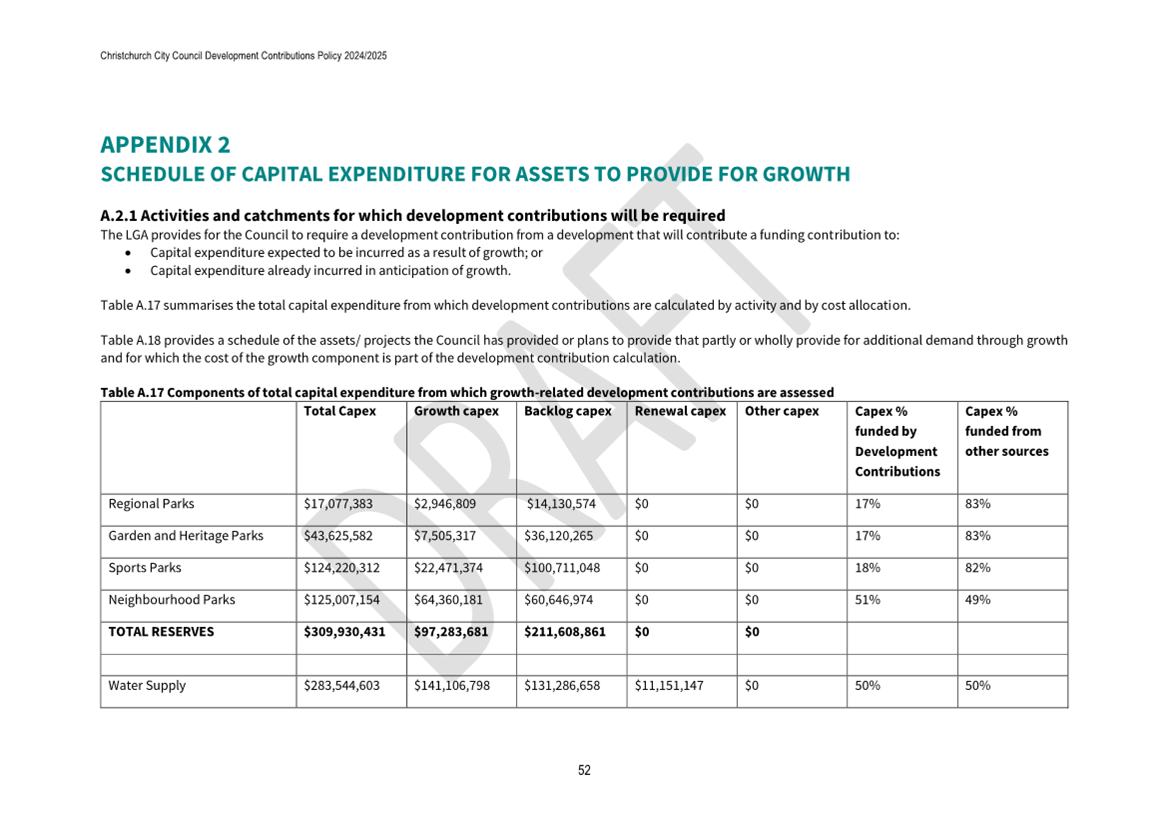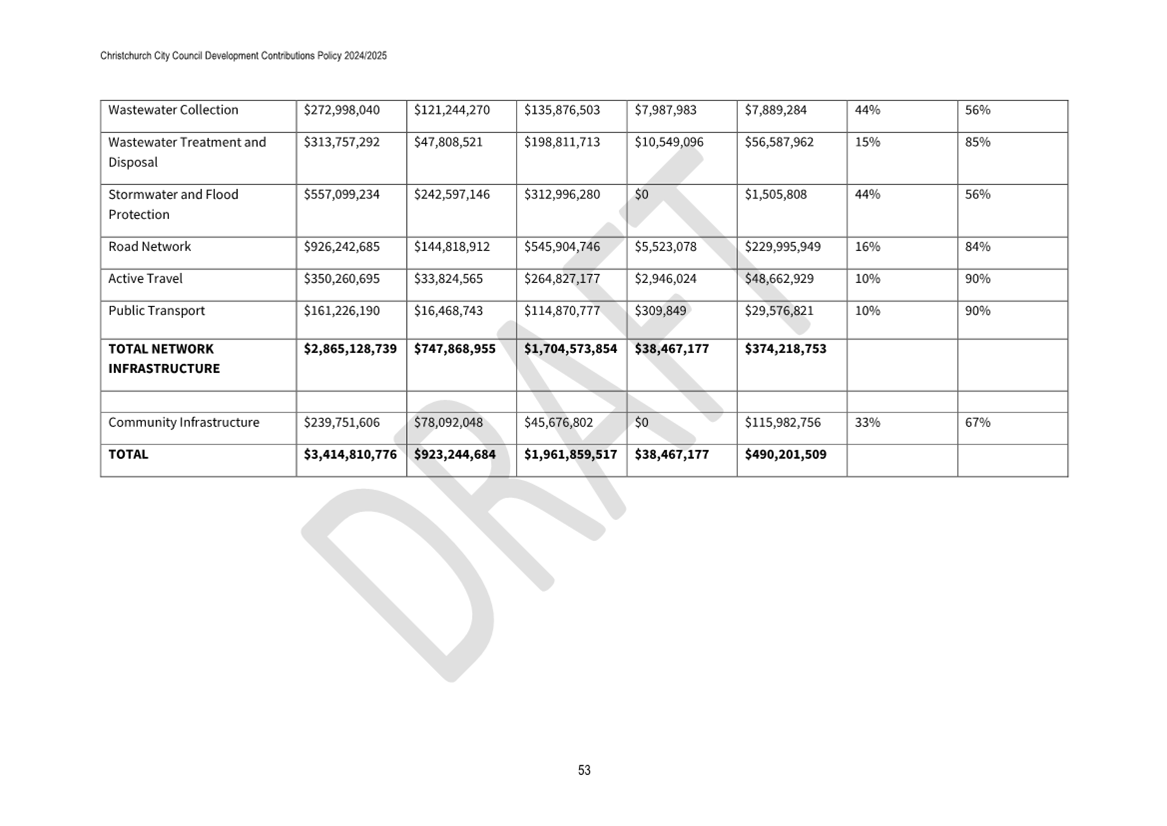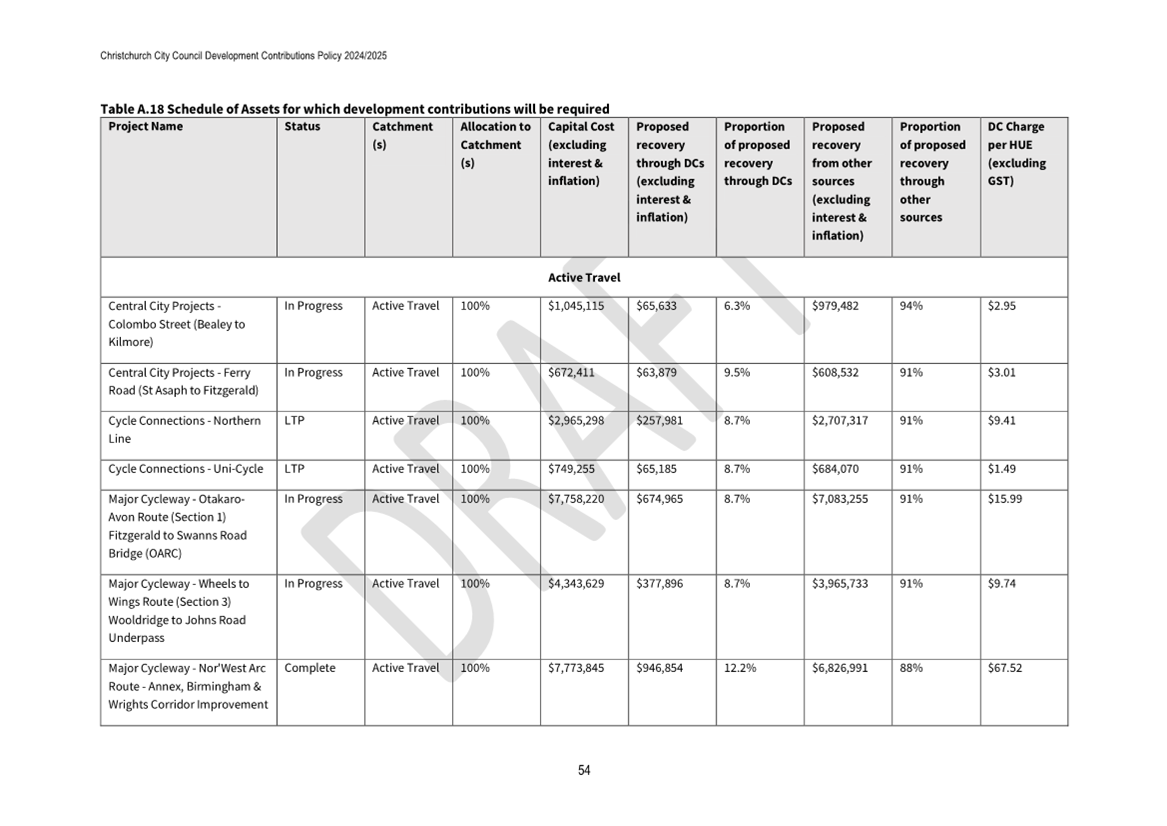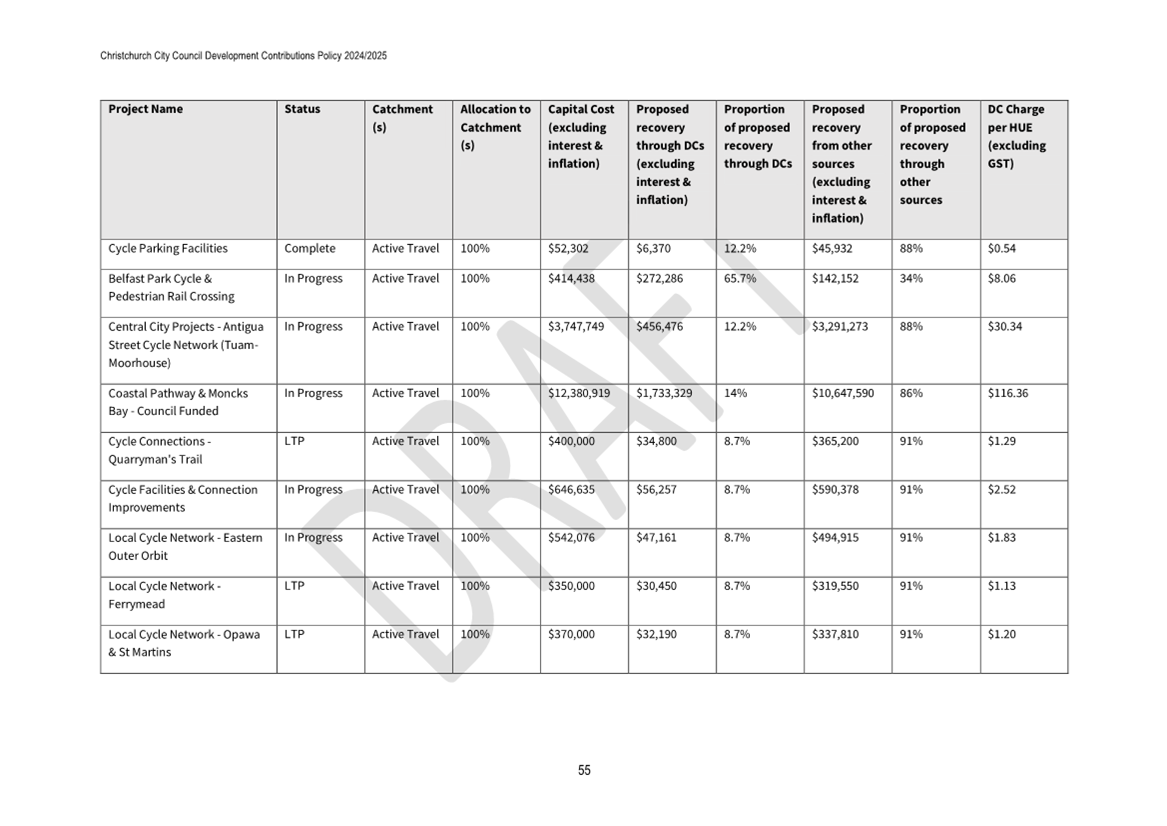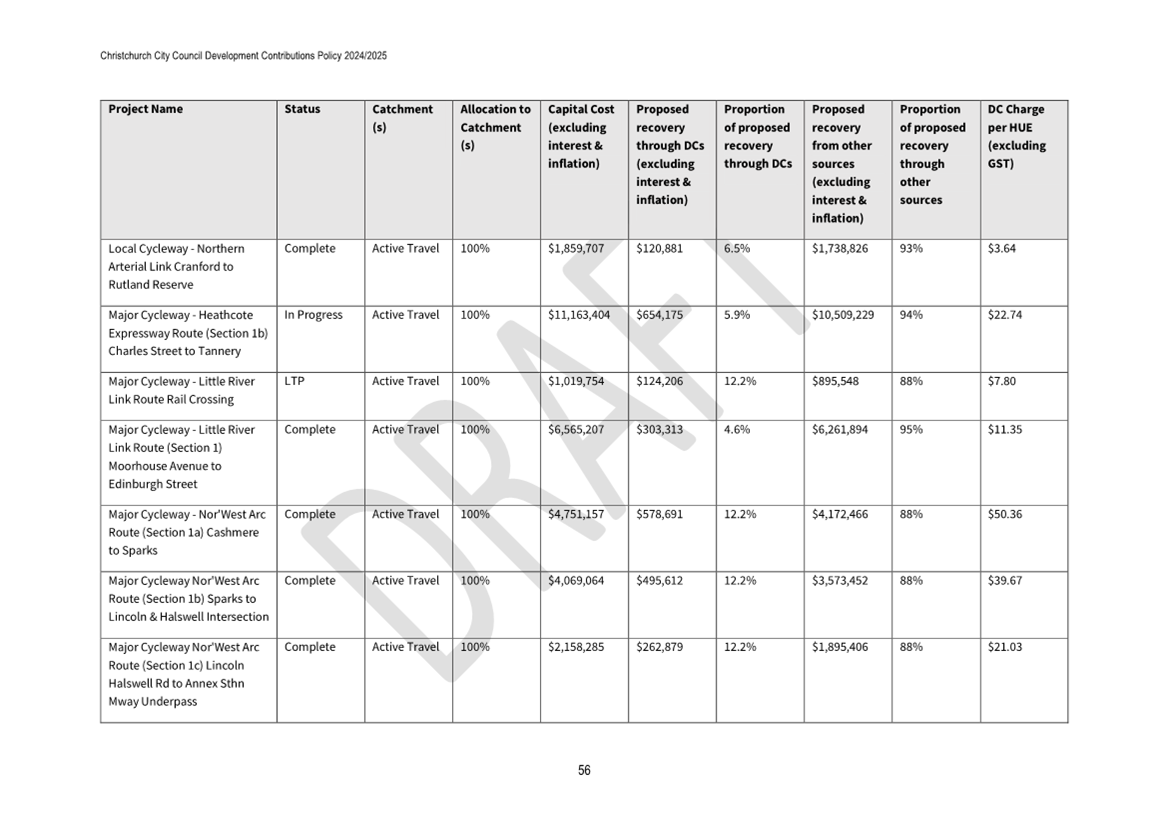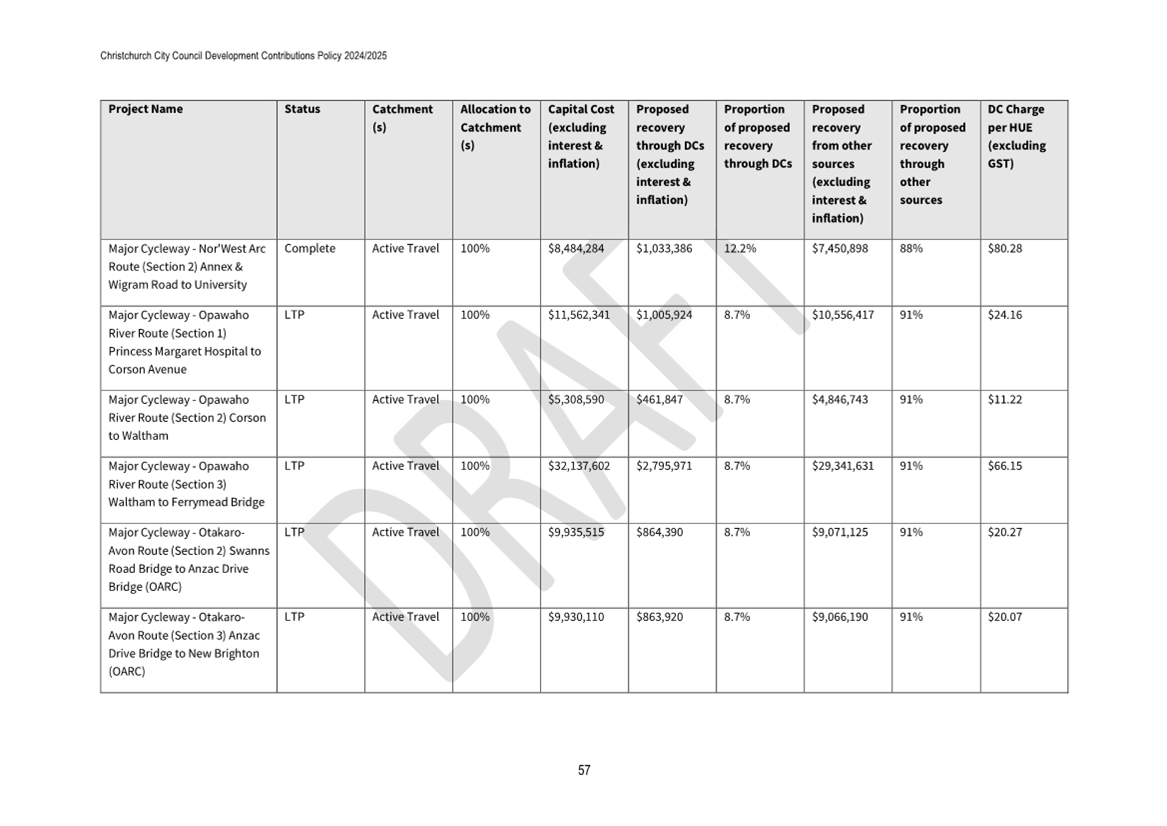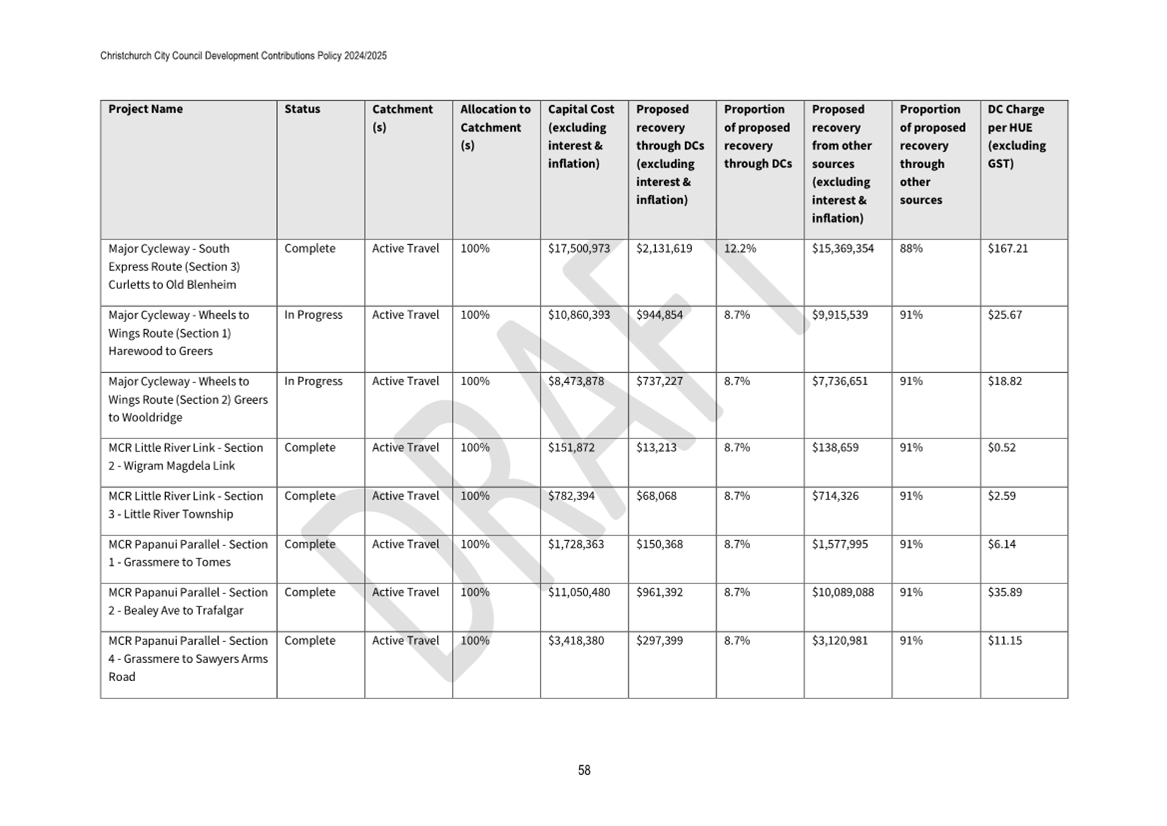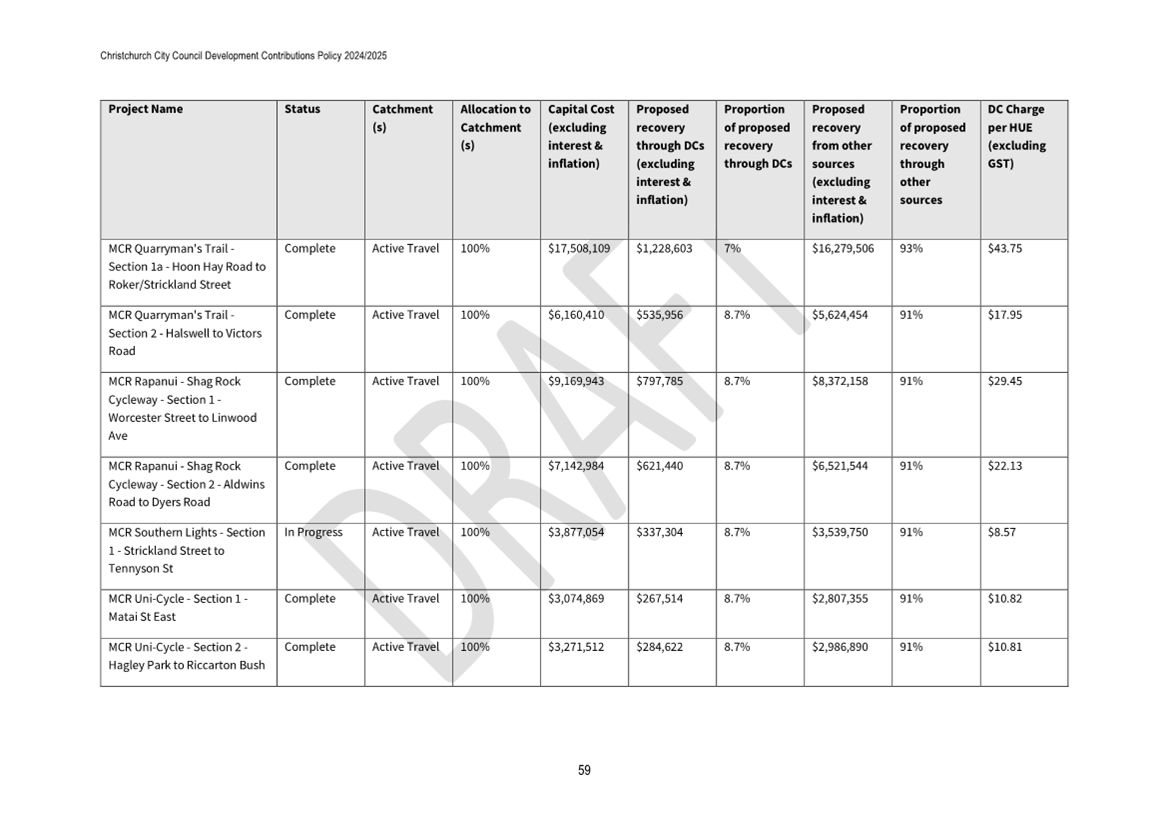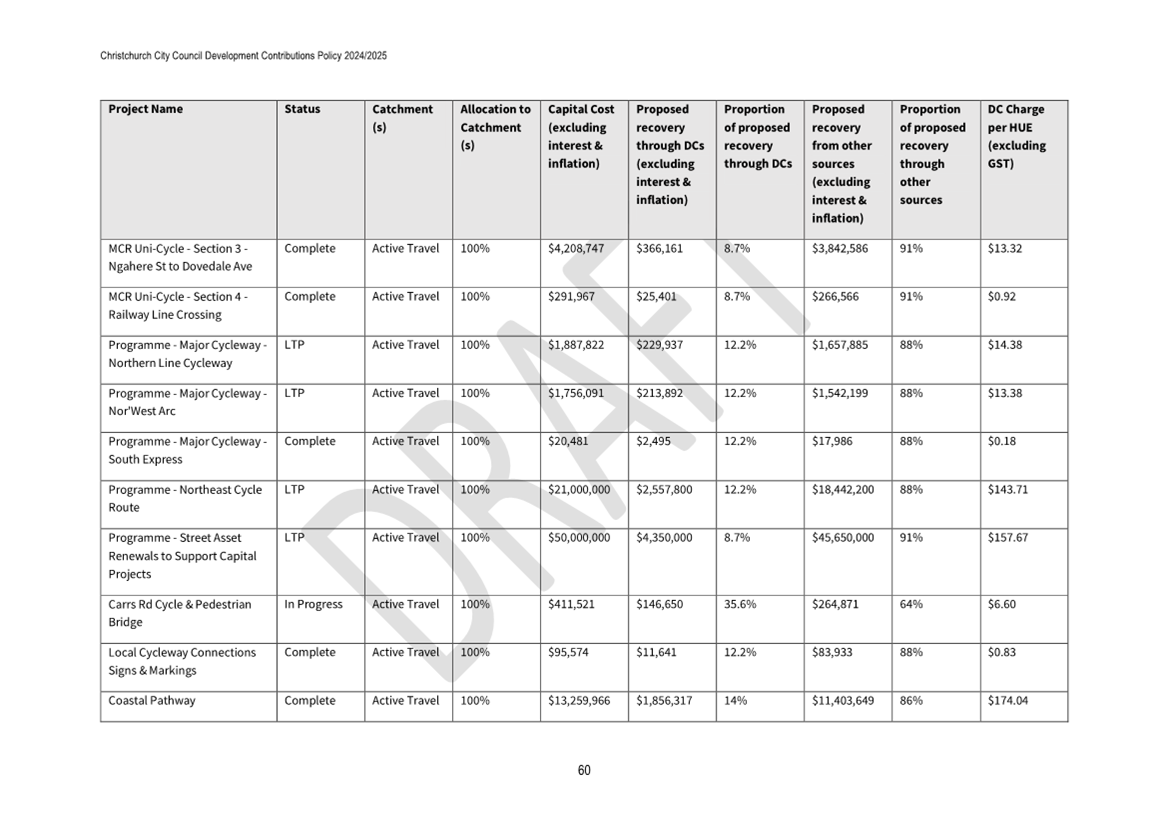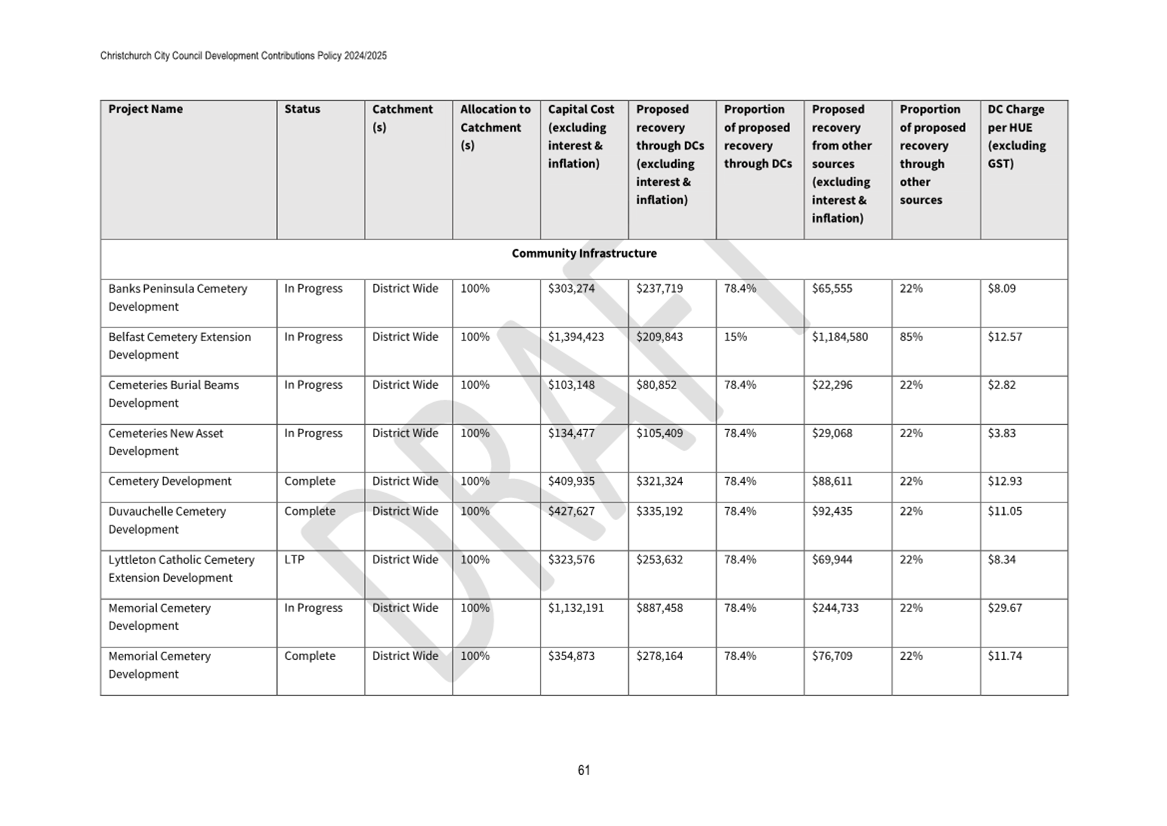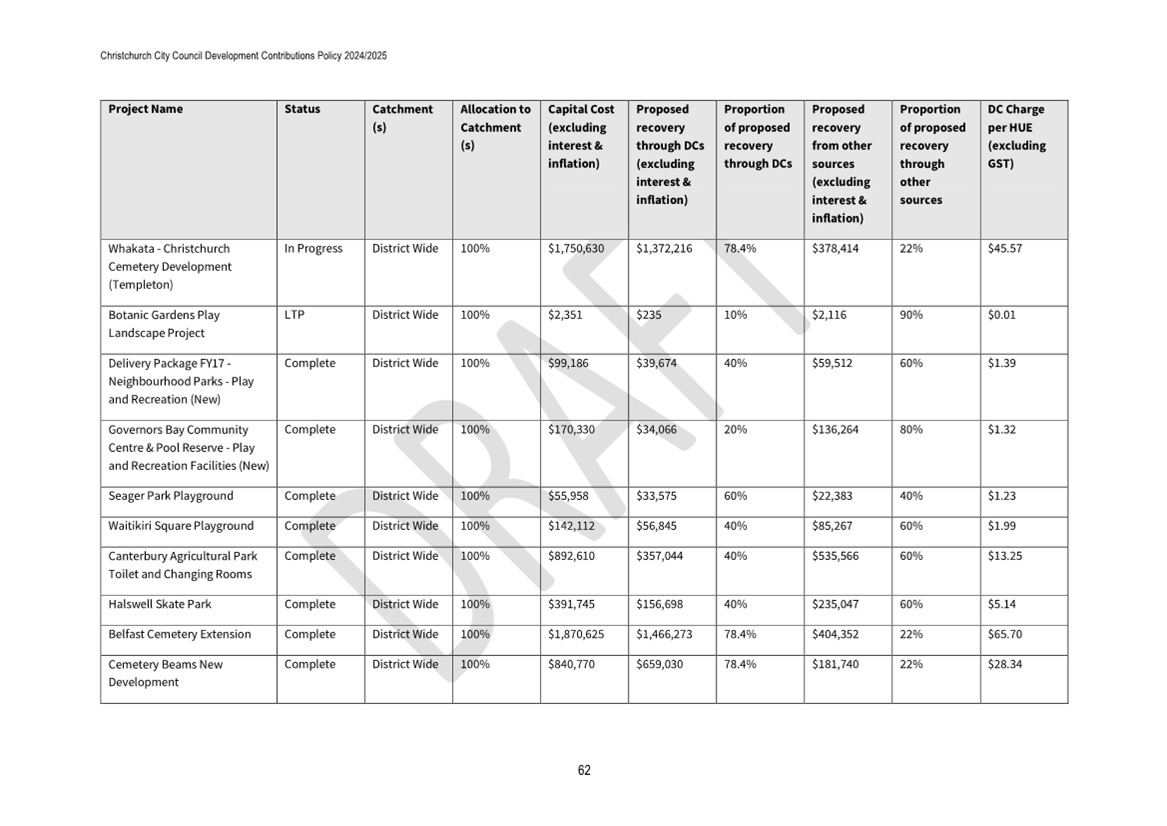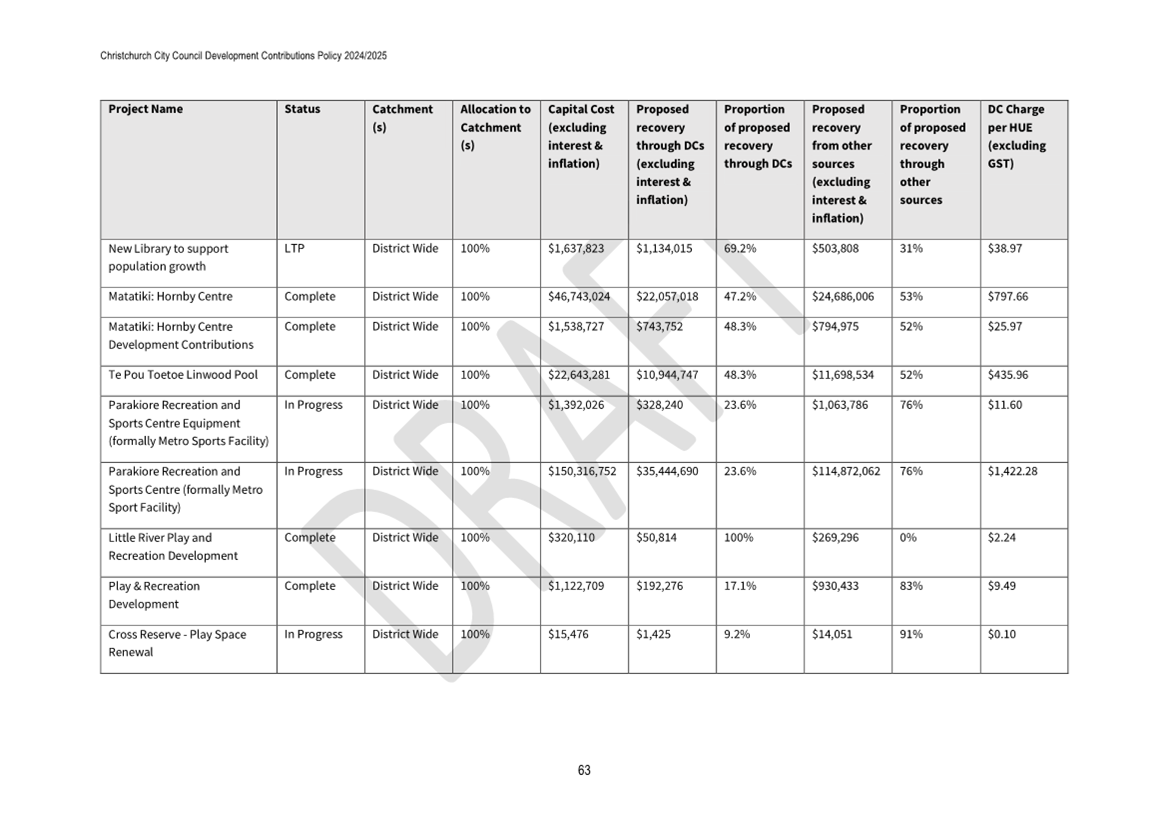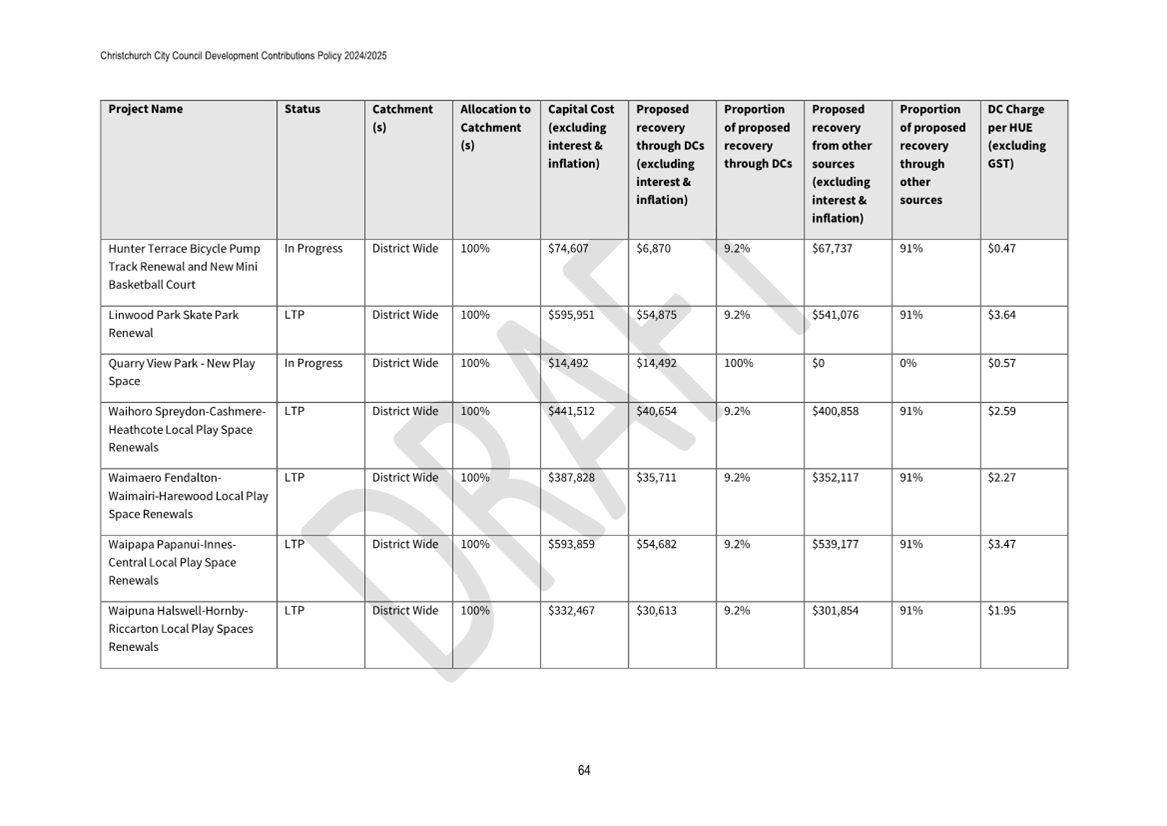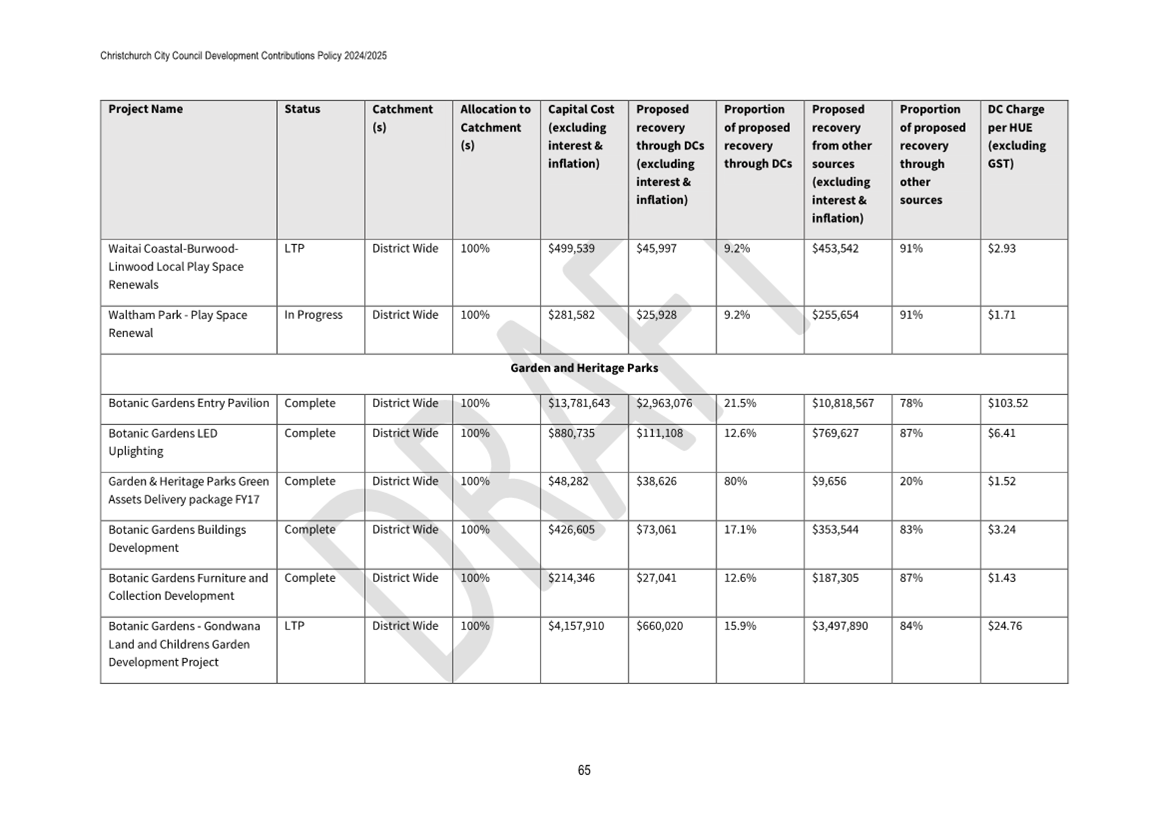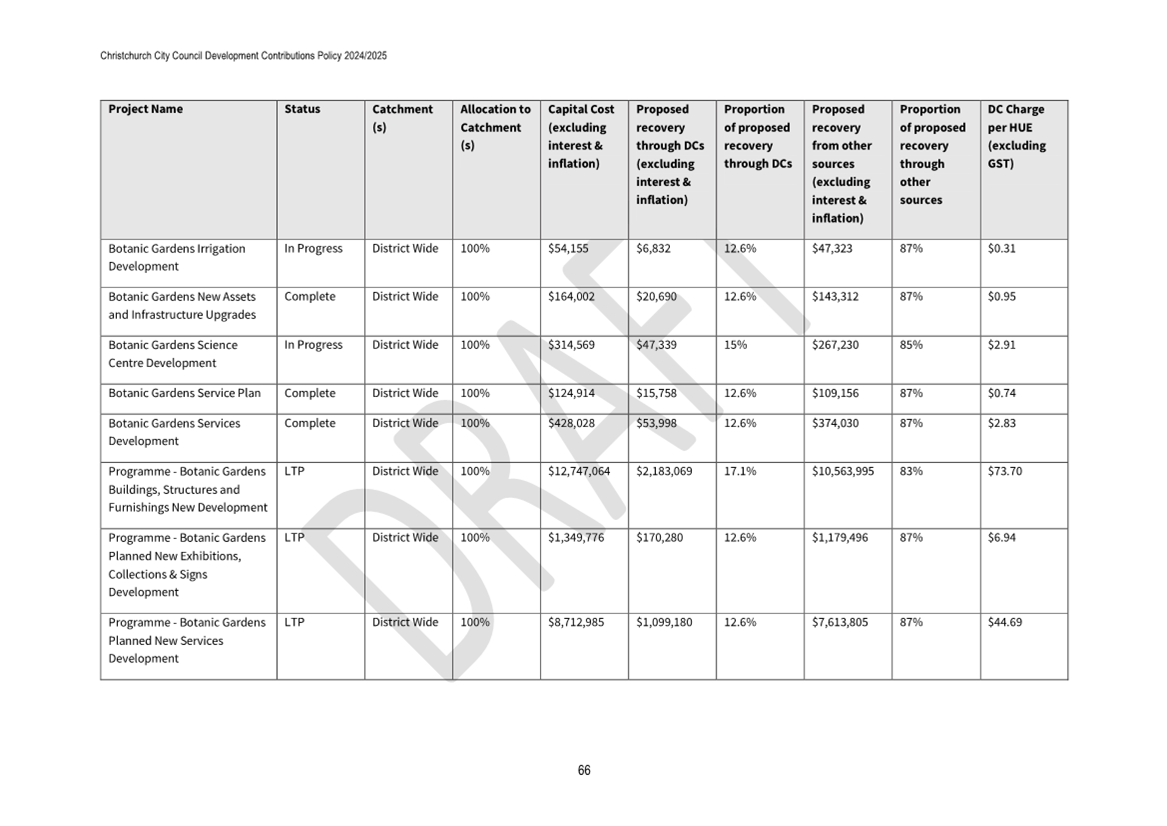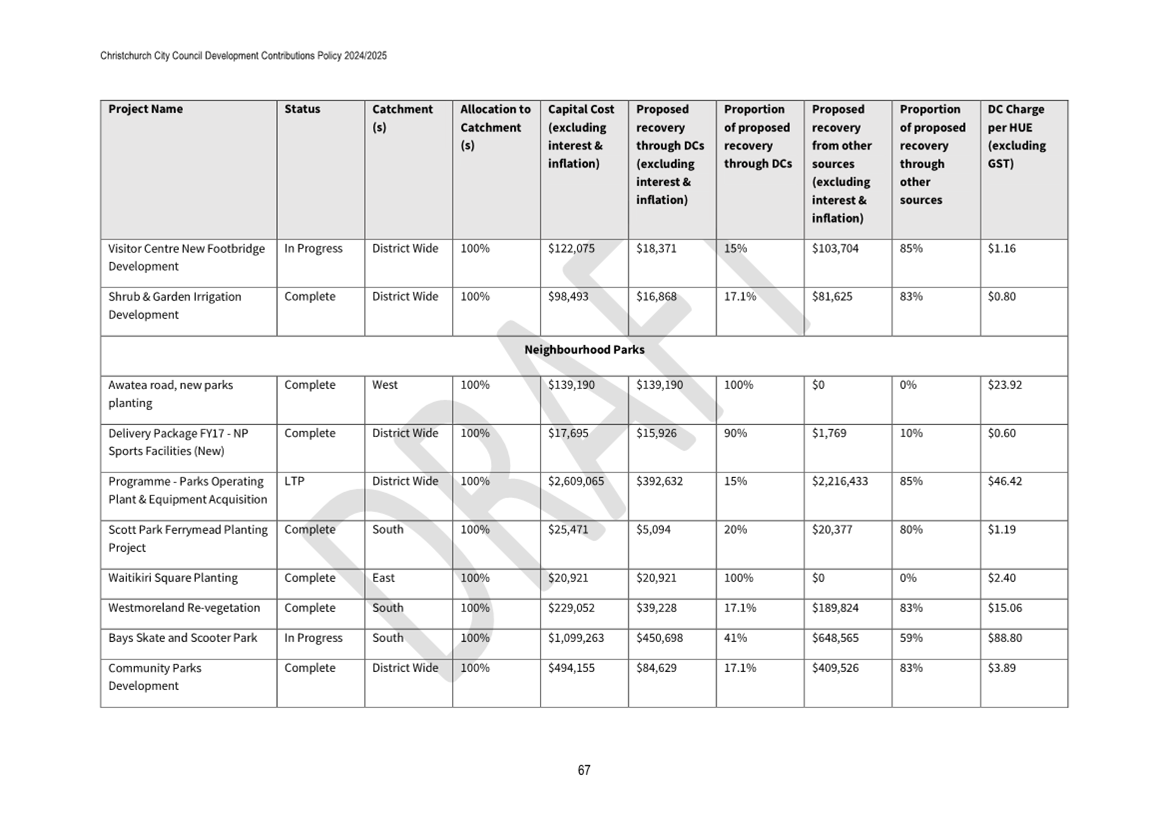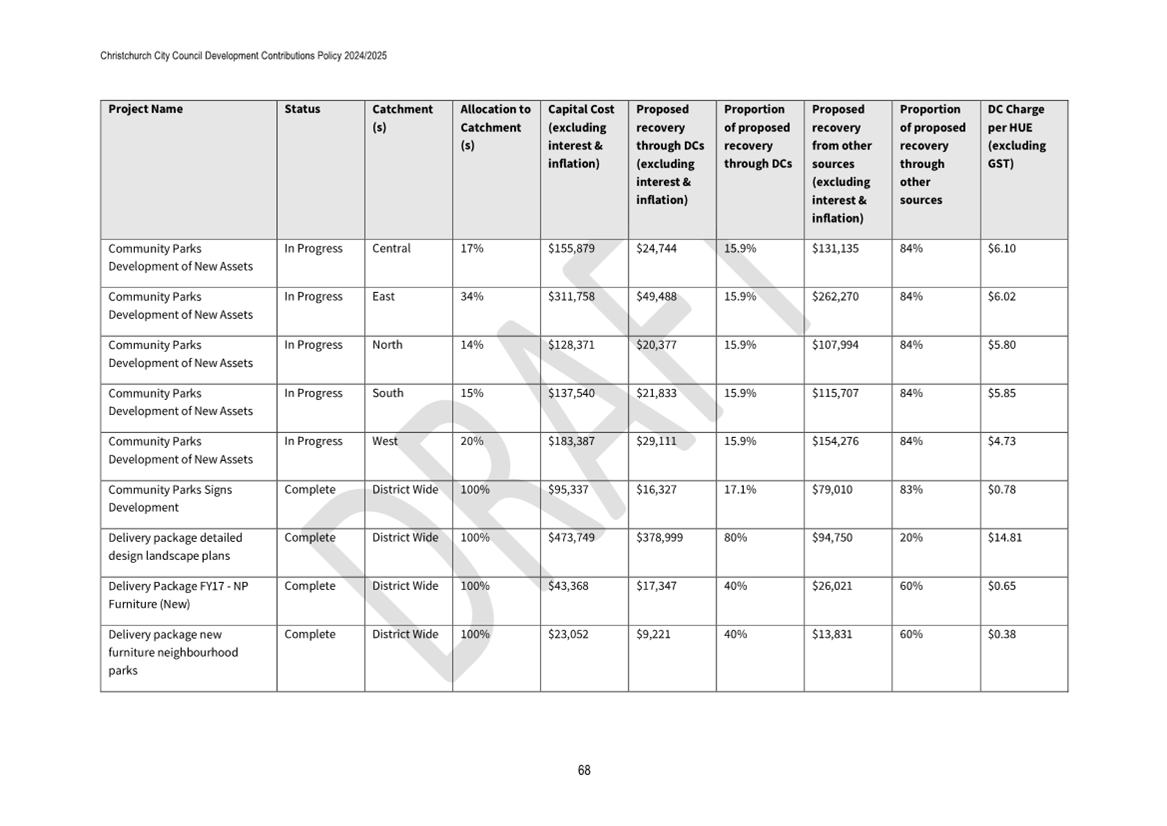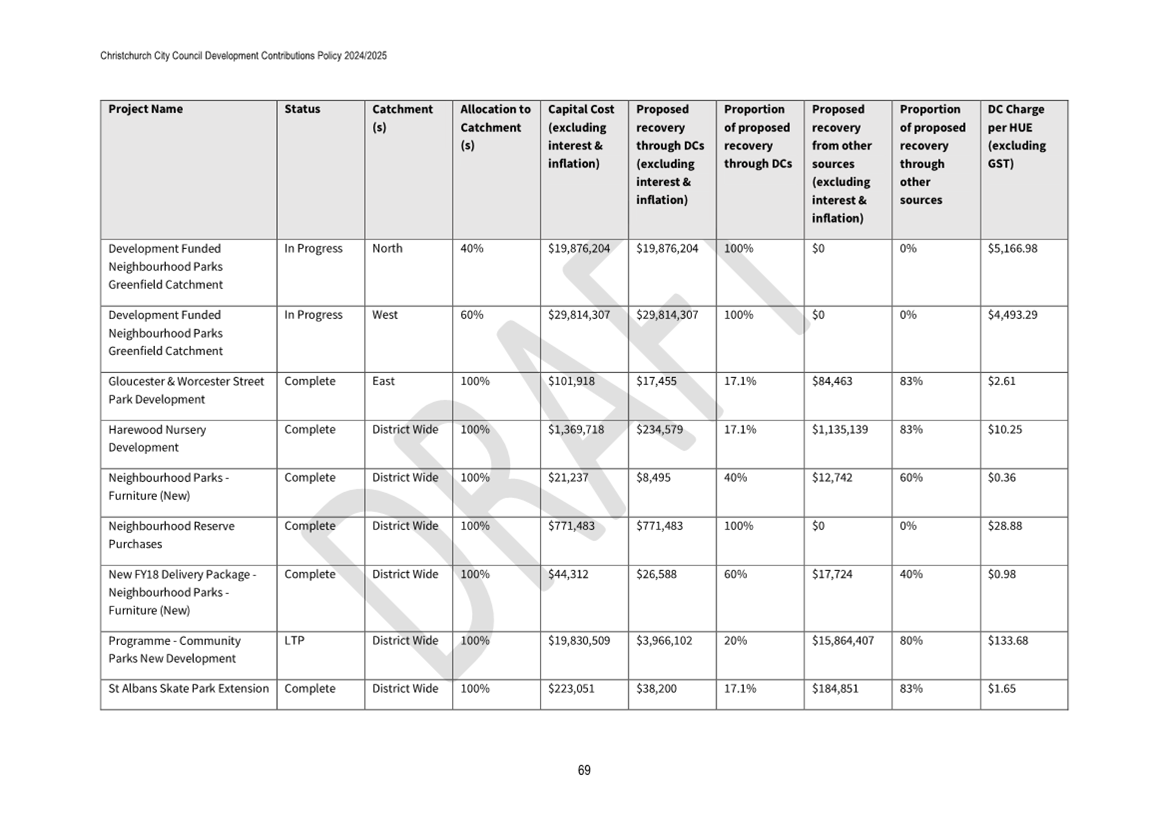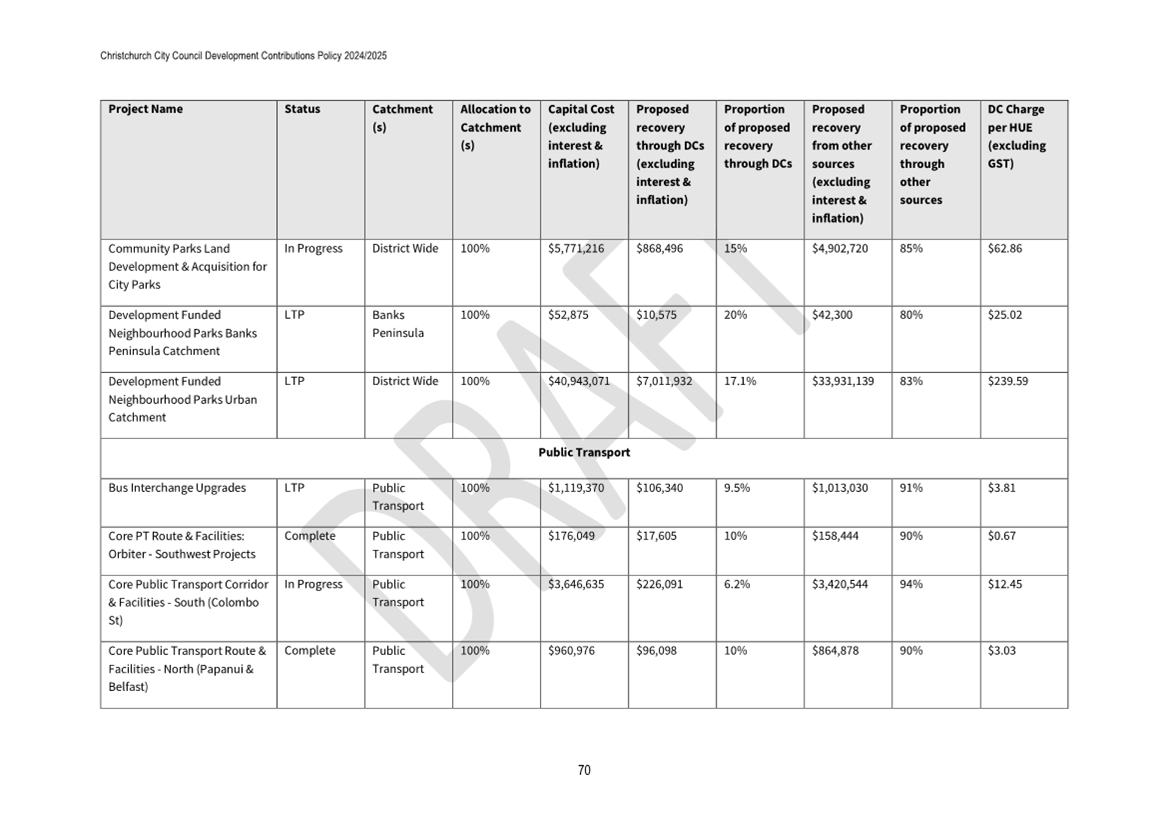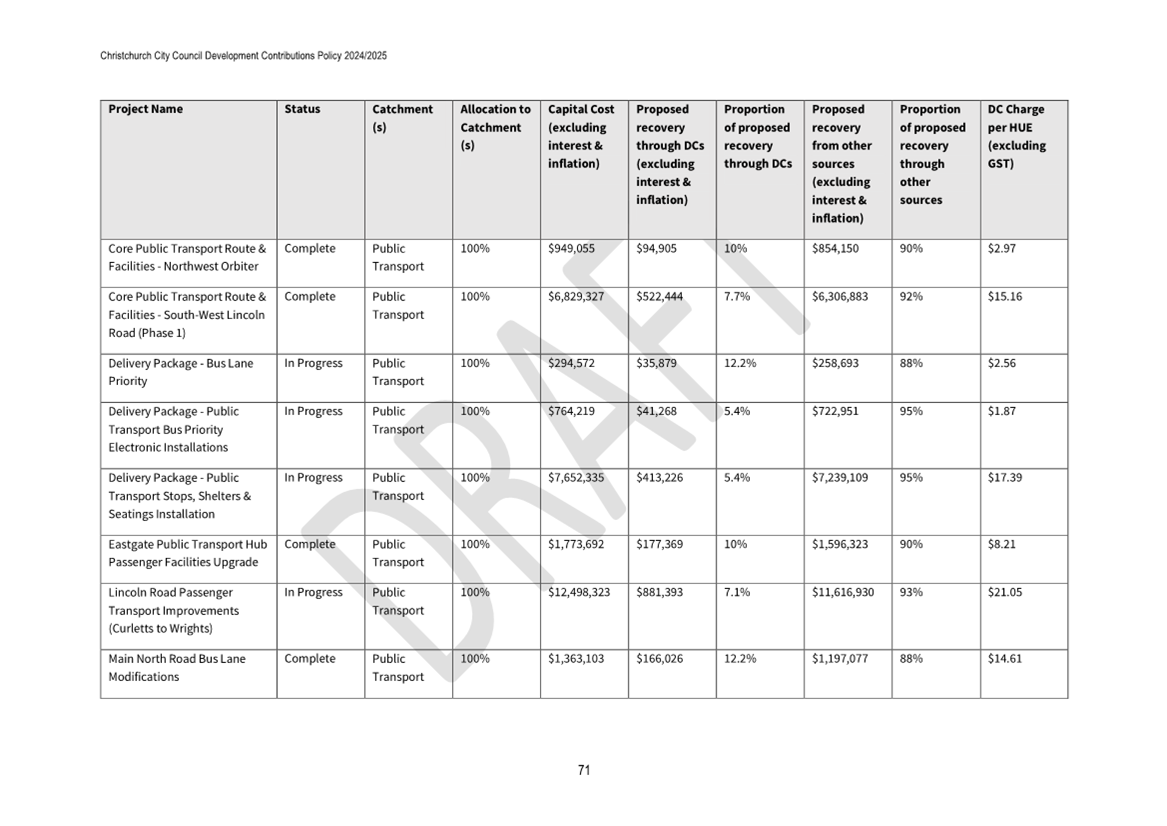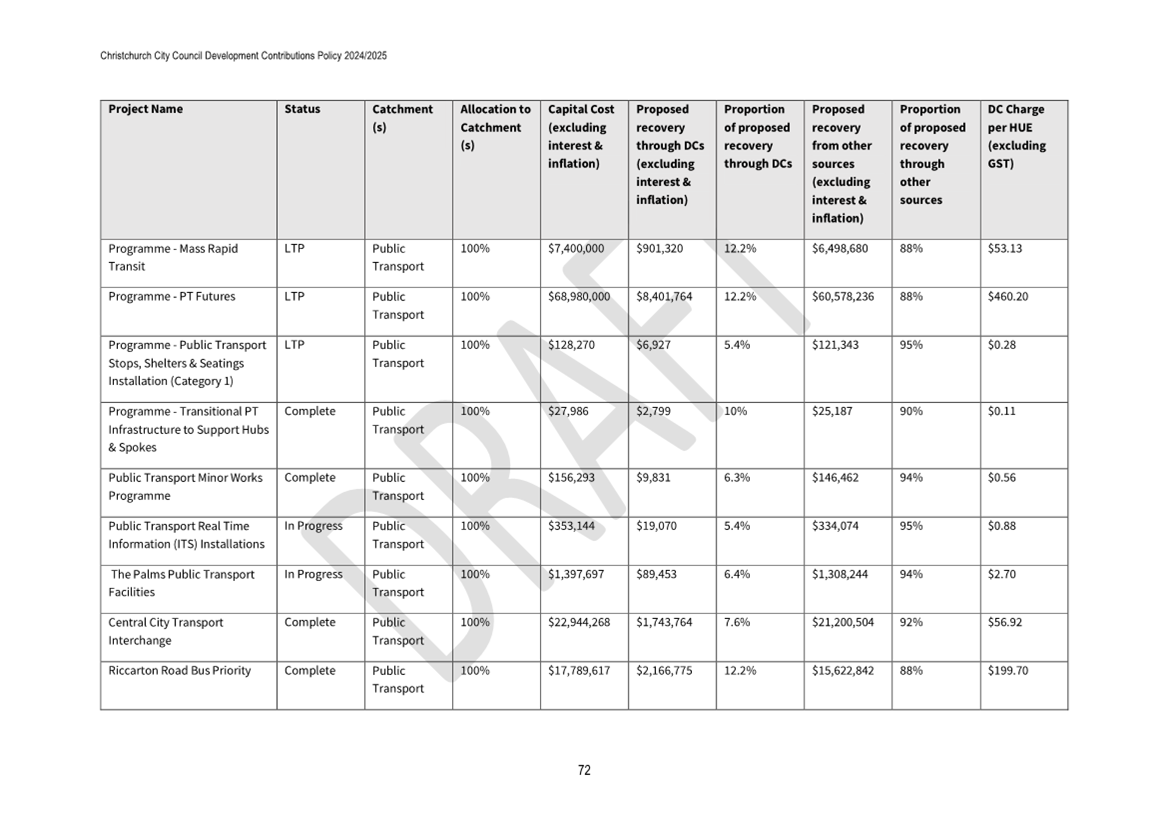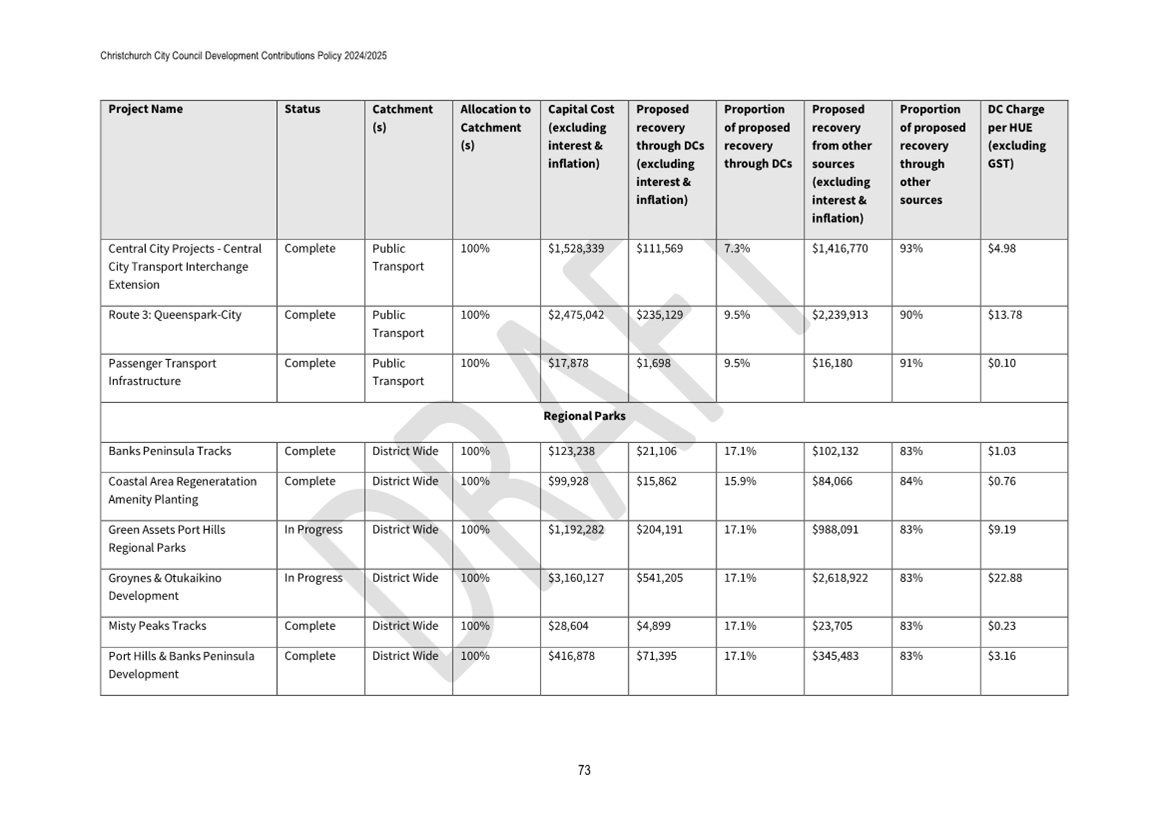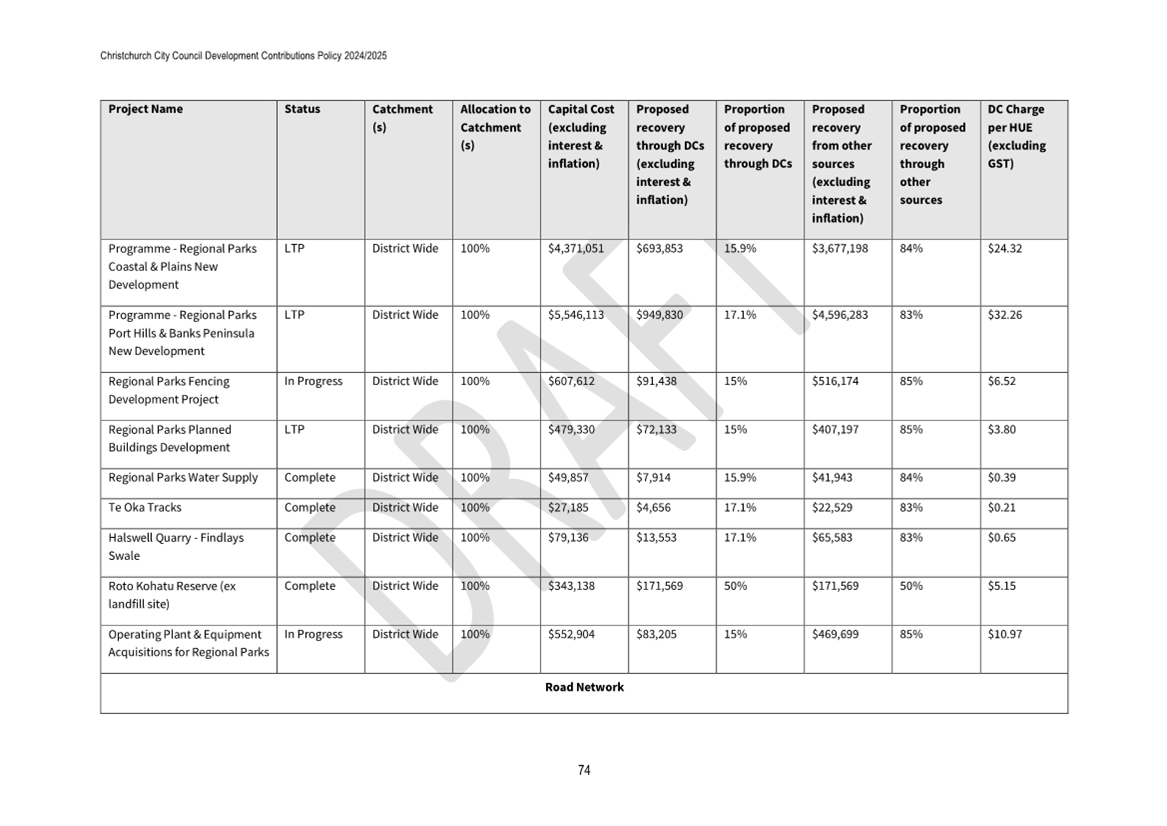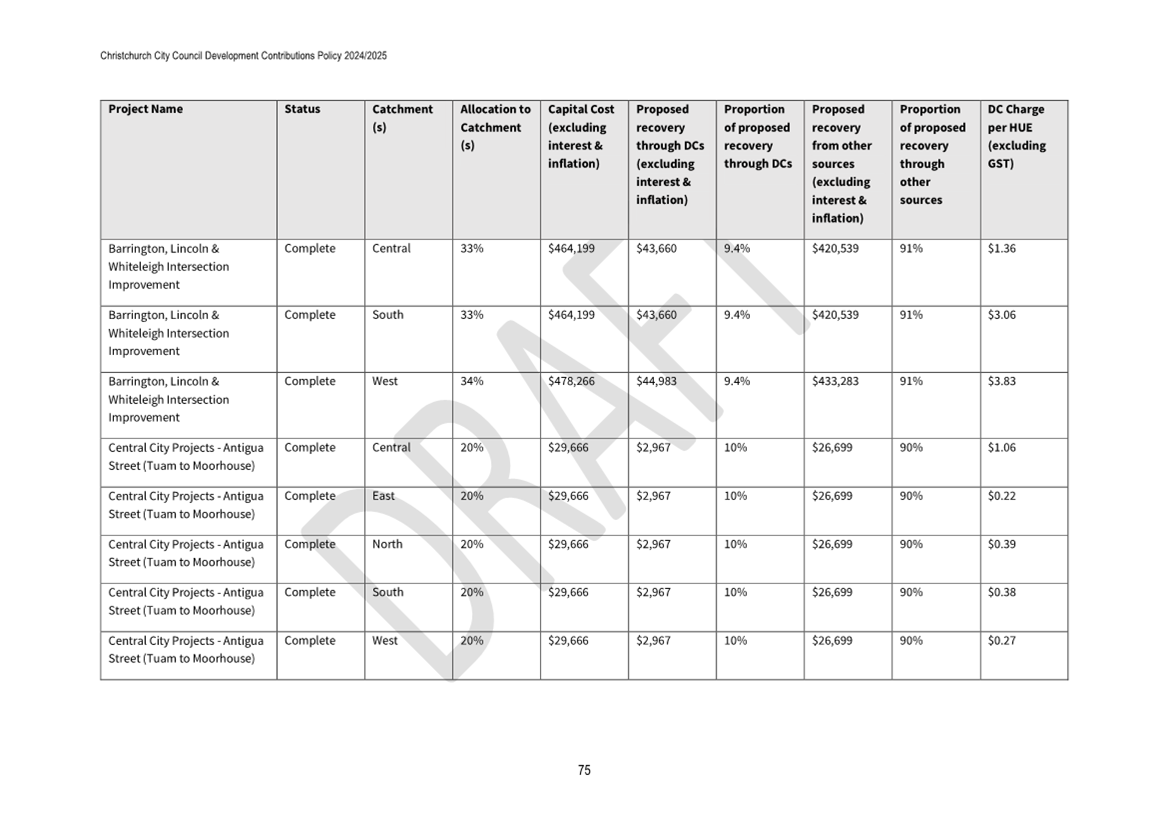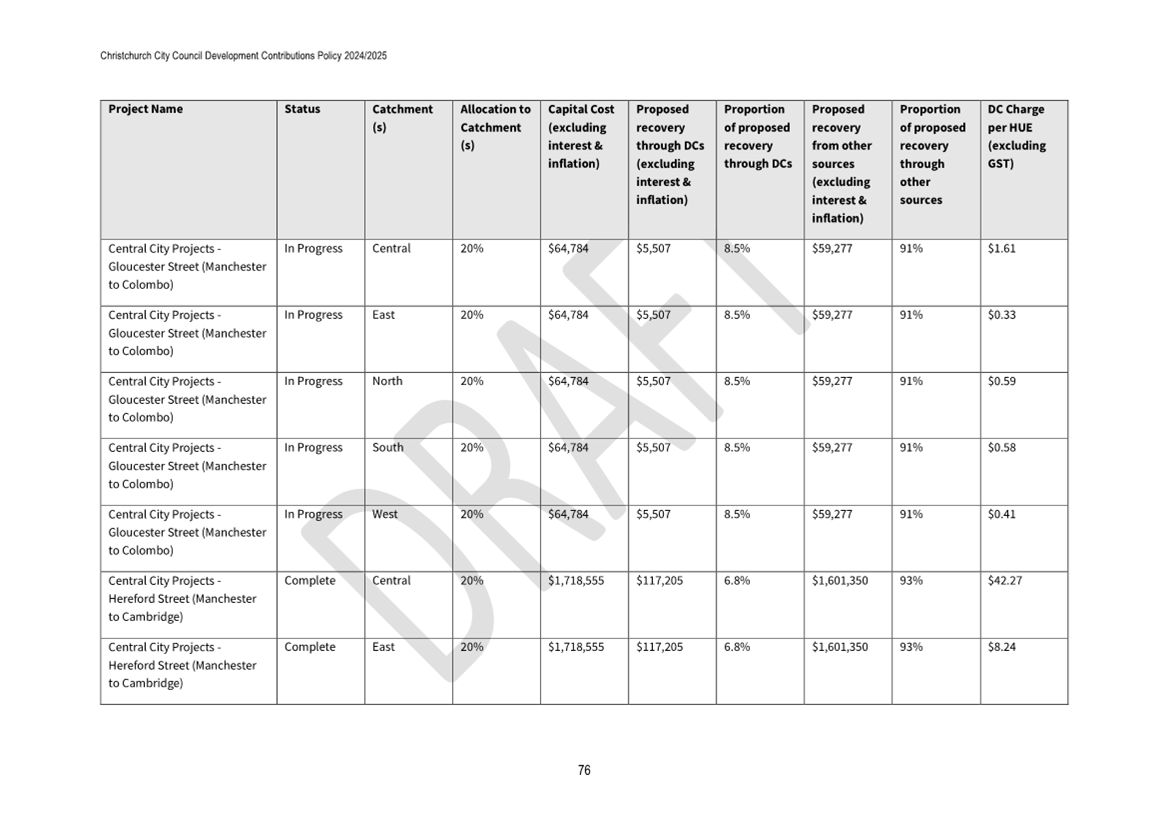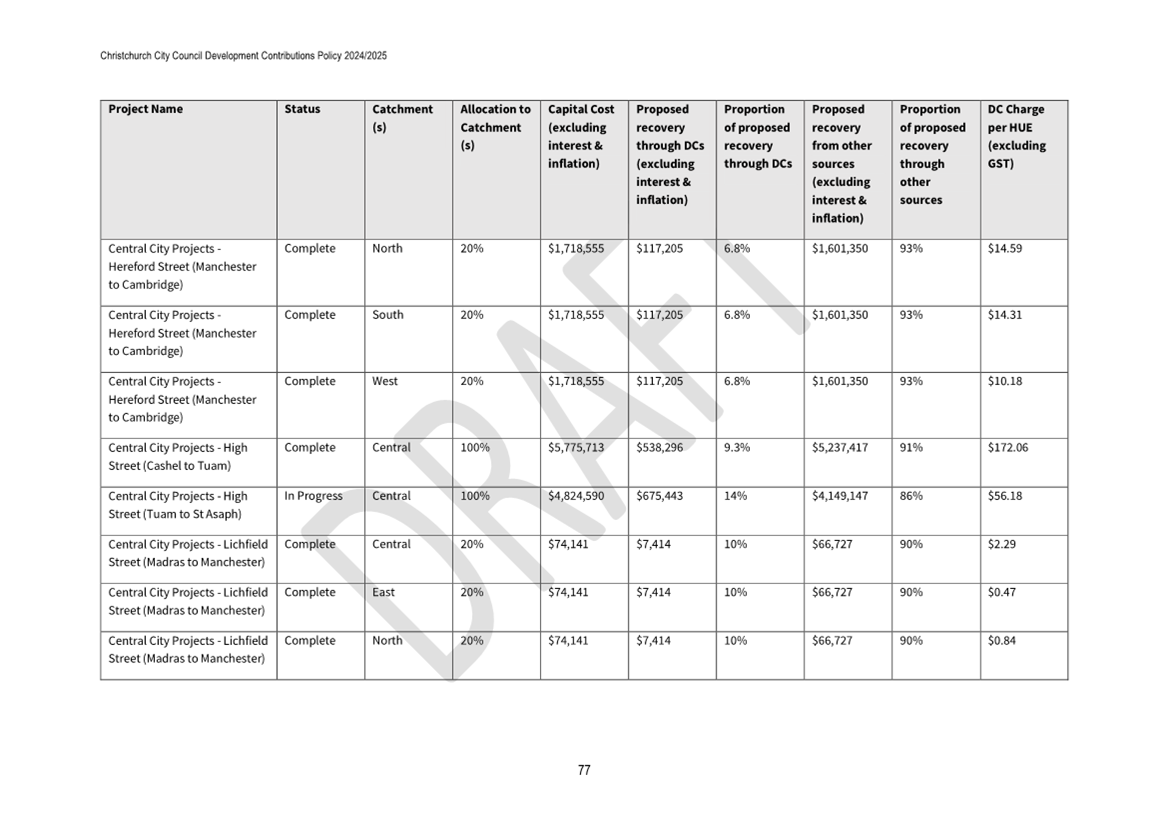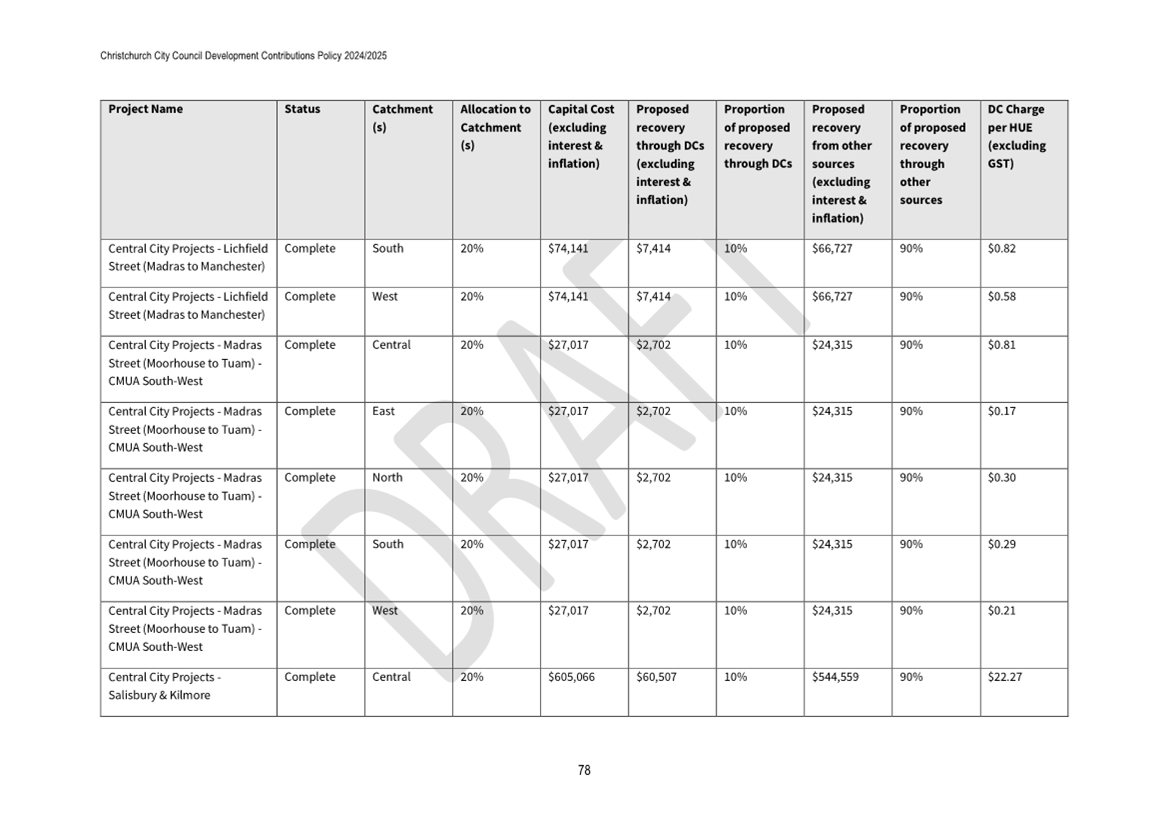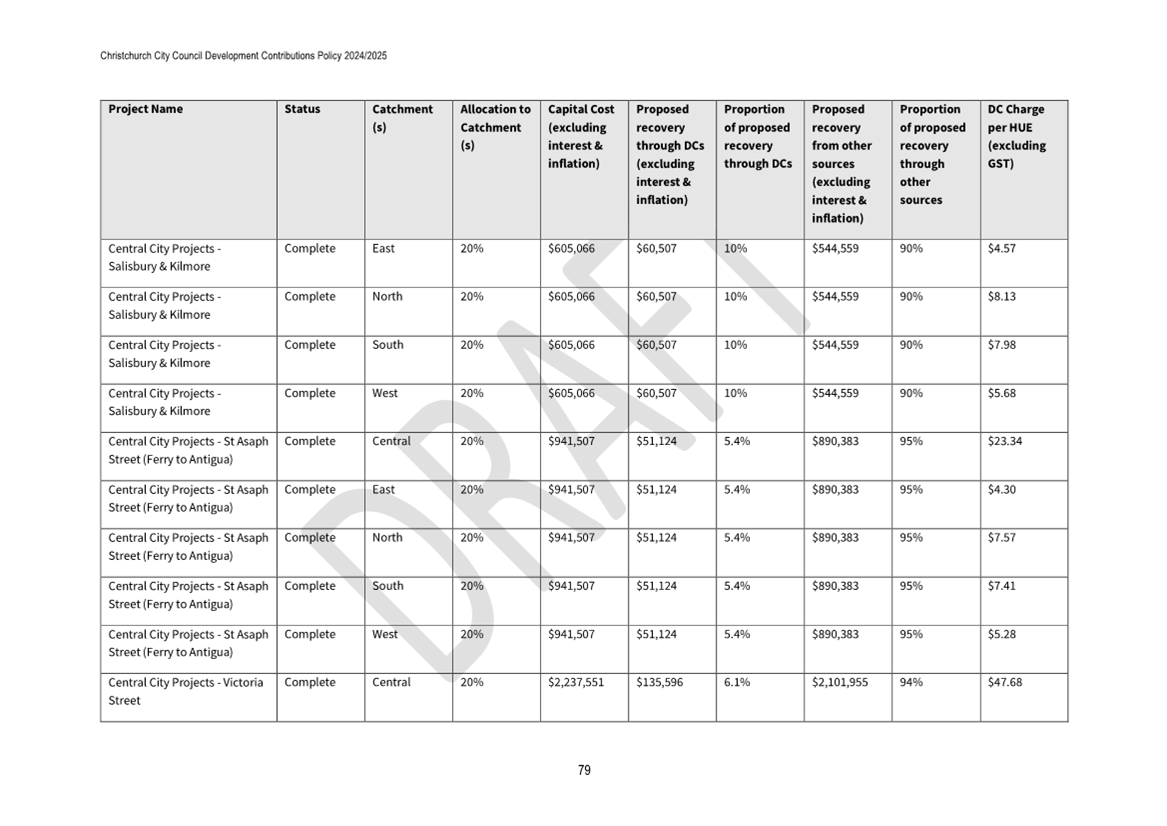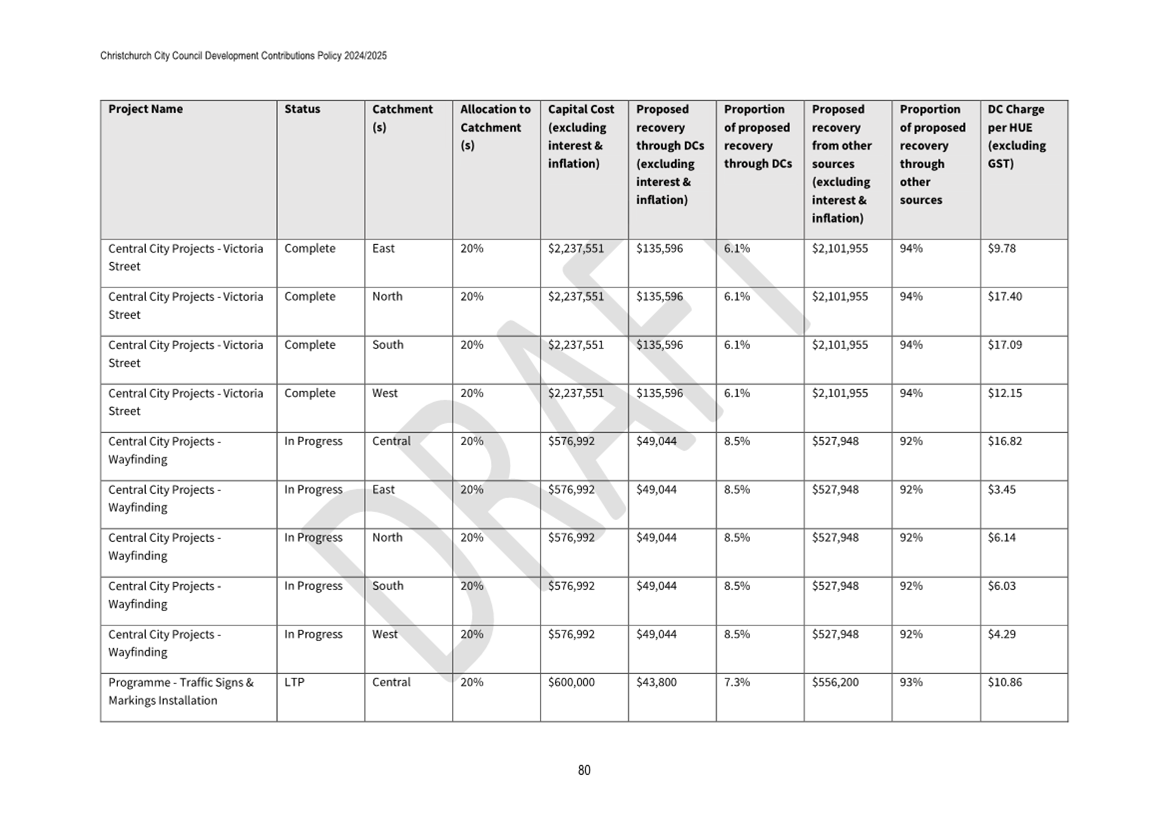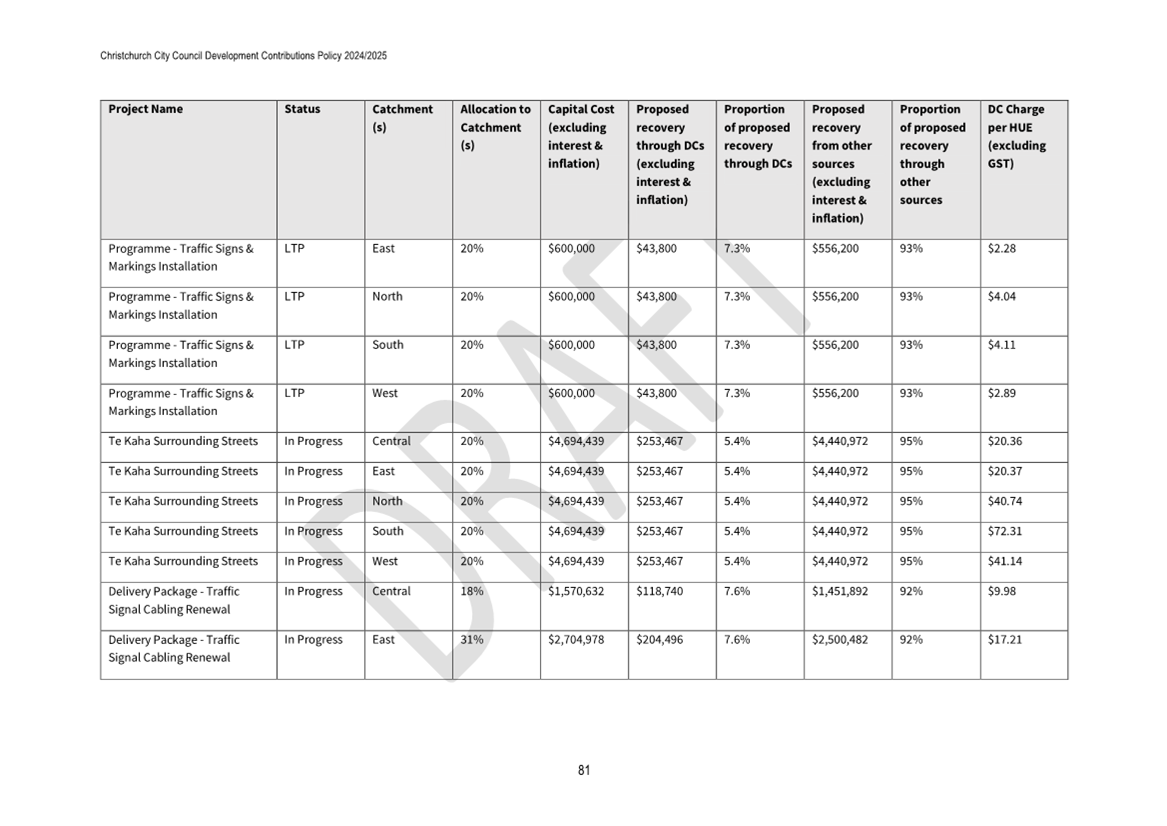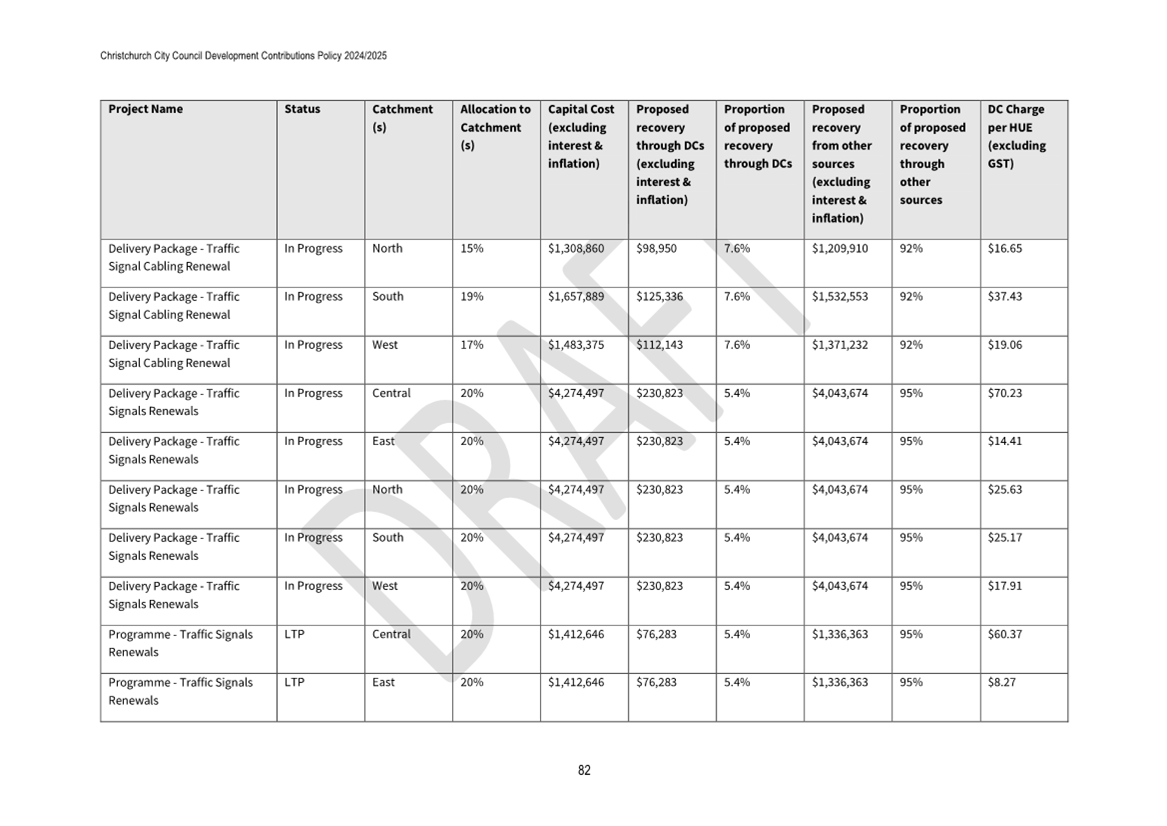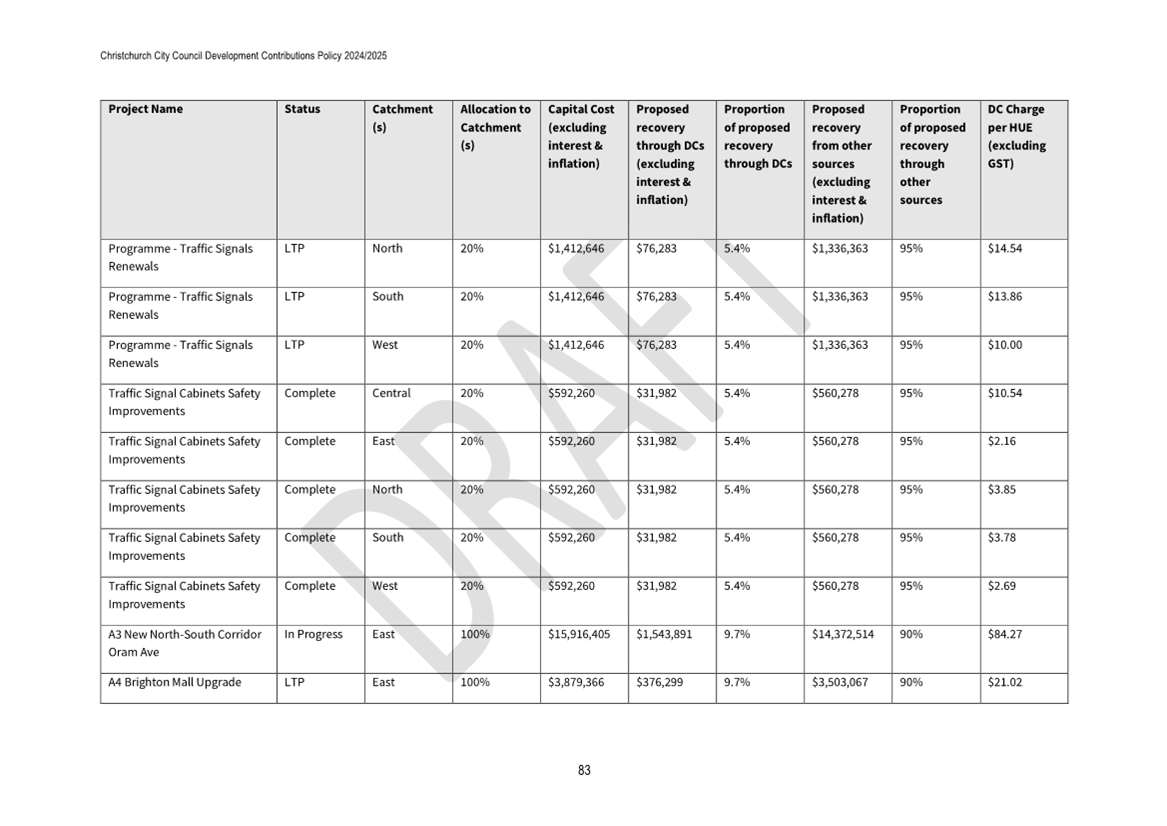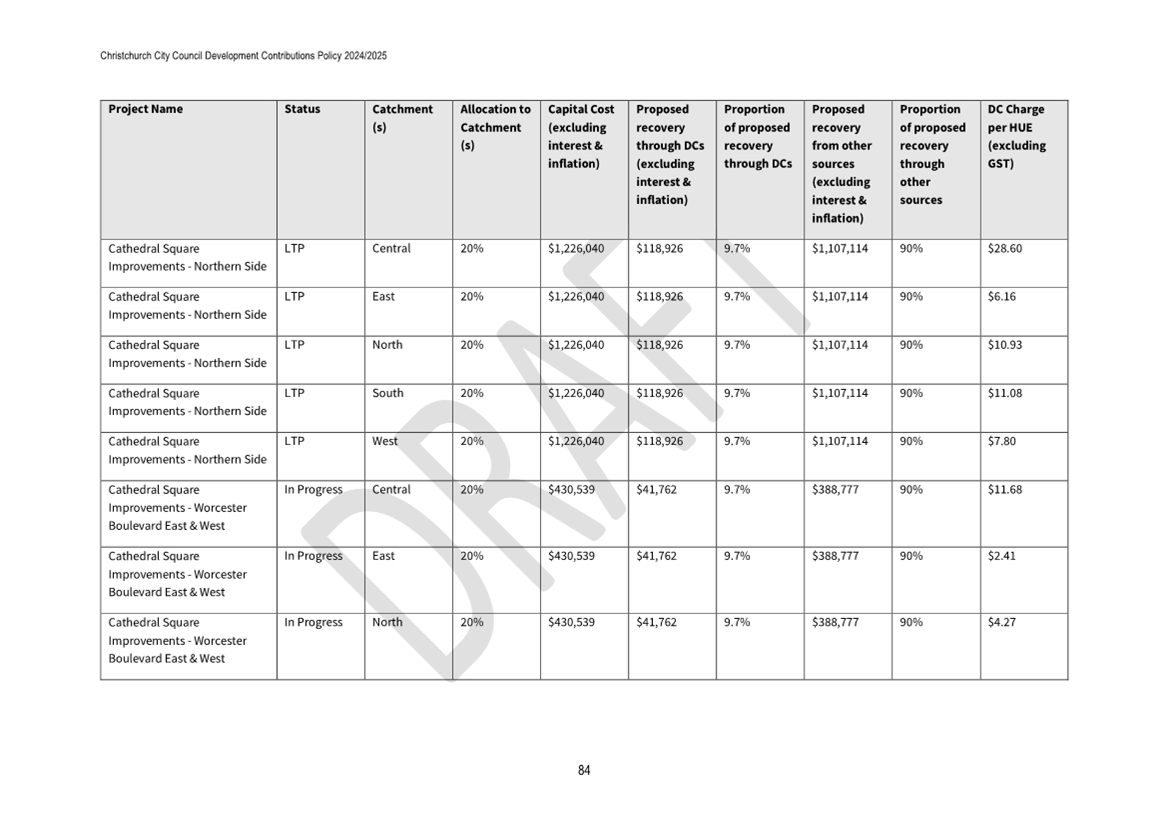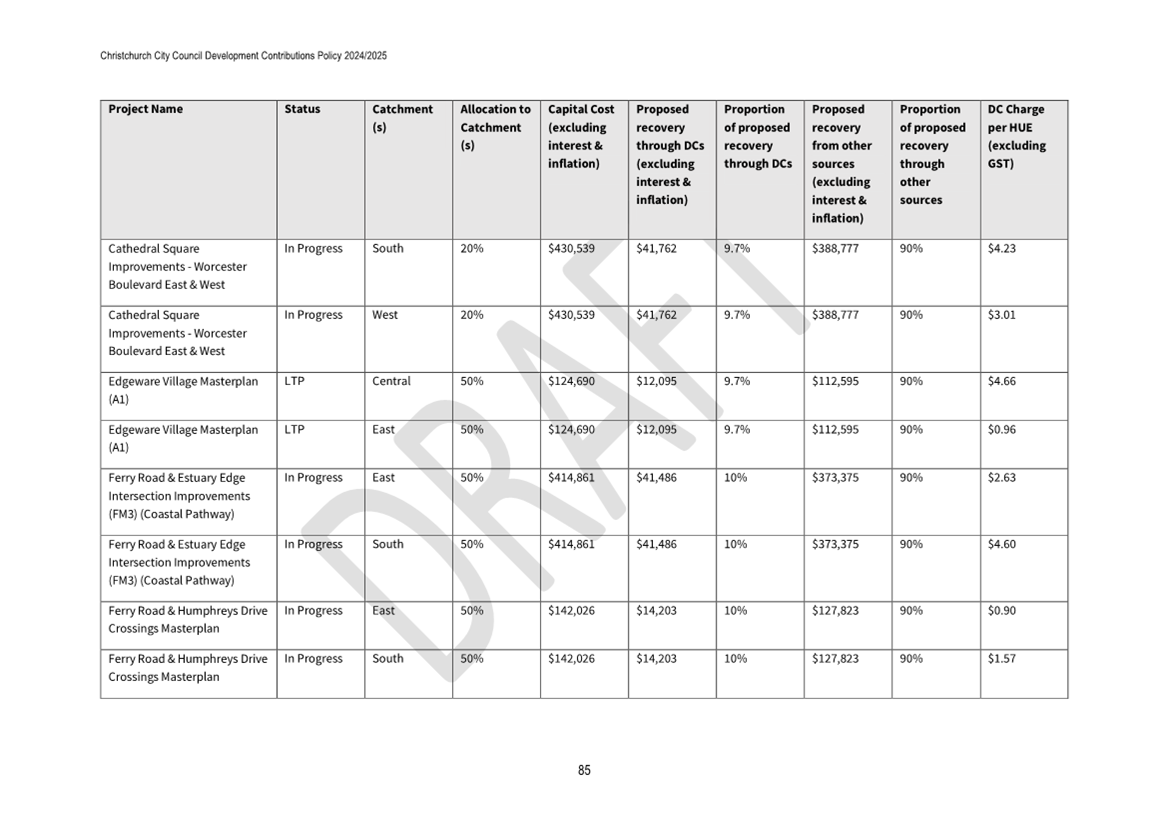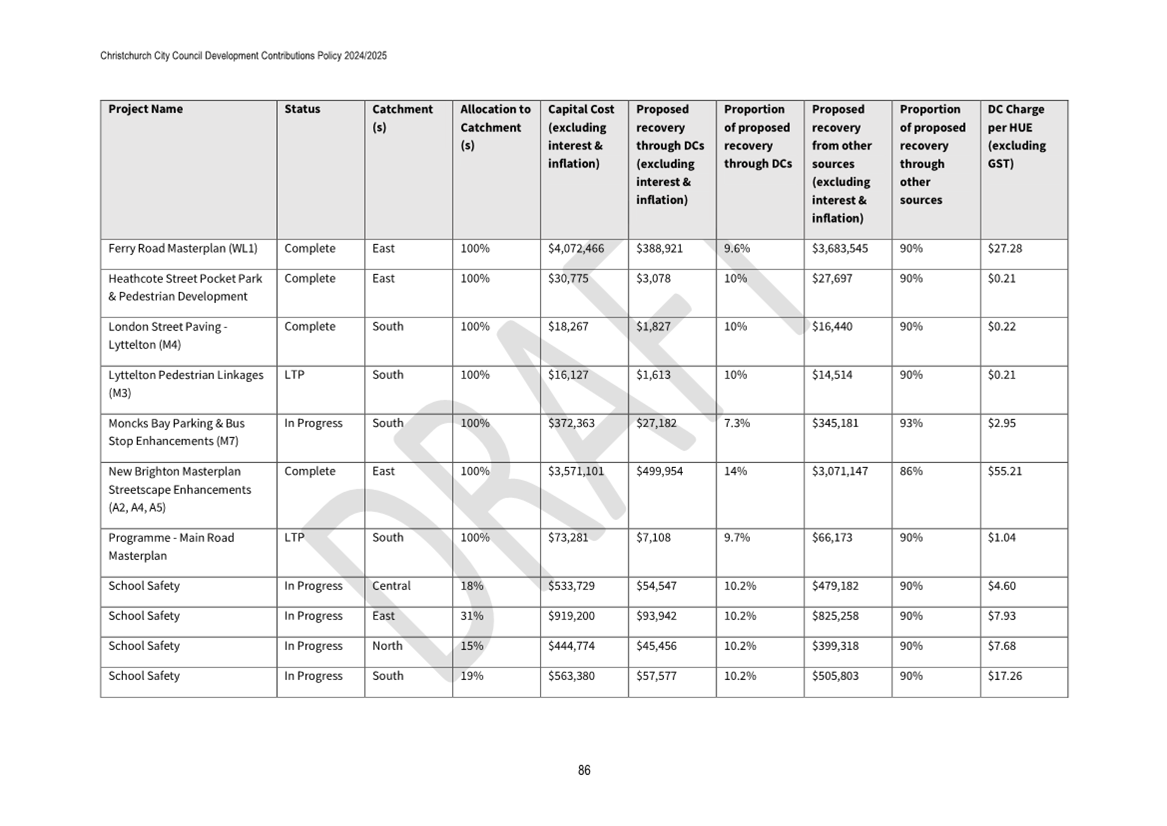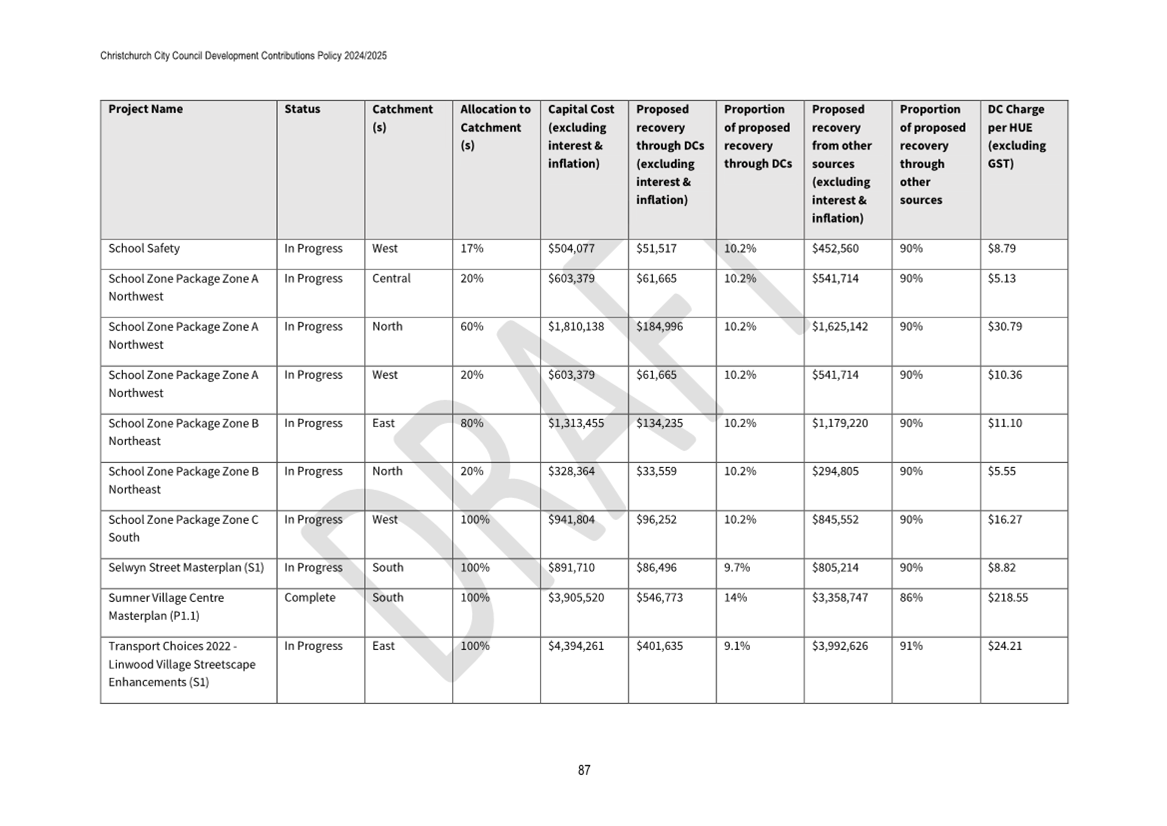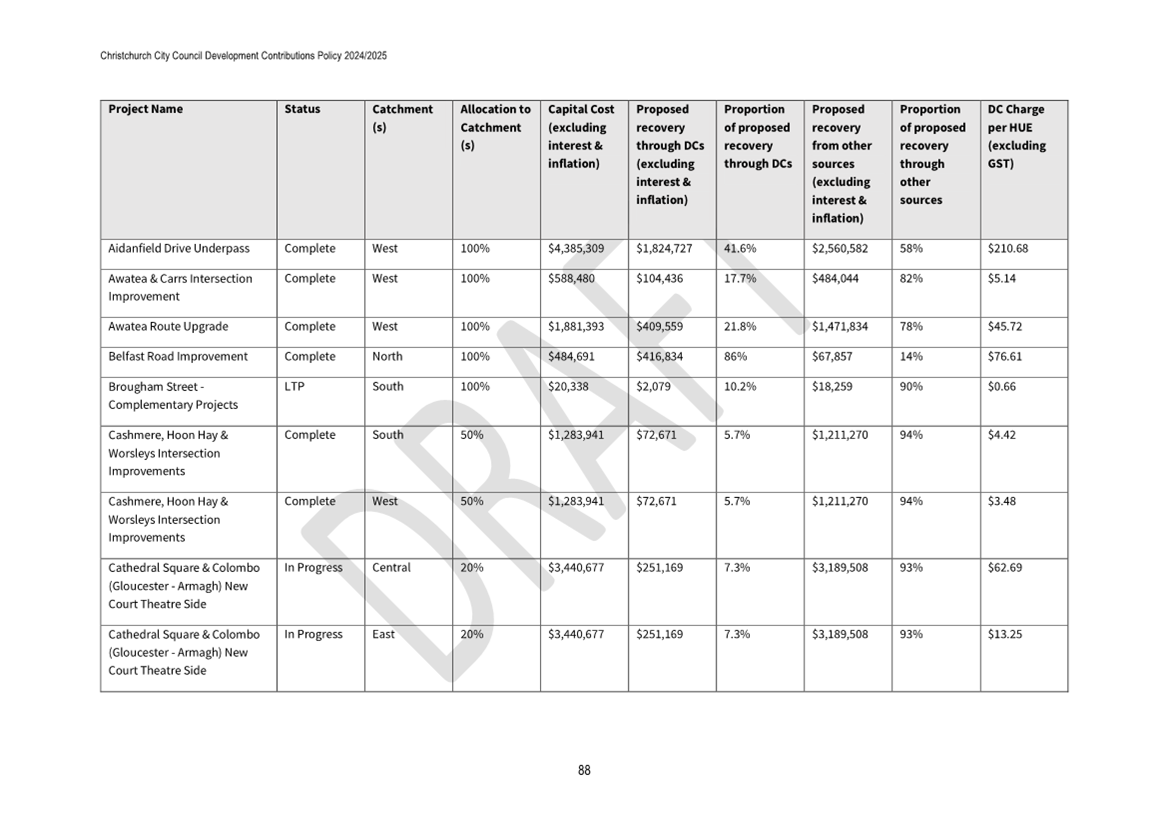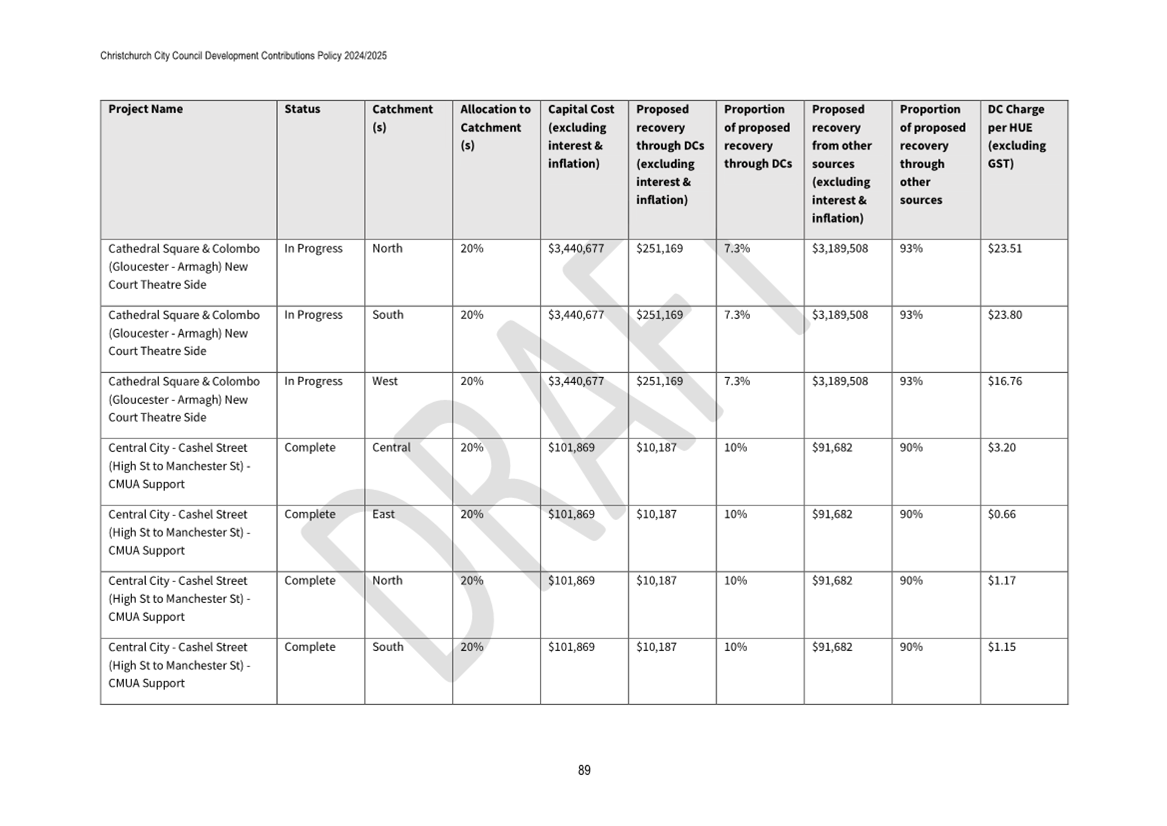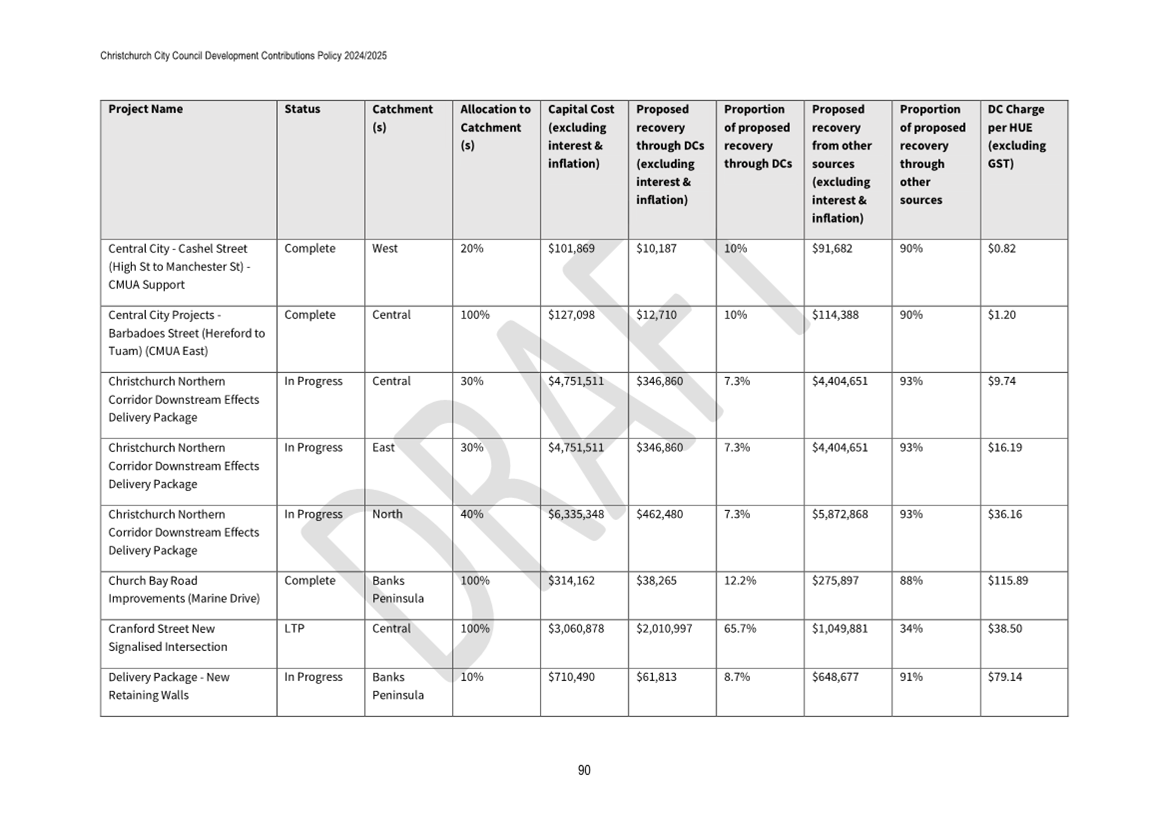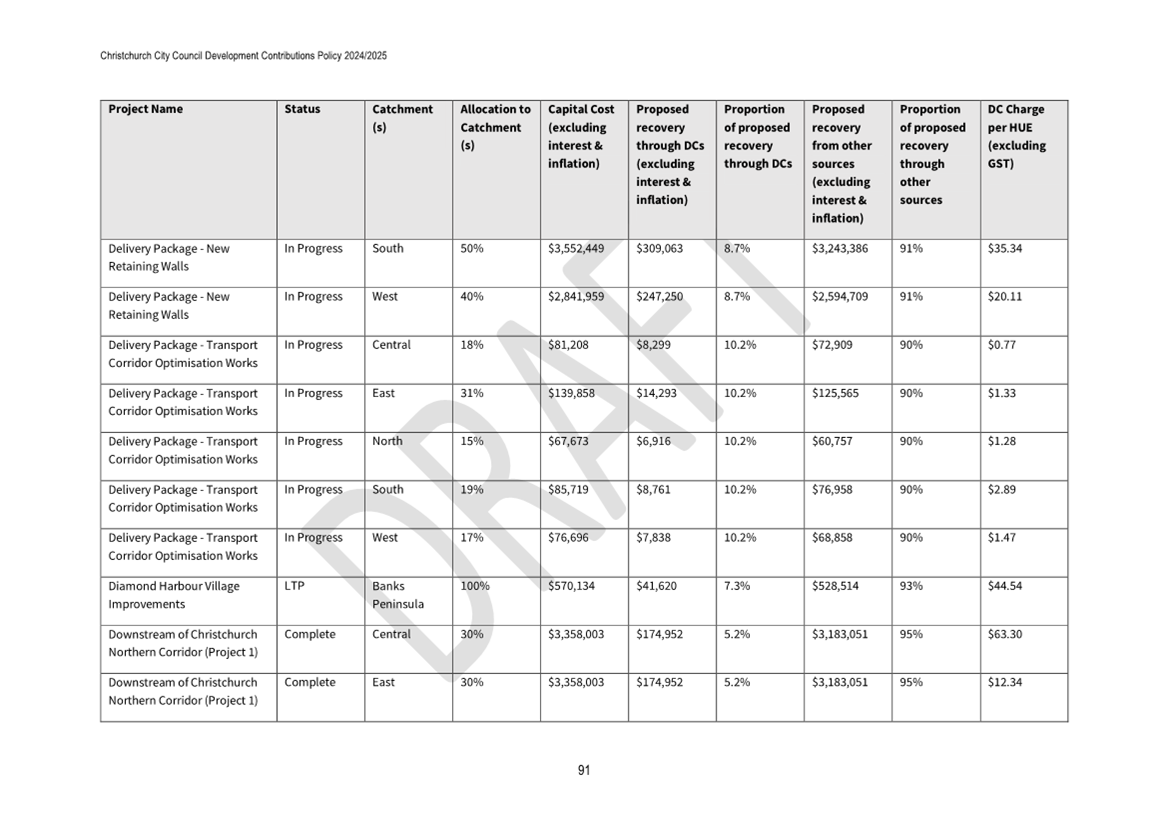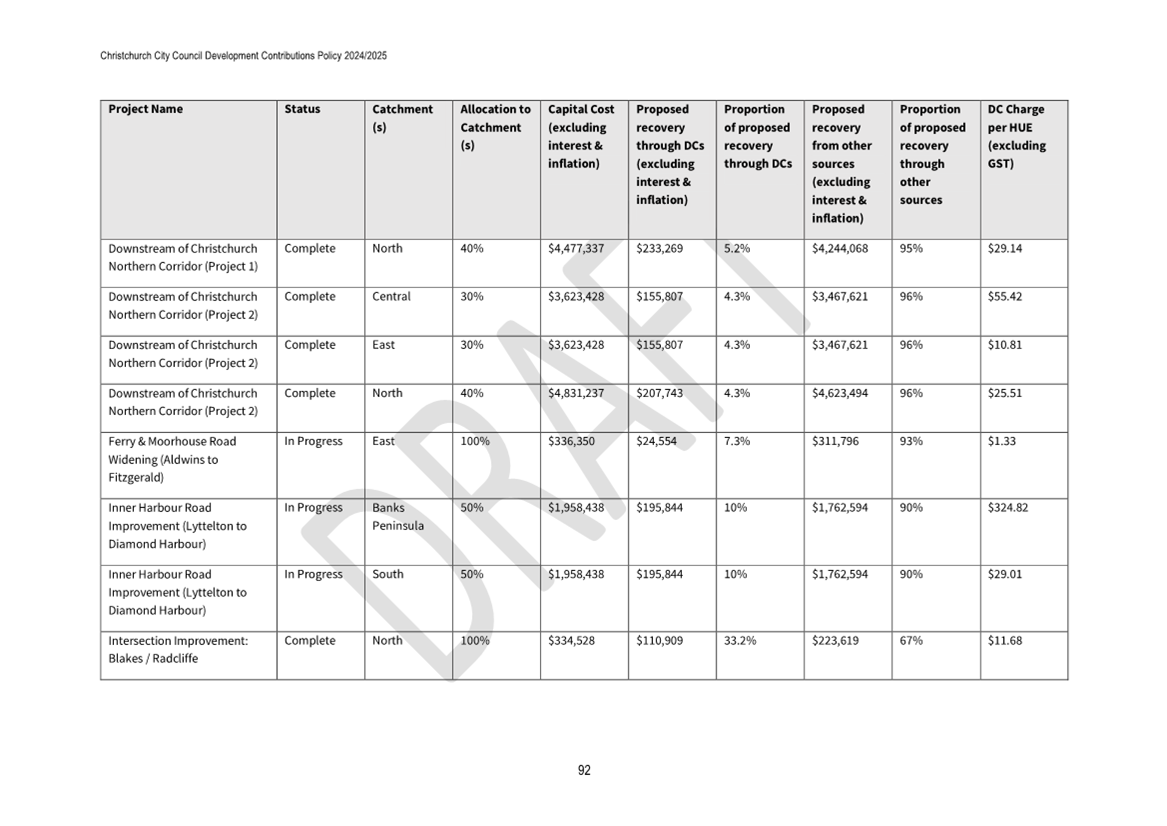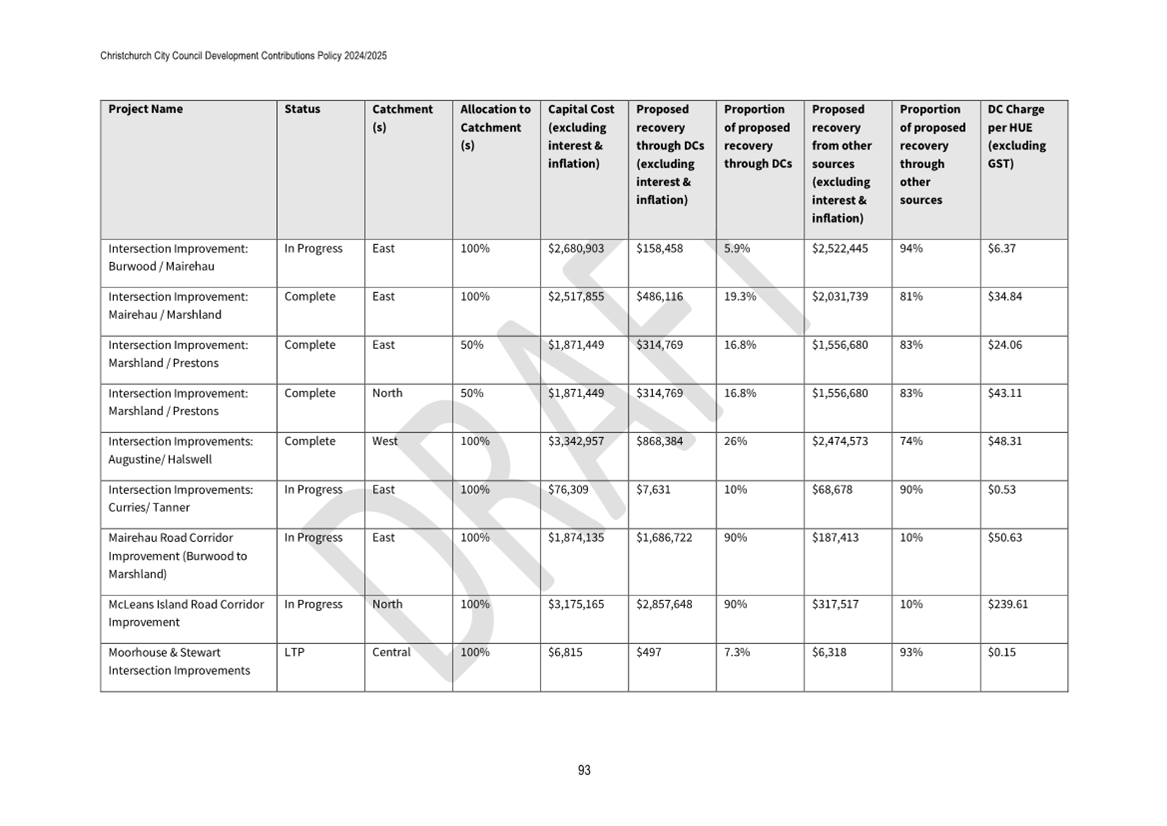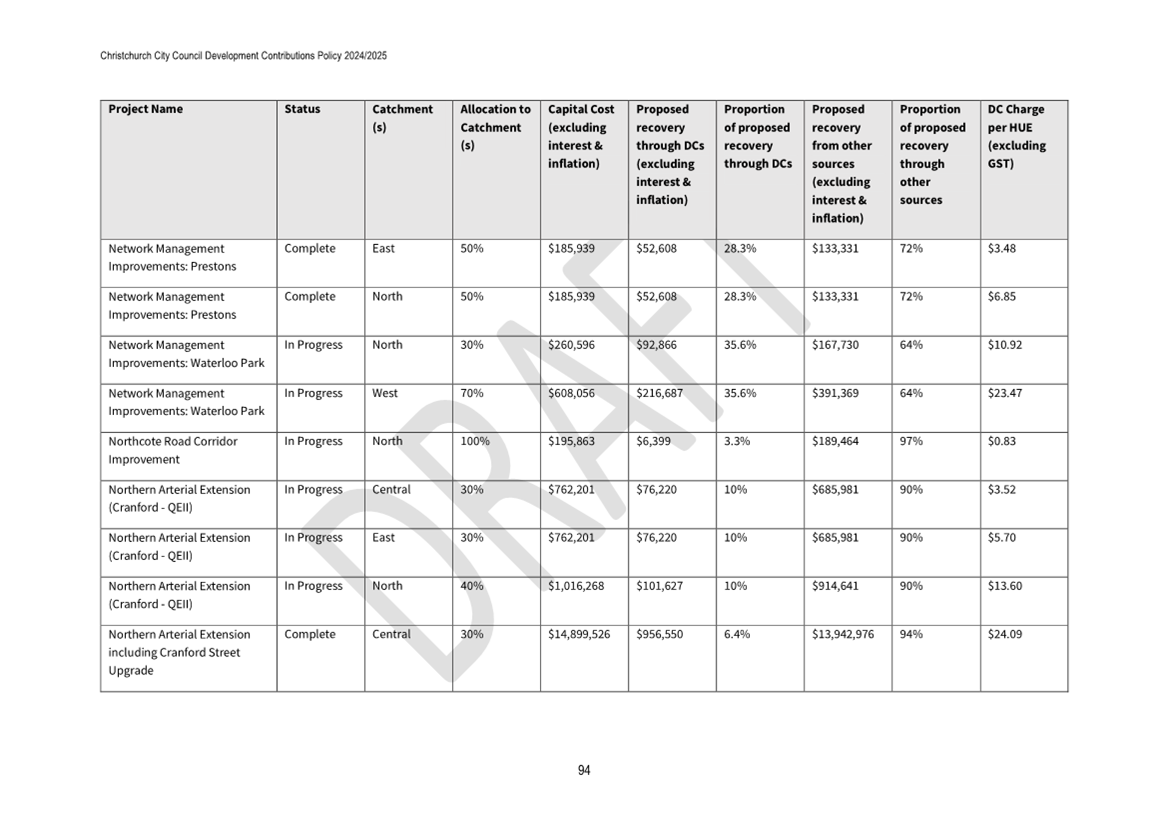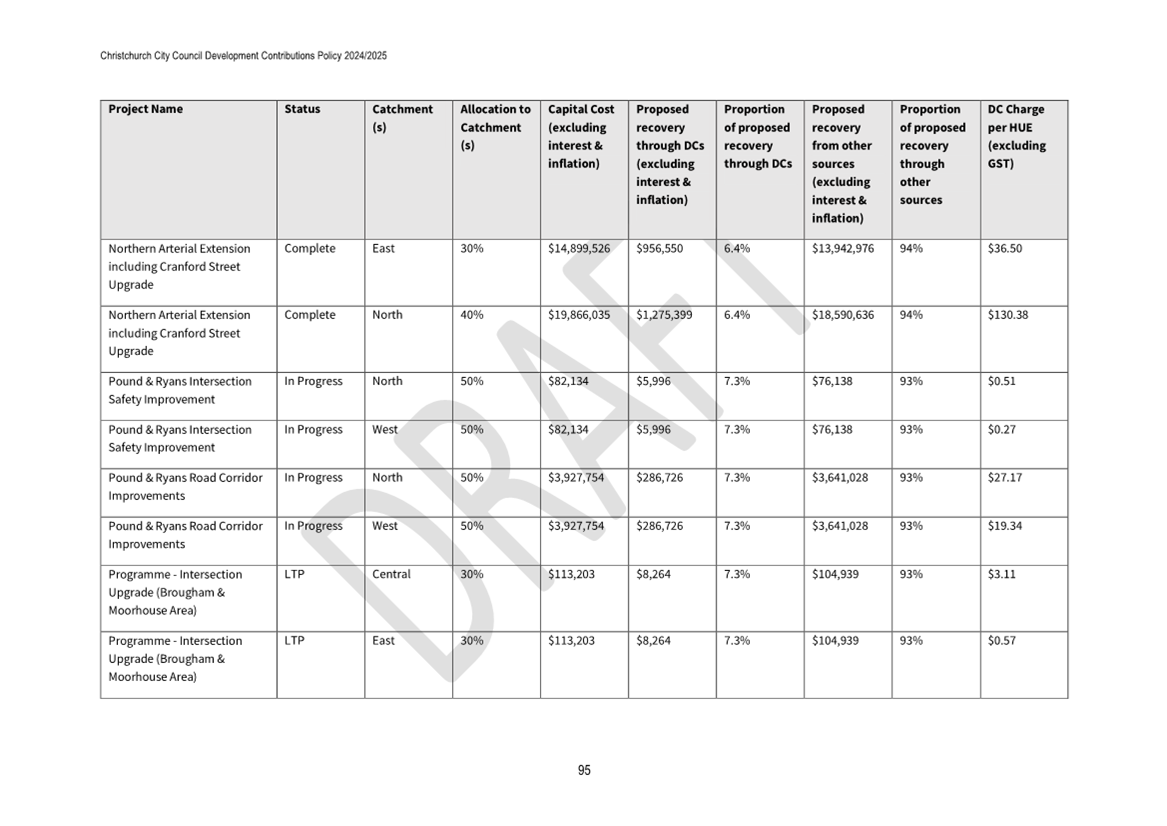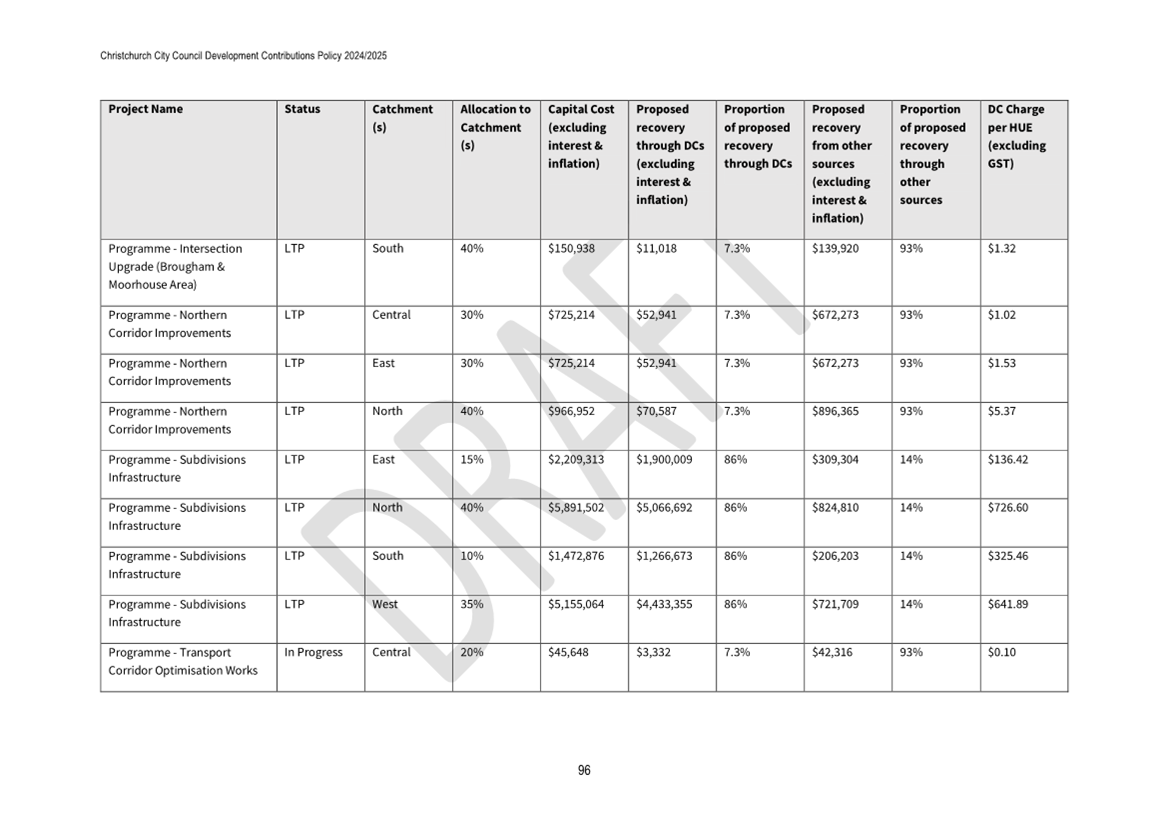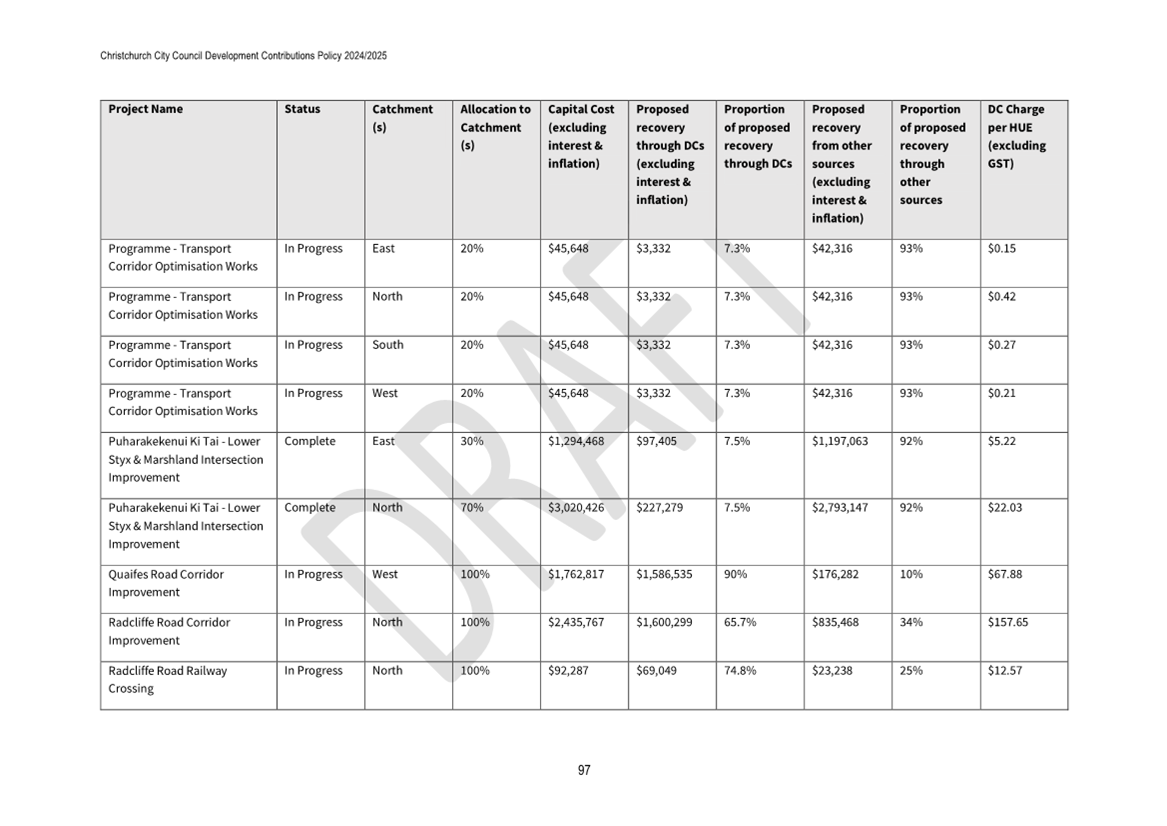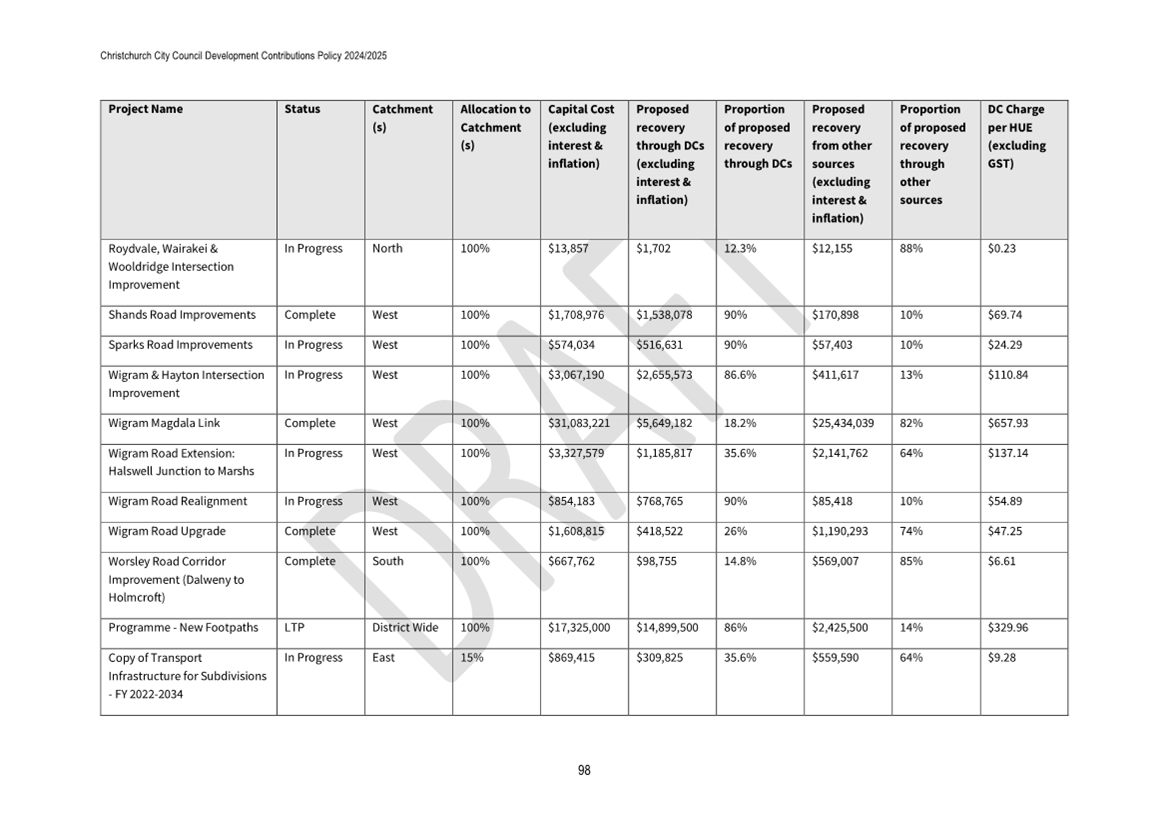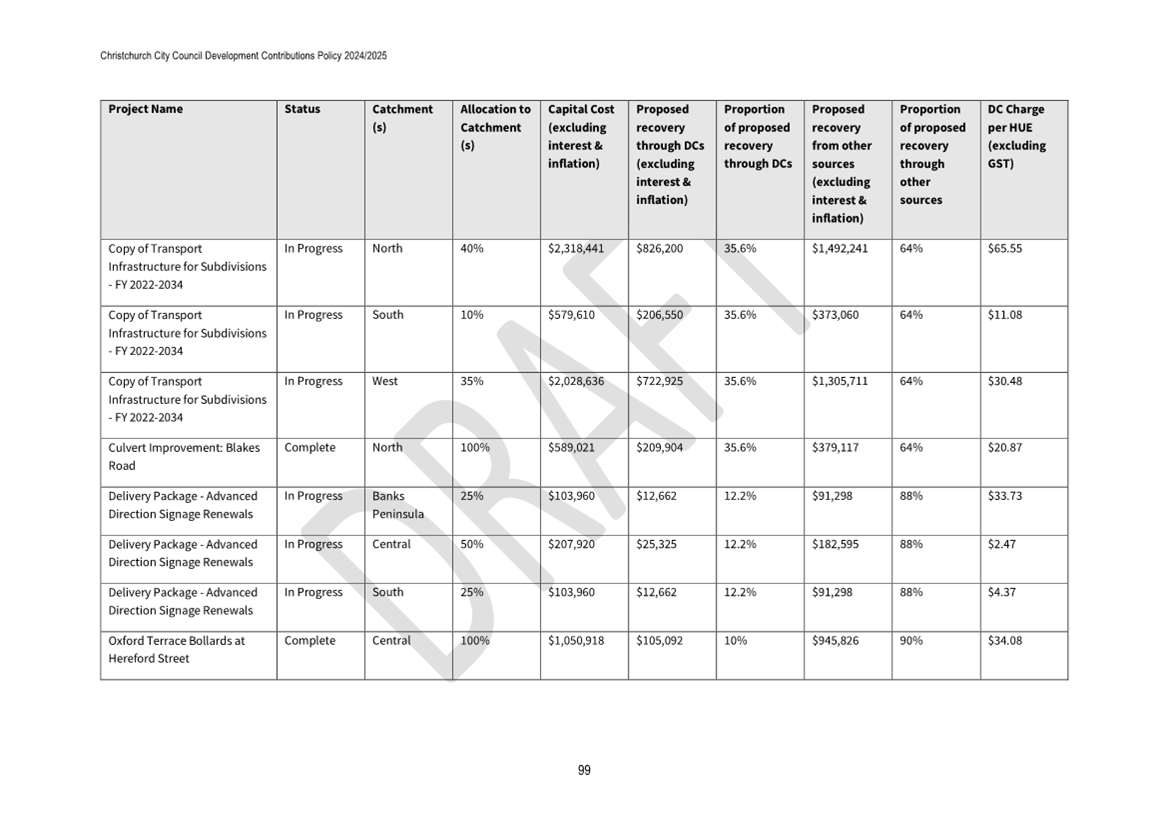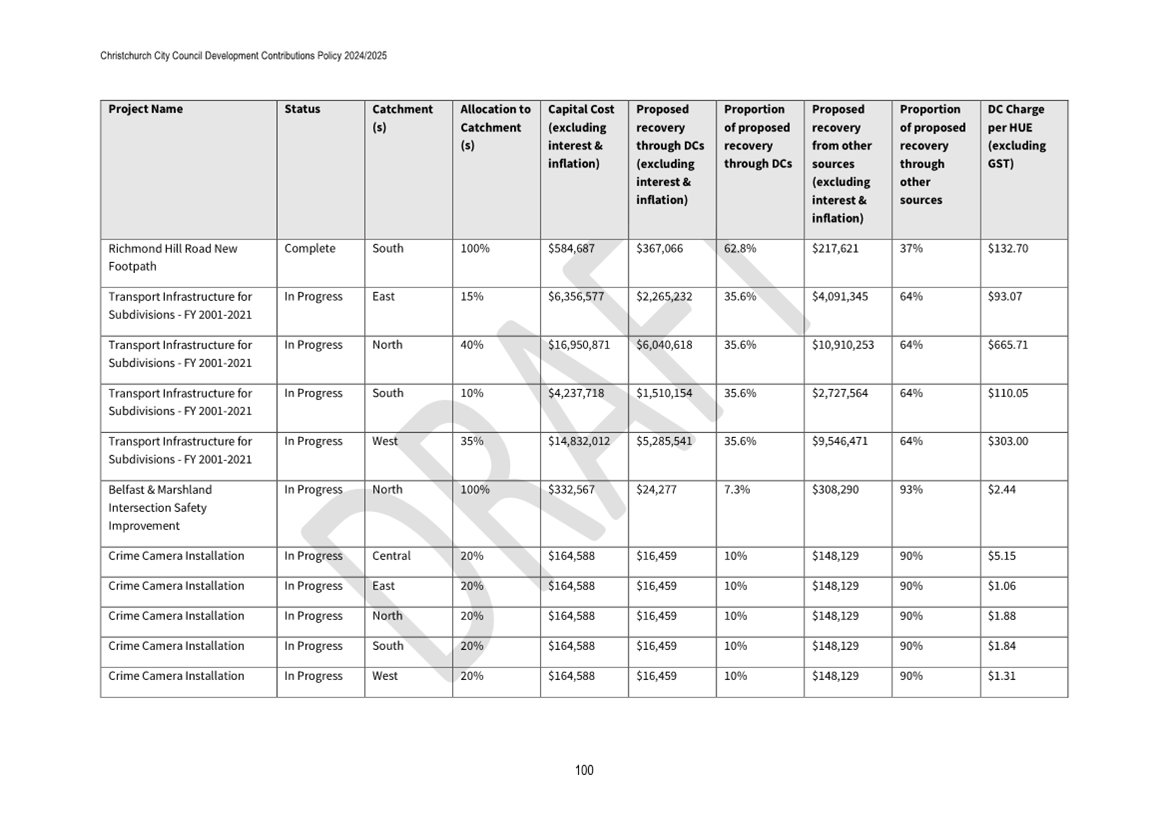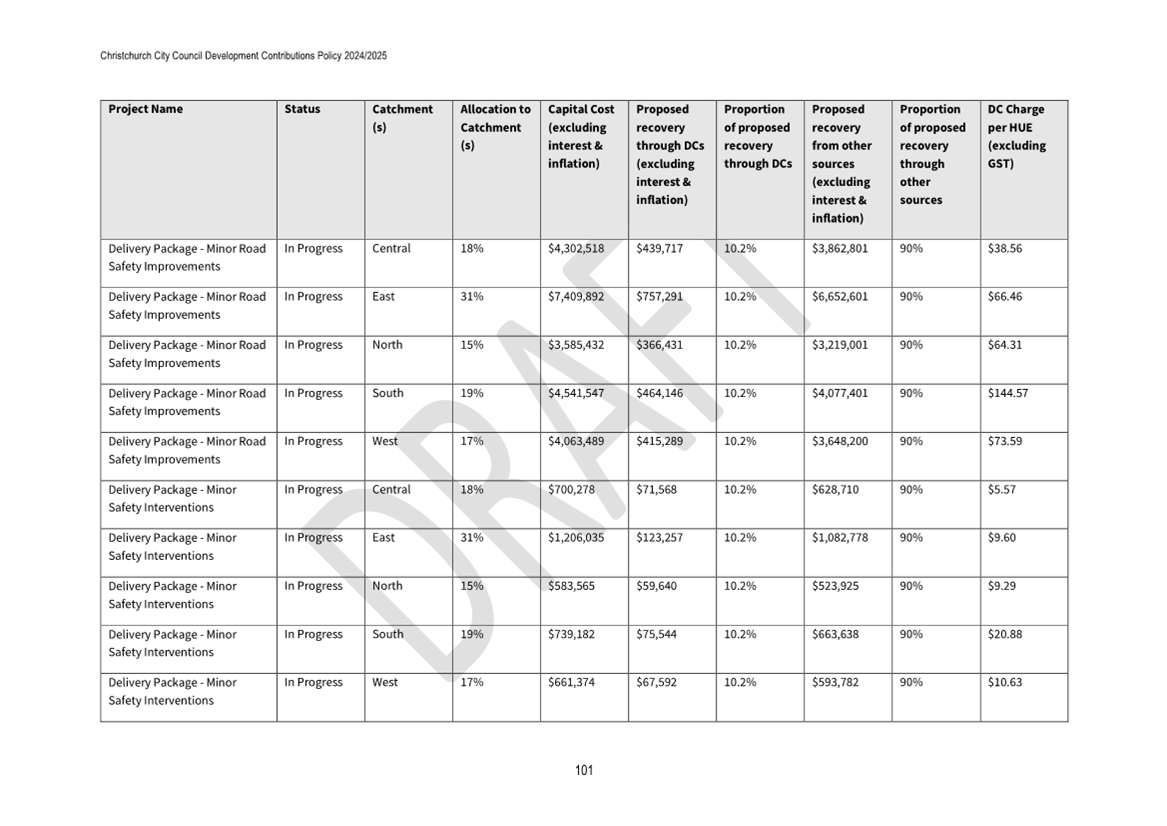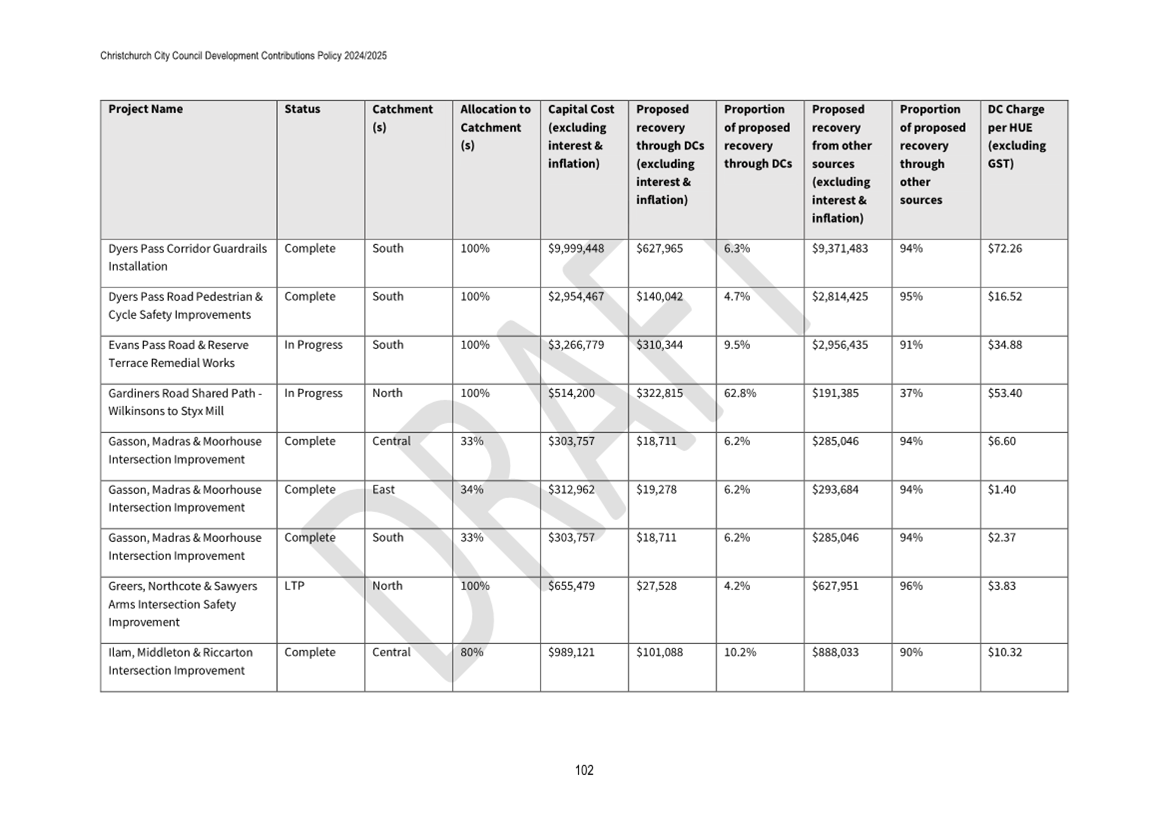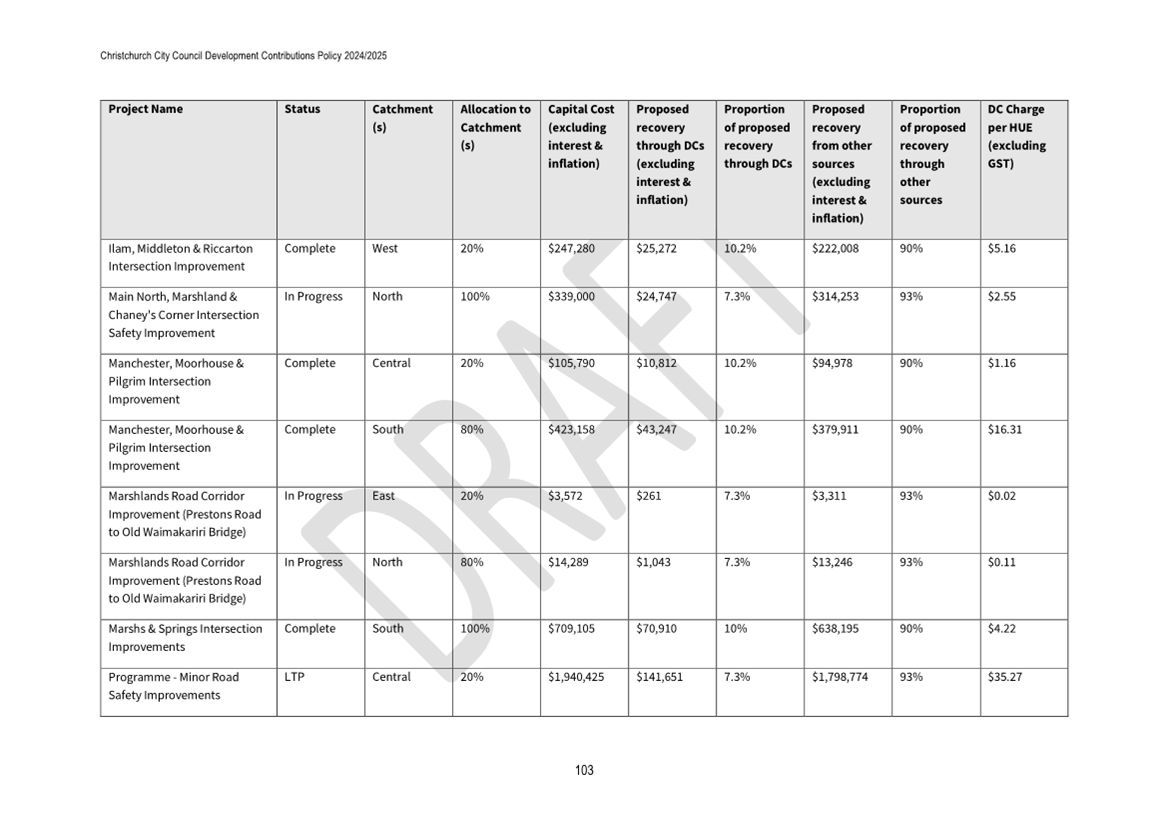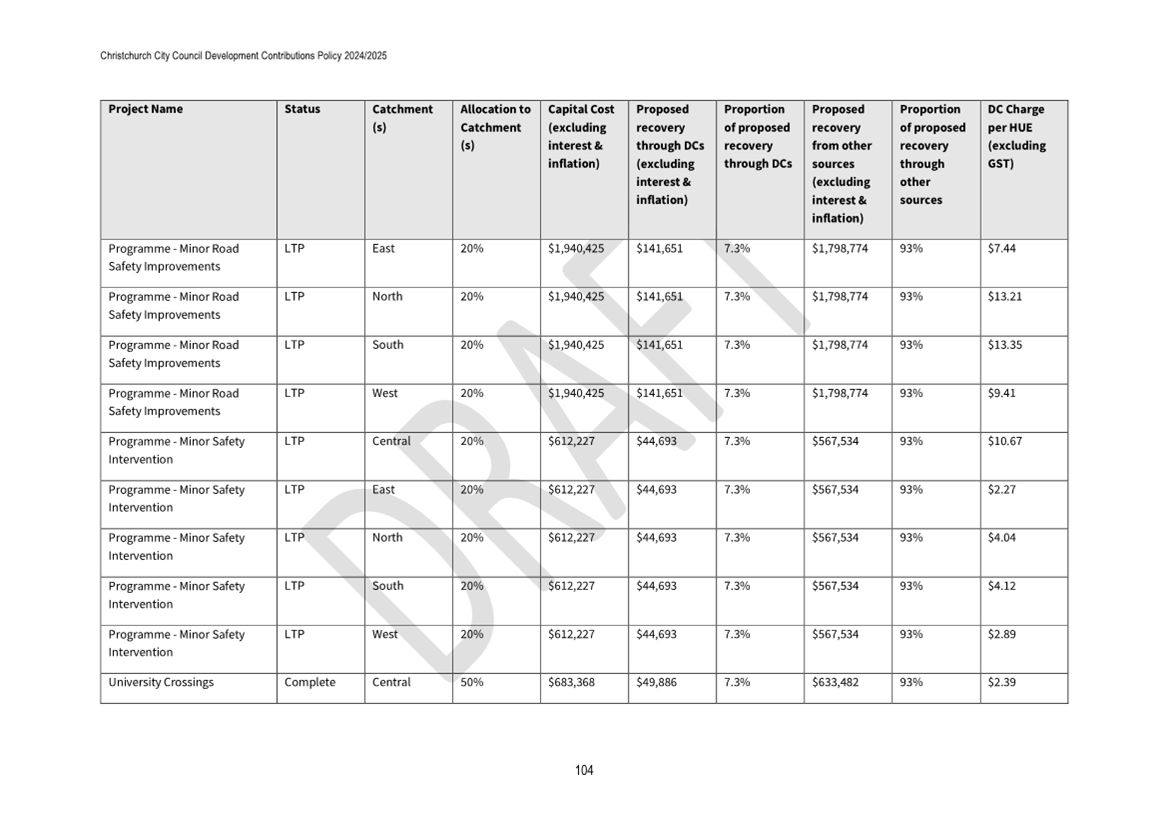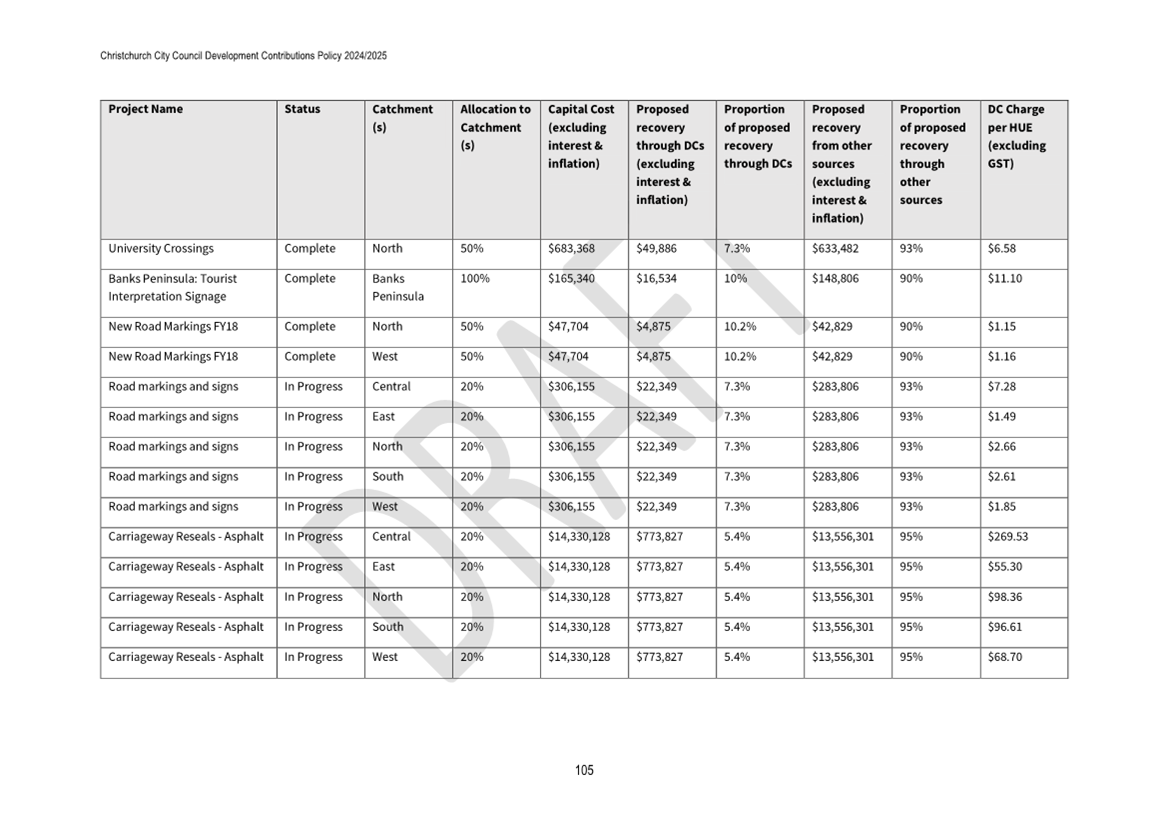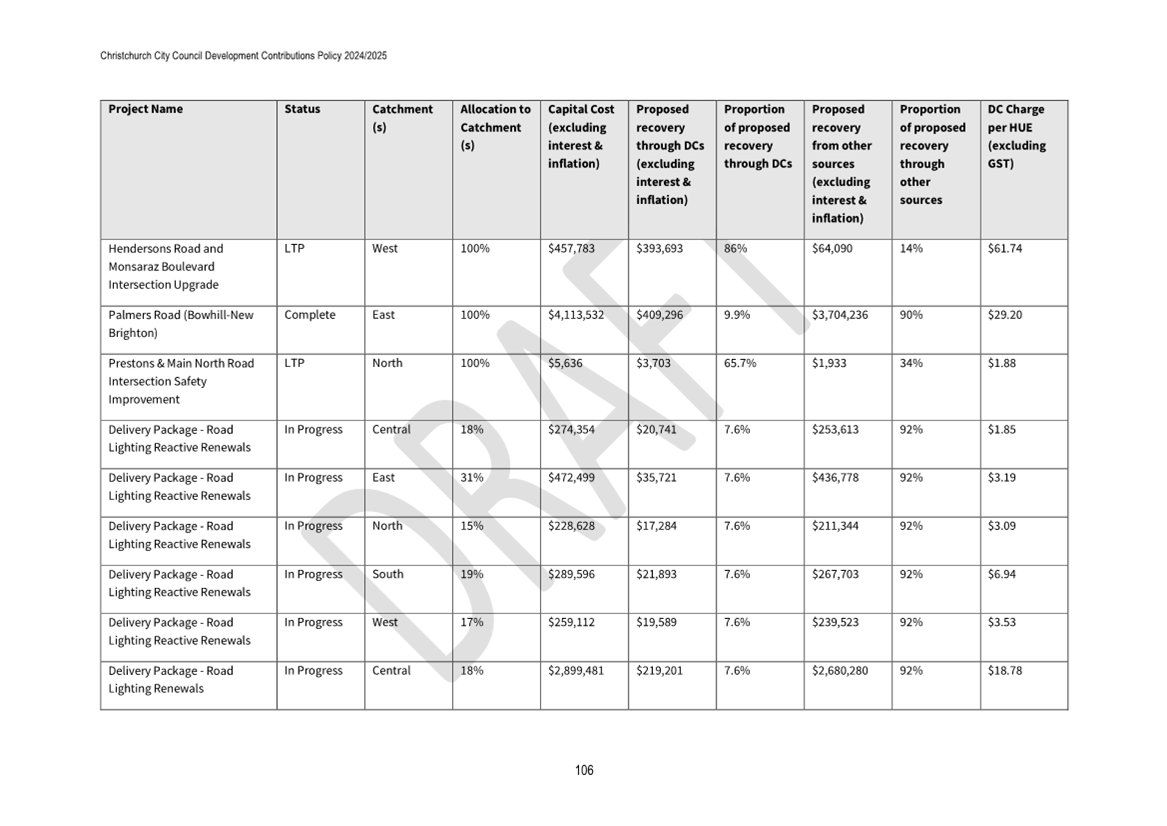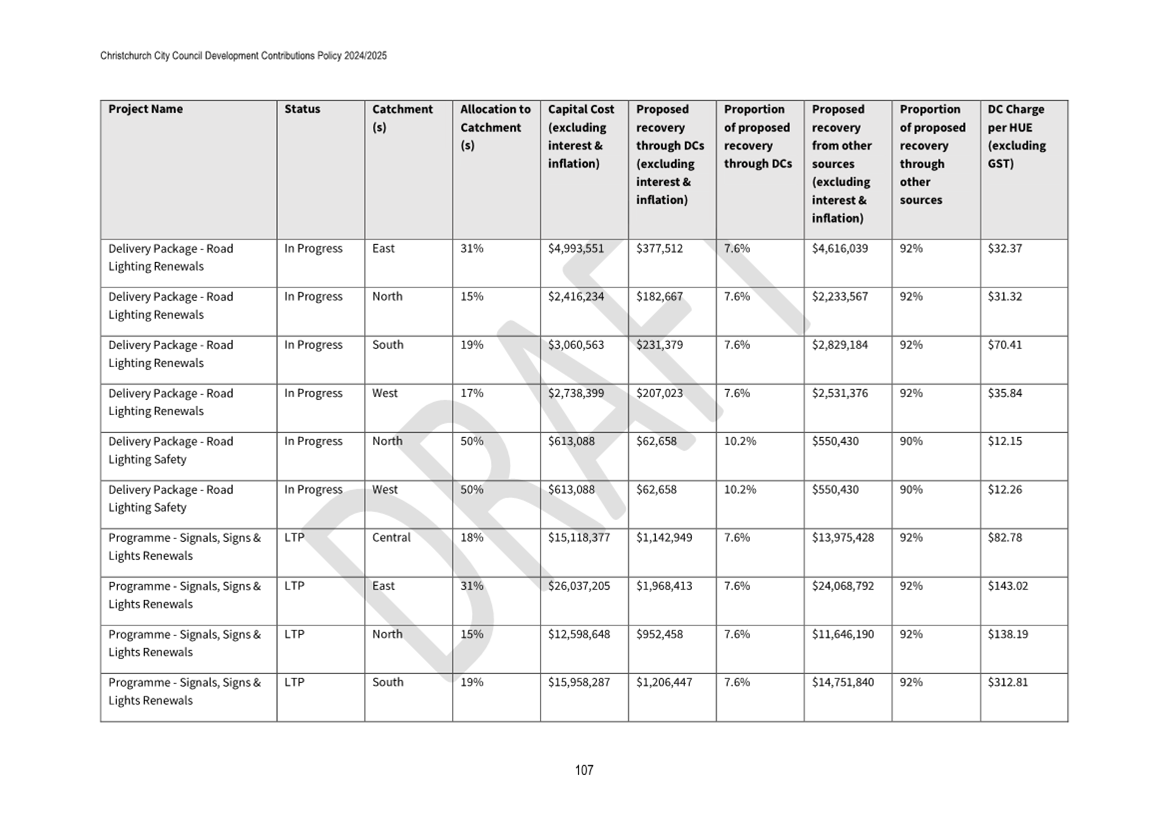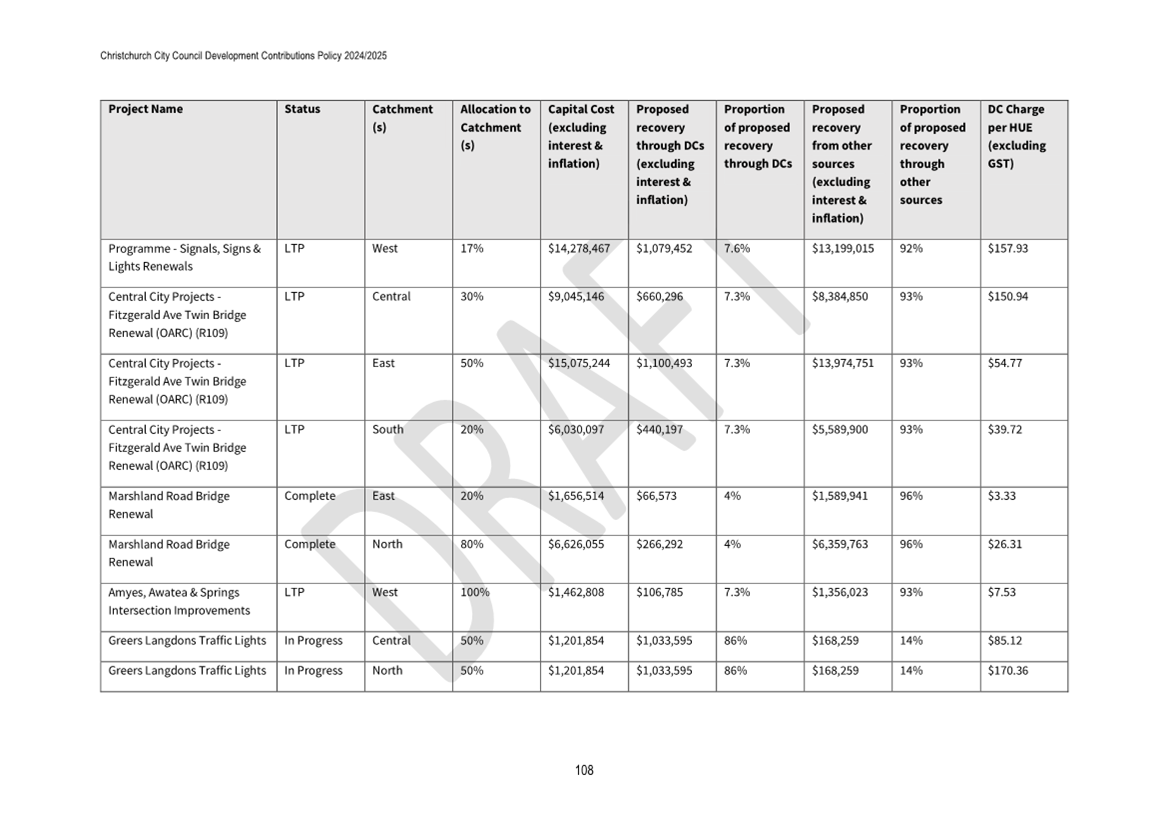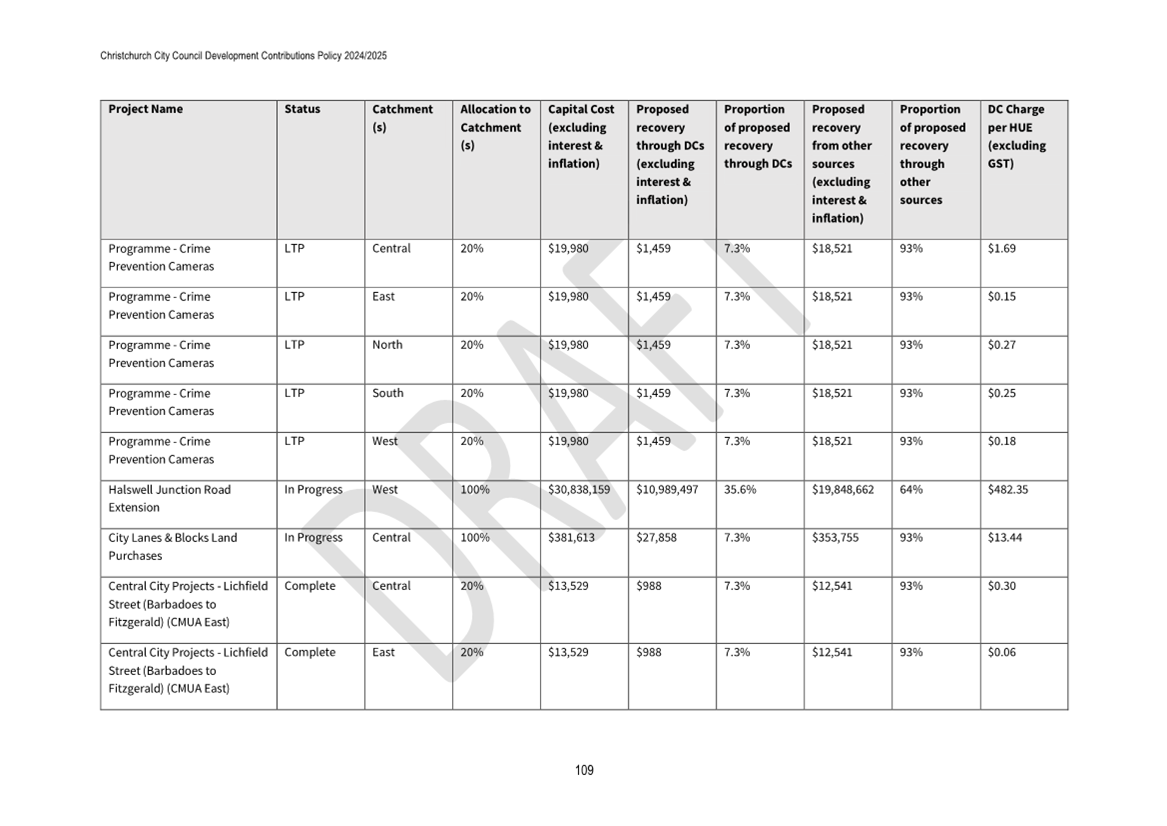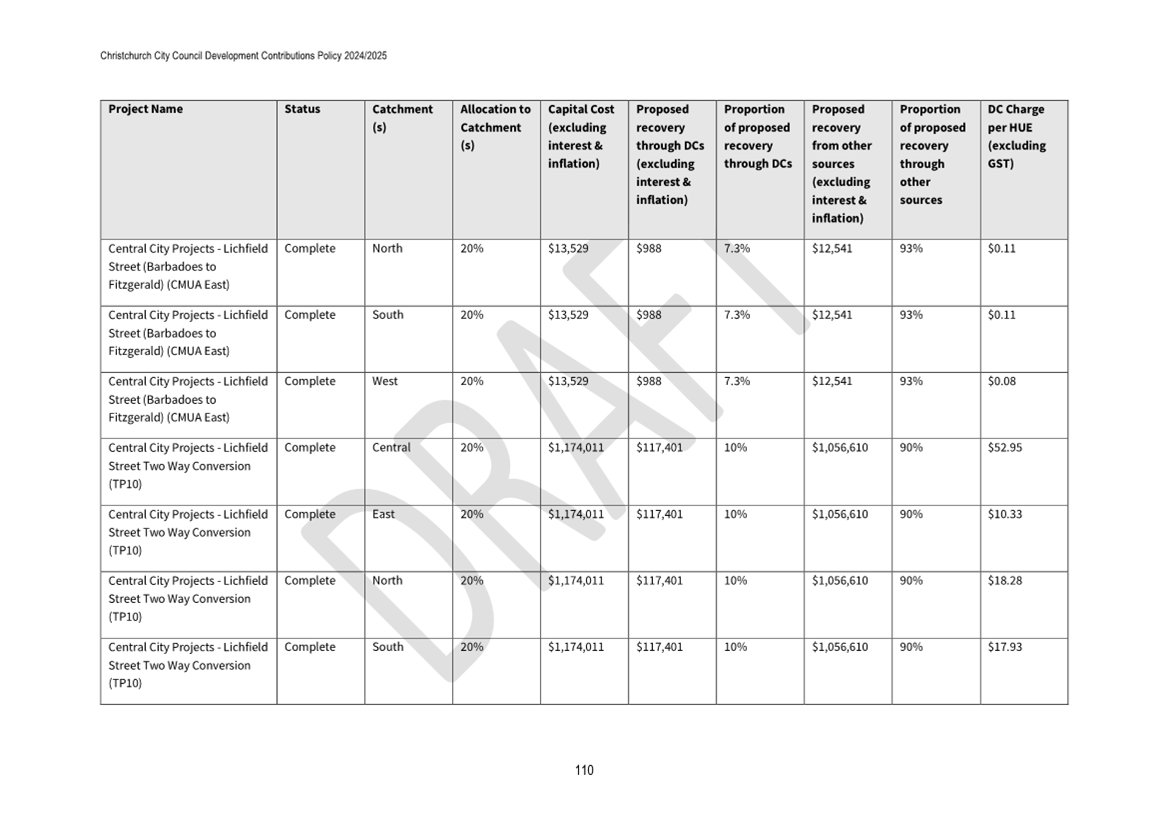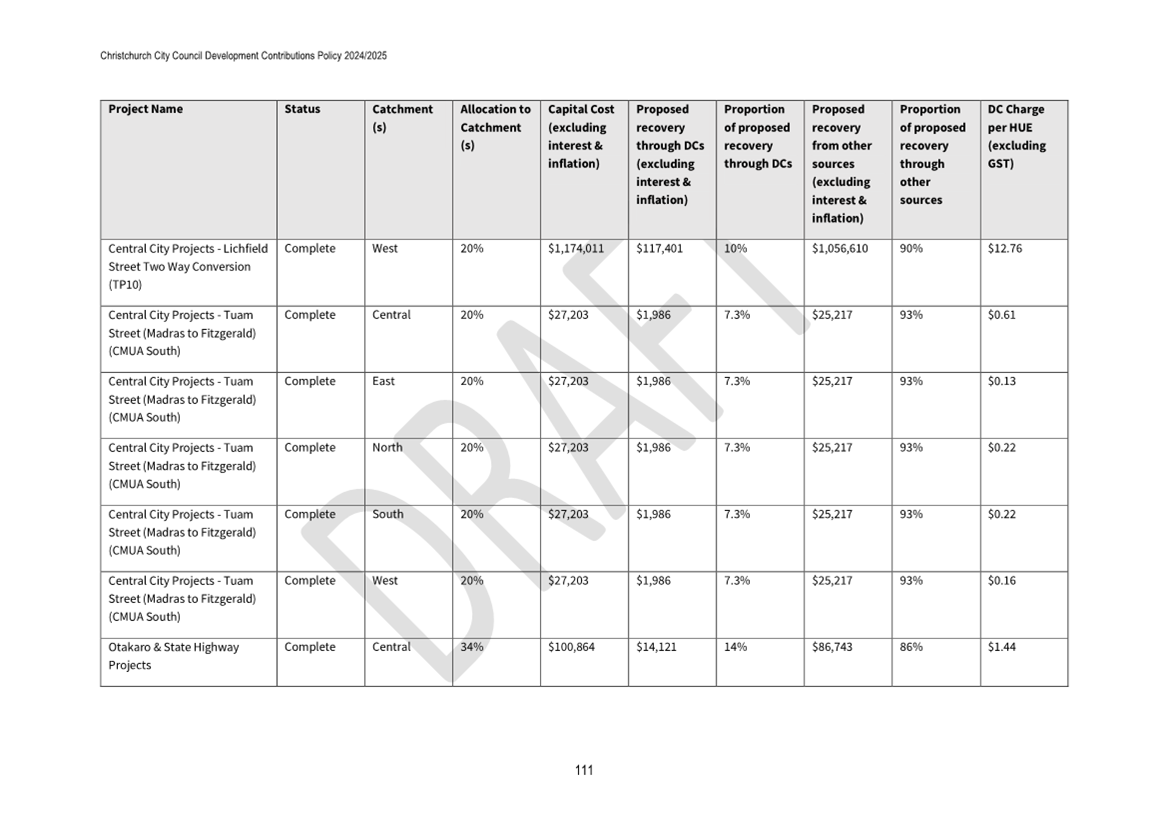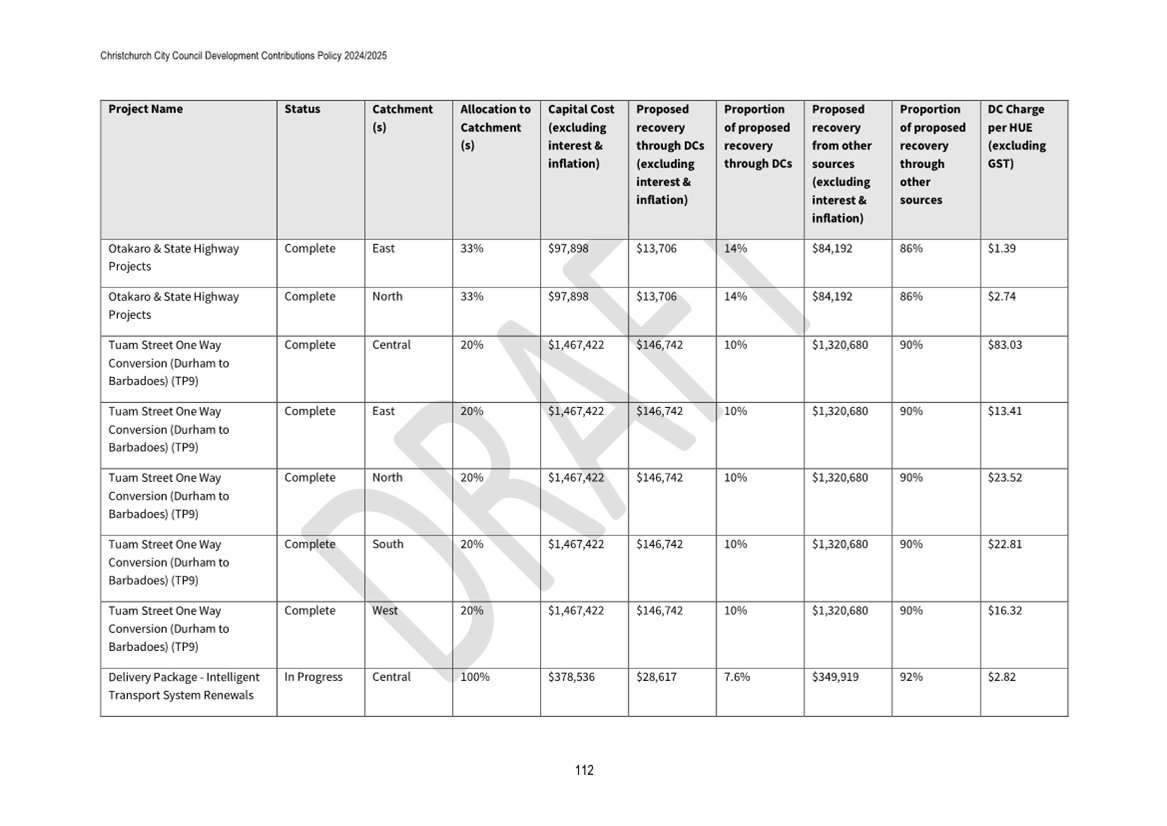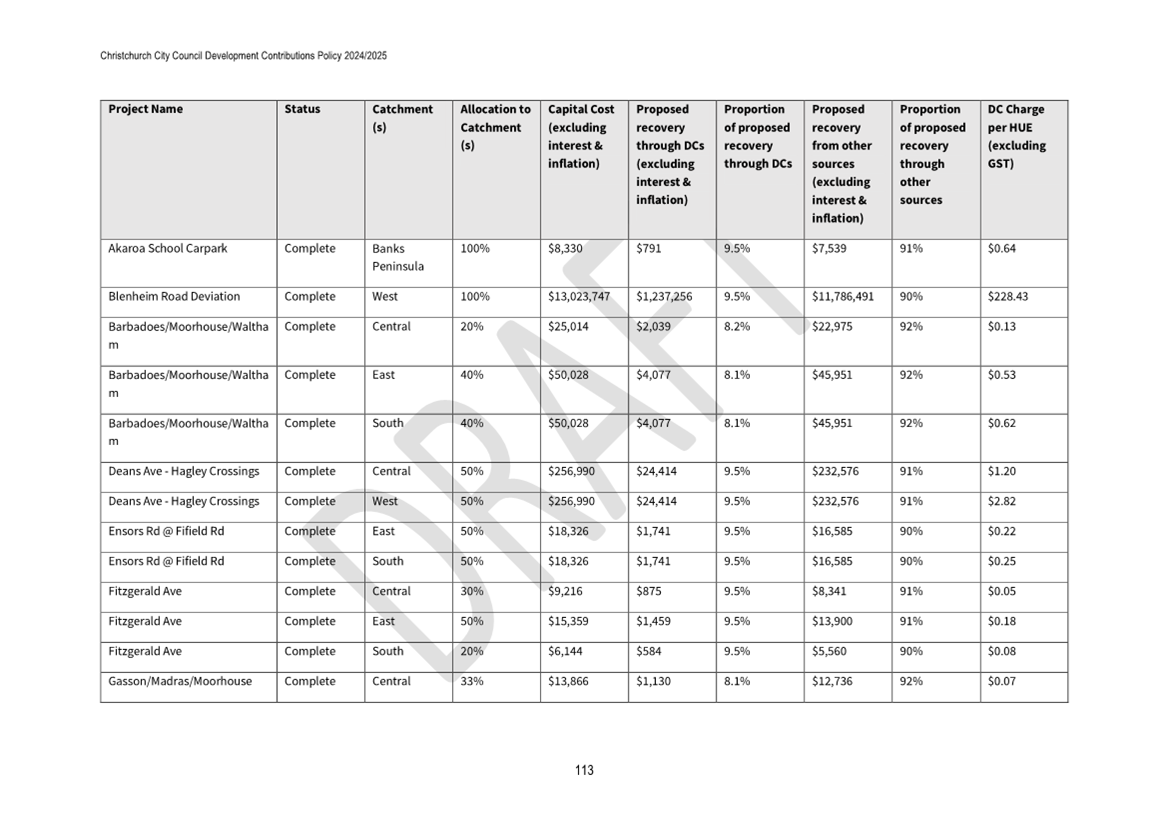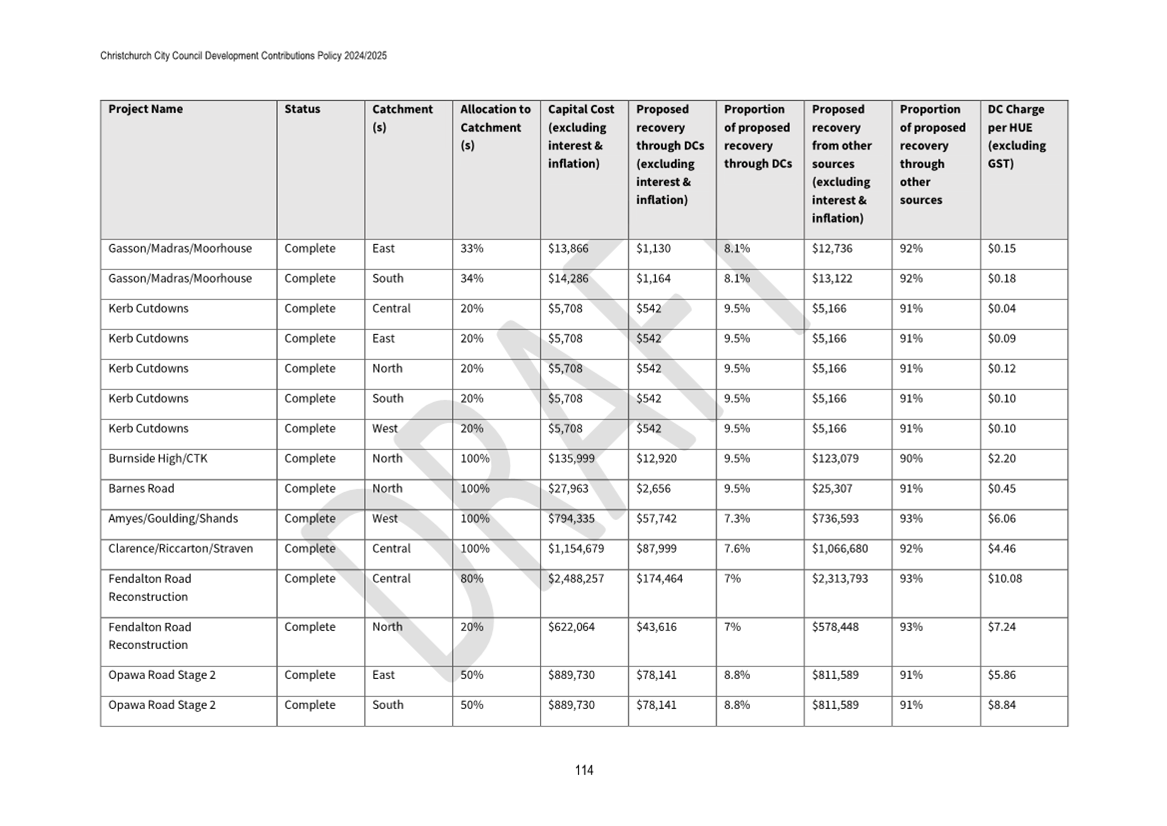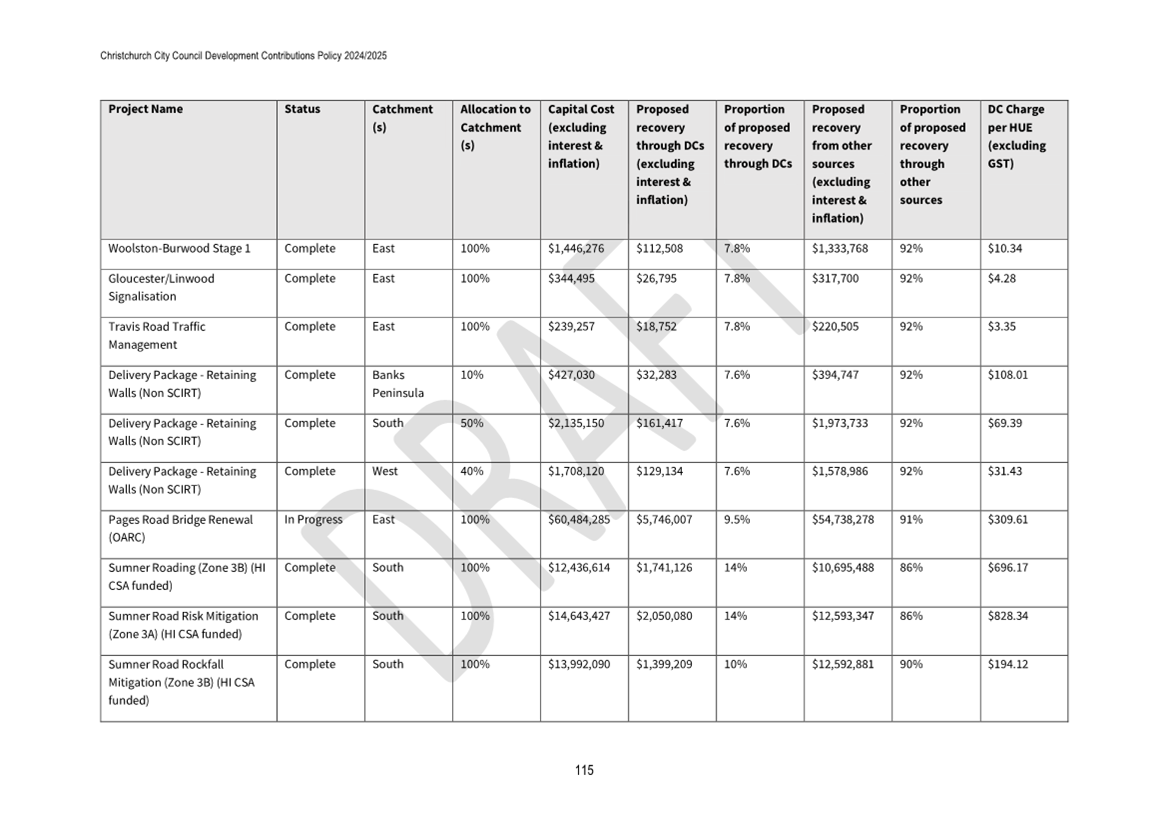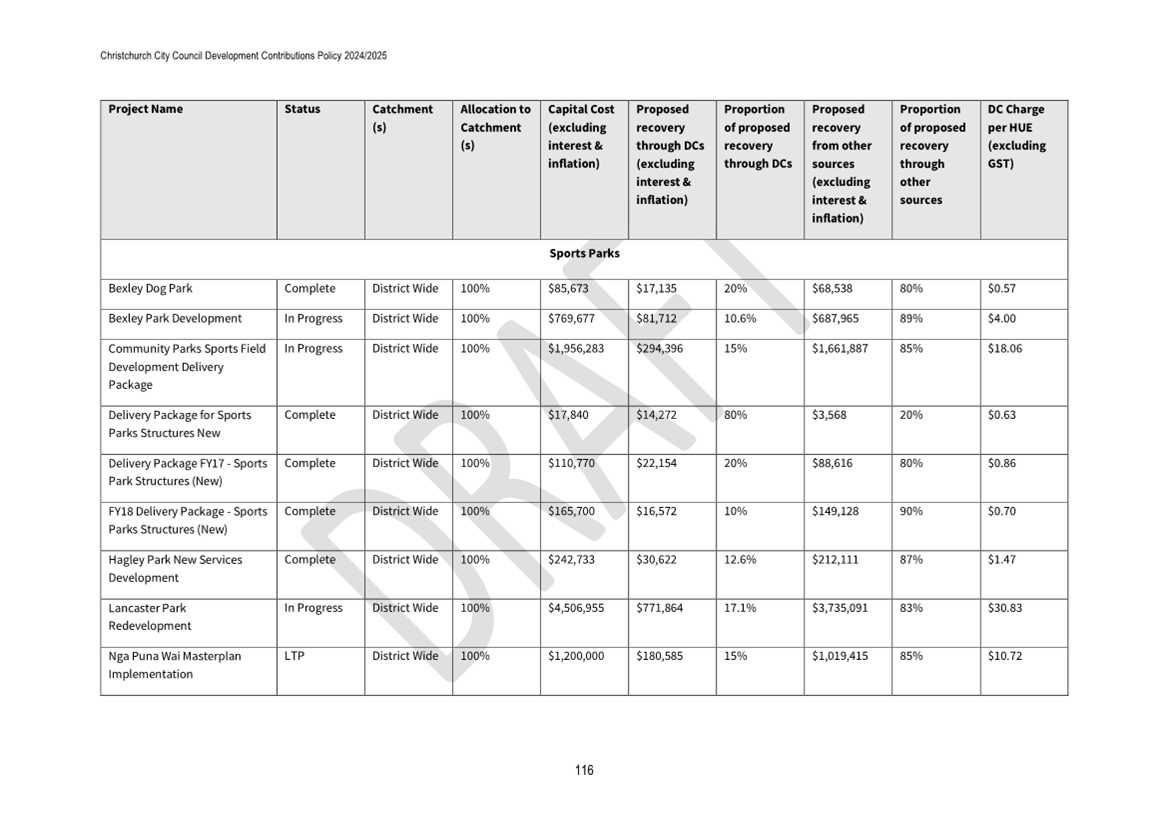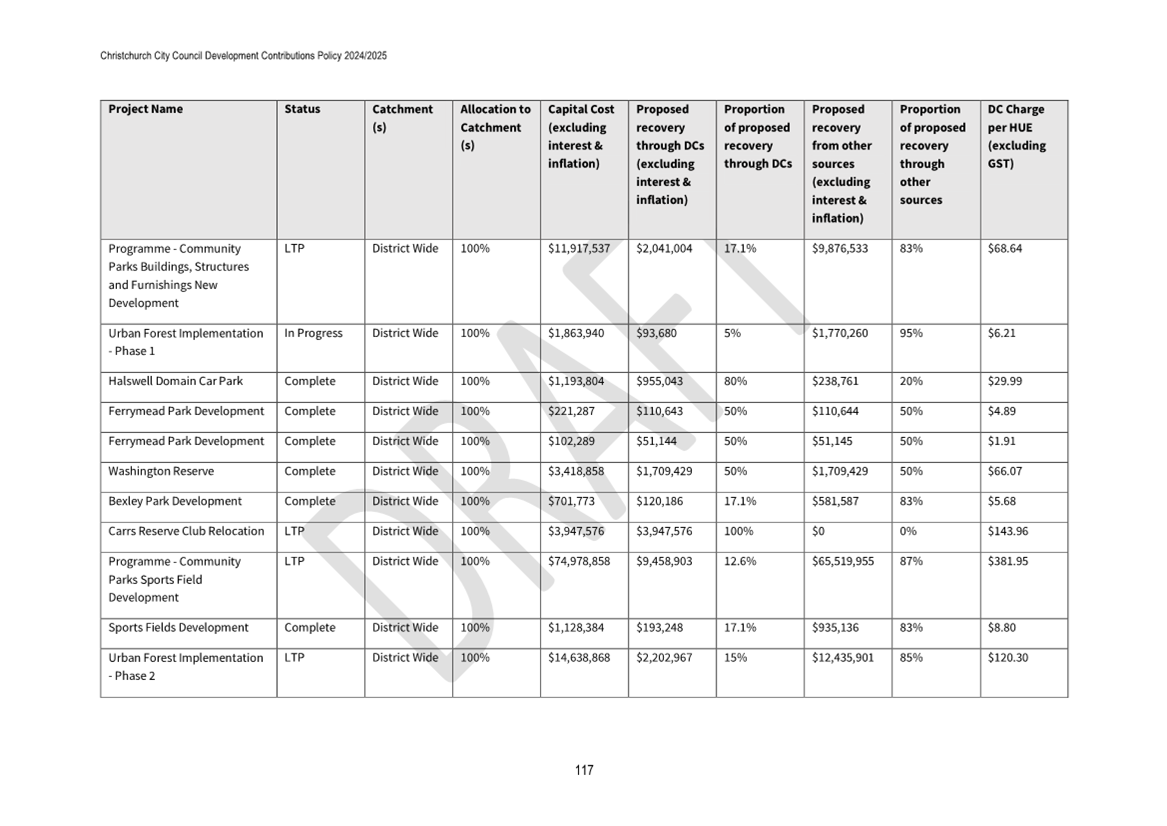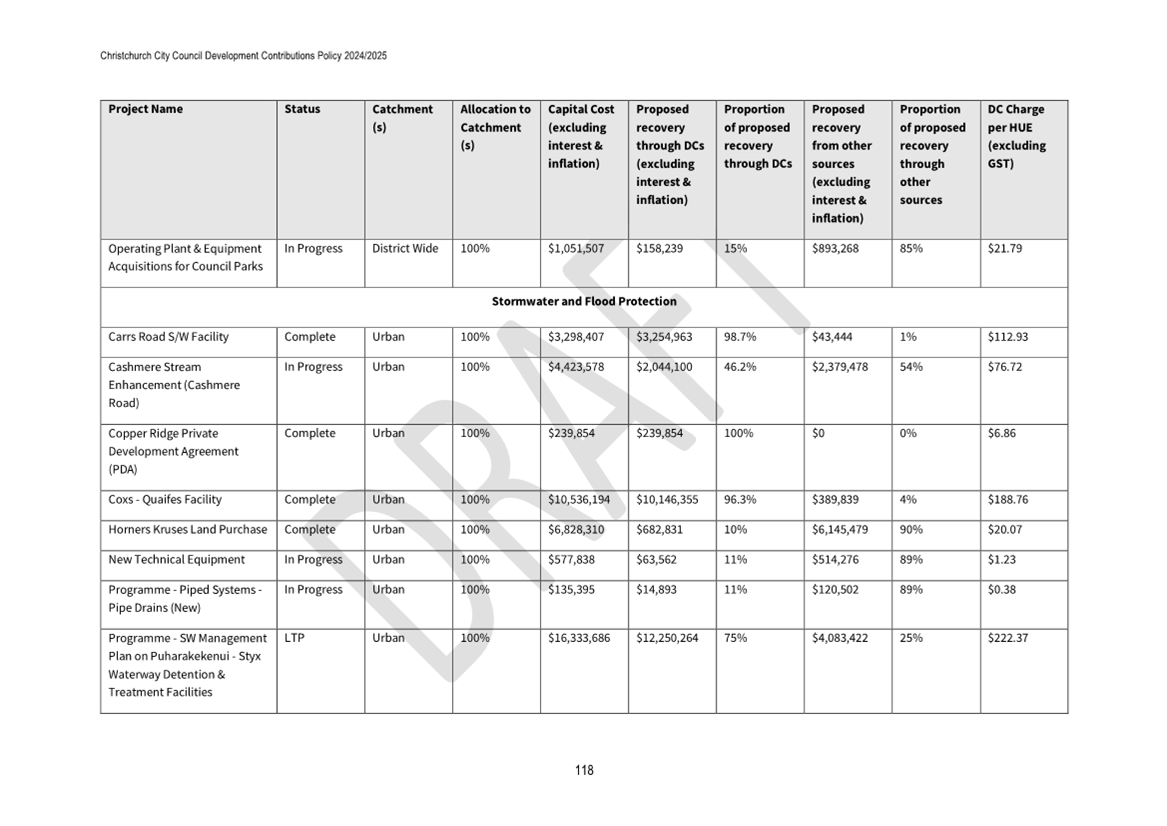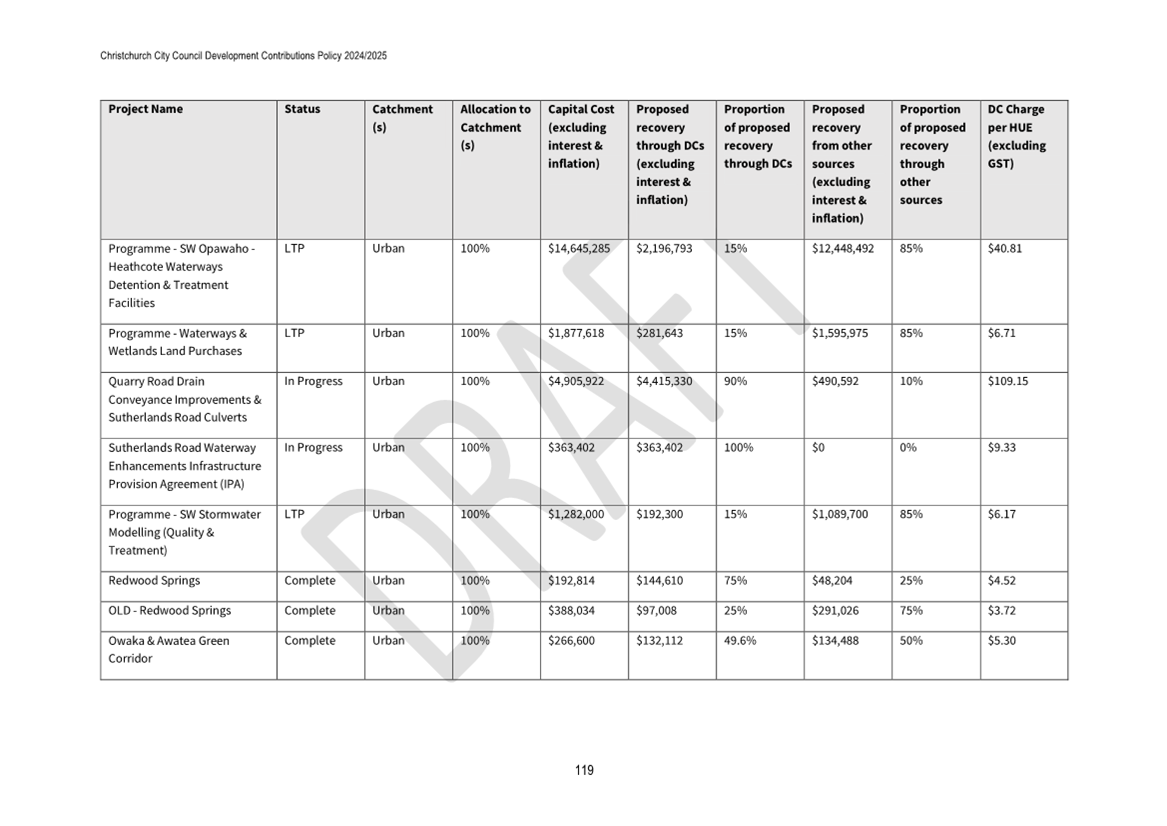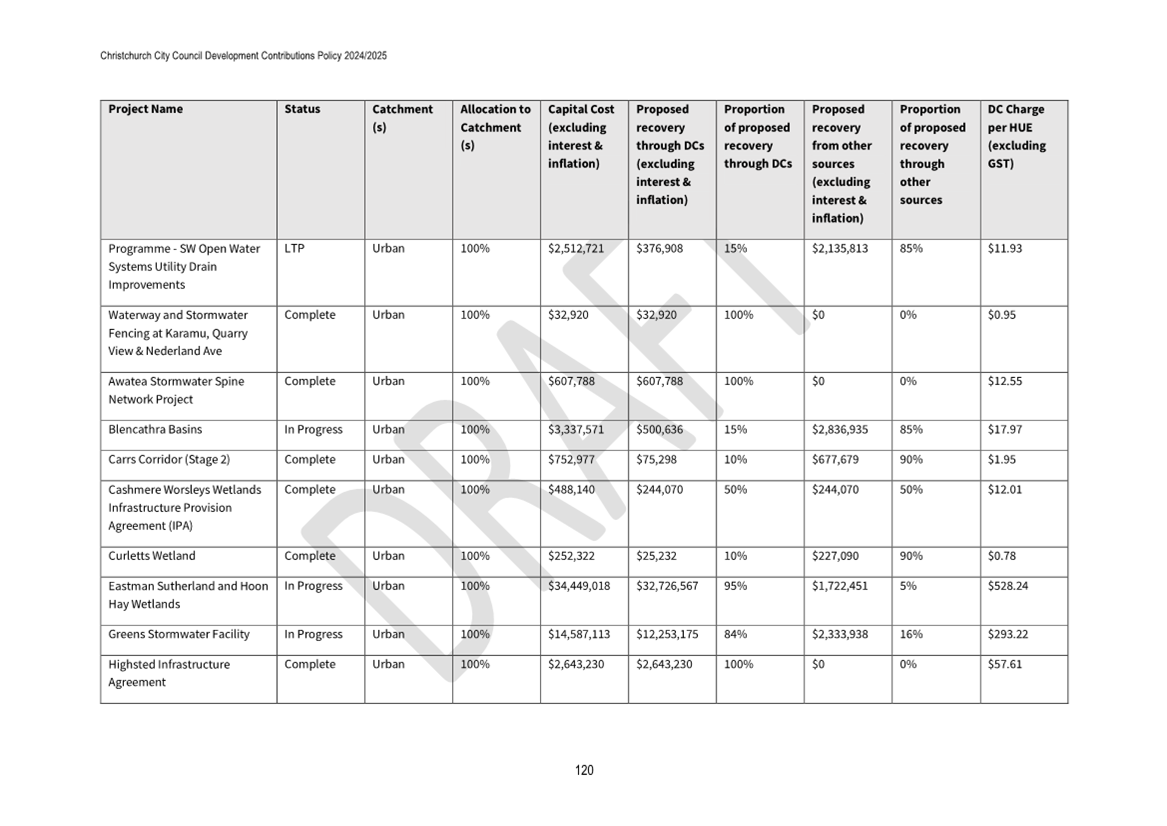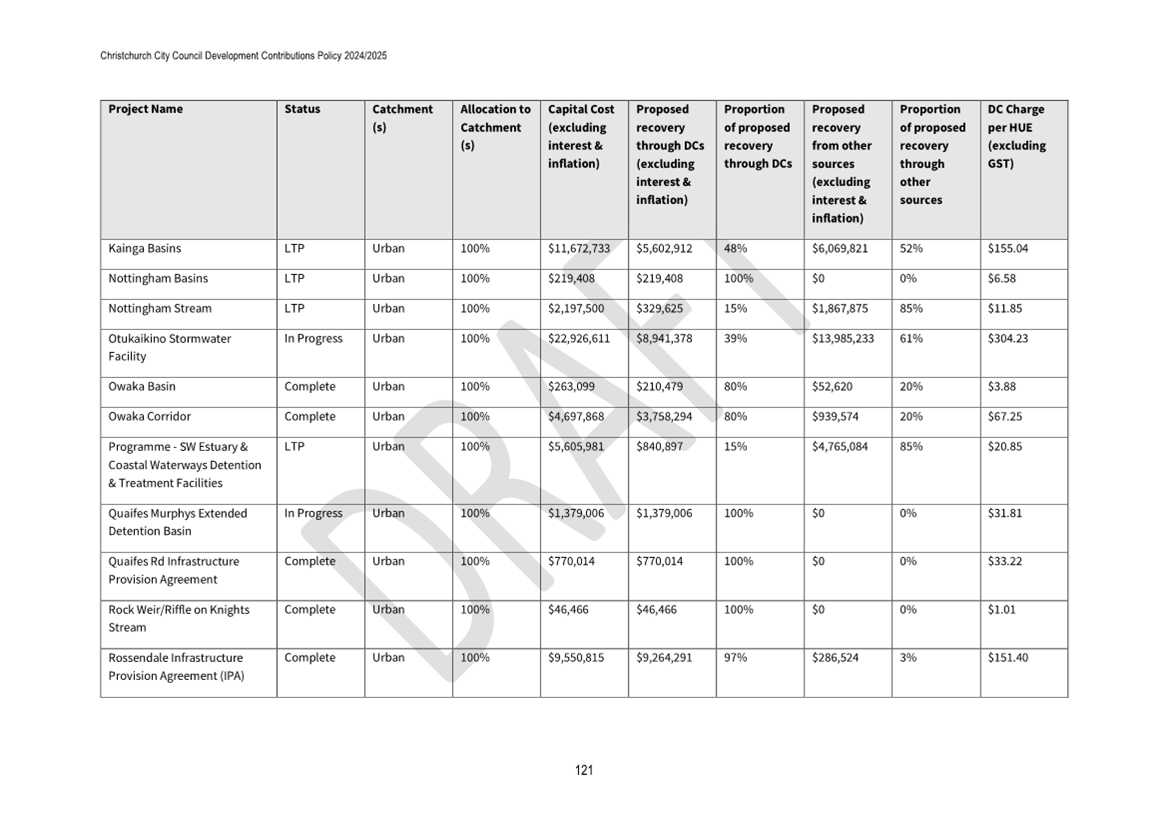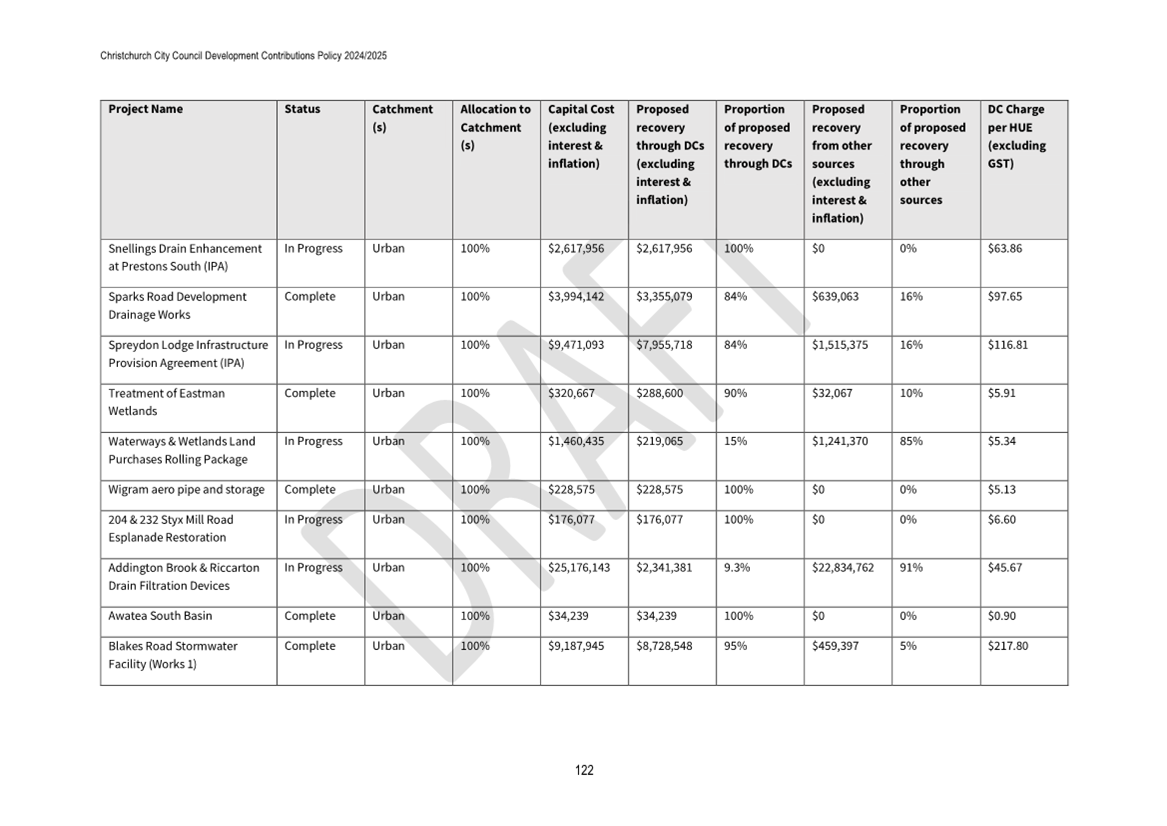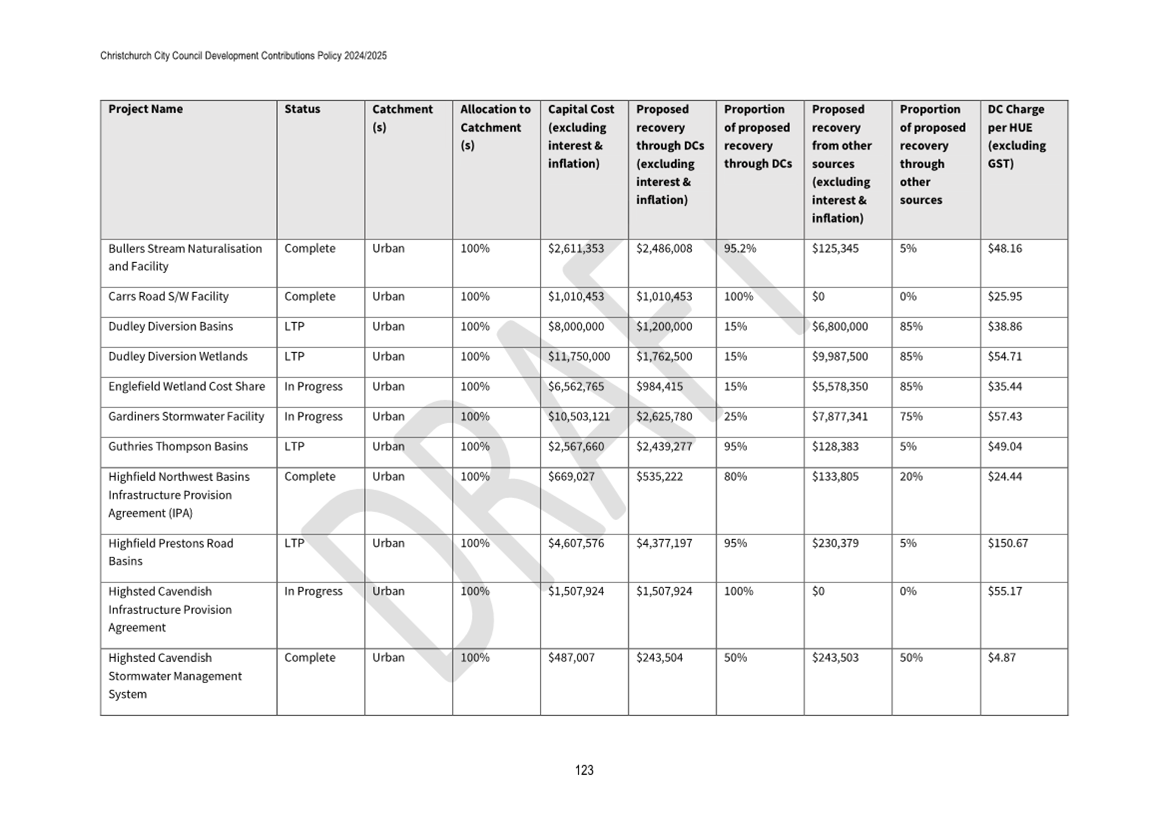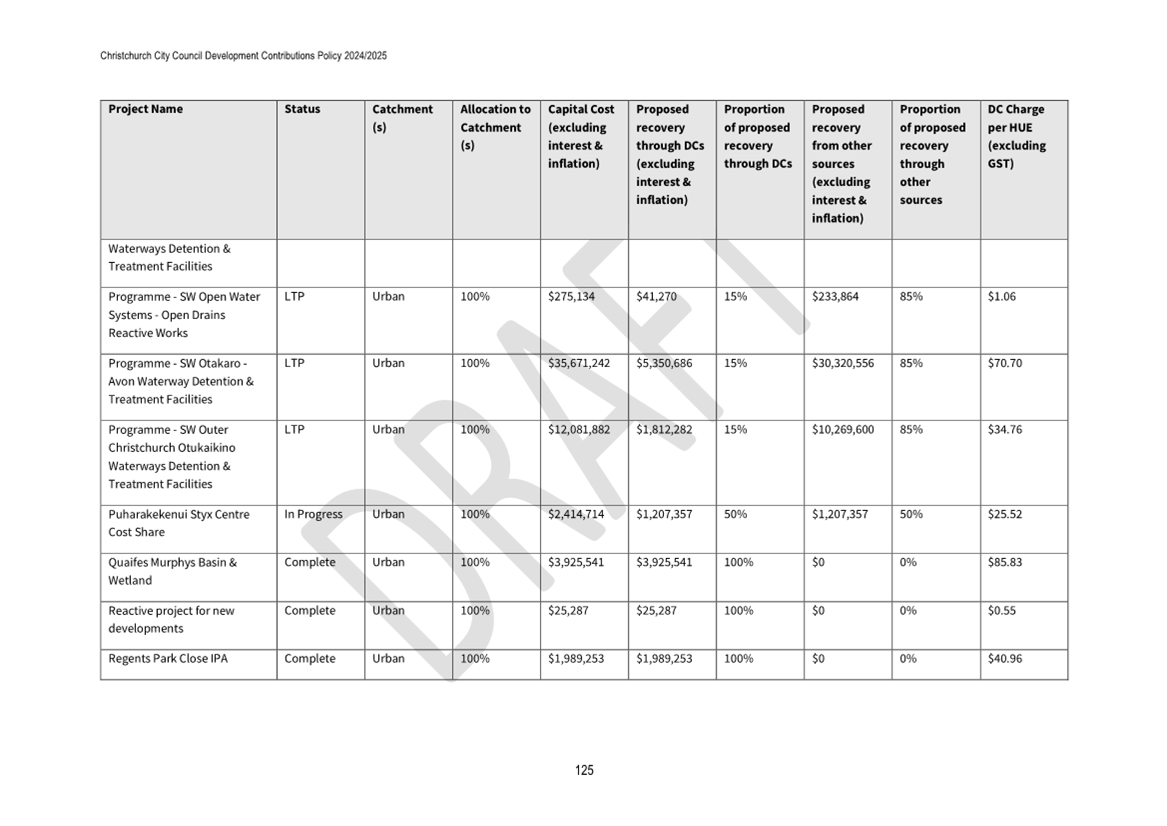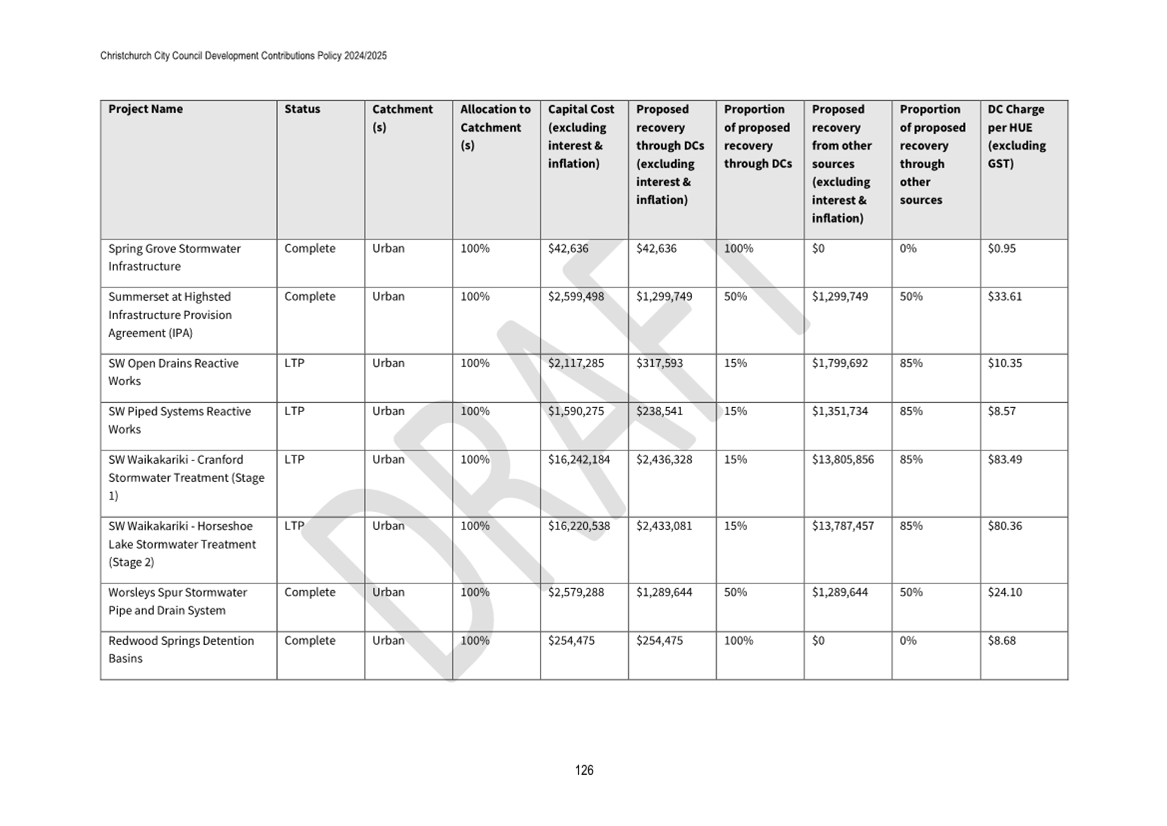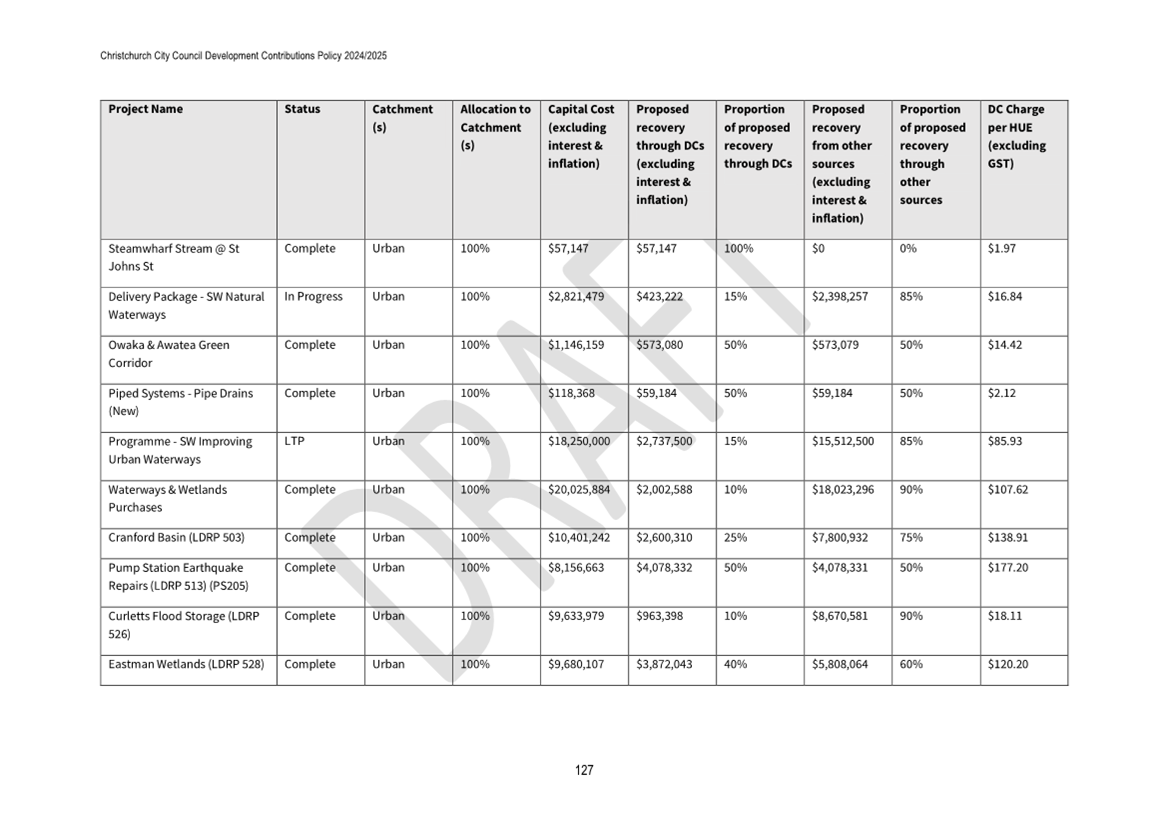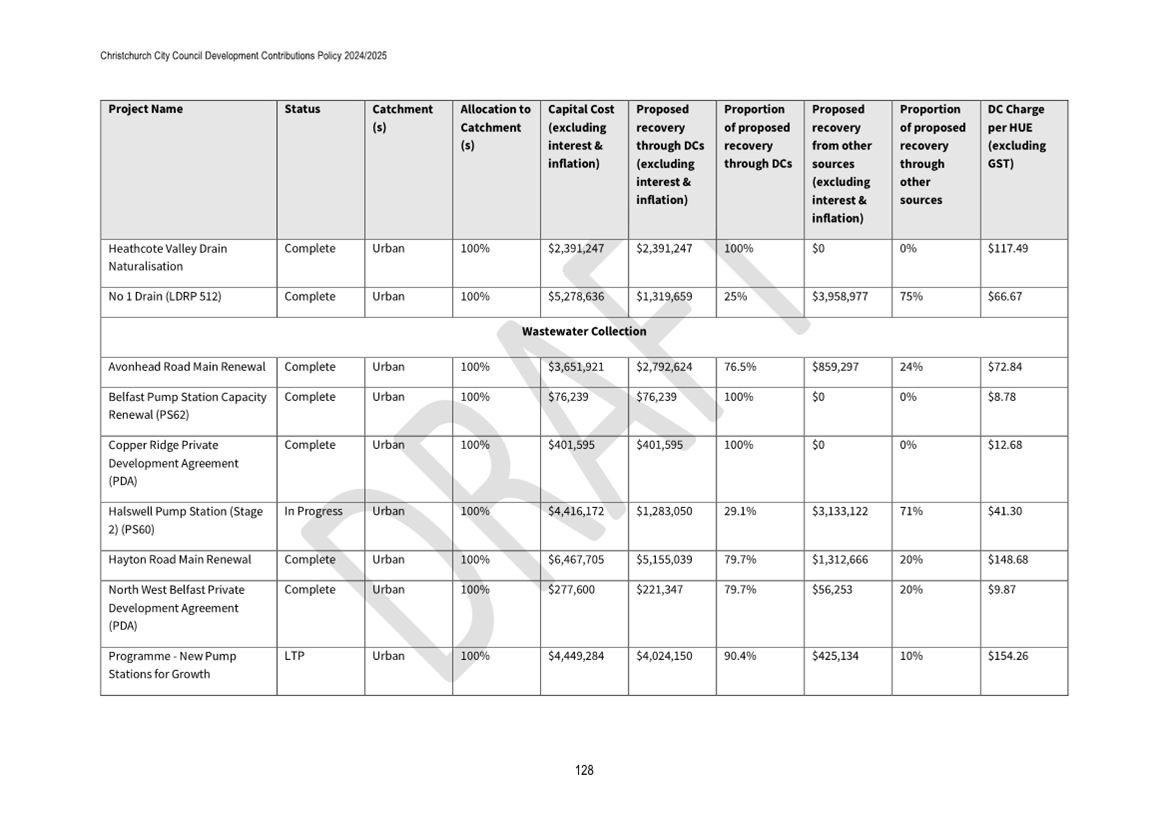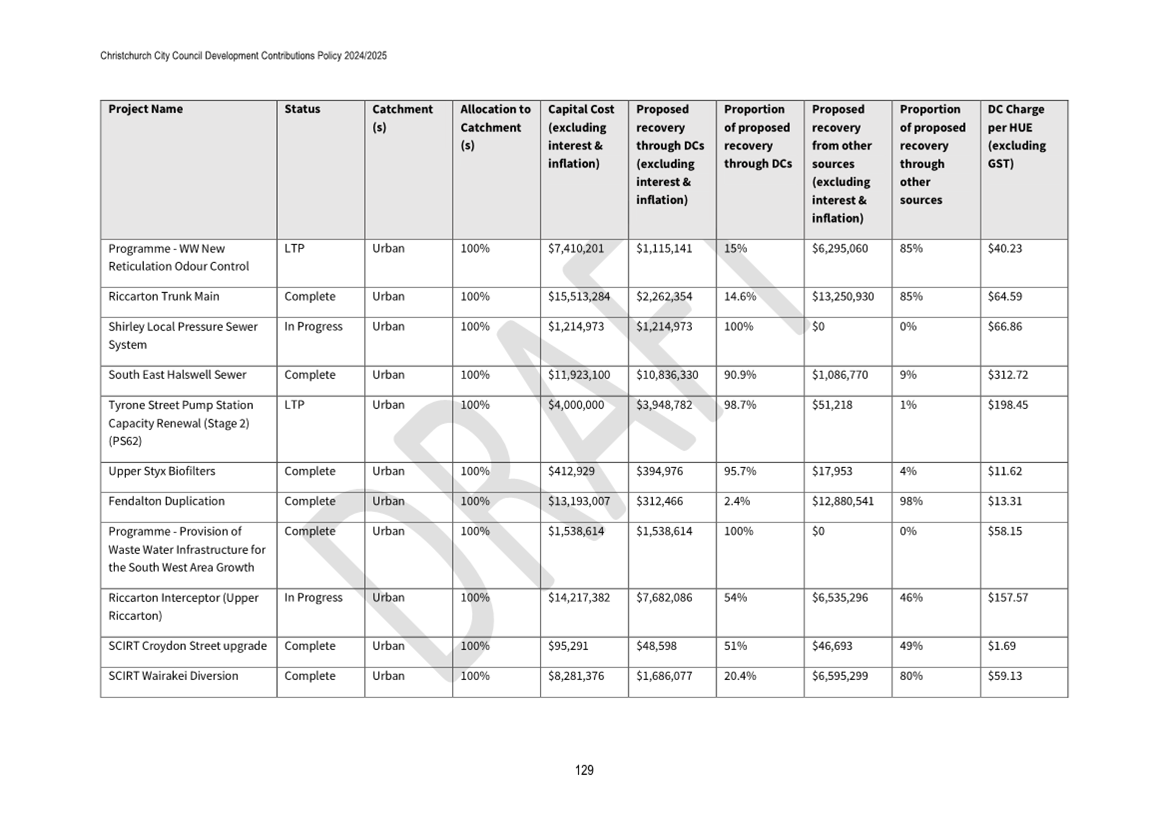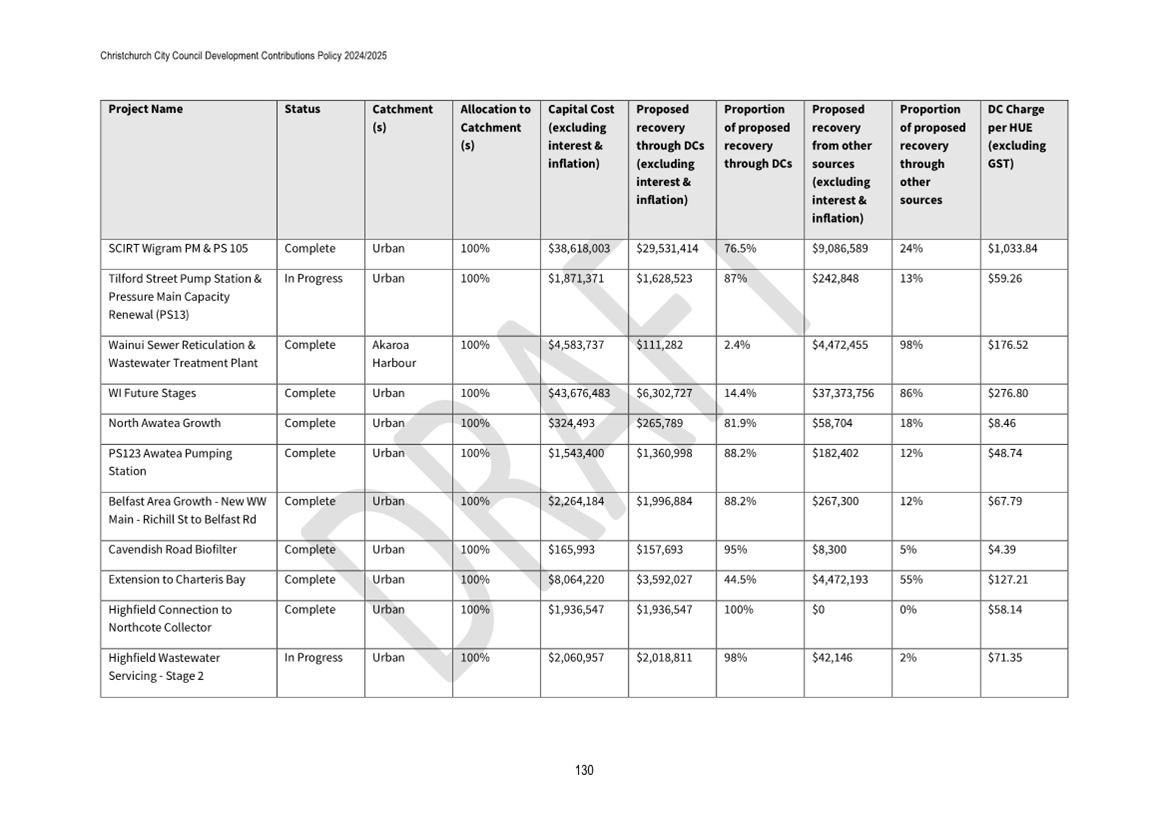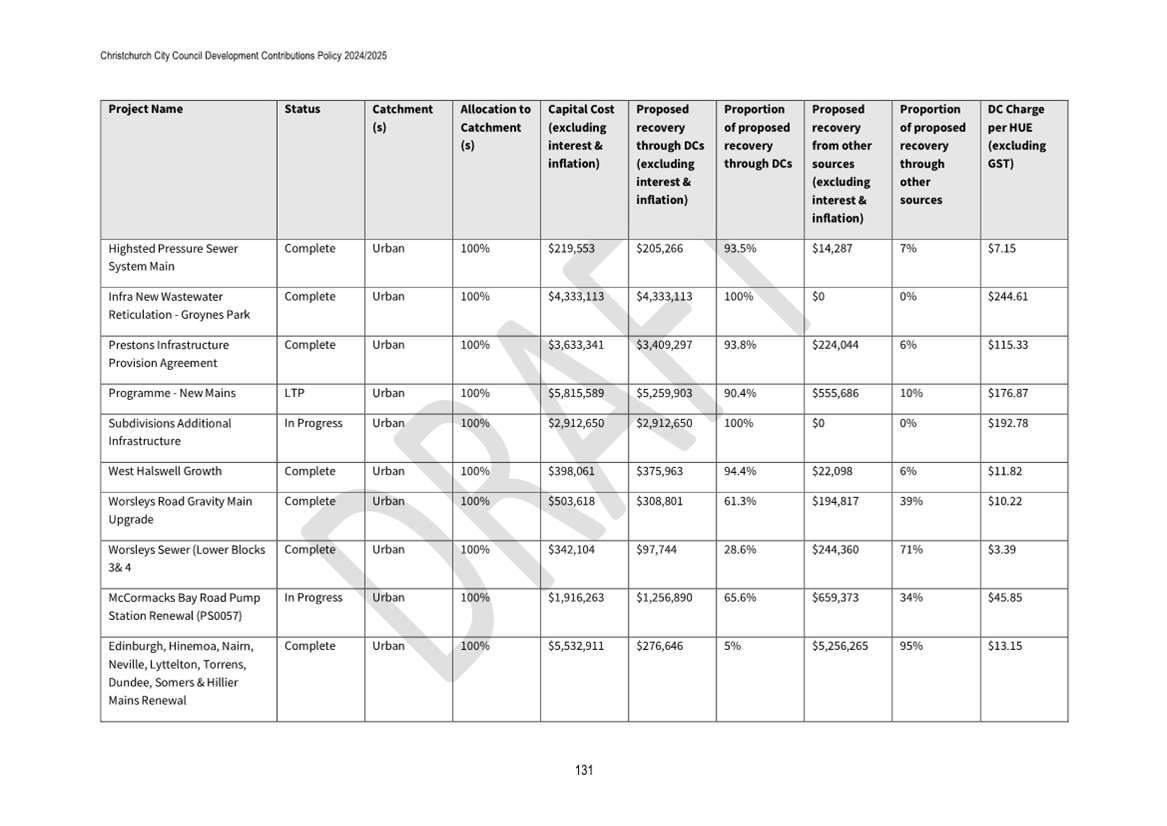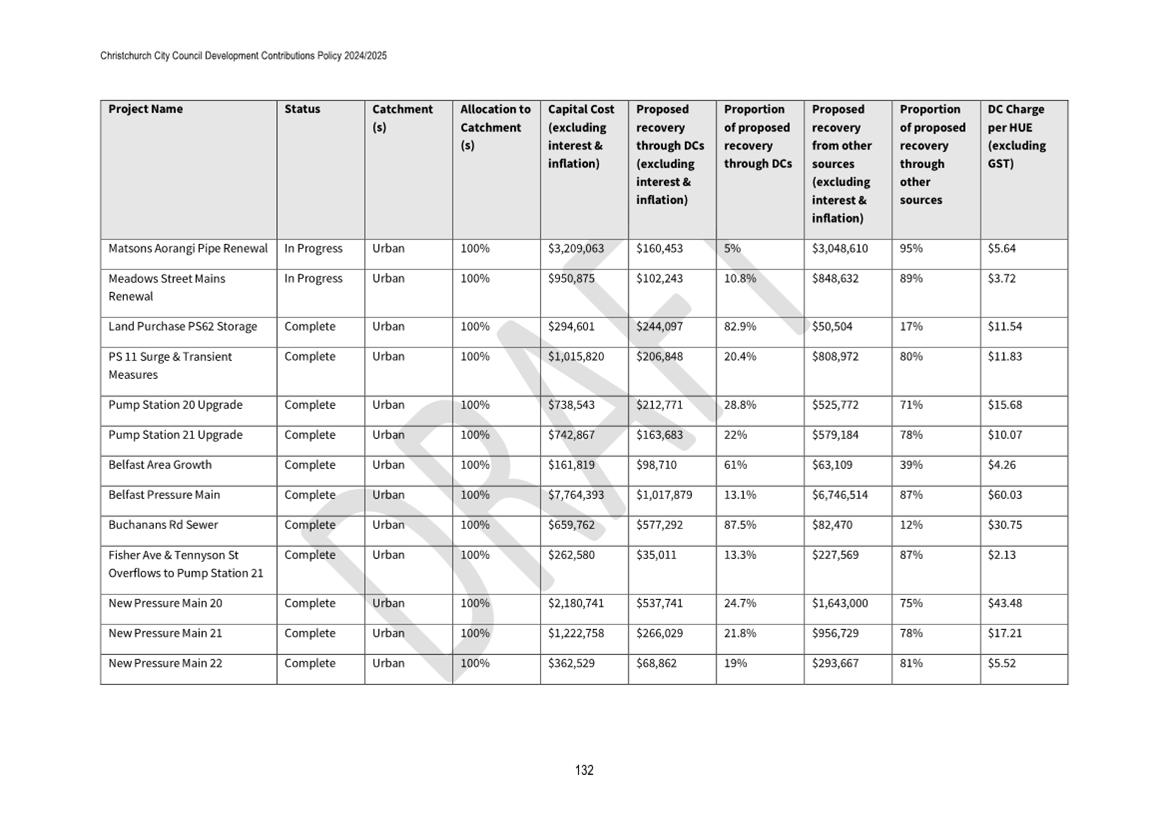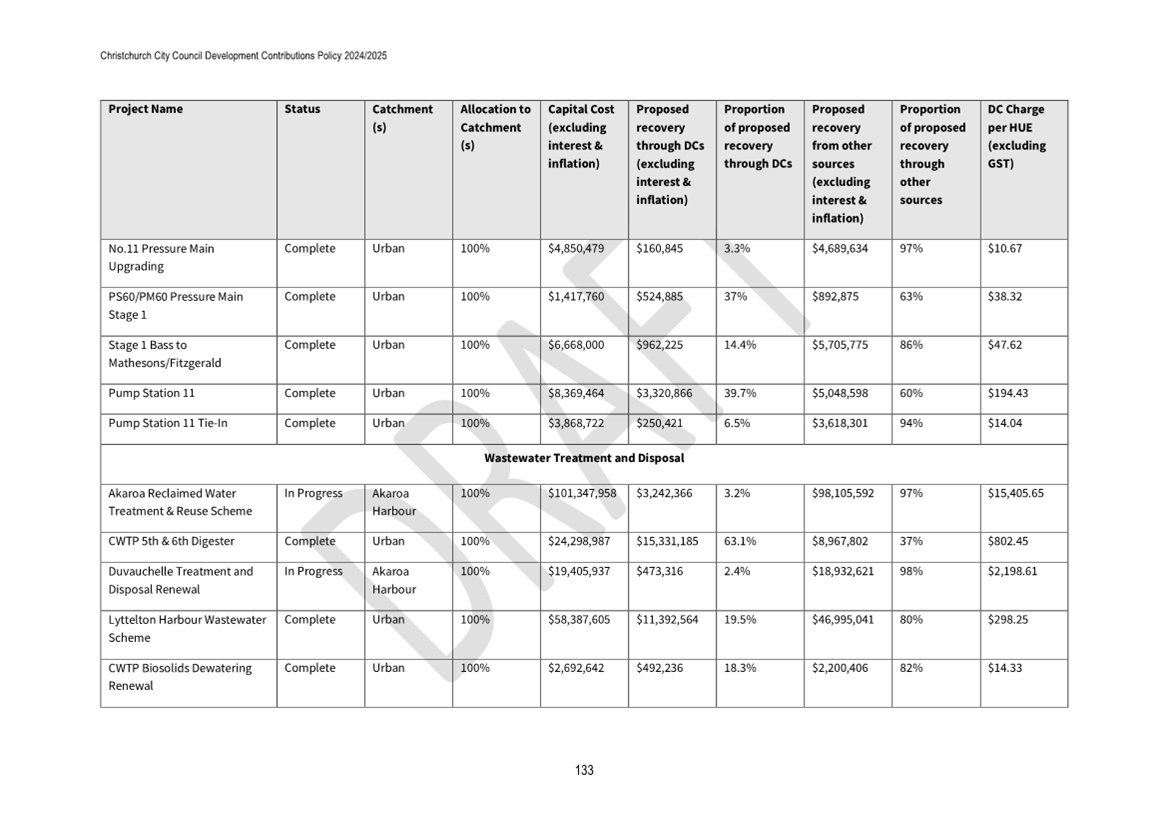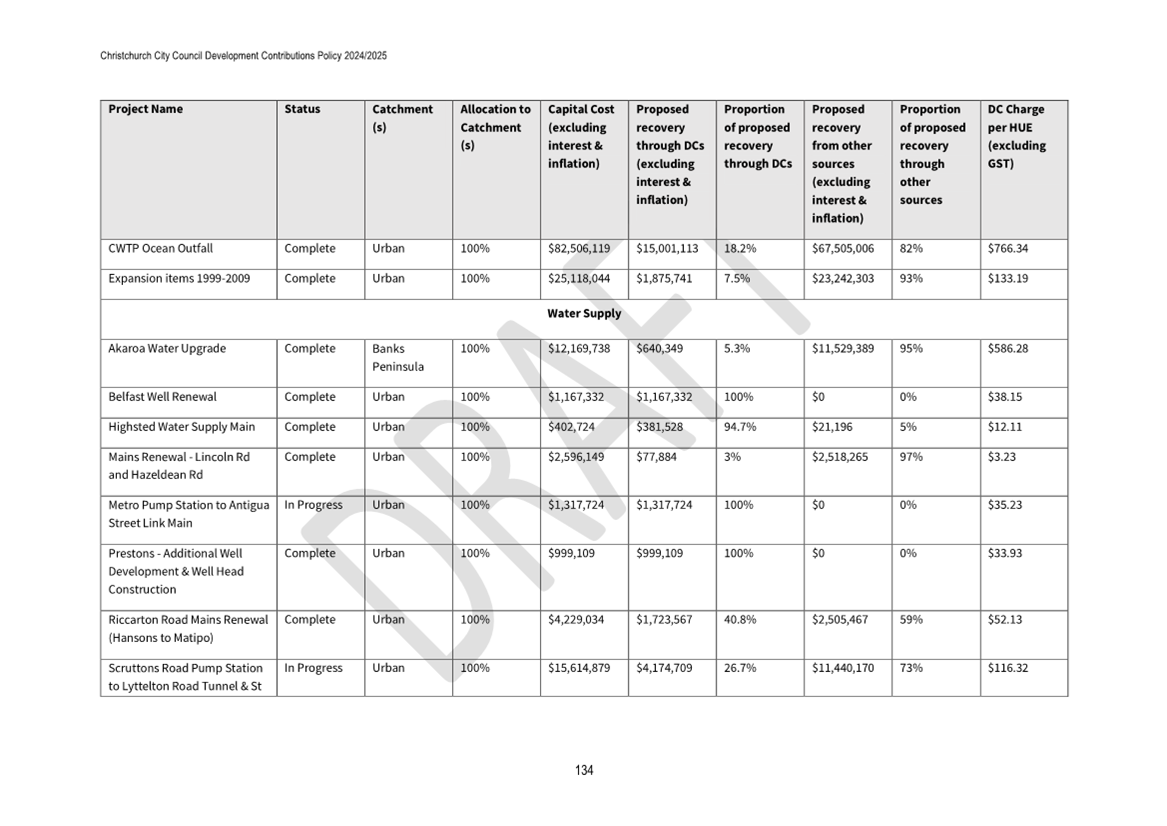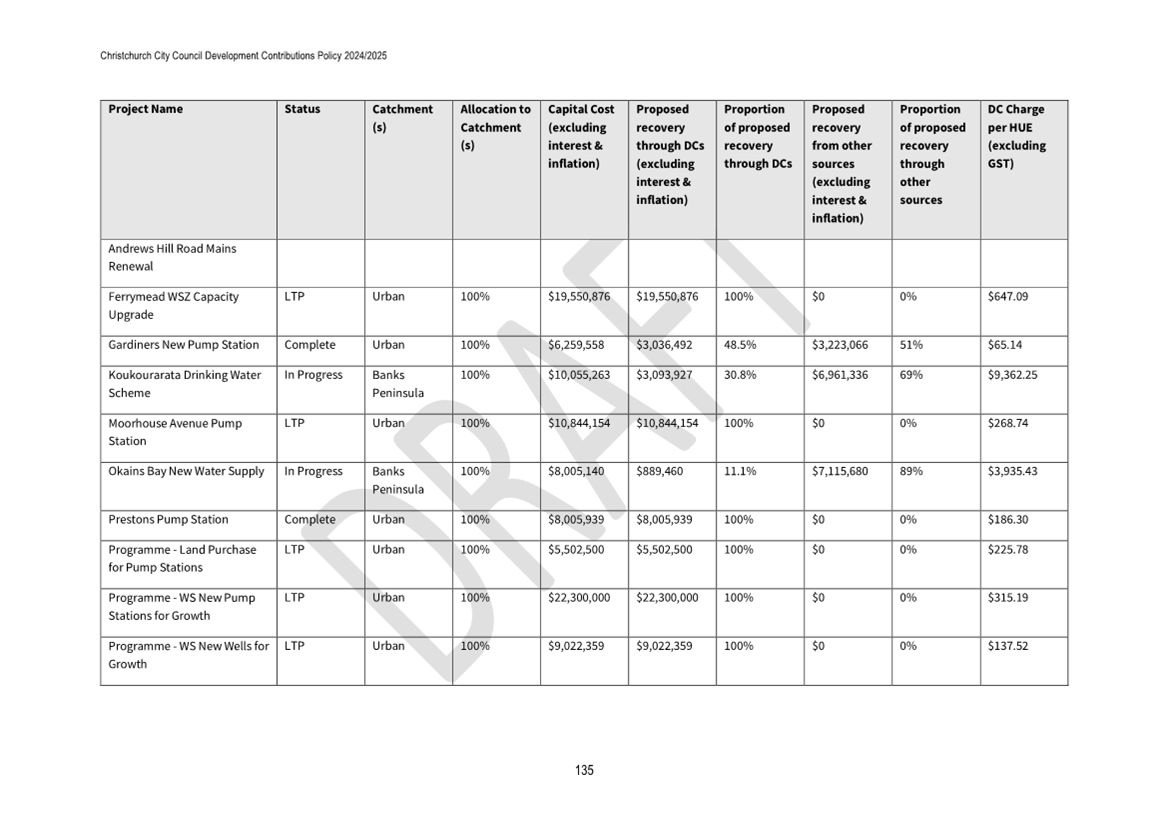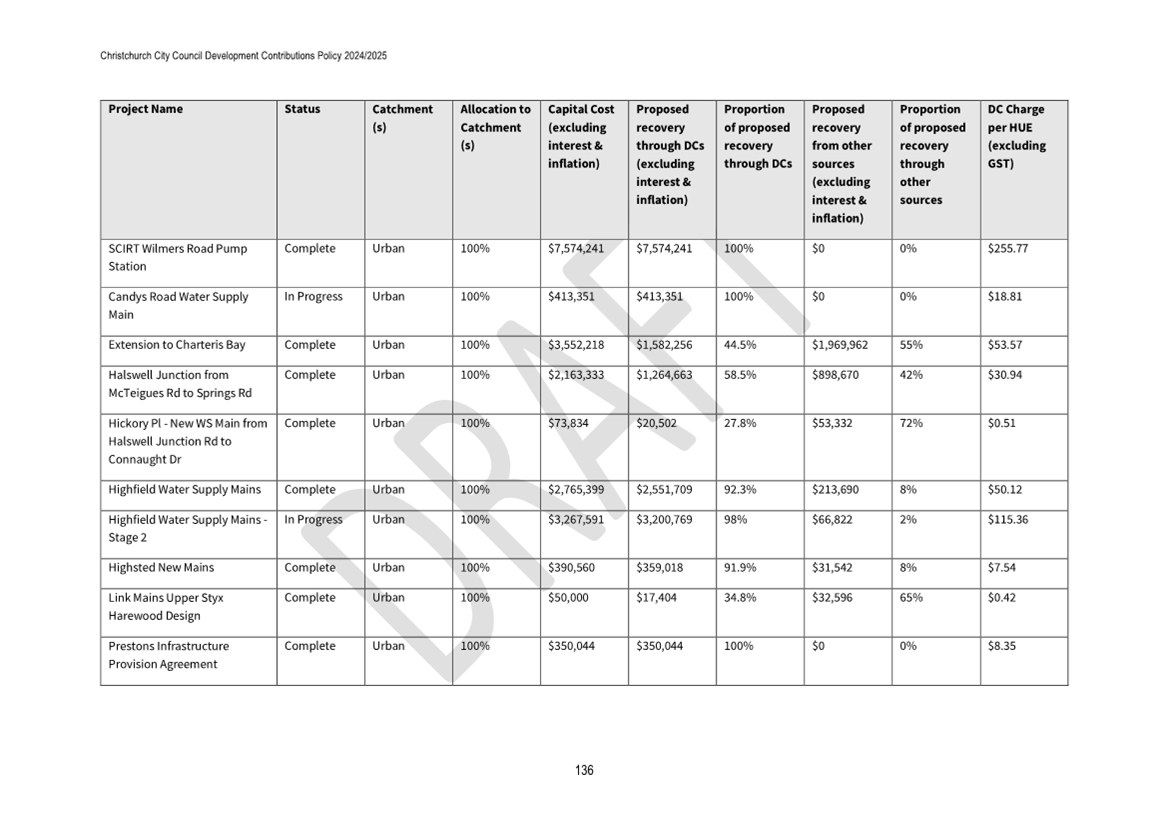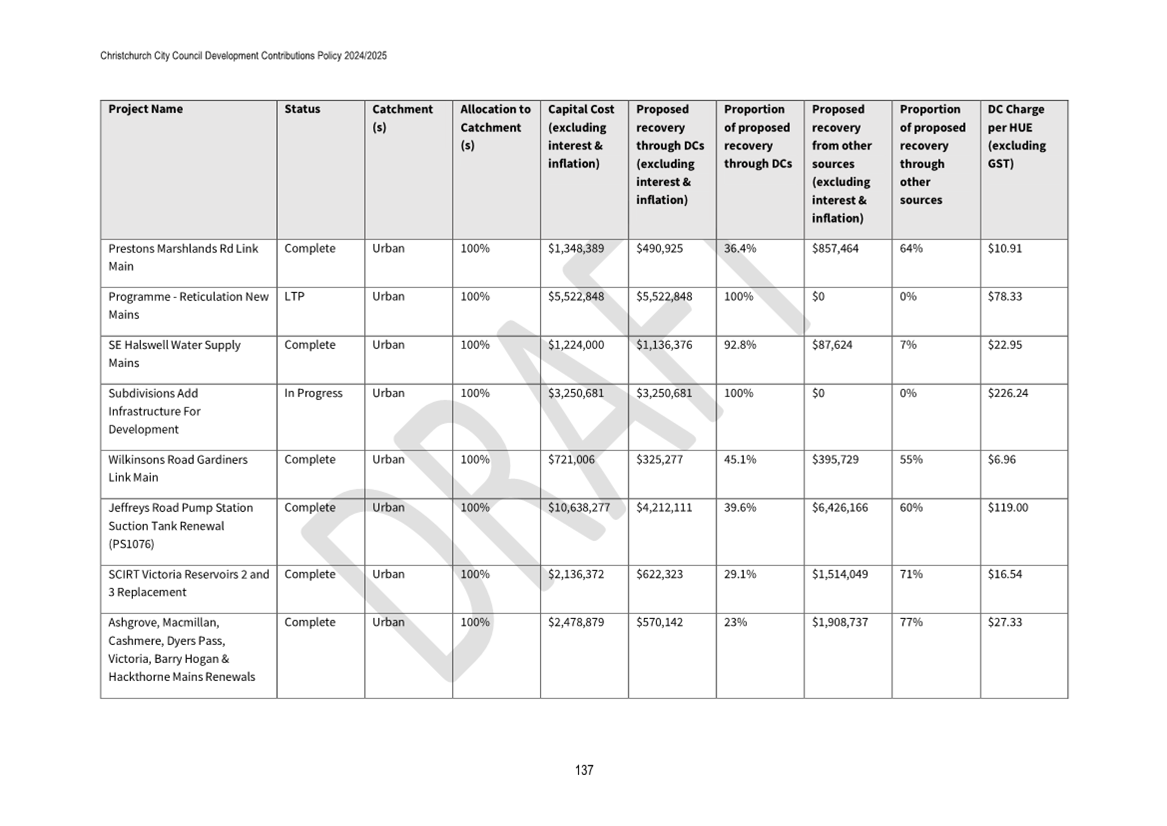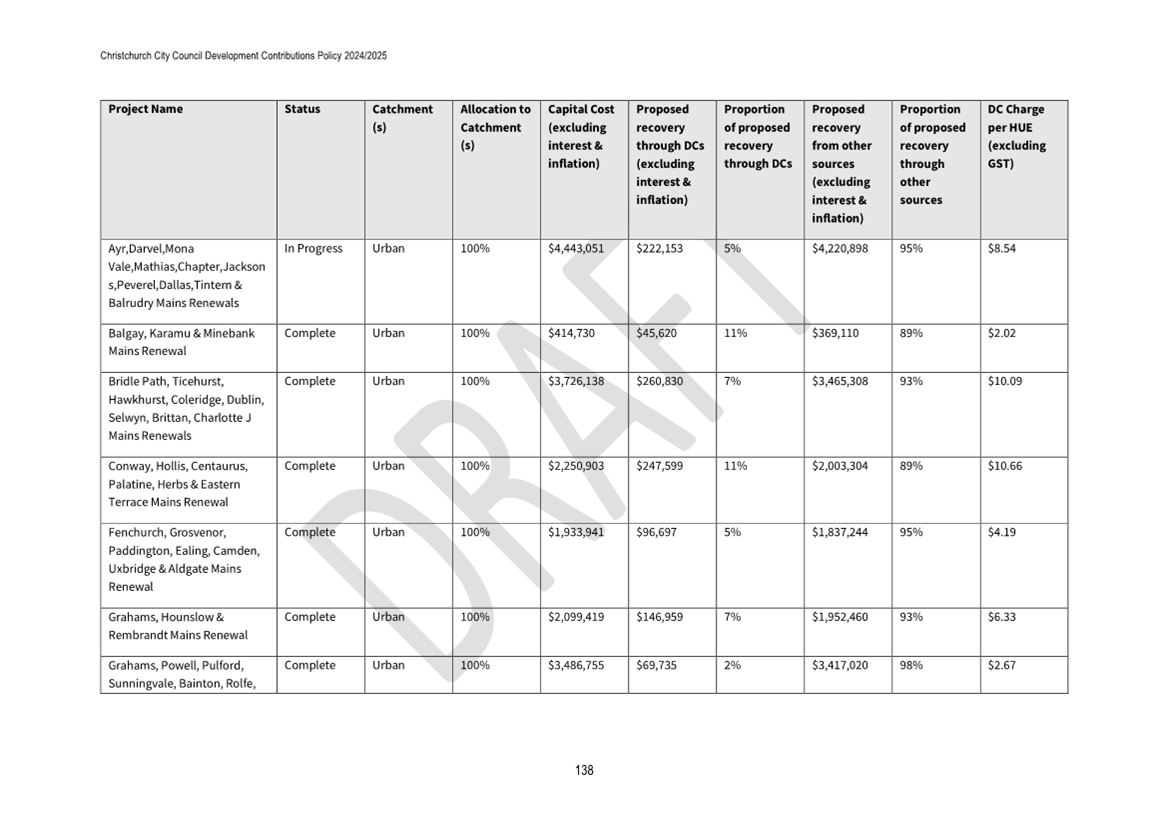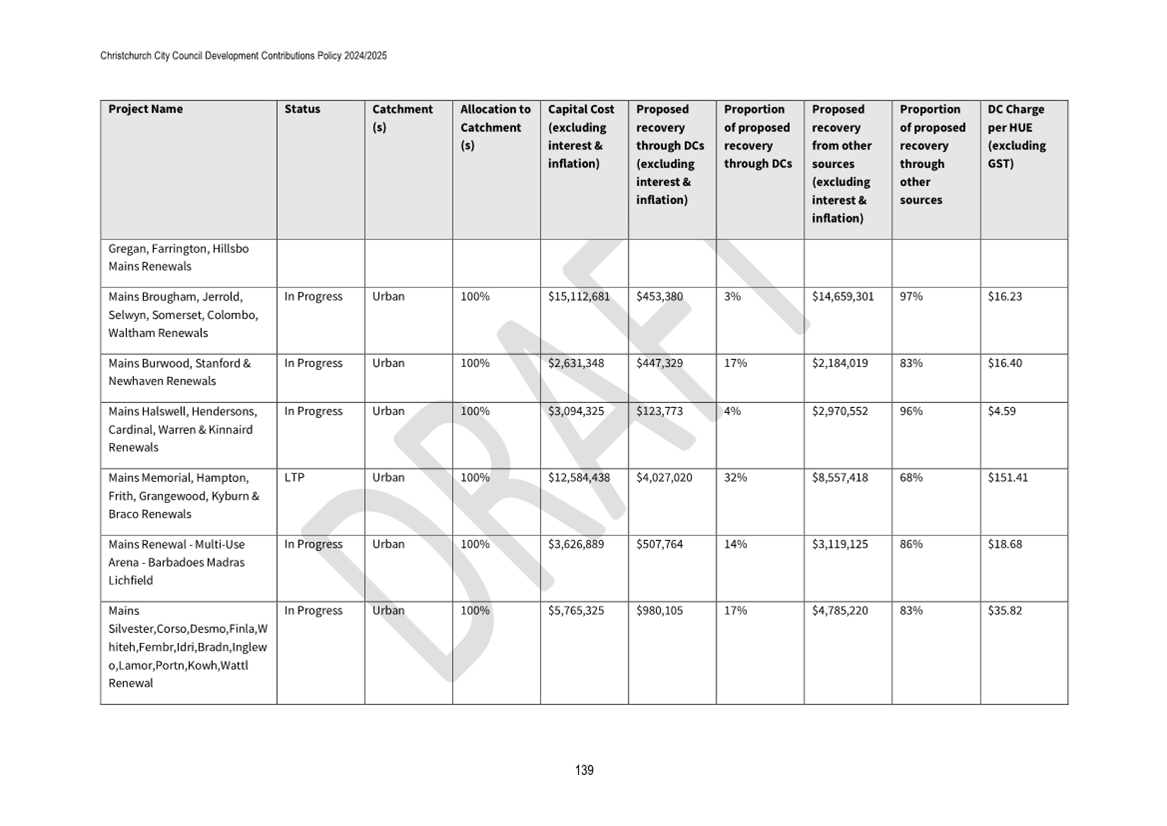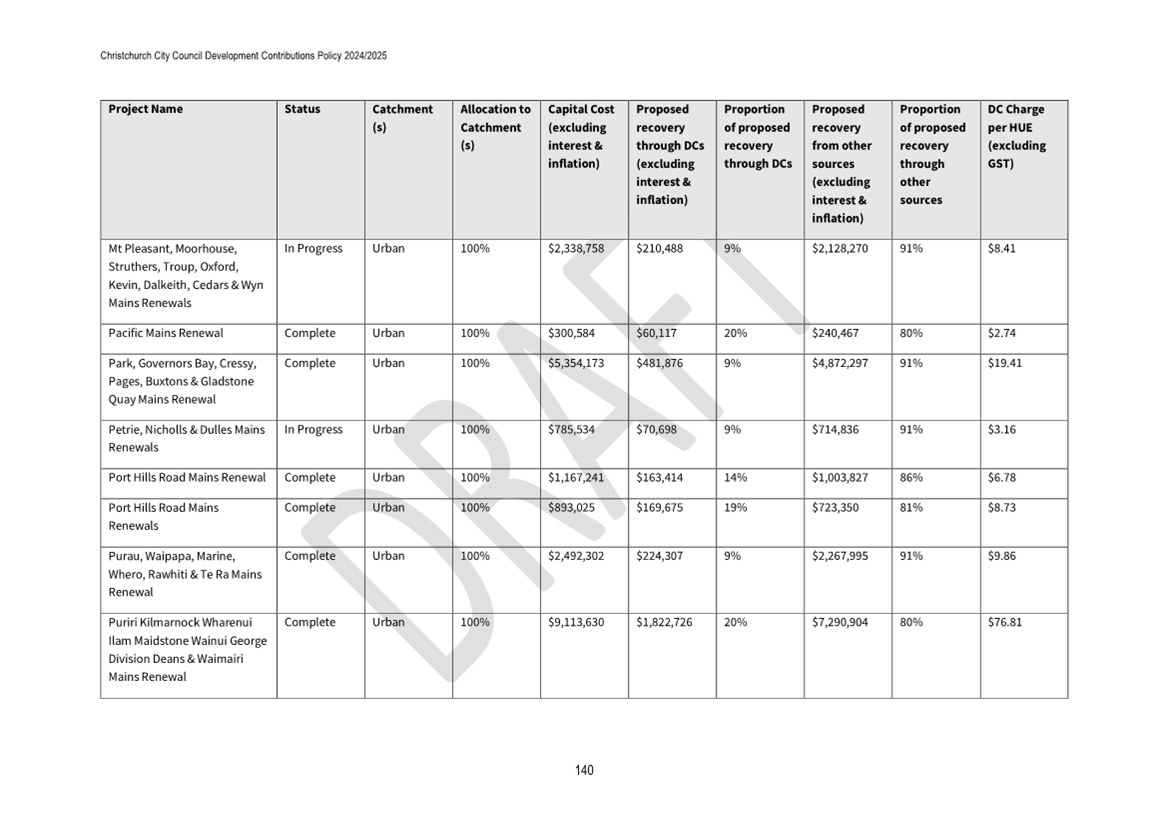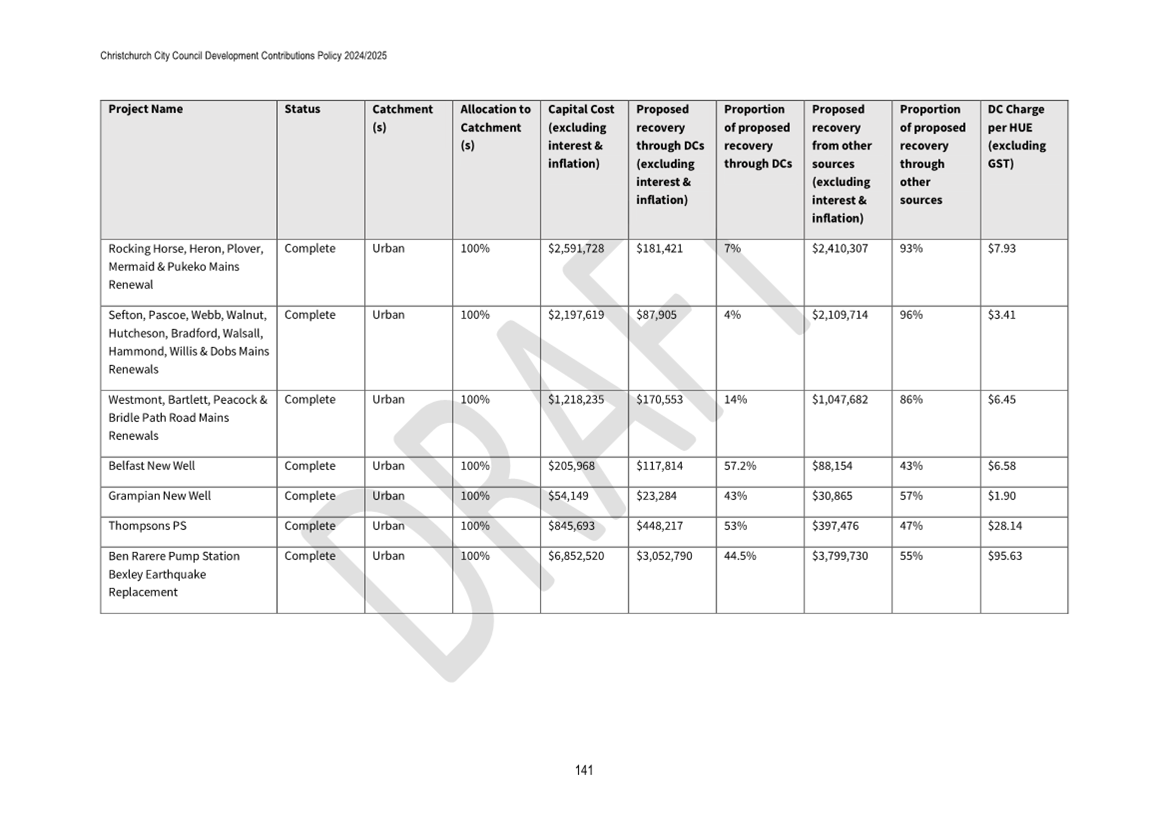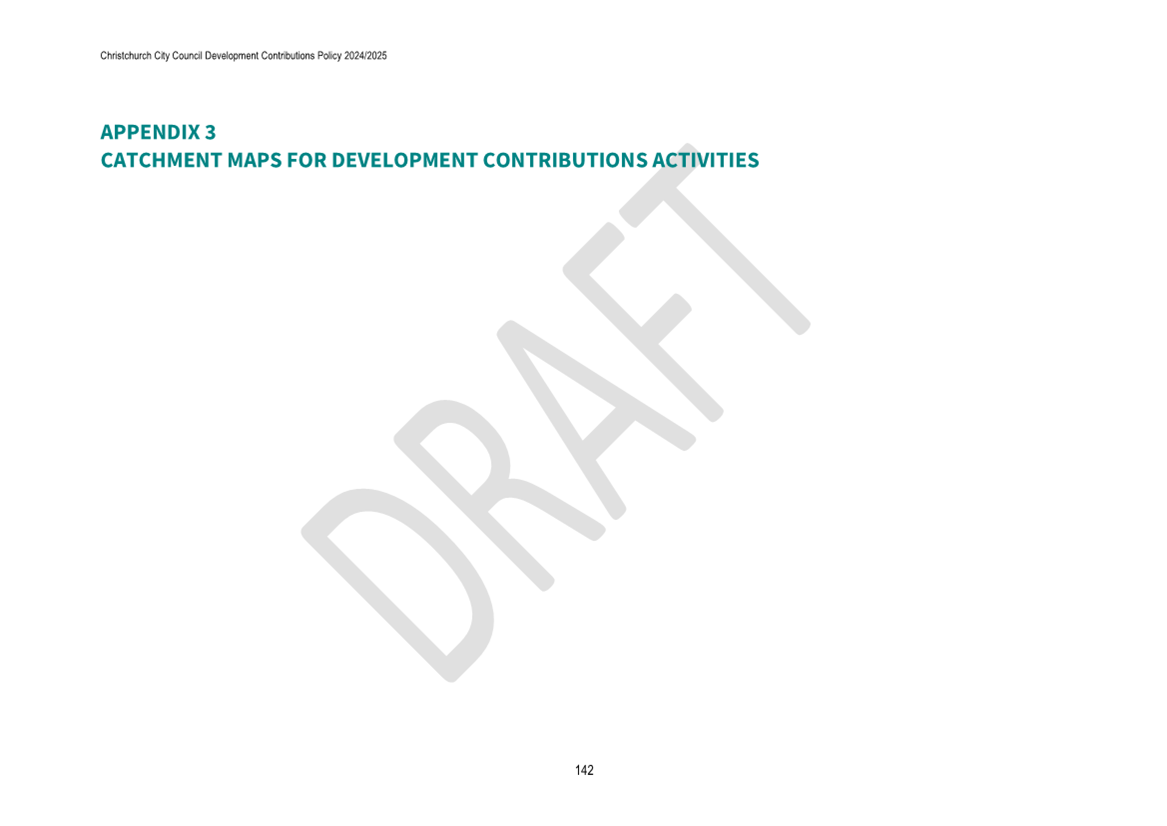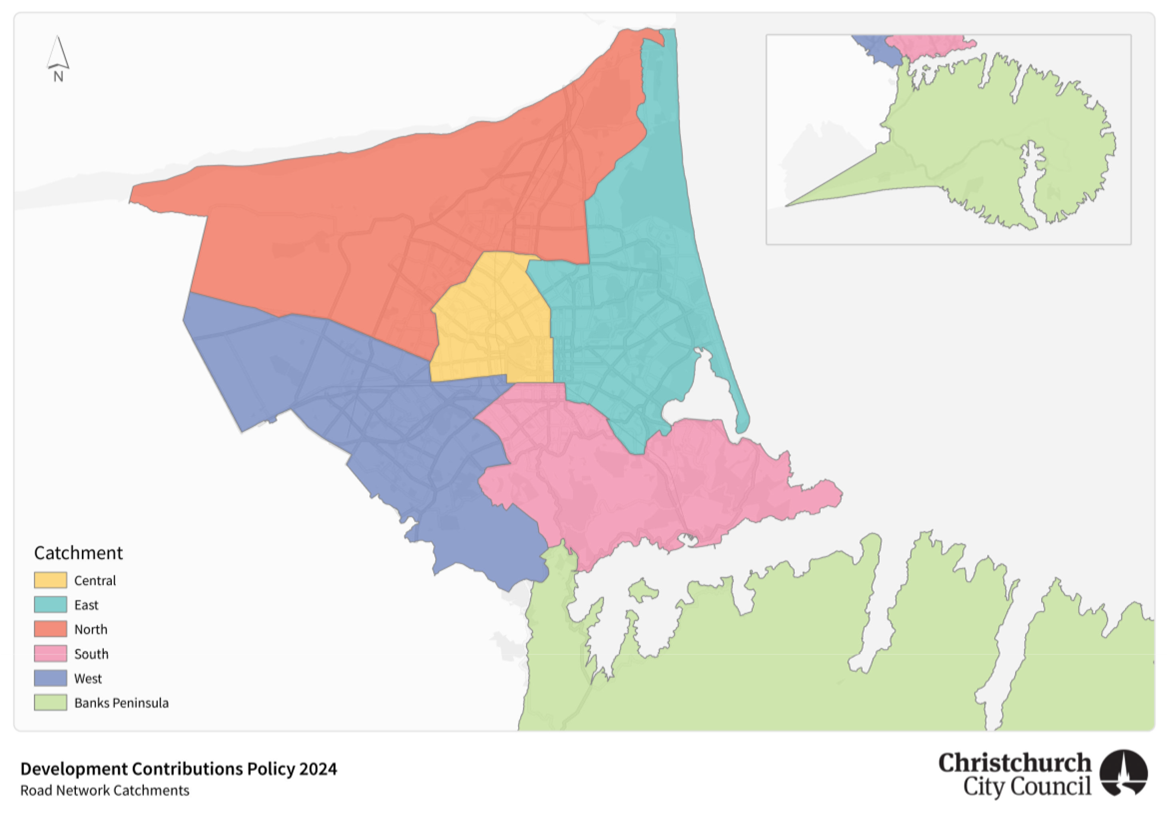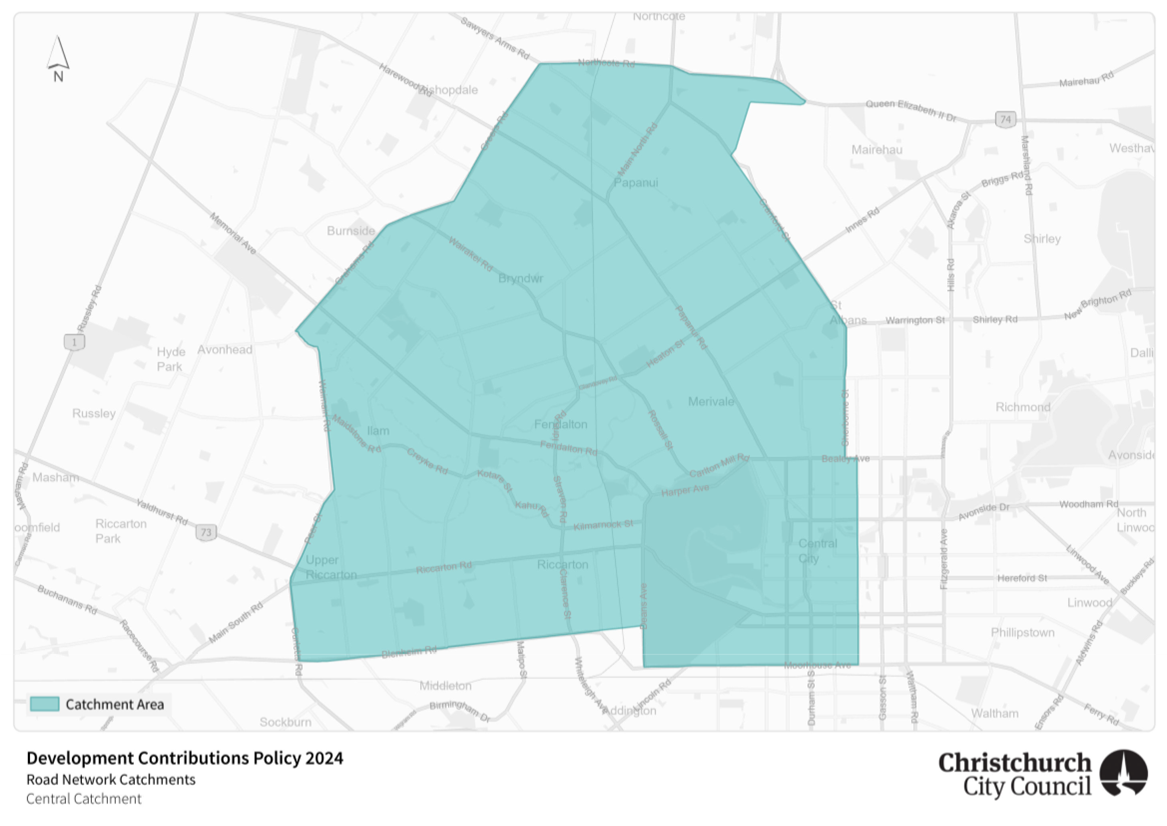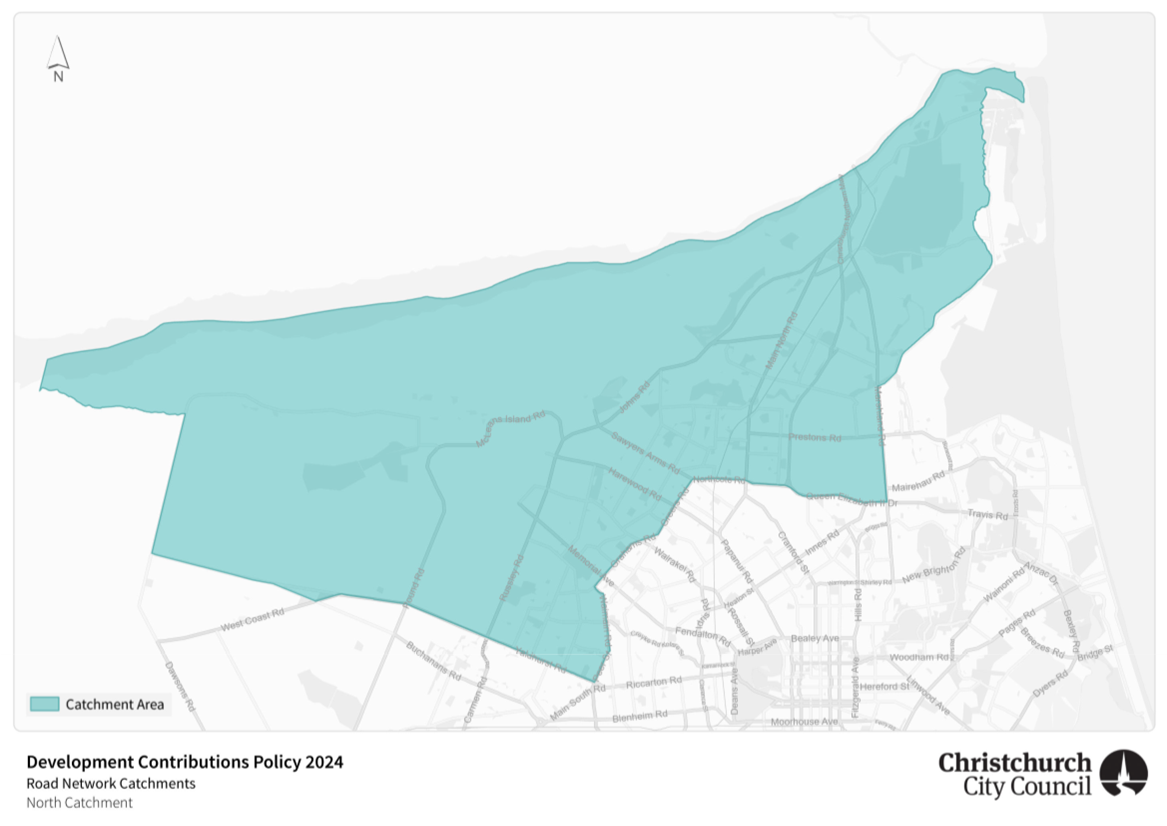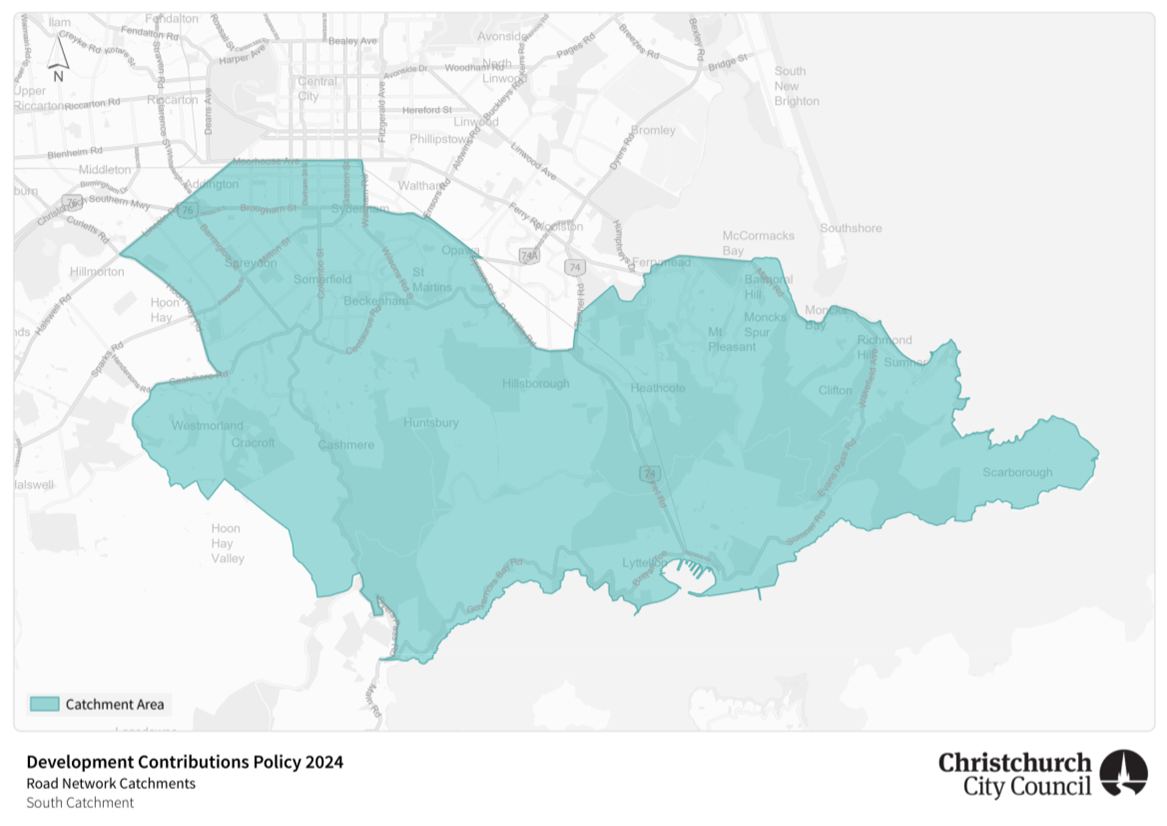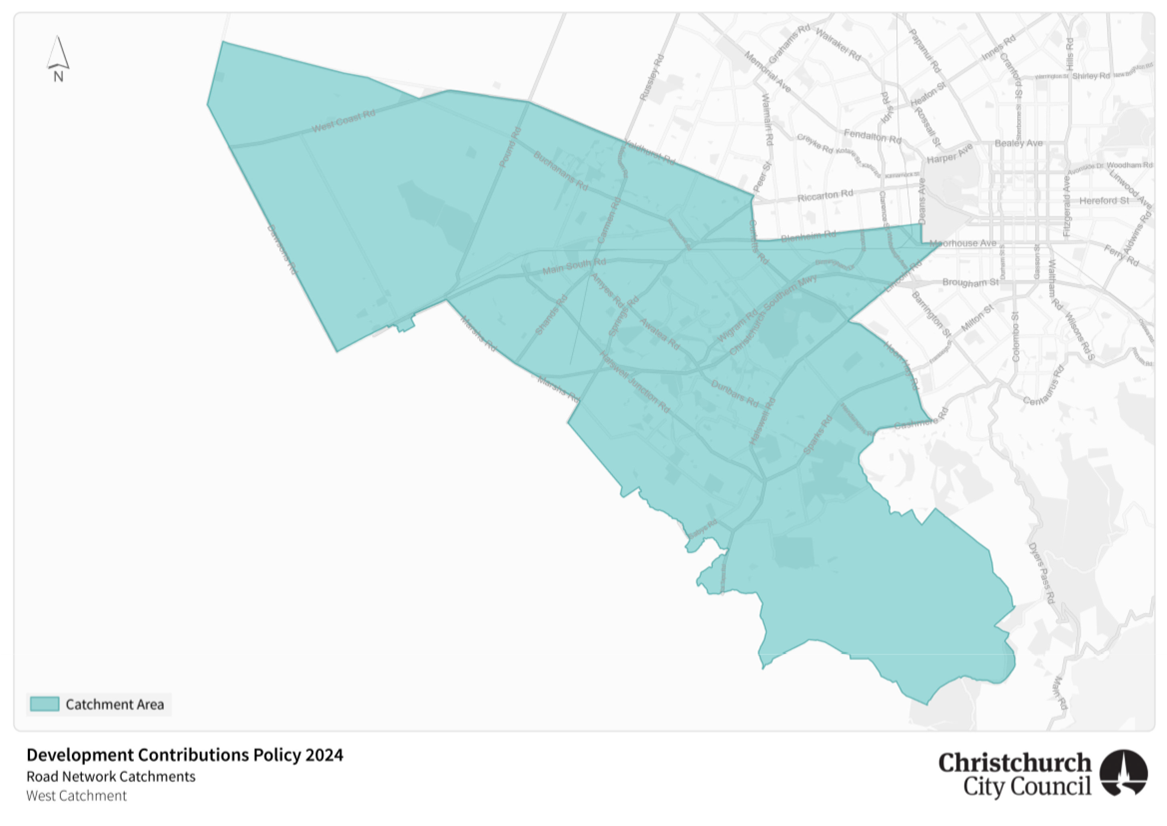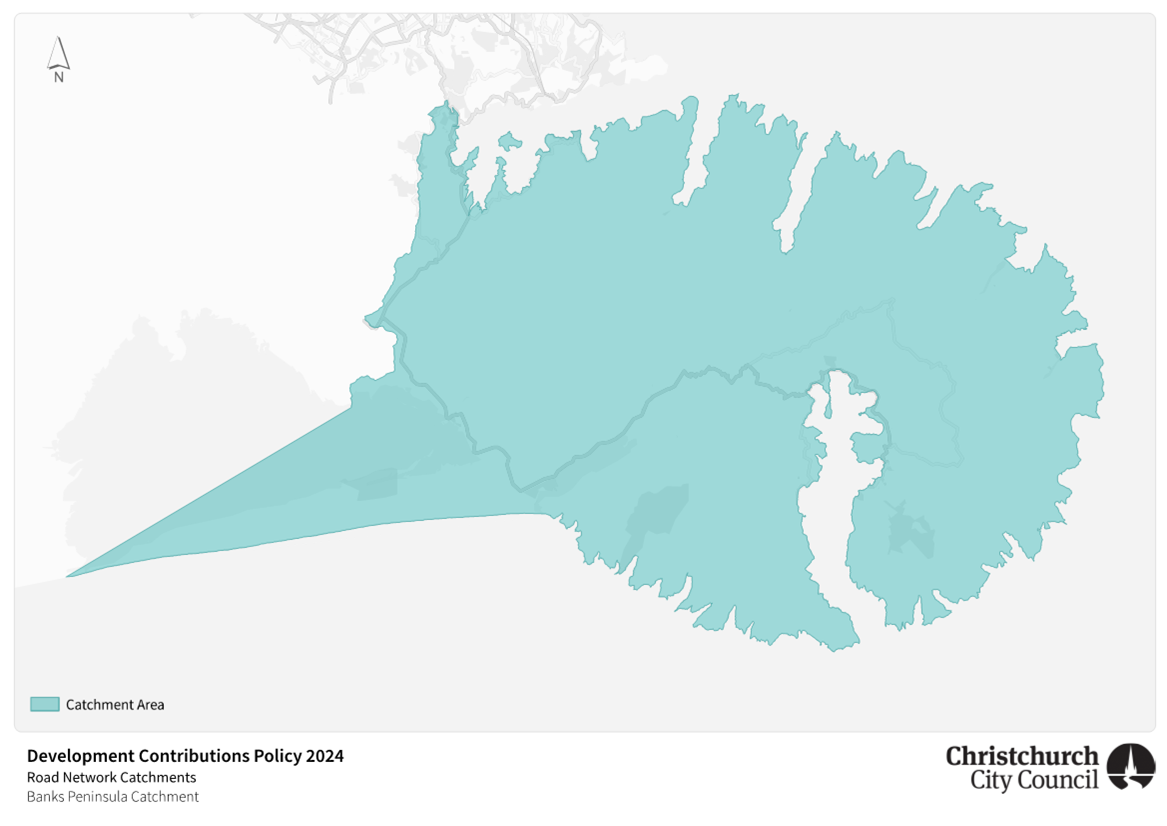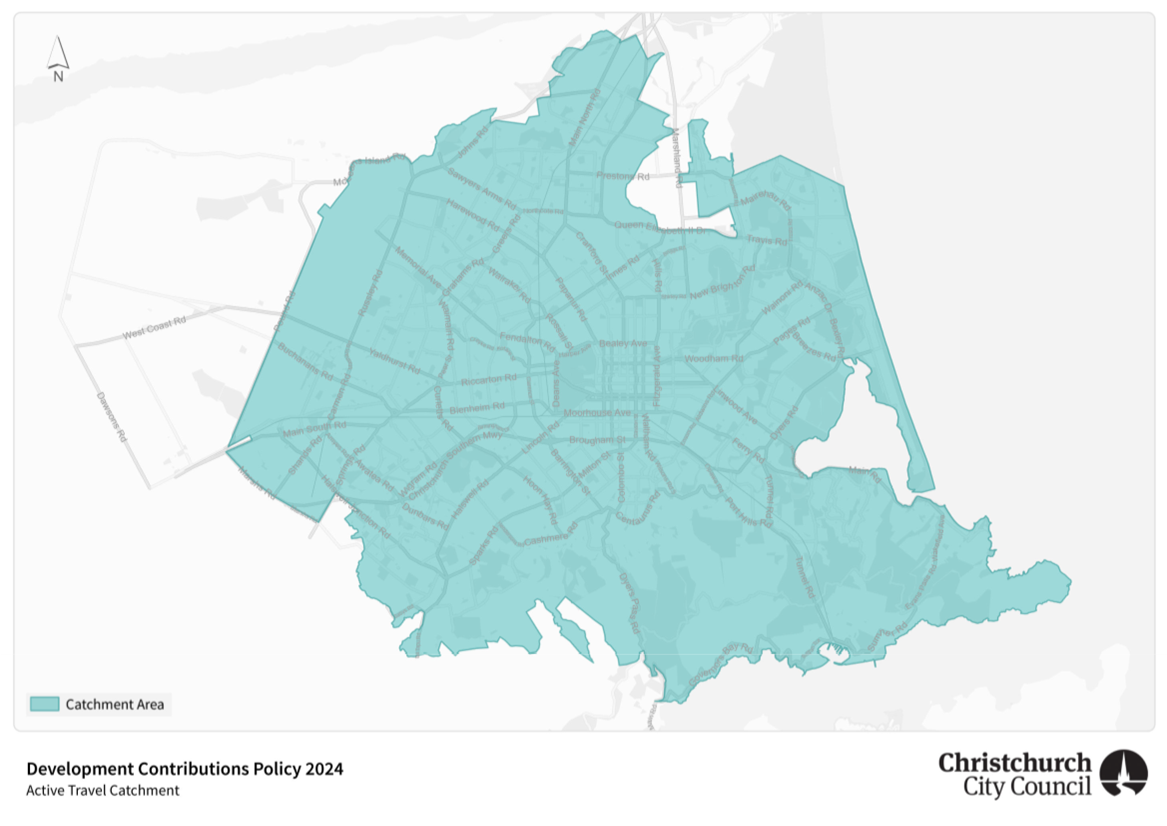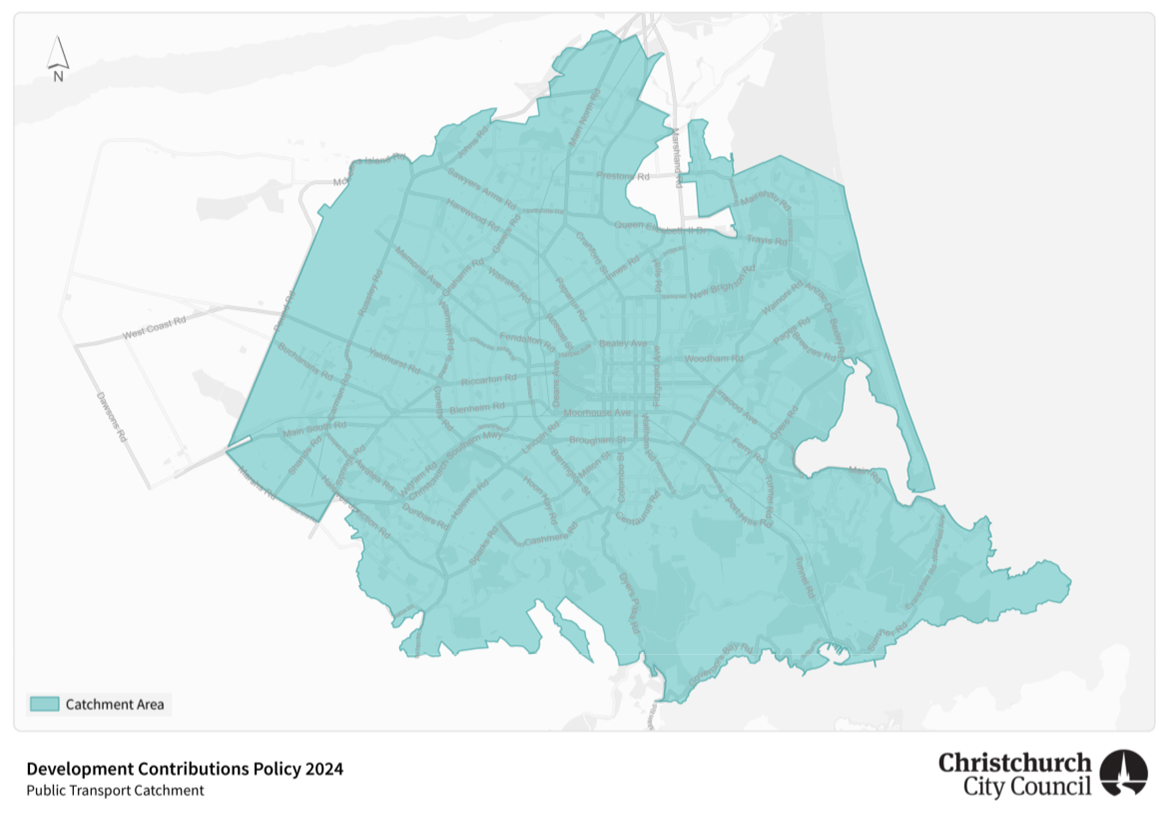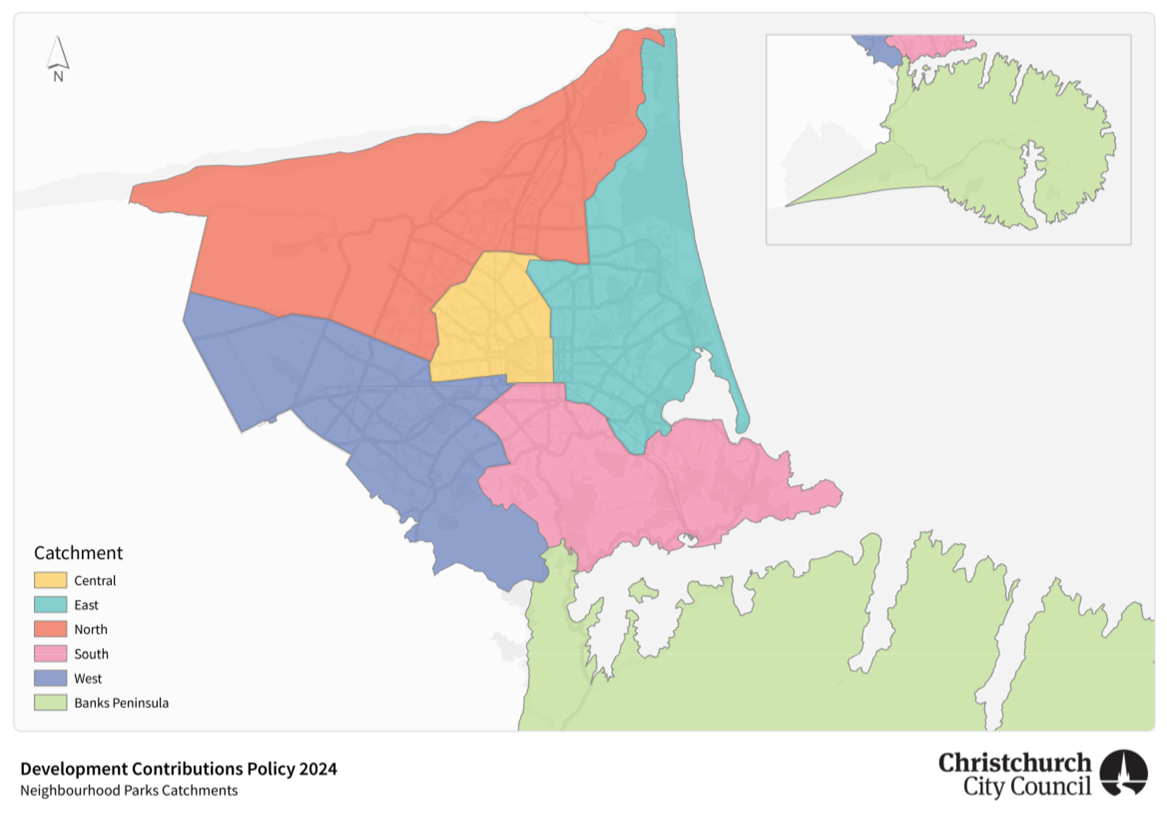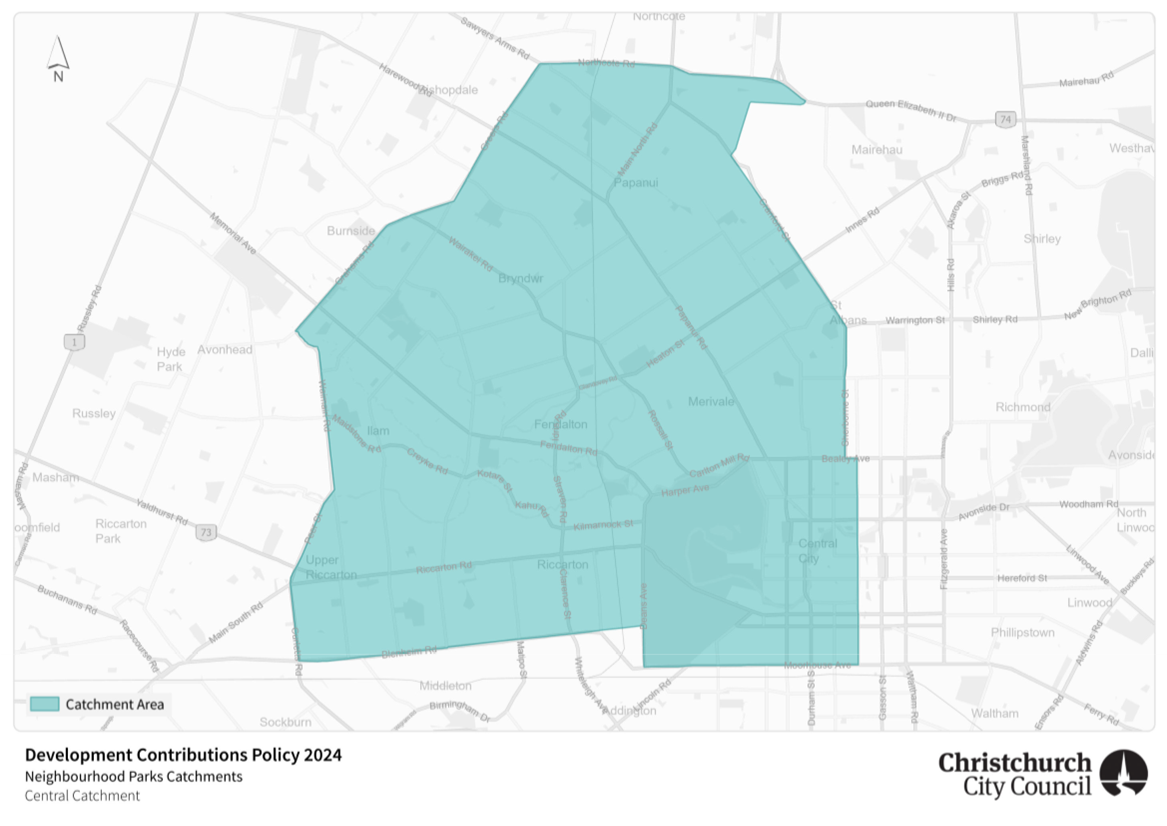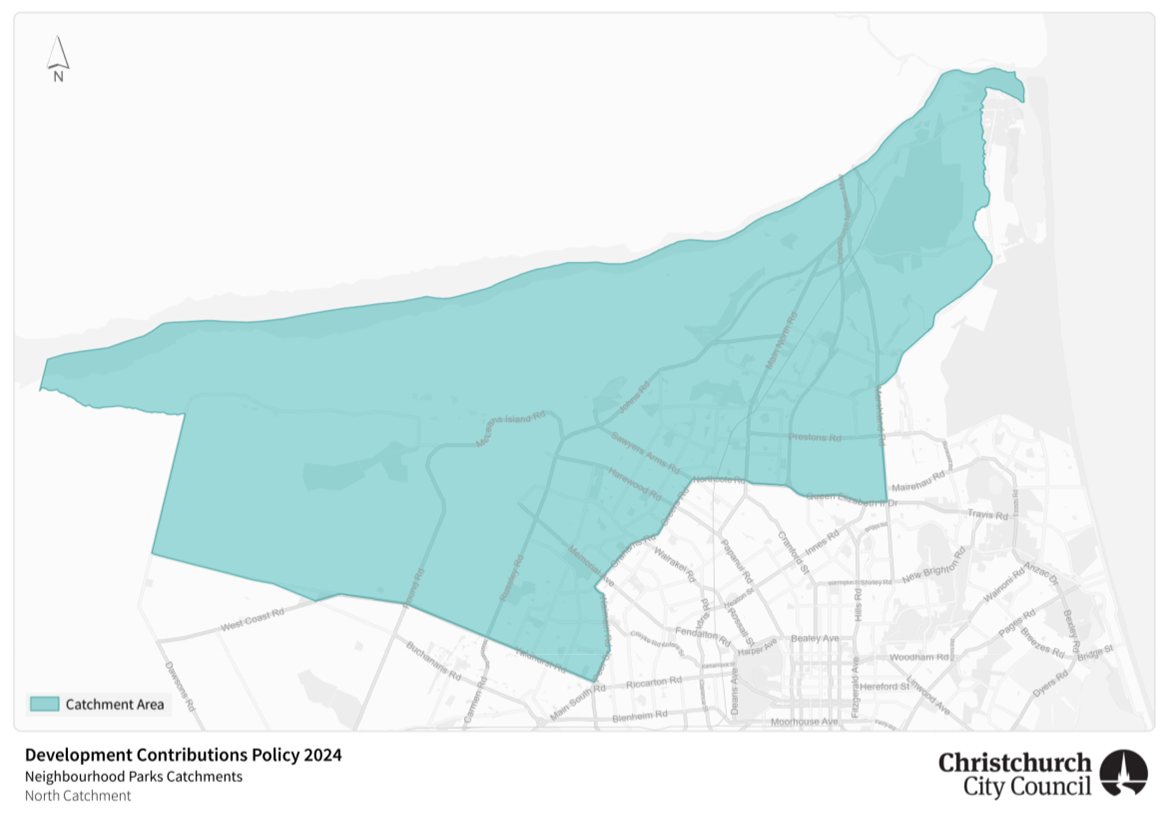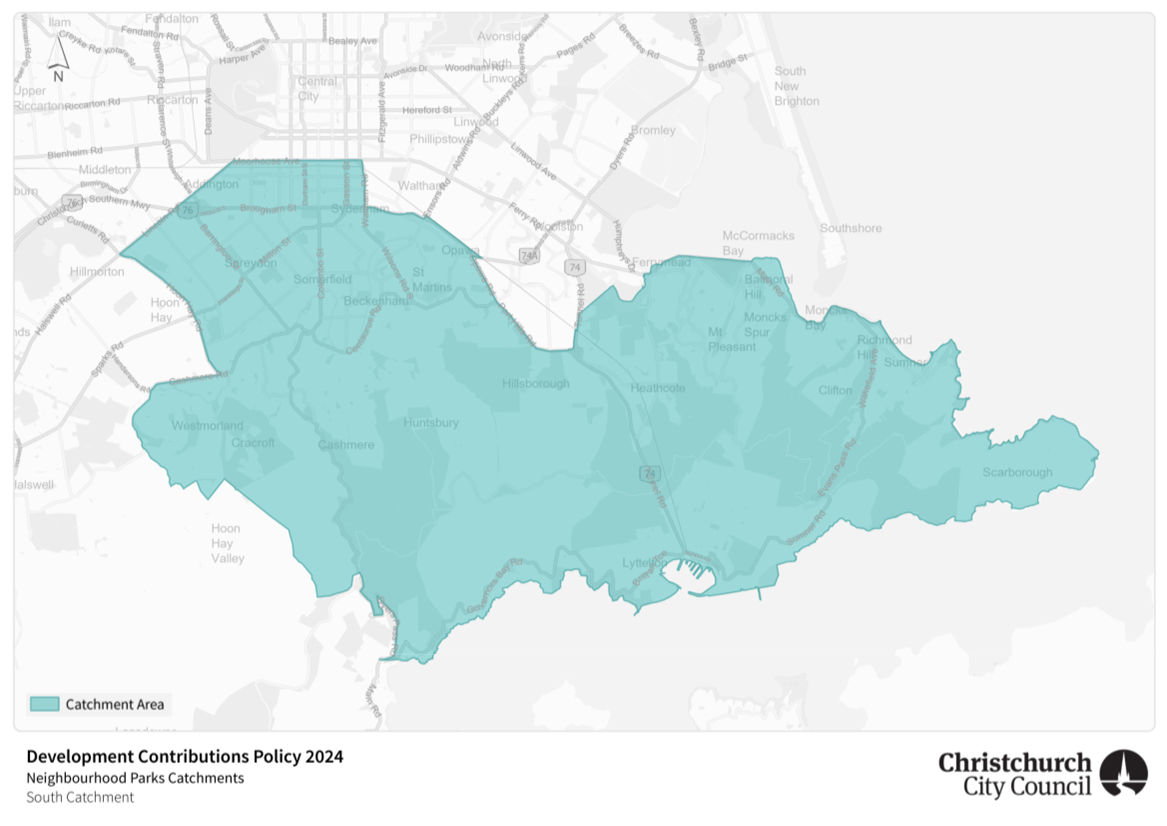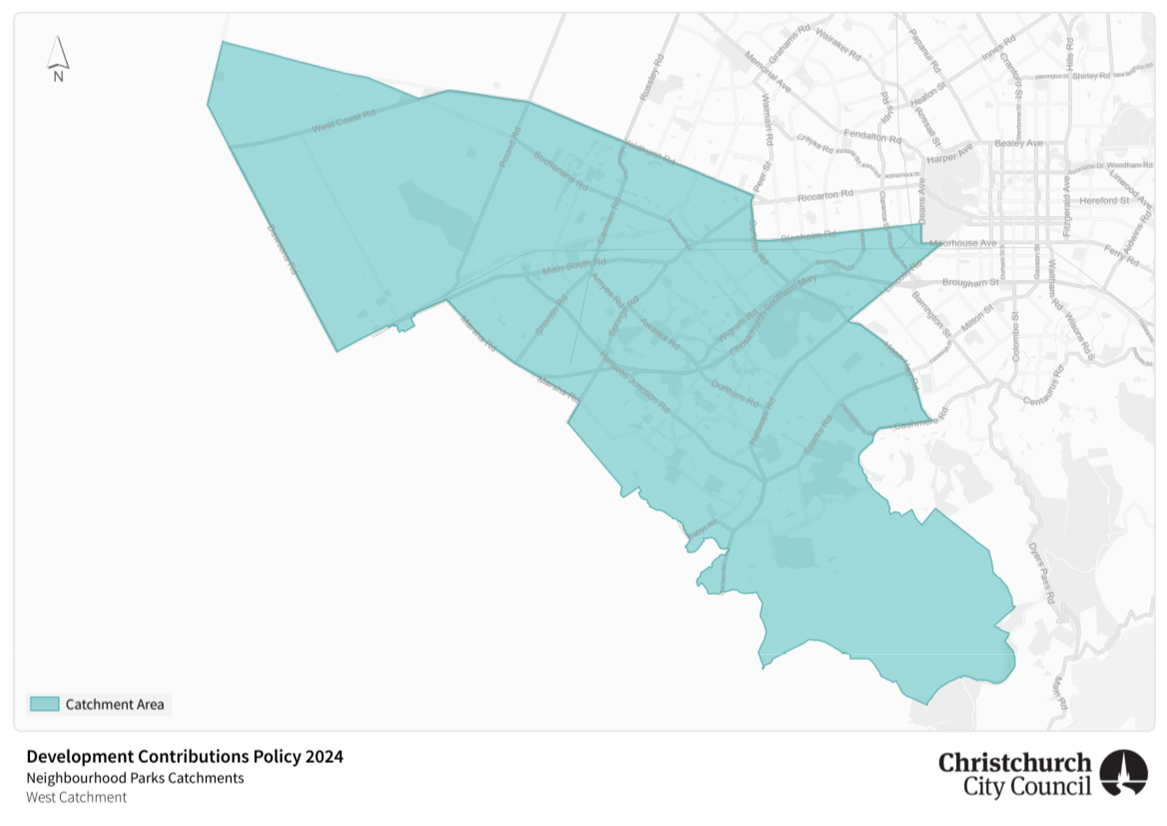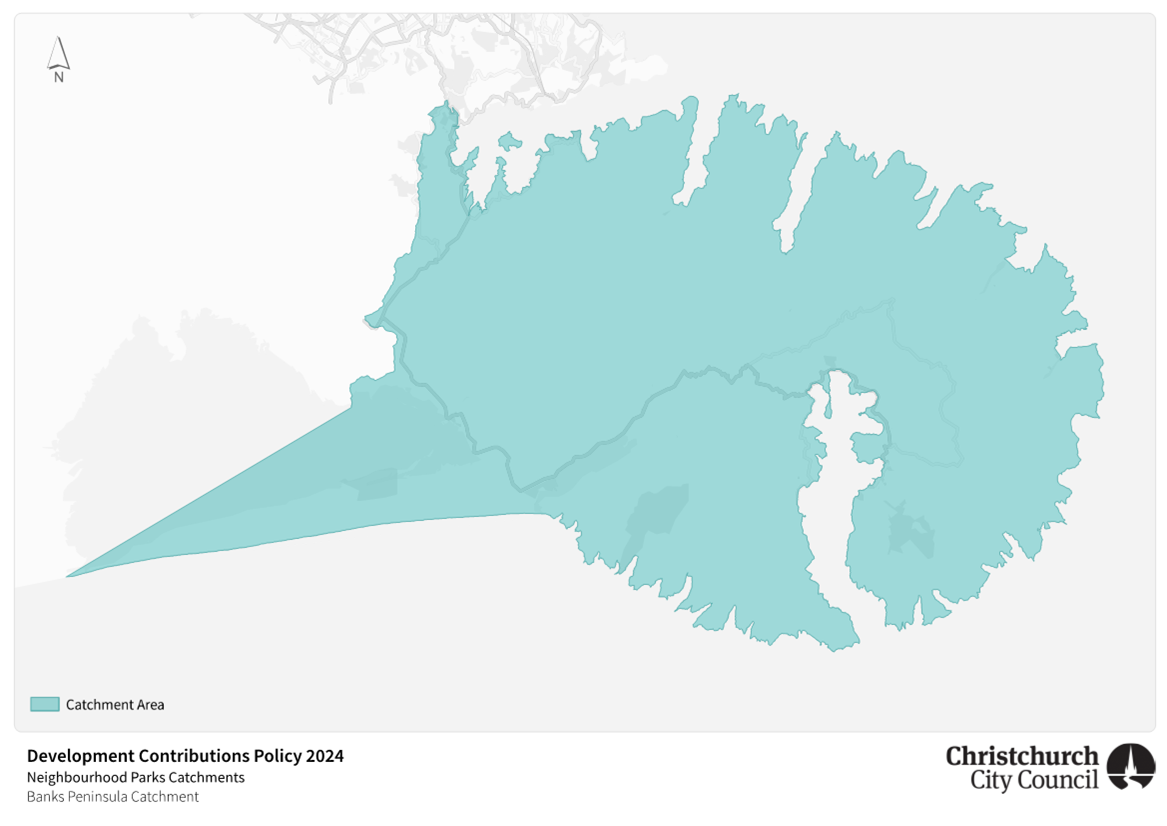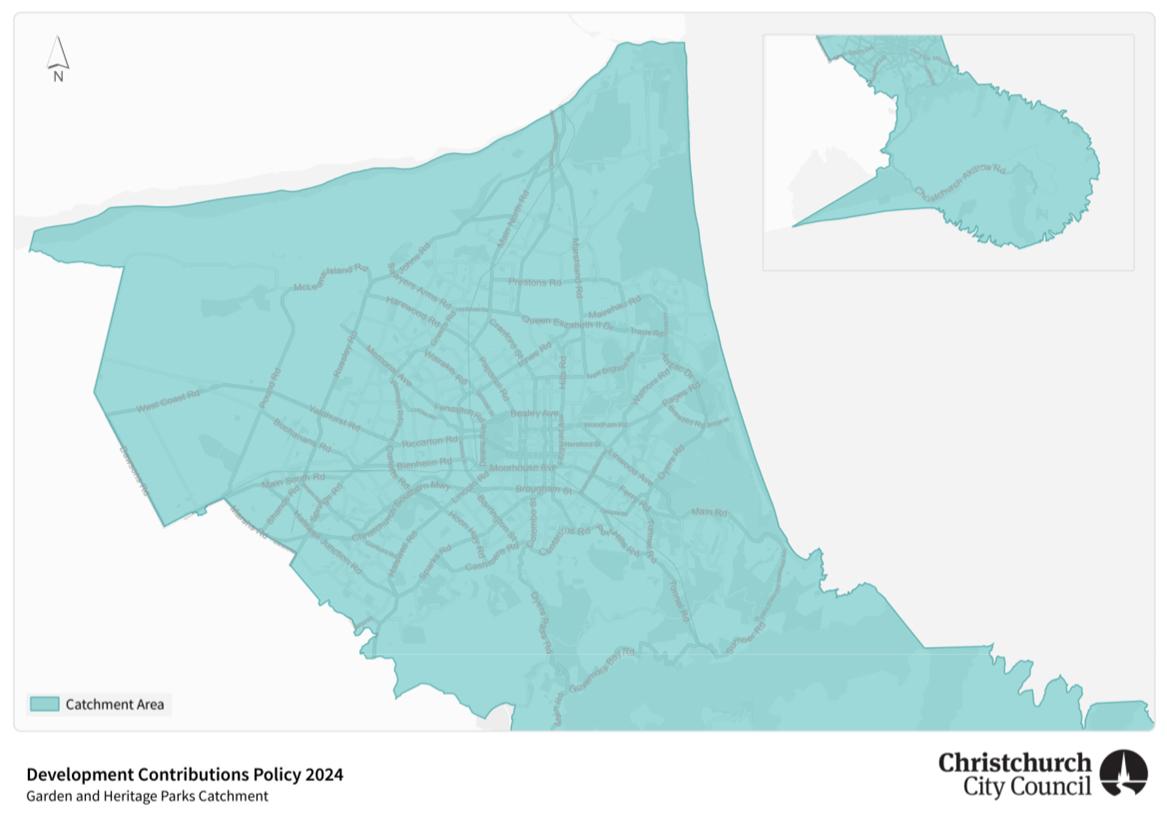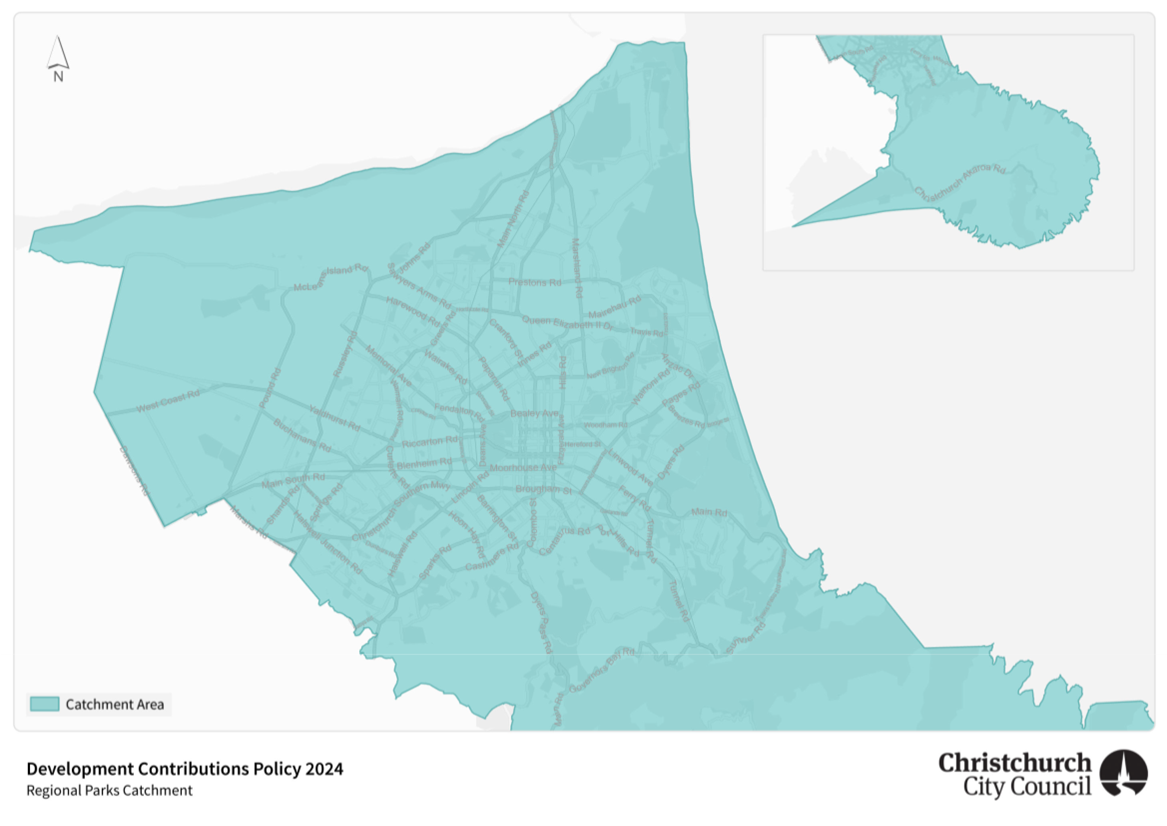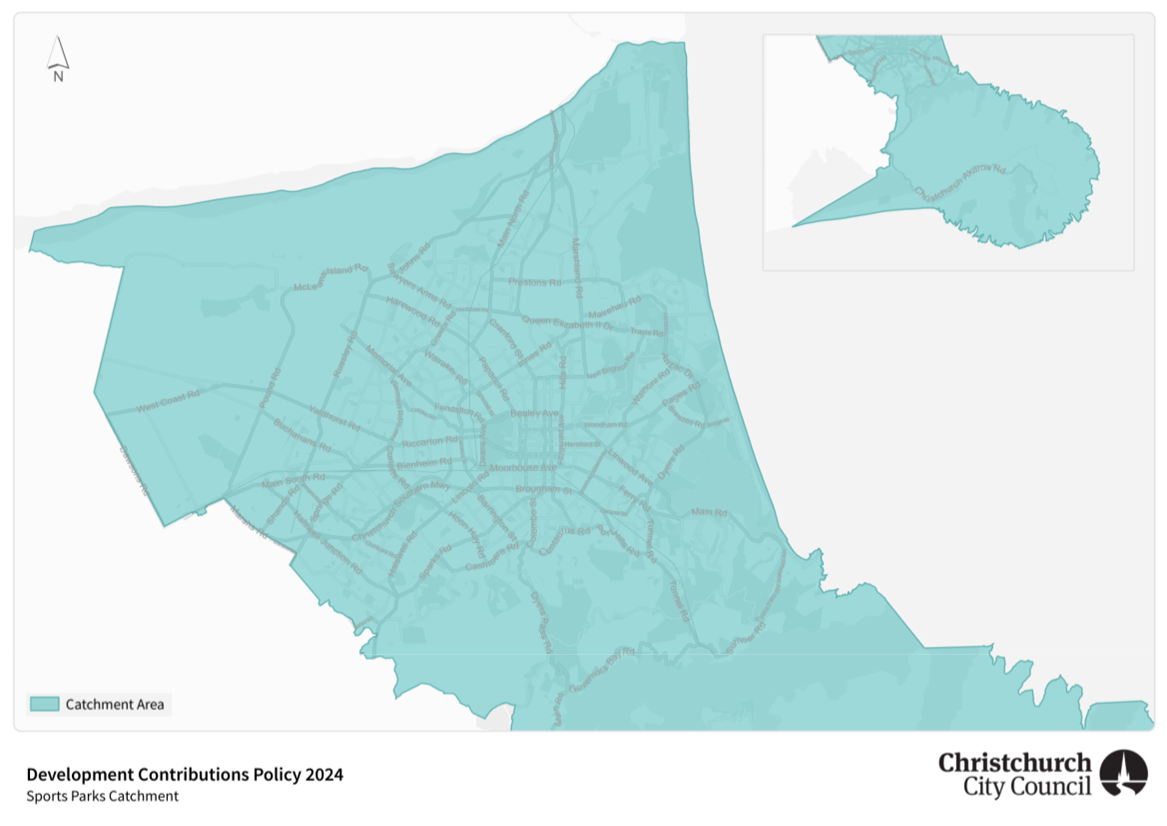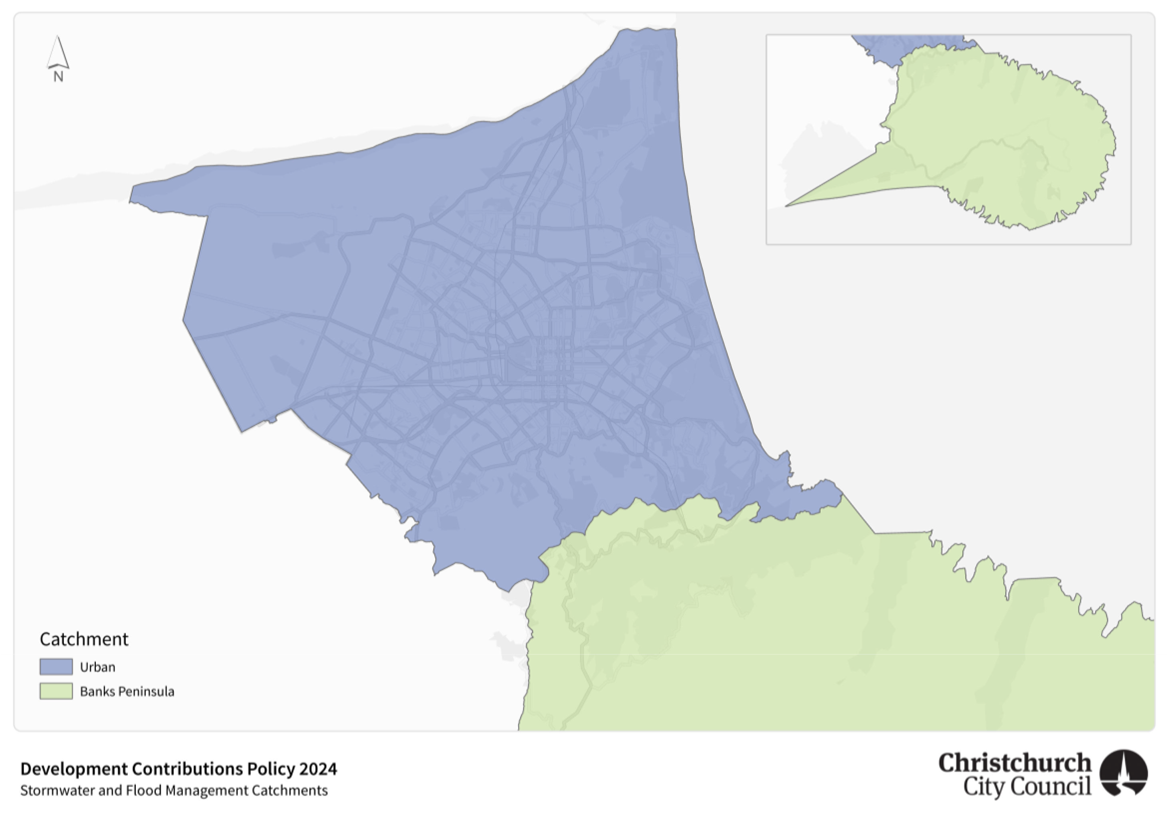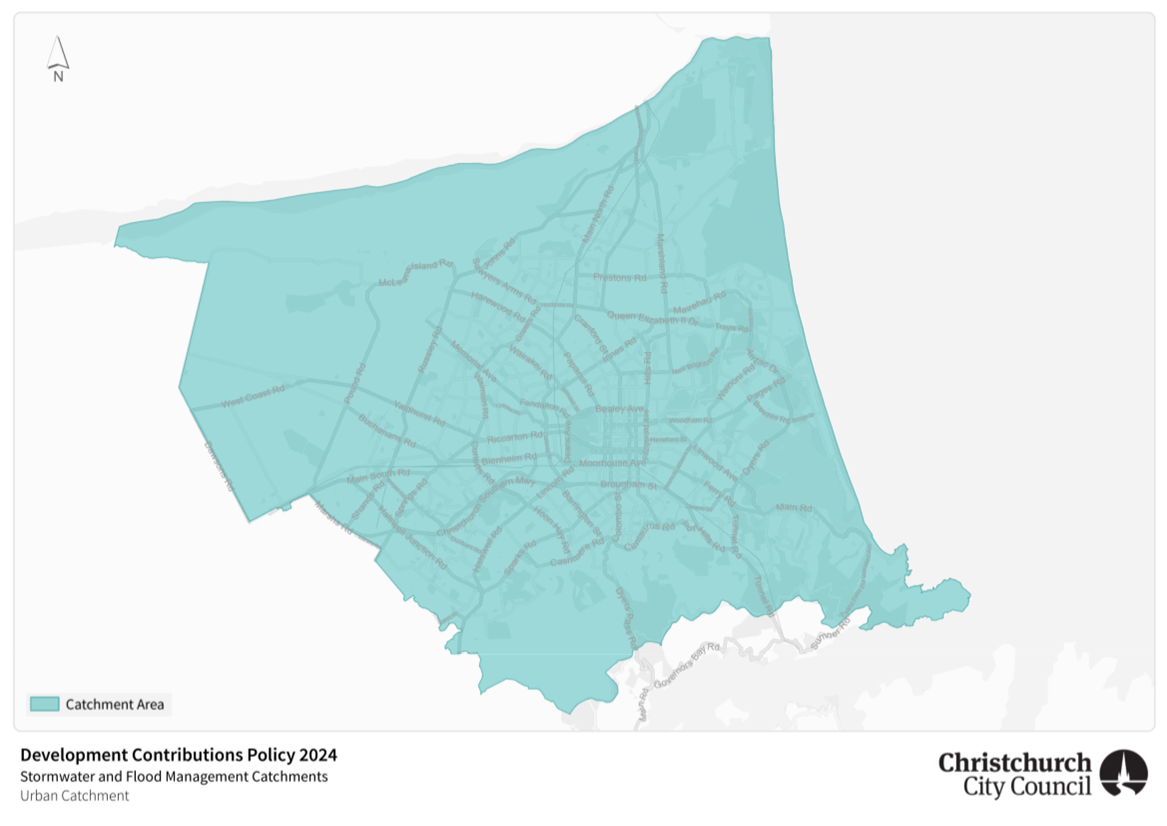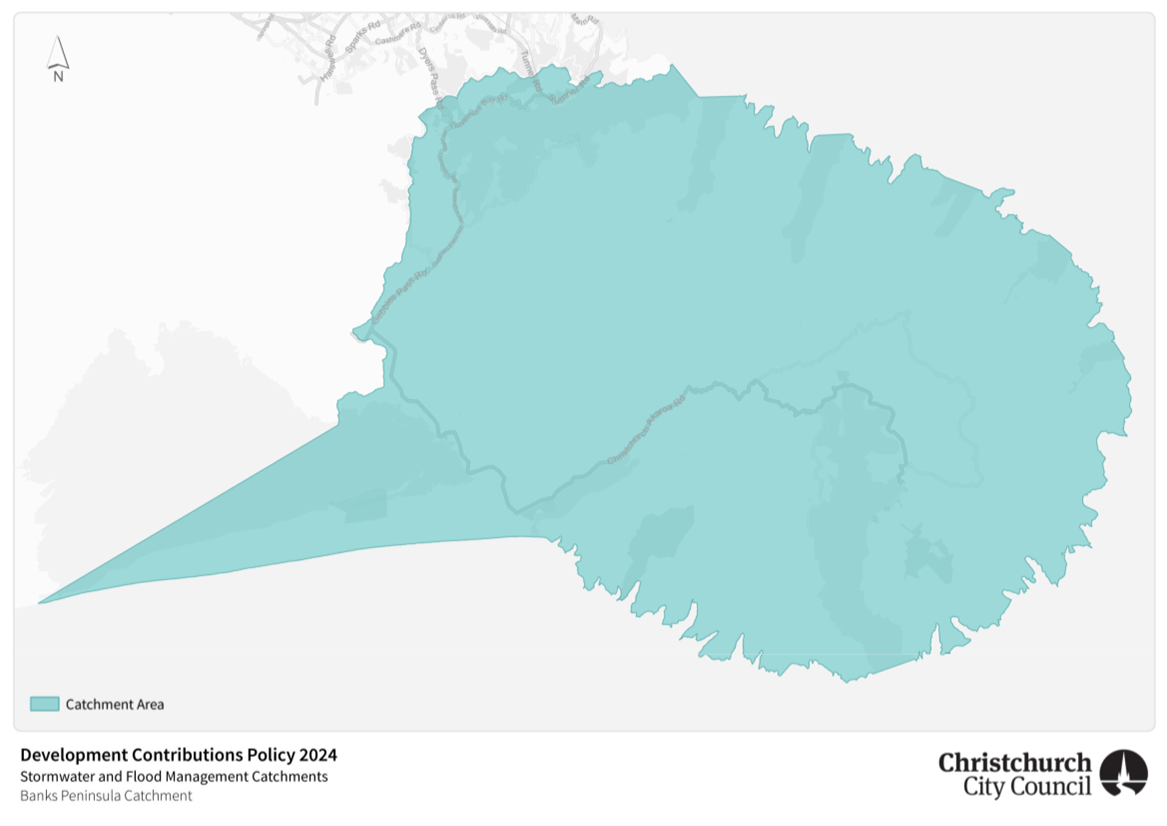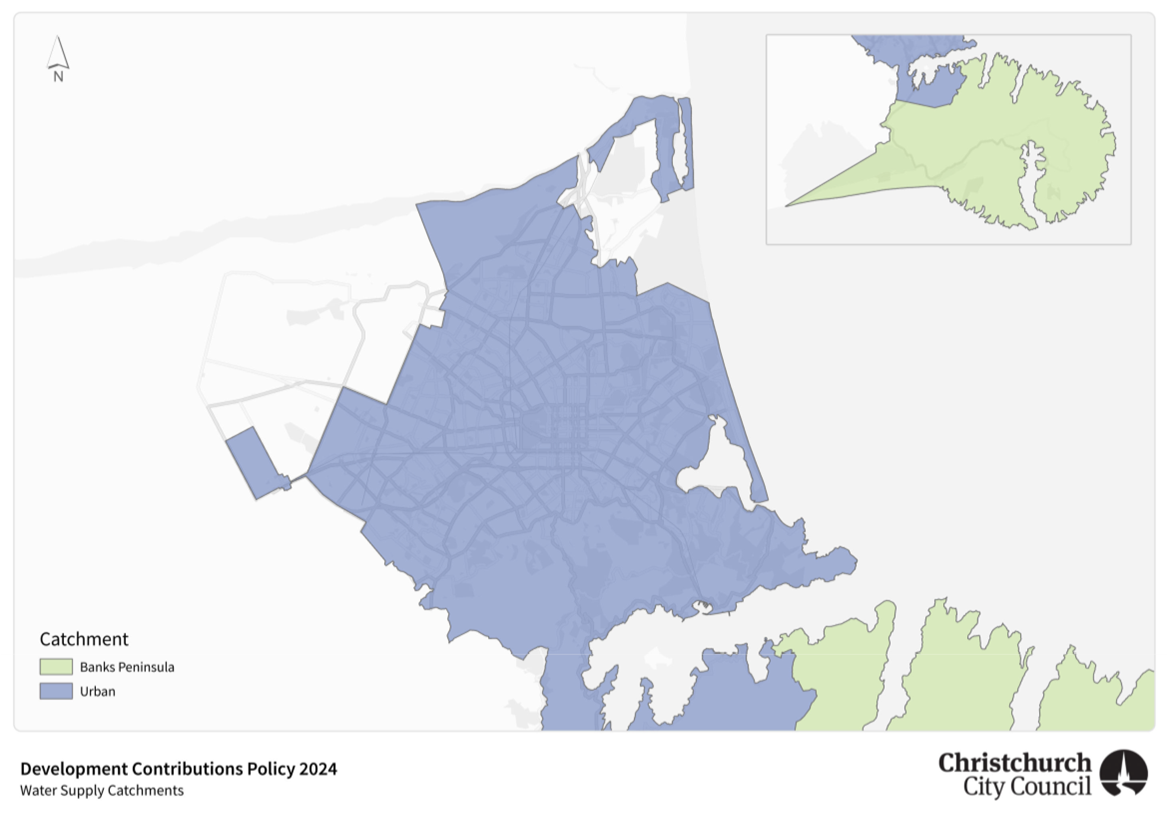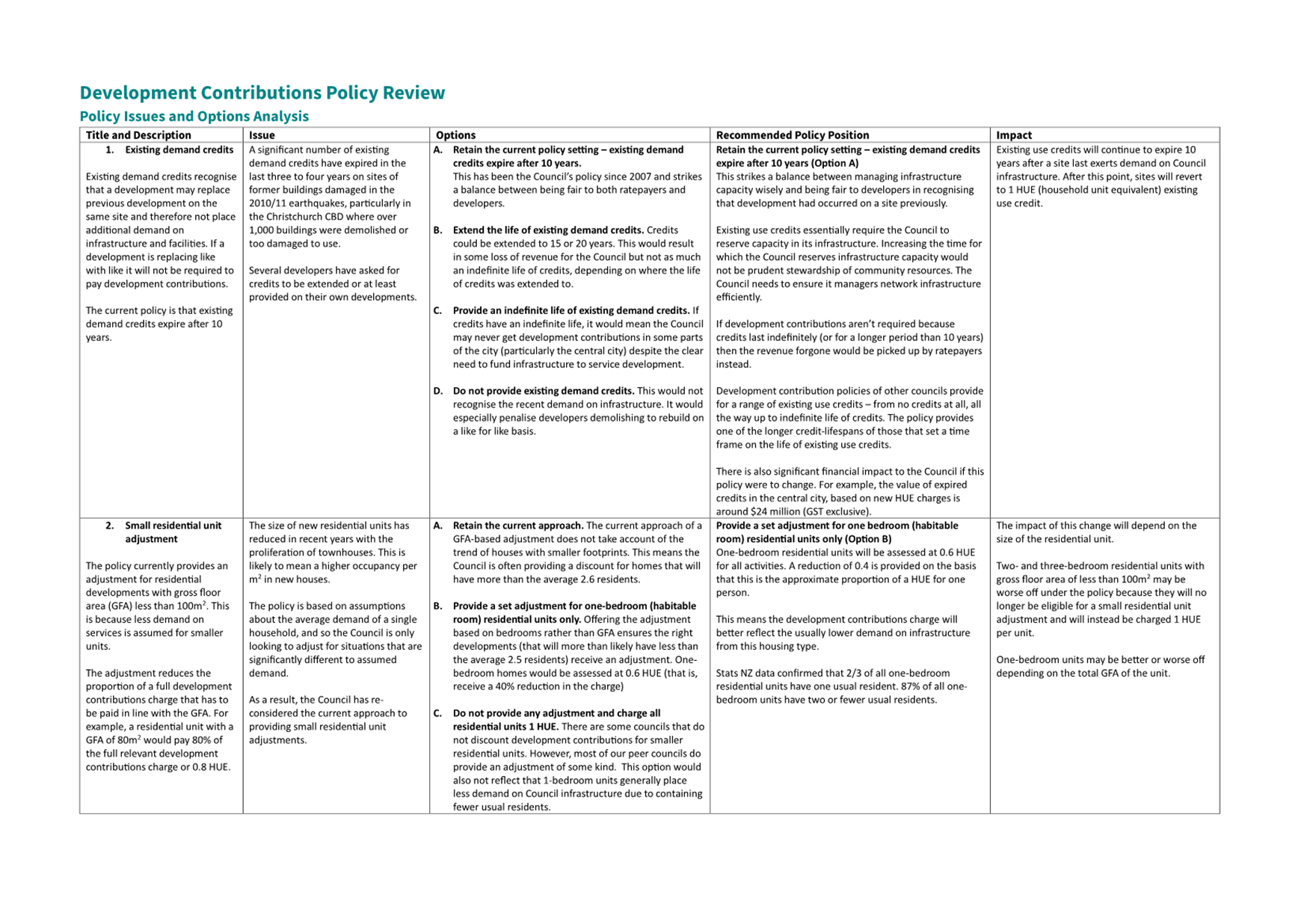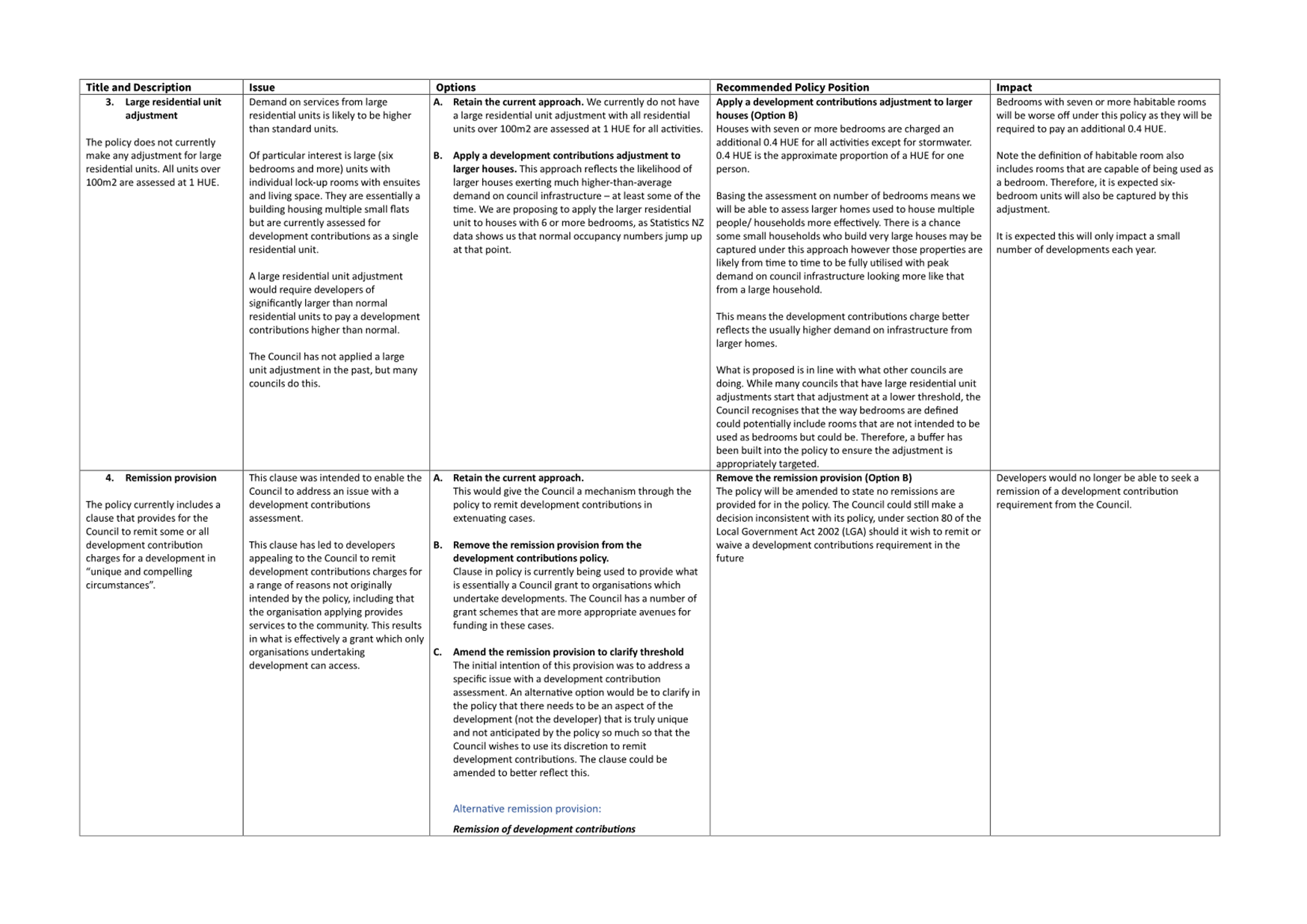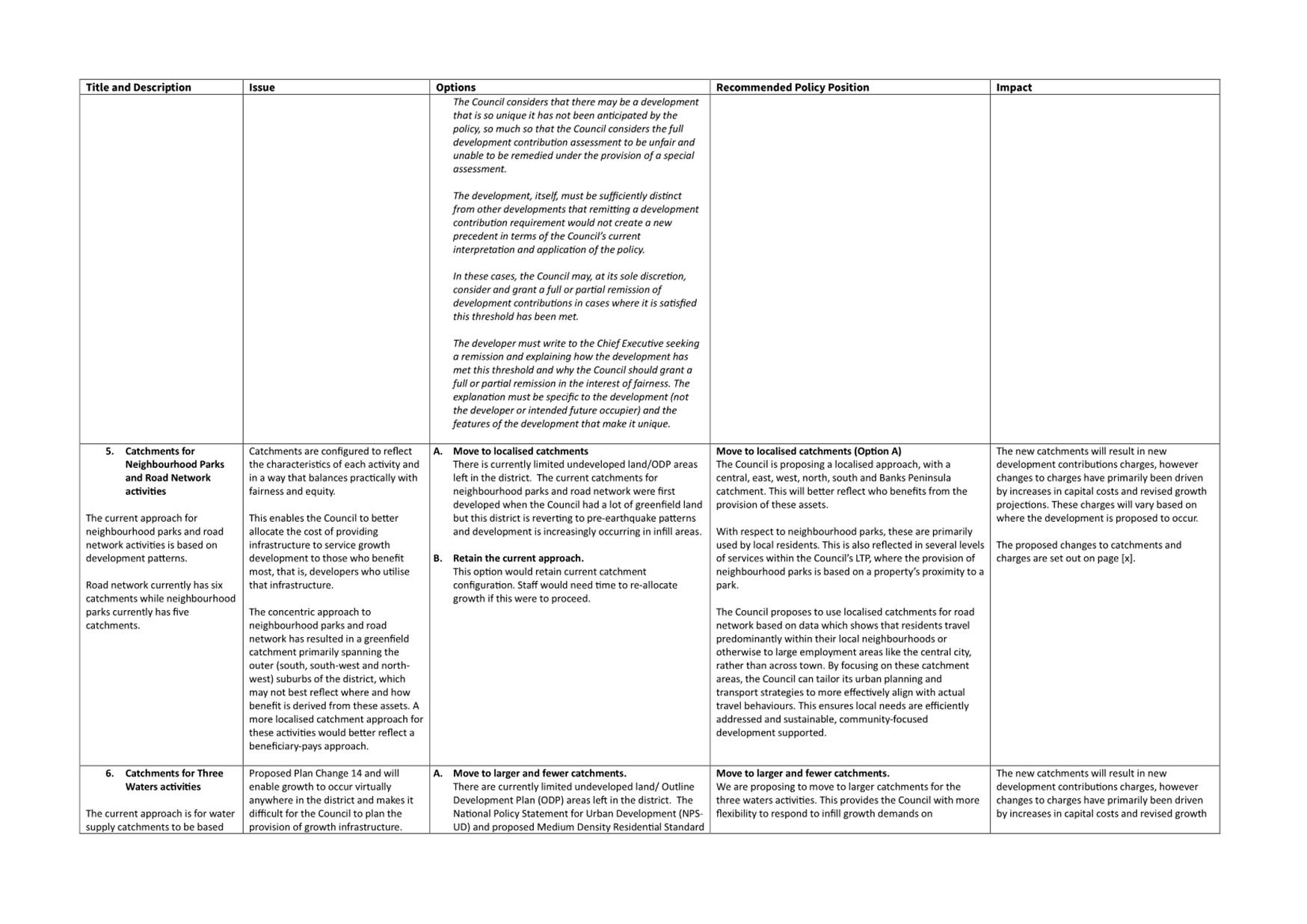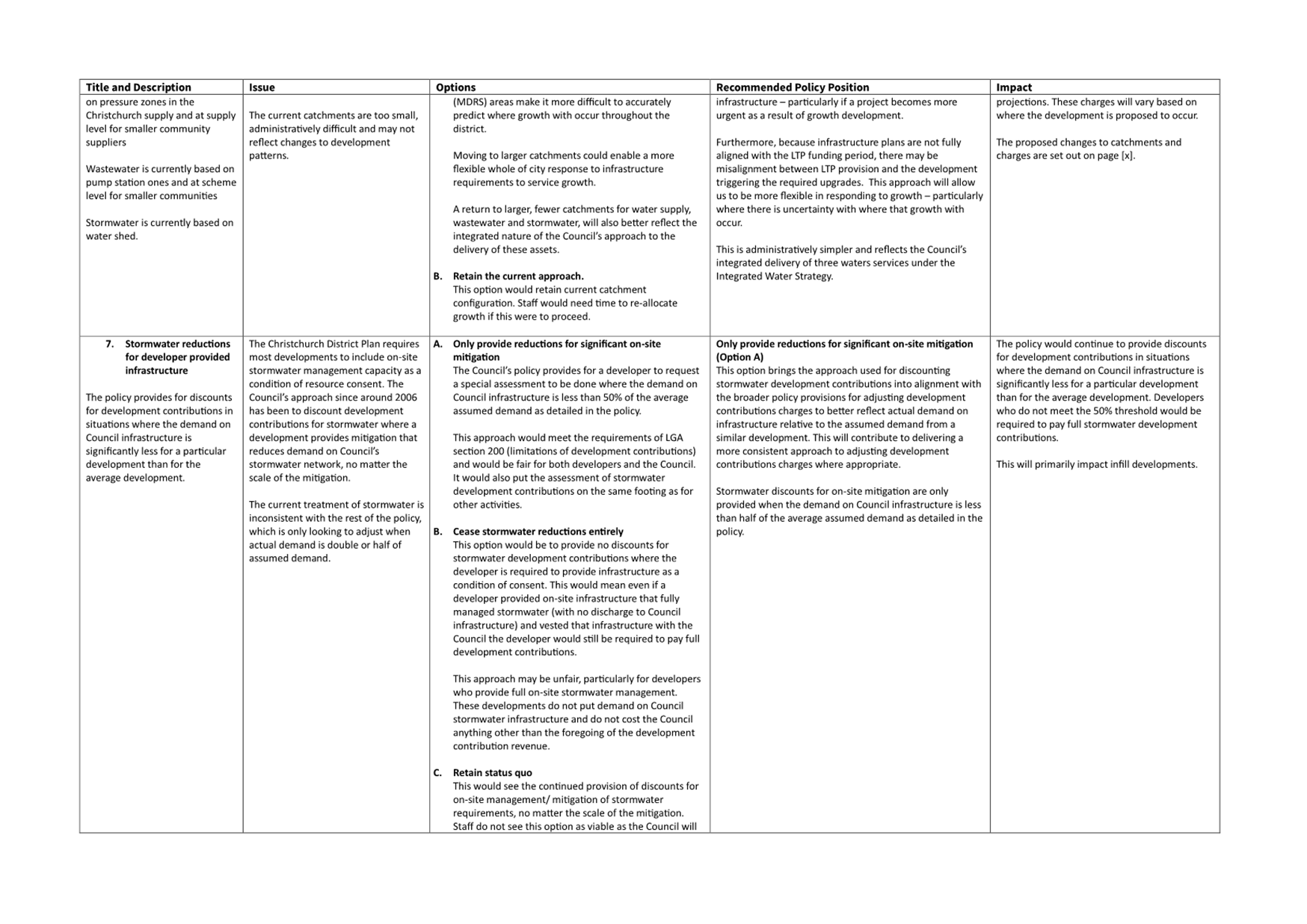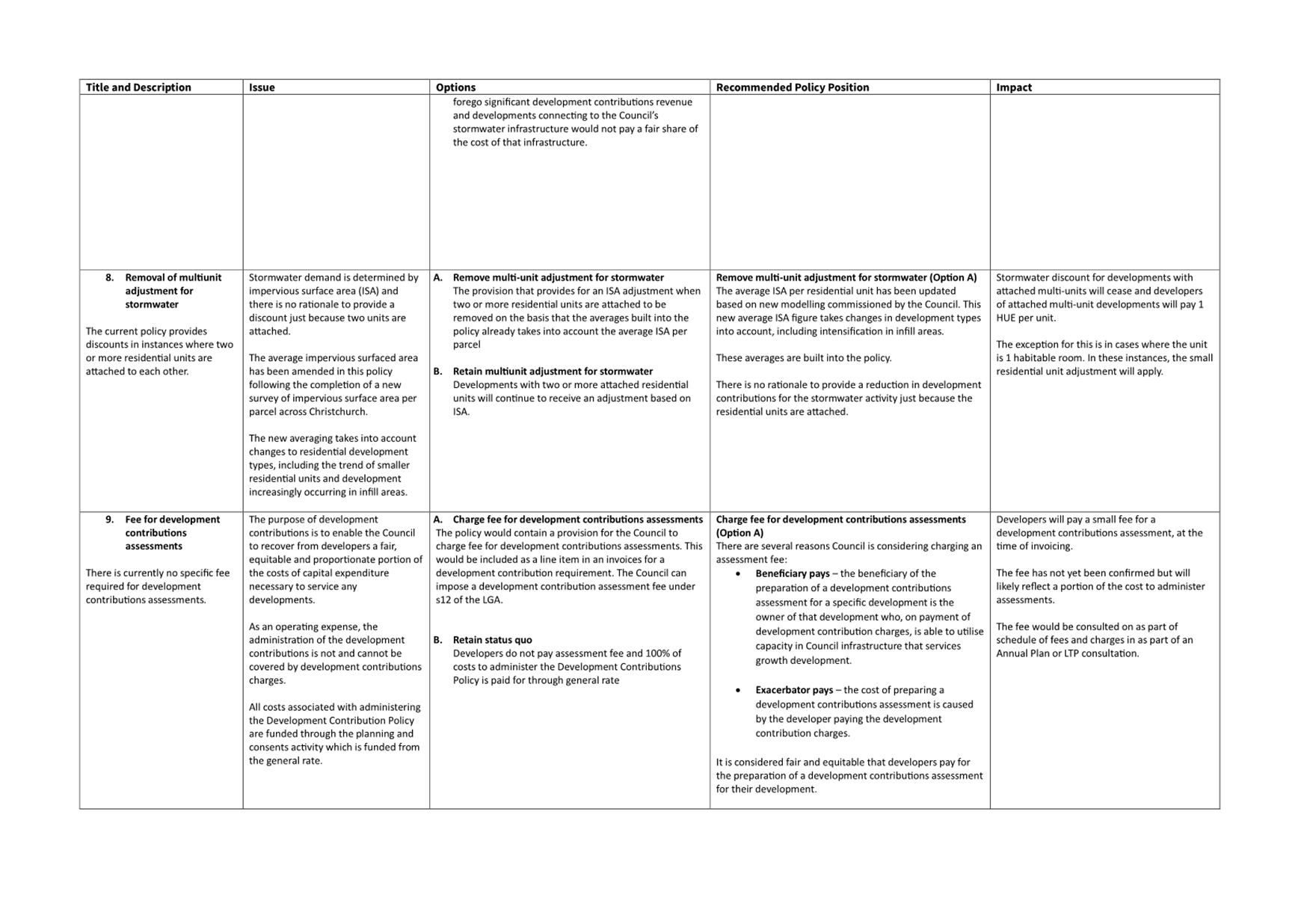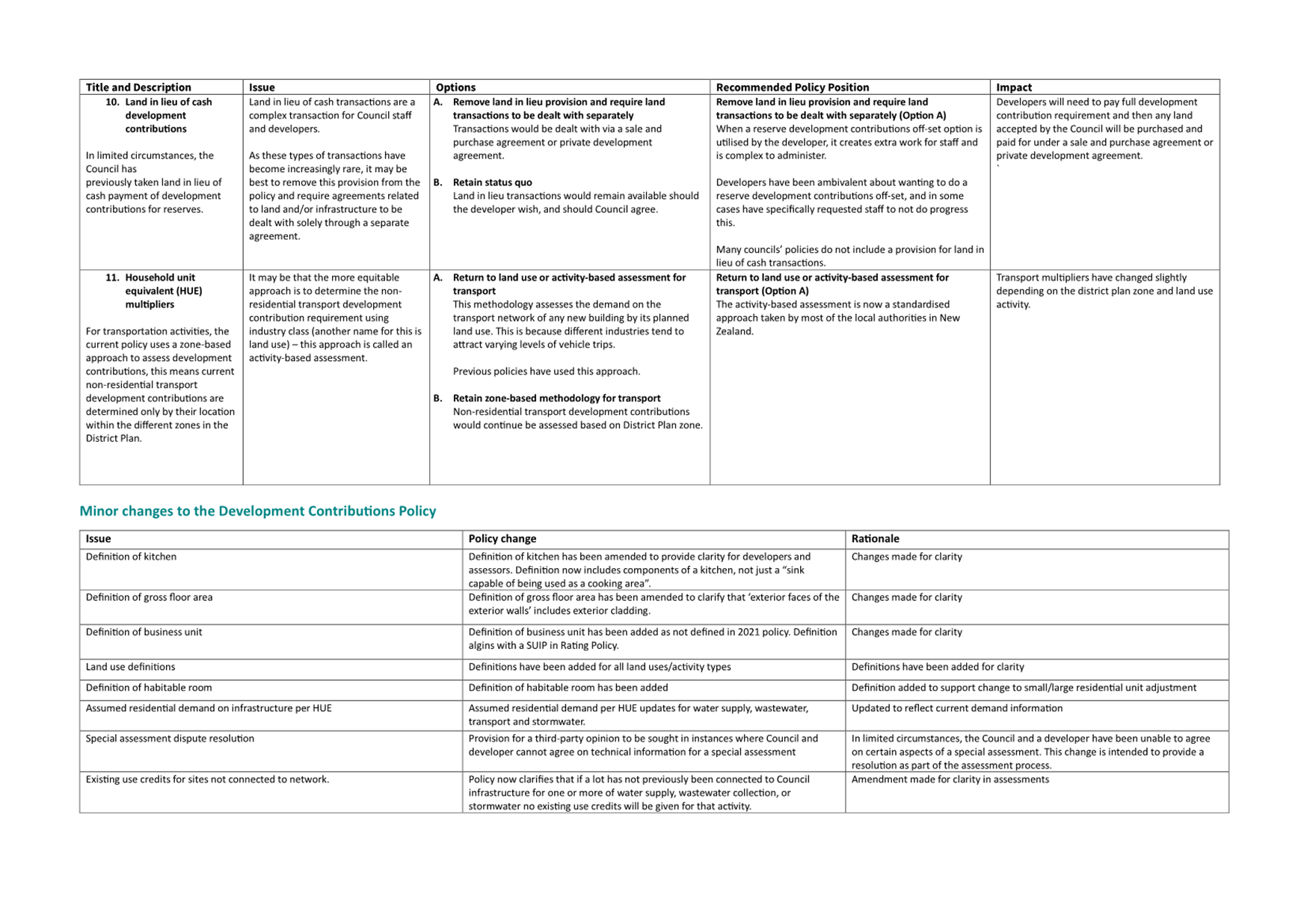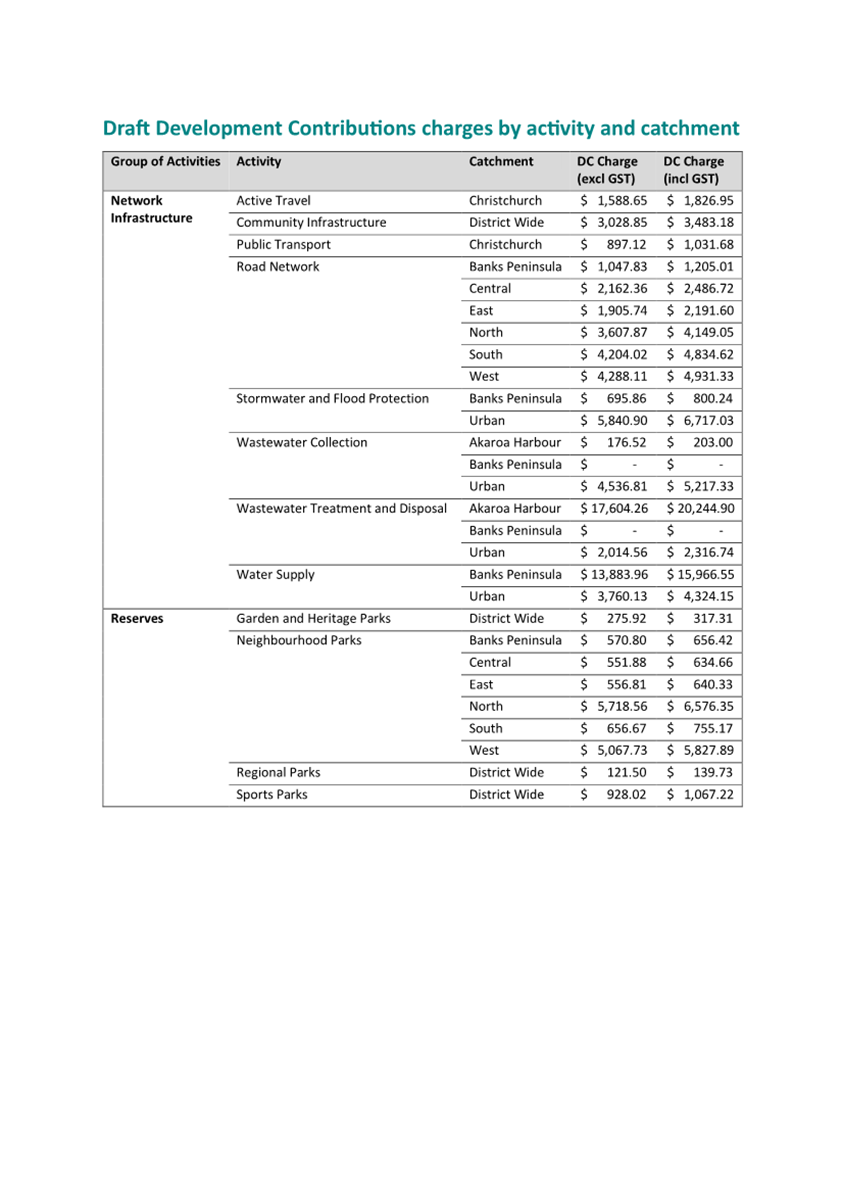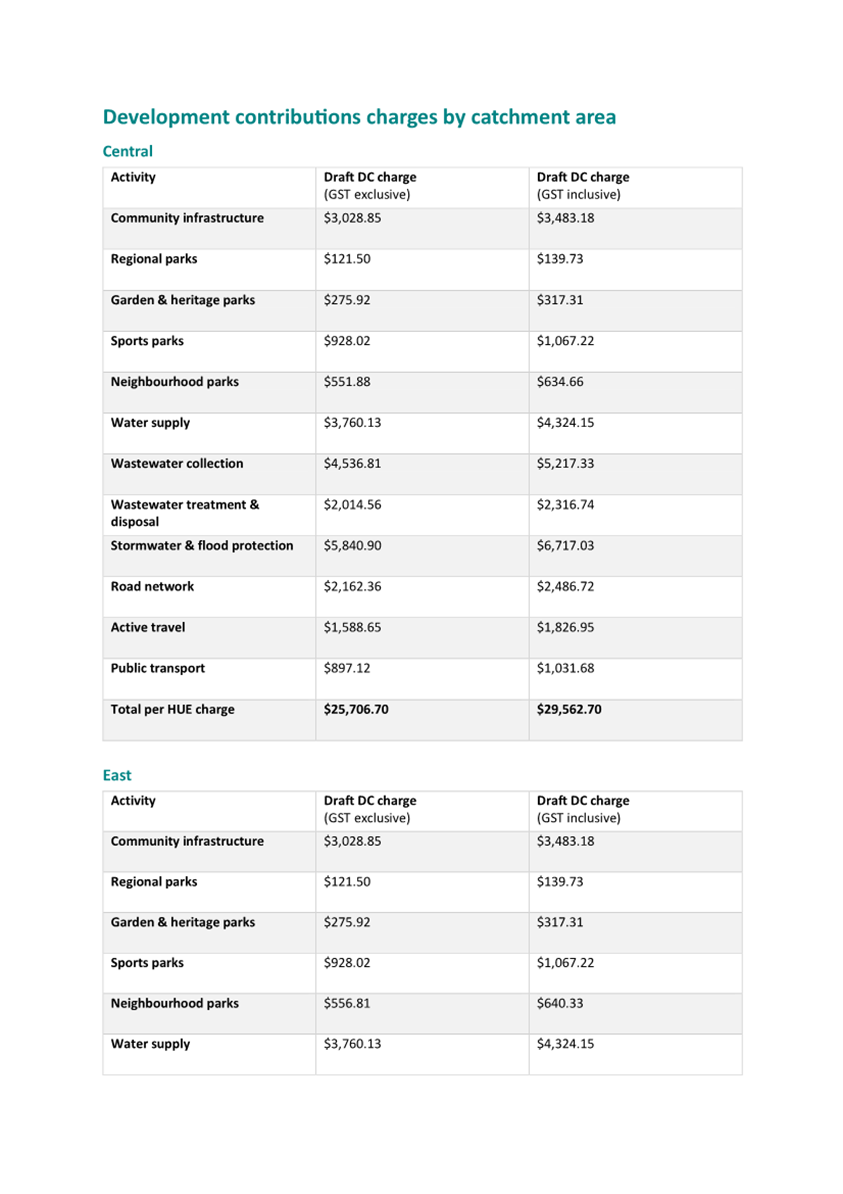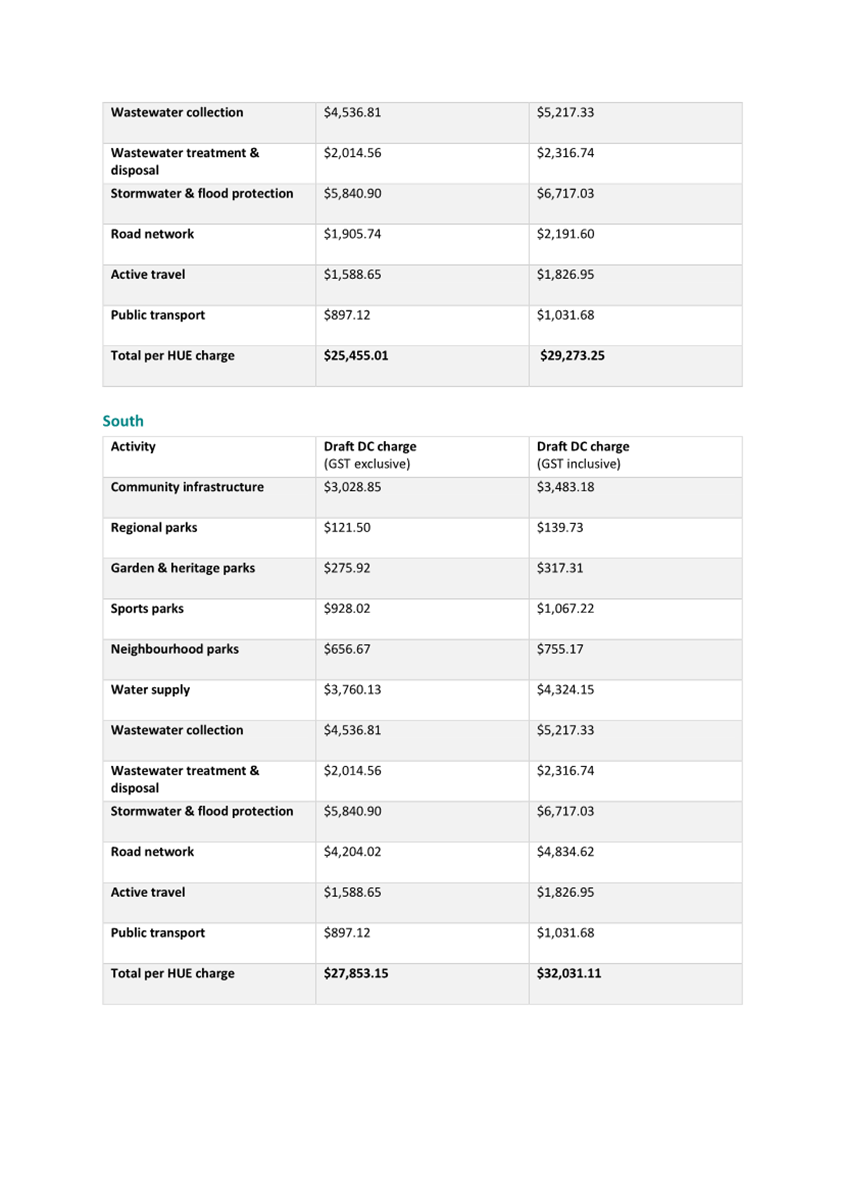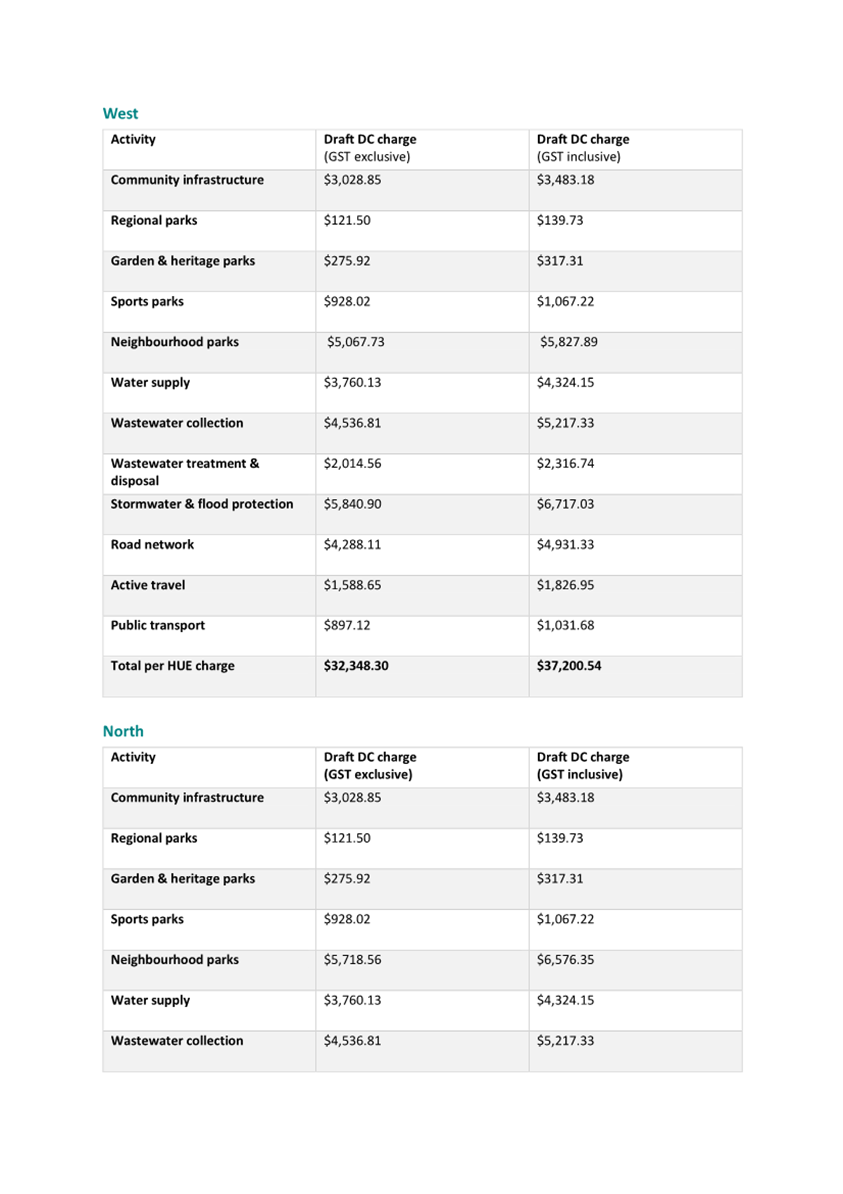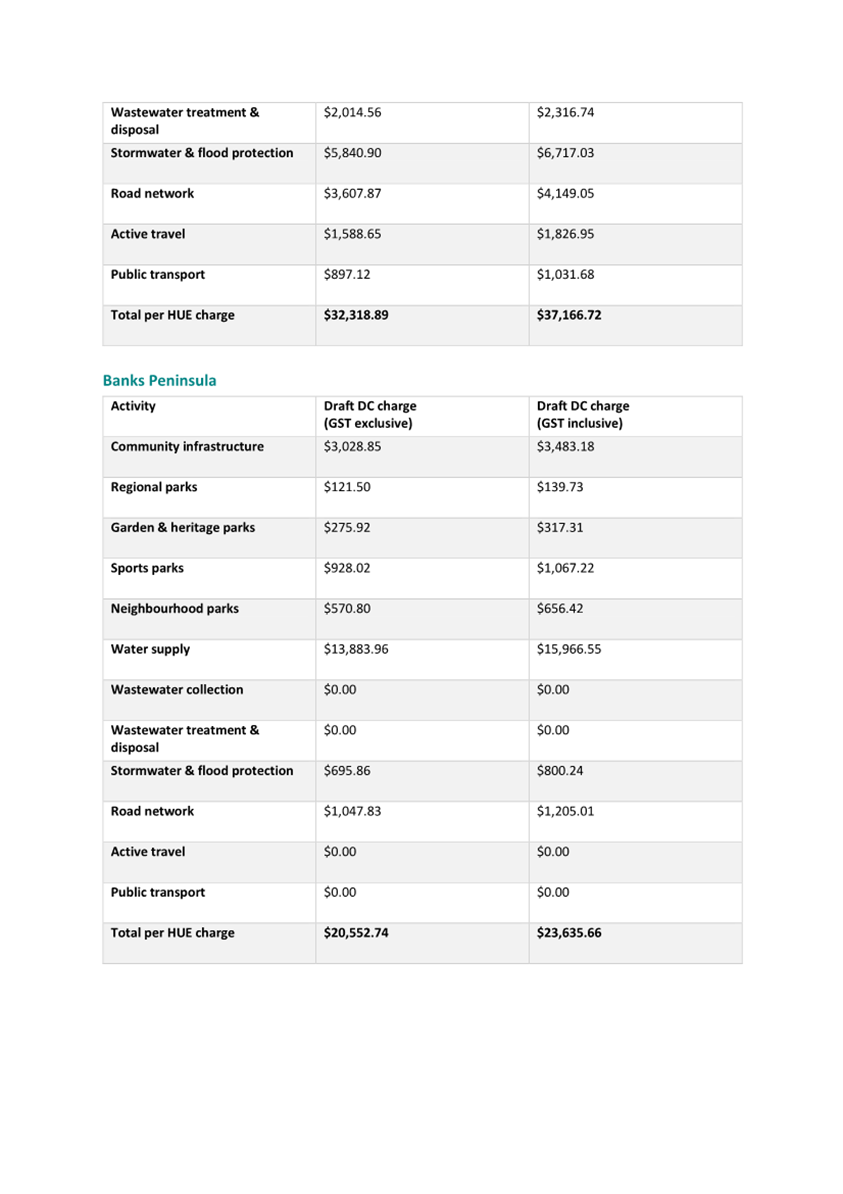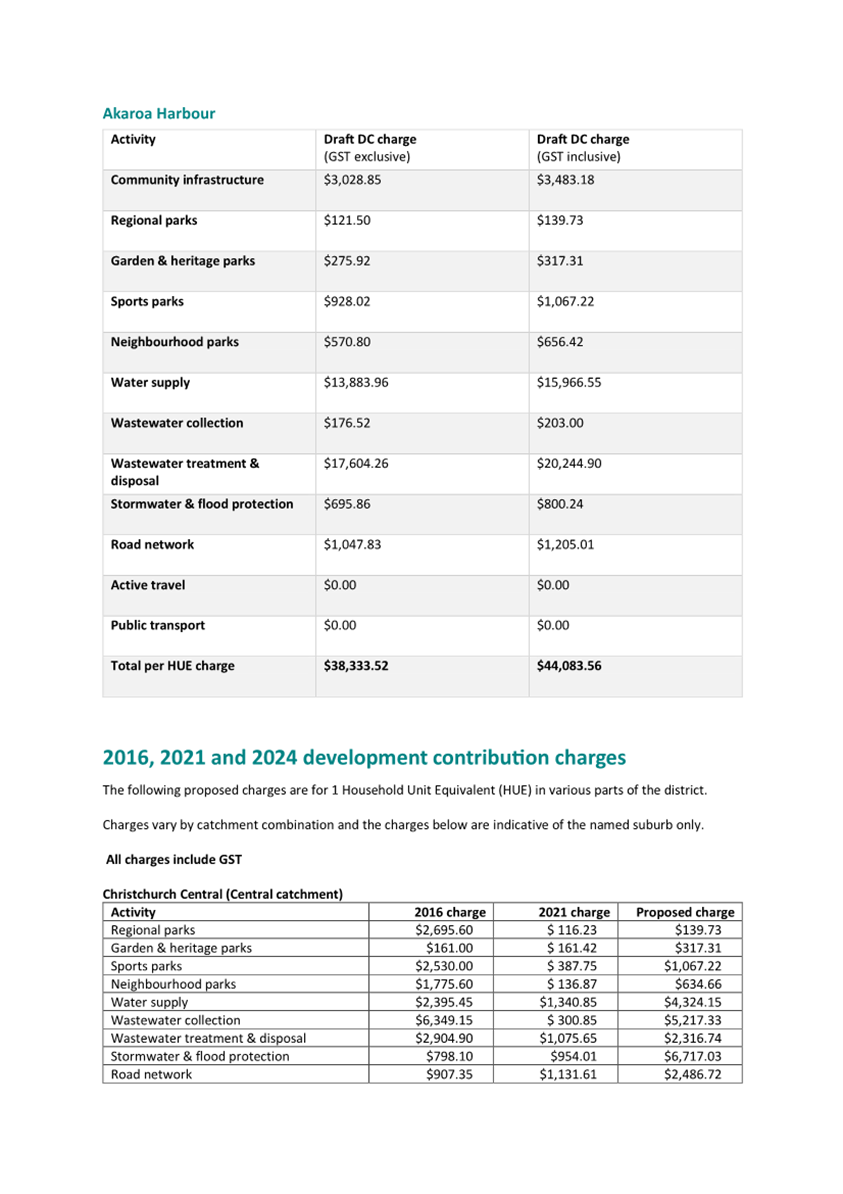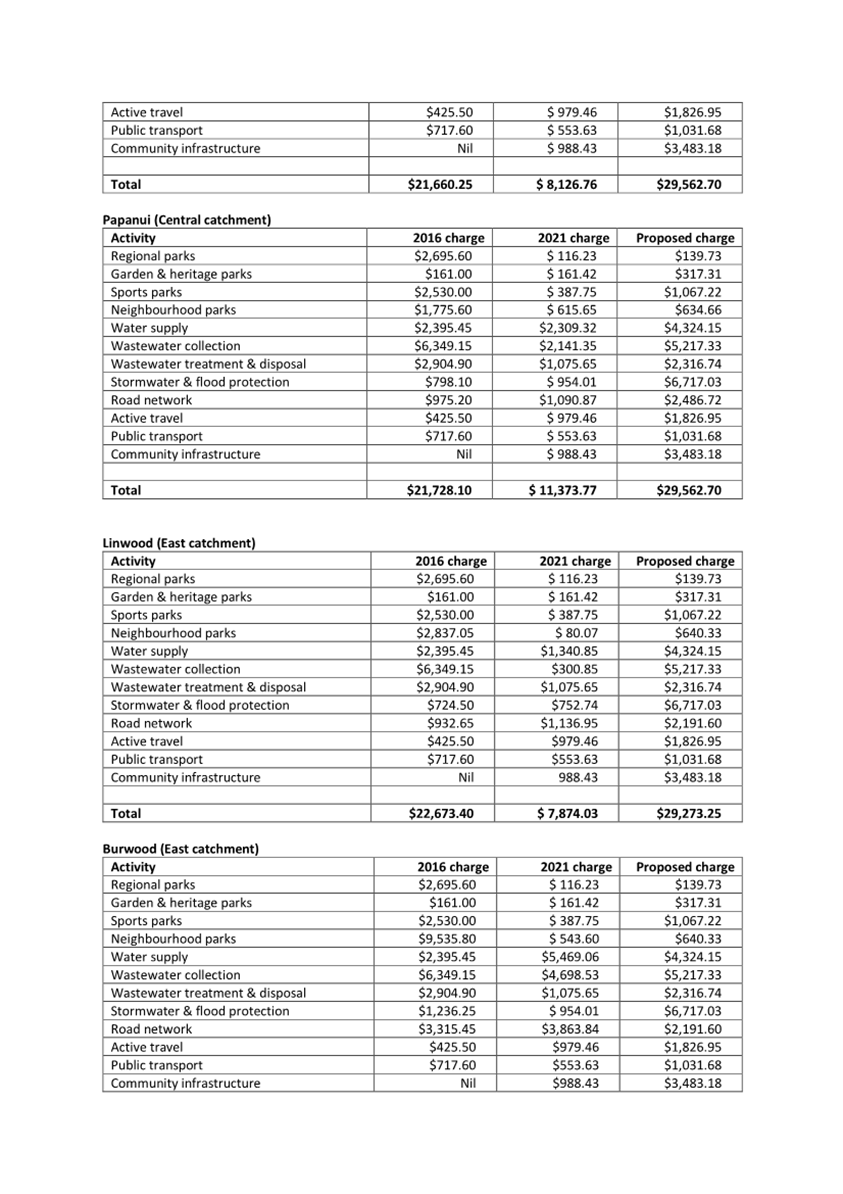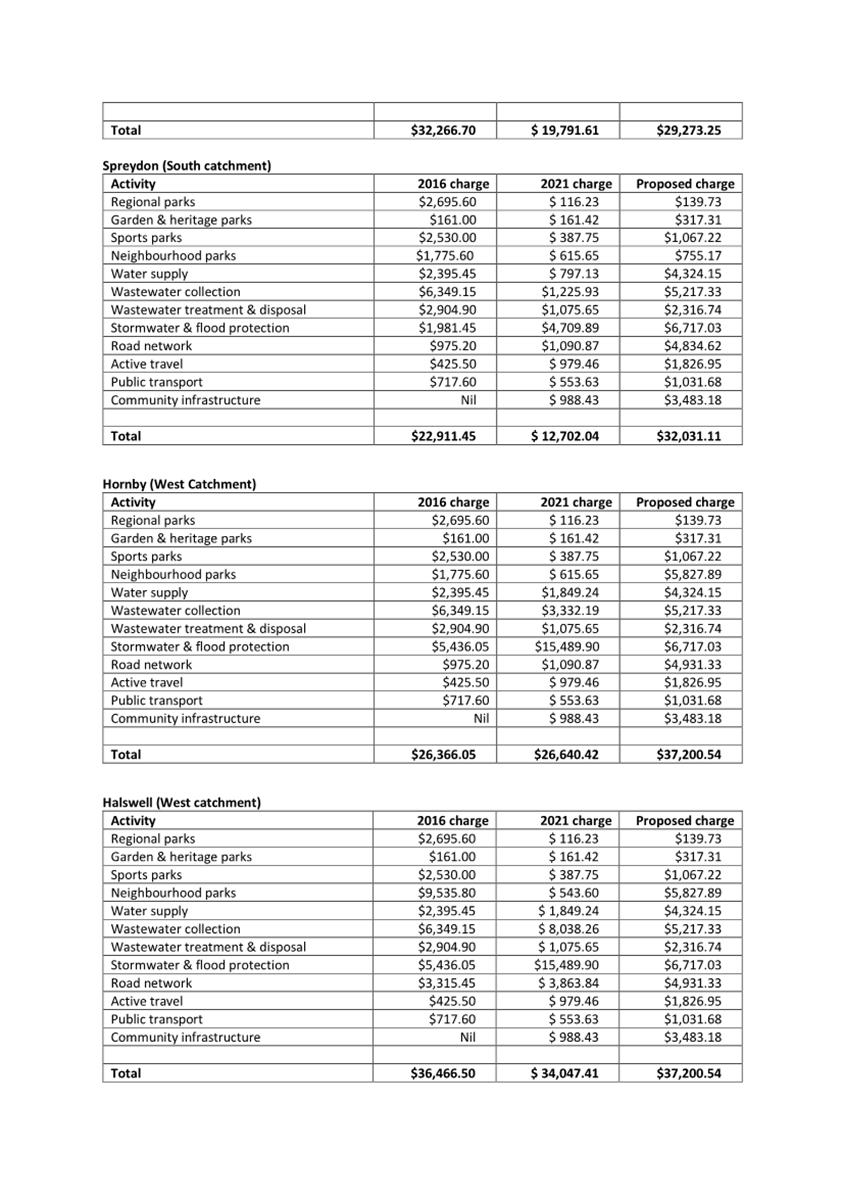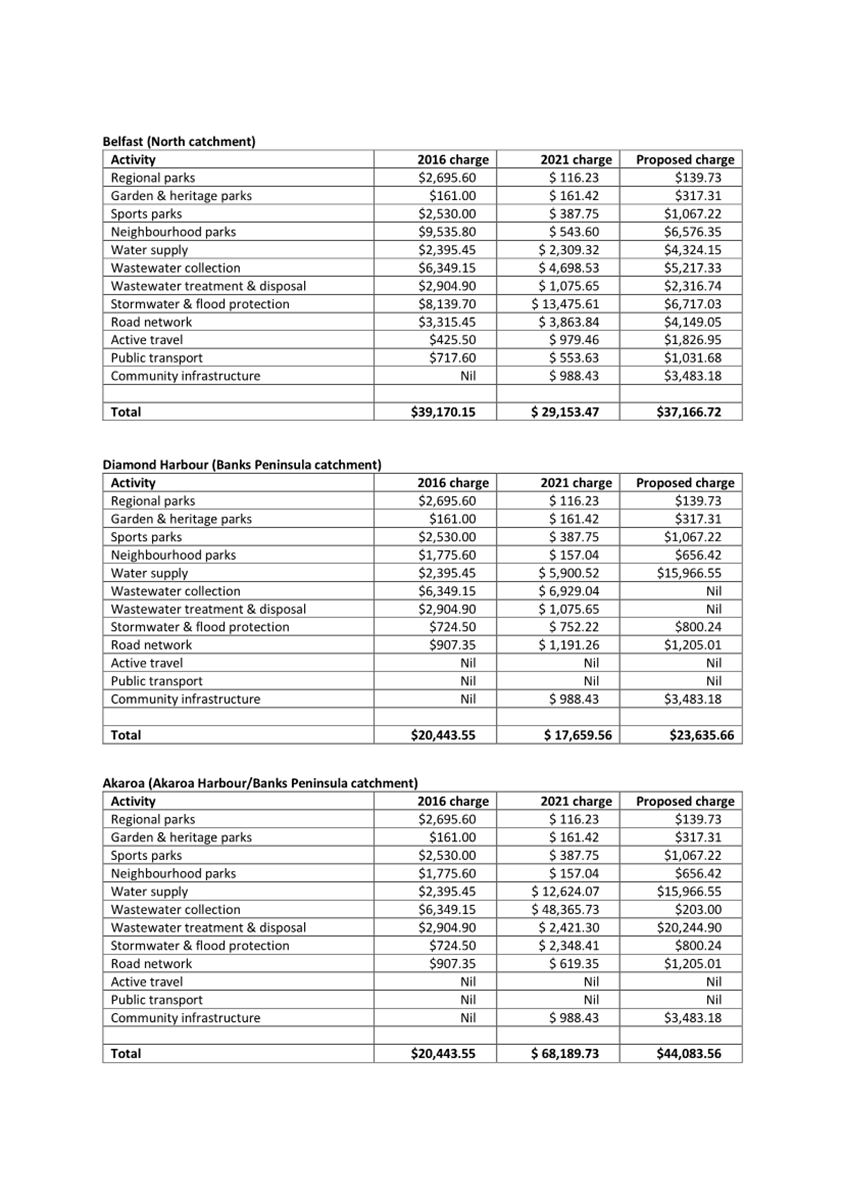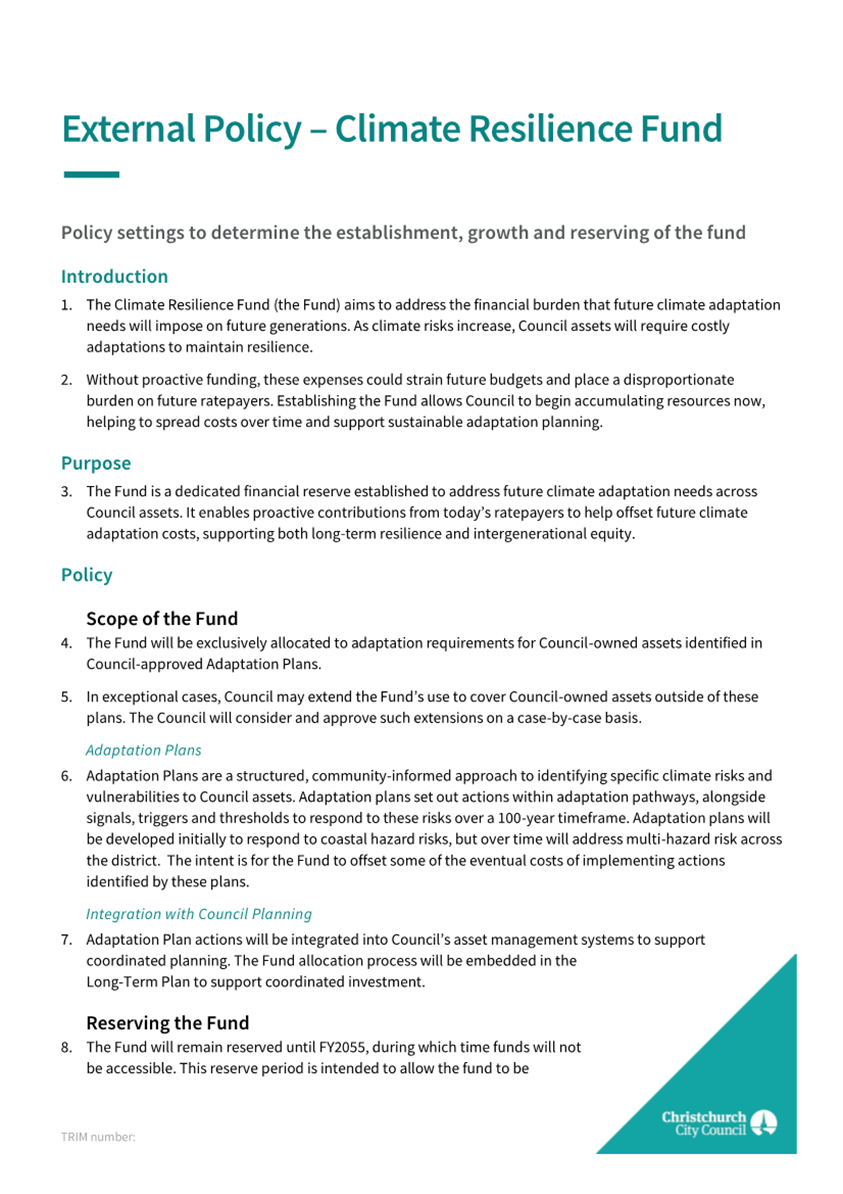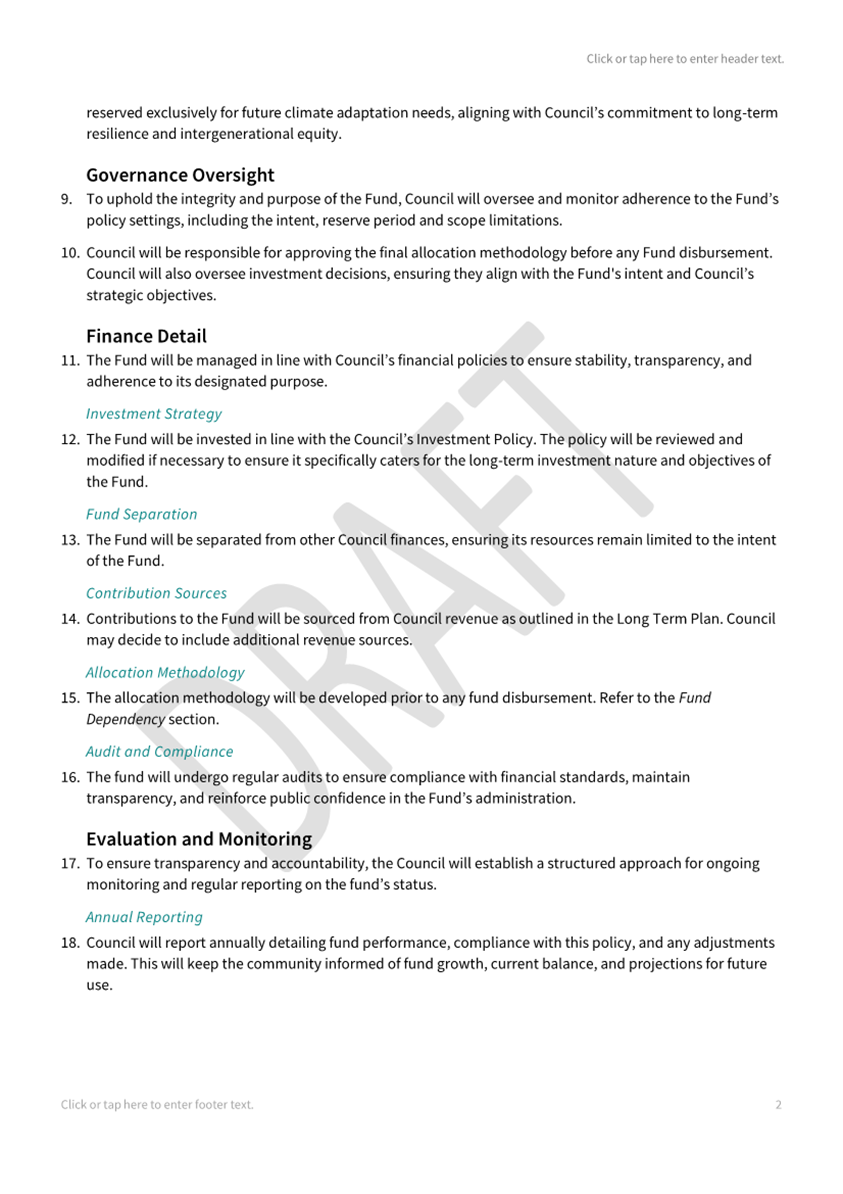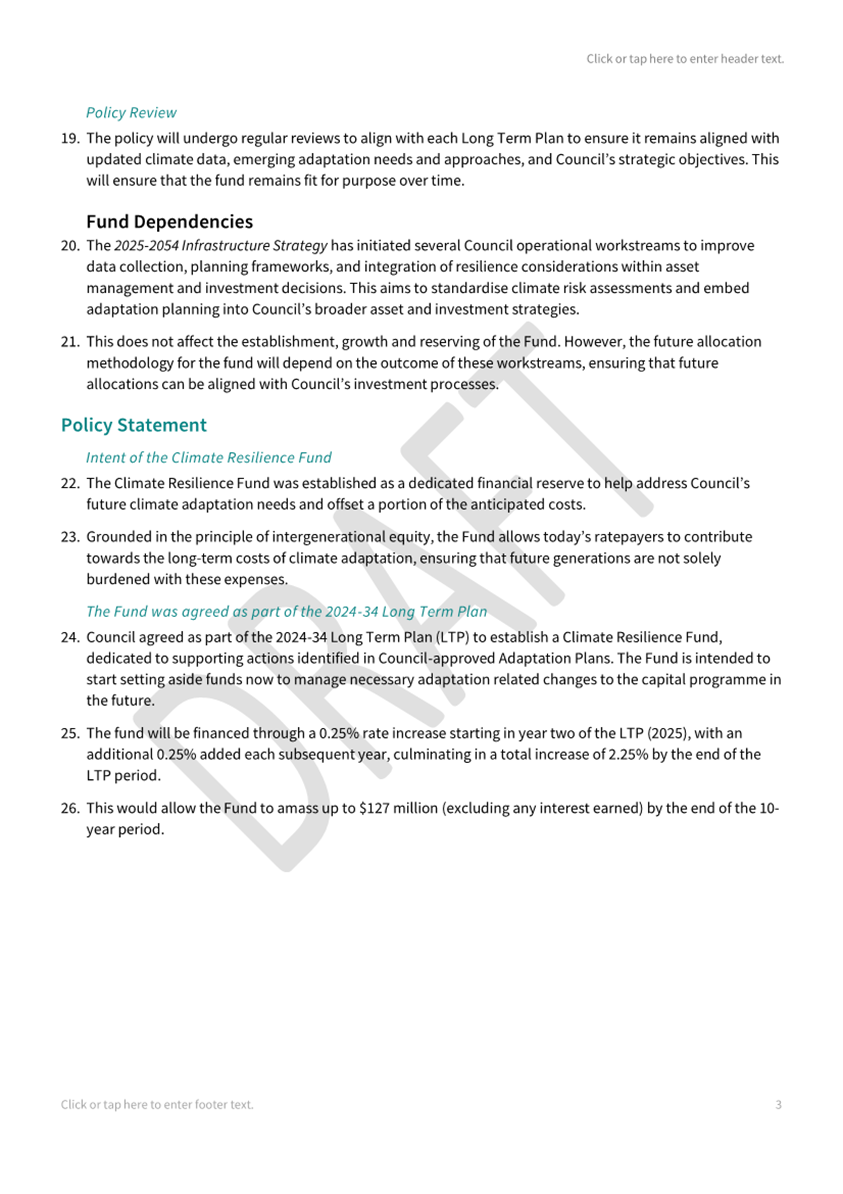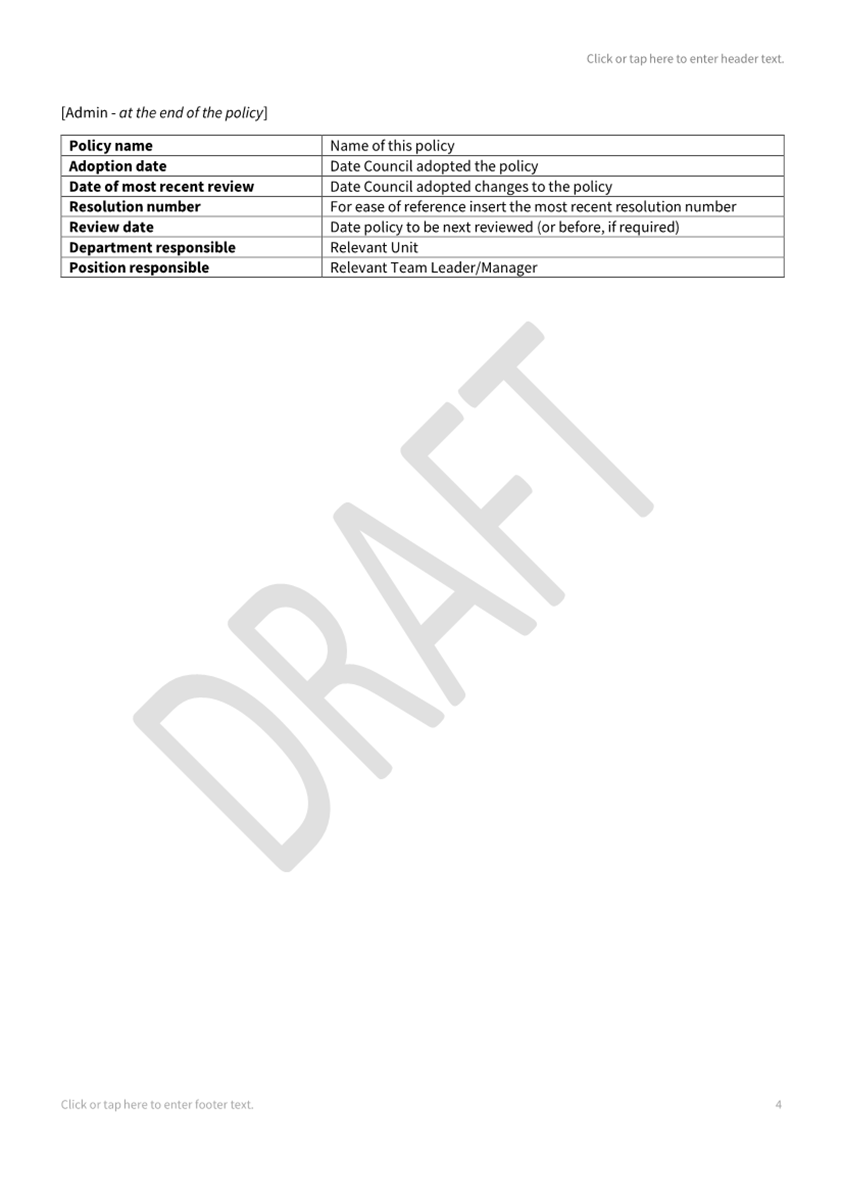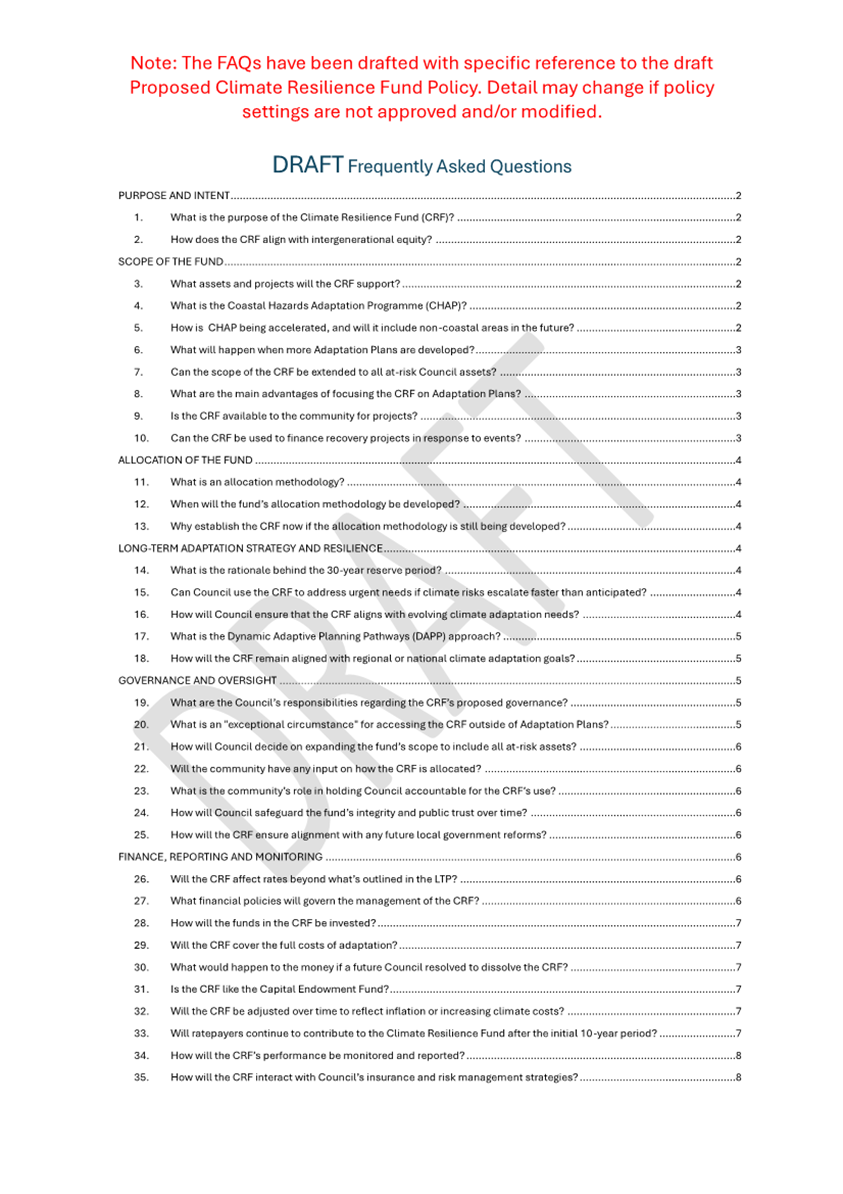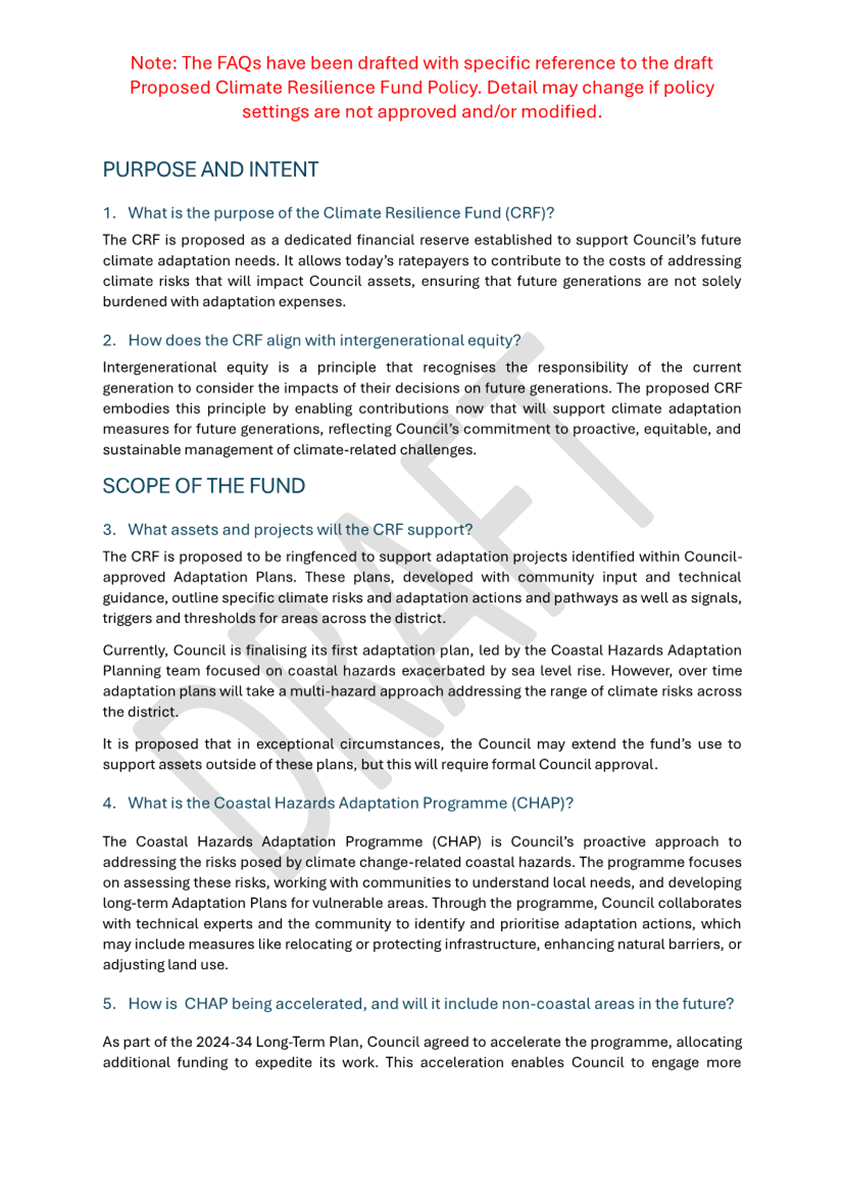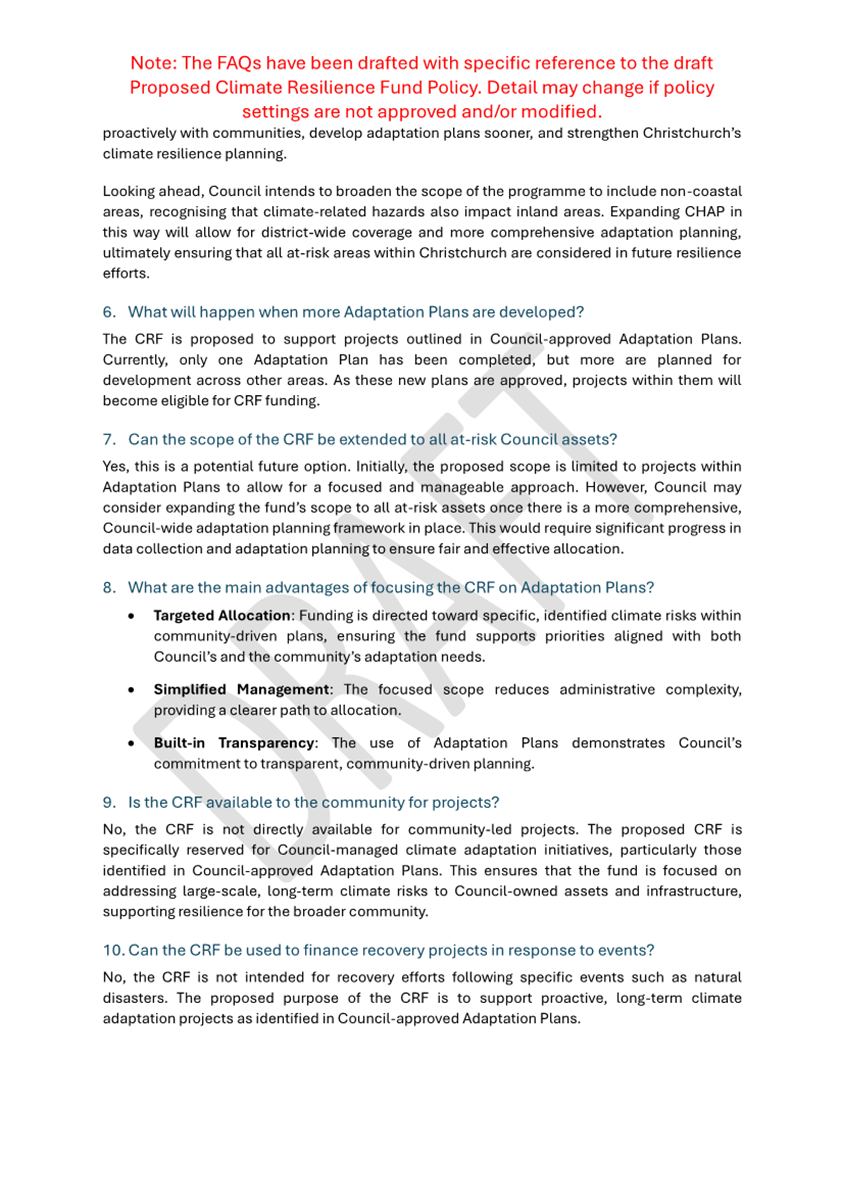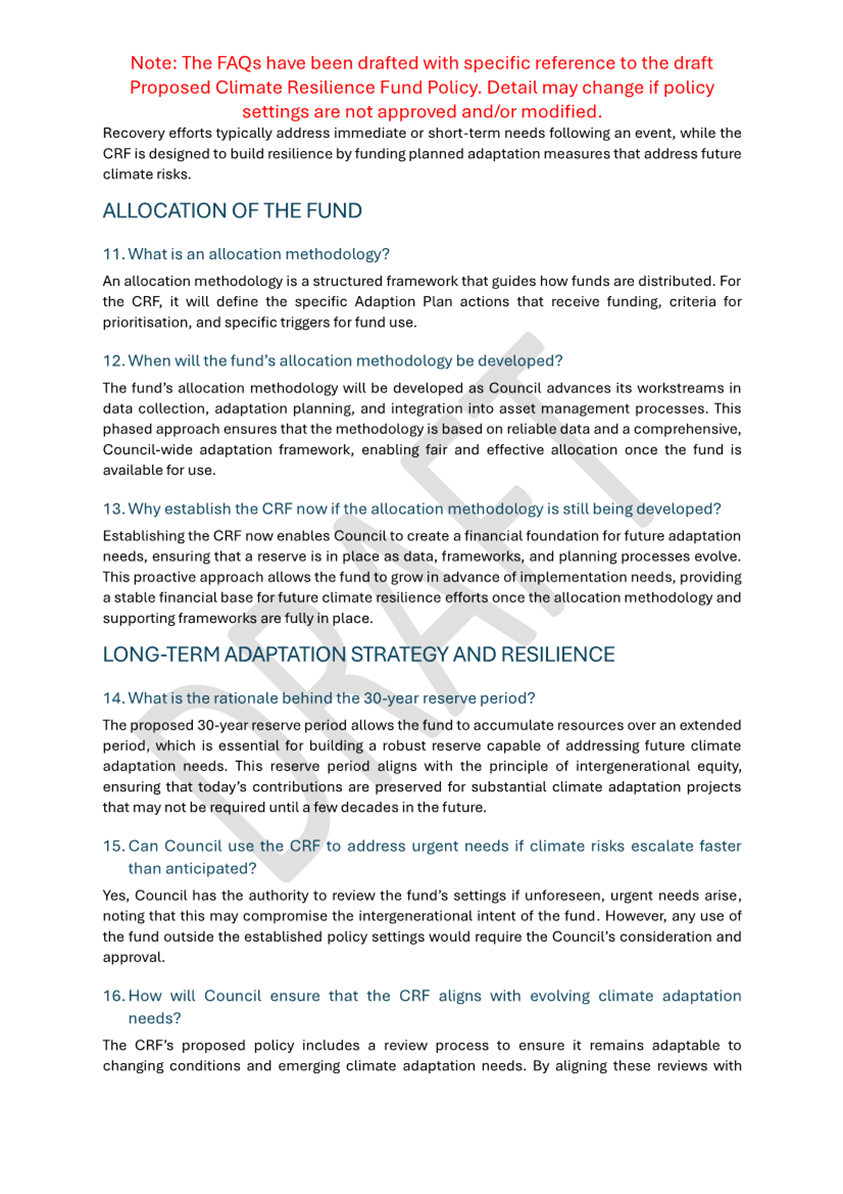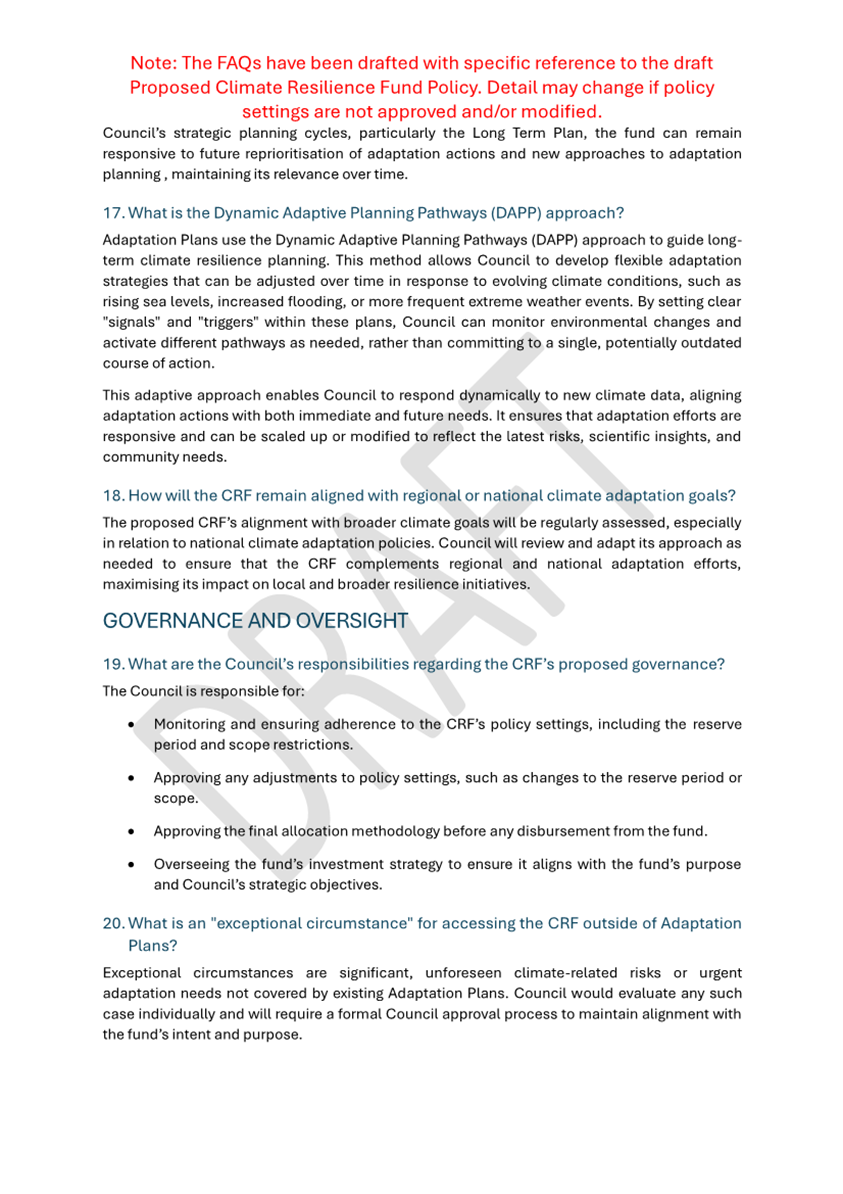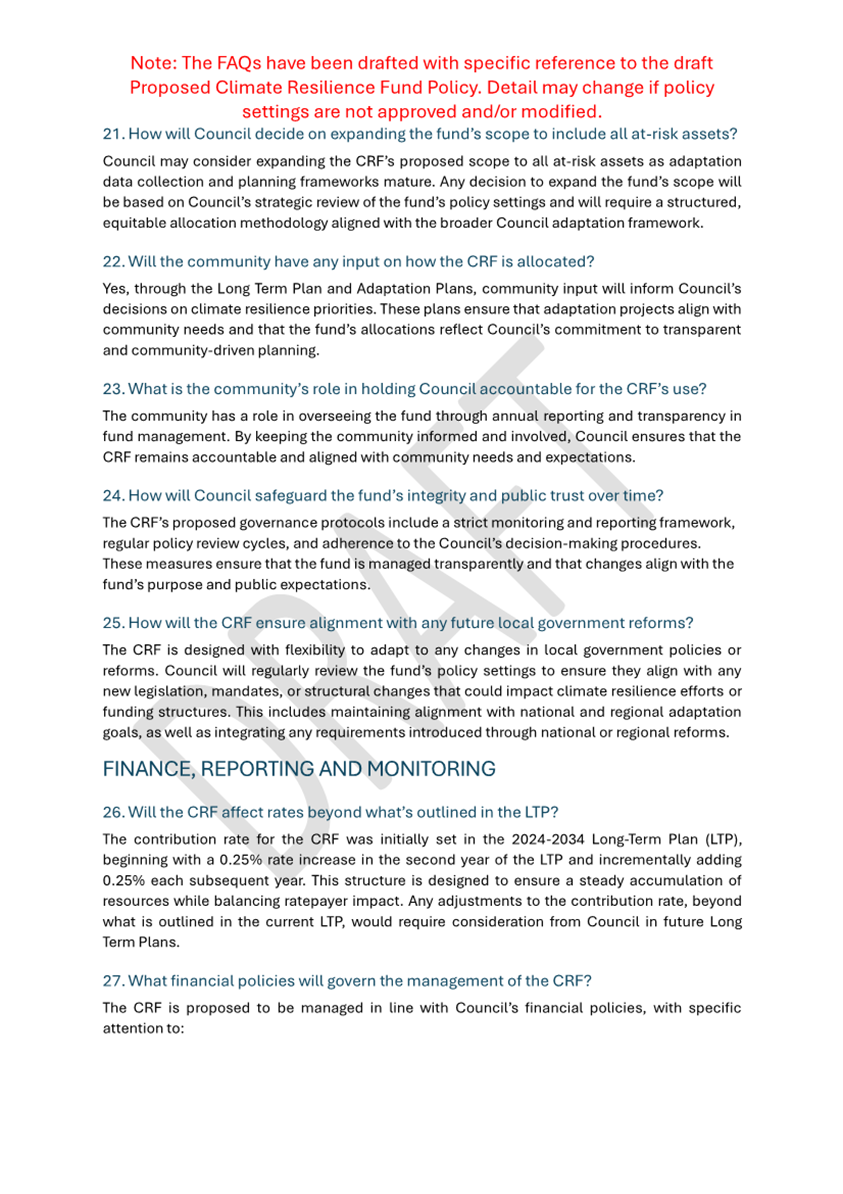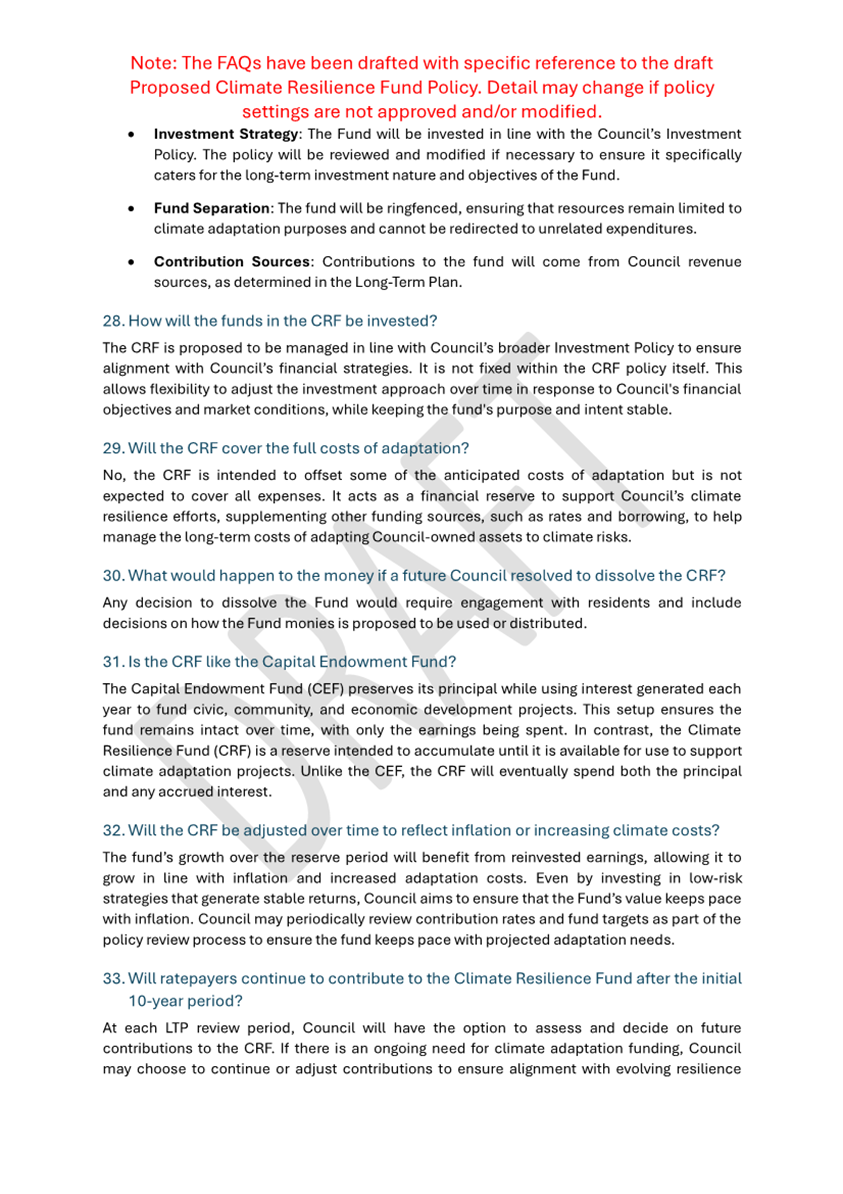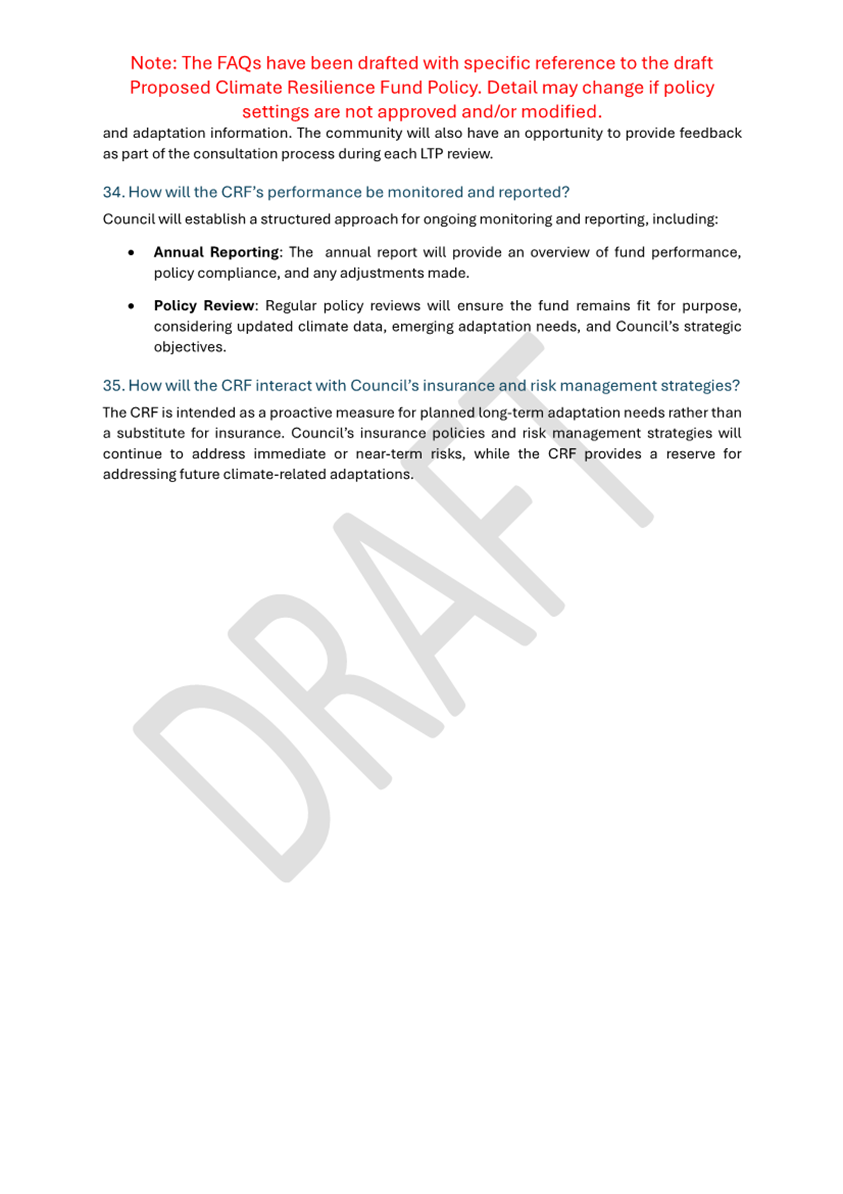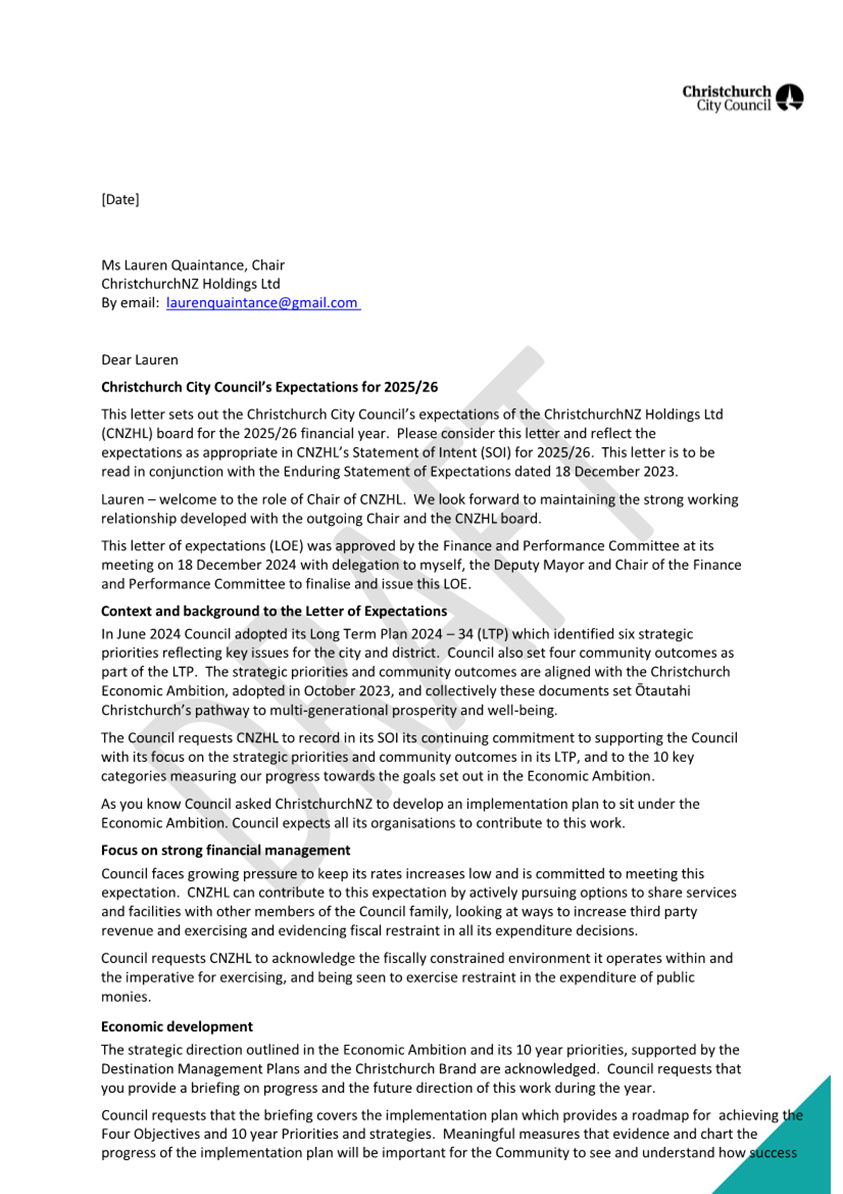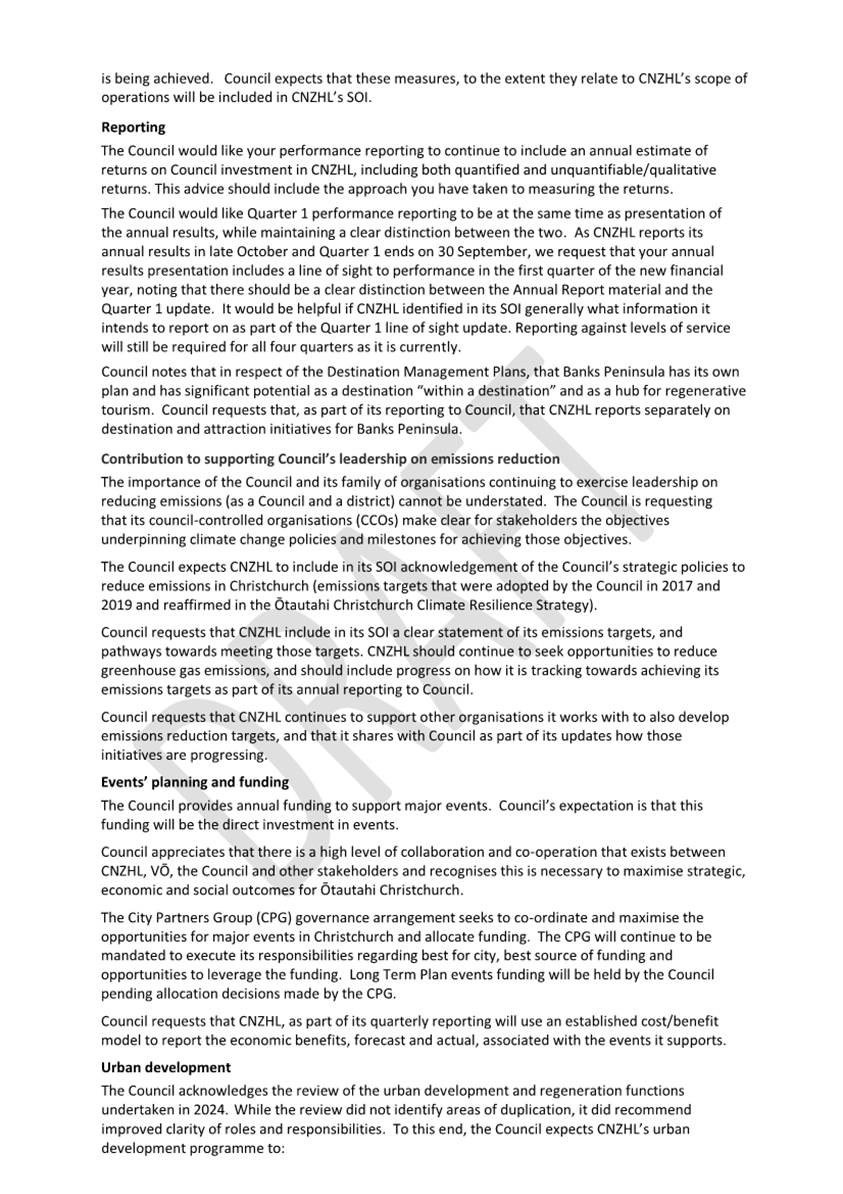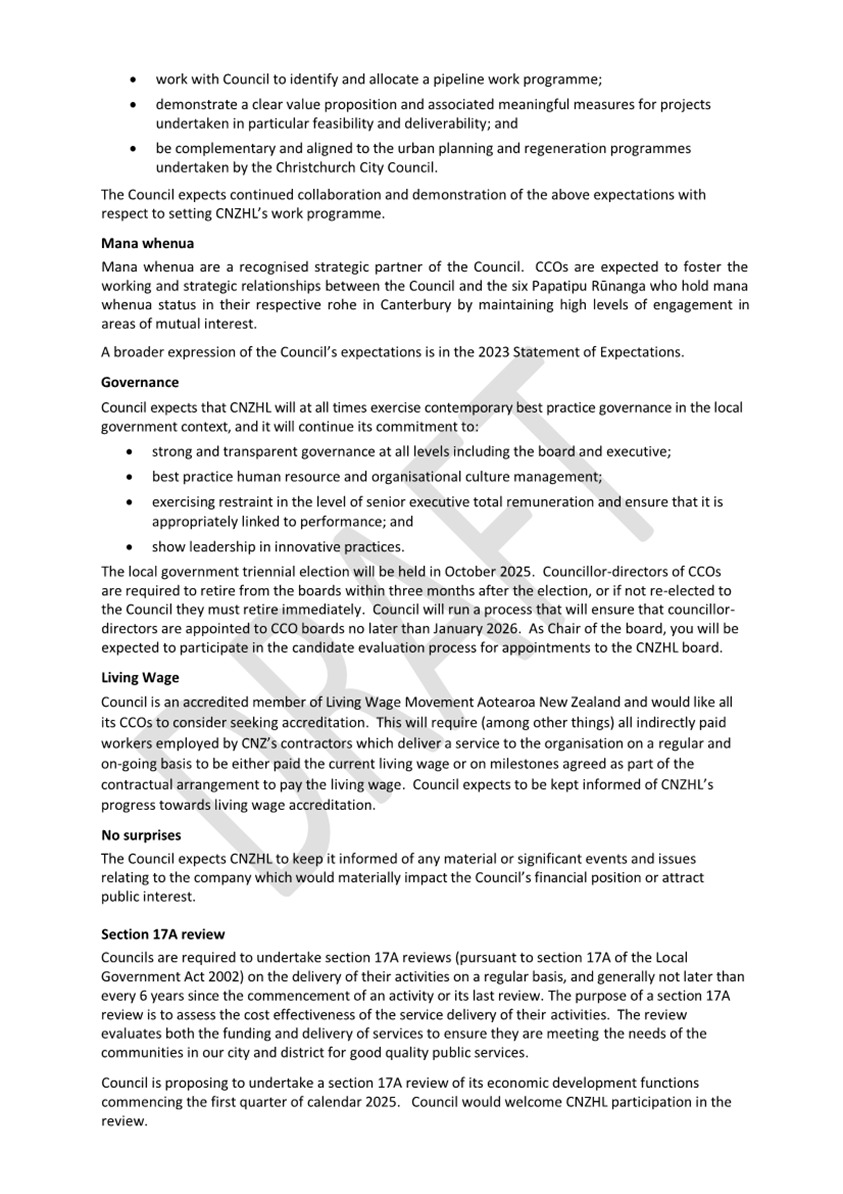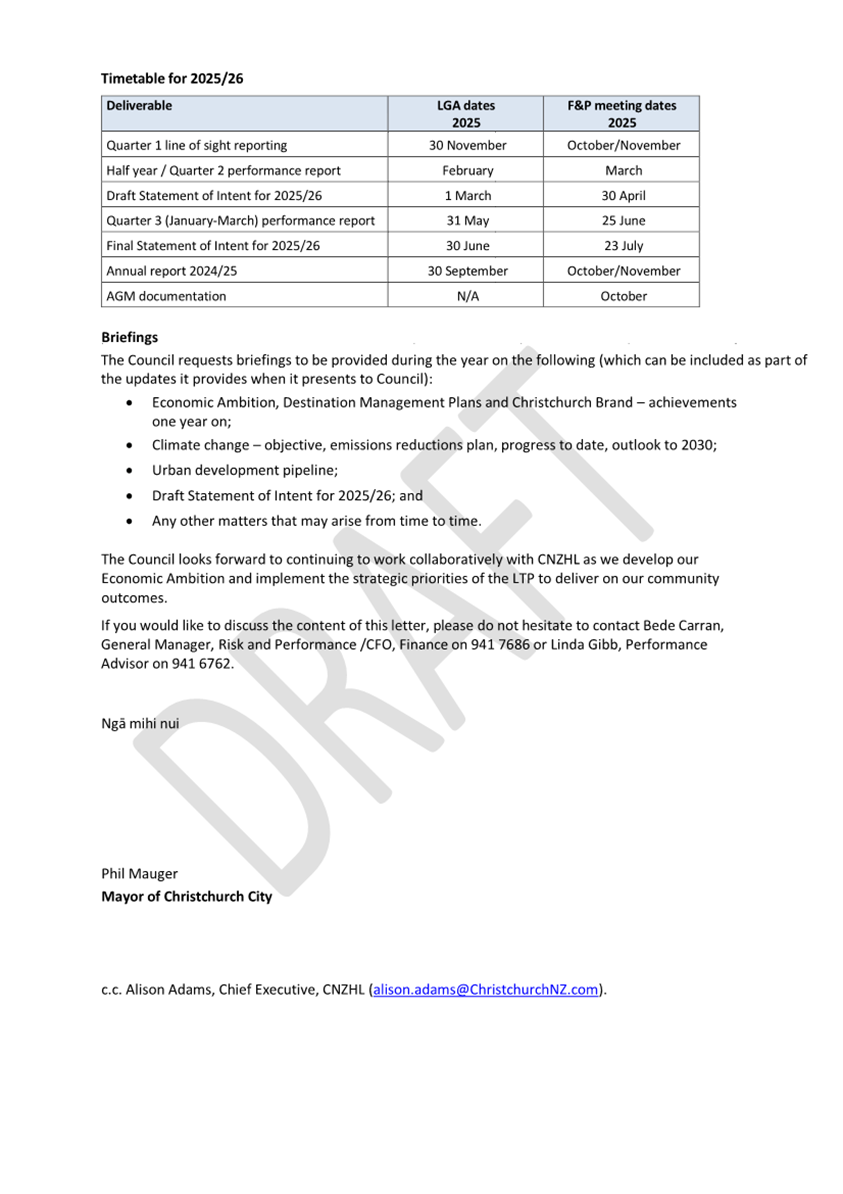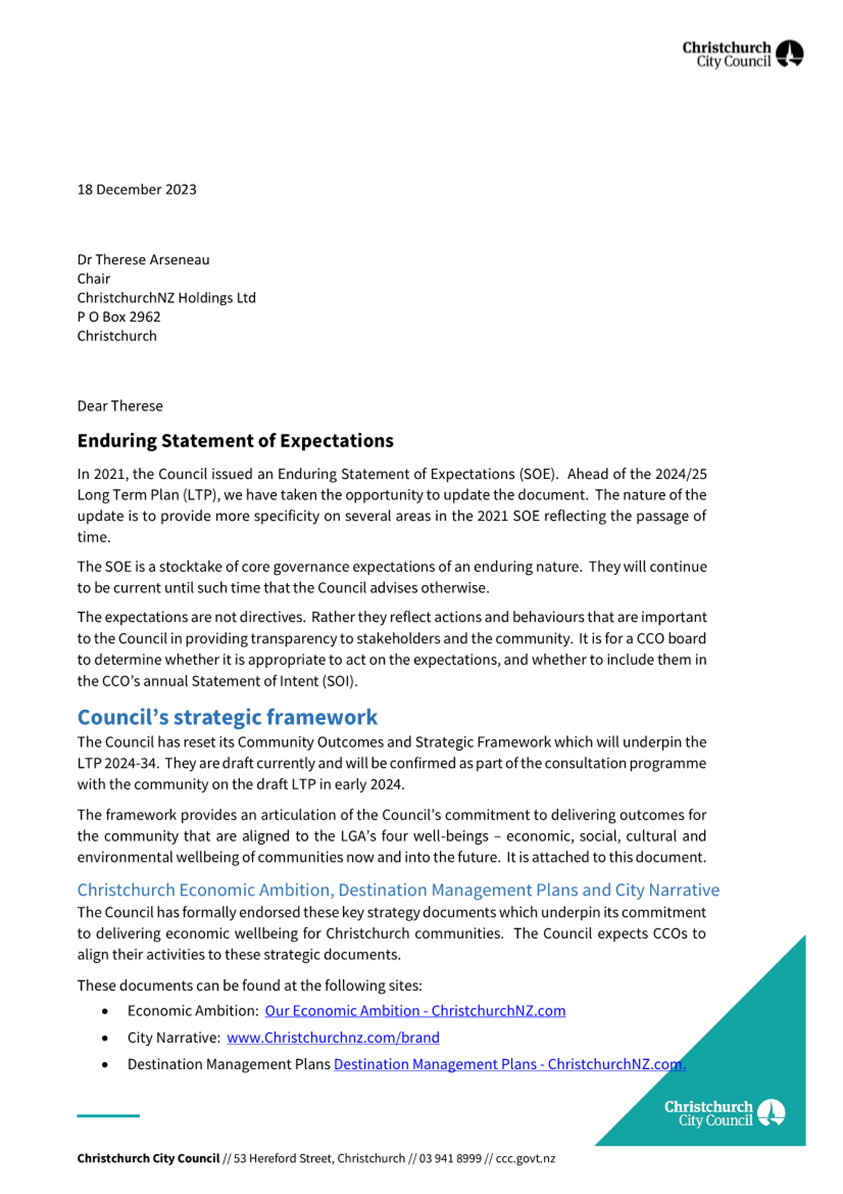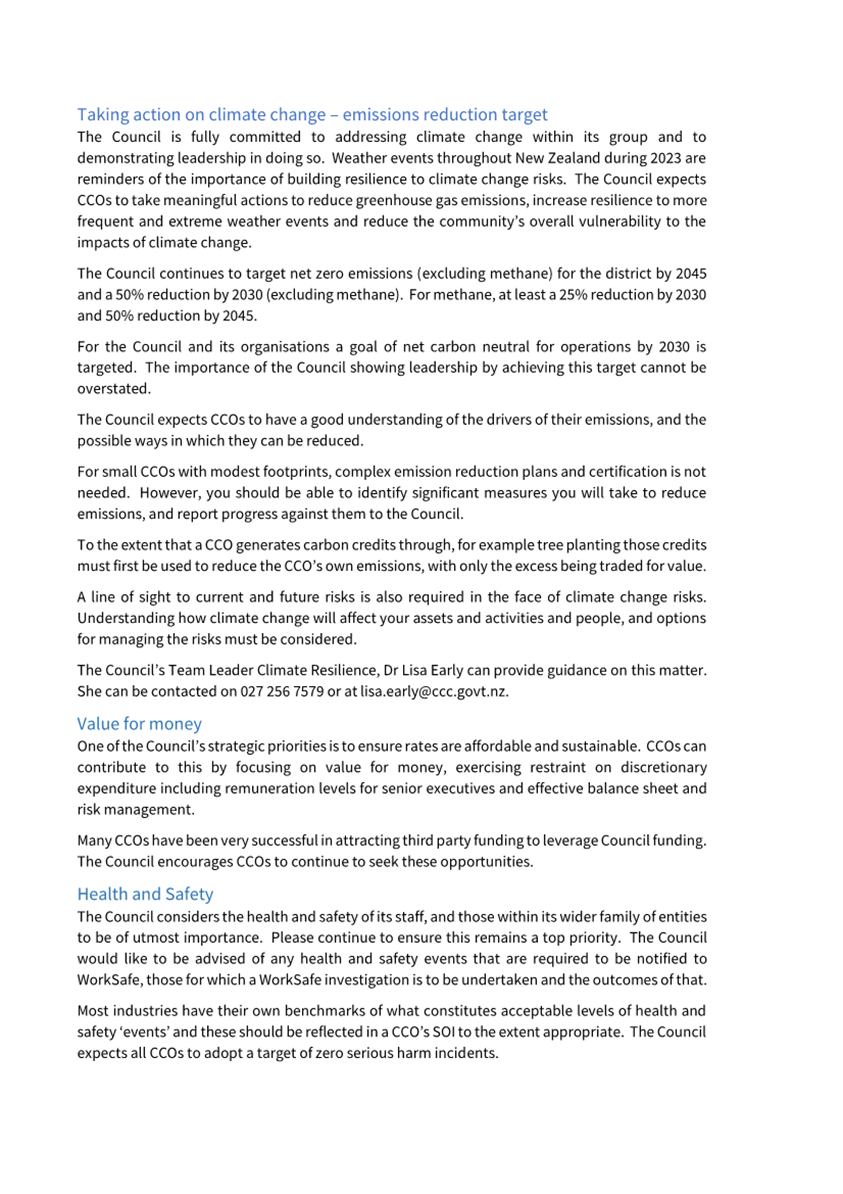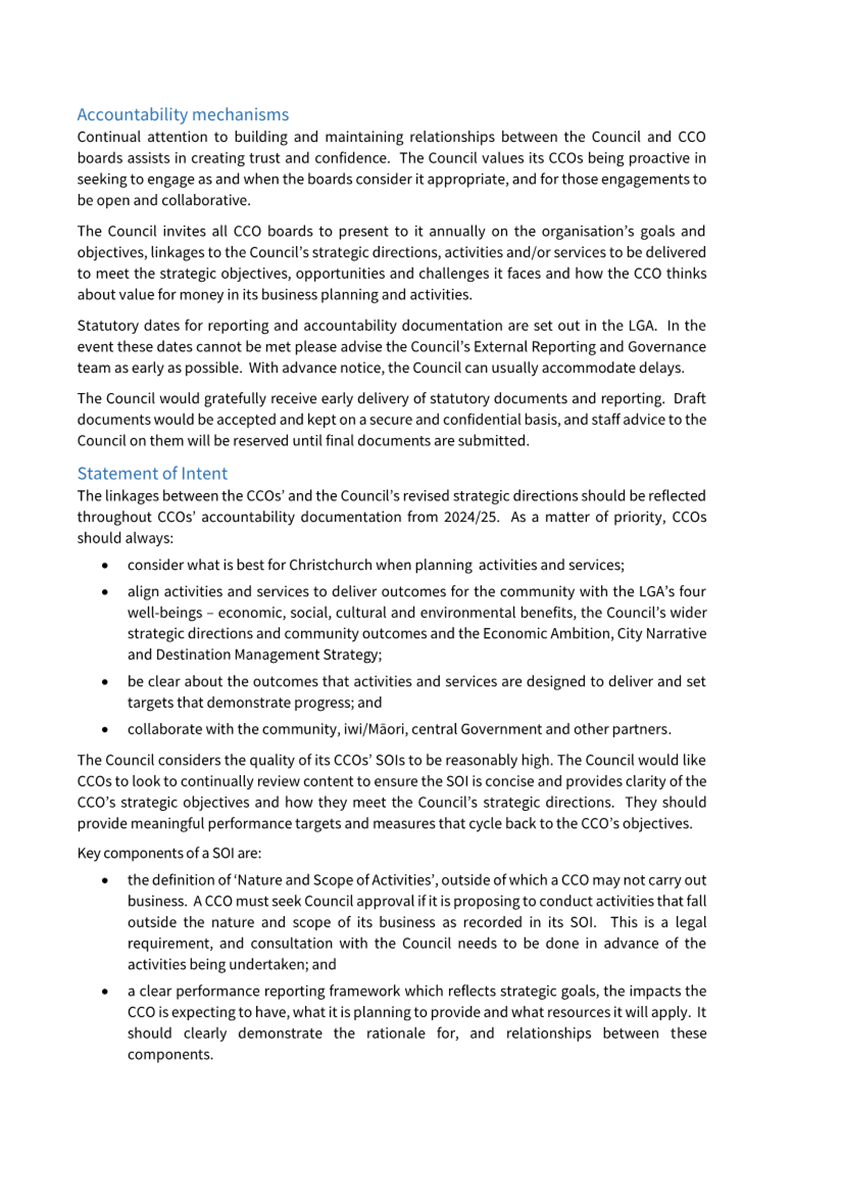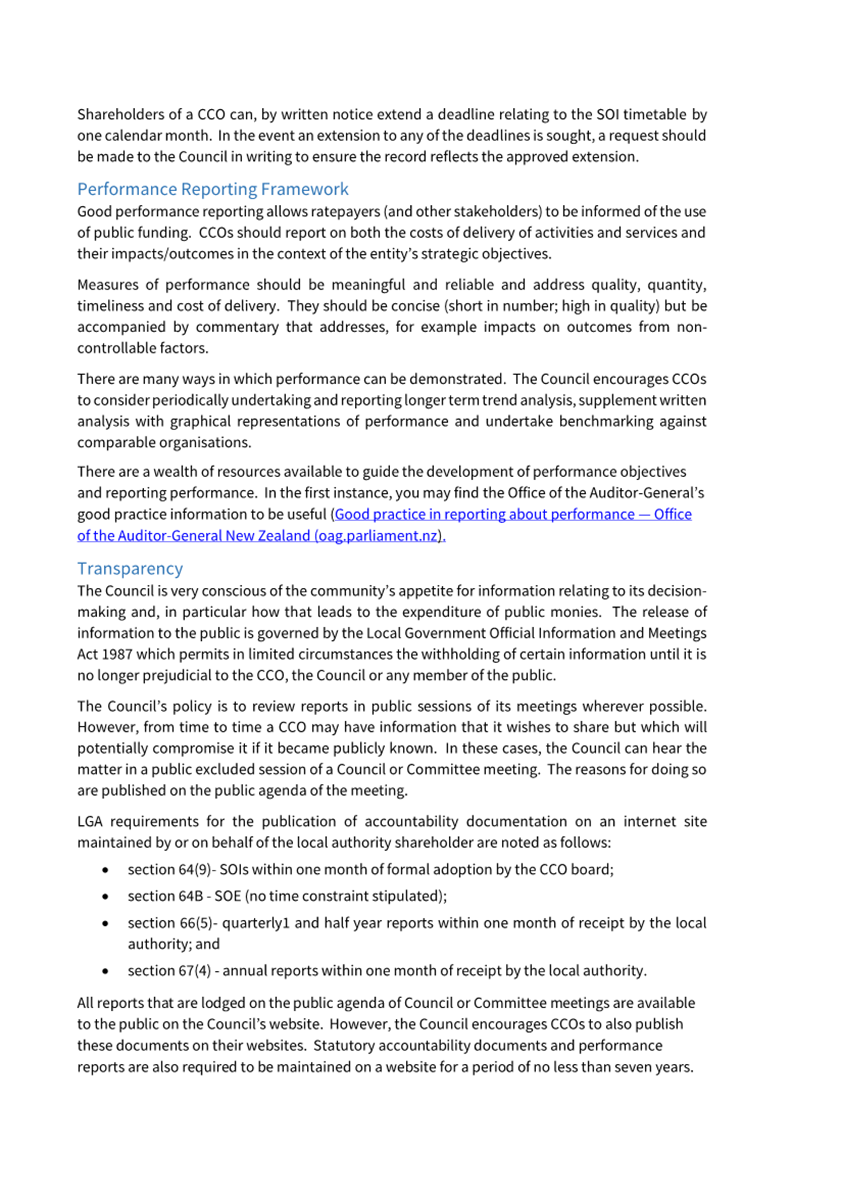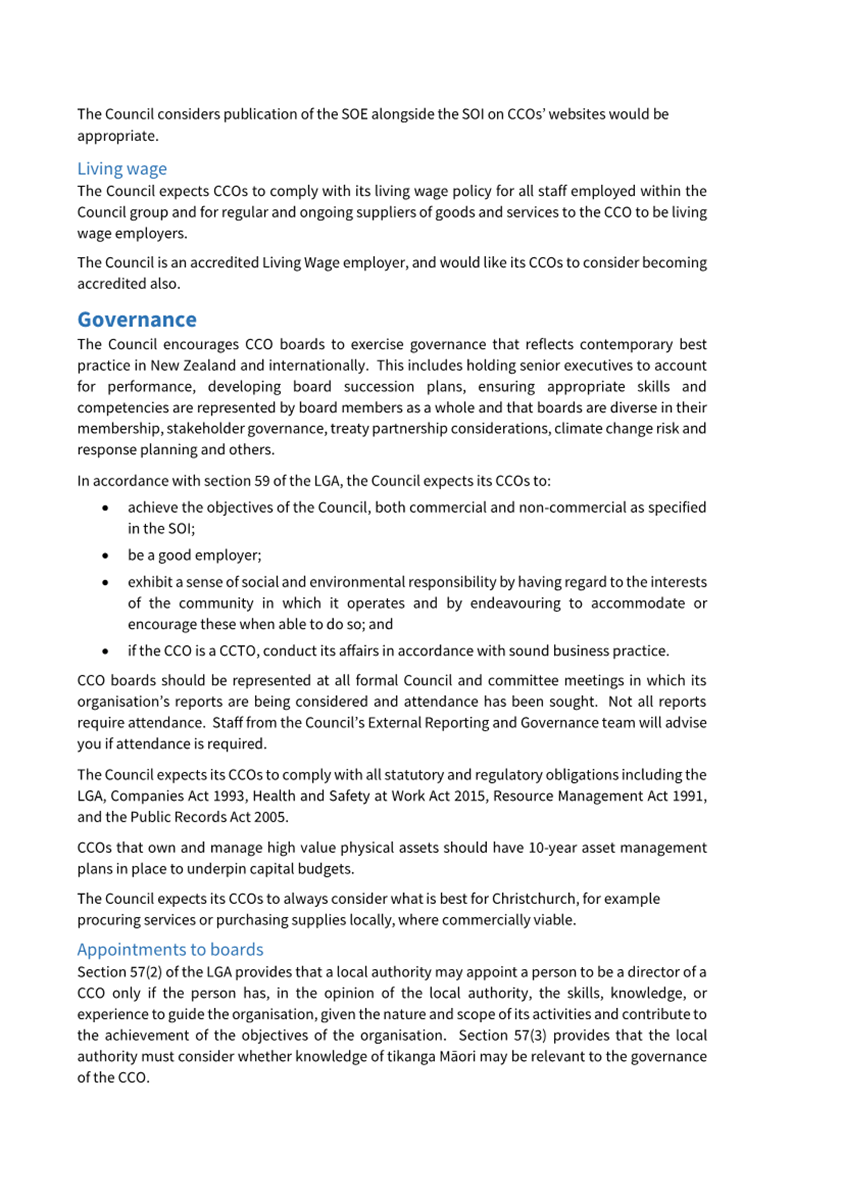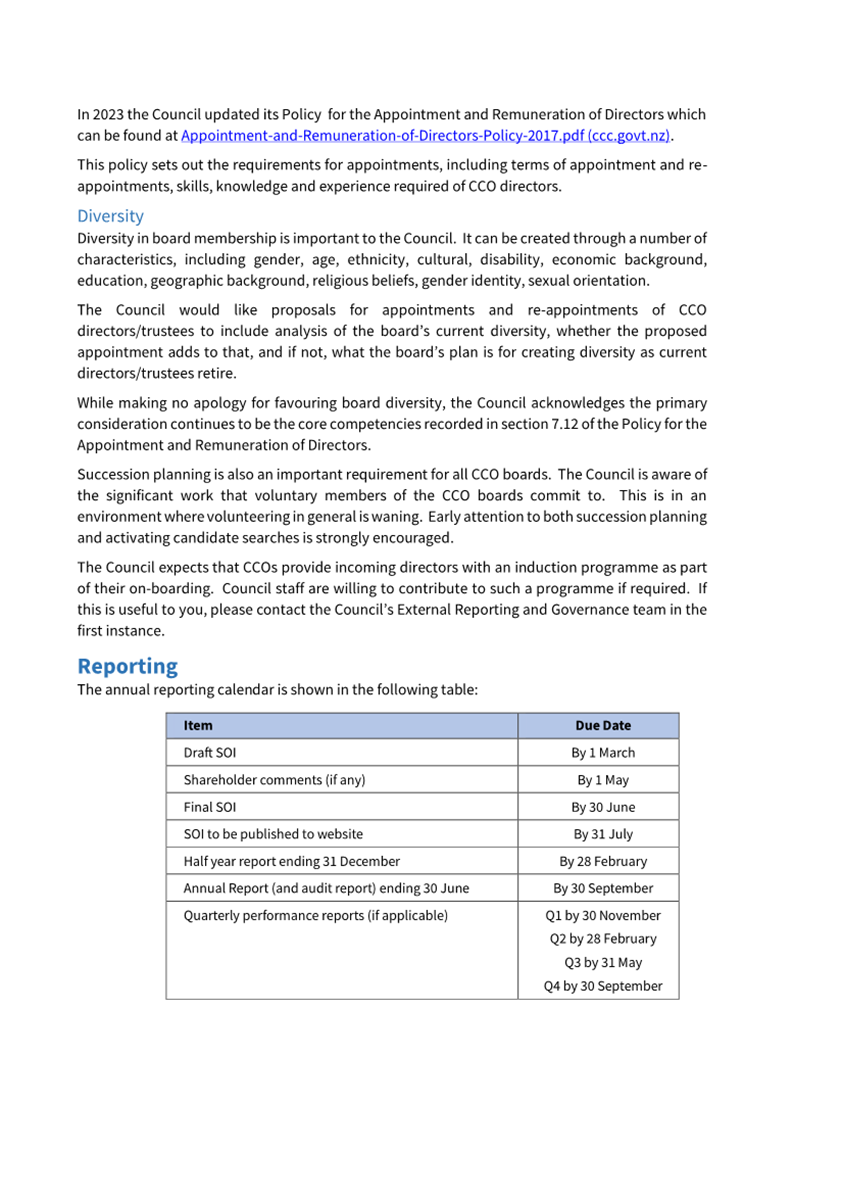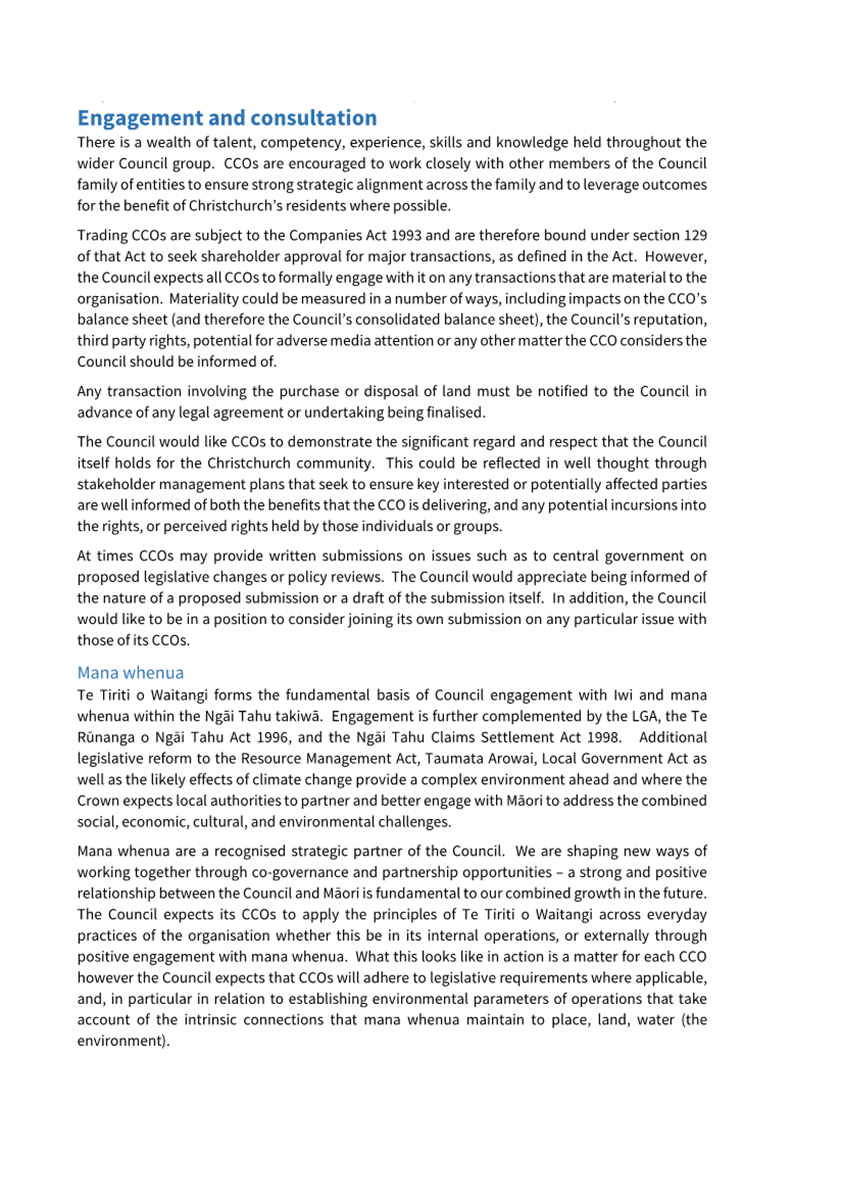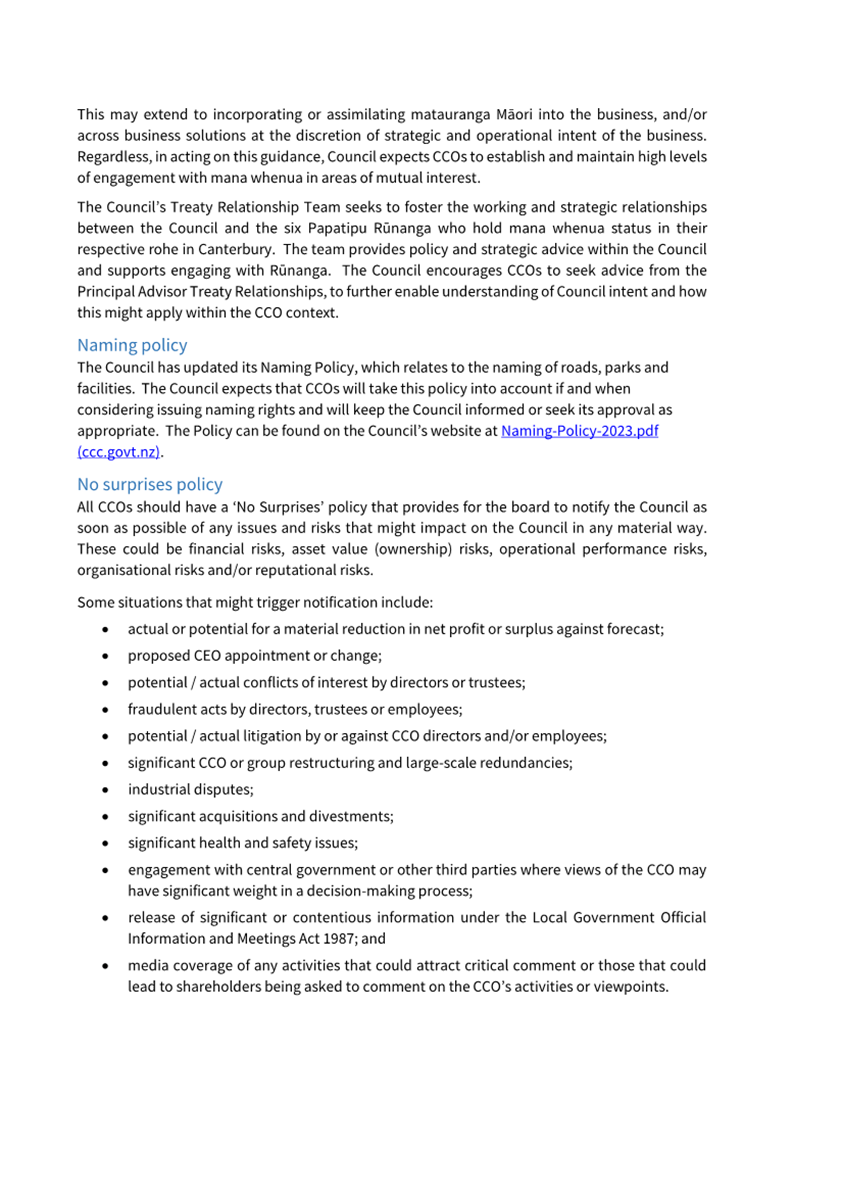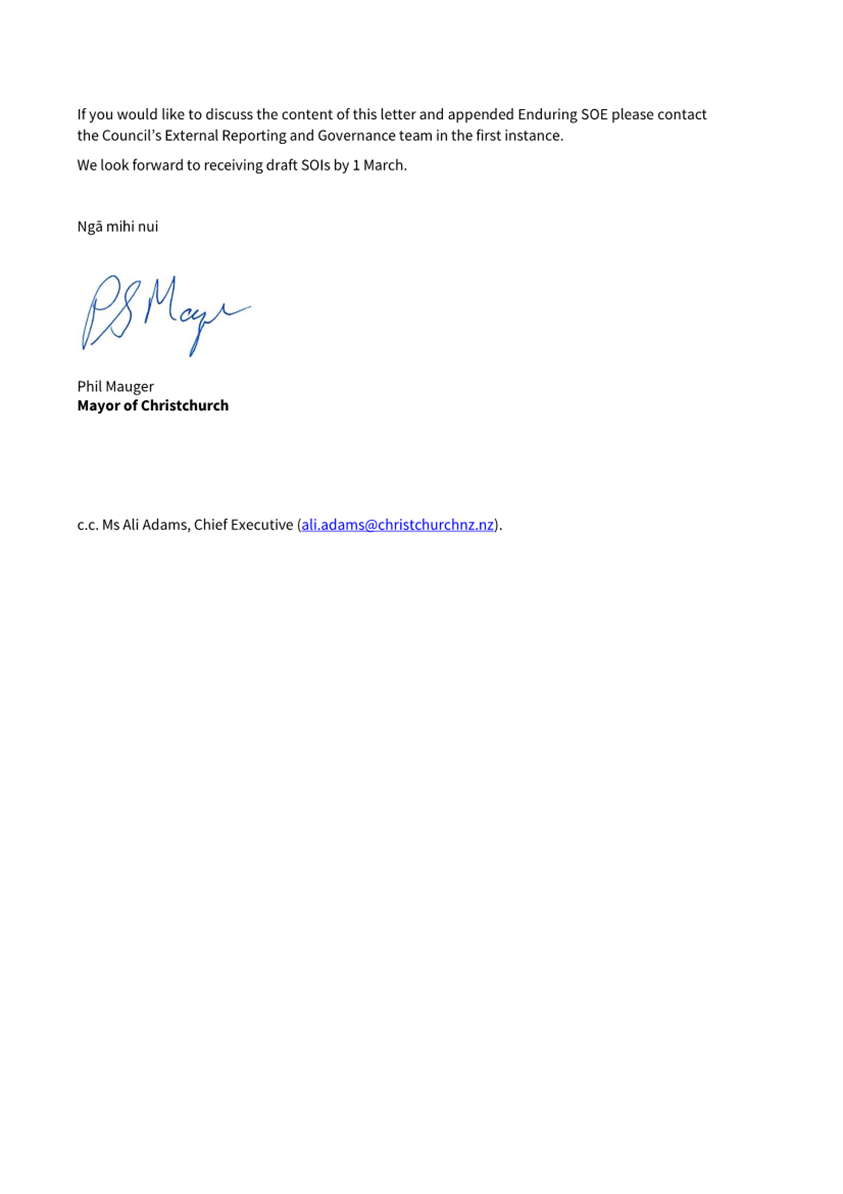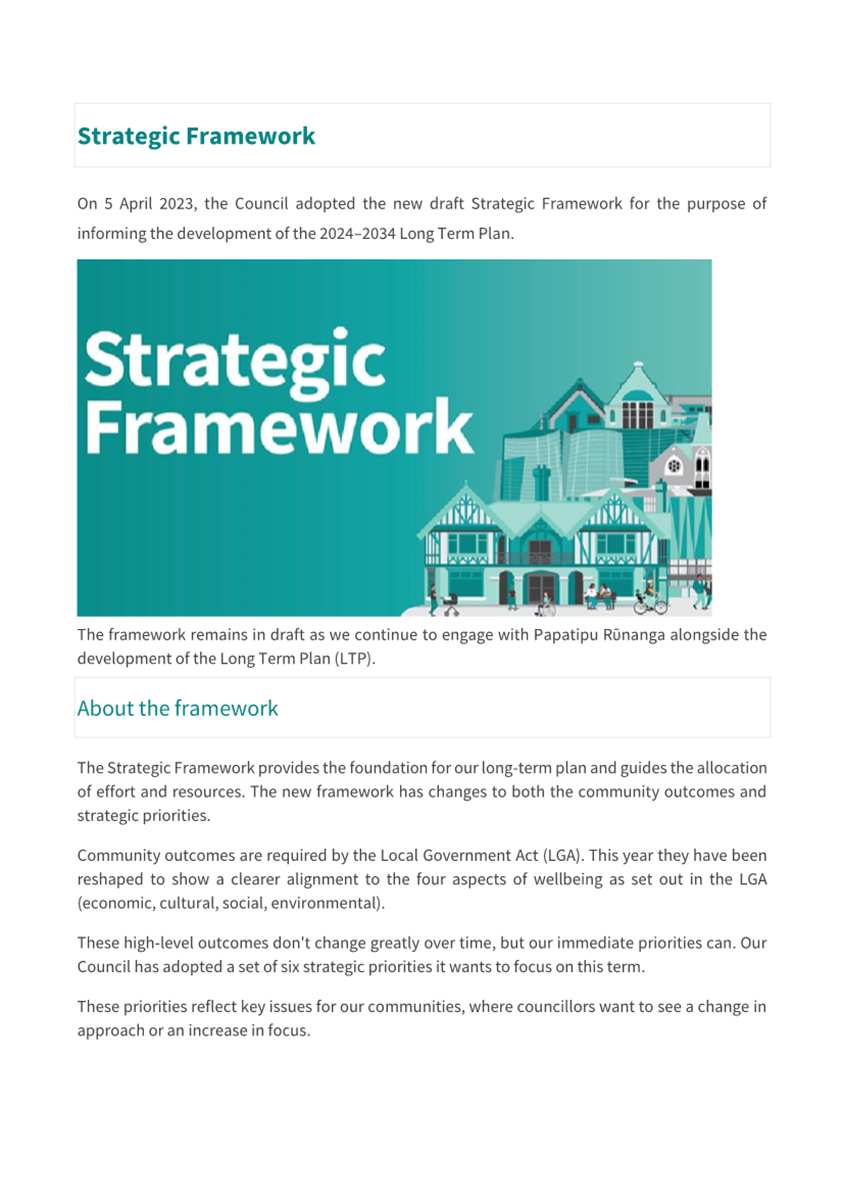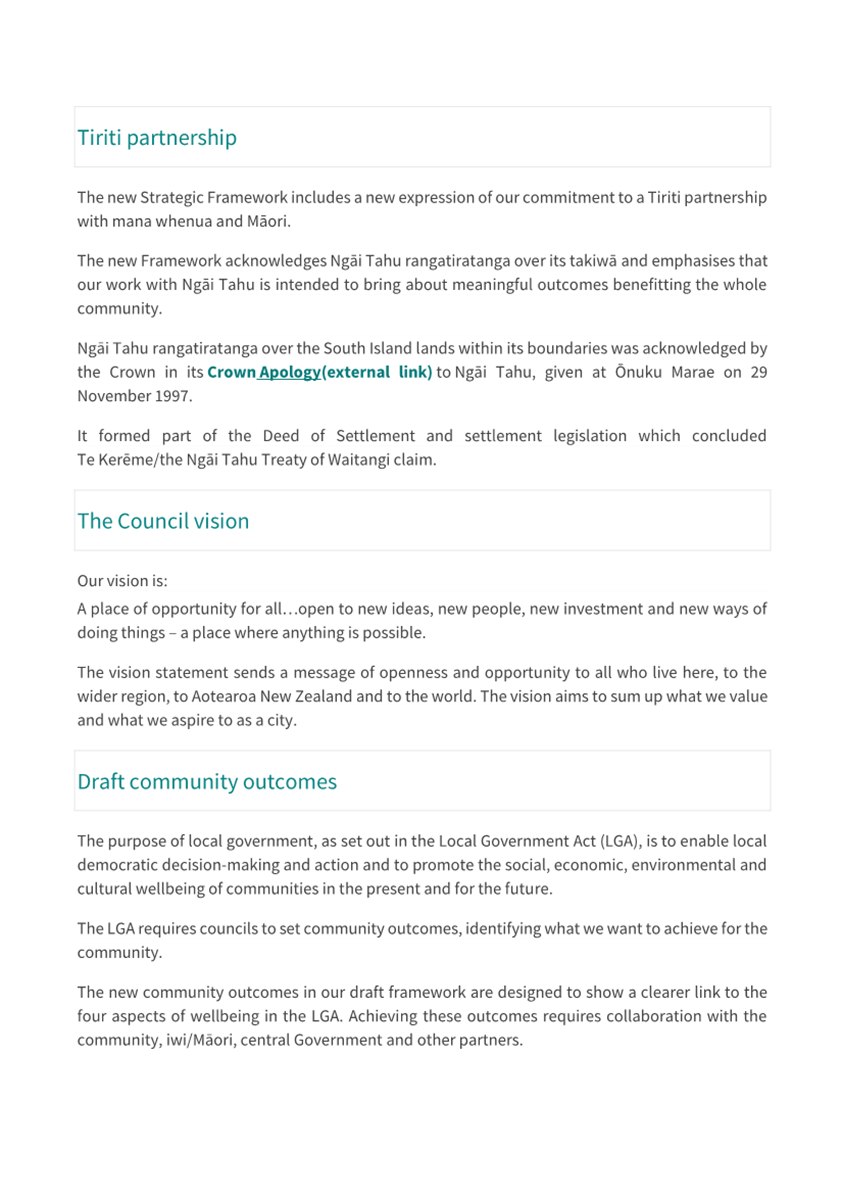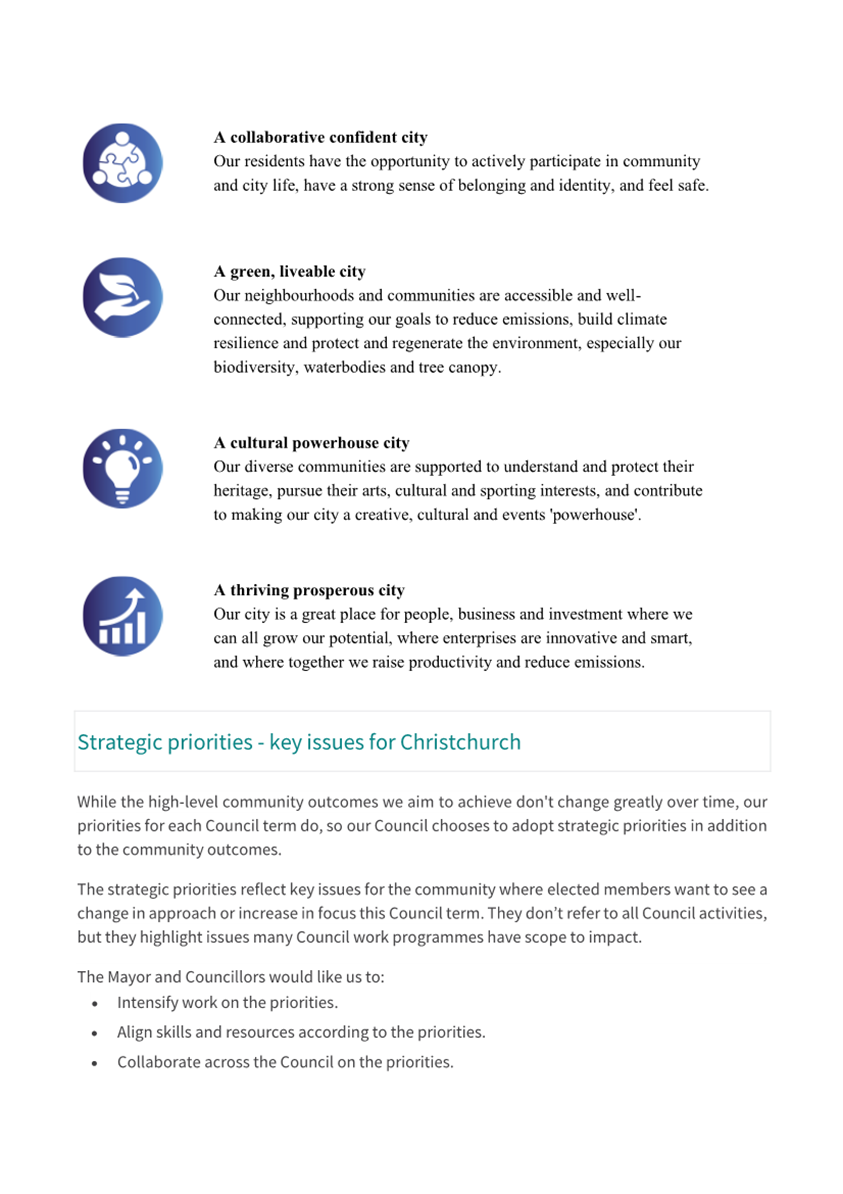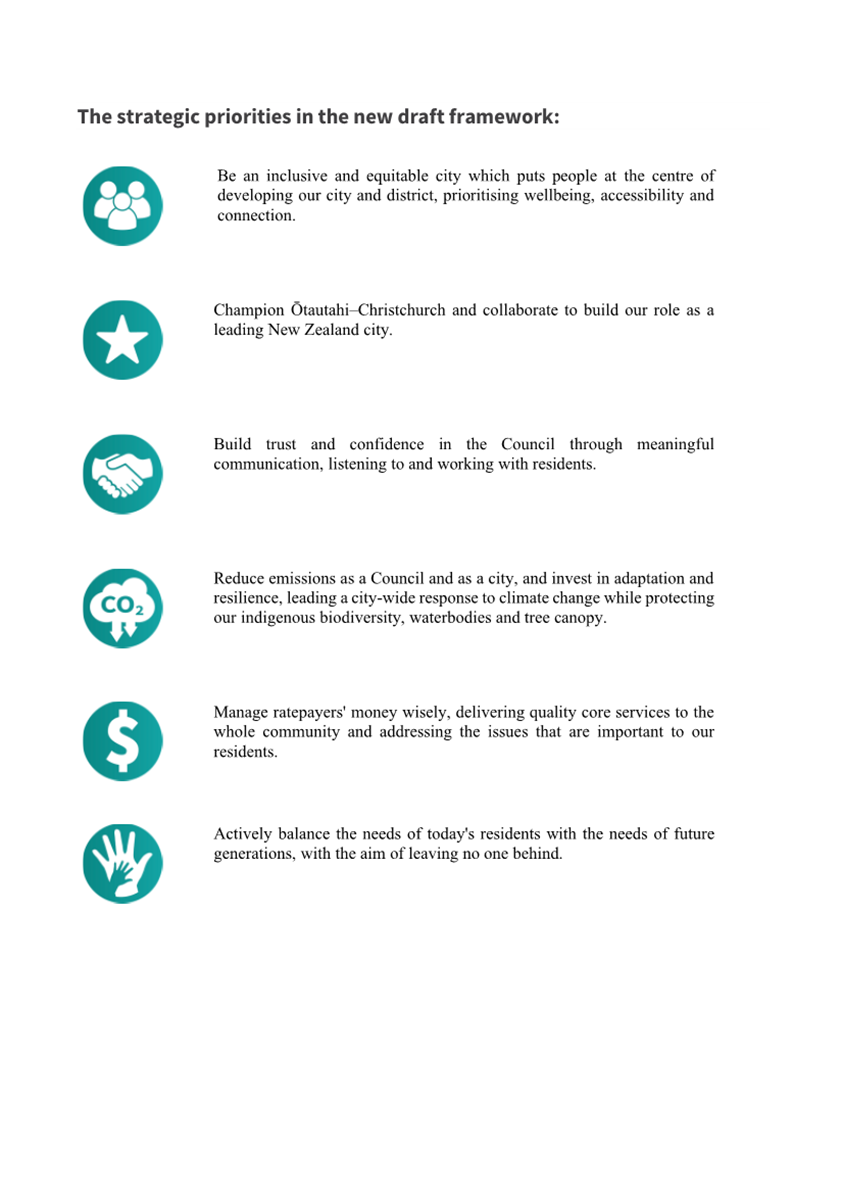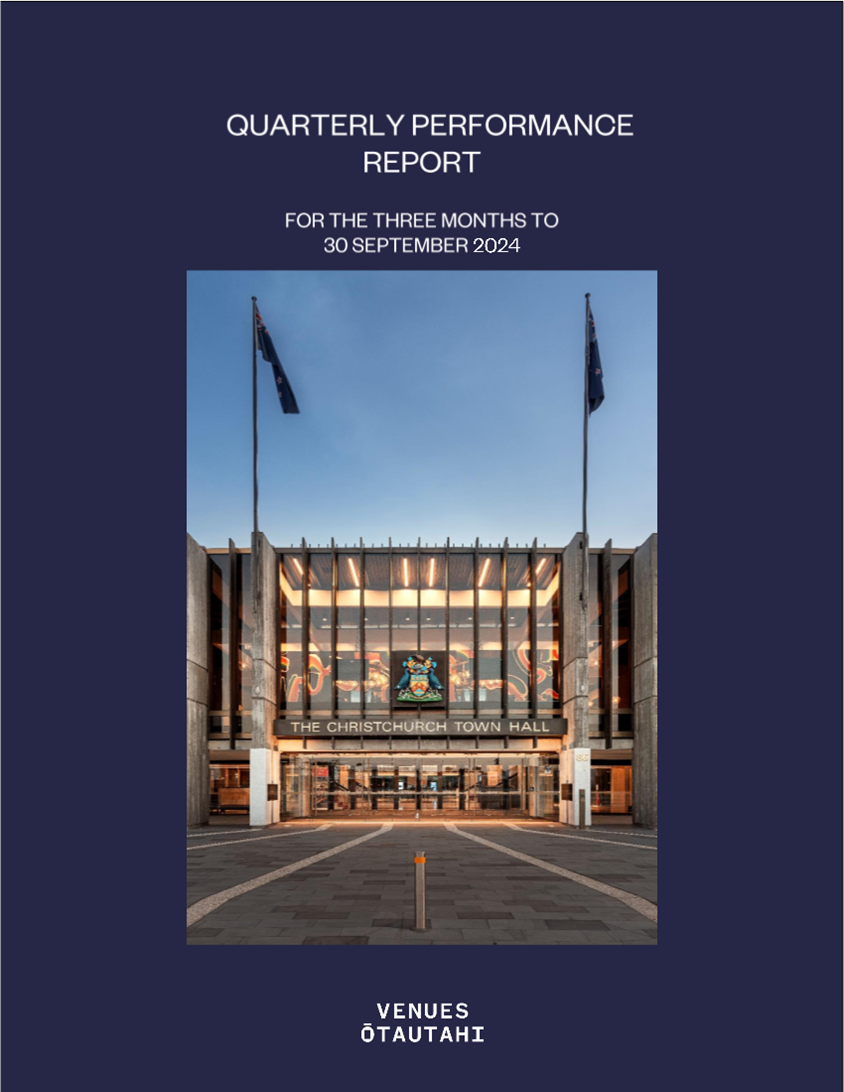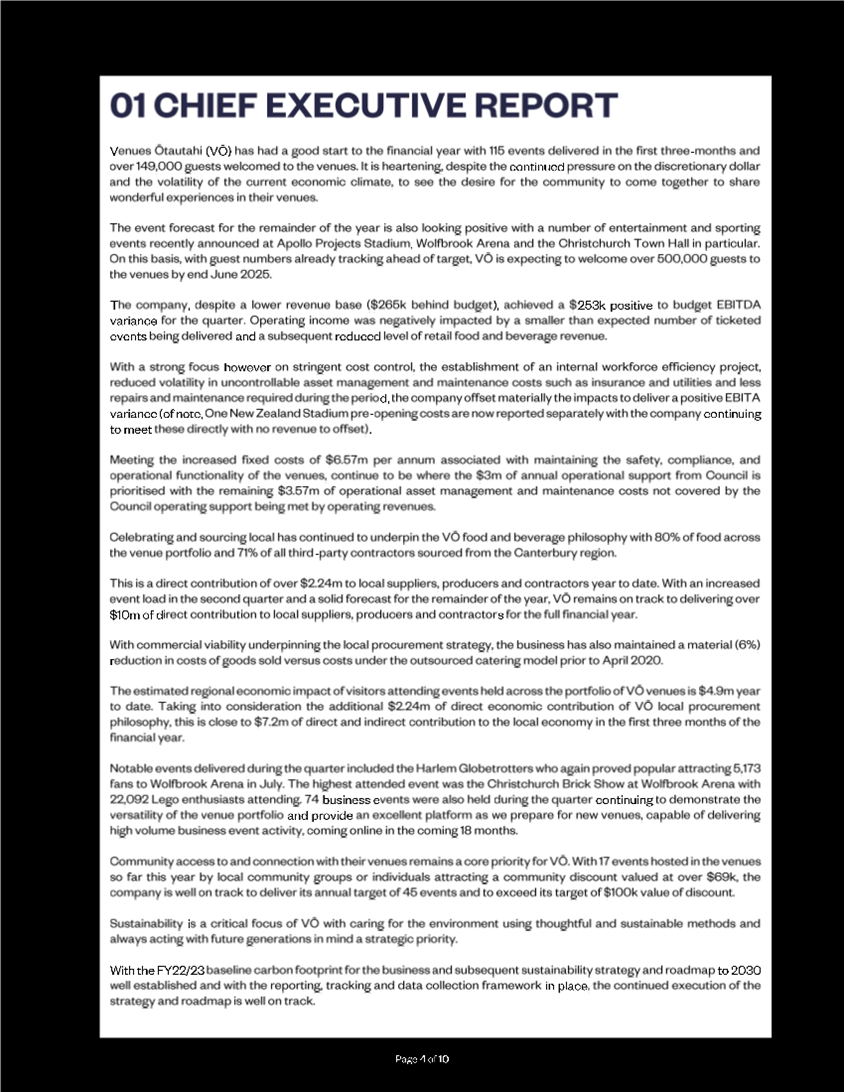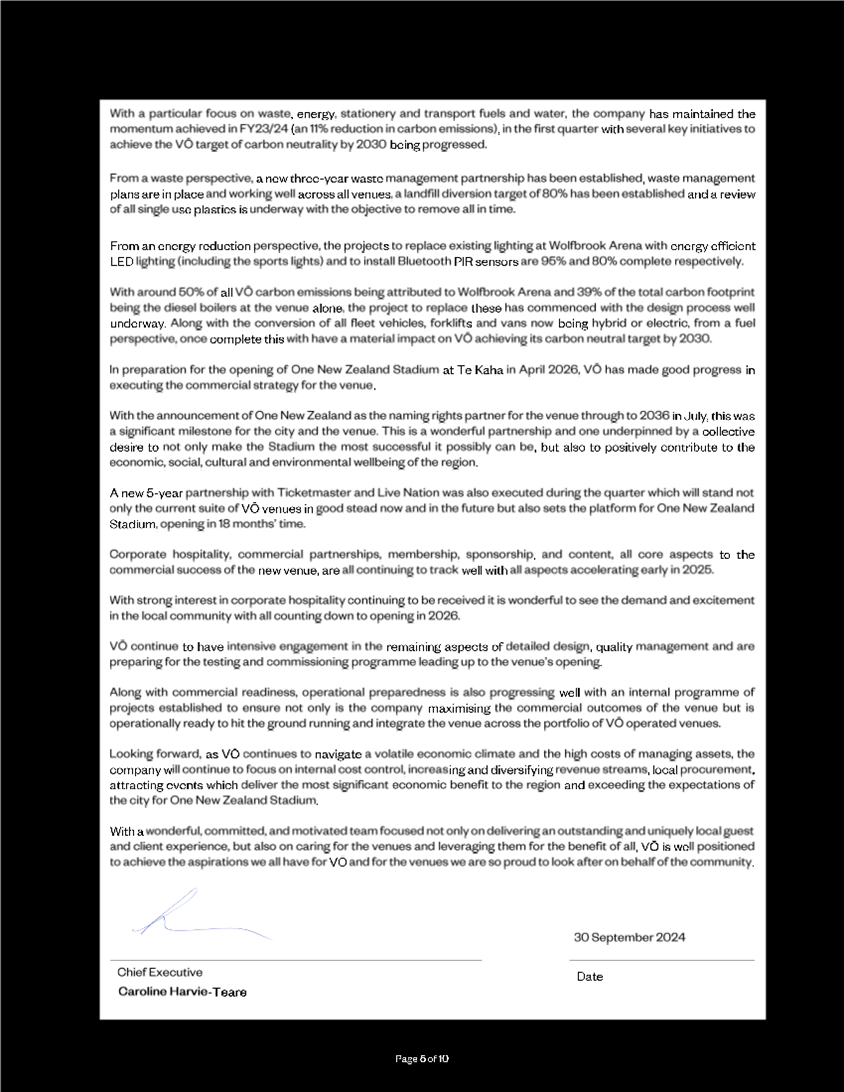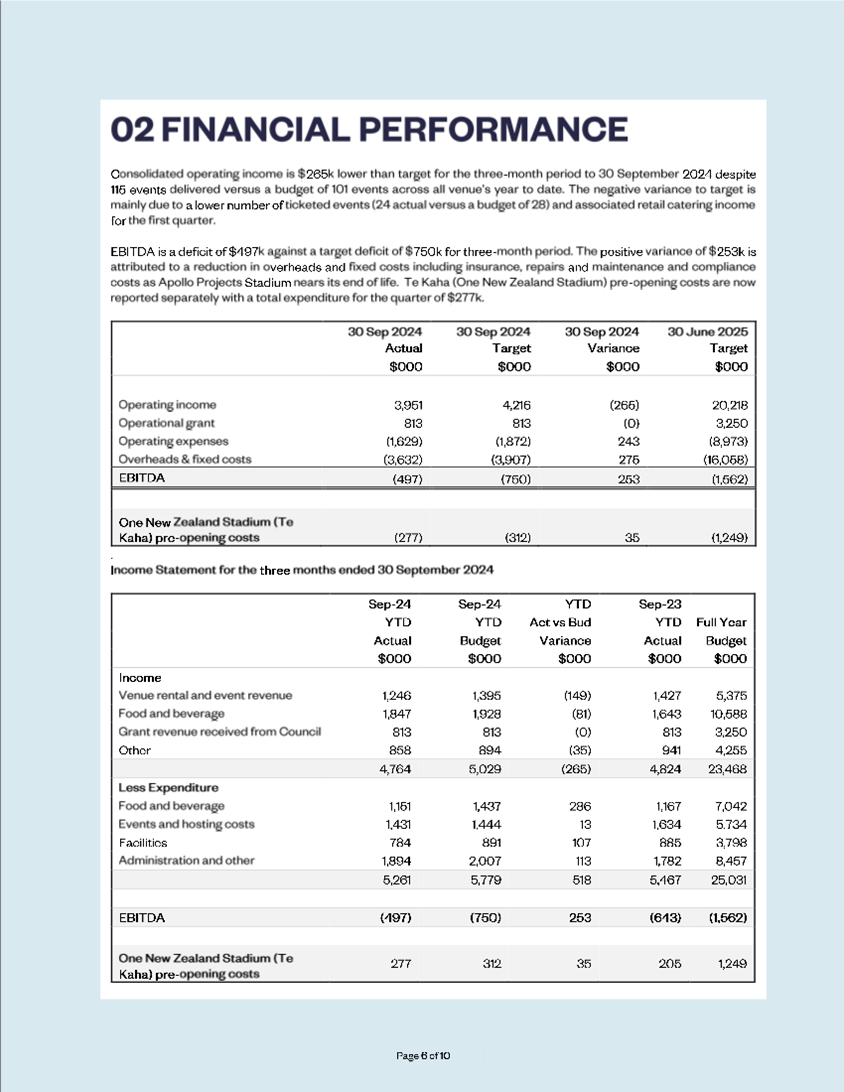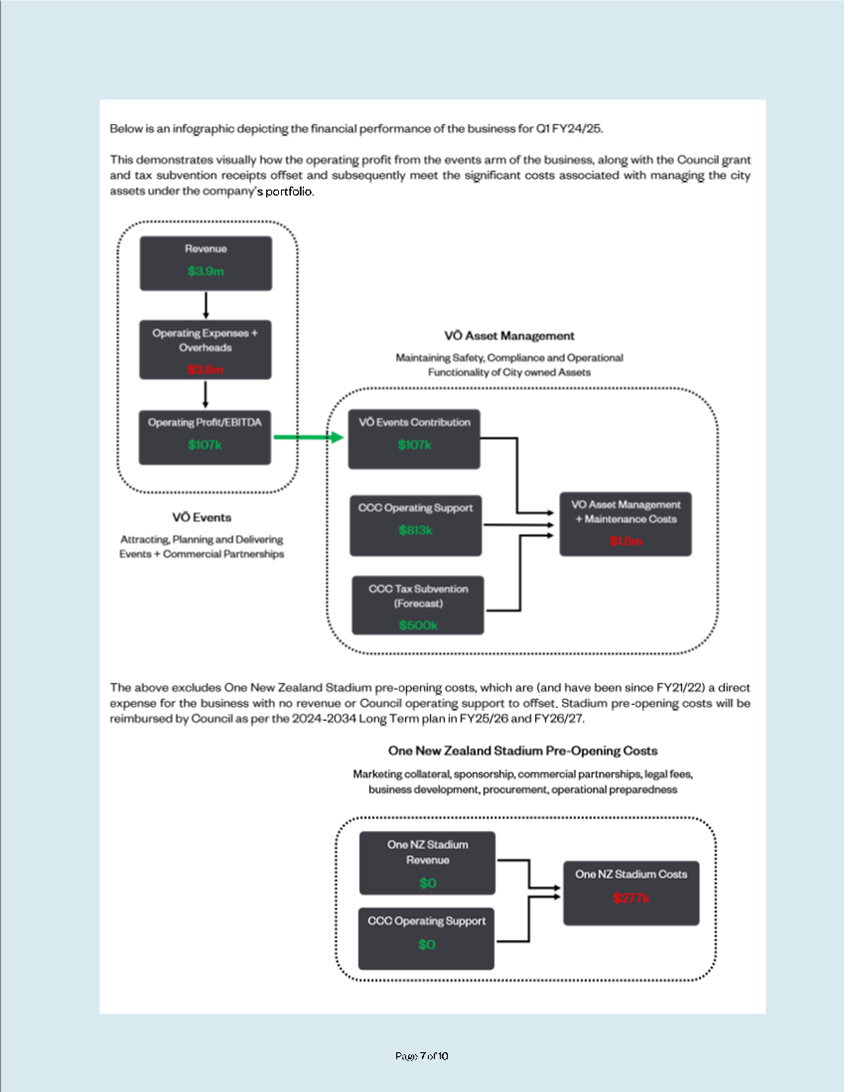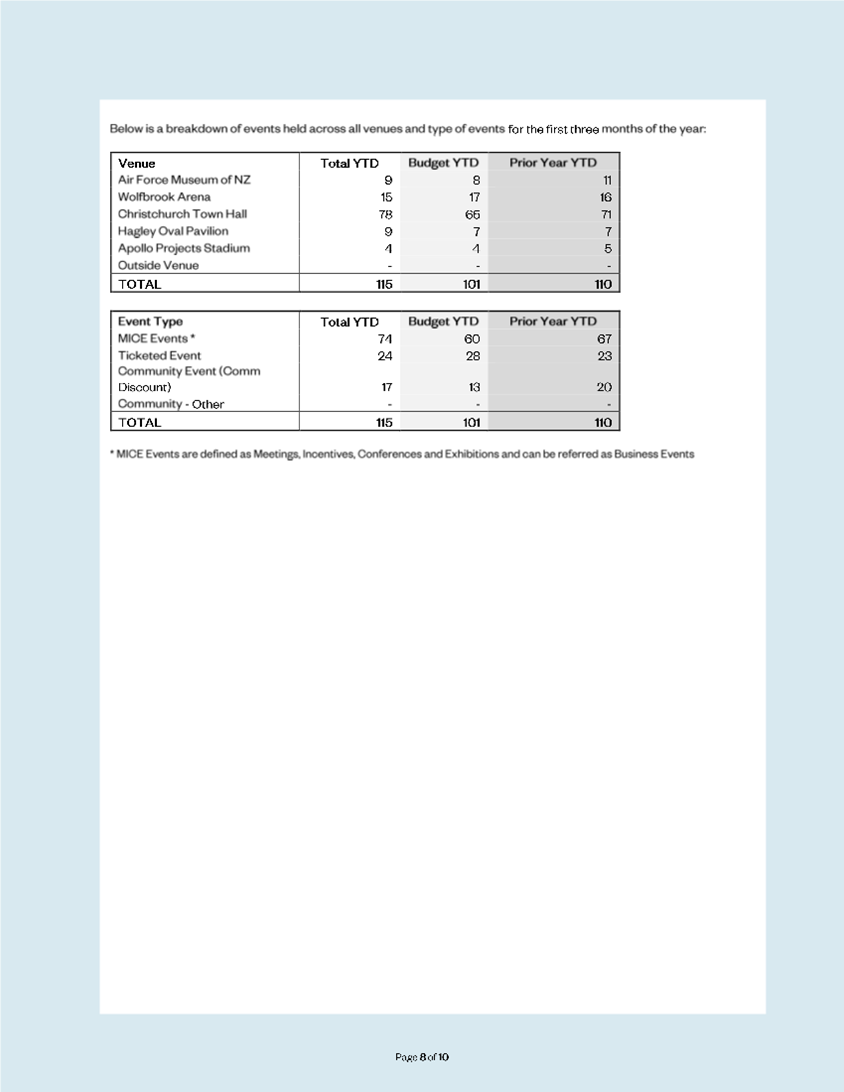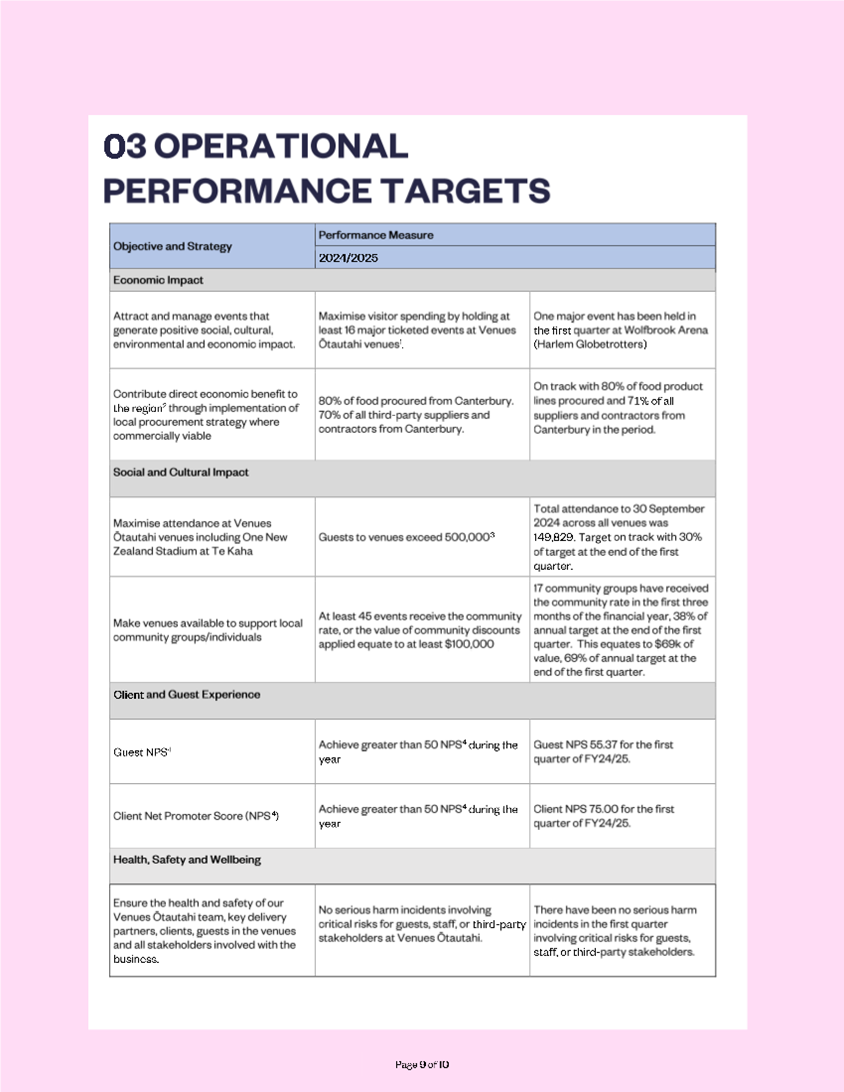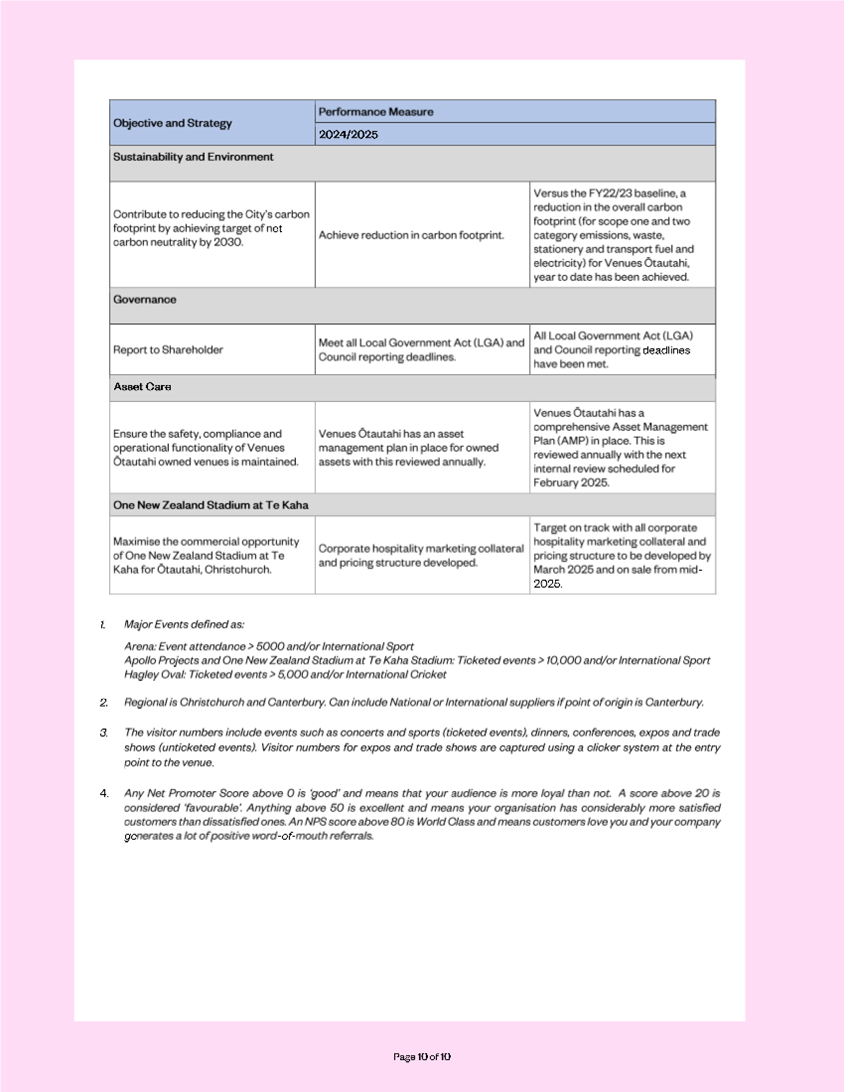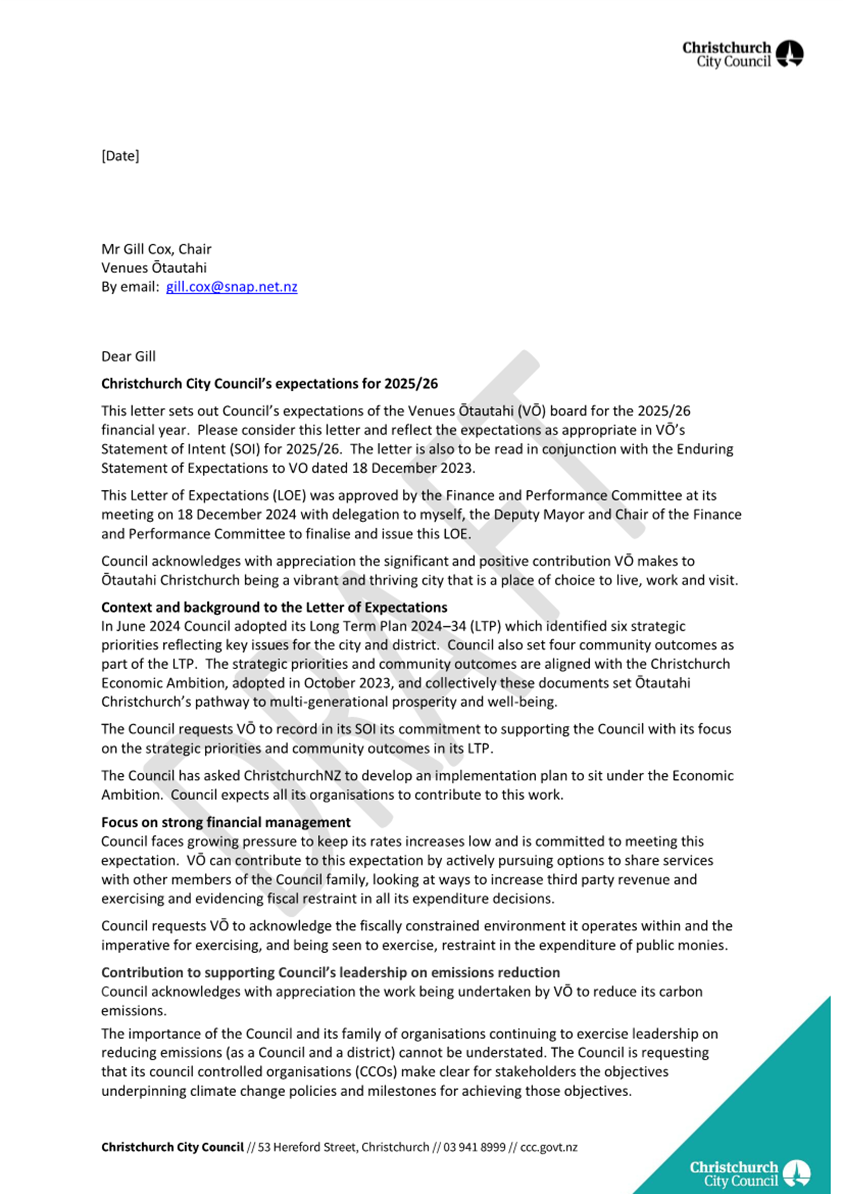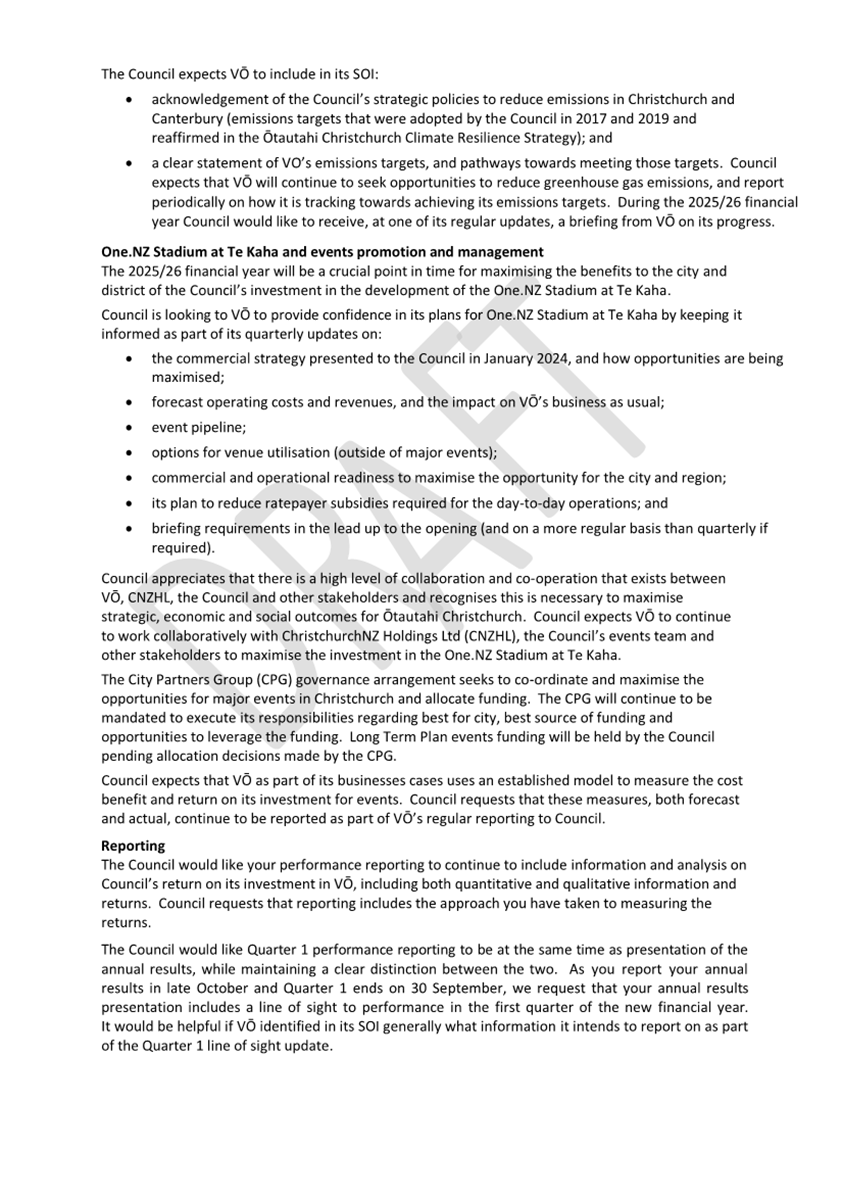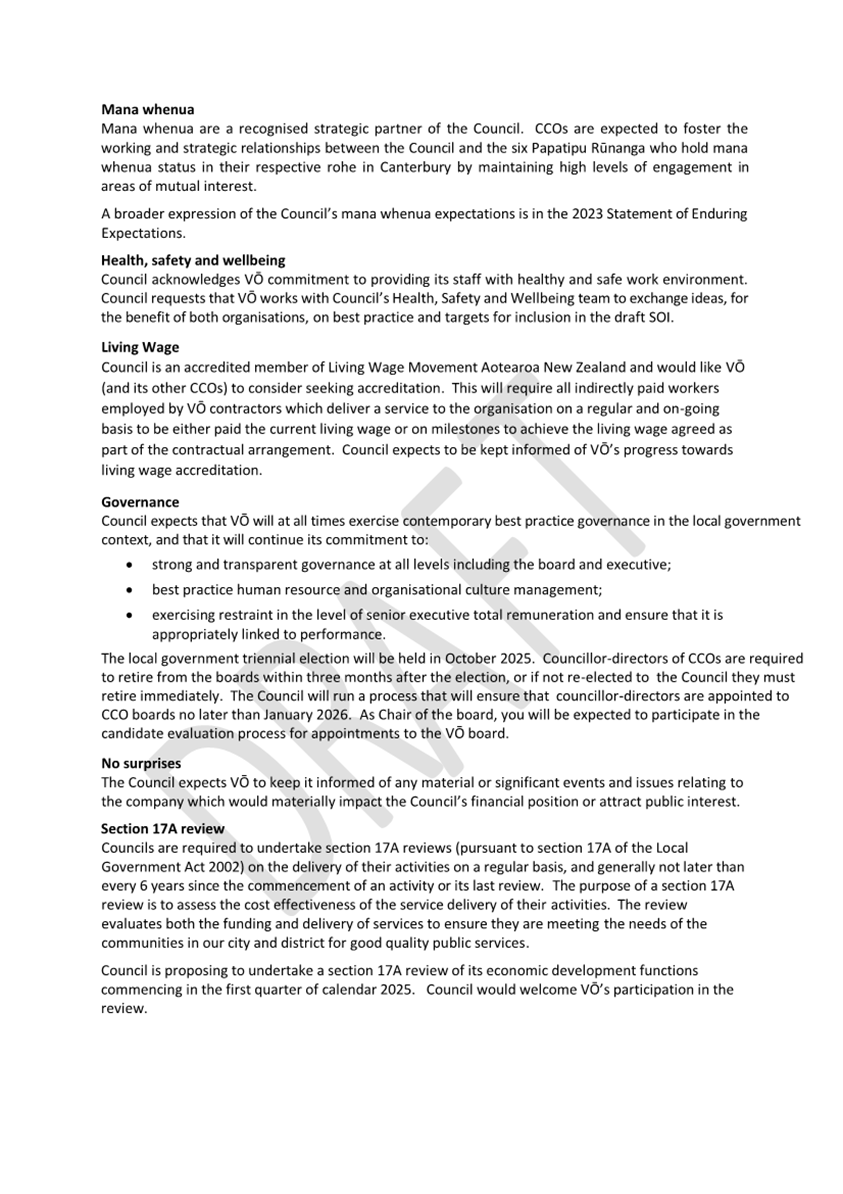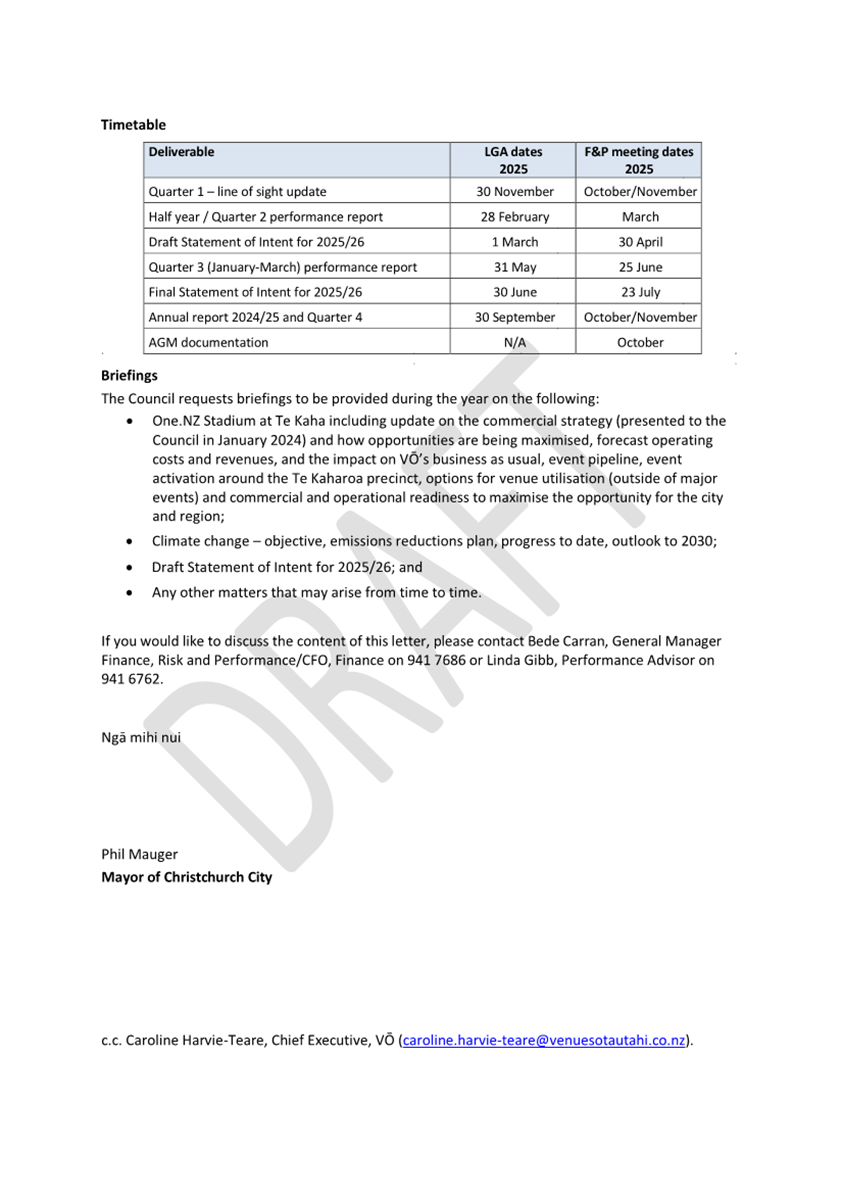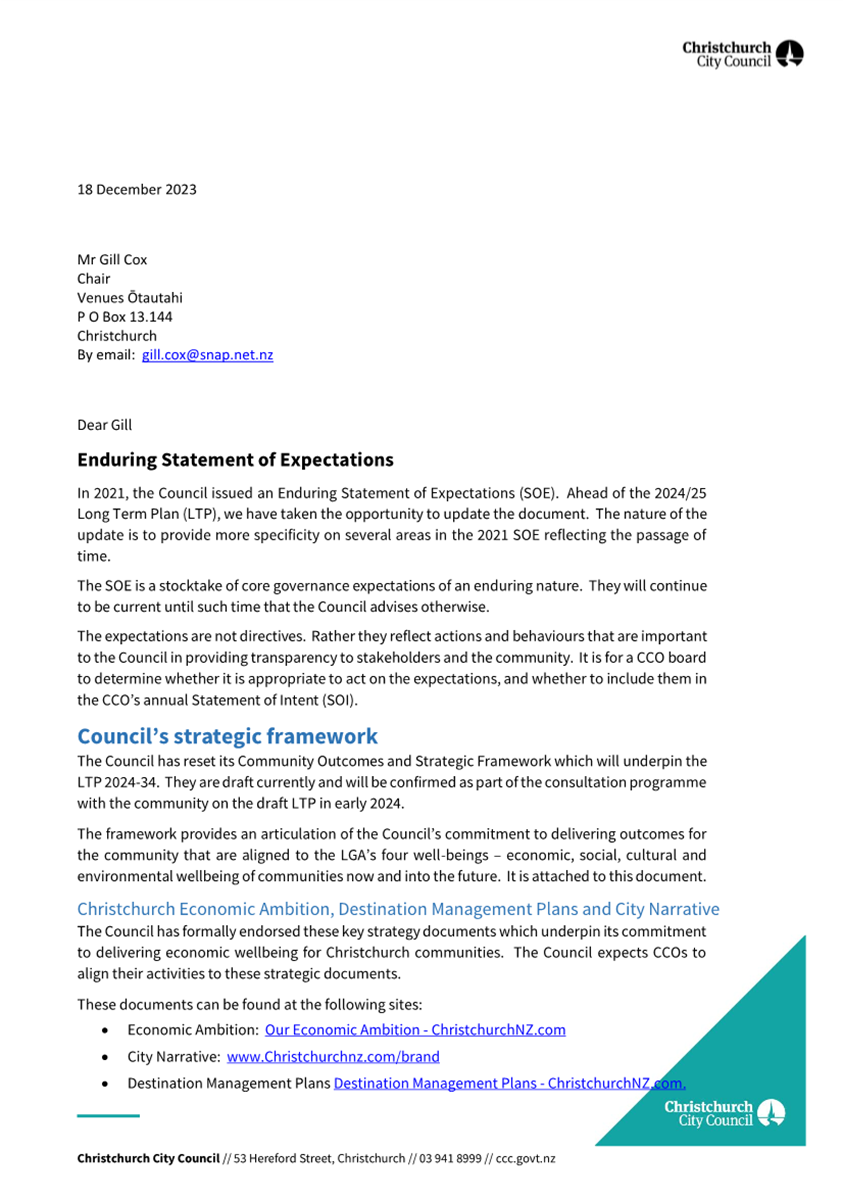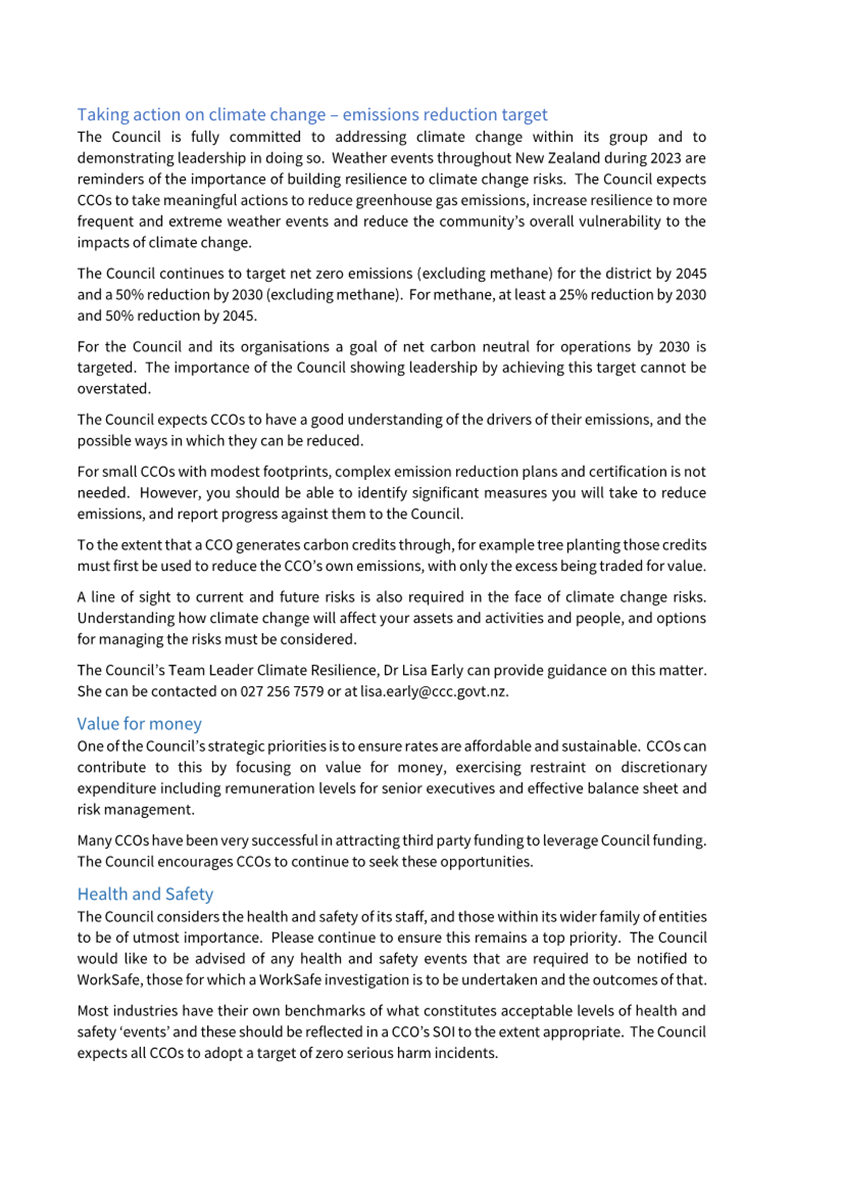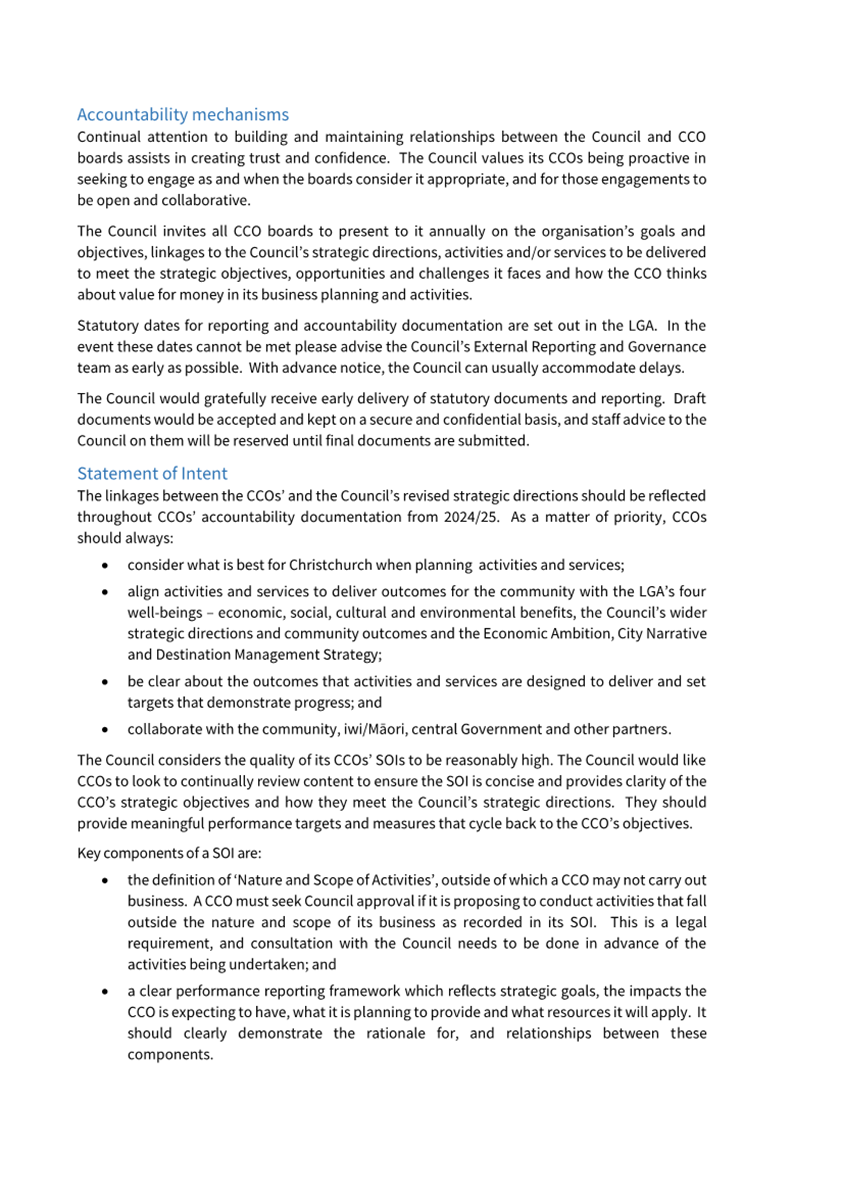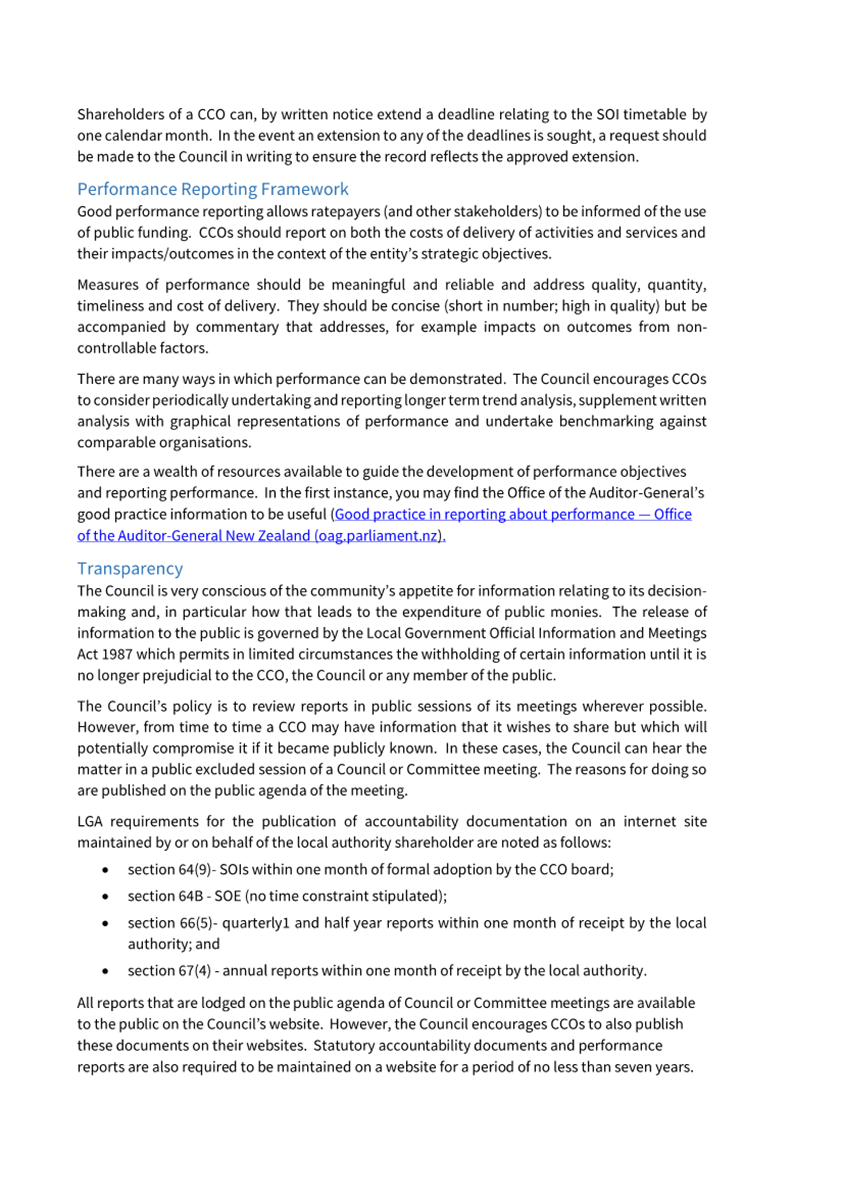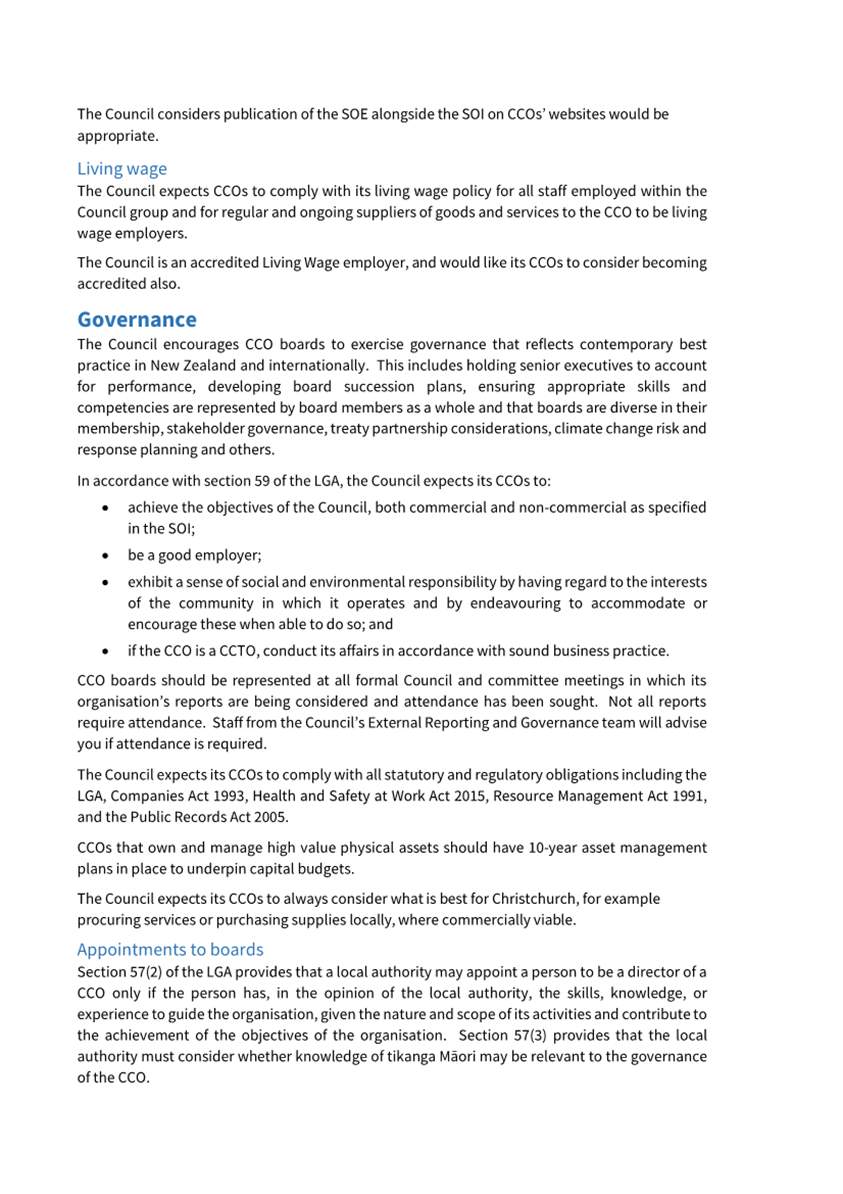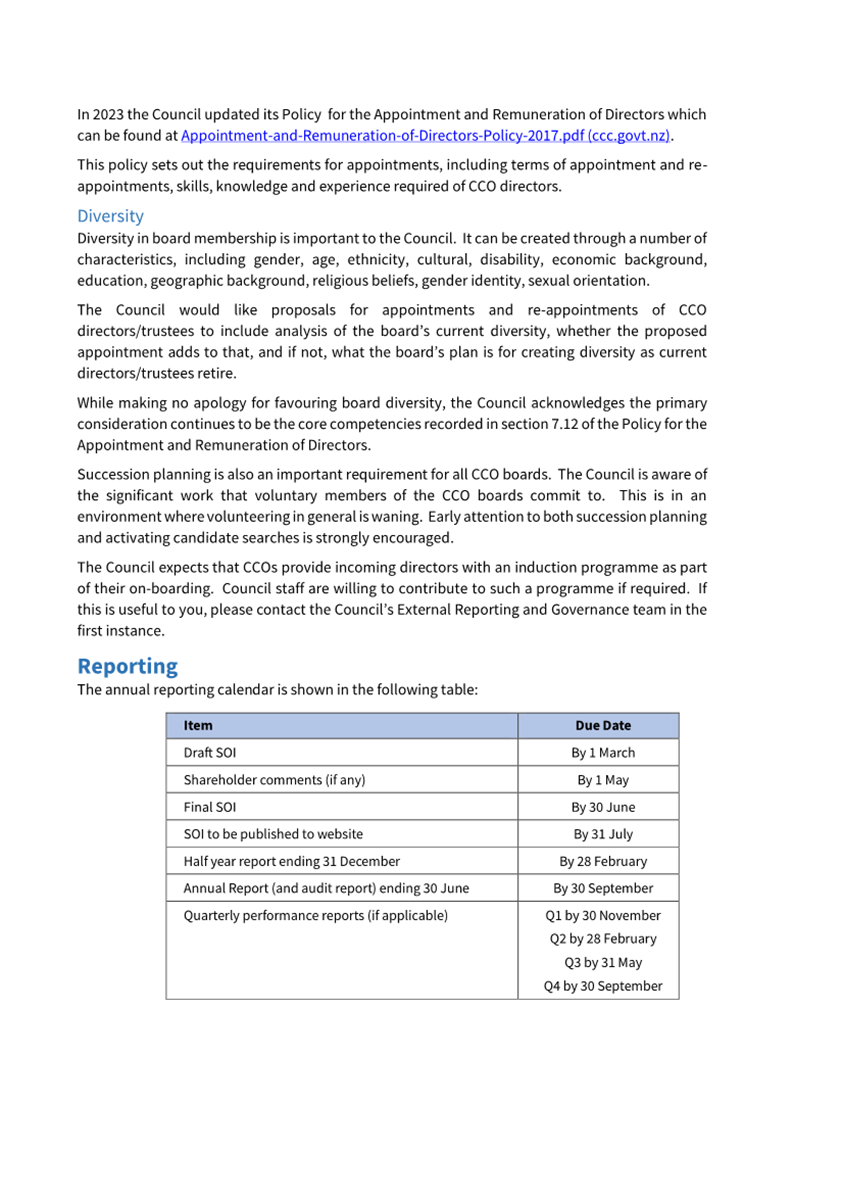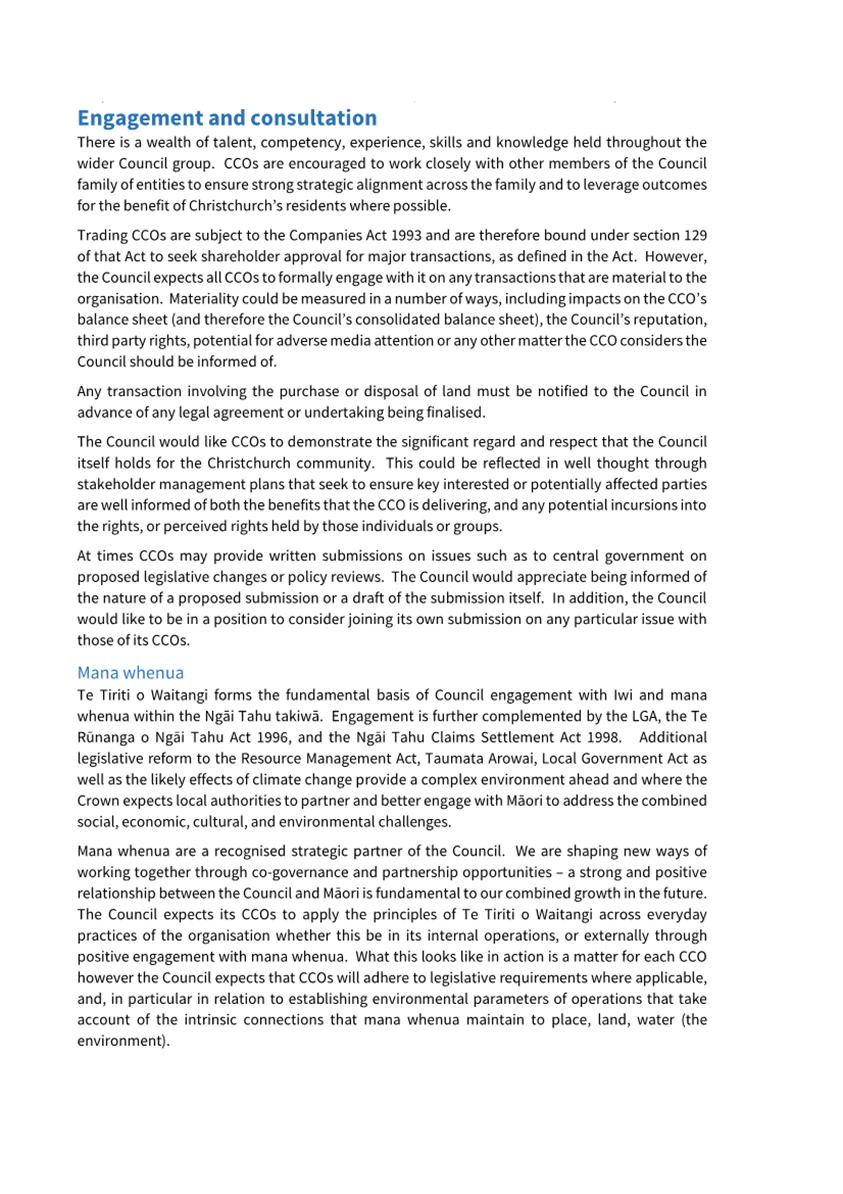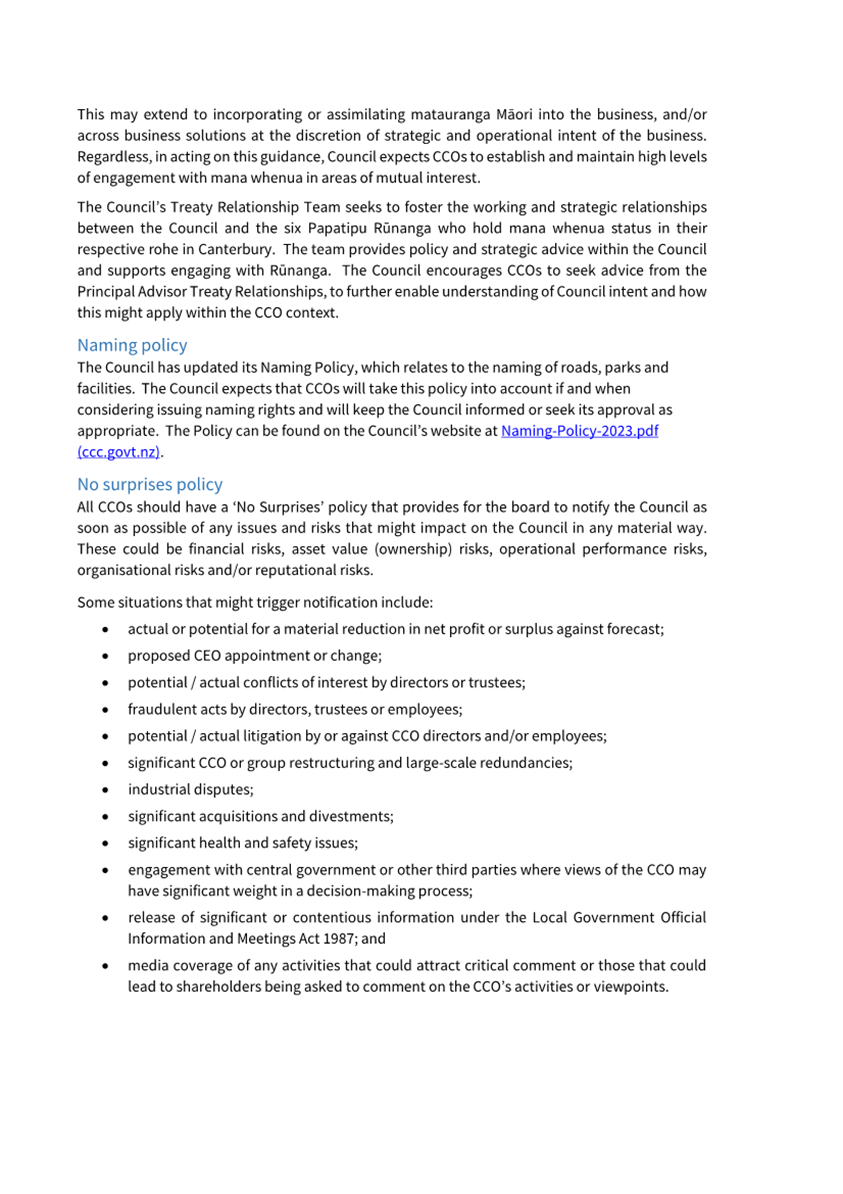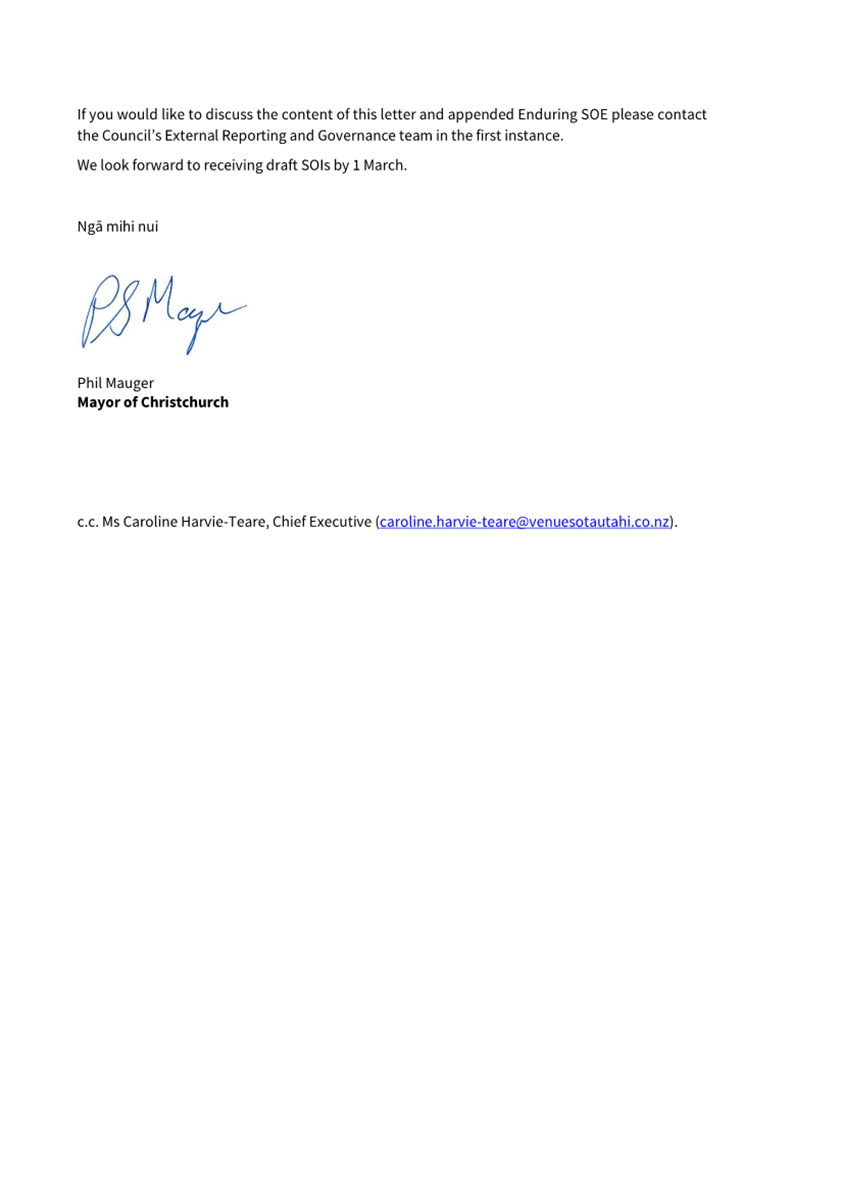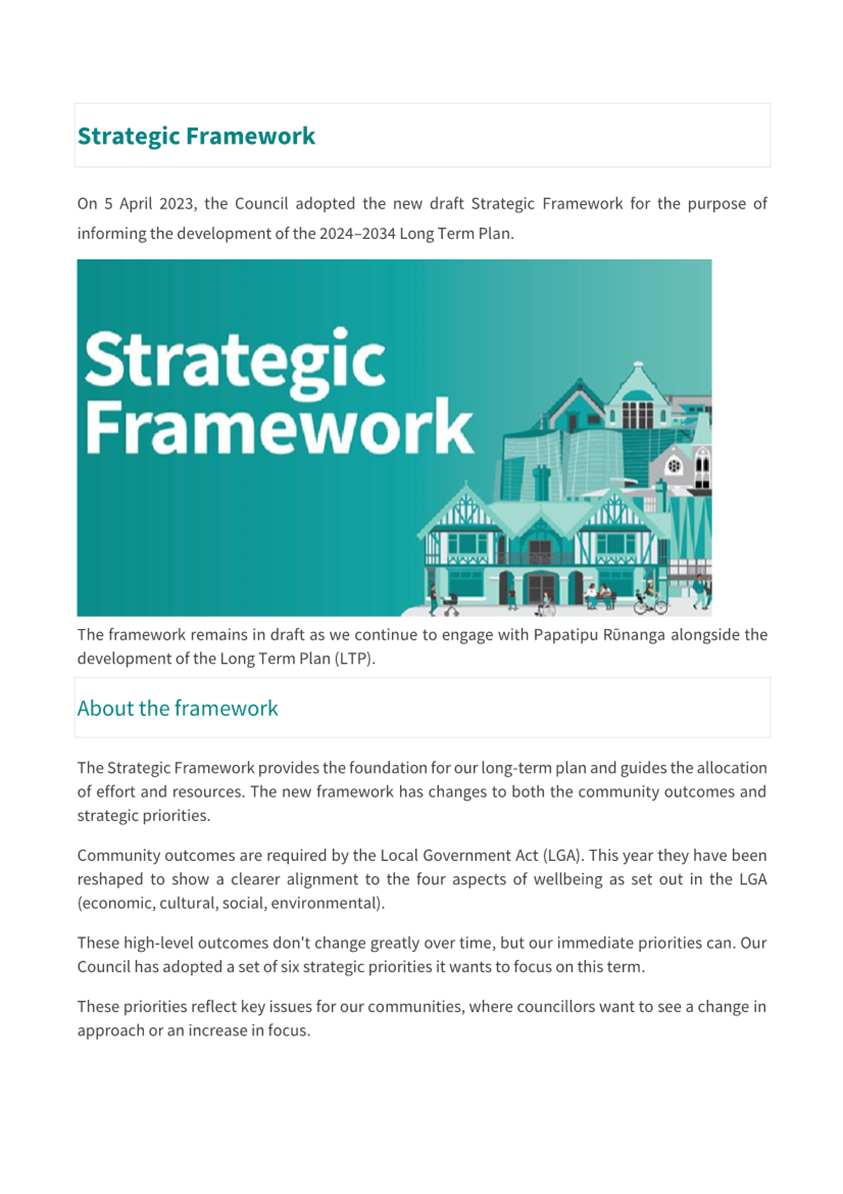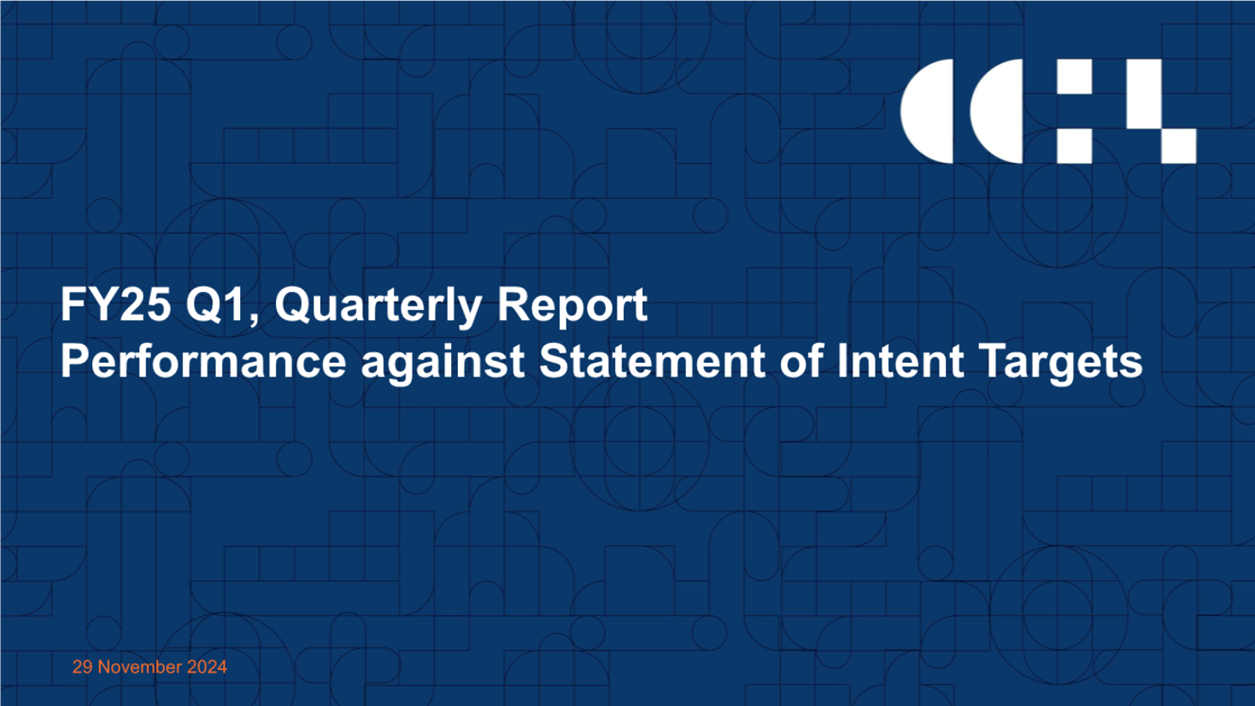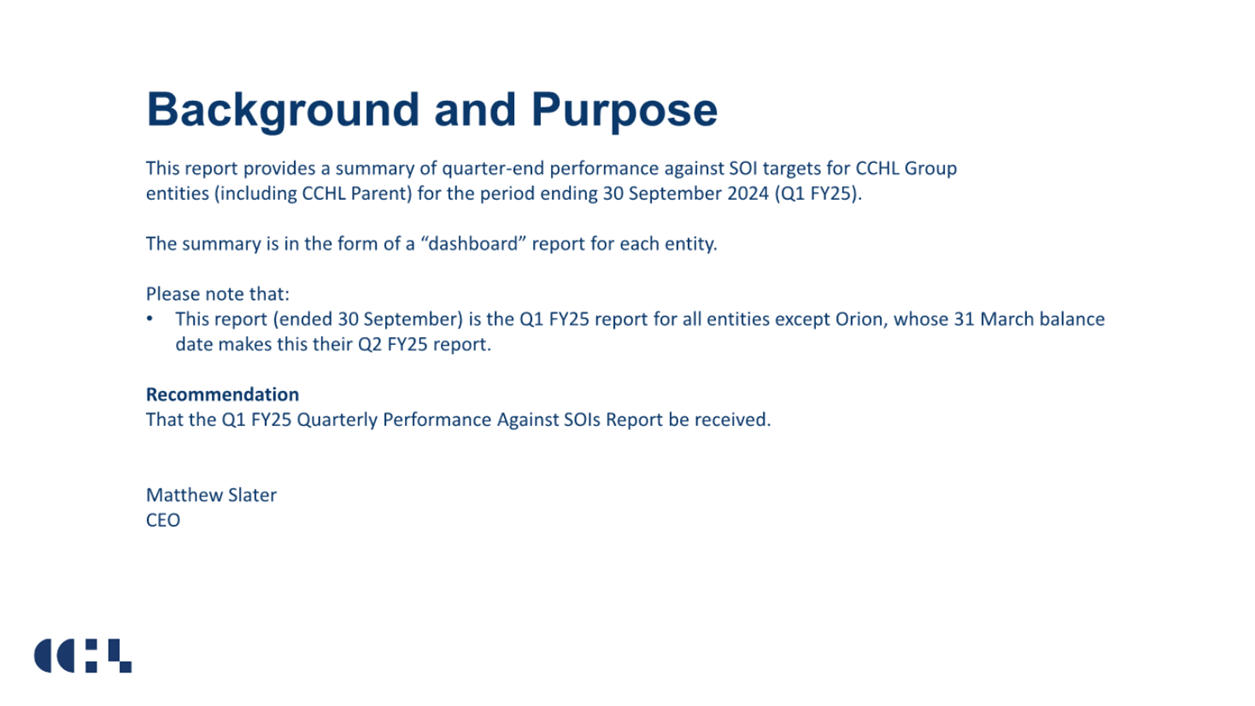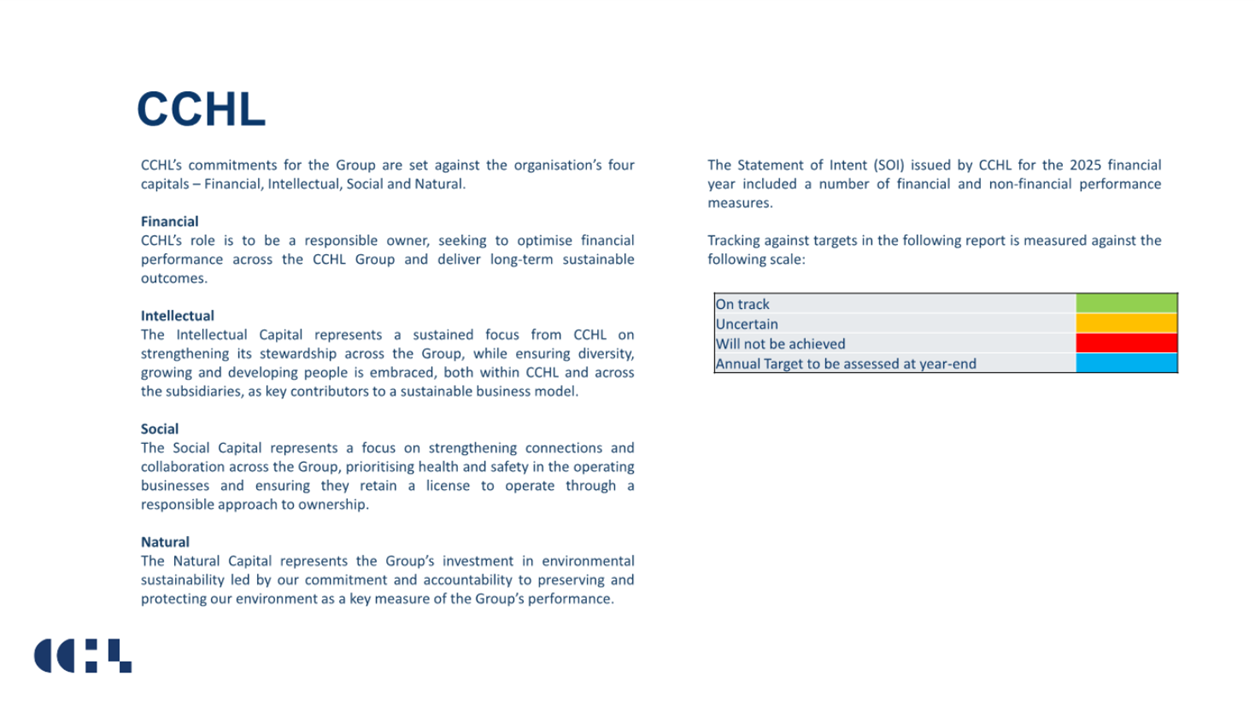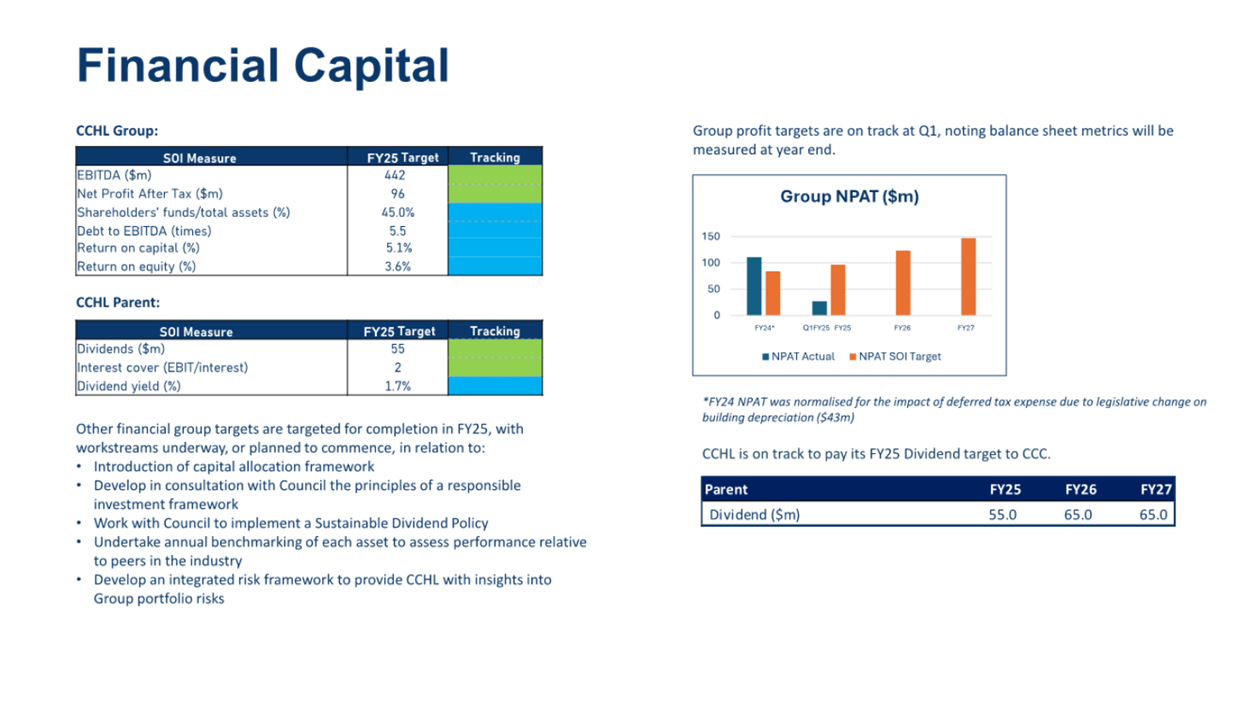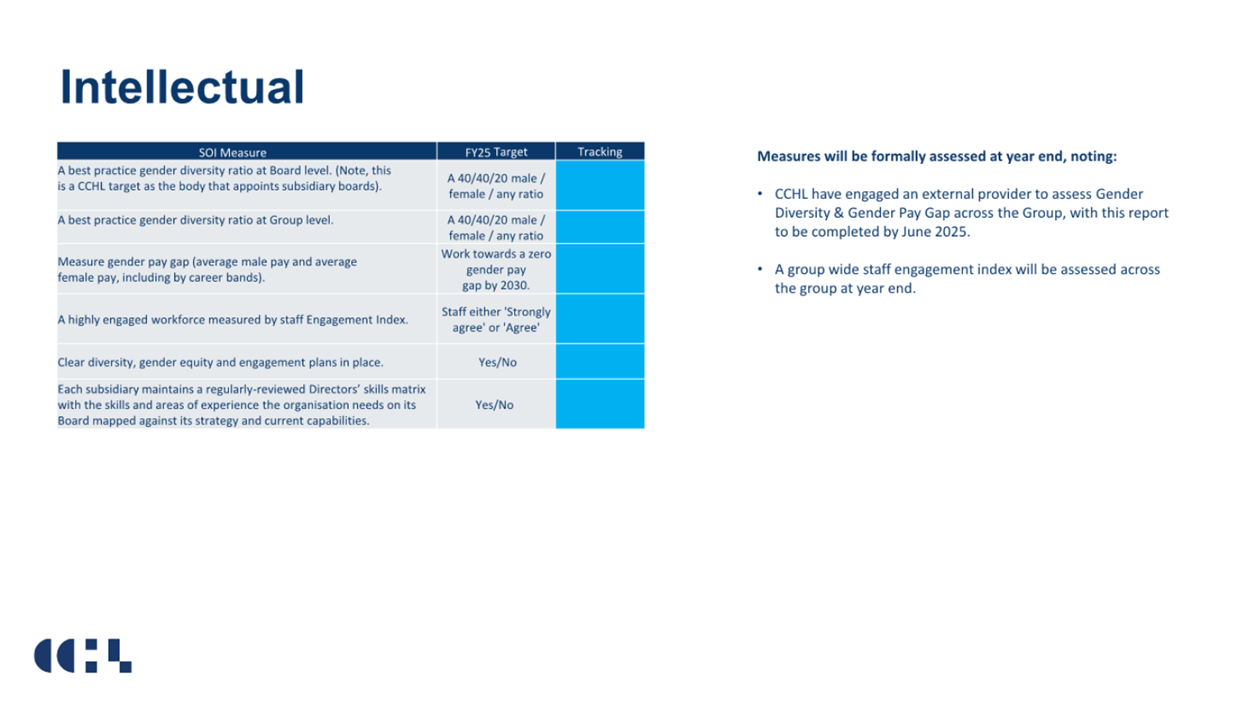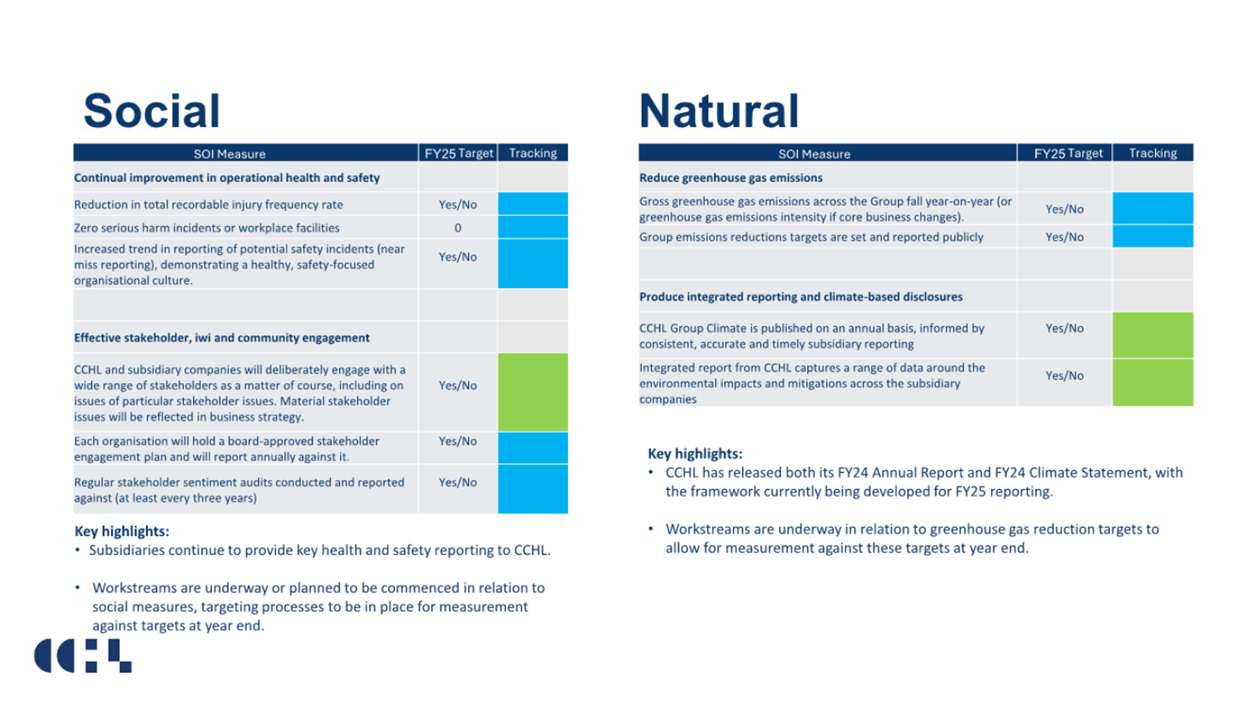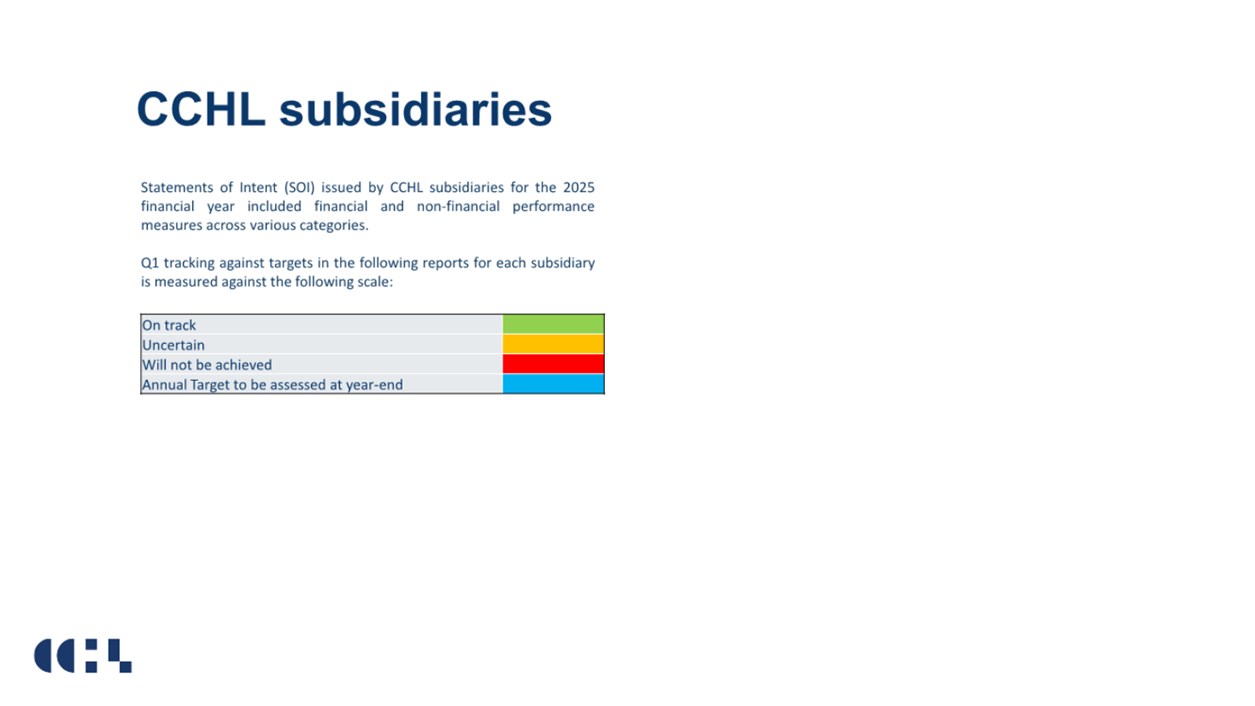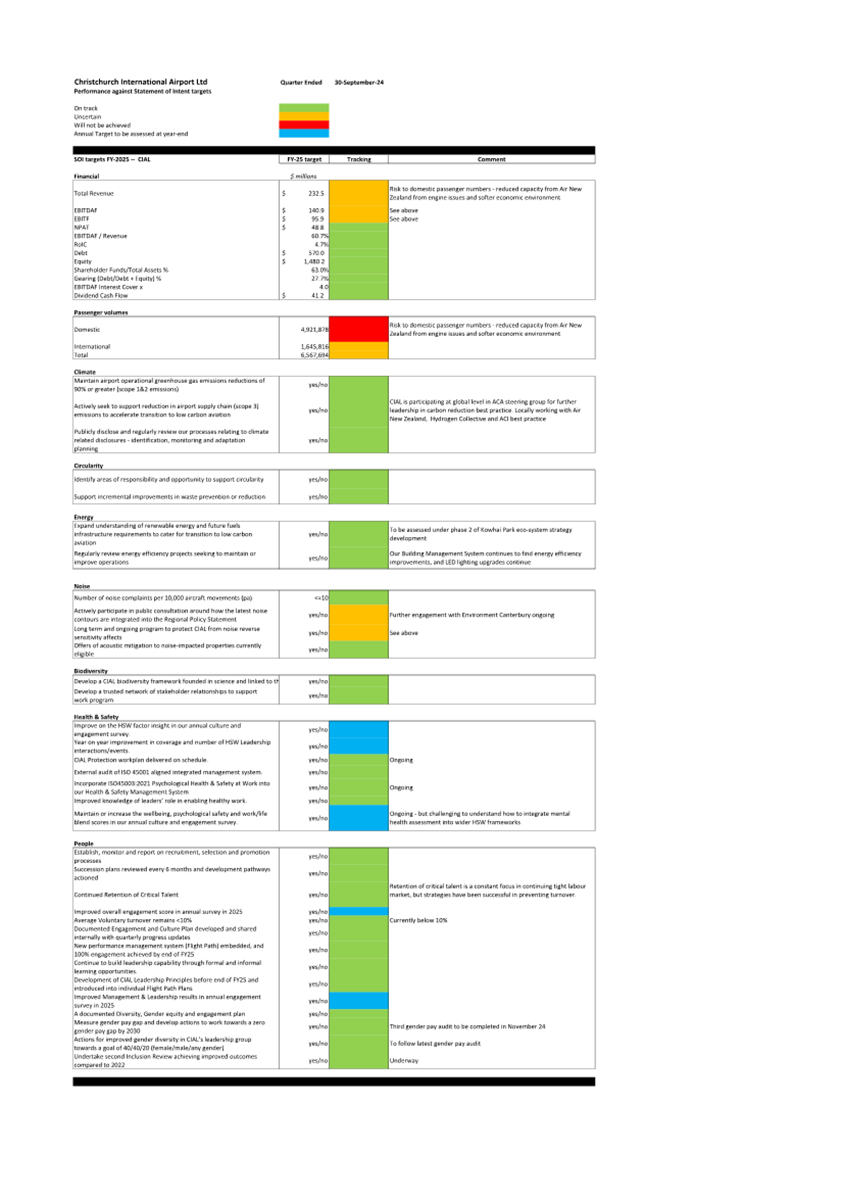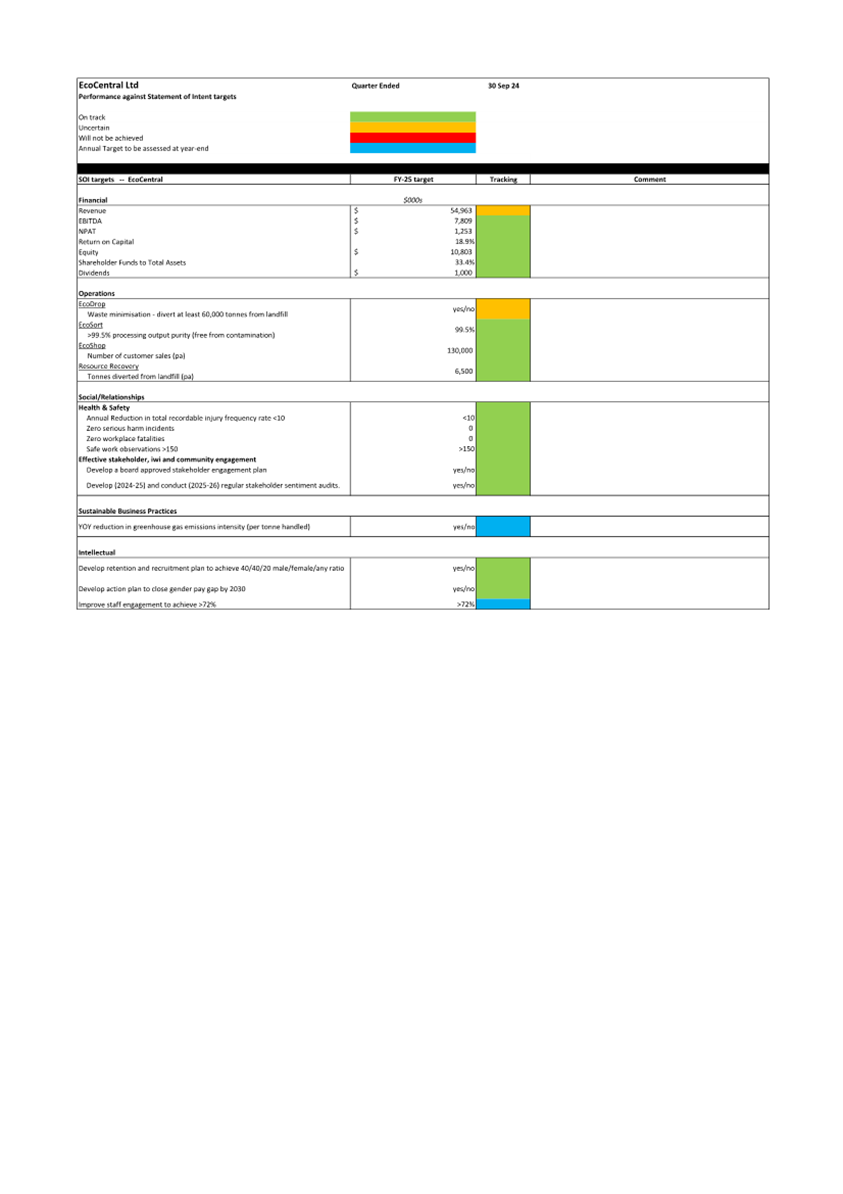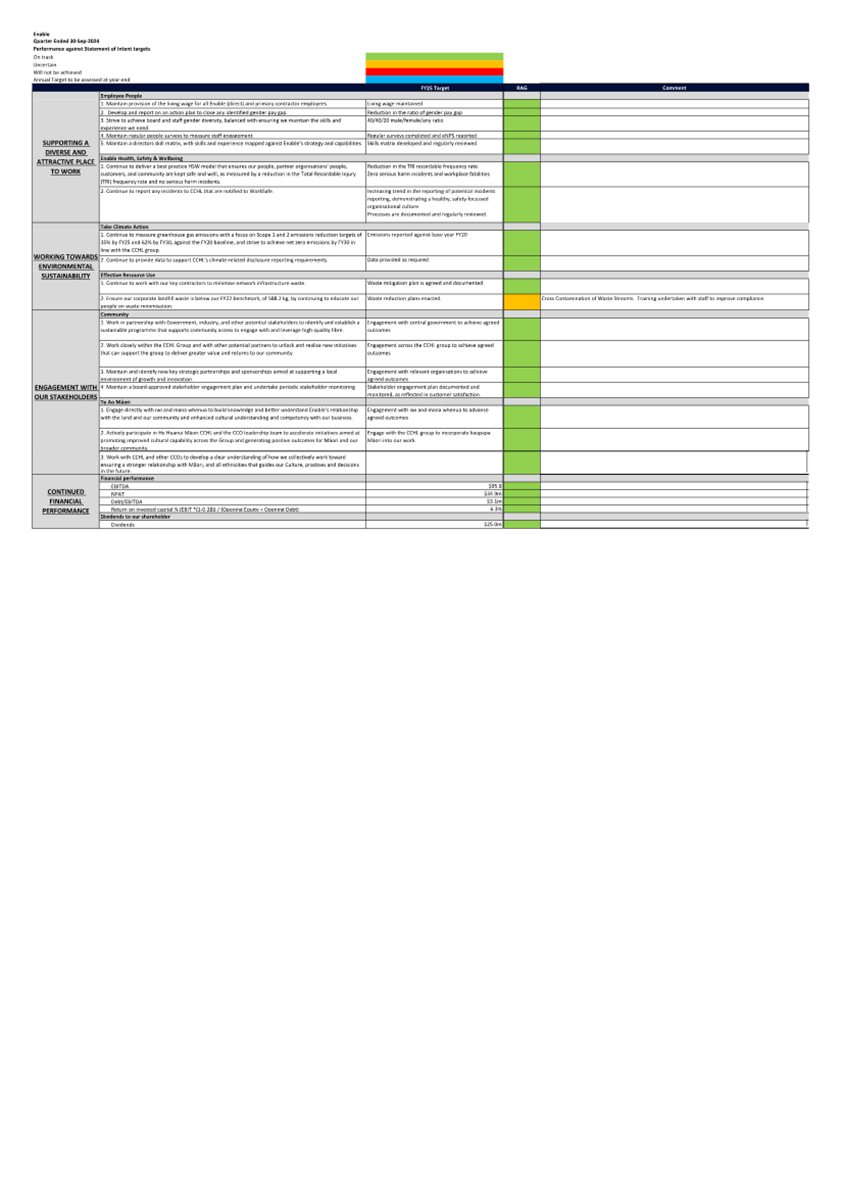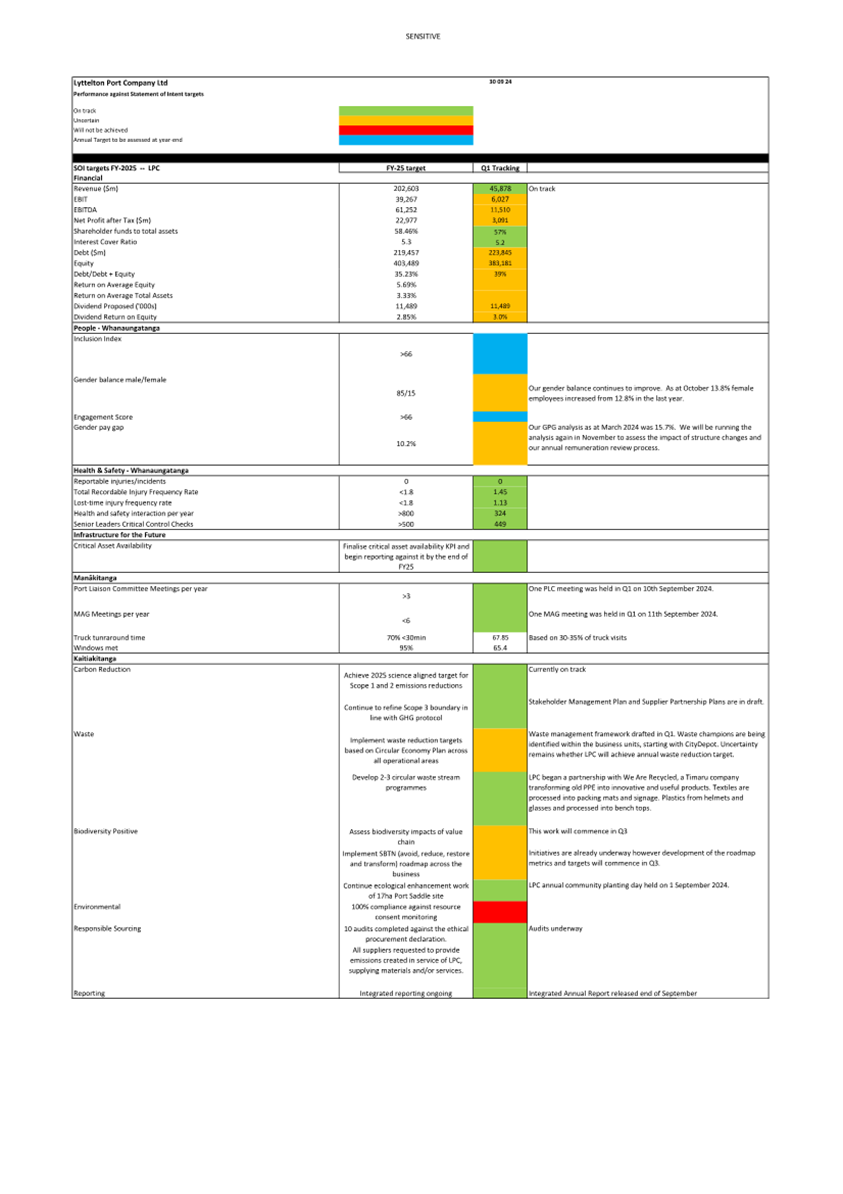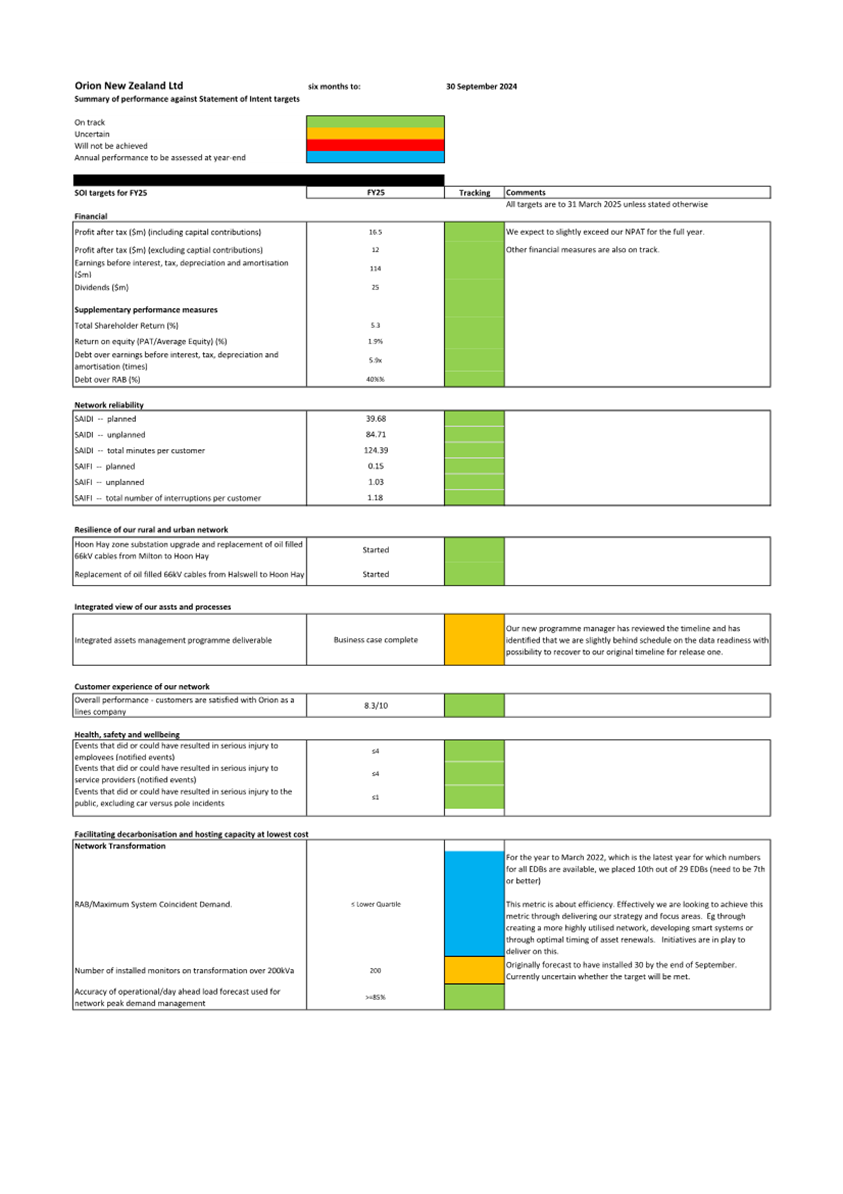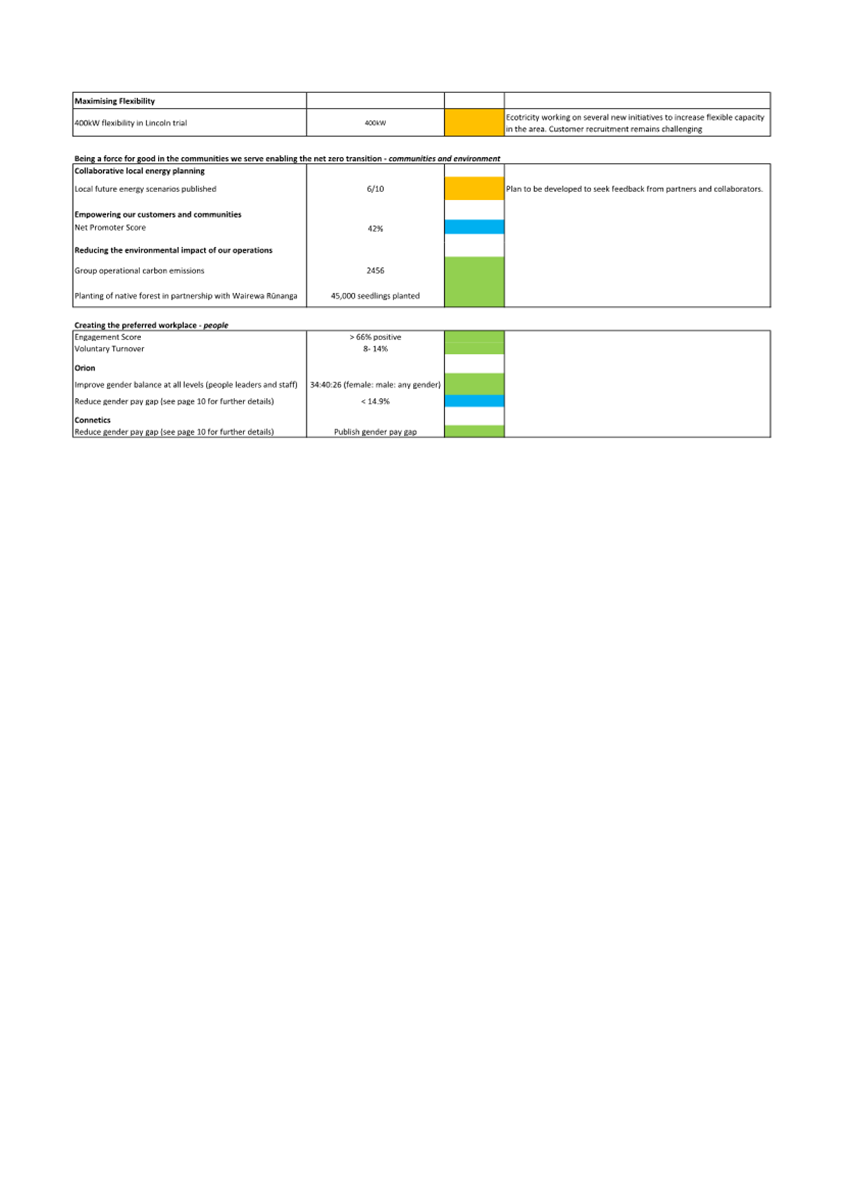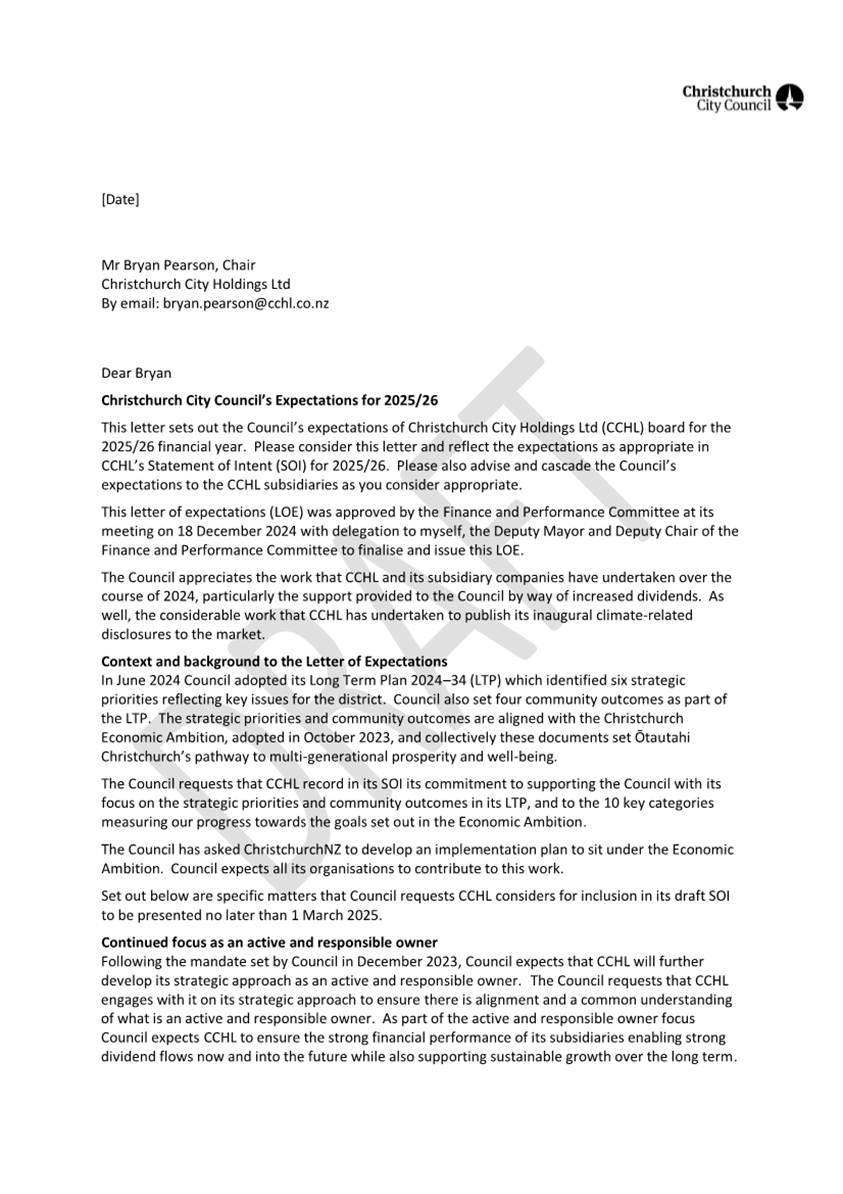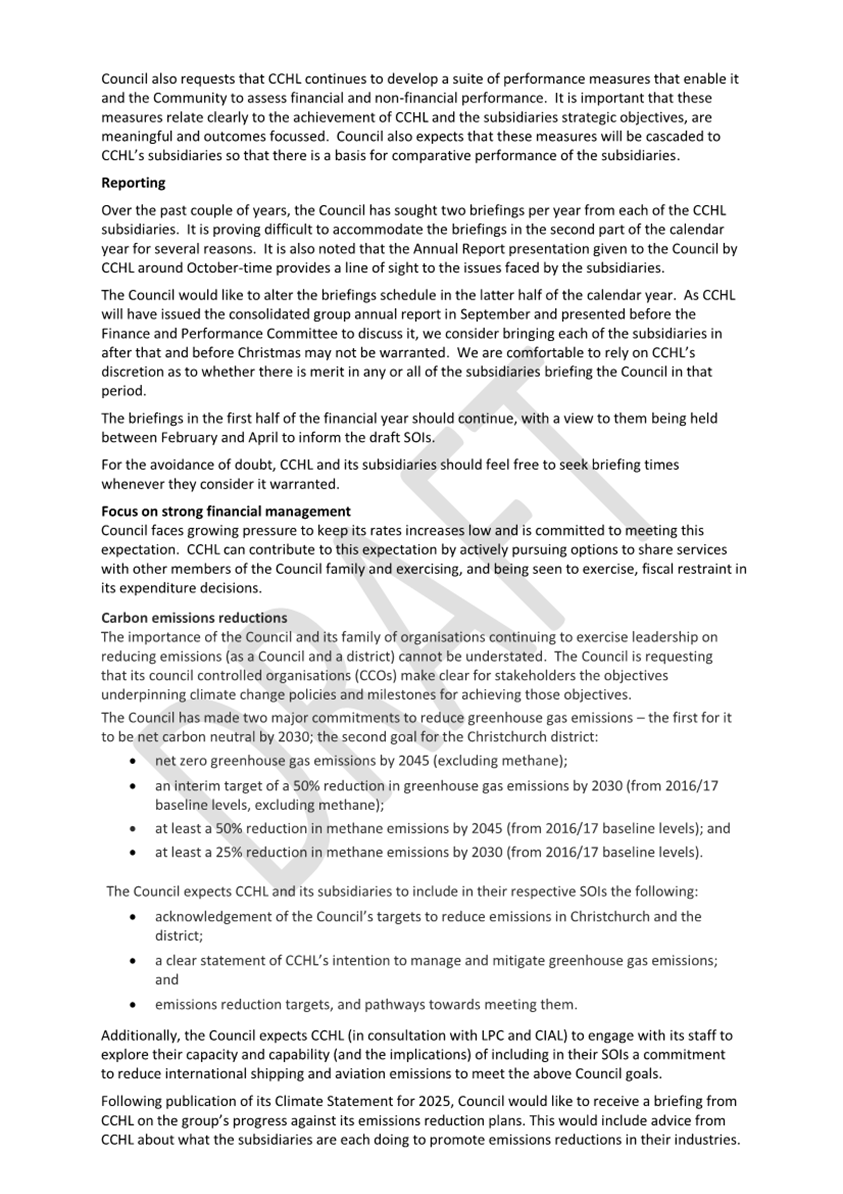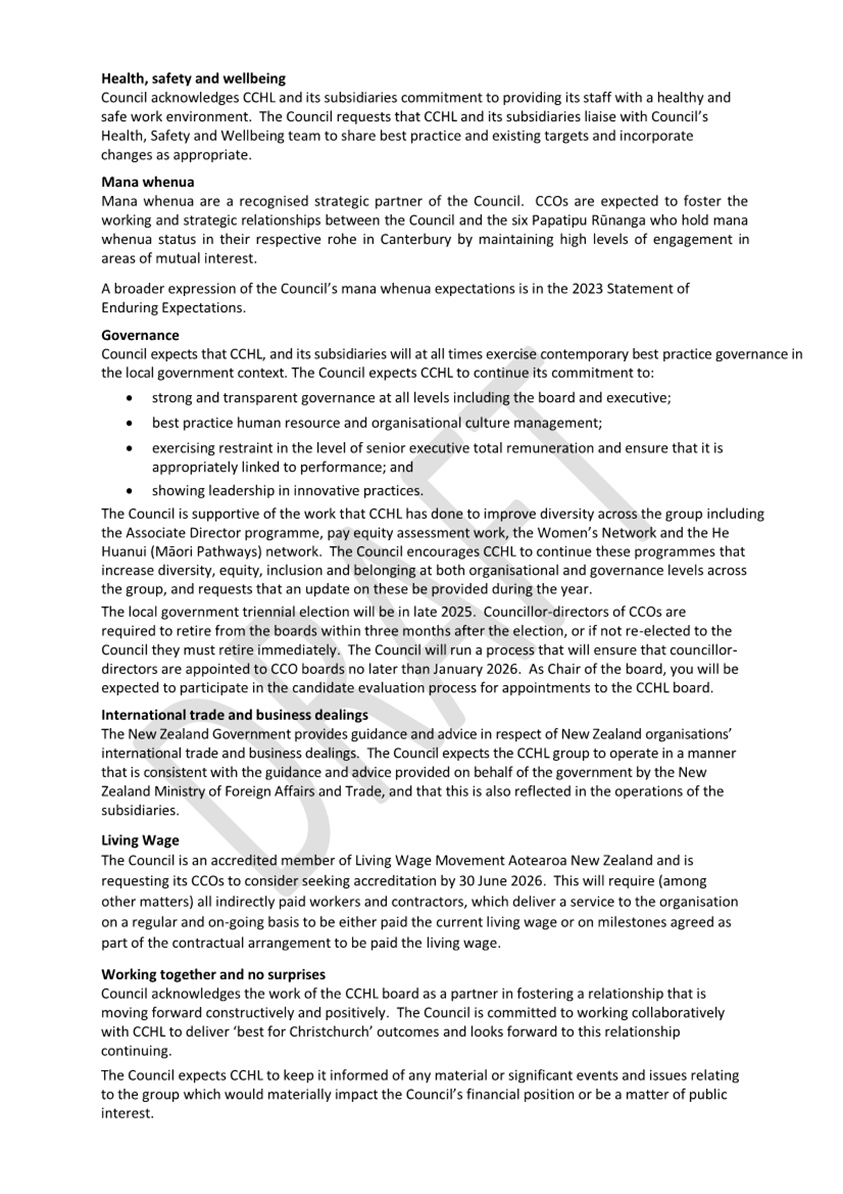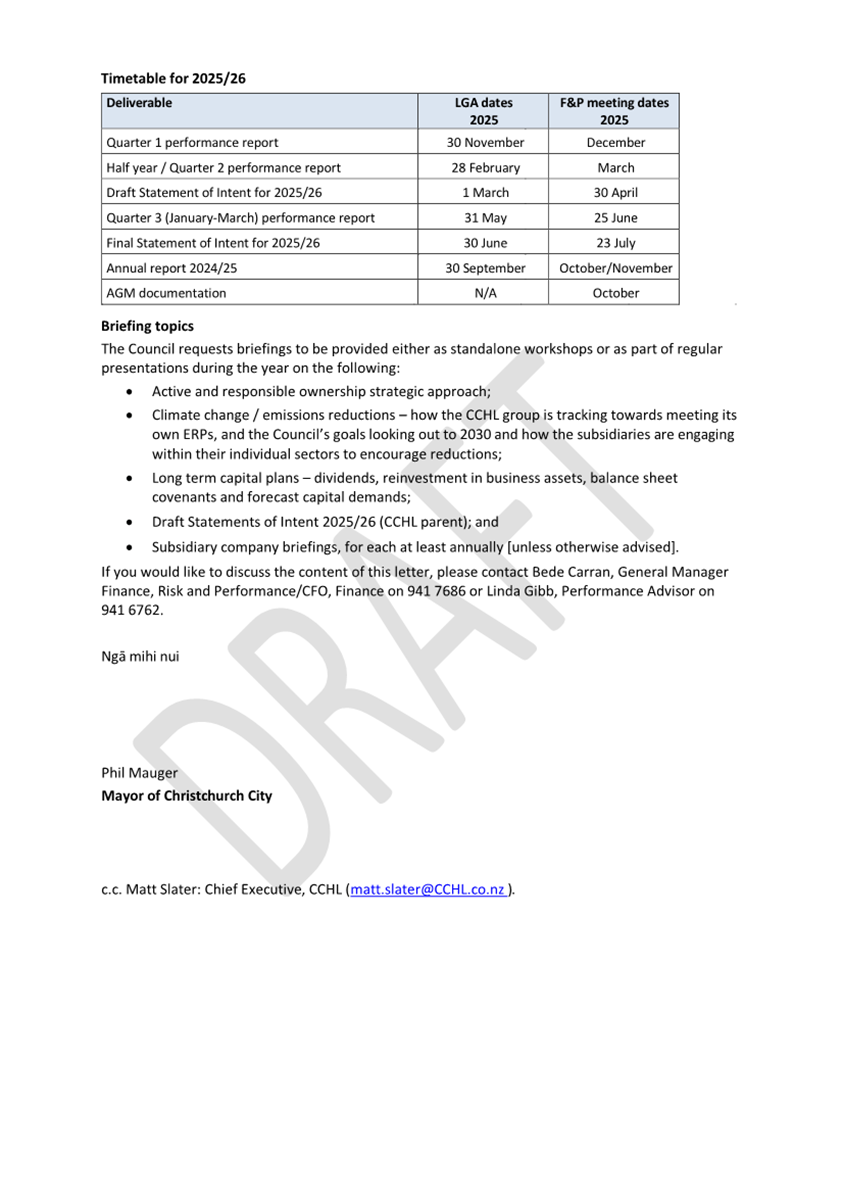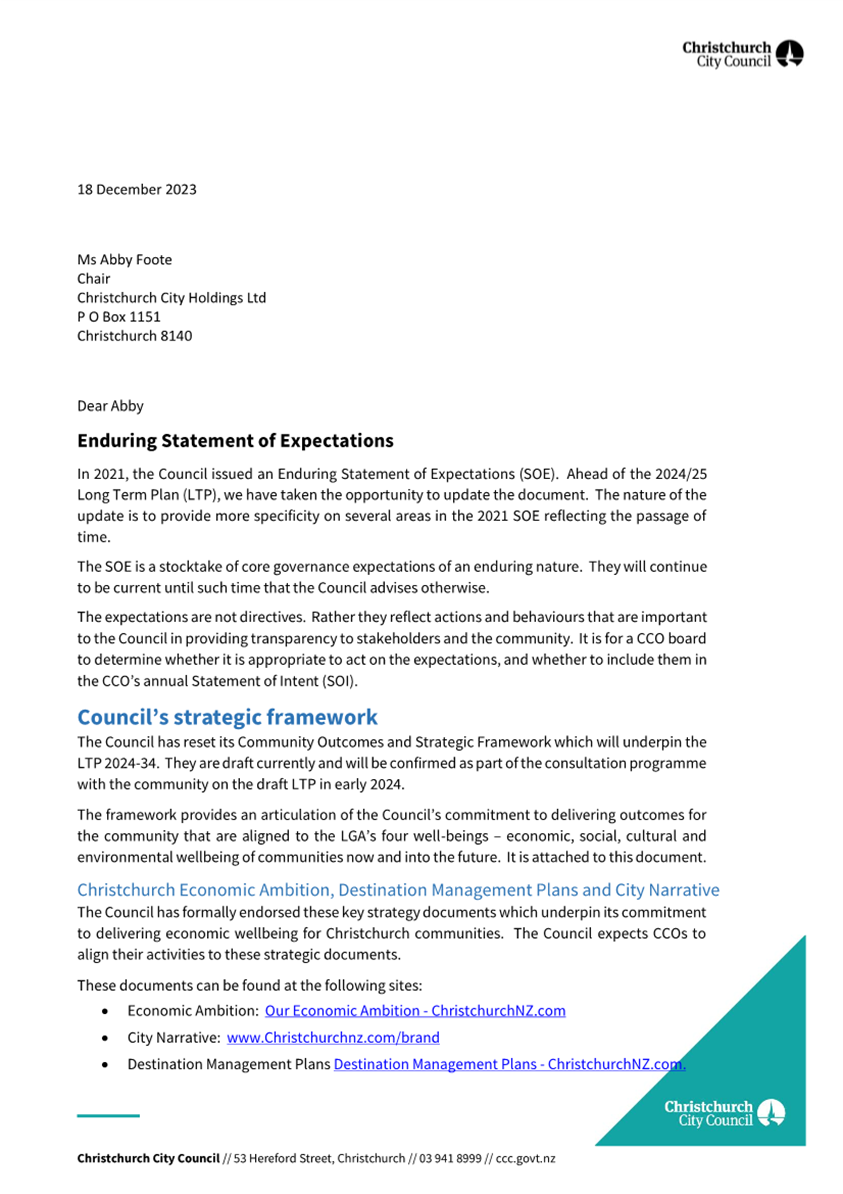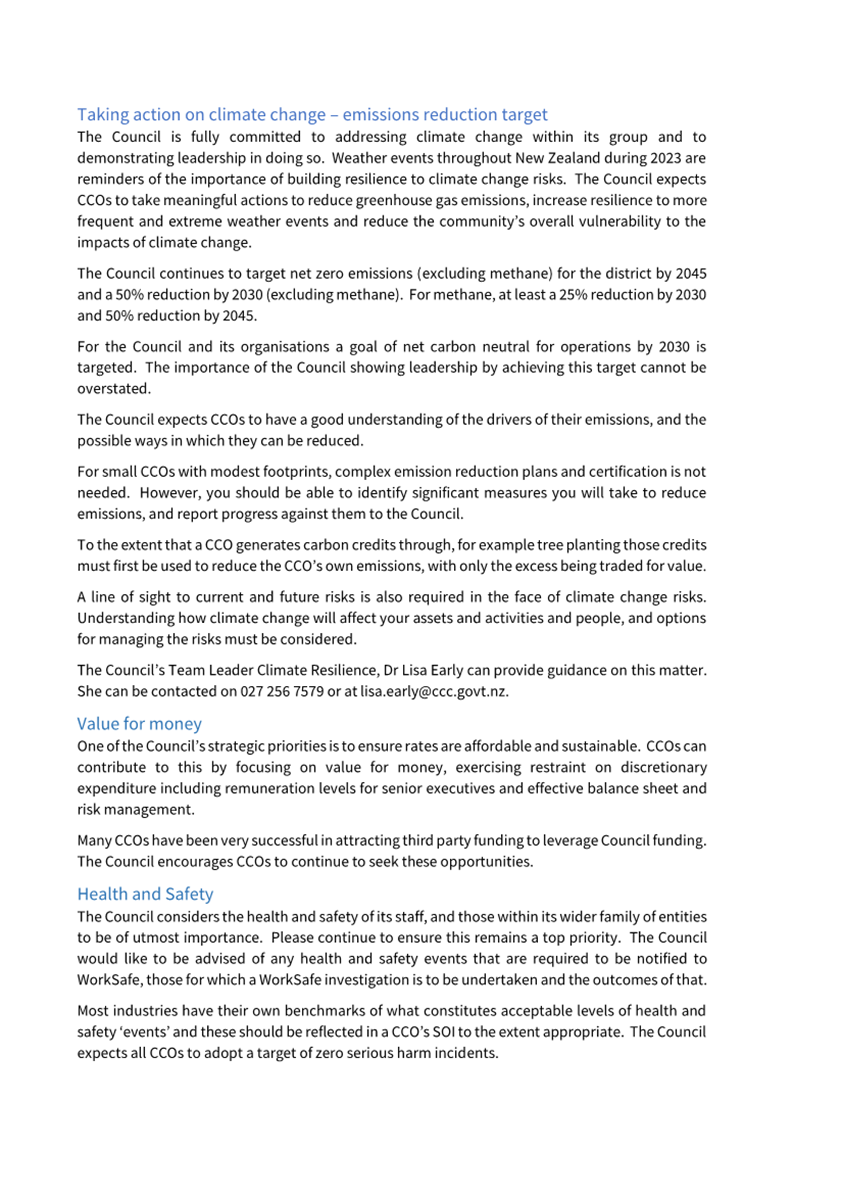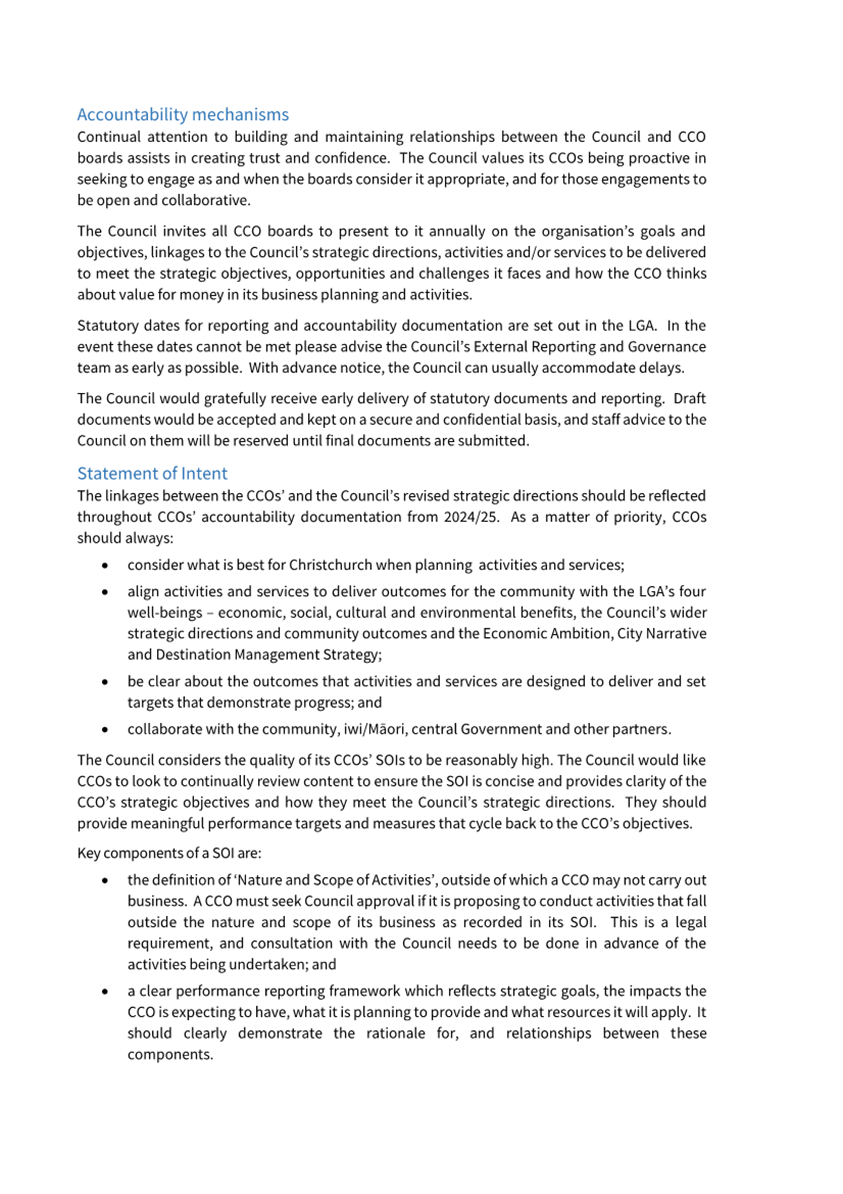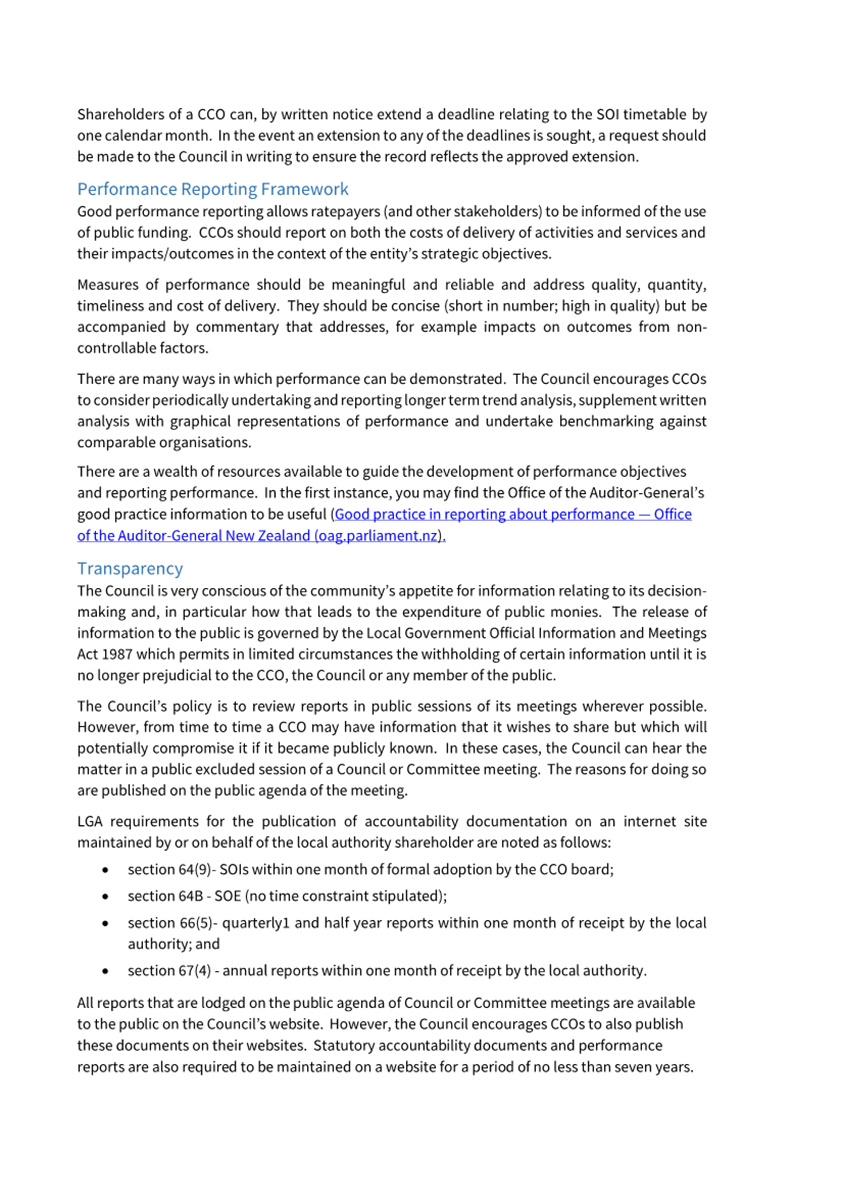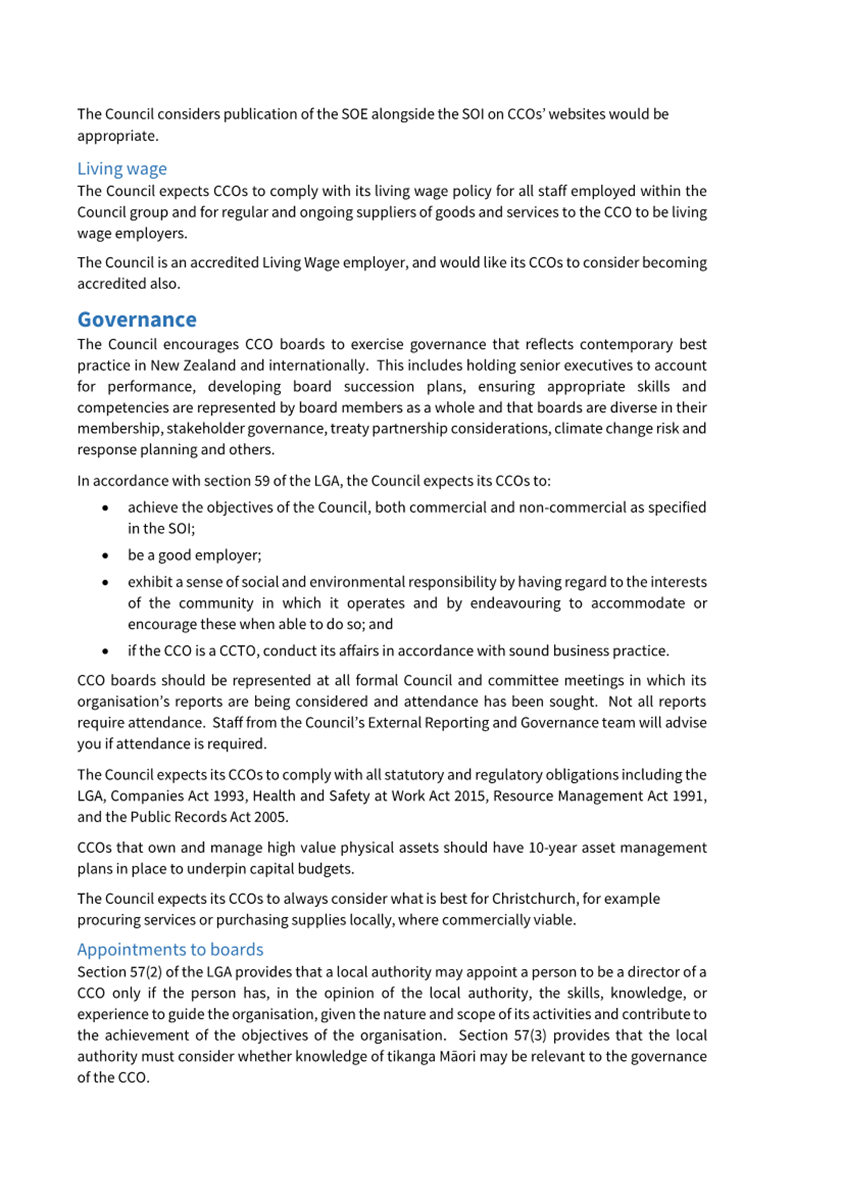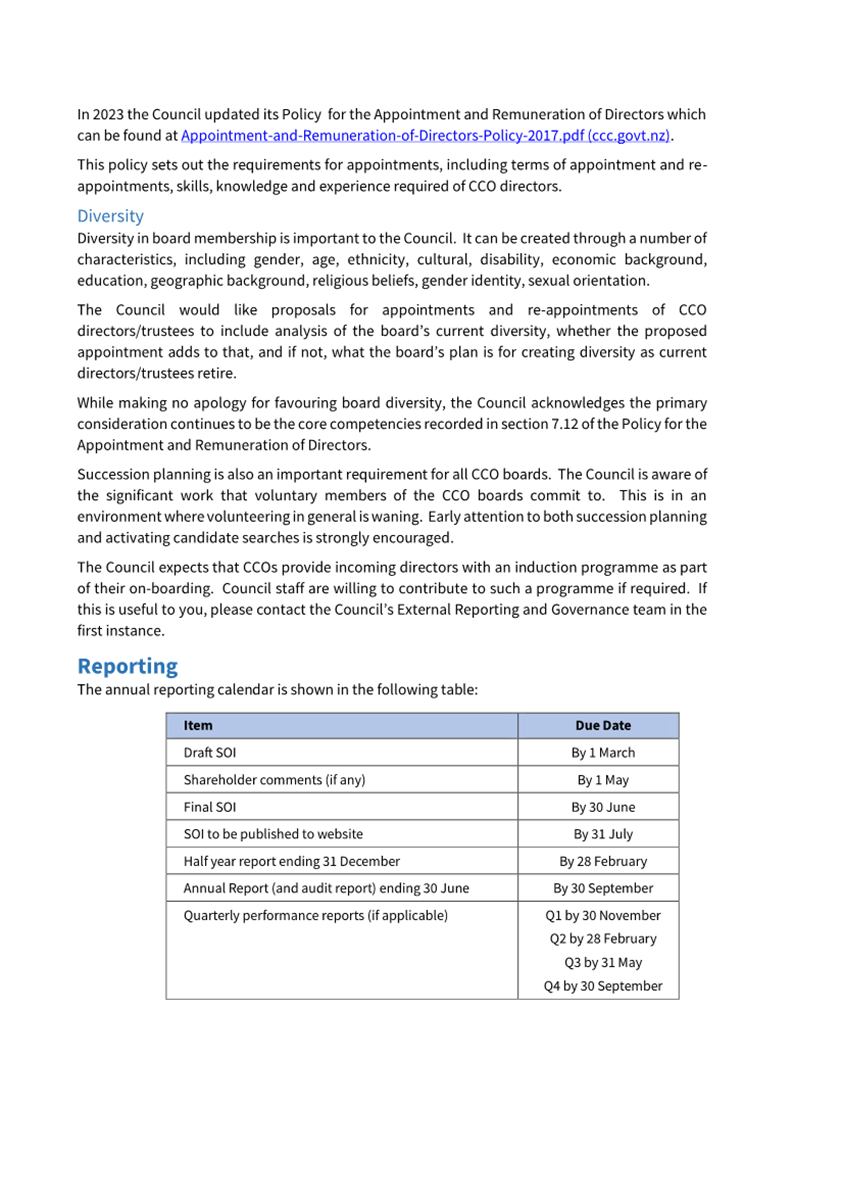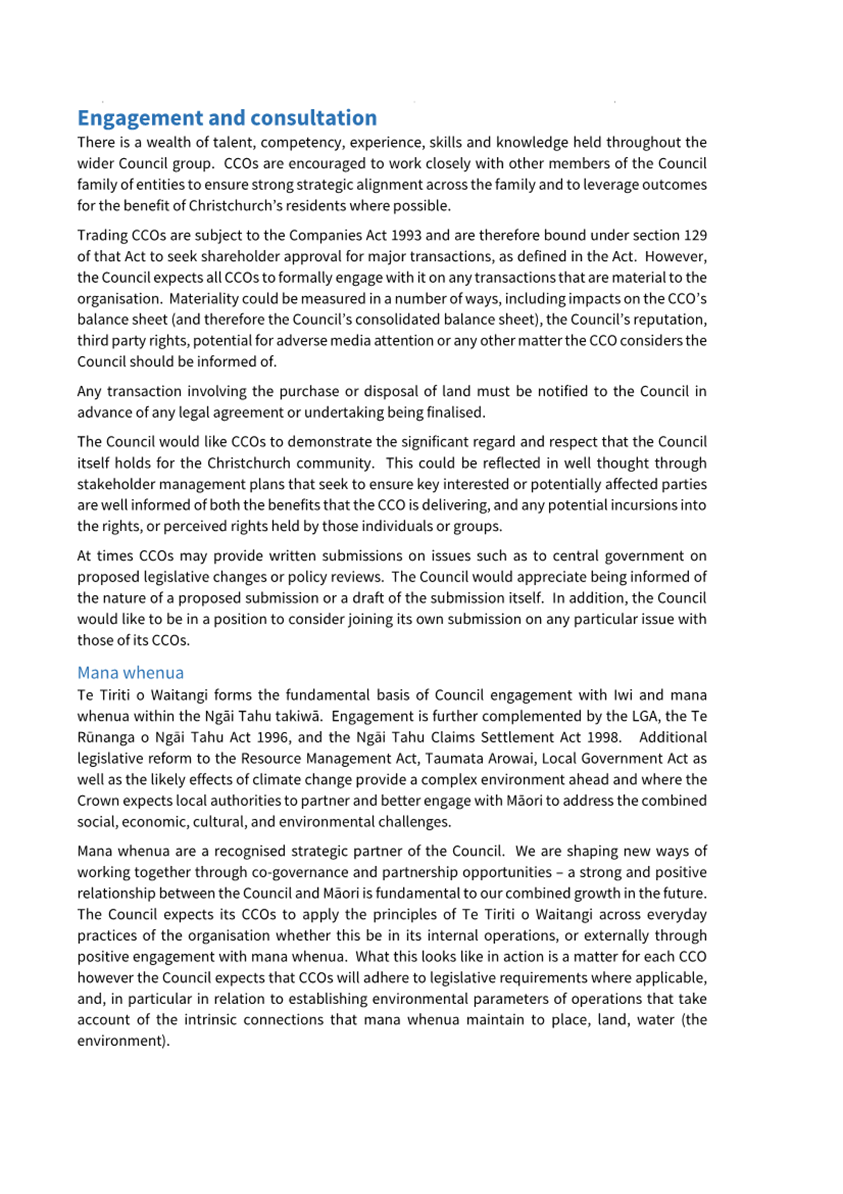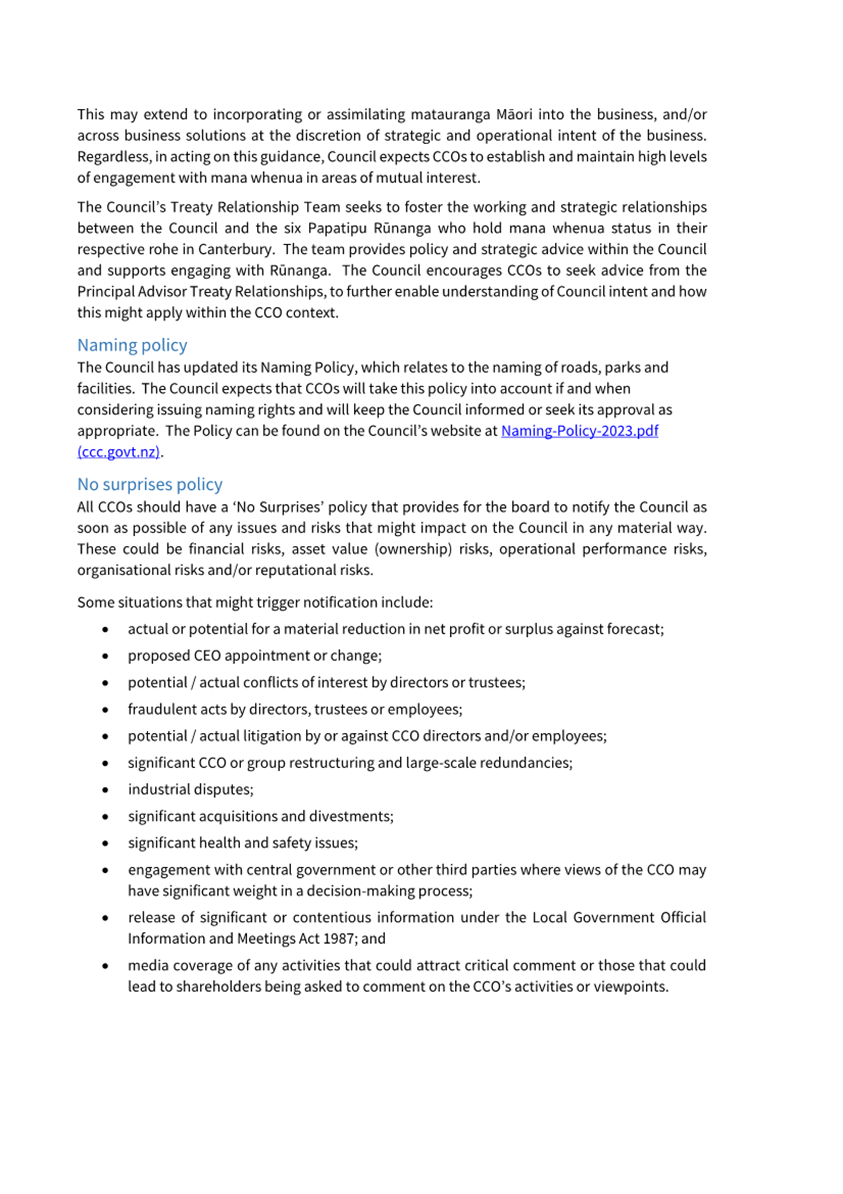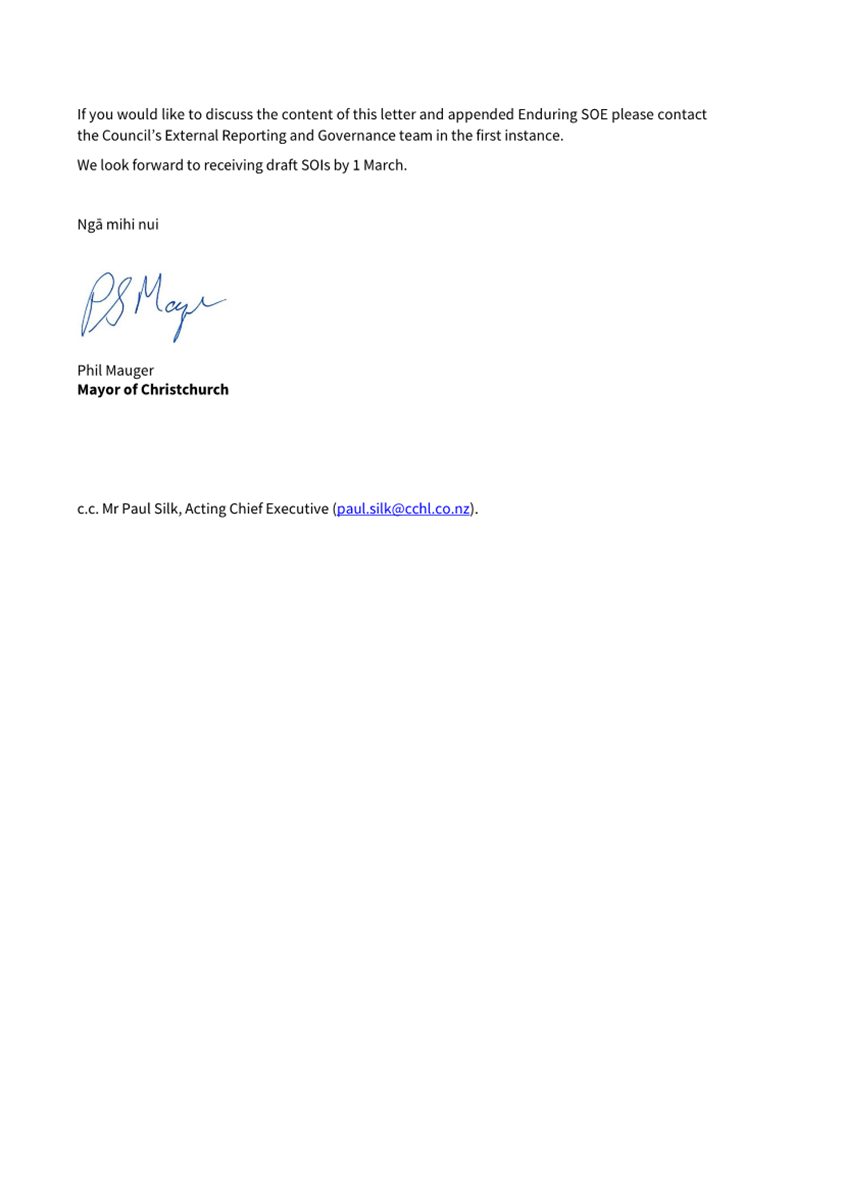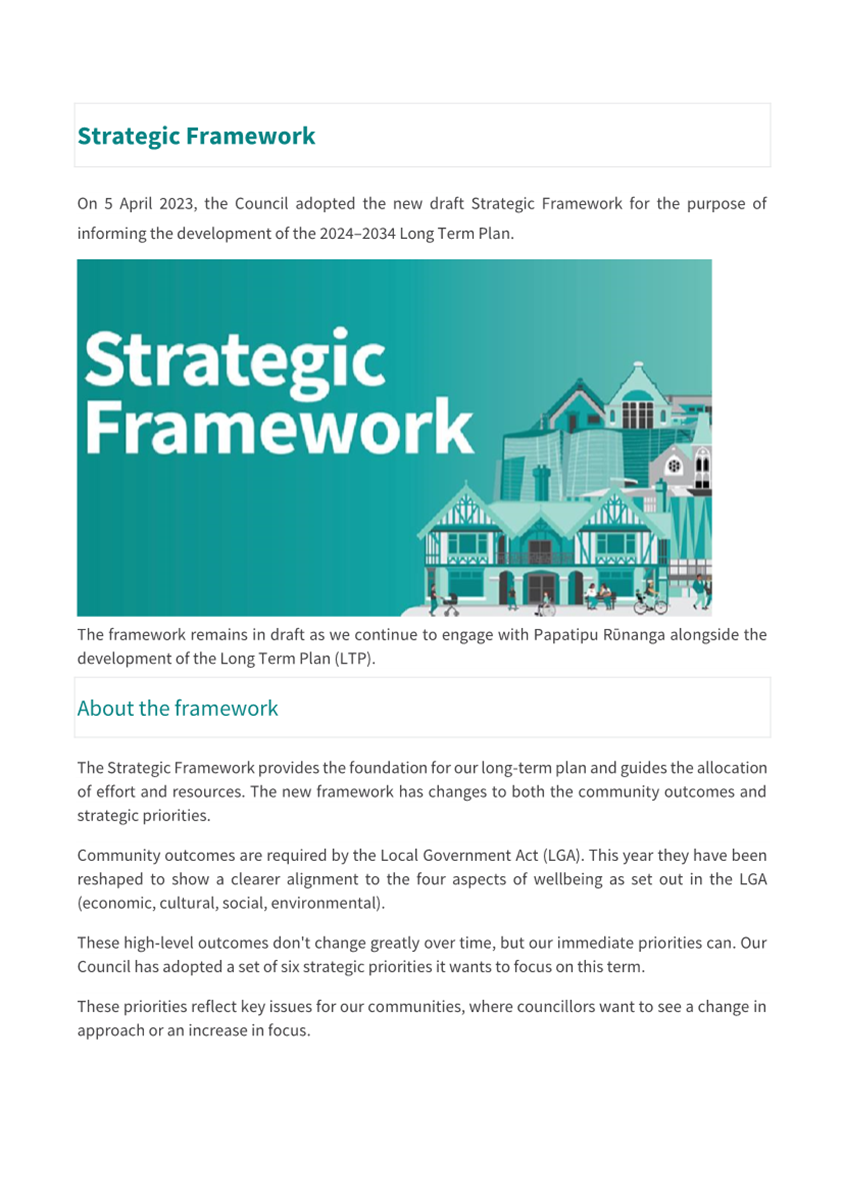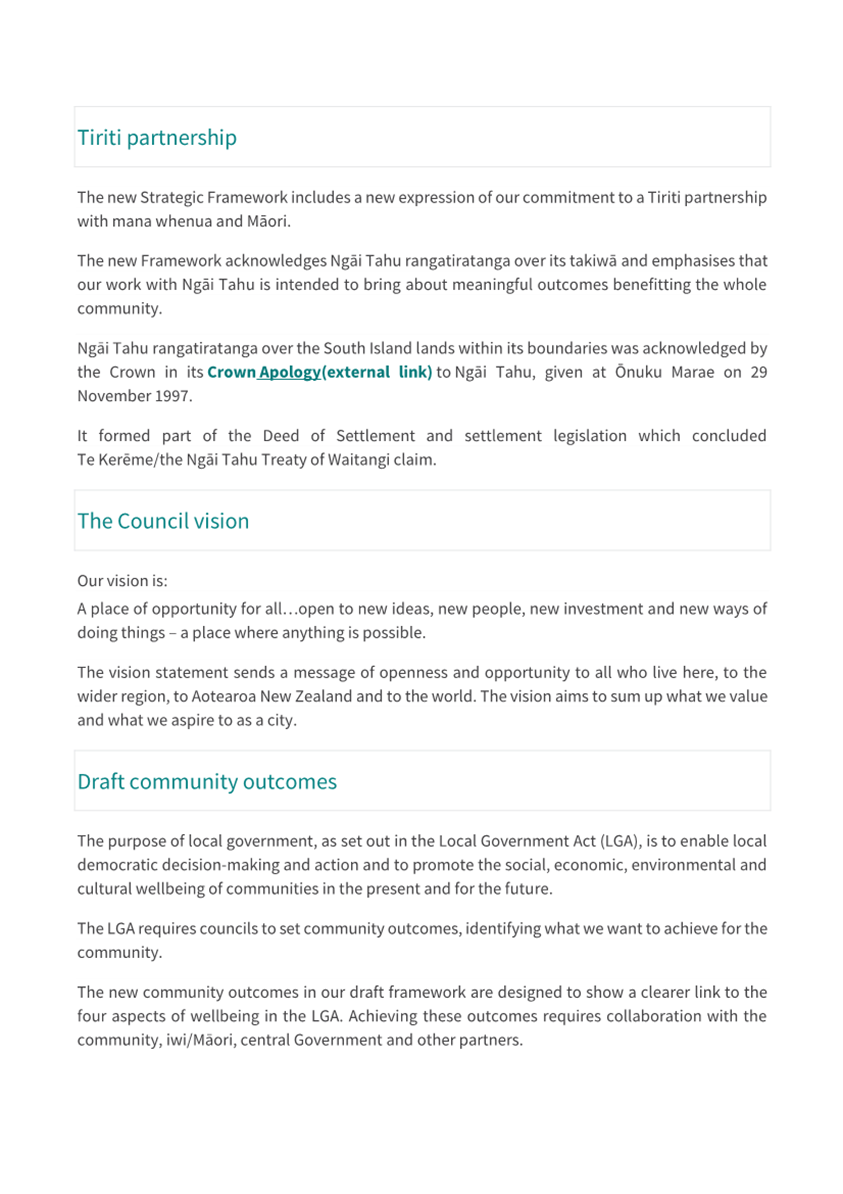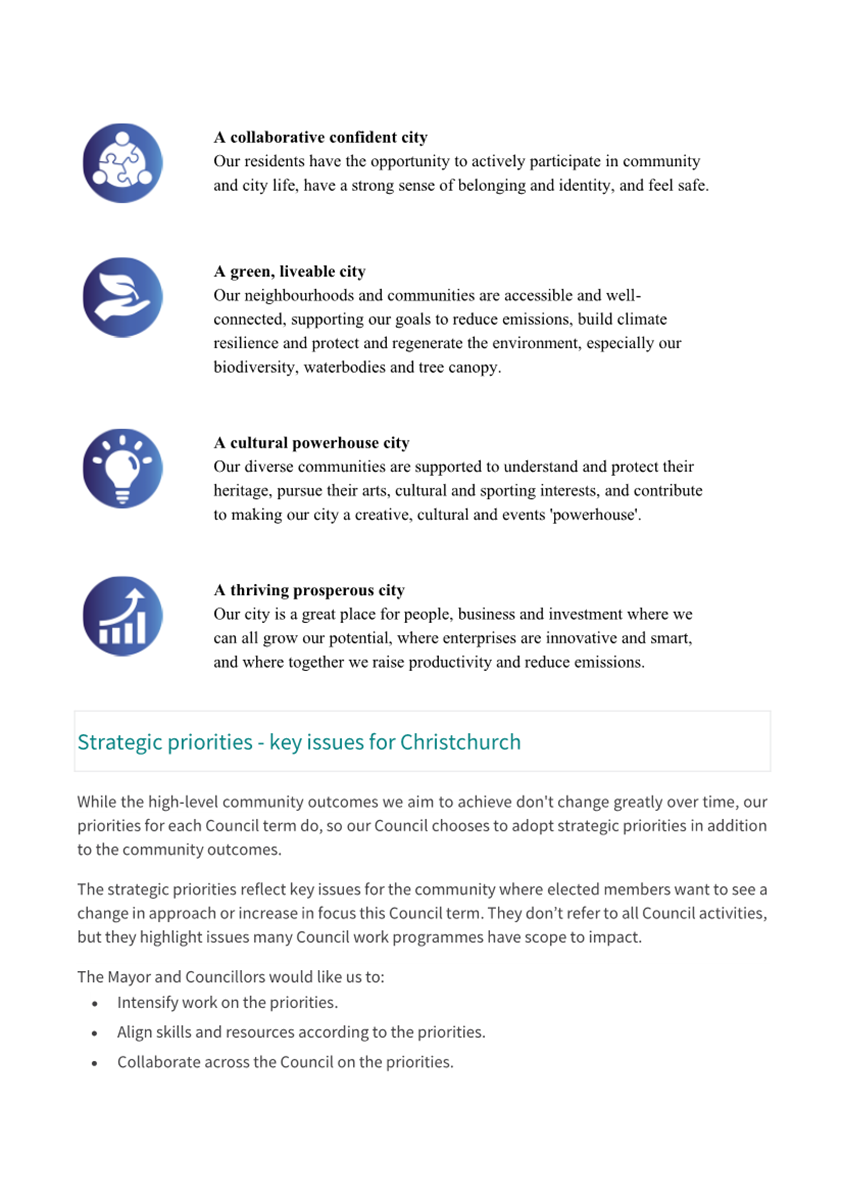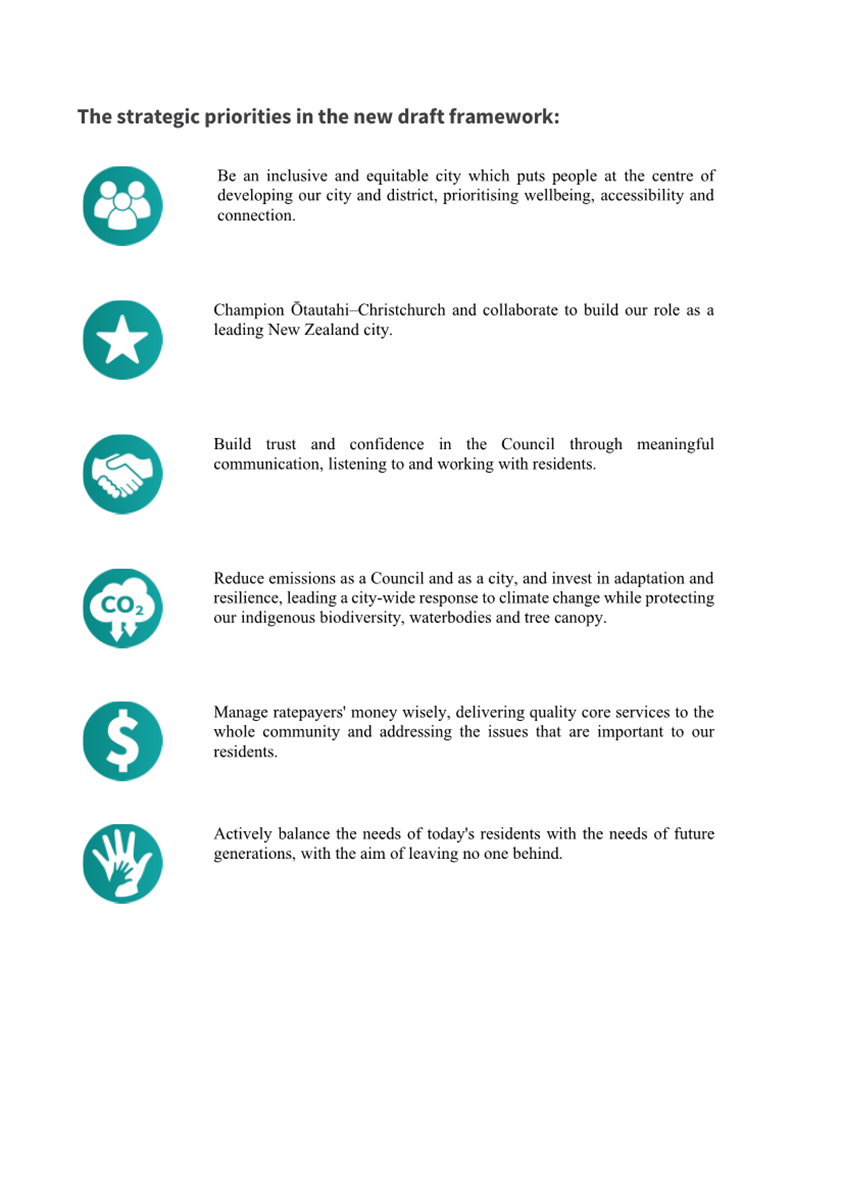
Finance and Performance Committee
Agenda
Notice of Meeting:
An ordinary meeting of the Finance &
Performance Committee will be held on:
Date: Wednesday 18 December 2024
Time: 9.30 am
Venue: Council Chambers, Civic Offices,
53 Hereford Street, Christchurch
Membership
|
Chairperson
Deputy Chairperson
Members
|
Councillor Sam MacDonald
Councillor Melanie Coker
Mayor Phil Mauger
Deputy Mayor Pauline Cotter
Councillor Kelly Barber
Councillor Celeste Donovan
Councillor Tyrone Fields
Councillor James Gough
Councillor Tyla Harrison-Hunt
Councillor Victoria Henstock
Councillor Yani Johanson
Councillor Aaron Keown
Councillor Jake McLellan
Councillor Andrei Moore
Councillor Mark Peters
Councillor Tim Scandrett
Councillor Sara Templeton
|
12 December 2024
Website: www.ccc.govt.nz


Finance and Performance
Committee of the whole - Terms of Reference Ngā
Ārahina Mahinga
|
Chair
|
Councillor MacDonald
|
|
Deputy Chair
|
Councillor Coker
|
|
Membership
|
The Mayor and all Councillors
|
|
Quorum
|
Half of the members if the
number of members (including vacancies) is even, or a majority of members if
the number of members (including vacancies) is odd
|
|
Meeting Cycle
|
Monthly
|
|
Reports To
|
Council
|
Delegations
The Council delegates to the Finance and Performance
Committee authority to oversee and make decisions on:
Capital Programme and operational
expenditure
·
Monitoring the delivery of the Council’s
Capital Programme and associated operational expenditure, including inquiring
into any material discrepancies from planned expenditure.
·
As may be necessary from time to time, approving
amendments to the Capital Programme outside the Long-Term Plan or Annual Plan
processes.
·
Approving Capital Programme business and
investment cases, and any associated operational expenditure, as agreed in the
Council’s Long-Term Plan.
·
Approving any capital or other carry forward
requests and the use of operating surpluses as the case may be.
·
Approving the procurement plans (where
applicable), preferred supplier, and contracts for all capital expenditure
where the value of the contract exceeds $15 Million (noting that the Committee
may sub delegate authority for approval of the preferred supplier and /or
contract to the Chief Executive provided the procurement plan strategy is
followed).
·
Approving the procurement plans (where
applicable), preferred supplier, and contracts, for all operational expenditure
where the value of the contract exceeds $10 Million (noting that the Committee
may sub delegate authority for approval of the preferred supplier and/or
contract to the Chief Executive provided the procurement plan strategy is
followed).
Non-financial performance
·
Reviewing the delivery of services under s17A.
·
Amending levels of service targets, unless the
decision is precluded under section 97 of the Local Government Act 2002.
·
Exercising all of the Council's powers under
section 17A of the Local Government Act 2002, relating to service delivery
reviews and decisions not to undertake a review.
Council Controlled Organisations
·
Monitoring the financial and non-financial
performance of the Council and Council Controlled Organisations.
·
Making governance decisions related to Council
Controlled Organisations under sections 65 to 72 of the Local Government Act
2002.
·
Exercising the Council’s powers directly
as the shareholder, or through CCHL, or in respect of an entity (within the
meaning of section 6(1) of the Local Government Act 2002) in relation to
–
o
(without limitation) the
modification of constitutions and/or trust deeds, and other governance
arrangements, granting shareholder approval of major transactions, appointing
directors or trustees, and approving policies related to Council Controlled
Organisations; and
o
in relation to the approval of Statements of
Intent and their modification (if any).
Development Contributions
·
Exercising all of the Council's powers in
relation to development contributions, other than those delegated to the Chief
Executive and Council officers as set out in the Council's Delegations
Register.
Property
·
Purchasing or disposing of property where
required for the delivery of the Capital Programme, in accordance with the
Council’s Long-Term Plan, and where those acquisitions or disposals have
not been delegated to another decision-making body of the Council or staff.
Loans and debt write-offs
·
Approving debt write-offs where those debt
write-offs are not delegated to staff.
·
Approving amendments to loans, in accordance
with the Council’s Long-Term Plan.
Insurance
·
All insurance matters, including considering
legal advice from the Council’s legal and other advisers, approving
further actions relating to the issues, and authorising the taking of formal
actions (Sub-delegated to the Insurance Subcommittee as per the Subcommittees
Terms of Reference)
Annual Plan and Long Term Plan
·
Provides oversight and monitors development of
the Long Term Plan (LTP) and Annual Plan.
·
Approves the appointment of the Chairperson and
Deputy Chairperson of the External Advisory Group for the LTP 2021-31.
Submissions
·
The Council delegates to the Committee
authority:
·
To consider and approve draft submissions on
behalf of the Council on topics within its terms of reference. Where the timing
of a consultation does not allow for consideration of a draft submission by the
Council or relevant Committee, that the draft submission can be considered and
approved on behalf of the Council.
Limitations
·
The general delegations to this Committee
exclude any specific decision-making powers that are delegated to a Community
Board, another Committee of Council or Joint Committee. Delegations to staff
are set out in the delegations register.
·
The Council retains the authority to adopt policies, strategies
and bylaws.
The following matters
are prohibited from being subdelegated in accordance with LGA 2002 Schedule 7
Clause 32(1) :
·
the power to make a rate; or
·
the power to make a bylaw; or
·
the power to borrow money, or purchase or
dispose of assets, other than in accordance with the long-term plan; or
·
the power to adopt a long-term plan, annual
plan, or annual report; or
·
the power to appoint a chief executive; or
·
the power to adopt policies required to be
adopted and consulted on under this Act in association with the long-term plan
or developed for the purpose of the local governance statement; or
·
the power to adopt a remuneration and employment
policy.
Chairperson
may refer urgent matters to the Council
As may be necessary from
time to time, the Committee Chairperson is authorised to refer urgent matters
to the Council for decision, where this Committee would ordinarily have
considered the matter. In order to
exercise this authority:
·
The Committee Advisor must inform the
Chairperson in writing the reasons why the referral is necessary
·
The Chairperson must then respond to the
Committee Advisor in writing with their decision.
·
If the Chairperson agrees to refer the report to
the Council, the Council may then assume decision making authority for that
specific report.
Urgent matters referred from the Council
As may be necessary
from time to time, the Mayor is authorised to refer urgent matters to this
Committee for decision, where the Council would ordinarily have considered the
matter, except for those matters listed in the limitations above.
In order to
exercise this authority:
·
The Council Secretary must inform the Mayor and
Chief Executive in writing the reasons why the referral is necessary
·
The Mayor and Chief Executive must then respond
to the Council Secretary in writing with their decision.
If the Mayor
and Chief Executive agrees to refer the report to the Committee, the Committee
may then assume decision-making authority for that specific report.
Part A Matters
Requiring a Council Decision
Part B Reports
for Information
Part C Decisions
Under Delegation
TABLE OF CONTENTS NGĀ IHIRANGI
Karakia Tīmatanga..................................................................................... 7
C 1. Apologies Ngā Whakapāha........................................................... 7
B 2. Declarations of Interest Ngā Whakapuaki Aronga.......................... 7
C 3. Confirmation of Previous Minutes Te Whakaāe o te
hui o mua........ 7
B 4. Public Forum Te Huinga Whānui................................................... 7
B 5. Deputations by Appointment Ngā Huinga
Whakaritenga................ 7
B 6. Presentation
of Petitions Ngā
Pākikitanga.................................... 7
Staff Reports
B 7. Key
Organisational Performance Results - November 2024... 19
B 8. Financial
Performance Report - November 2024.................. 69
B 9. Capital
Programme Performance Report November 2024..... 73
C 10. Draft
Development Contributions Policy 2024................... 109
C 11. Climate
Resilience Fund: Policy........................................ 311
C 12. ChristchurchNZ
Holdings Ltd - Draft Letter of Expectations 2025/26.......................................................................... 333
B 13. Venues Otautahi
- Quarter 1 2024/25 Performance Report.. 357
C 14. Venues
Ōtautahi - Draft Letter of Expectations for 2025/26. 369
B 15. Christchurch
City Holdings Ltd - Quarter 1 2024/25 Performance Report........................................................ 393
C 16. Christchurch
City Holdings Ltd - Draft Letter of Expectation for 2025/26.......................................................................... 409
C 17. Resolution to
Exclude the Public...................................... 435
Karakia Whakamutunga
Karakia Tīmatanga
Whakataka te hau ki te uru
Whakataka te hau ki te tonga
Kia mākinakina ki uta
Kia mātaratara ki tai
E hī ake ana te atakura
He tio, he huka, he hau hū
Tihei mauri ora
1. Apologies Ngā Whakapāha
Apologies will
be recorded at the meeting.
2. Declarations of Interest Ngā
Whakapuaki Aronga
Members are
reminded of the need to be vigilant and to stand aside from decision-making
when a conflict arises between their role as an elected representative and any
private or other external interest they might have.
3. Confirmation of Previous Minutes Te
Whakaāe o te hui o mua
That the
minutes of the Finance and Performance Committee meeting held on Wednesday, 27 November 2024 be
confirmed (refer page 8).
4. Public Forum Te Huinga Whānui
A period of up
to 30 minutes will be available for people to speak for up to five minutes on
any issue that is not the subject of a separate hearing process.
Public Forum presentations will be
recorded in the meeting minutes
5. Deputations by Appointment Ngā Huinga
Whakaritenga
Deputations may
be heard on a matter or matters covered by a report on this agenda and approved
by the Chairperson.
Deputations will
be recorded in the meeting minutes.
6. Presentation of Petitions Ngā
Pākikitanga
There were no petitions
received at the time the agenda was prepared.
I
Finance and Performance Committee
Open Minutes
Date: Wednesday 27 November 2024
Time: 9.30 am
Venue: Council Chambers, Civic Offices,
53 Hereford Street, Christchurch
Present
|
Chairperson
Deputy Chairperson
Members
|
Councillor Sam MacDonald
Councillor Melanie Coker
Mayor Phil Mauger
Deputy Mayor Pauline Cotter
Councillor Kelly Barber
Councillor Celeste Donovan
Councillor Tyrone Fields
Councillor James Gough
Councillor Tyla Harrison-Hunt
Councillor Victoria Henstock
Councillor Yani Johanson
Councillor Aaron Keown
Councillor Jake McLellan
Councillor Andrei Moore
Councillor Mark Peters
Councillor Tim Scandrett
Councillor Sara Templeton – via
audio/visual link
|
Website: www.ccc.govt.nz

Part A Matters
Requiring a Council Decision
Part B Reports
for Information
Part C Decisions
Under Delegation
Karakia Tīmatanga
The agenda was dealt with in the following
order.
1. Apologies
Ngā Whakapāha
Part C
|
Committee Resolved FPCO/2024/00066
That the apologies from The Mayor and
Councillor Gough for lateness, and Deputy Mayor Cotter for partial absence,
be accepted.
Councillor
Coker/Councillor MacDonald Carried
|
2. Declarations
of Interest Ngā Whakapuaki Aronga
Part B
Councillors Henstock and McLellan declared an interest in
Item 11 – ChristchurchNZ
Holdings Ltd – Annual Report 2023/24 and Quarter 1 Performance Report
2024/25.
Councillors
McLellan, Gough and MacDonald (Civic Building Ltd), Peters (Riccarton Bush
Trust), and Fields (Rod Donald Banks Peninsula Trust) declared an interested in
Item 12 - Council-controlled Organisations - Annual Reports 2023/24.
Councillors
McLellan, Gough and MacDonald (Civic Building Ltd), and Barber and Scandrett
(Venues Ōtautahi) declared an interest in Item 13 - Council-controlled
Organisations - Annual General Meetings by Written Shareholder Resolutions.
3. Confirmation
of Previous Minutes Te Whakaāe o te hui o mua
Part C
|
Committee Resolved FPCO/2024/00067
That the
minutes of the Finance and Performance Committee meeting held on Wednesday,
23 October 2024 be confirmed.
Councillor
MacDonald/Councillor Peters Carried
|
Councillors Johanson and McLellan joined
the meeting at 9.33 am during consideration of Item 4.1.1.
4. Public
Forum Te Huinga Whānui
Part B
|
4.1.1 Ōtākaro
Orchard Project
|
|
Hayley Guglietta spoke and
provided a presentation to provide a financial update to the Ōtākaro
Orchard Project.
|
|
|
|
Attachments
a Ōtākaro
Orchard Project - Presentation to Council
|
5. Deputations
by Appointment Ngā Huinga Whakaritenga
Part B
There were no deputations by appointment.
6. Presentation
of Petitions Ngā Pākikitanga
Part B
There was no presentation of petitions.
Councillor Templeton joined the meeting via
audio/visual link at 9.39 am during consideration of Item 7.
|
8. Financial
Performance Report - October 2024
|
|
|
Committee Resolved FPCO/2024/00069
Officer Recommendations accepted without
change
Part C
That the Finance
and Performance Committee:
1. Receives the information in the Financial
Performance Report - October 2024 Report.
2. Confirms that the Treasury section of the Financial Performance
Report, which covers policy compliance, borrowing and advances to related
parties, funding requirements and interest rates will be reported quarterly
other than if there is a breach or likely breach of Council’s Liability Management Policy and/or Investment Policy in which case
it will be included in the next Financial Performance
Report.
Councillor
Scandrett/Councillor Harrison-Hunt Carried
|
Councillor Keown left the meeting at 10.09
am and returned at 10.11 am during consideration of Item 9.
Councillor Barber left the meeting at 10.17
am during consideration of Item 9.
Councillor Gough joined the meeting at
10.21 am during consideration of Item 10.
The Mayor joined the meeting at 10.23 am
during consideration of Item 10.
Councillor Barber returned to the meeting
at 10.24 am during consideration of Item 10.
|
10. Advice on
the Infrastructure Working Group
|
|
|
Officer Recommendations Ngā
Tūtohu
That the
Finance and Performance Committee:
1. Receives the information in the Advice on the Infrastructure
Working Group report.
2. Agrees to establish an Infrastructure Working Group reporting to
the Finance & Performance Committee for matters relating to
infrastructure project delivery.
3. Notes that the Infrastructure Working Group will be governed by
the Terms of Reference (ToR) in Attachment A to this report.
4. Agrees that the membership of the Infrastructure Working Group
will consist of the following elected members:
a. Chairperson [insert name]
b. Deputy Chairperson [insert name]
c. [insert name]
d. [insert name]
e. [insert name]
f. [insert name]
5. Notes that the decision in this report is of low significance in
relation to the Christchurch City Council’s Significance and Engagement
Policy.
|
|
|
Committee Resolved FPCO/2024/00071
Part C
That the
Finance and Performance Committee:
1. Receives the information in the Advice on the Infrastructure
Working Group report.
2. Agrees to establish an Infrastructure Working Group reporting to
the Finance & Performance Committee for matters relating to
infrastructure project delivery.
3. Notes that the Infrastructure Working Group will be governed by
the Terms of Reference (ToR) in Attachment A to this report.
5. Notes that the decision in this report is of low significance in
relation to the Christchurch City Council’s Significance and Engagement
Policy.
Deputy
Mayor/Councillor MacDonald Carried
|
|
|
Committee Resolved FPCO/2024/00072
4. Agrees that the membership of the Infrastructure Working Group
will consist of the following elected members:
a. Chairperson Councillor Keown
b. Deputy Chairperson Councillor Coker
c. The Mayor
The division was declared carried
by 10 votes to 7 votes the voting being as follows:
For: Councillor MacDonald, Mayor Mauger, Deputy Mayor Cotter,
Councillor Barber, Councillor Gough, Councillor Henstock, Councillor Keown,
Councillor Moore, Councillor Peters and Councillor Scandrett
Against: Councillor Coker, Councillor Donovan, Councillor Fields,
Councillor Harrison-Hunt, Councillor Johanson, Councillor McLellan and
Councillor Templeton
Deputy Mayor/Councillor
MacDonald Carried
|
Councillor Templeton left the meeting at
10.31 am during consideration of Item 11 and did not return.
Councillor Cotter left the meeting at 10.32
am during consideration of Item 11.
Councillor Gough left the meeting at 10.56
am and returned at 10.59 am during consideration of Item 11.
|
11. ChristchurchNZ
Holdings Ltd - Annual Report 2023/24 and Quarter 1 Performance Report 2024/25
|
|
|
The Mayor spoke to acknowledge the retirement of Dr.
Therese Arseneau from the ChristchurchNZ Board and expressed gratitude for
the significant contributions she has made to Christchurch during her 8 years
of service as Chair of ChristchurchNZ.
|
|
|
Officer Recommendations Ngā
Tūtohu
That the Finance
and Performance Committee:
1. Receives ChristchurchNZ Holdings Ltd’s Annual Report for
2023/24;
2. Receives ChristchurchNZ Holdings Ltd’s Quarter 1 2024/25
Performance Report; and
3. Notes that the Chair of ChristchurchNZ Holdings Ltd is to retire
from the board at ChristchurchNZ Holdings Ltd’s Annual General Meeting
on 28 November 2024.
|
|
|
Committee Resolved FPCO/2024/00073
Part C
That the Finance
and Performance Committee:
1. Receives ChristchurchNZ Holdings Ltd’s Annual Report for
2023/24;
2. Receives ChristchurchNZ Holdings Ltd’s Quarter 1 2024/25
Performance Report; and
3. Notes that the Chair of ChristchurchNZ Holdings Ltd is to retire
from the board at ChristchurchNZ Holdings Ltd’s Annual General Meeting
on 28 November 2024 and records with appreciation Dr Therese Arseneau’s
contribution.
Mayor/Councillor
Coker Carried
Councillors
Henstock and McLellan declared an interest in Item 11 and took no part
in the debate or voting on the matter.
|
|
|
Attachments
a ChristchurchNZ
Holdings Ltd - Presentation to Council
|
The meeting adjourned at 11.09 am and
reconvened at 11.26 am. The Mayor, Deputy Mayor, and Councillors Barber,
Fields and Gough were not present at this time.
Councillor Coker assumed the Chair for
consideration of Items 12, 13 and 14.
The Mayor and Councillor Barber returned to
the meeting at 11.26 am during consideration of Item 12.
|
12. Council-controlled
Organisations - Annual Reports 2023/24
|
|
|
Officer Recommendations Ngā
Tūtohu
That the Finance
and Performance Committee:
1. Receives the Annual Reports for the year ending 30 June 2024 for the following Council-controlled organisations:
a. Civic Building Ltd;
b. Riccarton Bush Trust;
c. Rod Donald Banks Peninsula Trust; and
d. Te Kaha Project Delivery Ltd.
2. Receives the Half Year Report to 30 June 2024 for Civic Financial
Services.
|
|
|
Committee Resolved FPCO/2024/00074
Part C
That the Finance
and Performance Committee:
1. Receives the Annual Reports for the year ending 30 June 2024 for
the following Council-controlled organisations:
a. Civic Building Ltd;
b. Riccarton Bush Trust;
c. Rod Donald Banks Peninsula Trust; and
d. Te Kaha Project Delivery Ltd.
2. Receives the Half Year Report to 30 June 2024 for Civic Financial
Services.
Councillor
Scandrett/Councillor Donovan Carried
Councillors
Gough, MacDonald, McLellan and Peters declared an interested in Item 12 and took no part in the debate or voting on the matter. Councillor
Fields declared an interest in Item 12 and was not present at the time this
Item was discussed.
|
Councillor Fields returned to the meeting
at 11.28 am during consideration of Item 13.
Councillor Gough returned to the meeting at
11.29 am during consideration of Item 13.
|
13. Council-controlled
Organisations - Annual General Meetings by Written Shareholder Resolutions
|
|
|
Officer Recommendations Ngā
Tūtohu
That the
Finance and Performance Committee:
1. Agrees to pass shareholder resolutions for the 2024 annual
meetings of the following Council-controlled organisations:
a. non-trading ‘shelf’ companies - CCC One Ltd, CCC Five
Ltd, CCC Seven Ltd and Ellerslie International Flower Show Ltd; and
b. trading companies – Civic Building Ltd, Te Kaha Project
Delivery Ltd and Venues Ōtautahi; and
2. Notes that the decisions in this report are assessed as low
significance based on the Christchurch City Council’s Significance and
Engagement Policy.
|
|
|
Committee Resolved FPCO/2024/00075
Part C
That the
Finance and Performance Committee:
1. Agrees to pass shareholder resolutions for the 2024 annual
meetings of the following Council-controlled organisations:
a. non-trading ‘shelf’ companies - CCC One Ltd, CCC Five Ltd,
CCC Seven Ltd and Ellerslie International Flower Show Ltd; and
b. trading companies – Civic Building Ltd, Te Kaha Project
Delivery Ltd and Venues Ōtautahi; and
2. Notes that the decisions in this report are assessed as low
significance based on the Christchurch City Council’s Significance and
Engagement Policy.
Councillor
Keown/Councillor Moore Carried
Councillors
Barber, Gough, MacDonald, McLellan, and Scandrett declared an interest in
Item 13 and took no part in the debate or voting on
the matter.
|
|
14. Resolution
to Exclude the Public Te whakataunga kaupare hunga tūmatanui
|
|
|
Committee Resolved FPCO/2024/00076
Part C
That at 11.31 am the resolution to exclude the public set out on
pages 359 to 360 of the agenda be adopted.
Councillor
Coker/Councillor Harrison-Hunt Carried
Councillor
Johanson requested his vote against the resolution be recorded.
|
The public were re-admitted to the meeting
at 11.54 am.
Karakia
Whakamutunga
Meeting
concluded at 11.54 am.
CONFIRMED THIS 18TH DAY
OF DECEMBER 2024
Councillor Sam MacDonald
Chairperson
|
7. Key
Organisational Performance Results - November 2024
|
|
Reference Te Tohutoro:
|
24/1957169
|
|
Responsible Officer(s) Te Pou Matua:
|
Peter
Ryan, Head of Corporate Planning & Performance Peter.Ryan@ccc.govt.nz
|
|
Accountable ELT Member Pouwhakarae:
|
Bede
Carran, General Manager Finance, Risk & Performance / Chief Financial
Officer
|
1. Purpose and Origin of the Report Te Pūtake Pūrongo
1.1 To provide Council with an overview of
performance towards delivering year one of our Long-term Plan 2024-34 (LTP),
our ‘contract with the community.’
2. Officer Recommendations Ngā Tūtohu
That the Finance and
Performance Committee:
1. Receives the information in the Key Organisational Performance Results -
November 2024 Report.
2. Notes that the section ‘Responses to questions from Councillors’ will be included as an Appendix to the
report from the next meeting.
3. Background/Context Te Horopaki
3.1 This
is a regular report focused on a suite of the ‘vital few’
organisational performance targets and forms a key component of the Performance
Framework and its reporting.
3.2 Levels
of service (LOS) are now in consolidated format, which means that exceptions
are put in perspective against those performance measures that are on track.
This report, as well as all supporting activity reports, have been extensively
reworked to achieve this.
4. Considerations Ngā Whai Whakaaro
4.1 The
key organisational performance targets include:
· Service Delivery (levels
of service)
· Capital Projects (both
delivery and planning)
· Value for Money (finance
– activity budgets and capex)
4.2  This report provides November monthly
performance forecasts against ELT performance priority targets for the LTP
2024-34.
This report provides November monthly
performance forecasts against ELT performance priority targets for the LTP
2024-34.
4.3 Overall
organisational performance priority forecasts are mixed, but all retain the
ability to be achieved this financial year.
4.4 Community
Level of Service delivery (83.9%) sees a slight improvement of 0.6% from
October. Level of Service (LOS) performance remains forecast fractionally below
ELTs performance target (85%).
4.5 Management
Level of Service delivery (86.4%) sees a decline of 1.0% from October. LOS
performance remains forecast just above the ELT performance target (85%).
4.6 Due
to truncated preparation timeframes for this reporting period responses to
questions about Service Delivery exceptions from the committee meeting of 27th
November 2024 are being collated and will form part of the Key Organisational
Performance Results for December 2024 at the meeting of 29th January
2025.
4.7 Capital
Project milestone delivery (84.3%) saw a small decline of 0.5% from
October. Capital Programme milestone delivery remains fractionally below the
ELT target (85%).
4.8 Capital
planning performance forecasts each show good progress for this time of
year, against the ELT target of 90% as follows:
· Funding programme budgets
allocated for FY2026 by 31st March 2025 are currently reported at 87%.
· Budget drawdowns for
FY2027 and 2028 by 30th June 2025 are currently reported at 79%.
4.9 Activity
budgets, actively managed to budget (87.2%), saw no
percentage change from October, though there has been movement for some
individual activities. The
organisational target set by ELT is 100% of activities are actively
managed to budget.
4.10 Deliver
Capital Programme within approved budget (-$37.4M), saw a minimal movement
of -$0.1M from October. Deliver Capital Programme within approved budget
remains within the ELT target (=/< $0).
5. Service Delivery

5.1 Community
Level of Service delivery (83.9%) sees a slight
improvement of 0.6% (one LOS) from October. LOS
performance remains below the ELT performance target (85%).
5.2 Management
LOS delivery (86.4%) sees a decline of 1.0% (three
LOS) from October. LOS performance remains just above
the ELT performance target (85%).
5.3 Both
forecasts are in line with the standing Audit and Risk Management Committee
(ARMC) request for all LOS that did not meet target the previous year to
continue to be reported as an amber exception until evidence is provided the
target will or has been met. This provides for conservative forecasts at the
beginning of a financial year.
5.4 The
scatter-diagram below (also Attachment A) shows forecast activity LOS
delivery performance (Community and Management LOS), against forecast activity
budget performance (over- or under-spend).
· Activities variously
report level of service delivery forecasts ranging from 48.1% to 100%
achievement, while all but 5 activities are presently forecast on budget.
· The vertical y-axis shows
forecast service delivery (LOS) performance.
· The horizontal x-axis shows forecast budget over/underspend
(scaled to relative budget).
5.5 The
updated view of Service Delivery exceptions is attached to this report (Attachment
B). It is:
· a visual summary of
activity overall service delivery and activity budget performance,
· underpinned by a more
granular LOS summary across the activity, before
·  listing specific exceptions detail and business commentary.
listing specific exceptions detail and business commentary.
6. Responses to questions from Councillors
6.1 At
the committee meeting of 27 November 2024 Councillors asked questions about
several Service Delivery exceptions. The question responses are being collated
and will form part of the Key Organisational Performance Results for December
2024 at the meeting of 29 January 2025. The early in the month timing of
the meeting has made it difficult for staff to collate and then check the
responses for accuracy and completeness.
6.2 Looking
ahead it is proposed that the questions from councillors (and the responses
from staff) will form an appendix to future reports.
7. Capital Projects – Delivery and Planning

7.1 Capital
project milestone delivery performance is forecasting 84.3%, minimal
change from October (a further 0.5% decline). This remains forecast below the
ELT target of 85%.
7.2 The
capital delivery target relates to projects Council is responsible for
delivering, including Council-funded and externally funded projects.

7.3 Capital
planning performance forecasts both show good progress for this time of
year, against the ELT target of 90% as follows:
· Funding programme budgets
allocated for FY2026 by 31st March 2025 currently at 87%.
· Budget drawdowns for FY2027 and 2028 by 30th June 2025 is currently
at 79%.
7.4 For
further information and underlying project detail, refer to the Capital
Programme Performance Report.
8. Value for Money

8.1 87.2%
of activities are forecast to meet budget (nett
controllable cost, after carry-forwards), against the ELT target 100%.
34 of the 39 activities are forecast on budget.
8.2 For
more information refer to Attachments A & B and to the Financial
Performance Report.

8.3 Overall capital programme
budget expenditure is forecast at -$37.4m, against ELT’s
target of within approved budget (= < $0). This applies
a consistent PMO forecast of $510m against the current programme of $547.7m,
approx. -6.9%. The forecast includes core and externally funded work but
excludes One New Zealand Stadium at Te Kaha.
8.4 More
detailed information is available in the Capital Programme Performance Report.
8.5 Following
is the forward view of capital delivery performance for the LTP 2024-34
(financial).

8.6 The
forward view of capital delivery performance (financial) looks at commitments
for the first three years of the LTP 2024-34, accompanied by confirmed capital
delivery in preceding LTP-cycles against plan.
8.7 This
view takes into account revised year-end budget delivery figures for 2023/24,
and the adopted capital programme from the LTP 2024-34 (approved future years
planned expenditure for 2024/25, 2025/26 and 2026/27).
8.8 The
extended black line is the full planned delivery budget including One New
Zealand Stadium at Te Kaha.
8.9 The
extended blue line shows the full Council planned delivery budget (excluding
One New Zealand Stadium at Te Kaha, and before any confirmed carry forwards):
· from a consistent $488m to
$483m planned budget for the three years (2021-24);
· to between $548m to $668m
planned budget for the future three years (2024-27).
8.10 It
is accepted these future planned delivery budgets for capital meet
Council’s expectations as being both deliverable and affordable.
8.11 Currently, Council capital delivery (green
line) for 2024/25 (year one of the LTP 2024) is forecast at $510m
against the current programme budget of $548m (blue line). This equates
to -$37.4m, or 93.1% forecast delivery.
8.12 This
forecast delivery value is in line with the year-end actual value for 2023/24,
$502m.
8.13 The
ELT performance goal for capital delivery is based on all delivery Council is
accountable for (excluding One New Zealand Stadium at Te Kaha), regardless of
funding source.
8.14 Figures
align with the Financial and Capital Programme Performance reports.
Attachments Ngā Tāpirihanga
|
No.
|
Title
|
Reference
|
Page
|
|
a ⇩
|
Top Activities
(service delivery and budget)
|
24/2209488
|
26
|
|
b ⇩
|
Service
delivery (level of service) exceptions
|
24/2203231
|
28
|
In addition to the attached documents, the following background
information is available:
|
Document
Name – Location / File Link
|
|
Not
applicable
|
Signatories Ngā Kaiwaitohu
|
Authors
|
Amber Tait - Performance
Analyst
Boyd Kedzlie -
Senior Corporate Planning & Performance Analyst
|
|
Approved By
|
Peter Ryan -
Head of Corporate Planning & Performance
Bede Carran -
General Manager Finance, Risk & Performance / Chief Financial Officer
|


|
8. Financial Performance Report -
November 2024
|
|
Reference Te Tohutoro:
|
24/2074300
|
|
Responsible Officer(s) Te Pou Matua:
|
Russell
Holden, Head of Finance
|
|
Accountable ELT Member Pouwhakarae:
|
Bede
Carran, General Manager Finance, Risk & Performance / Chief Financial
Officer
|
1. Purpose and Origin of the Report Te Pūtake Pūrongo
1.1 The
purpose of this report is for the
Finance and Performance Committee to be updated on Council's financial
performance to 30 November 2024 including the current year forecast.
1.2 This is a regular monthly report that is presented to the
Committee. Debtor, treasury and general insurance claims information is
reported quarterly.
2. Officer Recommendations Ngā Tūtohu
That the Finance and
Performance Committee:
1. Receives the information in the Financial
Performance Report - November 2024 Report.
3. Executive Summary
3.1 The
year-to-date operational surplus of $19.0m is $21.8m higher than budget year to
date, driven by savings in insurance costs, reduced personnel costs due to
staff vacancies and lower than budgeted solid waste recycling / organics
processing fees.
3.2 The
forecast operating surplus for the year is currently $12.2m, compared to $11.8m
last month. The improvement of $0.4m has been driven by improvement of solid
waste and resource recovery costs relating to the Burwood Landfill and
recycling/organics processing costs, additional revenue from recreation and
sports from higher than planned participation at facilities, and savings of
personnel cost across various activities.
3.3 The
capital programme delivery is marginally above budget year to date
(0.7%). The total capital programme, before signalled
carry forwards, is forecast to be under spent by $29.0 million. This comprises
a forecast under spend of $37.7 million on the core programme and a forecast
overspend of $8.6 million on the One New Zealand Stadium at Te Kaha. Both
variances will be managed via carry-forward / bring-back requests.
3.4 On
the 4 December, Standard & Poor’s (S&P) affirmed the Credit
Rating for Council and CCHL at “AA” but revised their Outlook for
both entities from “Stable” to “Negative”.
3.4.1 The primary driver
for this revision is S&P’s view that the institutional settings for
the local government sector are weakening – they emphasise that New
Zealand’s institutional settings are among the strongest in the world,
but rising spending needs, high levels of planned indebtedness, and elevated
uncertainty around government policy (particularly related to waters) is
exerting downward pressure on this underlying strength. S&P are
likely to review their assessment of sector settings annually, which raises
some risk of a future downgrade to “AA-”, but this will not be
known until their sector review is completed (possibly in the first quarter of
2025).
3.4.2 A secondary factor in
S&P’s revision is Council’s high level of planned new borrowing
and suspension of progress towards full renewals funding, both of which are
expected to be temporary factors driven by the Te Kaha project.
3.4.3 S&P emphasises
the improved management stability at Council and Christchurch City Holdings
Limited with the appointment of permanent Chief Executives, Council’s
credible and well-established fiscal processes, resilient local economy, and
relatively new infrastructure asset base.
3.4.4 The revised Rating
will not affect the availability or cost of debt at Council or CCHL. Of
the 19 councils rated by S&P, only Auckland and Whangarei remain at
“AA (Stable)”.
4. Operational Revenue and Expenditure
4.1 This covers day to day spend on
staffing, operations and maintenance, and revenues to fund the operational
spend.
4.2 Operational revenue exceeds
expenditure as it includes rates revenue for capital renewals and debt
repayment. This ‘capital’ revenue is referred to below as
‘Funds not available for Opex’ and is removed to show the year to
date and forecast cash operational surplus or deficit.
|
Year to Date Results
|
Forecast Year End Results
|
After Carry Forwards
|
|
$m
|
Actual
|
Budget
|
Var
|
|
Forecast
|
Budget
|
Var
|
|
Carry Fwd
|
Var
|
|
|
Revenues
|
(485.9)
|
(485.9)
|
0.8
|
|
(1,085.4)
|
(1,079.4)
|
6.0
|
|
-
|
6.0
|
|
|
Expenditure
|
344.9
|
354.7
|
19.8
|
|
821.0
|
827.9
|
6.9
|
|
0.3
|
6.6
|
|
|
Funds not
available for Opex
|
132.0
|
133.2
|
1.2
|
|
252.2
|
251.5
|
(0.7)
|
|
(0.3)
|
(0.4)
|
|
|
Operating
(Surplus)/Deficit
|
(19.0)
|
2.8
|
21.8
|

|
(12.2)
|
-
|
12.2
|

|
-
|
12.2
|

|
4.3 The
current operating surplus variance of $21.8 million declines to a forecast
$12.2 million by year end due to timing, trends and work patterns. Brief summaries of the material revenue and expenditure variances
and changes are highlighted below.
4.4 Revenues are $0.8 million ahead of budget year to date and are
forecast to be $6.0 million higher at year end. Key
drivers of actual and forecast variances to budget include (amounts in brackets
are revenues below budget):
|
Variance
|
YE Budget
|
YTD
|
YE Forecast – above / (below) budget
|
|
Building & Planning consent volumes
|
35.0m
|
1.6m
|
2.7m
|
|
Recreation & Sports pools and fitness
centres increased participation
|
21.4m
|
1.2m
|
0.9m
|
|
Rates overstrike
|
760.8m
|
0.5m
|
0.9m
|
|
Transwaste dividend
|
7.3m
|
-
|
0.4m
|
|
Otautahi Community Housing Trust (OCHT)
revenues
|
16.3m
|
(0.1m)
|
0.7m
|
|
Hagley Park parking fees – new
parking meters delayed
|
2.2m
|
(0.8m)
|
(0.9m)
|
|
Excess Water – Residential
|
2.3m
|
(0.4m)
|
-
|
|
Excess Water – Commercial
|
2.9m
|
(0.3m)
|
-
|
|
Other revenues
|
230.2m
|
(0.9m)
|
1.3m
|
|
Total
|
1,078.4m
|
0.8m
|
6.0m
|
4.5 The
rates overstrike arises as Council needs to estimate the City’s rateable
capital value for the 24/25 rates strike prior to receiving final changes for
the 23/24 year from Quotable Values.
4.6 Expenditure is $19.8 million lower than budget year to date and
forecast to be $6.6 million under budget after carry forwards at year
end. Key drivers of actual and forecast variances to budget include:
|
Variance
|
YE Budget
|
YTD
|
YE Forecast
(after c/f)
|
|
Insurance costs
|
38.3m
|
7.9m
|
7.9m
|
|
Personnel Costs (Full corporate increases
not yet applied (only staff on collective agreements), units with vacancies
which were planned to be filled)
|
266.4m
|
4.1m
|
2.2m
|
|
Waste Management lower recycling
processing fees and organic processing fees, and landfill costs
|
69.7m
|
4.1m
|
3.9m
|
|
Transport – Timing of maintenance
costs
|
55.2m
|
2.1m
|
(0.3m)
|
|
Parks - timing of maintenance costs,
costs expected to increase in summer months
|
16.3m
|
1.7m
|
-
|
|
Rates on Council owned properties
|
36.8m
|
0.3m
|
1.0m
|
|
OCHT Community Housing increased
operating and maintenance costs (partially offset by increased revenue)
|
6.0m
|
0.0m
|
(0.7m)
|
|
Transport – increased cost of
illegal fly tipping.
|
-
|
(0.7m)
|
(1.0m)
|
|
Three Waters – continued high City
Care reactive maintenance volumes.
|
37.3m
|
(0.1m)
|
(1.6m)
|
|
Three Waters – Staff time
capitalisations
|
(7.8m)
|
(0.3m)
|
(1.4m)
|
|
Building Consenting & Planning
Consenting – additional costs outsourcing consent processing to meet
LoS, due to volumes and staff shortages (offset by increased revenue).
|
14.9m
|
(1.0m)
|
(2.2m)
|
|
Other minor variances
|
294.8m
|
1.7m
|
(1.2m)
|
|
Total
|
827.9m
|
19.8m
|
6.6m
|
5. Capital Expenditure and Revenue
5.1 This
section covers the capital programme spend and funding relating to it.
|
Year to Date Results
|
Forecast Year End Results
|
After Carry Forwards
|
|
$m
|
Actual
|
Budget
|
Var
|
|
Forecast
|
Budget
|
Var
|
|
Carry Fwd
|
Var
|
|
|
Core Programme
|
162.6
|
171.4
|
8.7
|
|
507.6
|
521.9
|
14.4
|
|
(1.3)
|
15.7
|
|
|
External Funded
Programme
|
10.2
|
9.5
|
(0.7)
|
|
24.3
|
25.7
|
1.4
|
|
(1.3)
|
2.7
|
|
|
Less unidentified
Carry Forwards
|
0.0
|
0.0
|
0.0
|
|
(21.9)
|
-
|
21.9
|
|
40.1
|
(18.2)
|
|
|
Core/External
Funded Programme
|
172.8
|
180.8
|
 8.0 8.0
|
|
510.0
|
547.7
|
37.7
|
 
|
37.5
|
0.2
|

|
|
One New Zealand
Stadium at Te Kaha
|
77.0
|
67.3
|
(9.7)
|
|
198.9
|
190.2
|
(8.6)
|
|
(8.6)
|
-
|
|
|
Total Capital
Programme
|
249.8
|
248.1
|
(1.7)
|

|
708.9
|
737.9
|
29.0
|
 
|
28.8
|
0.2
|

|
|
Revenues and
Funding
|
(182.9)
|
(126.9)
|
56.0
|
|
(355.3)
|
(330.8)
|
24.5
|
|
-
|
24.5
|
|
|
Borrowing
required
|
66.8
|
121.2
|
 54.4 54.4
|
|
353.6
|
407.1
|
53.5
|

|
28.8
|
24.7
|

|
Capital
Expenditure
5.2 Gross capital expenditure of
$249.8 million has been incurred against a year-to-date budget of $248.1
million.
5.3 Overall, total capital expenditure
of $708.9 million is forecast (based on the PMO forecast of $510 million for
CCC Capital-Core/External Funded), to be spent against the annual budget of
$737.9 million. Of the $29.0 million forecast variance, the majority is
forecast to be requested to be carried forward at year end.
Capital
Revenues and Funding
5.4 Capital revenues and funding is $56.0m
higher than budget year to date. This is largely due to the insurance recovery
from the CWTP, higher development contributions being collected, partially
offset by lower crown revenues and NZTA capital subsidies.
5.5 The capital revenue and funding
forecast has increased by $17.2m to $24.5m due to receipt of $55.0m of
insurance recoveries for the CWTP Fire, offset by a $37.3m reduction in
expected crown capital revenues due to a budget overstatement in the LTP.
Attachments Ngā Tāpirihanga
There are no
attachments for this report.
In addition to the attached documents, the following background
information is available:
|
Document
Name – Location / File Link
|
|
Not
applicable
|
Signatories Ngā Kaiwaitohu
|
Authors
|
Mitchell Shaw
- Reporting Accountant
Karthik MG -
Reporting Accountant
Bruce Moher -
Manager Corporate Reporting
Steve Ballard
- Group Treasurer
|
|
Approved By
|
Russell Holden
- Head of Finance
Bede Carran -
General Manager Finance, Risk & Performance / Chief Financial Officer
|
|
9. Capital Programme Performance
Report November 2024
|
|
Reference Te Tohutoro:
|
24/2094806
|
|
Responsible Officer(s) Te Pou Matua:
|
Nicky
Palmer, Head of Programme Management Office
|
|
Accountable ELT Member Pouwhakarae:
|
Brent
Smith, Acting General Manager City Infrastructure
|
1. Purpose and Origin of the Report Te Pūtake Pūrongo
1.1 The
purpose of this report is to present to the Finance and Performance Committee
meeting with the monthly Capital Programme Performance Report for November 2024.
1.2 This
report provides Elected Members with oversight on the performance of the
Capital Programme.
2. Officer Recommendations Ngā Tūtohu
That the Finance and
Performance Committee:
1. Receives the information in the Capital
Programme Performance Report November 2024.
2. Approves the addition of project 67806
– CWTP Activated Sludge Plant (Christchurch Wastewater Treatment Plant
Trickling Filter Replacement) to the FY25 Watchlist.
3. Approves the removal of project 47123 – CWTP Biogas Storage
Upgrade from the FY25 Watchlist.
3. Background/Context Te Horopaki
3.1 At the end of November, the
overall capital programme (including One New Zealand Stadium at Te Kaha) has a
current FY25 forecast of $727.5m (99% of budget), based on Project Managers' consolidated forecasts.
3.2 The
year-end forecast for CCC Capital (excluding One New Zealand Stadium at Te
Kaha) as reported by Project Managers is $528.6m (97%
of budget). This is within 4% of the PMO Forecast, which remains at $510m
this month.
3.3 Full results are provided in the
Capital Programme Performance Report for November 2024 (Attachment A).
This includes the Watchlist Report as Appendix 1.
3.4 Approval is sought from the
Finance and Performance Committee on two changes to the Watchlist this month:
3.4.1 The
addition of project 67806 – CWTP Activated Sludge Plant to the
FY25 Watchlist Report. This project, which
will replace the fire-damaged trickling filter at the Christchurch Wastewater
Treatment Plant, is recommended for inclusion in the Watchlist based on public
profile, scale and significance, and cost. The addition is in alignment
with the draft set of FY25 Watchlist projects that was confirmed by the Finance
and Performance Committee in August 2024. This included a recommendation
that the project be added to the Watchlist once initiated and ready for
delivery.
3.4.2 The removal of
project 47123 – CWTP Biogas Storage Upgrade from the FY25
Watchlist Report. The tender for the project was cancelled due to the
disparity between the available budget and tender price ($9.5m budget
shortfall). Time is required to reassess the project and strategic direction of
the wider gas and sludge stream review (although mandatory health and safety
activities are still being delivered). As this work is not expected to be
completed until mid-2025, it is proposed to remove the project from Watchlist
reporting for the remainder of the financial year, and reconsider it for
inclusion in the FY26 Watchlist Report.
3.5 The Monthly Change Report is included in the public excluded section due to contract commercial
sensitivity.
Attachments Ngā Tāpirihanga
|
No.
|
Title
|
Reference
|
Page
|
|
a ⇩
|
Attachment to
report 24/2094633 (Title: Capital Programme Performance Report - November
2024 - Final)
|
24/2224312
|
75
|
In addition to the attached documents, the following background
information is available:
|
Document
Name – Location / File Link
|
|
Not
applicable
|
Signatories Ngā Kaiwaitohu
|
Authors
|
Lauren Barry -
Senior PMO Business Analyst
Greer Hill -
Administrator Officer
Nicky Palmer -
Head of Programme Management Office
|
|
Approved By
|
Brent Smith -
Acting General Manager City Infrastructure
|
|
10. Draft Development Contributions Policy 2024
|
|
Reference Te Tohutoro:
|
24/628249
|
|
Responsible Officer(s) Te Pou Matua:
|
Ellen
Cavanagh, Senior Policy Analyst
|
|
Accountable ELT Member Pouwhakarae:
|
John
Higgins, General Manager Strategy, Planning & Regulatory Services
|
1. Purpose and Origin of the Report Te Pūtake Pūrongo
1.1 The
purpose of this report for the Finance and Performance Committee to resolve to
consult on the draft Development Contributions Policy.
1.2 The
Local Government Act 2002 (LGA) requires all local authorities to have a policy
on development contributions and financial contributions and to review it every
three years. As the Council’s policy was last adopted in 2021, it is due
for review this year.
2. Officer
Recommendations Ngā Tūtohu
That the Finance and
Performance Committee:
1. Receives the information in the Draft
Development Contributions Policy 2024 Report.
2. Approves the draft Development Contributions Policy 2024 (Attachment
A) for consultation in accordance with section 82 of the Local Government
Act 2002.
3. Agrees that prior to consultation commencing staff may make changes
to the draft Development Contributions Policy 2024 to correct minor drafting
errors.
4. Notes that the decision in this report is assessed as medium
significance based on the Christchurch City
Council’s Significance and Engagement Policy. The
level of significance was determined by consideration of the importance of the
policy to the wider community who are largely unaffected (low significance) and
to property developers of Christchurch district (medium significance) who are
directly affected through the requirement to pay development contributions.
3. Executive Summary Te Whakarāpopoto Matua
3.1 The
LGA requires all local authorities to have a policy on development
contributions and financial contributions. The Development Contributions Policy
(policy) must comply with the requirements of section 106 and sections 197AA to
211 of the LGA. This includes the policy being reviewed at least once every
three years using a consultation process that gives effect to section 82 of the
LGA.
3.2 The
Council’s policy was last reviewed in 2021 and is now due for review.
3.3 The
draft policy contains an updated schedule of capital projects (Schedule of
Assets) and schedule of charges alongside a number of proposed changes to the
policy detail. These policy changes are outlined in Attachment B to this
report. The new development contributions charges are outlined in Attachment
C.
3.4 Subject
to the Committee’s approval, consultation on the draft policy will run
from mid-January to mid-February 2025 with a Hearings Panel to follow.
4. Background/Context Te Horopaki
4.1 Development
contributions enable the Council to recover a fair share of the cost of
providing infrastructure to service growth development from those who benefit
from the provision of that investment. The Council has had a development
contributions policy since 2004 with this being the tenth review of the policy
over that time.
4.2 The
policy details the methodology used to establish development contribution
charges per household unit equivalent (HUE), the resulting cost of those
charges, the methodology used to assess a development for the level of
development contributions required and various process requirements associated
with operating a fair and consistent development contributions process.
4.3 Development
contribution charges are derived directly from the cost the Council incurs to
provide infrastructure to service growth development. The revenue is used to
pay down debt taken out to initially fund the investment in growth
infrastructure.
4.4 Development
contribution charges are calculated per HUE on a per project basis, by dividing
cost to deliver the growth component of an asset by the number of new or
additional households. Overall, development contribution charges have
increased for most parts of the city compared to the 2021 policy. This has been
caused by an increase in the cost to deliver infrastructure to service growth
and revised growth projections that indicate a slower rate of growth compared
to 2021.
4.5 The
charges by activity and catchment are outlined in Attachment C. This
attachment also provides an overview of how development contribution charges
have changed between the 2016, 2021 and 2024 (draft) policy.
4.6 The
policy has many discrete inputs, all of which must be reviewed as part of any policy
review process. These include residential growth model, business growth model,
transport growth model, capital expenditure programmes related to growth,
interest and inflation rate forecasts and reviews of the numerous methodologies
used as the basis for the calculation and assessment of development
contributions.
4.7 In
addition, this review process has included reviewing the use of catchments to
calculate and assess development contributions.
4.8 This
review has also been an opportunity to review the content and structure of the
policy to improve clarity and legibility. The specific policy changes are
outlined in section 5 of this report.
4.9 The
review has been overseen by a Steering Group and undertaken by a Working Group
comprised of relevant staff from across the Council.
4.10 The following related information session/workshops have taken place
for the members of the meeting:
|
Date
|
Subject
|
|
18 July 2023
|
Development Contributions Policy Review
|
|
28 November 2023
|
Development Contributions Policy Workshop
|
|
30 April 2024
|
Development Contributions Policy Workshop
|
|
13 August 2024
|
Council's Growth Model: Ōtautahi
Christchurch Planning Programme, Parks Network Planning, and Development
Contributions
|
|
29 October 2024
|
Development Contributions Policy
|
|
26 November 2024
|
Draft Development Contributions Policy
– Draft Charges
|
Options Considered Ngā
Kōwhiringa Whaiwhakaaro
4.11 Legislation
requires the policy to be reviewed every three years. On this basis, the
following reasonably practicable options were considered:
4.11.1 update the policy and undertake
consultation in accordance with section 82 of the LGA
4.11.2 only update the Schedule
of Assets and development contributions charges and undertake
consultation in accordance with section 82 of the LGA
4.12 The preferred
option is to update and improve the policy. Staff
consider that a full review to update the policy and undertake consultation
more closely complies with our legislative requirement and ensures development
contributions charges accurately reflects current capital costs. Updating only
the schedule of assets would be a missed opportunity to update the policy
detail.
Options Descriptions Ngā
Kōwhiringa
4.13 Preferred
Option: update the policy and undertake consultation
4.13.1 Option Description: This
option involves an update to the schedule of capital projects and charges as
well as changes to the policy framework. These changes are outlined in section
5 of this report.
4.13.2 Option Advantages
· Complies with legislative requirements and ensures development
contributions charges accurately reflects current capital costs required to
service growth development. It also provides an opportunity to make updates to
the policy provisions.
4.13.3 Option Disadvantages
· None. Legislation requires the review and requires consultation,
whether any changes are proposed or not.
4.14 Retain the
policy with no changes to policy framework, but update schedule of assets and
development contributions charges and consult.
4.14.1 Option Description: This
option would involve only updating the schedules of development contribution
charges and capital programme information (Schedule of Assets).
4.14.2 Option Advantages
· Fulfils minimum requirement that the policy be reviewed every three
years.
4.14.3 Option Disadvantages
· Legislation requires a review, and updates are required to the
policy. Not proposing any changes to the policy would be a missed opportunity
to make improvements to the policy.
5. Policy Detail
5.1 The
key proposed changes have been arrived at following assessment of options on
each issue. Attachment B provides an analysis of options considered and reasons
why those being proposed are the preferred options.
Life of
existing use credits
5.2 Issue:
The Council position has been to limit the life of existing use credits to
ten years from when the site last exerted demand on Council infrastructure.
Many credits have expired in the last three years on buildings and sites of
former buildings damaged in the 2010/11 earthquakes – particularly in the
Christchurch CBD where over 1000 buildings were demolished or too damaged to
use. This issue was considered as part of the 2021 policy review and staff have
reconsidered as part of this review.
5.3 Recommendation:
Retain the current policy setting, where existing demand credits
expire after 10 years. This strikes a balance between managing infrastructure
capacity wisely, being fair to ratepayers in that a liability to provide
infrastructure to service these lots is not in place forever and being fair to
developer in recognising that development has occurred on a site previously.
5.4 There
is also significant financial impact to the Council if this policy were to
change. The value of expired credits in the central city, based on new
household unit equivalent (HUE) charges is around $24 million (GST exclusive).
Small
residential unit adjustment
5.5 Issue: The Council currently reduces development
contributions charges for residential development for dwellings with a gross
floor area (GFA) less than 100m2 including garaging and potentially
habitable accessory buildings. The reduction is in line with the floor area,
for example a unit with 80m2 gross floor area is assessed at 0.8 HUE
or 80% of the full development contributions charge
5.6 In the last 10 years houses have got significantly smaller. In 2023,
45% of building consents in Christchurch were for homes less than 100m2,
24% were for less than 80m2 and 6% were for less than 60m2.This
means the Council is providing a discount for close to half of all new homes.
However, the policy is based on assumptions and averages and the Council is
only looking to adjust for situations that are significantly different to
assumed demand. Using GFA is no longer an accurate reflection of the demand a residential
unit places on Council infrastructure.
5.7 Recommendation: Staff recommend moving
to a residential unit adjustment based on bedrooms and keeping a small unit
adjustment for one-bedroom homes. This will ensure that the Council is only
making adjustments for developments that fall outside the assumptions built
into the policy.
5.8 Data from Statistics New Zealand confirms that 66% of one-bedroom residential
units have one person living in them and 87% of have two or fewer. The average
household is 2.6 people, so it is reasonable to assume these homes have half
the assumed demand of what is built into the policy.
Large
residential unit adjustment
5.9 Issue: The
policy does not currently have a provision relating to large residential units.
Many councils’ policies have a large residential unit adjustment on the
basis that the greater the number of bedrooms in a residential
unit the more usual residents it likely has.
5.10 The Council is noticing an increasing
number of multiple tenancy housing developments with lock-up rooms with an
ensuite and shared kitchen lounge. Under current policy
provisions, there are currently assessed as a single household unit.
5.11 Recommendation: Staff
recommend providing a large residential unit adjustment. Developments with
seven or more bedrooms assessed at 1.4 HUE. This means the
development contribution charge better reflects the usually higher demand on
infrastructure from larger homes.
5.12 While many
councils that have large residential unit adjustments start their adjustment at
a lower threshold, the Council recognises that the way bedrooms are defined
could potentially include rooms that are not intended to be used as bedrooms
but could be. Therefore, a buffer has been built into the policy to ensure the
adjustment is appropriately targeted.
Remission
provision
5.13 Issue: The
policy currently includes a clause that provides for the Council to remit some
or all development contribution charges for a development in “unique and
compelling circumstance”. The original intent of this clause was
to allow for the Council to address a matter directly associated with the development
contributions charge. The clause is being used more widely
with developers appealing to the Council to remit development contributions
charges for a range of reasons including that the organisation applying
provides services to the community.
5.14 Recommendation:
The remission provision has been removed from the policy and replace with a
statement that the policy does not provide for remissions. The Council could
still opt to make decisions in certain circumstances that are inconsistent with
the Council’s policy, under section 80 of the LGA. Staff propose to
include a specific question on this in the consultation.
5.15 An alternative remission
provision has also been drafted and is included in Attachment B. The
alternative clause clarifies that it is the development itself (not the
developer or future occupier of the site) that must be unique and that the
development must be sufficiently distinct from other developments that
remitting a development contribution requirement does not create a new
precedent. Staff will include this as part of community consultation.
Catchments
for road network and neighbourhood parks activities
5.16 Issue:
The concentric approach the Council currently takes for neighbourhood parks
and road network has resulted in a greenfield catchment primarily spanning the
outer (south, south-west and north-west) suburbs of the district. These
catchments were first developed when the Council had a lot of greenfield land but
as Christchurch reverts to pre-earthquake patterns, development is increasingly
occurring in infill areas there is less rationale for a greenfield catchment.
5.17 Concentric
catchments means that it is possible developments are currently contributing to
the provision of parks and roads that are not necessarily local to the
neighbourhood where the development is occurring. The catchments could
be better configured to ensure a development contributions for neighbourhood
parks and roads are paid for by developments that most often use and benefit
from them.
5.18 Recommendation: Staff propose to move to more localised catchments for
neighbourhood parks and road network. This will better reflect who benefits
from the provision of these assets.
5.19 With respect to neighbourhood
parks, these are primarily used by local residents. This is also reflected in
several levels of services within the Council’s (Long
Term Plan) LTP, where the provision of neighbourhood parks is based on a
property’s proximity to a park.
5.20 The Council proposes to use
localised catchments for road network based on data which shows that residents
travel predominantly within their local neighbourhoods or otherwise to large
employment areas like the central city, rather than across town. By focusing on
these catchment areas, urban planning and transport strategies can be tailored
to align more effectively with actual travel behaviours. This ensures the
Council continues to address local needs efficiently and support sustainable,
community-focused development.
Catchments
for three waters activities
5.21 Issue:
Proposed Plan Change 14 and National Policy Statement on Urban Development (NPS-UD)
will enable growth to occur virtually anywhere in the district and makes it
difficult for the Council to plan the provision of growth infrastructure. The
Council requires a flexible whole of city response to three waters
infrastructure requirements to service growth which the current catchments do
not support. The number of catchments that we currently have is also
administratively complex.
5.22 Recommendation: Staff propose
return to larger, fewer catchments for water wastewater and stormwater, which
will also better reflect the integrated nature of the Council’s approach
to the delivery of these assets. This is administratively simpler and reflects
the Council’s integrated delivery of three waters services. Furthermore, because infrastructure plans are not fully aligned with
the LTP funding period, there may be misalignment between LTP provision and the
development triggering the required upgrades. This approach will allow the
Council to be more flexible in responding to growth – particularly where
there is uncertainty with where that growth with occur.
Stormwater
reductions for developer provided infrastructure
5.23 Issue:
The Council’s policy provides for discounts for development contributions
in situations where the demand on Council infrastructure is significantly less
for a particular development than for the average development. The Christchurch
District Plan requires most developments to include on-site stormwater
management capacity as a condition of resource consent.
5.24 The
Council’s approach since around 2006 has been to discount development
contributions for stormwater where a development provides mitigation that
reduces demand on Council’s stormwater network. However, this is
inconsistent with the rest of the policy, which is to only provide adjustments
when actual demand is double or half of assumed demand.
5.25 Recommendation: Stormwater
discounts for on-site mitigation are only provided when the
demand on Council infrastructure is less than half of the average assumed
demand as detailed in the policy. This would see relatively minor adjustments
(such as for the installation of a rainwater tank) cease.
Multi-unit stormwater
adjustments
5.26 Issue: The current policy
provides discounts in instances where two or more residential units are
attached to each other. Stormwater demand is determined by impervious surface
area and there is no rationale to provide a discount just because two units are
attached.
5.27 The average impervious surfaced
area has been amended in this policy following the completion of a new survey
of impervious surface area per parcel across Christchurch. The new averaging
takes into account changes to residential development types, including the
trend of smaller residential units and development increasingly occurring in
infill areas.
5.28 Recommendation: Stormwater
discount for developments with attached multi-units will cease on this basis
that the averages built into the policy already take into account smaller
residential units and because impervious surface area determines demand for
stormwater activity,
Fee for
development contributions assessments
5.29 Issue: Ratepayers current fund the development contribution assessment
function via the general rate.
5.30 Recommendation: Provision for the Council to charge fee for development
contributions assessment. It is fair that the cost of
preparing a development contributions assessment is funded by the developer because
they both benefit from the assessment of their development and cause the
assessment to be required through submitting their development for consent. The
exact charge will be consulted on separately.
6. Financial Implications Ngā Hīraunga Rauemi
Capex/Opex Ngā Utu Whakahaere
6.1 Cost
to Implement – The cost of preparing the draft policy and community
engagement is funded through existing operational budgets. This work has been
undertaken over more than one year and is funded as a general cost of business
rather than a discrete cost attributed to the project.
6.2 Maintenance/Ongoing
costs - Annual policy and administration costs vary depending on the policy
work required and the level of development needing to be assessed.
6.3 Funding
Source – The cost of preparing and administering the policy comes from
the general rate. The draft policy proposes to charge an administration fee at
invoicing stage to cover some of the costs associated with administering this
policy.
7. Considerations Ngā Whai Whakaaro
Risks and Mitigations Ngā
Mōrearea me ngā Whakamātautau
7.1 Development
contributions can be a litigious area of local government activity often with
significant financial implications for developers and councils. Because of this
there is a significant body of case law regarding what can and cannot be done
under the provisions of a development contributions policy.
7.2 As
with any decision made by the Council, there is a risk of judicial
review. The Development Contributions Policy (or parts of it) could be
quashed by the High Court if the policy is challenged and the Court finds the
decisions made relating to the policy are unlawful or procedurally
unfair. This is a risk of any decision made by Council, but one that can
be minimised as much as possible by ensuring that the policy has been through a
stringent review process and that the Council adheres to an appropriate and
fair consultation process.
7.3 The
Council’s legal services team has provided advice throughout the policy
development process including full review of the proposed policy to ensure the
review and draft policy reflects legislative requirements.
Legal Considerations Ngā
Hīraunga ā-Ture
7.4 Statutory
and/or delegated authority to undertake proposals in the report:
7.4.1 Development
contributions policies are governed by section 106 and sections 197AA to 211 of
the LGA.
7.4.2 Section 106(6) of the
LGA requires the Council to review its development contributions policy at
least once every three years using a consultation process that gives effect to
the requirements of s82 of the LGA. The review of the development contributions
policy has been undertaken within the three-year review cycle.
7.4.3 In addition, the
Council is under an obligation, when making a decision, to give consideration
to the views and preferences of persons likely to be affected by, or have an
interest in, the matter pursuant to s78 of the LGA.
7.4.4 The Finance and
Performance Committee has been given delegated authority by the Council to
exercise all of its powers in relation to development contributions.
7.4.5 This power also
extends to the decision to review and amend or replace the policy or to simply
review the policy and decide that no changes are required. These options
have been detailed in paragraphs 4.9 to 4.12 of this report.
7.5 Other Legal Implications:
7.5.1 Section 102 of the LGA requires all local authorities to have a
policy on development contributions and financial contributions.
7.5.2 The policy must comply with the requirements of section 106 and
sections 197AA to 211 of the LGA. The implications of these provisions on the
policy detail have been set out where relevant in Section 5 above.
7.5.3 This report and the
draft Development Contributions Policy have been reviewed and approved by the
Council’s Legal Services Team.
Strategy and Policy Considerations Te Whai
Kaupapa here
7.6 The required
decisions:
7.6.1 Does align with the Christchurch
City Council’s Strategic Framework. The
Development Contributions Policy supports the achievement of a range of the
Council’s community outcomes and strategic priorities through providing a
significant revenue stream that helps the Council to provide infrastructure to
service growth development in a timely manner.
7.6.2 Are assessed as medium significance based on the
Christchurch City Council’s Significance and Engagement Policy. The
level of significance was determined by importance of the policy to the wider
community who are largely unaffected (low significance) and to property
developers of Christchurch district (medium significance) who are directly
affected through the requirement to pay development contributions.
7.6.3 Are consistent with Council’s Plans and Policies. In particular it
supports the Council’s approach to funding the provision of
infrastructure to service growth development outlined in the Council’s
Revenue and Financing Policy.
7.7 This report supports the Council's
Long Term Plan (2024 - 2034):
7.8 Strategic
Planning and Policy
7.8.1 Activity:
Strategic Policy and Resilience
· Level
of Service: 17.0.1.2 Advice meets emerging needs and statutory requirements,
and is aligned with governance expectations in the Strategic Framework - Carry
out policy reviews in accordance with Unit work programme and provide advice to
meet emerging needs and statutory requirements
Community Impacts and Views Ngā Mariu
ā-Hāpori
7.9 The
decision affects all wards/Community Board areas. Staff provided a briefing at
a Combined Community Board meeting in March 2024.
7.10 The Council has
had a development contributions policy in place since 2004 with this being the tenth
review of the policy over that time. Each review has included a comprehensive
community engagement process which have generated interest from the development
community in particular. Staff have accumulated knowledge of issues raised by
the development community over the years and have worked positively with them
to ensure we have a fair, equitable and transparent policy.
7.11 The LGA requires
that consultation on a development contributions policy is undertaken in
accordance with sections 82 and 82A of the Act, which means a special
consultative procedure is not required. However, the Council must make
available the proposal and the reasons for it, an analysis of the reasonably
practicable options including the proposal, assessed in terms of their
advantages and disadvantages, and a draft of any proposed policy.
7.12 Consultation will be targeted to the development community including
consultants active in servicing the development community. The wider community
will be engaged with through the Have Your Say website. Some pre-engagement has
already commenced with some stakeholder membership organisations.
Impact on Mana Whenua Ngā Whai Take
Mana Whenua
7.13 The decisions in
this report do not involve a significant decision in relation to
ancestral land or a body of water or other elements of intrinsic value,
therefore this decision does not specifically impact
Mana Whenua, their culture, and traditions.
7.14 The decision does not a matter of
interest to Mana Whenua and will not impact on our
agreed partnership priorities with Ngā Papatipu
Rūnanga.
7.15 This is a
funding policy. The Council had a development contributions rebate
scheme for Papakāinga/Kāinga Nohoanga developments,
but the rebate scheme sits outside the scope of this policy.
Climate Change Impact Considerations Ngā
Whai Whakaaro mā te Āhuarangi
7.15 The
proposals in this report are unlikely to contribute significantly to adaptation
to the impacts of climate change or emissions reductions.
7.16 The policy details how the Council will fund infrastructure to
service growth development. Climate change considerations are dealt with
outside the scope of this policy
8. Next Steps Ngā Mahinga ā-muri
8.1 If
the Finance and Performance Committee agree staff will commence consultation on
the draft policy.
Attachments Ngā Tāpirihanga
|
No.
|
Title
|
Reference
|
Page
|
|
a ⇩
|
Draft
Development Contributions Policy
|
24/2186073
|
119
|
|
b ⇩
|
Policy Issues
and Options
|
24/2152664
|
294
|
|
c ⇩
|
Development
contributions charges by activity and catchment
|
24/1939207
|
301
|
In addition to the attached documents, the following background
information is available:
|
Document
Name – Location / File Link
|
|
Not
applicable
|
Signatories Ngā Kaiwaitohu
|
Authors
|
Ellen Cavanagh
- Senior Policy Analyst
Andrew
Campbell - Legal Counsel
|
|
Approved By
|
David
Griffiths - Head of Strategic Policy & Resilience
John Higgins -
General Manager Strategy, Planning & Regulatory Services
|
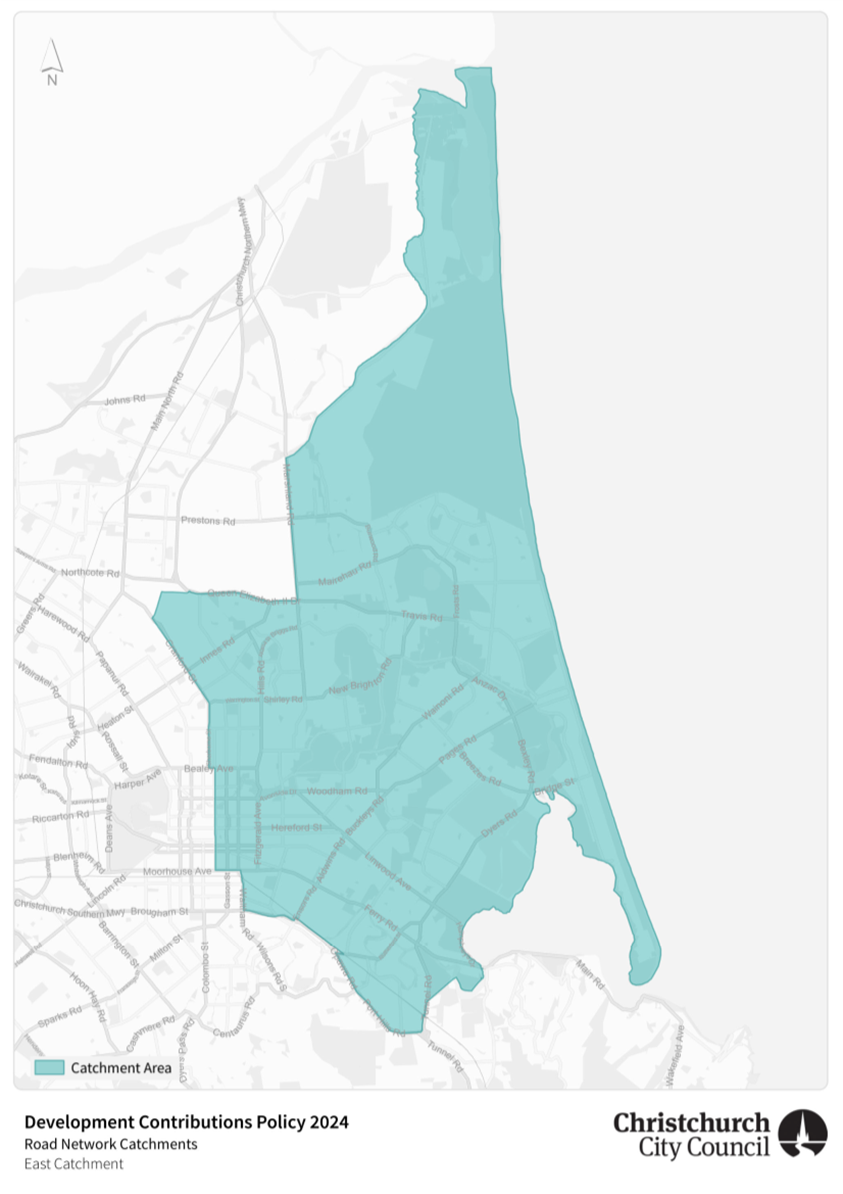
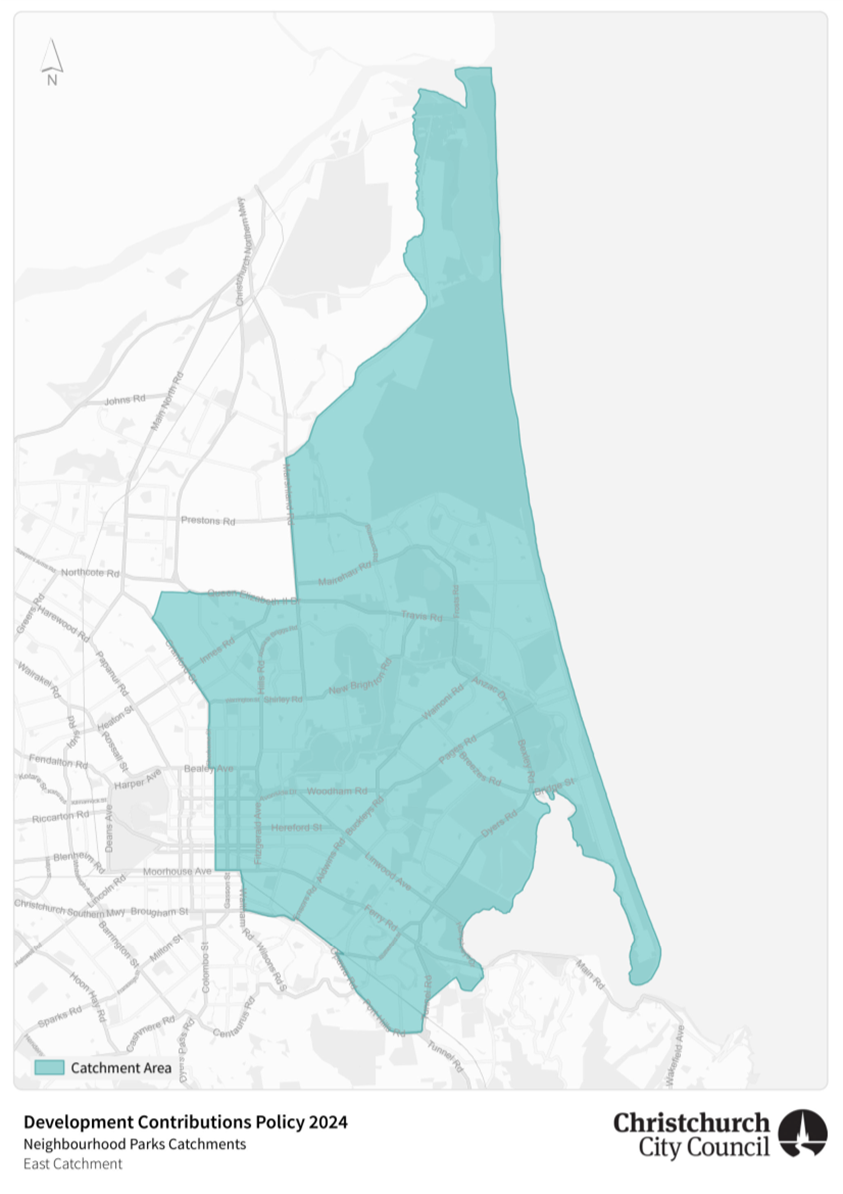
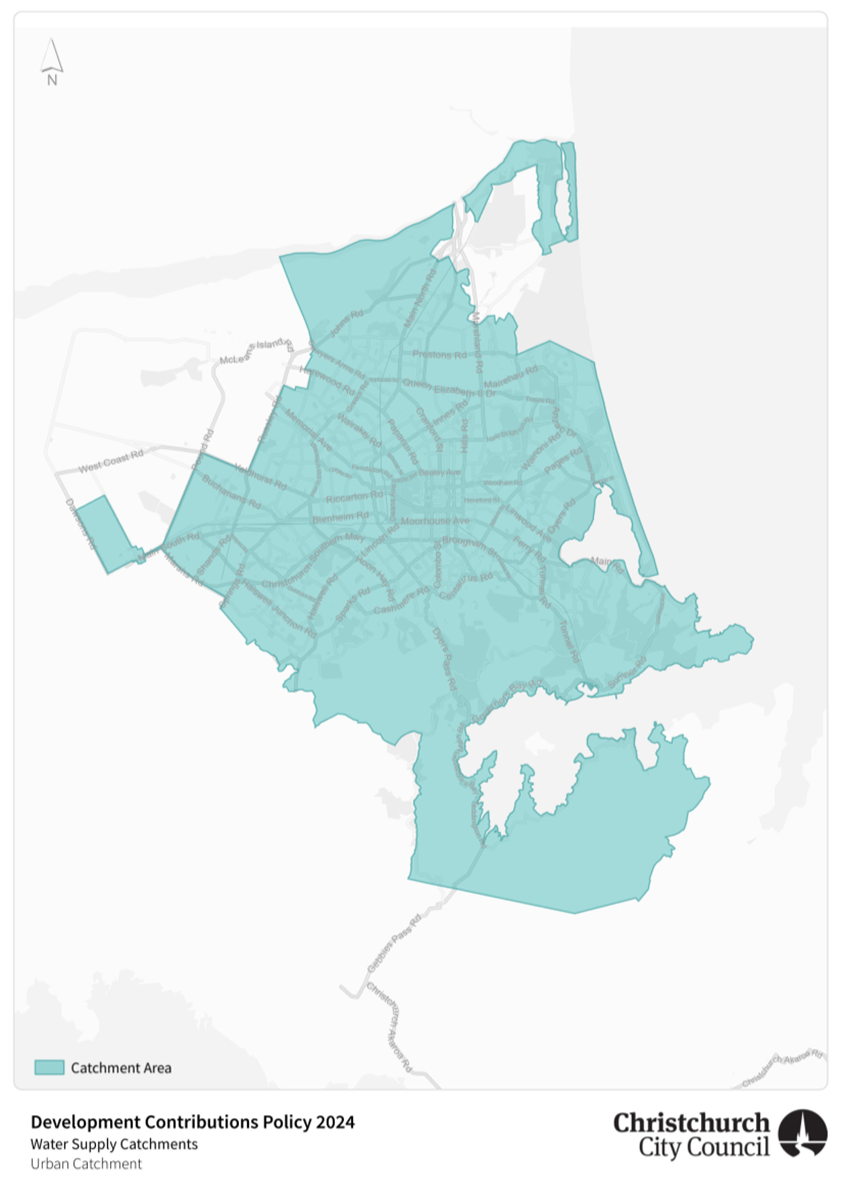
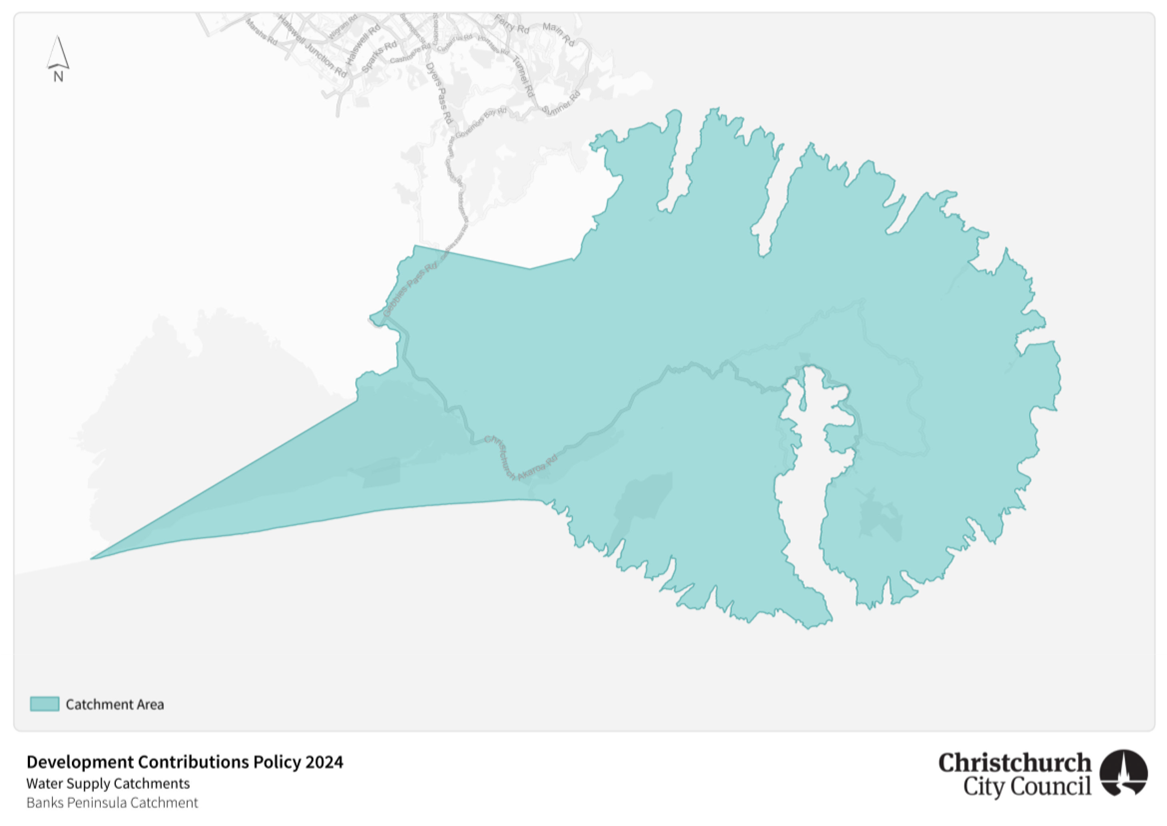
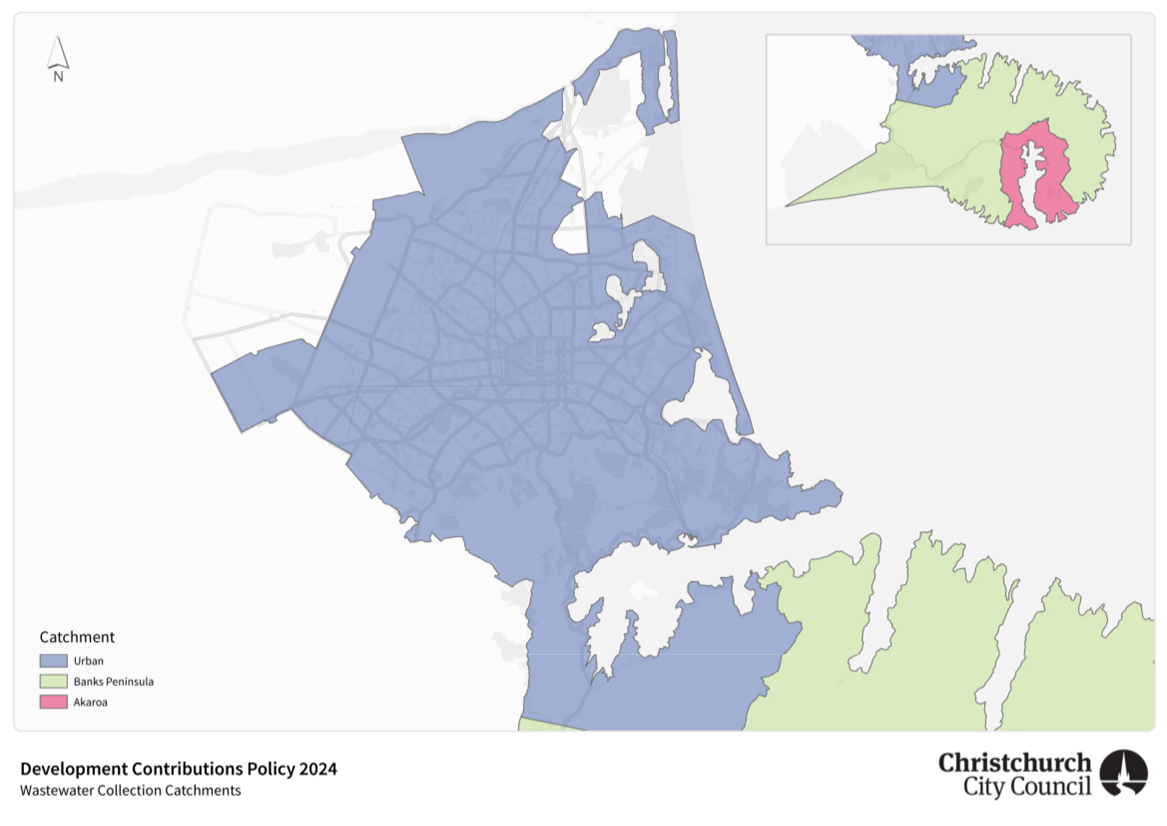
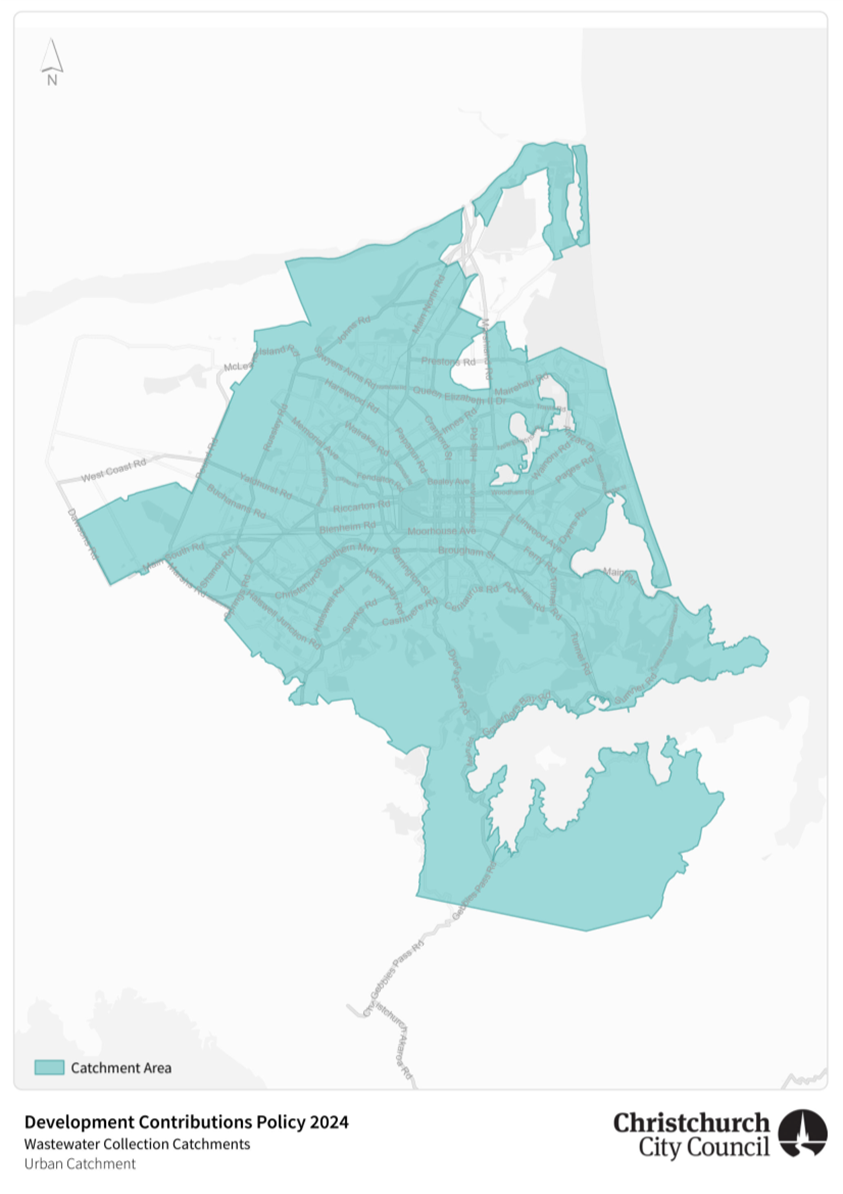
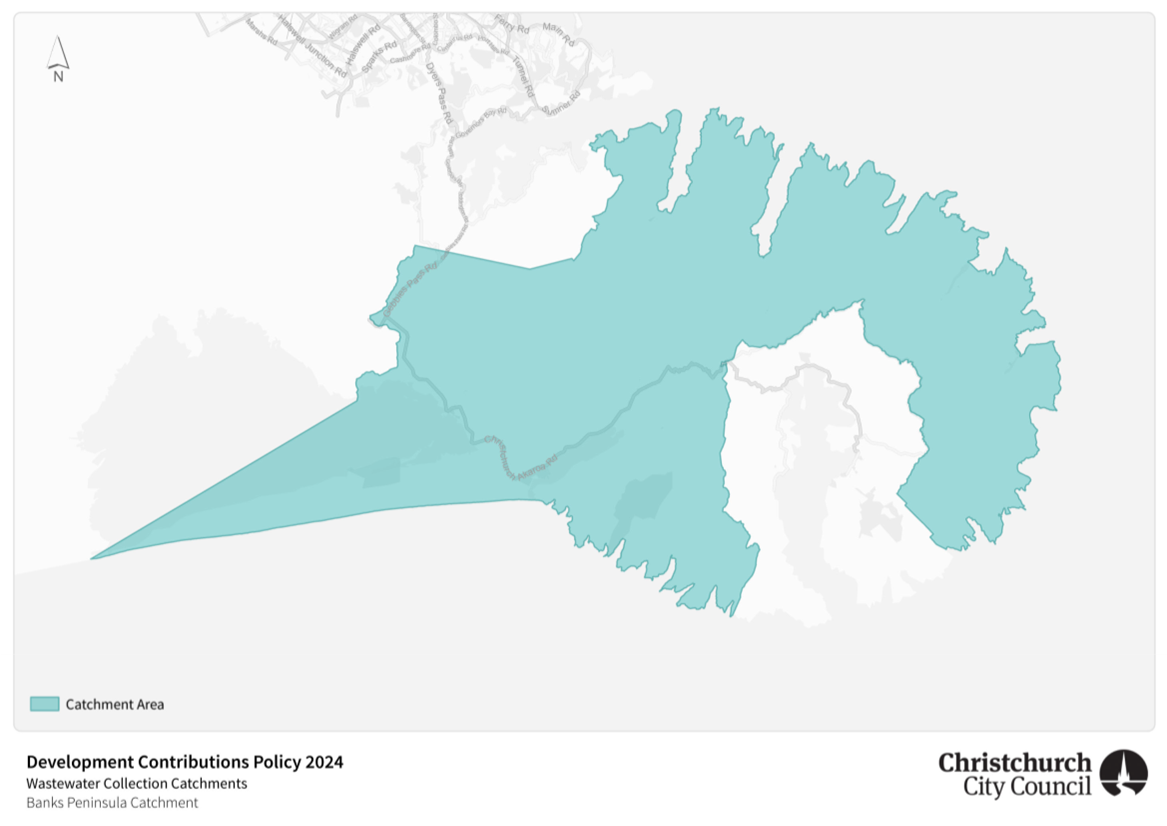
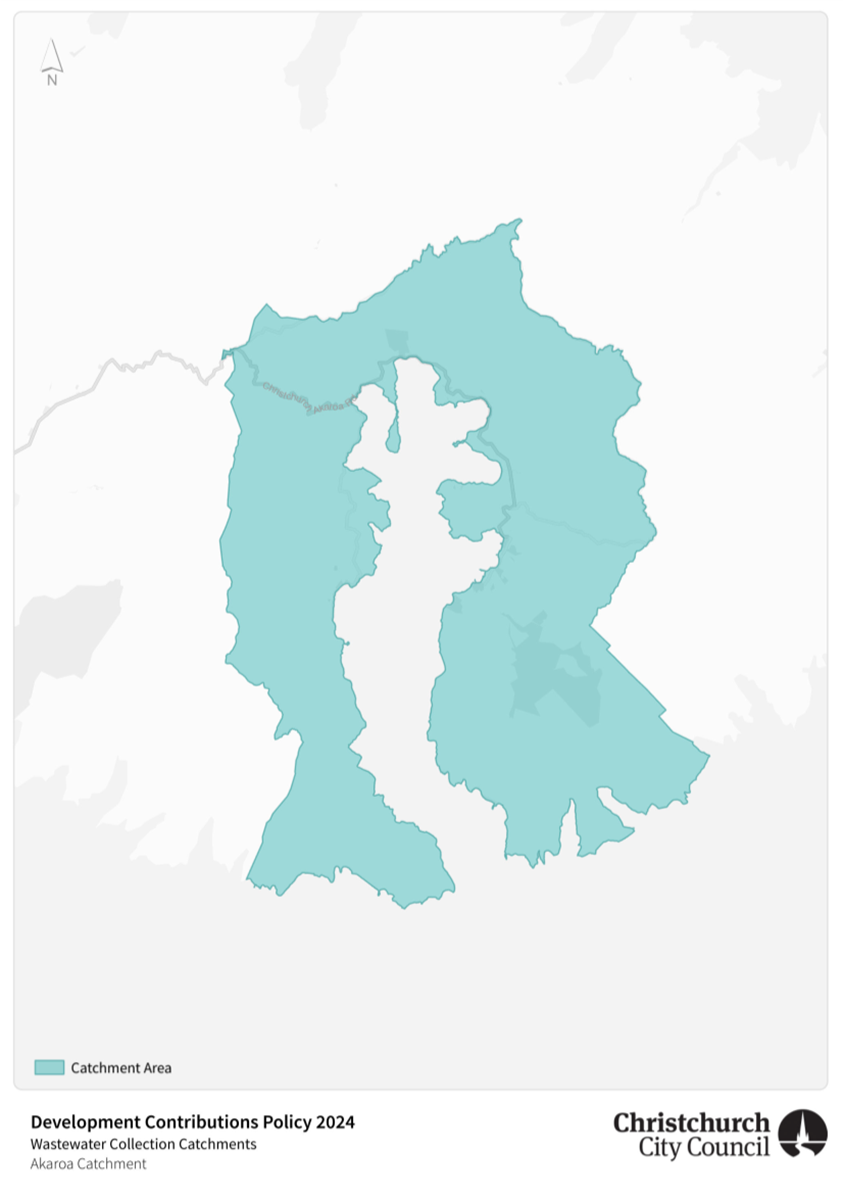
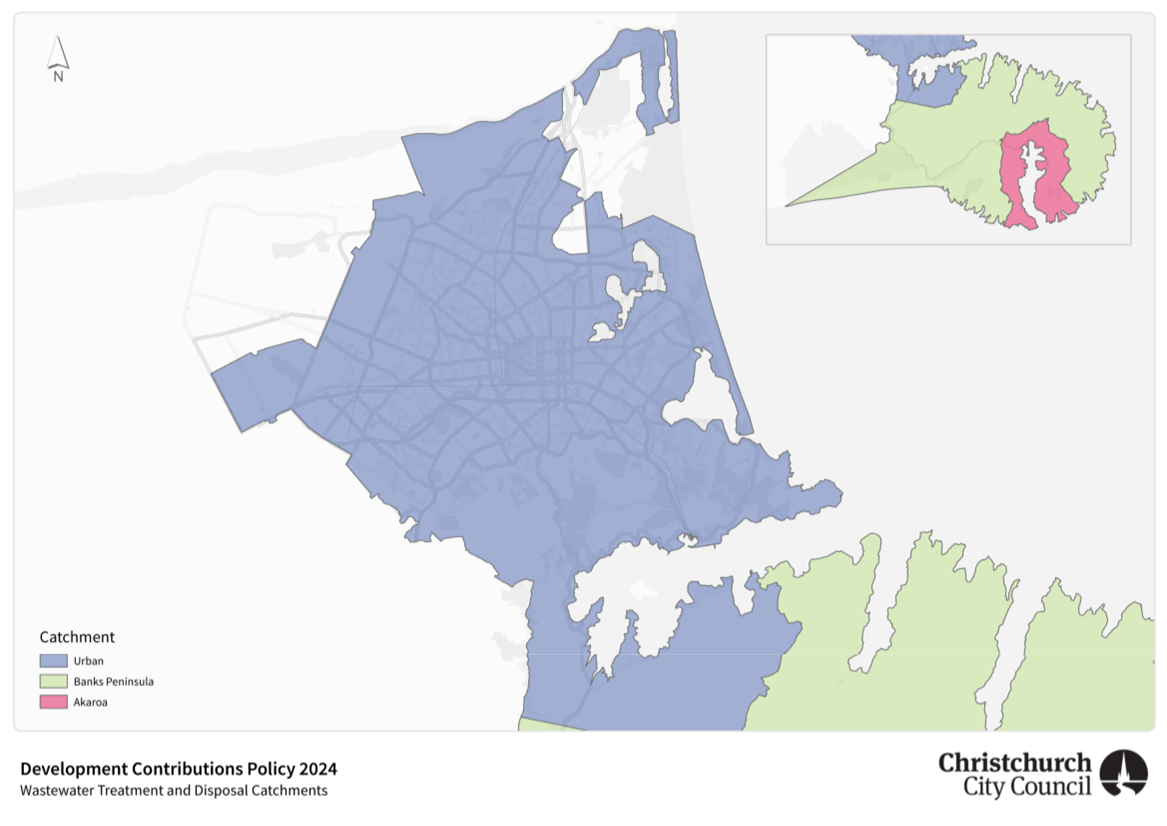
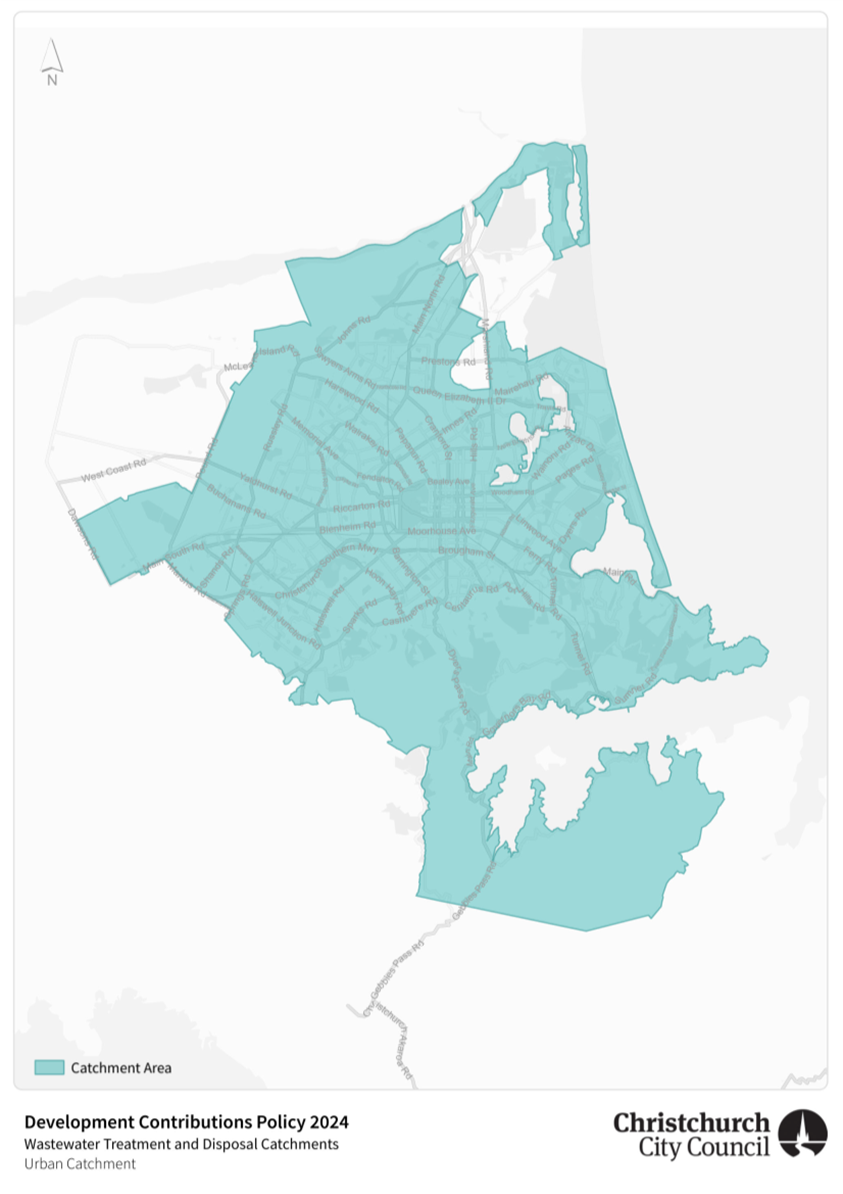
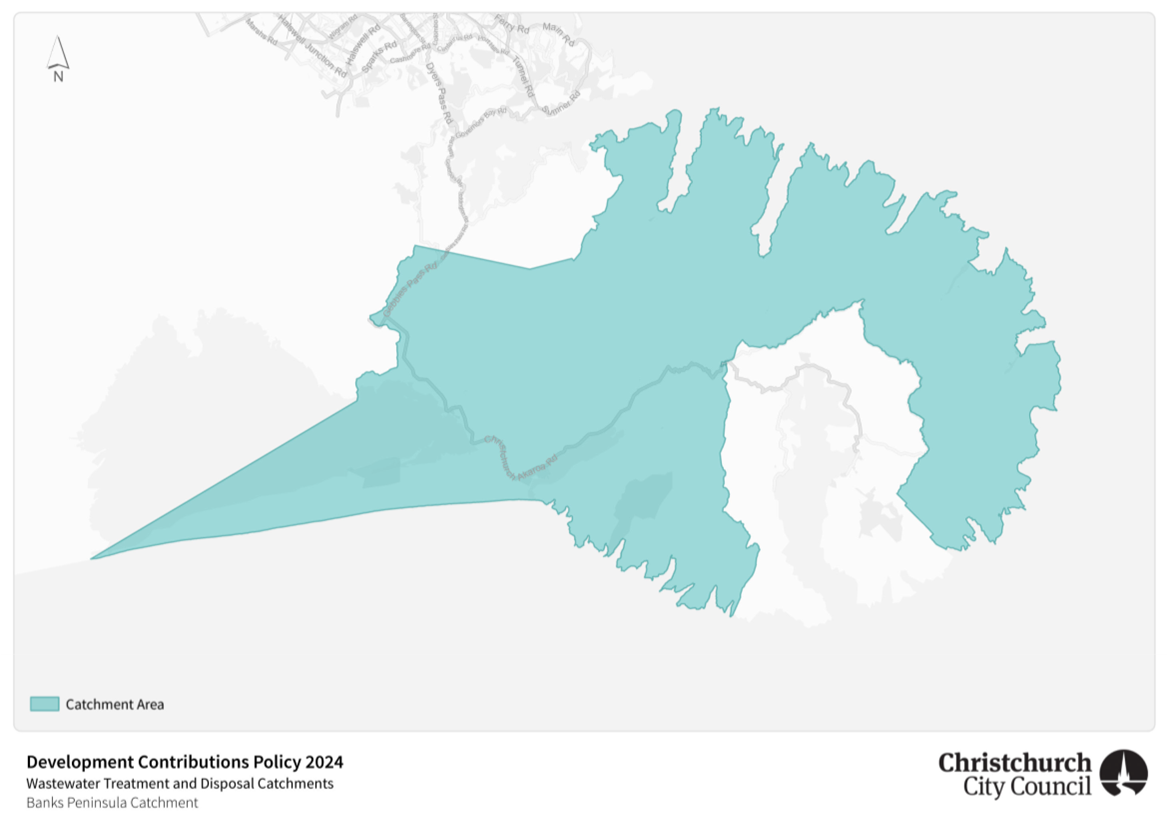
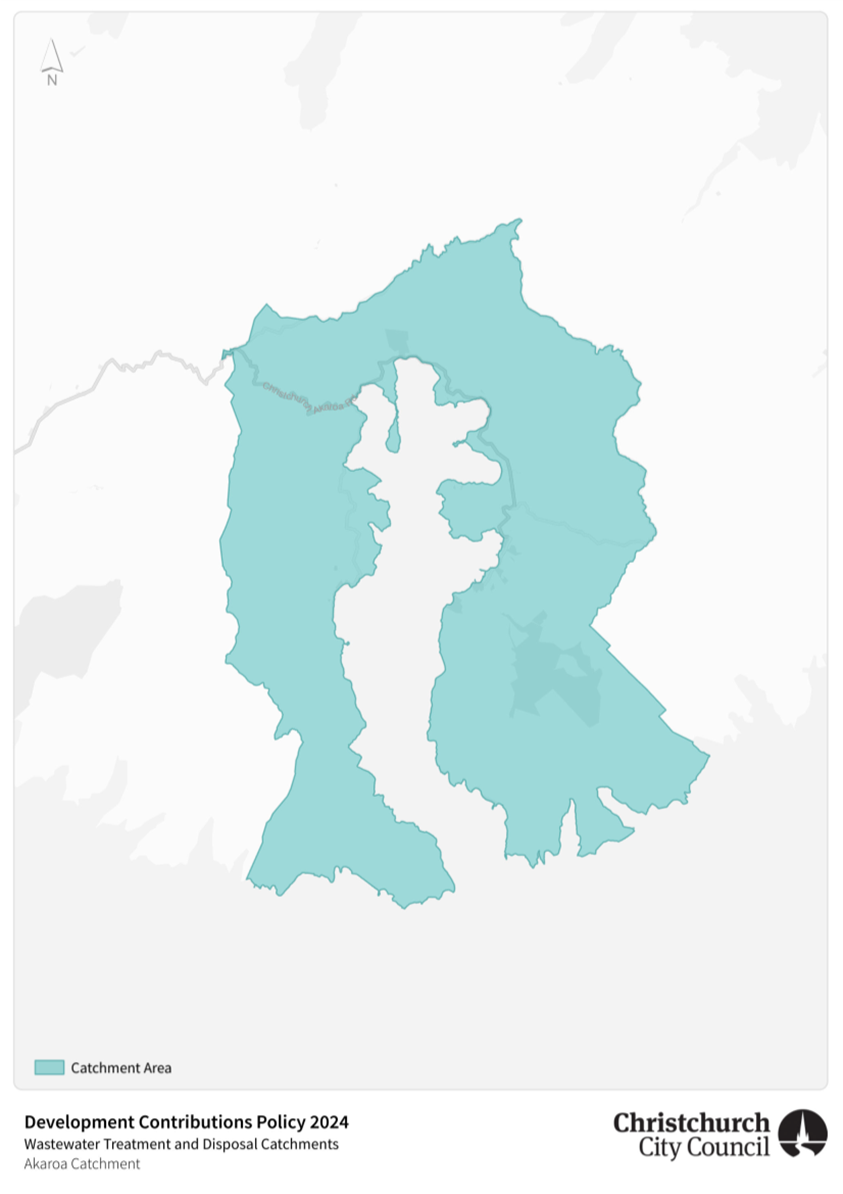
|
11. Climate
Resilience Fund: Policy
|
|
Reference Te Tohutoro:
|
24/2251308
|
|
Responsible Officer(s) Te Pou Matua:
|
Luke
Adams, Principal Advisor Strategic Policy; Jane Morgan, Team Leader Coastal
Hazards.
|
|
Accountable ELT Member Pouwhakarae:
|
John
Higgins, General Manager Strategy, Planning & Regulatory Services
|
Secretarial Note: Consistent
with Standing Order 6.8 this Item was withdrawn from the 11 December 2024
Council Agenda.
1. Purpose and Origin of the Report Te Pūtake Pūrongo
1.1 The
purpose of this paper is to recommend the Council approve proposed settings for
the Climate Resilience Fund and approve the recommendation to consult on the
proposed policy as part of the Annual Plan.
1.2 The
proposed settings incorporate feedback received from the Council briefing on 22
October 2024. This input has helped shape a more effective and responsive
policy framework, ready for the Council’s final review and decision.
2. Officer Recommendations Ngā
Tūtohu
That the Finance and
Performance Committee:
1. Receives the information in the Climate Resilience Fund: Policy
Report.
2. Notes that the decision in this report is
assessed as medium significance based on the Christchurch City Council’s
Significance and Engagement Policy.
3. Agree the proposed strategic policy settings to consult on as part of the Annual Plan:
a. Scope of the Fund: Confirm that the Fund will be allocated exclusively to
Council-approved Adaptation Plans, with an Exceptional Circumstances Provision
to allow for flexibility in addressing emerging risks as approved by Council.
b. Fund Reserve Period: Confirm a 30-year reserve period to hold the
fund for future climate adaptation projects, in line with intergenerational
equity principles.
4. Agree the proposed operational policy settings
to consult on as part of the Annual Plan, which include:
a. Governance Settings
b. Financial Management Settings
c. Evaluation, Monitoring and Reporting Settings
5. Note the dependence of the Fund’s
eventual allocation methodology on broader Council work programmes,
specifically the ongoing development of data, adaptation planning frameworks,
and asset management integration efforts.
6. Agree to consult on the proposed policy as
part of the Annual Plan.
3. Background/Context Te Horopaki
Intent of the Climate Resilience Fund
3.1 The
Climate Resilience Fund (the Fund) was established as a dedicated financial
reserve to help address the Council’s future climate adaptation needs and
offset a portion of the anticipated costs.
3.2 Grounded
in the principle of intergenerational equity, the Fund allows today’s
ratepayers to contribute towards the long-term costs of climate adaptation,
ensuring that future generations are not solely burdened with these expenses[1].
The Fund was agreed as part of the 2024-34 Long Term
Plan
3.3 Council
agreed as part of the 2024-34 Long Term Plan (LTP) to establish a Climate
Resilience Fund, dedicated to supporting actions identified in
Council-approved Adaptation Plans. The Fund is intended to start setting aside
funds now to manage necessary adaptation related changes to the capital
programme in the future.
3.4 The
fund will be financed through a 0.25% rate increase starting in year two of the
LTP (2025), with an additional 0.25% added each subsequent year, culminating in
a total increase of 2.25% by the end of the LTP period.
3.5 This
would allow the Fund to accumulate up to $127 million (excluding any interest
gained on this investment) by the end of the 10-year period.
3.6 Council
also directed staff to define how the Fund would be established, managed and
governed, and the criteria of how the fund would be used. This forms the basis
of the Fund policy outlined in this paper.
The Fund is part of a cross-Council response to
adaptation
Coastal Hazards Adaptation Planning Programme
3.7 The Coastal
Hazards Adaptation Planning Programme is a Council initiative to assess and
manage climate hazards within Christchurch’s coastal communities. Working
with communities and experts, the programme develops Adaptation Plans that
identify vulnerable areas, assess climate risks and hazards, and outline
actions to protect public assets and communities. This evidence-based approach
prioritises long-term resilience, ensuring Christchurch’s coastal areas
are prepared for future climate challenges.
3.8 As
part of the 2024-34 Long Term Plan (LTP), Council committed additional
operational funding to accelerate the adaptation planning programme, enabling
earlier community engagement and development of Adaptation Plans. This
acceleration also opens the possibility of expanding the programme to include
non-coastal areas in the future.
Resilience is a Key Component of the 2024-2054
Infrastructure Strategy
3.9 The 2024-2054
Infrastructure Strategy has also initiated several Council operational
workstreams to improve data collection, planning frameworks, and integration of
resilience considerations within asset management and investment decisions.
This aims to standardise climate risk assessments and embed adaptation planning
into the Council’s broader asset and investment strategies.
The Fund is Being Established Alongside Other Resilience
Focused Workstreams
3.10 While this work
is underway, the establishment, growth and reserving of the Fund is unaffected.
However, where these workstreams land will determine how the fund can be
integrated into Council’s investment and asset management processes.
3.11 While this
report, and the proposed fund policy, addresses the initial establishment
settings of the Fund, it is drafted with the assumption that these broader
Council workstreams will support its future allocation once advancements in
data and integrated asset management are complete.
4. Fund Policy Considerations Ngā Whai
Whakaaro
4.1 The
principle and rationale for the Fund have already been considered and approved
by Council as part of the 2024-2035 Long-Term Plan (LTP), and the remaining
decisions focus on the practical mechanisms necessary to operationalise it
effectively.
4.2 These
policy settings include both strategic and operational elements
to ensure the Fund functions as intended, supports Council’s broader
climate resilience goals and upholds intergenerational equity. Approval of
these policy settings does not restrict the Council’s ability to review
this policy in the future.
4.3 Please
refer to the attached supporting draft FAQs and full policy
draft document alongside the summarised outline set out below in this
report. These attachments provide the specific policy wording recommended for
the fund, as well as essential detail to address specific questions related to
fund management, governance, allocation methodology, and other essential
considerations influencing the Fund’s structure.
5. Strategic Policy Settings
Scope of the Fund
5.1 The
Fund’s scope defines whether its resources will be allocated strictly to
projects within Council-approved Adaptation Plans or extended to cover all
at-risk Council assets.
Recommended Approach: Adaptation Plans Only, with
Flexibility for Exceptional Circumstances
5.2 Limiting
the Fund to projects identified in Adaptation Plans ensures that resources are
directed towards well-defined priorities within an established framework. This
approach provides clarity and purpose, focusing funding on areas where Council
has conducted thorough planning through a co-creation approach with
communities. Adaptation Plans are rigorously reviewed and approved by Council,
ensuring that projects align with both strategic goals and community needs.
5.3 While
a fully integrated allocation methodology will be refined as Council’s
data systems evolve, Adaptation Plans provide a clear starting point. These
plans include established triggers and prioritisation frameworks that can guide
the initial structure for fund allocation. And, as further data and asset
management improvements are realised, we will be able to further define how the
fund will be integrated with wider funding processes.
5.4 To
maintain flexibility, it’s recommended that, in exceptional cases,
Council has the option to approve the allocation of funding to assets that are
not contained in Adaptation Plans to address emerging or unforeseen climate
risks.
Alternative Option: All At-Risk Council Assets
5.5 Expanding
the Fund’s scope to cover all vulnerable Council assets would allow the
Fund to support adaptation across a wider array of assets, potentially
enhancing overall resilience.
5.6 However,
implementing this option before Council’s adaptation planning and data
frameworks are fully developed could lead to fragmented and less effective fund
allocation, as there is currently limited data and structure for prioritising
needs across assets beyond those identified in Adaptation Plans.
5.7 Once
these foundational frameworks are in place, Council will have the necessary
insights and tools to consider expanding the Fund’s scope with more
confidence. Reassessing this option at a future date will allow for a more
informed decision on whether a broader scope aligns with Council’s
climate adaptation goals and should be built into regular Fund policy reviews.
Fund Reserve Period
5.8 Setting
a reserve period determines when the Fund will be accessible, ensuring that
resources are reserved and grown for future adaptation needs. In practice, it
holds the fund for a set period, and only allows the funds to be used after a
specific date is met.
Recommended Approach: 30-Year Reserve Period
5.9 A
30-year reserve period on the Fund provides the stability needed to build a
meaningful financial reserve, enabling it to address significant future climate
adaptation needs. This extended period allows contributions to grow steadily
over time, building interest and ensuring funds are available when many
adaptation projects are anticipated to emerge.
5.10 Importantly, the
30-year reserve period best meets the driver of intergenerational equity,
enabling today’s ratepayers to contribute responsibly towards resources
that future generations will rely on. It also aligns with the time-horizon of
the Infrastructure Strategy.
Alternative Options
5.11 20-Year Reserve
Period: A 20-year reserve period allows earlier fund access but provides
less reserve growth. This option could support nearer-term adaptation projects
but may limit the fund’s impact on significant future needs reducing its
effectiveness in providing for inter-generational equity.
5.12 10-Year Reserve
Period: The shortest option offers the earliest access but
restricts the fund’s ability to grow. It may benefit more immediate
projects but would compromise the Fund’s intended long-term impact and
alignment with intergenerational equity principles. Another risk is that
we may not complete district-wide adaptation planning within the next 10 years,
leading to the fund being used in a less structured, ad hoc manner.
6. Operational Policy Settings
6.1 The
following are the recommended Operational Policy settings, presented not as
distinct options but as technical considerations. These settings can be
reviewed as needed to enhance alignment with evolving Council priorities and
frameworks.
Governance Considerations
Council Holds Governance Responsibility for the Fund
6.2 Council
would oversee compliance with the Fund’s core requirements, including its
intent, reserve period, and scope limitations, ensuring alignment with
strategic climate adaptation goals.
6.3 Council
will also approve the final allocation methodology and manage investment
decisions, ensuring they consistently align with the Fund’s intent and
Council’s broader Long Term Plan investment processes.
6.4 Council
can also review the Fund’s policy settings at any time.
Alternative
Options Considered
6.5 Super
Majority Requirement: A “super majority” (e.g., a 75% majority
vote) was considered as an alternative decision-making mechanism for
significant decisions related to the Fund. However, this option cannot be
recommended.
6.6 Legal
commentary suggests it would not be constitutionally valid for a Council to
attempt to bind a future Council as to the form or voting or majorities
required.
6.7 External
Oversight Body: Establishing an independent committee would add
complexity and require additional resources. Council is already well-placed to
provide oversight, and involving an external body could dilute Council’s
control and accountability.
6.8 Delegated
Authority: Delegating decisions to an operational unit could streamline the
process, but it might reduce transparency and oversight. Keeping these
decisions at Council ensures that fund allocations remain fully accountable to
the public.
Financial Settings
6.9 The
Fund will be managed in line with the Council’s financial policies to
ensure stability, transparency, and adherence to its designated purpose. The
finance team has provided input and guidance into these settings.
Investment Strategy
6.10 The Fund will be
invested in line with the Council’s Investment Policy. The policy will be
reviewed and modified if necessary to ensure it specifically caters for the
long-term investment nature and objectives of the Fund.
Fund Separation
6.11 The Fund will be
separated from other Council finances, ensuring its resources remain limited to
the intent of the Fund.
Contribution Sources
6.12 Contributions to
the Fund will be sourced from Council revenue as outlined in the LTP 2024-2034.
Council may decide to include additional revenue sources at any time.
Allocation Methodology
6.13 The allocation
methodology will be developed prior to any fund disbursement. It is recommended
that this methodology be created once Council’s adaptation planning
frameworks and asset management systems reach a level of maturity that allows
for comprehensive, data-driven prioritisation.
6.14 It could guide
decisions on aspects like the timing of fund disbursements (based on the
signals, triggers and thresholds outlined in Adaptation Plans), contribution
ratios (i.e., the Fund’s portion versus standard rates or borrowing),
identification of priority projects, and alignment with Council’s broader
objectives.
Evaluation, Reporting and Accountability Settings
Audit and Compliance
6.15 The fund will
undergo regular audits to ensure compliance with financial standards, maintain
transparency, and reinforce public confidence in the Fund’s
administration.
Evaluation and Monitoring
6.16 To ensure
transparency and accountability, the Council will establish a structured
approach for ongoing monitoring and regular reporting on the fund’s
status.
Annual Reporting
6.17 Council will
report annually detailing fund performance, compliance with the Fund policy,
and any adjustments made. This will keep the community informed of fund growth,
current balance, and projections for future use.
Policy Review
6.18 The policy will
undergo regular reviews to align with each Long-Term Plan to ensure it remains
aligned with updated climate data, our maturing understanding of adaptation
needs across the distract as more plans are developed and agreed, and Council’s
strategic objectives. This will ensure that the fund remains fit for purpose
over time and could include any of the policy settings above.
7. Financial Implications Ngā Hīraunga Rauemi
7.1 The
establishment of the Climate Resilience Fund has already been agreed as part of
the 2024–34 Long-Term Plan, so there are no new financial impacts.
7.2 Management,
reporting, and auditing will be incorporated into Council’s existing
annual audit processes, requiring no additional costs.
7.3 Public
consultation on the Fund will occur as part of the Annual Plan process, with no
separate costs incurred.
8. Considerations Ngā Whai Whakaaro
Risks and Mitigations Ngā Mōrearea me
ngā Whakamātautau
|
Risk
|
Description
|
Mitigation
|
|
Dependency on
Supporting Workstreams
|
Successful
allocation of the CRF relies on completion of Council’s adaptation
planning, data integration, and asset management improvements.
|
Establish
clear milestones for supporting workstreams and ensure regular progress
reporting. Leverage the existing Adaptation Plans framework as an interim
guide.
|
|
Integration Challenges
|
The
CRF must align with broader Council strategies, including asset management,
investment planning, and the Long-Term Plan. Misalignment could result in inefficiencies.
|
Incorporate
the CRF into Council’s overarching investment and resilience strategies
to ensure alignment and consistency across all planning frameworks.
|
|
Perceived Lack of
Immediate Benefits
|
Ratepayers
may see the CRF’s long-term focus as offering little immediate value,
potentially affecting public support.
|
Communicate
the Fund’s purpose and long-term benefits clearly through the Annual
Plan consultation process, highlighting its proactive role in building
climate resilience for future generations.
|
|
Pressure for Early
Fund Access
|
Stakeholders
may pressure Council to use the Fund prematurely to address urgent needs.
|
Maintain
the 30-year reserve period to preserve the Fund’s purpose, which can
only be amended through a Council decision.
|
|
Cost of Fund
Administration
|
Managing,
reporting, and auditing the Fund could impose additional costs on Council.
|
Embed
the Fund’s administration, reporting, and auditing requirements into
existing Council processes to minimise incremental costs.
|
|
Insufficient Growth
During the Reserve Period
|
Market
fluctuations or low investment returns could hinder the Fund’s ability
to grow.
|
Align
the Fund’s investment strategy with Council’s Investment Policy
and regularly review performance to ensure it aligns with inflation and
adaptation cost projections.
|
|
Fragmentation Across
Asset Classes
|
Without
clear criteria, allocations could become inconsistent, leading to uneven
investment in critical versus less critical assets.
|
Develop
a robust prioritisation framework within the allocation methodology to ensure
equitable and strategic distribution across asset classes.
|
|
Lack of Public
Understanding
|
Ratepayers
may not fully understand the Fund’s purpose or its role within
Council’s broader climate resilience efforts.
|
Enhance
public communication through FAQs, public engagement sessions, and clear
messaging during Annual Plan consultations to build awareness and support.
|
|
Challenges with
Intergenerational Equity
|
Perceptions
of unfairness may arise if today’s ratepayers feel overburdened with
funding future adaptation costs that they may not directly benefit from.
|
Reinforce
messaging around intergenerational equity and Council’s commitment to
balancing current contributions with future needs, emphasising shared
responsibility and proactive planning.
|
|
Changing Legislative
Landscape
|
Future
local government reforms could alter Council’s responsibilities,
impacting the relevance or structure of the Fund.
|
Regularly
review the Fund’s policy settings to ensure alignment with evolving
legislative and regulatory requirements, maintaining its relevance in a
changing governance landscape.
|
|
Inequity Across
Geographic Areas
|
Areas
with no Adaptation Plans might perceive a lack of benefit from the Fund,
leading to regional inequities.
|
Accelerate
the development of additional Adaptation Plans, including non-coastal areas,
to ensure a wider distribution of future benefits.
|
|
Misalignment with
Regional/National Goals
|
The
Fund’s objectives could diverge from evolving regional or national
climate adaptation strategies.
|
Establish
mechanisms for regular alignment reviews with regional and national
adaptation goals to ensure synergy and maximise collective resilience
outcomes.
|
Legal Considerations Ngā Hīraunga
ā-Ture
Legal
and Procedural Requirements for a Super Majority
8.1 A
“super majority” (e.g., a requirement for a 75% majority vote) was
considered as an alternative governance mechanism for significant decisions related
to the Fund. However, this option cannot be recommended.
8.2 While
it is arguable that standing orders could provide for a different majority than
a bare majority in respect of certain issues or types of vote. Legal
commentary suggests it would not be constitutionally valid for a Council to
attempt to bind a future Council as to the form or voting or majorities
required.
Strategy
and Policy Considerations Te
Whai Kaupapa here
Alignment with the Strategic Framework
8.3 The
required decisions align with the Christchurch City Council’s Strategic Framework.
particularly the community outcome for a green, liveable city, and the
following strategic priorities:
· Balance
the needs of today and the future: The Fund actively plans for future climate
adaptation while ensuring current ratepayer contributions build a reserve to
address tomorrow’s challenges. This approach reflects the need for
intergenerational equity, leaving no one behind.
· Reduce
emissions and invest in resilience: The Fund is designed to support climate
adaptation and resilience efforts, aligning with the Council’s city-wide
climate change response and protection of biodiversity, waterbodies, and tree
canopy.
· Manage
ratepayers’ money wisely: Establishing the Fund ensures a proactive,
fiscally responsible approach to anticipated climate costs, reducing the need
for ad hoc funding solutions in the future.
· Build
trust and confidence: The Fund is backed by transparent reporting and clear
governance settings, demonstrating Council’s commitment to meaningful
action on climate change and engagement with the community.
Assessment of the Significance and Engagement Policy
8.4 The
decisions outlined in this report hold medium significance under Christchurch
City Council’s Significance and Engagement Policy. While the policy
settings for the Climate Resilience Fund are of particular interest to
organisations and groups within communities with current or planned Adaptation
Plans, the decision does not necessitate a Special Consultative Procedure
(SCP). Engagement requirements have been met through the Long-LTP process, with
additional feedback to be sought during the Annual Plan consultation.
Alignment with Council’s Plans
and Policies
8.5 The
decisions in the report are consistent with Council’s Plans and Policies,
in particularly the Infrastructure Strategy and Adaption Planning Programme.
8.6 This
report supports the Council's Long Term Plan (2024 - 2034).
Community
Impacts and Views Ngā Mariu ā-Hāpori
8.7 Most
of the feedback received during the LTP consultation supported the
establishment of the Fund. While the fund itself has already been agreed upon,
there is likely to be general interest in its scope, timing, and governance.
These policy settings will be the focus of consultation during the Annual Plan
process, providing the community an opportunity to offer feedback on how the
fund will operate.
Impact
on Mana Whenua Ngā
Whai Take Mana Whenua
8.8 The
does not involve a significant decision in relation to ancestral land, a body
of water or other elements of intrinsic value, therefore this decision does not
specifically impact Mana Whenua, their culture, and traditions.
8.9 The
decision involves a matter of interest to Mana Whenua and will not impact on
our agreed partnership priorities with Ngā Papatipu Rūnanga.
8.10 While the Fund
does not directly impact specific Mana Whenua, it indirectly supports shared
goals of environmental stewardship and sustainable planning. The existing
Adaptation Plan, and those planned for the future, have been developed in
collaboration with Mana Whenua, ensuring their perspectives and priorities are
embedded in the identification of climate risks and adaptation actions. Ongoing
engagement with Mana Whenua will ensure their interests continue to be
considered as the Fund’s policy and implementation evolve.
Climate
Change Impact Considerations Ngā Whai Whakaaro mā te Āhuarangi
8.11 The decisions in
this report are likely to contribute positively to adaptation to the impacts of
climate change.
8.12 Have no direct
impact on emissions reductions.
8.13 The Fund is being
established as a dedicated financial reserve to help address Council’s
future climate adaptation needs and offset a portion of the anticipated costs.
9. Next Steps Ngā Mahinga ā-muri
9.1 Include
the Fund policy in the Annual Plan consultation process.
9.2 While
the establishment of the fund itself has already been agreed upon in LTP
2024-2034, the consultation will focus on the proposed policy settings,
including the scope, timing, and governance arrangements.
Attachments Ngā Tāpirihanga
|
No.
|
Title
|
Reference
|
Page
|
|
a ⇩
|
Proposed
Climate Resilience Fund Policy
|
24/1995881
|
320
|
|
b ⇩
|
Climate
Resilience Fund Detailed Policy FAQ
|
24/1995809
|
324
|
In addition to the attached documents, the following background
information is available:
|
Document
Name – Location / File Link
|
|
Not
applicable
|
Signatories Ngā Kaiwaitohu
|
Authors
|
Luke Adams -
Principal Advisor Policy
Jane Morgan -
Team Leader Coastal Hazards Adaptation Planning
Bruce Moher -
Manager Corporate Reporting
Naomi Soper -
Senior Legal Counsel
|
|
Approved By
|
David
Griffiths - Head of Strategic Policy & Resilience
John Higgins -
General Manager Strategy, Planning & Regulatory Services
|
|
12. ChristchurchNZ
Holdings Ltd - Draft Letter of Expectations 2025/26
|
|
Reference Te Tohutoro:
|
24/2229504
|
|
Responsible Officer(s) Te Pou Matua:
|
Linda
Gibb, Performance Advisor, Finance
|
|
Accountable ELT Member Pouwhakarae:
|
Bede
Carran, General Manager Finance, Risk & Performance / Chief Financial
Officer
|
1. Purpose and Origin of the Report Te Pūtake Pūrongo
1.1 The
purpose of this report is to seek the Finance and Performance Committee’s
approval of the draft Letter of Expectations (LOE) for 2025/26 for
ChristchurchNZ Holdings Ltd (CNZHL).
1.2 This
report is written to meet the annual governance timeline for the
Council-controlled organisations (CCOs), which includes that the Council
communicates its expectations to the CCOs for incorporation into their annual
business planning process. The outcomes from business planning are
reflected in the CCOs’ draft Statements of Intent (SOI) which are due to
the Council by 1 March 2025.
1.3 The
CNZHL draft LOE was reviewed by the Council at a workshop on 26 November 2024,
following which it was shared with CNZHL in the spirit of no surprises.
1.4 The
draft LOE for CNZHL for 2025/26 is at Attachment A.
2. Officer Recommendations Ngā
Tūtohu
That the Finance and
Performance Committee:
1. Approves the draft Letter of Expectations for
ChristchurchNZ Holdings Ltd for 2025/26;
2. Delegates authority to the Mayor, Deputy Mayor
and Chair of the Finance and Performance Committee to finalise and issue the
Letter of Expectations in line with resolutions passed by the Finance and
Performance Committee and any minor editing required; and
3. Notes that the decision in this report is
assessed as low significance based on the Christchurch City Council’s
Significance and Engagement Policy.
3. Executive Summary Te Whakarāpopoto Matua
3.1 The
LOE is a mechanism that the Council, as shareholder of CCOs, uses to influence
their strategic directions. The expectations are focussed on strategic
and governance issues. The CNZHL board must determine whether the
expectations are in the best interests of the Company. It is incumbent
upon CNZHL to advise the Council of any of the expectations it does not intend
to act on, and the reasons for that.
3.2 It
is proposed that the Council no longer requires formal Quarter 1 performance
reports from CNZHL. Instead, CNZHL will brief the Council on Quarter 1
performance as part of its Annual Report presentations in late October (note
that Quarter 1 ends on 30 September).
3.3 An additional component of the
CNZHL draft LOE is the Council’s advice of its intention to do a section
17A (of the local Government Act 2002) review of the delivery of
Council’s economic development activities and services to the community.
3.4 It
is proposed that authority is delegated for the finalisation and issuing of the
draft LOE to the Mayor, Deputy Mayor and Chair of the Finance and Performance
Committee. Changes are limited to any that the Committee resolves to make
and minor editing.
4. Background/Context Te Horopaki
4.1 The LOE is a mechanism that the Council, as shareholder of CCOs,
uses to influence their strategic directions, pursuant to section 64(2)(b) of
the Local Government Act 2002 (LGA). The LOE is issued in time to allow
the CCOs to work through the impacts of operationalising the expectations in
their business planning ahead of submission of their draft SOIs to the Council
by 1 March.
4.2 How
shareholders’ expectations are operationalised are for a CCO board to
consider, as the directors need to consider their obligations to act in the
best interests of the company as required by section 131(1) of the Companies
Act 1993. For example, a board needs to consider the costs, benefits and
risks of delivery, sources of funding and impacts on the other programmed
activities and services and on the governance of the organisation.
4.3 LOEs sit alongside the
Enduring Statement of Expectations (SOE) that was issued to all Council CCOs on
18 December 2023 (refer Attachment B). The
key difference is that the SOE is a stocktake of the Council’s general
governance expectations which change little from year to year and are generally
applicable to all CCOs. The LOE is tailored to a specific CCO and the
specific issues relevant to it.
4.4 The
following related information session/workshops have taken place for the
members of the meeting:
|
Date
|
Subject
|
|
26
Nov 2024
|
Draft LOEs for 2025/26
|
Options Considered Ngā Kōwhiringa Whaiwhakaaro
4.5 The
only reasonably practicable other option is not issuing a LOE to CNZHL for
2025/26. Any shareholder expectations could be provided as comments on
the draft SOI pursuant to clause 2, Part 1 of Schedule 8 of the LGA
(shareholder comments are required to be made to the CCO by 1 May). The
risk with this approach is as CNZHL’s business planning will be well
progressed by the time it receives the comments, it may be unable to address
them in the SOI.
Analysis Criteria Ngā Paearu Wetekina
4.6 The
key content in the draft LOE is as follows:
· CNZHL to develop an
implementation plan to underpin the Economic Ambition, and to provide a
briefing to the Council about progress and the future direction of the
Ambition, Destination Management Plans and the Christchurch Brand;
· reporting returns on
Council investment in CNZHL;
· providing clarity of
CNZHL’s commitment to the Council’s strategic policies to reduce
carbon emissions in Christchurch and its own emission targets and pathways to
meeting them and support other organisations it works with to develop emissions
reduction targets;
· events’
planning and funding via the City Partners’ Group to achieve best for
city;
· work with the
Council to identify and allocate a pipeline of urban development work; and
· fostering working
and strategic relationships with the six Papatipu Rūnanga;
· seeking
accreditation with Living Wage Movement Aotearoa New Zealand; and
· a no surprises
approach to communication and engagement.
4.7 Topics
for briefings during the year are requested, including on achievements one year
on from finalising the Economic Ambition, Destination Management Plans and
Christchurch Brand and the urban development pipeline.
Quarter 1 Reporting
4.8 Under
the SOI CNZHL currently reports quarterly. Section 66(3) of the LGA
provides that if shareholders notify a CCO that they require quarterly
reporting, reports must be delivered within two months of the end of the
quarter of each financial year, which for Quarter 1 is by the end of
November. Reporting by the end of November compresses significantly the
time available, before the Christmas break, for the Quarter 1 report to be
presented to Council.
4.9 Staff are putting forward an
option for amended reporting for Quarter 1 which is connected to the timing of
the Annual Report being presented to Council.
CNZHL’s Annual Report is due to be adopted by 30
September and is provided to the Finance and Performance Committee in late
October. Quarter 1 finishes on 30 September, and the performance report
is due to the Council by 30 November, it is then provided to the Finance and
Performance Committee in mid-December.
4.10 Staff
propose that through the draft LOE Council advises CNZHL that it no longer
requires Quarter 1 performance reports, and that in its place it presents an
update on the year ahead at the same time as it presents on its Annual
Report. This is intended to reduce transaction costs of reporting on two
separate occasions on matters which are closely related while still balancing
the need to keep Council informed on the progress and performance of CNZHL.
4.11 While Quarter 1
results may not have been finalised by CNZHL at the time the Annual Report is
presented, there will be
sufficient information available to provide the Council with a good line of
sight to achievements and issues if any in respect of Quarter 1. A clear
distinction can be drawn between presenting on the Annual Report and the
Quarter 1 update. The LOE requests that CNZHL advises what information it
will present when giving its ‘line sight’ update.
Section 17A review of economic
development
4.12 Councils are required to undertake section
17A reviews, on the delivery of their services, on a regular basis and
generally not later than 6 years since the commencement of the activity or its
last review. The purpose of a section 17A
(LGA) review is to assess the cost effectiveness of current arrangements for
meeting the needs of communities within the local authority’s district or
region. A review is to consider options for the governance, funding and
delivery of the public services.
4.13 The
draft LOE advises the Council’s intention to do a review of the economic
development services and activities of Council as a whole and the LOE notes
that Council would welcome CNZHL’s participation in the review.
Request for reporting on destination
and attraction initiatives for Banks Peninsula
4.14 Staff
have received a request from a Councillor that CNZHL reports separately on
destination and attraction initiatives for Banks Peninsula. This request has
been included in the LOE.
5. Financial Implications Ngā Hīraunga Rauemi
Capex/Opex Ngā Utu Whakahaere
5.1 The expectations in this draft LOE are unlikely to create additional
costs for CNZHL. However, should any arise, CNZHL would be expected to
advise the Council and provide options for meeting them.
6. Considerations Ngā Whai Whakaaro
Risks and Mitigations Ngā Mōrearea me
ngā Whakamātautau
6.1 The
LOE manages the risk that the Council’s organisations are not aligned
with the Council’s strategic directions and priorities.
Legal Considerations Ngā Hīraunga
ā-Ture
6.2 Statutory authority to undertake proposals in this report is
conferred by the Local Government Act 2002 (section 64B).
6.3 Section
131 of the Companies Act 1993 provides duties of directors to act in good faith
and in the best interests of the company.
Strategy
and Policy Considerations Te
Whai Kaupapa here
6.4 The
required decisions:
6.4.1 Align
with the Christchurch
City Council’s Strategic Framework.
6.4.2 Are
assessed as of low significance based on the Council’s Significance and
Engagement Policy. The level of significance was determined by
considering the extent to which the decisions to be made in this report could
impact the community.
Community
Impacts and Views Ngā Mariu ā-Hāpori
6.5 Not
applicable.
Impact
on Mana Whenua Ngā
Whai Take Mana Whenua
6.6 The
decision does not involve a significant decision in
relation to ancestral land, a body of water or other elements of intrinsic
value, therefore the decisions in the report do not specifically impact Mana
Whenua, their culture, and traditions.
6.7 The
decision will not impact on our agreed partnership priorities
with Ngā Papatipu Rūnanga. The draft LOE and SOE (issued in
December 2023) provide for the Council’s mana whenua expectations.
Climate
Change Impact Considerations Ngā Whai Whakaaro mā te Āhuarangi
6.8 The
proposals in this report will not contribute to adaptation to the impacts of
climate change or create or reduce emissions. There is climate change
content in the draft LOE that reflect the Council’s climate change
policies.
7. Next Steps Ngā Mahinga ā-muri
7.1 The
next step is the submission of CNZHL’s draft SOI by 1 March 2025, in
accordance with clause 1(2) of schedule 8, part 1 of the LGA.
Attachments Ngā Tāpirihanga
|
No.
|
Title
|
Reference
|
Page
|
|
a ⇩
|
Draft LOE for
ChristchurchNZ Holdings Ltd for 2025/26
|
24/2254630
|
338
|
|
b ⇩
|
Statement of
Expectations (SOE)
|
24/2267444
|
342
|
In addition to the attached documents, the following background
information is available:
|
Document
Name – Location / File Link
|
|
Not
applicable
|
Signatories Ngā Kaiwaitohu
|
Author
|
Linda Gibb -
Performance Monitoring Advisor CCO
|
|
Approved By
|
Russell Holden
- Head of Finance
Bede Carran -
General Manager Finance, Risk & Performance / Chief Financial Officer
|
|
13. Venues Otautahi -
Quarter 1 2024/25 Performance Report
|
|
Reference Te Tohutoro:
|
24/2246833
|
|
Responsible Officer(s) Te Pou Matua:
|
Linda
Gibb, Performance Advisor, Finance
|
|
Accountable ELT Member Pouwhakarae:
|
Bede
Carran, General Manager Finance, Risk & Performance / Chief Financial
Officer
|
1. Purpose and Origin of the Report Te Pūtake Pūrongo
1.1 The purpose of this report is to present Venues
Ōtautahi’s (VŌ’s) Quarter 1 2024/25 Performance
Report. VŌ’s report is at Attachment A.
1.2 This report has been written following receipt of VŌ’s
Quarter 1 Performance Report on 27 November 2024.
2. Officer Recommendations Ngā Tūtohu
That the Finance and
Performance Committee:
1. Receives Venues Otautahi - Quarter 1 2024/25 Performance Report Report.
3. Background/Context Te Horopaki
3.1 At
the Finance and Performance Committee’s meeting on 23 October 2024
VŌ presented its Annual Report for the year ending 30 June 2024. As
part of that presentation, it provided a line of sight to its performance in
Quarter 1 of the new financial year 2024/25. At that time VŌ had not
finalised Quarter 1 financial performance but had sufficient information to
give a good indication of performance. This line of sight has proved to
be accurate and confirms what was presented.
3.2 VŌ’s
Quarter 1 report provides information on its performance for the quarter, which
includes key impacts on financial performance that includes an easing of
volatility of inflation impacts on costs, lower repairs and maintenance costs
due to completion of a significant programme of works in 2023/24. VŌ
has advised that it has exercised strong cost control which has created
operating cost savings including from an internal workforce efficiency project.
3.3 Quarter
2 reporting, including half year financial statements will include a more
in-depth analysis of performance and importantly a line of sight to year end 30
June 2025.
3.4 The
report notes that VŌ has had a good start to the year, with 115 events and
over 149,000 guests welcomed to the venues. Overall, while revenue is
lower than forecast (due to fewer ticketed events being delivered), this has
been more than offset by lower than forecast expenditure. VŌ’s
performance at the end of Quarter 1 is better than forecast by $253,000, ie
forecast Earnings before Interest, Depreciation and Amortisation (EBITDA) is a
deficit of $497,000 against a budgeted deficit of $750,000. The One New
Zealand at Te Kaha Stadium pre-opening costs are now reported separately.
3.5 VŌ
also notes that there is a positive outlook over the coming year for events
which is expected to support strong performance. The Q1 report also notes
that good progress is being made on the sustainability strategy and the roadmap
to 2030 in terms of net carbon neutrality.
3.6 VŌ
notes that good progress is being made in executing the commercial strategy for
One New Zealand Stadium at Te Kaha. During the quarter VŌ entered
into 5-year partnerships with Ticketmaster and Live Nation, which are
beneficial for both the current venues and the One New Zealand Stadium at Te
Kaha when it opens in 18 months’ time.
Attachments Ngā Tāpirihanga
|
No.
|
Title
|
Reference
|
Page
|
|
a ⇩
|
Venues
Otautahi - Quarter 1 2024/25 Performance Report
|
24/2249771
|
359
|
In addition to the attached documents, the following background
information is available:
|
Document
Name – Location / File Link
|
|
Not
applicable
|
Signatories Ngā Kaiwaitohu
|
Author
|
Linda Gibb -
Performance Monitoring Advisor CCO
|
|
Approved By
|
Russell Holden
- Head of Finance
Bede Carran -
General Manager Finance, Risk & Performance / Chief Financial Officer
|
|
14. Venues
Ōtautahi - Draft Letter of Expectations for 2025/26
|
|
Reference Te Tohutoro:
|
24/2229515
|
|
Responsible Officer(s) Te Pou Matua:
|
Linda
Gibb, Performance Advisor, Finance
|
|
Accountable ELT Member Pouwhakarae:
|
Bede
Carran, General Manager Finance, Risk & Performance / Chief Financial
Officer
|
1. Purpose and Origin of the Report Te Pūtake Pūrongo
1.1 The
purpose of this report is to seek the Finance and Performance Committee’s
approval of the draft Letter of Expectations (LOE) for 2025/26 for Venues
Ōtautahi (VŌ).
1.2 This
report is written to meet the annual governance timeline for the
Council-controlled organisations (CCOs), which includes that the Council
communicates its expectations to the CCOs for incorporation into their annual
business planning process. The outcomes from business planning are
reflected in the CCOs’ draft Statements of Intent (SOI) which are due to
the Council by 1 March 2025.
1.3 The
VŌ draft LOE was reviewed by the Council at a workshop on 26 November
2024, following which it was shared with VŌ in the spirit of no surprises.
1.4 The
draft LOE for VŌ for 2025/26 is at Attachment A.
2. Officer Recommendations Ngā
Tūtohu
That the Finance and
Performance Committee:
1. Approves the draft Letter of Expectations for
Venues Ōtautahi for 2025/26;
2. Delegates authority to the Mayor, Deputy Mayor
and Chair of the Finance and Performance Committee to finalise and issue the
Letter of Expectations in line with resolutions passed by the Finance and
Performance Committee and any minor editing required; and
3. Notes that the decision in this report is
assessed as low significance based on the Christchurch City Council’s
Significance and Engagement Policy.
3. Executive Summary Te Whakarāpopoto Matua
3.1 The
LOE is a mechanism that the Council, as shareholder of CCOs uses to influence
their strategic directions. The expectations are focussed on strategic
and governance issues. The VŌ board must determine whether the
expectations are in the best interests of the company. It is incumbent
upon VŌ to advise the Council of any of the expectations it does not
intend to act on, and the reasons for that.
3.2 It
is proposed that the Council no longer requires formal Quarter 1 performance
reports from VŌ. Instead, VŌ will brief the Council on Quarter
1 performance as part of their Annual Report presentation in late October (note
that Quarter 1 ends on 30 September).
3.3 An
additional component of the VŌ draft LOE is the Council’s advice of
its intention to do a section 17A (of the local Government Act 2002) review of
the delivery of Council’s economic development activities and services to
the community, and a request for VŌ to participate in the Section 17A
review.
3.4 It
is proposed that authority is delegated for the finalisation and issuing of the
draft LOE to the Mayor, Deputy Mayor and Chair of the Finance and Performance
Committee. Changes would be limited to any that the Committee resolves to
make and minor editing.
4. Background/Context Te Horopaki
4.1 The LOE is a mechanism that the Council, as shareholder of CCOs uses
to influence their strategic directions, pursuant to section 64(2)(b) of the
Local Government Act 2002 (LGA). The LOE is issued in time to allow the
CCOs to work through the impacts of operationalising the expectations in their
business planning ahead of submission of their draft SOIs to the Council on 1
March.
4.2 How
shareholders’ expectations are operationalised are for a CCO board to
consider, as directors need to take into account their obligations to act in
the best interests of the company as required by section 131(1) of the
Companies Act 1993. For example a board needs to consider the costs,
benefits and risks of delivery, sources of funding and impacts on the other
programmed activities and services and on the governance of the
organisation.
4.3 LOEs sit alongside the
Enduring Statement of Expectations (SOE) that was issued to all CCOs on 18
December 2023 (refer Attachment B). The
key difference is that the SOE is a stocktake of the Council’s general
governance expectations which change little from year to year and are generally
applicable to all CCOs. The LOE is tailored to a specific CCO and the
issues relevant to it.
4.4 The
following related information session/workshops have taken place for the
members of the meeting:
|
Date
|
Subject
|
|
26
Nov 2024
|
Draft LOEs for 2025/26
|
Options Considered Ngā Kōwhiringa Whaiwhakaaro
4.5 The
only reasonably practicable other option is not issuing a LOE to VŌ for
2025/26. Any shareholder expectations could be provided as comments on
the draft SOI pursuant to clause 2, Part 1 of Schedule 8 of the LGA
(shareholder comments are required to be made to the CCO by 1 May). The
risk with this approach is that as VŌ’s business planning will be
well progressed by the time it receives the comments, it may be unable to
address them in the SOI.
Analysis Criteria Ngā Paearu Wetekina
4.6 The
key expectations in the draft LOE is as follows:
· providing clarity of
VŌ’s commitment to the Council’s strategic policies to reduce
carbon emissions in Christchurch and its own emission targets and pathways to
meeting them;
· keeping Council
informed on progress with its plans for the One New Zealand Stadium at Te Kaha
and events’ planning and funding via the City Partners’ Group to
achieve best for city;
· fostering working
and strategic relationships with the six Papatipu Rūnanga;
· working in
partnership with Council’s Health, Safety and Wellbeing Team for the
benefit of both organisations;
· seeking
accreditation with Living Wage Movement Aotearoa New Zealand; and
· exercising
contemporary best practice governance and
· a no surprises approach to communication and engagement.
4.7 A
briefing is sought on One New Zealand Stadium at Te Kaha ahead of its opening
in 2026, which is to include an update on the commercial strategy, how
opportunities are being maximised, forecast operating costs and revenues,
impact on VŌ’s business as usual, event pipeline, event activation
around the Te Kaharoa precinct, options for venue utilisation and commercial
and operational readiness.
Quarter 1 Reporting
4.8 Under the SOI VŌ currently
reports quarterly. Section 66(3) of the LGA provides that if shareholders
notify a CCO that they require quarterly reporting, reports must be delivered
within two months of the end of the quarter of each financial year, which for
Quarter 1 is by the end of November. Reporting by the end of November
compresses significantly the time available, before the Christmas break, for
the Quarter 1 report to be presented to Council.
4.9 Staff are putting forward an
option for amended reporting for Quarter 1 which is connected to the timing of
the Annual Report being presented to Council. VŌ’s Annual
Report is due to be adopted by 30 September and is provided to the Finance and
Performance Committee in late October. Quarter 1 finishes on 30
September, and the performance report is due to the Council by 30 November, it
is then provided to the Finance and Performance Committee in mid-December.
4.10 Staff
propose that through the draft LOE Council advises VŌ that it no longer
requires Quarter 1 performance reports, and that in its place it presents an
update on the year ahead at the same time as presenting on its Annual
Report. This is intended to reduce transaction costs of reporting on two
separate occasions on matters which are closely related while still balancing
the need to keep Council informed on the progress and performance of VŌ.
4.11 While
Quarter 1 results may not have been finalised by VŌ at the time the Annual
Report is presented, there will be sufficient information available to provide
the Council with a good line of sight to achievements and issues if any in
respect of Quarter 1. A clear distinction can be drawn between presenting
on the Annual Report and the Quarter 1 update. The LOE requests that
VŌ advises what information it will present when giving its Quarter 1
‘line sight’ update.
Section 17A review of economic
development
4.12 Councils are required to undertake section
17A reviews, on the delivery of their services, on a regular basis and
generally not later than 6 years since the commencement of the activity or its
last review. The purpose of a section 17A (LGA) review is to assess the cost
effectiveness of current arrangements for meeting the needs of communities
within the local authority’s district or region. A review is to
consider options for the governance, funding and delivery of the public
services.
4.13 The
draft LOE advises the Council’s intention to do a review of the economic
development services and activities of Council as a whole and the LOE notes
that Council would welcome VŌ’s participation in the review.
5. Financial Implications Ngā Hīraunga Rauemi
Capex/Opex Ngā Utu Whakahaere
5.1 The expectations in this draft LOE
are unlikely to create additional costs for VŌ. However, should any
arise, VŌ will be expected to advise the Council and provide options for
meeting them.
6. Considerations Ngā Whai Whakaaro
Risks and Mitigations Ngā Mōrearea me
ngā Whakamātautau
6.1 The
LOE manages the risk that CCOs are not aligned with the Council’s
strategic directions and priorities.
Legal Considerations Ngā Hīraunga
ā-Ture
6.2 Statutory authority to undertake proposals in this report is
conferred by the Local Government Act 2002 (section 64B).
6.3 Section
131 of the Companies Act 1993 provides duties of directors to act in good faith
and in the best interests of the company.
Strategy
and Policy Considerations Te
Whai Kaupapa here
6.4 The
required decisions:
6.4.1 Align
with the Christchurch
City Council’s Strategic Framework.
6.4.2 Are
assessed as of low significance based on the Council’s Significance and
Engagement Policy. The level of significance was determined by
considering the extent to which the decisions to be made in this report could
impact the community.
Community
Impacts and Views Ngā Mariu ā-Hāpori
6.5 Not
applicable.
Impact
on Mana Whenua Ngā
Whai Take Mana Whenua
6.6 The
decision does not involve a significant decision in
relation to ancestral land, a body of water or other elements of intrinsic
value, therefore the decisions in the report do not specifically impact Mana
Whenua, their culture, and traditions.
6.7 The
decision will not impact on our agreed partnership priorities
with Ngā Papatipu Rūnanga. The draft LOE and SOE (issued in
December 2023) provide for the Council’s mana whenua expectations.
Climate
Change Impact Considerations Ngā Whai Whakaaro mā te Āhuarangi
6.8 The
proposals in this report will not contribute to adaptation to the impacts of
climate change or create or reduce emissions. There is climate change
content in the draft LOE that reflect the Council’s climate change
policies.
7. Next Steps Ngā Mahinga ā-muri
7.1 The
next step is the submission of VŌ’s draft SOI by 1 March 2025, in
accordance with clause 1(2) of schedule 8, part 1 of the LGA.
Attachments Ngā Tāpirihanga
|
No.
|
Title
|
Reference
|
Page
|
|
a ⇩
|
Draft LOE
2025/26 for Venues Ōtautahi
|
24/2254674
|
374
|
|
b ⇩
|
Statement of
Expectations (SOE)
|
23/2101677
|
378
|
In addition to the attached documents, the following background
information is available:
|
Document
Name – Location / File Link
|
|
Not
applicable
|
Signatories Ngā Kaiwaitohu
|
Author
|
Linda Gibb -
Performance Monitoring Advisor CCO
|
|
Approved By
|
Russell Holden
- Head of Finance
Bede Carran -
General Manager Finance, Risk & Performance / Chief Financial Officer
|
|
15. Christchurch City
Holdings Ltd - Quarter 1 2024/25 Performance Report
|
|
Reference Te Tohutoro:
|
24/1935307
|
|
Responsible Officer(s) Te Pou Matua:
|
Linda
Gibb, Performance Advisor, Finance
|
|
Accountable ELT Member Pouwhakarae:
|
Bede
Carran, General Manager Finance, Risk & Performance / Chief Financial
Officer
|
1. Purpose and Origin of the Report Te Pūtake Pūrongo
1.1 The
purpose of this report is to present Christchurch City Holdings Ltd’s
(CCHL’s) Quarter 1 2024/25 performance report for the period 1 July to 30
September 2024. CCHL’s report is at Attachment A.
1.2 This report has been written following receiving CCHL’s report
on 29 November 2024.
2. Officer Recommendations Ngā Tūtohu
That the Finance
and Performance Committee:
1. Receives Christchurch City Holdings
Ltd’s Quarter 1 2024/25 Performance Report.
3. Background/Context Te Horopaki
3.1 Section
66 of the Local Government Act 2002 (LGA) provides for:
· the shareholders of
a Council-controlled organisation (CCO) to notify the organisation that they
require quarterly reporting and that the reports must be delivered within two
months of the end of the quarter (i.e. by 30 November) (section 66(3));
· the quarterly report
must include the information required to be included by the CCO’s
Statement of Intent (SOI) (section 66(4)); and
· the quarterly report
must be published on the local authority’s website within one month of
receiving it (section 66(5)).
3.2 The
operating environment over the quarter and to the end of November has seen
falling interest rates, inflation and employment. Consumer and tourism
spending has been slowly recovering. Economic recovery (GDP) is expected
in 2025 which is later than previously expected. The global market is
facing uncertainties including the impact of United States’ tariffs on
products from Canada, Mexico and China (should the tariffs proceed), the
ongoing war in Ukraine and Russia and ongoing weak consumer demand in China[2].
4. Considerations Ngā Whai Whakaaro
4.1 With
one quarter of the year having elapsed, the CCHL group is largely on track
towards achieving full year performance targets. CCHL reports that it is
on target to deliver its forecast dividends of $55 million for the current
financial year. Staff note two points that signal the challenges faced by some
of the subsidiaries in the current economic environment.
4.2 First,
Lyttelton Port Company is the only subsidiary signalling uncertainty over its
financial metrics for the year, due to continued soft container volumes.
CCHL advises that this is substantially an economic issue, rather than LPC
specific.
4.3 Secondly,
Christchurch International Airport Limited has signalled that it continues to
encounter soft domestic passenger numbers due to the ongoing jet engine issues
affecting availability of aircraft.
4.4 A
summary of CCHL’s performance across its four capitals – Financial,
Intellectual, Social and Natural are contained on pages 4 – 6 of
Attachment A.
Attachments Ngā Tāpirihanga
|
No.
|
Title
|
Reference
|
Page
|
|
a ⇩
|
Christchurch
City Holdings Ltd - FY25 Quarter 1 Performance Report
|
24/2258388
|
395
|
In addition to the attached documents, the following background
information is available:
|
Document
Name – Location / File Link
|
|
Not
applicable
|
Signatories Ngā Kaiwaitohu
|
Author
|
Linda Gibb -
Performance Monitoring Advisor CCO
|
|
Approved By
|
Bede Carran -
General Manager Finance, Risk & Performance / Chief Financial Officer
|
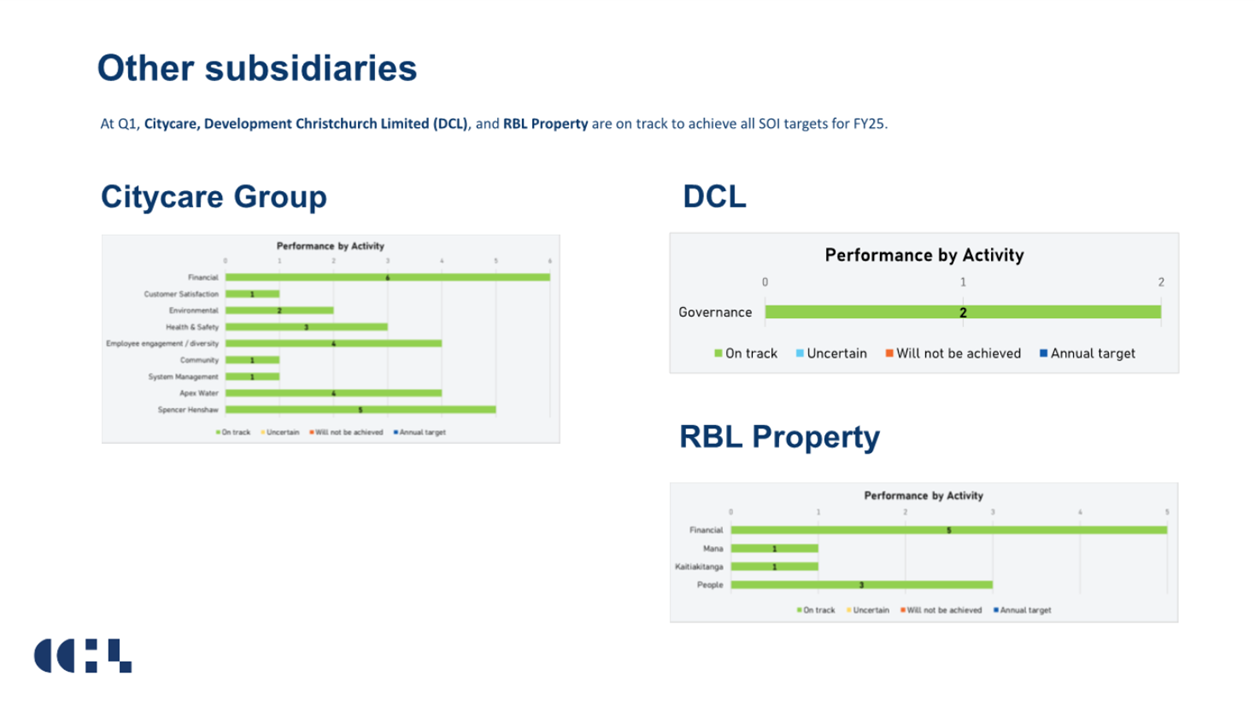
|
16. Christchurch City Holdings Ltd - Draft Letter of
Expectation for 2025/26
|
|
Reference Te Tohutoro:
|
24/1949054
|
|
Responsible Officer(s) Te Pou Matua:
|
Linda
Gibb, Performance Advisor, Finance
|
|
Accountable ELT Member Pouwhakarae:
|
Bede
Carran, General Manager Finance, Risk & Performance / Chief Financial
Officer
|
1. Purpose and Origin of the Report Te Pūtake Pūrongo
1.1 The
purpose of this report is to seek the Finance and Performance Committee’s
approval of the draft Letter of Expectations (LOE) for 2025/26 for Christchurch
City Holdings Ltd (CCHL).
1.2 This
report is written to meet the annual governance timeline for the
Council-controlled organisations (CCOs), which includes that the Council
communicates its expectations to the CCOs to incorporate into their annual
business planning process. The outcomes from business planning are
reflected in the CCOs’ draft Statements of Intent (SOI) which are due to
the Council by 1 March 2025.
1.3 The
CCHL draft LOE was reviewed by the Council at a workshop on 26 November
2024. It was then shared with CCHL in the spirit of no surprises.
1.4 The
draft LOE for CCHL for 2025/26 is at Attachment A.
2. Officer Recommendations Ngā
Tūtohu
That the Finance and
Performance Committee:
1. Approves the draft Letter of Expectations for 2025/26 for
Christchurch City Holdings Ltd;
2. Delegates authority to the Mayor, Deputy Mayor
and Deputy Chair of the Finance and Performance Committee to finalise and issue
the Letter of Expectations in line with resolutions passed by the Finance and
Performance Committee and any minor editing required; and
3. Notes that the decision in this report is
assessed as low significance based on the Christchurch City Council’s
Significance and Engagement Policy.
3. Executive Summary Te Whakarāpopoto Matua
3.1 The
LOE is a mechanism that the Council, as shareholder of CCOs uses to influence
their strategic directions. The expectations are focussed on strategic
and governance issues. The CCHL board must determine whether the
expectations are in the best interests of the company. It is incumbent
upon CCHL to advise the Council of any of the expectations it does not intend
to act on, and the reasons for that.
3.2 The
key expectations in the LOE are for CCHL to present to Council:
· on its strategic
approach to being an active and responsible owner,
· to engage with
Council staff to explore the capability, capacity and implications of
committing to reduce international shipping and aviation emissions to meet the
Council’s climate policy commitments,
· to continue to work
on refining performance targets that are outcomes focussed.
3.3 It is
proposed that authority is delegated for the finalisation and issuing of the
draft LOE to the Mayor, Deputy Mayor and Deputy Chair of the Finance and
Performance Committee. Changes will be limited to any that the Committee
resolves to make and minor editing.
4. Background/Context Te Horopaki
4.1 The LOE is a mechanism that the Council, as shareholder of CCOs uses
to influence their strategic directions, pursuant to section 64(2)(b) of the
Local Government Act 2002 (LGA). The LOE is issued in time to allow the
CCOs to work through the impacts of operationalising the expectations ahead of
submission of their draft SOIs to the Council on 1 March.
4.2 How
shareholders’ expectations are operationalised are for a CCO board to
consider, as the directors need to consider their obligations to act in the
best interests of the company as required by section 131(1) of the Companies
Act 1993. For example, a board needs to consider the costs, benefits and
risks of delivery, sources of funding and impacts on the other programmed
activities and services and on the governance of the organisation.
4.3 LOEs sit alongside the
Enduring Statement of Expectations (SOE) that was issued to all CCOs on 18
December 2023 (refer Attachment B). The
key difference is that the SOE is a stocktake of the Council’s general
governance expectations which change little from year to year and are generally
applicable to all CCOs. The LOE is tailored to a specific CCO and the
specific issue relevant to it.
4.4 The
following related information session/workshops have taken place for the
members of the meeting:
|
Date
|
Subject
|
|
26
Nov 2024
|
Draft LOE for CCHL for 2025/26
|
Options Considered Ngā Kōwhiringa Whaiwhakaaro
4.5 The
only reasonably practicable other option is not issuing a LOE to CCHL for
2025/26. Any shareholder expectations could be provided as comments on
the draft SOI pursuant to clause 2, Part 1 of Schedule 8 of the LGA
(shareholder comments are required to be made to the CCO by 1 May). The
risk with this approach is as CCHL’s business planning will be well
progressed by the time it receives the comments, it may be unable to address
them in the SOI.
Analysis Criteria Ngā Paearu Wetekina
4.6 The
content in the draft LOE for CCHL includes the following items for it to
consider:
· Engaging with
Council on its strategic approach to being an active and responsible owner
· providing clarity of
CCHL’s commitment to the Council’s strategic policies to reduce
carbon emissions in Christchurch and its own emission targets and pathways to
meeting them;
· fostering working
and strategic relationships with the six Papatipu Rūnanga;
· seeking
accreditation with Living Wage Movement Aotearoa New Zealand;
· working together
with the Council and a no surprises ‘policy’.
4.7 Topics
for briefings during the year are requested, including on the group’s
active and responsible ownership strategy and long term capital plans.
Active and responsible owner
4.8 The LOE requests CCHL to engage with Council on what its strategic
approach is to being an active and responsible owner. This will include
ensuring that the Council and CCHL have a common understanding on what is an
active and responsible owner.
4.9 As
part of being an active and responsible owner, Council is also requesting
through the draft LOE that CCHL sets out in its SOI the reporting and
performance measures that will enable Council and the Community to assess its
financial and non-financial performance, including that of the
subsidiaries. Reporting that provides insight and understanding on the
performance, both financial and non-financial, is important in terms of the
Community having trust and confidence in CCHL (and Council as shareholder).
Subsidiary company briefings
4.10 The
draft LOE proposes that subsidiary company briefings are reduced from two per
annum to one unless otherwise advised. In the event a subsidiary has a
pressing issue to raise with councillors, CCHL would be expected to seek a
one-off briefing for that subsidiary. The primary driver for this has
been the challenges of organising 2 briefings per year, and that with
appropriate reporting by CCHL and its subsidiaries this is expected to provide
sufficient visibility and oversight of the performance of the
subsidiaries.
4.11 To
reflect fewer briefings, it is proposed that CCHL’s October briefing on
the group’s annual report and climate-related disclosures is sufficiently
broad to include any issues each of the subsidiaries is
facing.
International trade and business
dealings
4.12 At
its meeting on 23 October, the Finance and Performance Committee considered a
staff proposal to align the Council’s procurement policy with United
Nations Security Council Resolution 2334 (which deals with Israel’s
settlement activities in occupied Palestinian Territories). As part of
the decisions taken, recommendation 7 provided the following (FPCO/2024/00001
refers):
Notes that staff are requested to bring
back, for inclusion in the Letter of Expectations to Christchurch City Holdings
Limited (CCHL), appropriate direction for CCHL and its subsidiaries to operate
in a manner that is consistent with the guidance and advice provided by the New
Zealand Ministry of Foreign Affairs and Trade in respect of New Zealand
organisations international trade and business dealings.
4.13 The
draft LOE provides an expectation that CCHL, and its subsidiaries will at all
times exercise contemporary best practice governance in the local government
context. This includes being acquainted with and cognisant of obligations
to ensure they are not in breach of UNSC 2334 and UNHRC 31/36 (Israeli
settlements in the Occupied Palestinian Territory). It is incumbent on
the individual companies to assess how best to discharge these
obligations.
Carbon
emissions reductions
4.14 At
its meeting on 15 May 2024, the Council considered a Greenhouse Gas Emissions
Inventory for financial year 2022/23 (CNCL/2024/00062). Recommendation 6
provided the following:
Request staff advice about Council
including in its next Letter of Expectations to the Lyttelton Port Company and
the Christchurch International Airport Limited that they decrease international
shipping and aviation emissions in line with the Council’s 2030 emissions
reduction goals.
4.15 The
CCHL group has emission reduction plans which it will share with the Council at
a workshop planned for February 2025. This will shine a light on both
Lyttelton Port Company Ltd’s (LPC’s) and Christchurch International
Airport Ltd’s (CIAL’s) overall emission reduction goals, progress
in reducing emissions to date and the trajectory for meeting their
company-specific goals.
4.16 The
draft LOE requests that CCHL, in consultation with LPC and CIAL engages with
Council staff to explore the implications of reducing international shipping
and aviation emissions.
Items raised post the workshop by
Councillors
4.17 Following
the workshop Councillors raised two further items for consideration in the
LOE.
4.18 First was a requeste that the associate director programme
recommence as soon as possible, and that the Women’s network and the
Huanui network continue within CCHL and amongst the subsidiaries to help
increase diversity.
4.19 The
LOE notes that Council is supportive of these programmes and that it supports
CCHL’s continued initiatives to increase diversity, equity, inclusion and
belonging and requests an update during the year.
4.20 Secondly,
an item was raised in respect of mana whenua representation beyond what is
currently presented in the LOE, by adding to what was included so that it
reads:
Mana whenua are a recognised strategic partner of the Council. CCOs are expected to foster the working
and strategic relationships between the Council and the six Papatipu
Rūnanga who hold mana
whenua status
in their respective rohe in Canterbury by maintaining high levels of engagement in areas of mutual
interest. To this end, they will actively seek to add manawhenua representation
in governance roles where this is the stated aspiration of the respective
runanga with the chair to report to Te Hononga on progress, including areas of
co-governance or shared ownership where this is appropriate in terms of the
partnership. [requested addition in italics]
4.21 Staff
note that this raises a wider issue, namely that Council has a unique
relationship with Ngāi Tahu, which is based on an enduring partnership and
trust. There are several key statutes that establish the framework for tangata
whenua participation, including LGA, the Resource Management Act 1991, the Te
Rūnanga o Ngāi Tahu Act 1996 and the Ngāi Tahu Claims Settlement
Act 1998. All require the council to consult with relevant Māori
parties, as acknowledged by the Treaty of Waitangi.
4.22 Staff
advice is that the request raised is better dealt with as a process through the
policy for Director appointments rather than through an LOE. Essentially
the reason is that it raises an issue relevant to governance appointments on
council controlled organisations more widely.
5. Financial Implications Ngā Hīraunga Rauemi
Capex/Opex Ngā Utu Whakahaere
5.1 There
are no Council funding implications expected from the expectations in the draft
LOE. However, there could be financial implications to the CCHL
subsidiary companies of delivering against some of the expectations.
However, should any arise, CCHL would be expected to advise the Council and
provide options for resolving them.
6. Considerations Ngā Whai Whakaaro
Risks and
Mitigations Ngā Mōrearea me ngā Whakamātautau
6.1 The
LOE manages the risk that the Council’s organisations are not aligned
with the Council’s strategic directions and priorities.
Legal
Considerations Ngā Hīraunga ā-Ture
6.2 Statutory authority to undertake proposals in this report is
conferred by the Local Government Act 2002 (section 64B).
6.3 Section
131 of the Companies Act 1993 provides duties of directors to act in good faith
and in the best interests of the company.
Strategy and
Policy Considerations Te Whai Kaupapa here (
6.4 The
required decisions:
6.4.1 Align
with the Christchurch
City Council’s Strategic Framework.
6.4.2 Are
assessed as of low significance based on the Council’s Significance and
Engagement Policy. The level of significance was determined by
considering the extent to which the decisions to be made in this report could
impact the community.
Community
Impacts and Views Ngā Mariu ā-Hāpori
6.5 Not
applicable.
Impact on Mana
Whenua Ngā Whai Take Mana Whenua
6.6 The
decision does not involve a significant decision in
relation to ancestral land, a body of water or other elements of intrinsic
value, therefore the decisions in the report do not specifically impact Mana
Whenua, their culture, and traditions.
6.7 The
draft LOE and SOE (issued in December 2023) provide for the Council’s
mana whenua expectations.
Climate Change
Impact Considerations Ngā Whai Whakaaro mā te Āhuarangi
6.8 The
proposals in this report will not contribute to adaptation to the impacts of
climate change or create or reduce emissions. There is climate change
content in the draft LOE that reflect the Council’s climate change
policies.
7. Next Steps Ngā Mahinga ā-muri
7.1 The
next step is the submission of the CCHL group’s draft SOIs by 1 March
2025, in accordance with clause 1(2) of schedule 8, part 1 of the LGA.
Attachments Ngā Tāpirihanga
|
No.
|
Title
|
Reference
|
Page
|
|
a ⇩
|
Christchurch
City Holdings Ltd - Draft Letter of Expectations 2025/26
|
24/2254680
|
415
|
|
b ⇩
|
Statement of
Expectations (SOE)
|
23/2101301
|
419
|
In addition to the attached documents, the following background
information is available:
|
Document
Name – Location / File Link
|
|
Not
applicable
|
Signatories Ngā Kaiwaitohu
|
Author
|
Linda Gibb -
Performance Monitoring Advisor CCO
|
|
Approved By
|
Russell Holden
- Head of Finance
Bede Carran -
General Manager Finance, Risk & Performance / Chief Financial Officer
|
|
17. Resolution to Exclude the Public
|
Section
48, Local Government Official Information and Meetings Act 1987.
Note: The
grounds for exclusion are summarised in the following table. The full wording from
the Act can be found in section
6 or section
7, depending on the context.
I move that the public be excluded from the
following parts of the proceedings of this meeting, namely the items
listed overleaf.
Reason for passing this resolution: a good
reason to withhold exists under section 7.
Specific grounds under section 48(1) for
the passing of this resolution: Section 48(1)(a)
Note
Section 48(4) of the Local Government
Official Information and Meetings Act 1987 provides as follows:
“(4) Every resolution to exclude the
public shall be put at a time when the meeting is open to the public, and the
text of that resolution (or copies thereof):
(a) Shall
be available to any member of the public who is present; and
(b) Shall
form part of the minutes of the local authority.”
This resolution is made in reliance on
Section 48(1)(a) of the Local Government Official Information and Meetings Act
1987 and the particular interest or interests protected by Section 6 or Section
7 of that Act which would be prejudiced by the holding of the whole or relevant
part of the proceedings of the meeting in public are as follows:
|
ITEM NO.
|
GENERAL SUBJECT OF EACH MATTER TO BE CONSIDERED
|
SECTION
|
SUBCLAUSE AND REASON UNDER THE ACT
|
PLAIN ENGLISH REASON
|
Potential Release Review Date and
Conditions
|
|
18.
|
Public Excluded Finance and Performance Committee Minutes - 27
November 2024
|
|
|
Refer to the previous public excluded reason in the agendas for
these meetings.
|
|
|
19.
|
Christchurch City Holdings Ltd - Strategic Update as at November
2024
|
s7(2)(b)(ii)
|
Prejudice Commercial Position
|
To prevent the disclosure of commercially sensitive information
that could, if made public cause a detrimental impact to CCHL's
profitability.
|
30 September 2025
After release of the Annual Report for 2025/26 in September 2025.
|
|
20.
|
Christchurch City Holdings Ltd - Appointment of a new director to
the Christchurch City Holdings Ltd board
|
s7(2)(a)
|
Protection of Privacy of Natural Persons
|
To protect the reputations of director-candidates.
|
24 December 2024
As soon as the Council has made decisions and the candidates have
been notified.
|
|
21.
|
Visibility of Capital Project Budget Changes: November 2024
|
s7(2)(h)
|
Commercial Activities
|
The report contains information on specific projects being
tendered in the open market and accordingly it may put Council in a
disadvantaged position.
|
This report can be released to the public once all commercial
negotiations and contracts have been concluded, and subject to the approval
of the Head of Procurement and Contracts
|
|
22.
|
Central City Development Forum: Facilitation Funding
|
s7(2)(i)
|
Conduct Negotiations
|
Debate around the decision to support this funding may focus on
the value of the service being offered and the possibility of organisations
other than Business Canterbury fulfilling the same role.
|
31 January 2025
Notification of the Central City Development Forum membership of
changes to its future operation.
|
Karakia Whakamutunga
Kia
whakairia te tapu
Kia
wātea ai te ara
Kia
turuki whakataha ai
Kia
turuki whakataha ai
Haumi
e. Hui e. Tāiki e







































